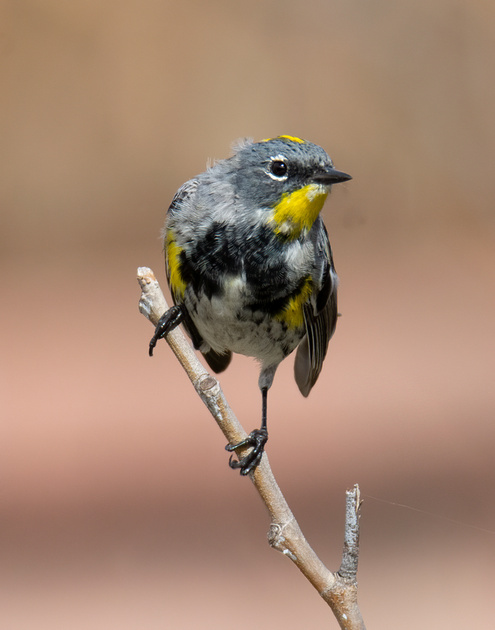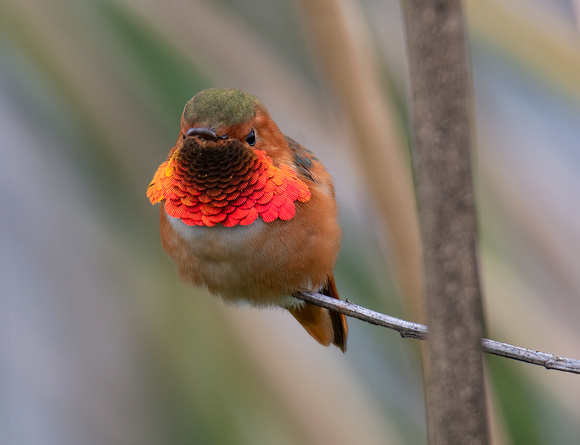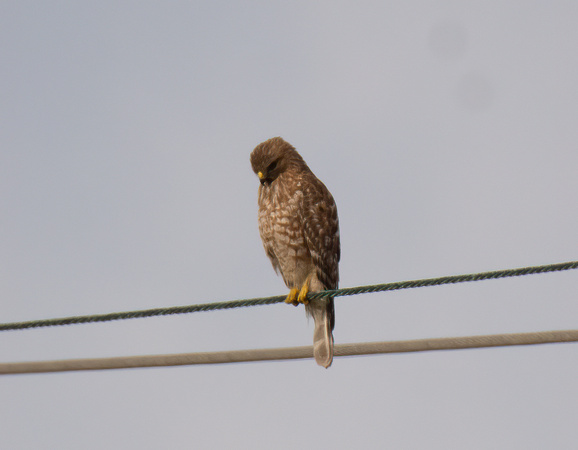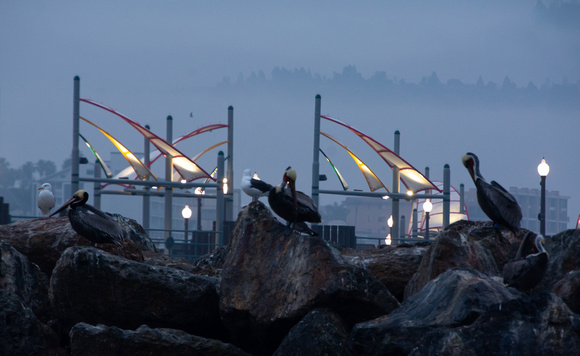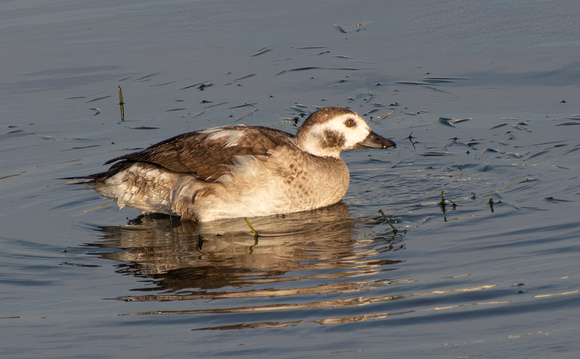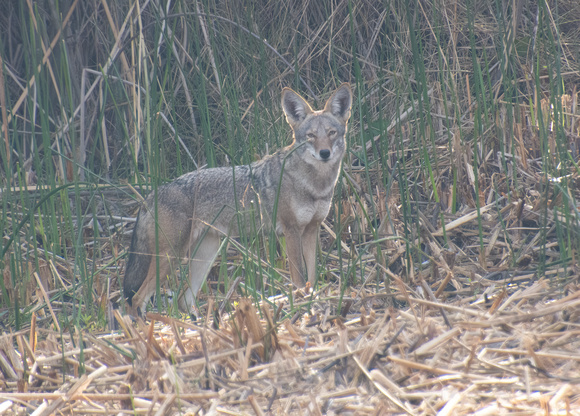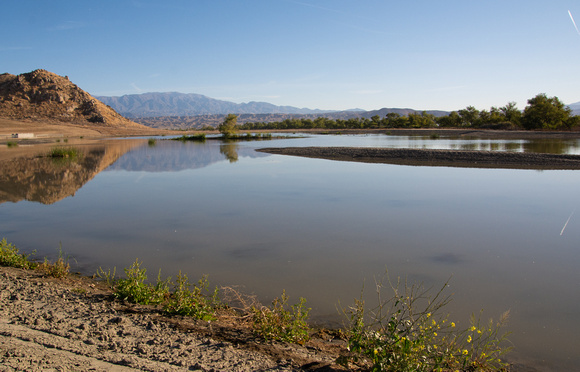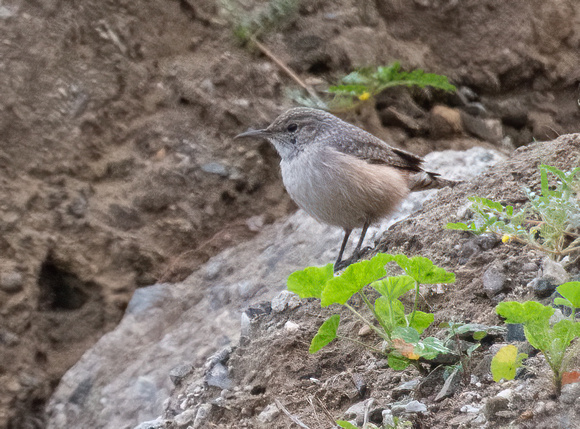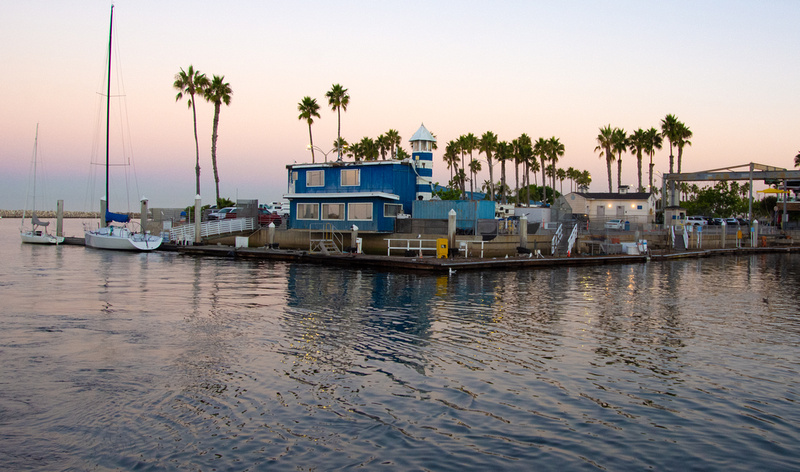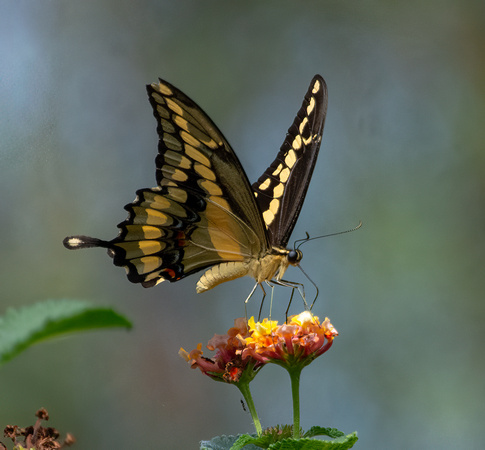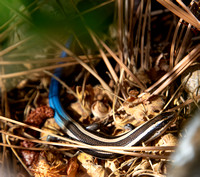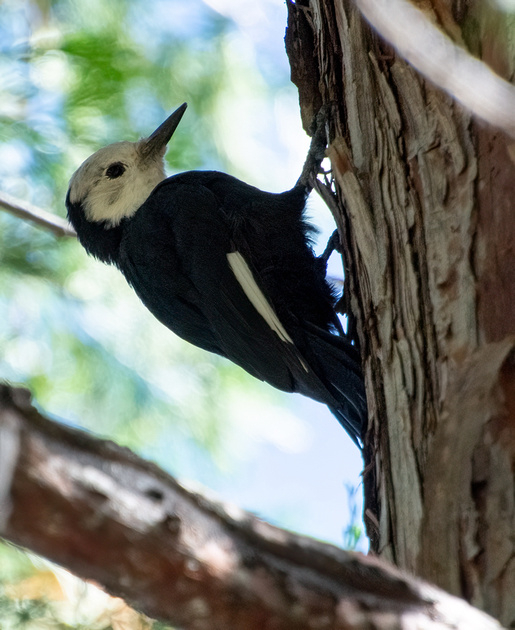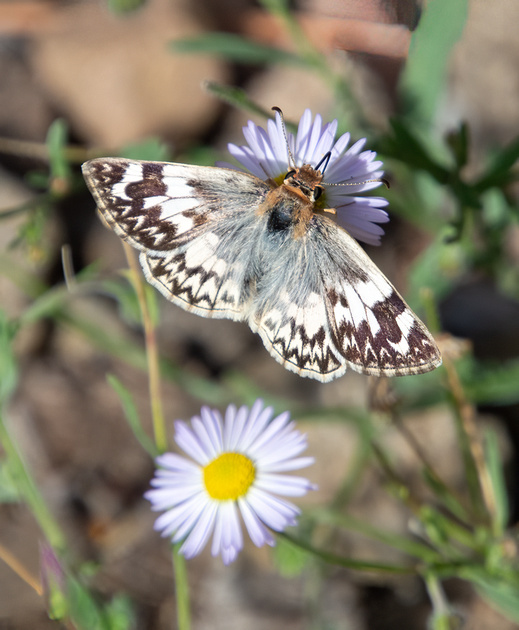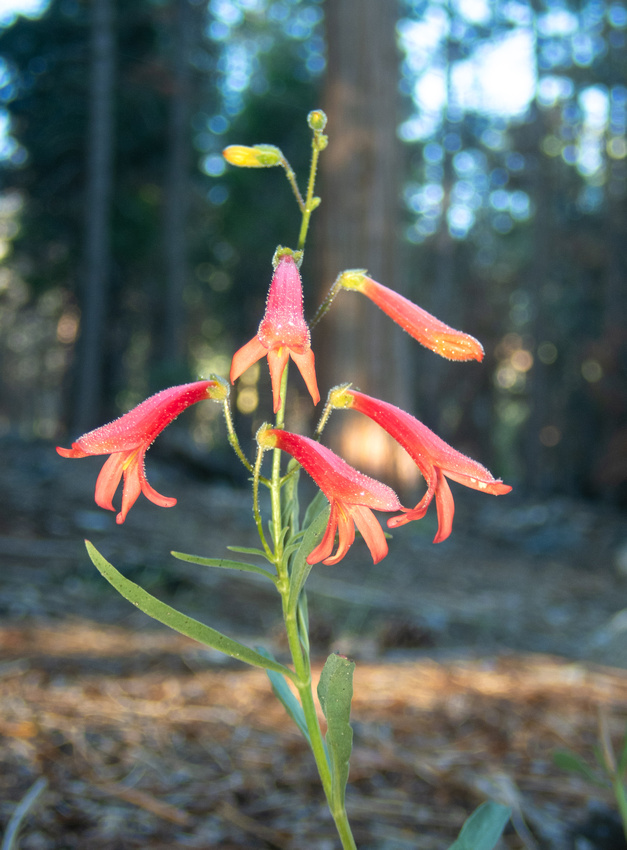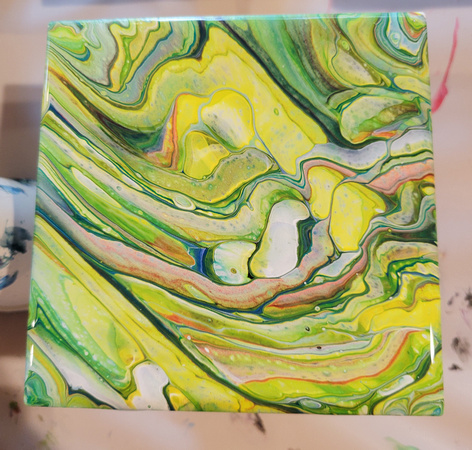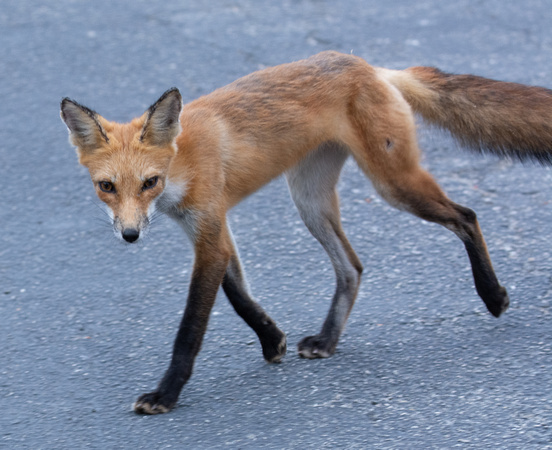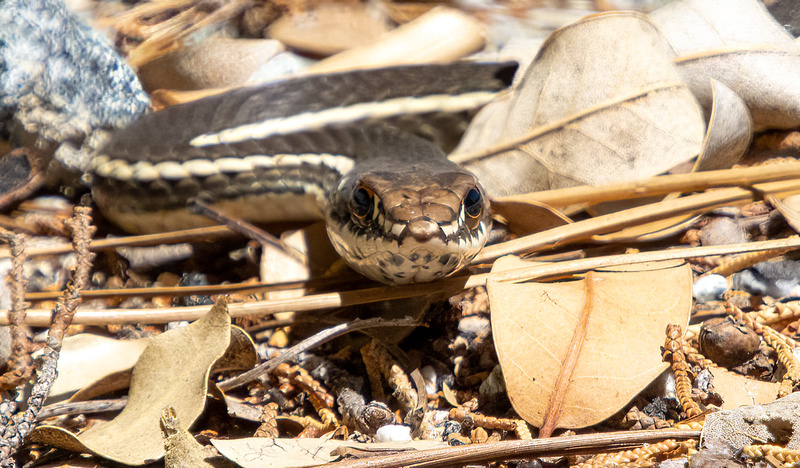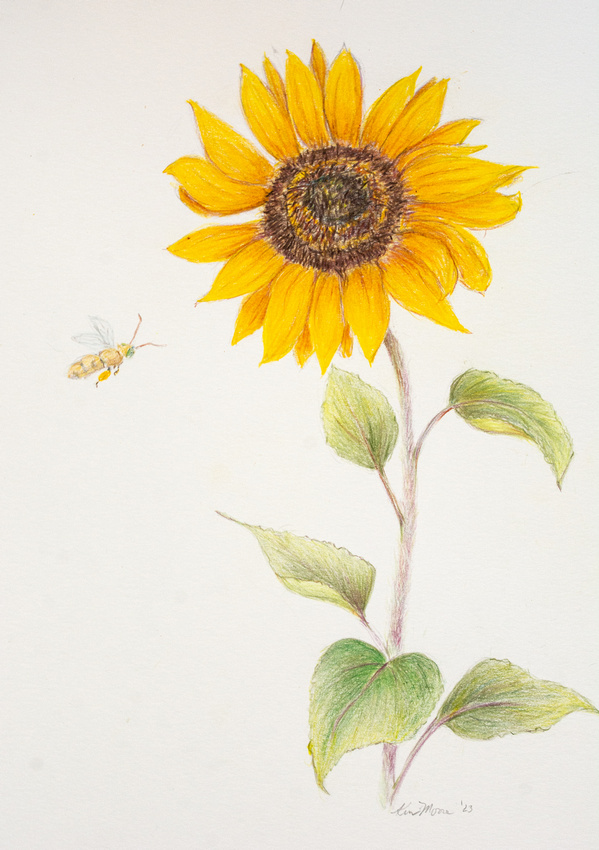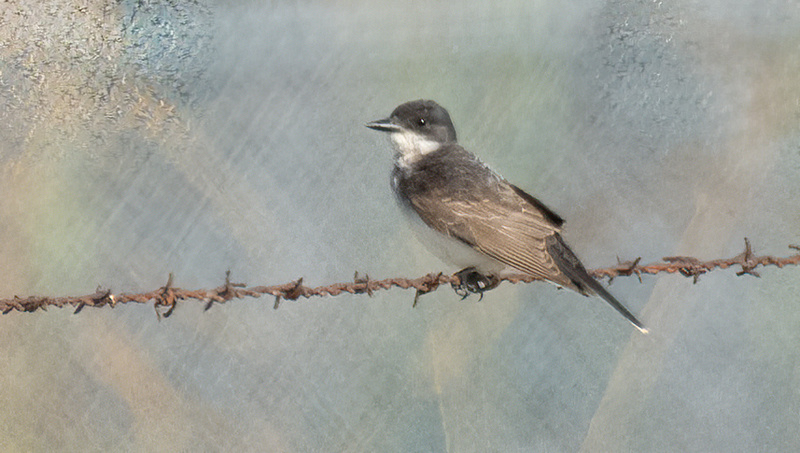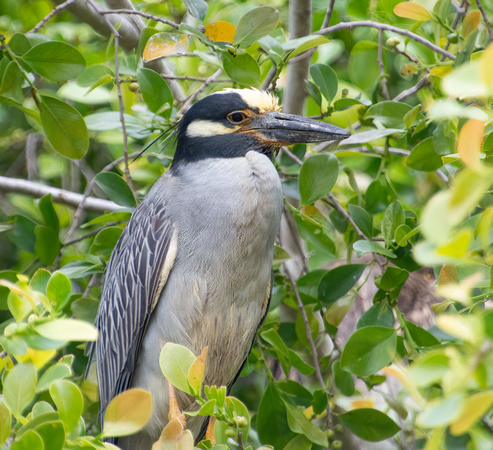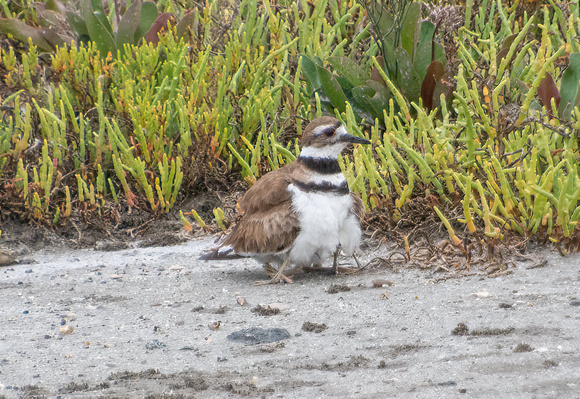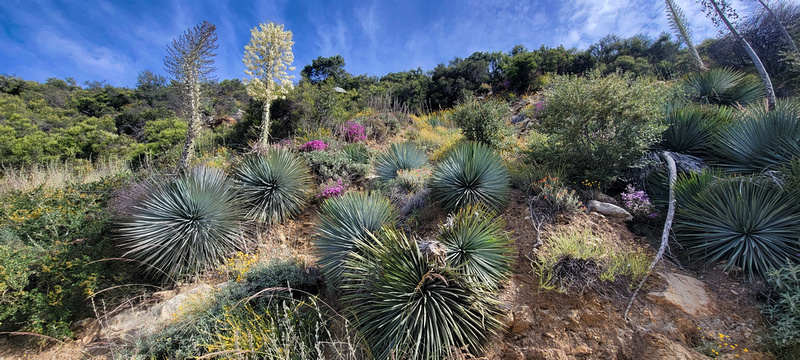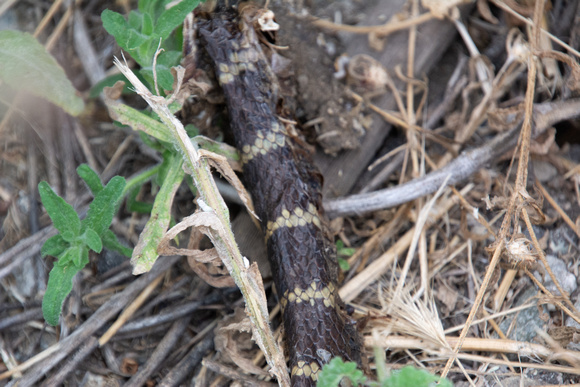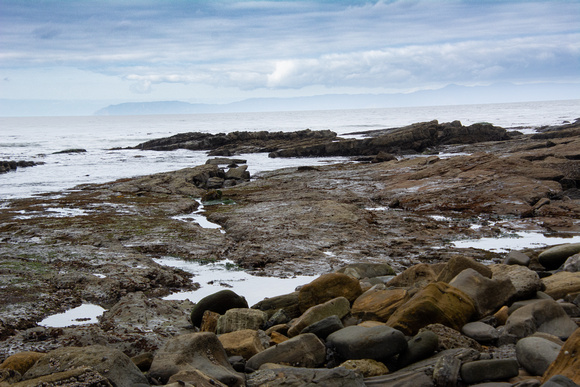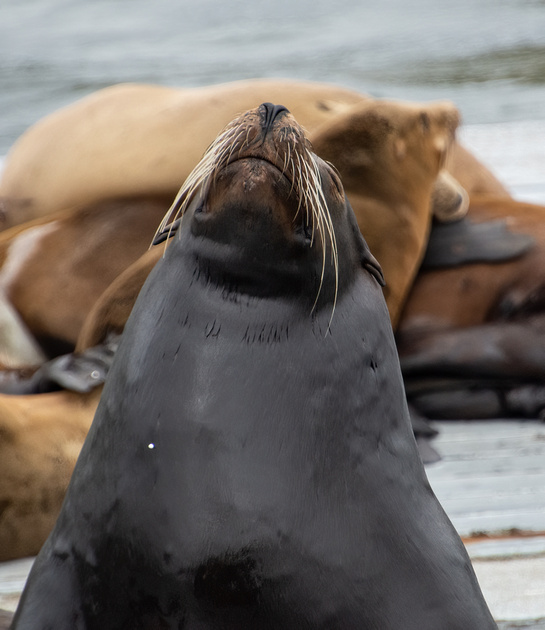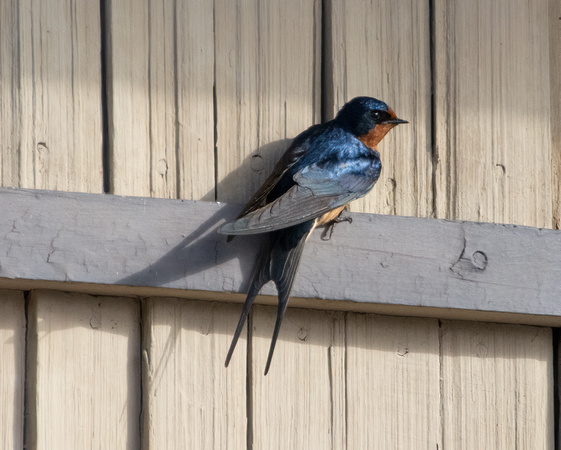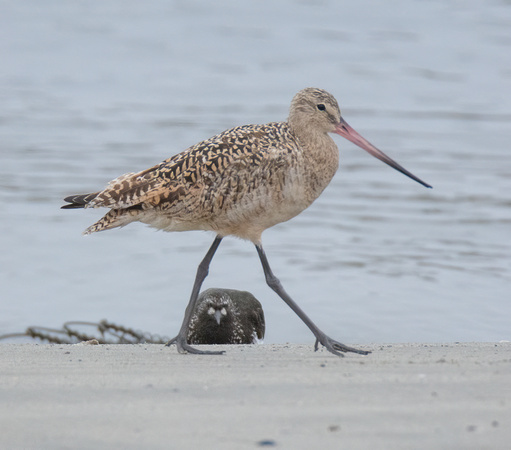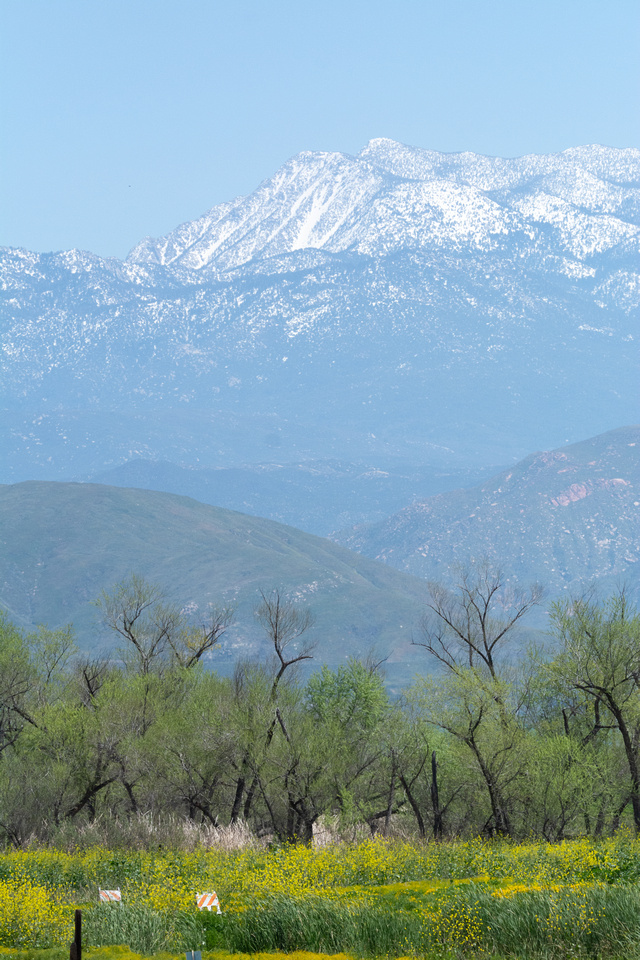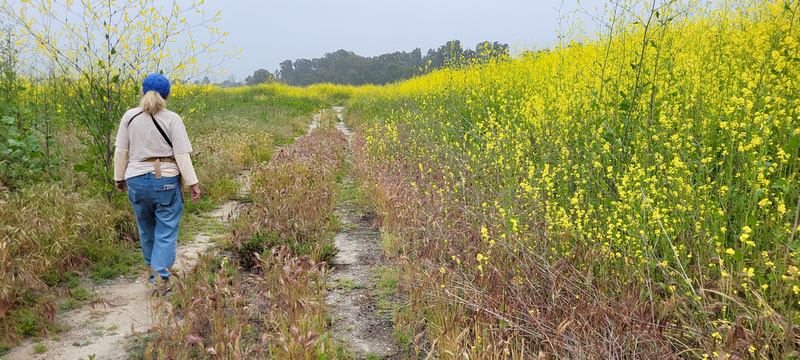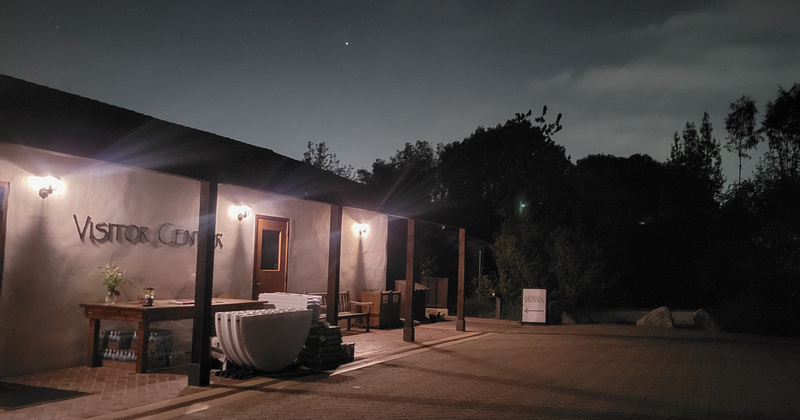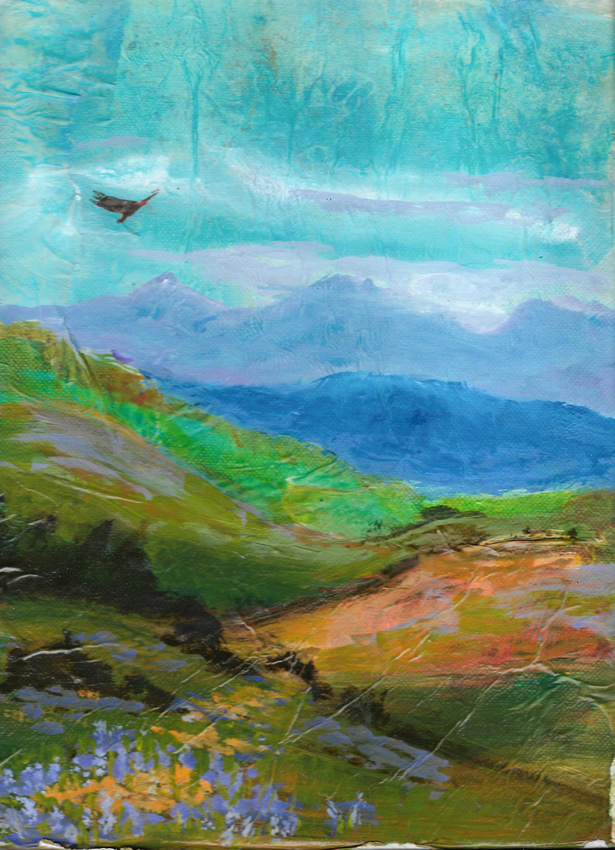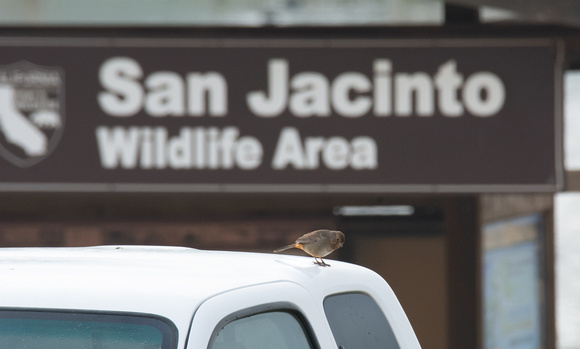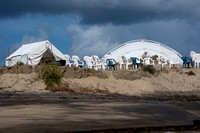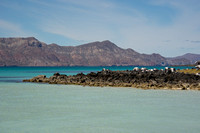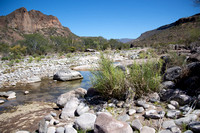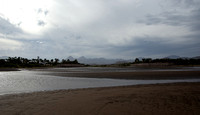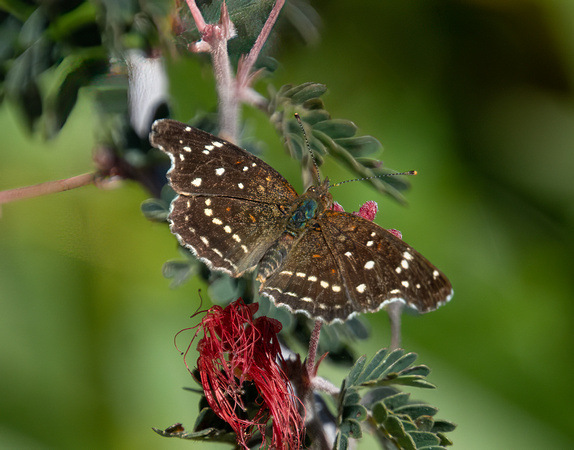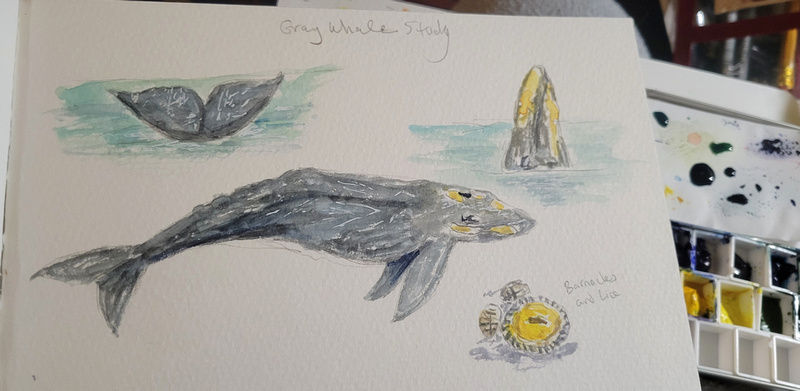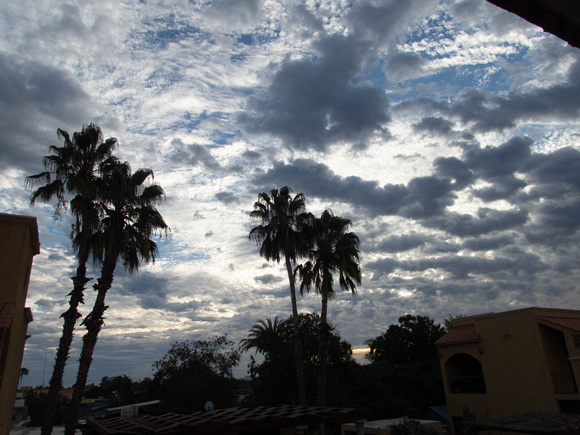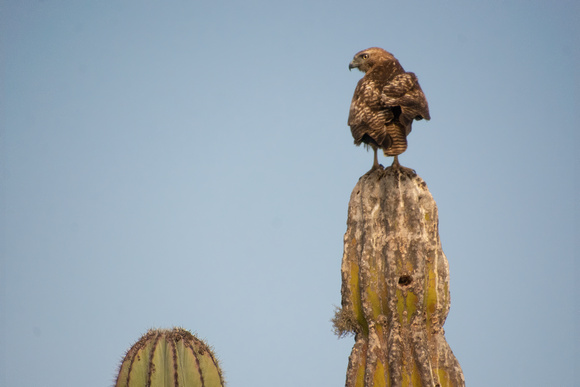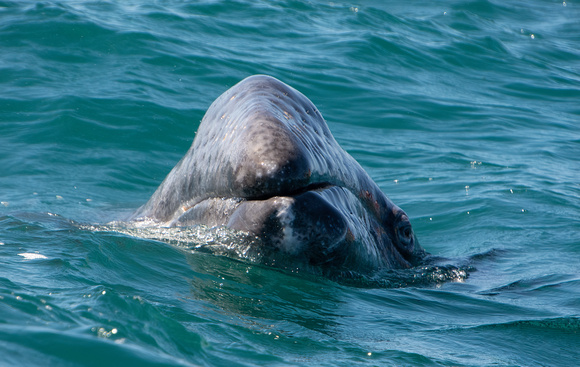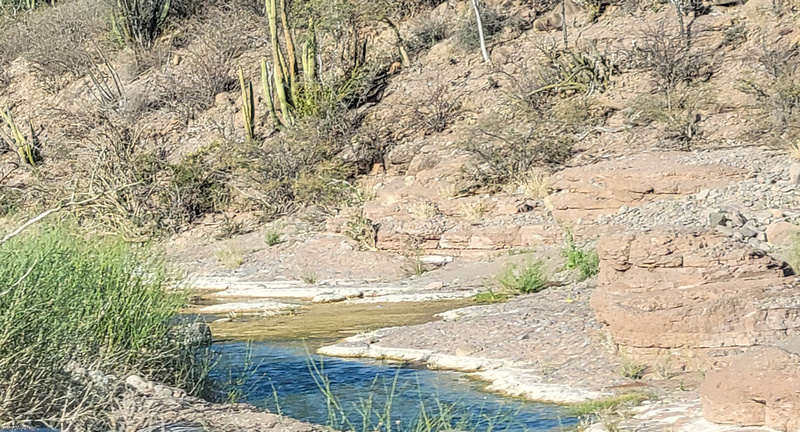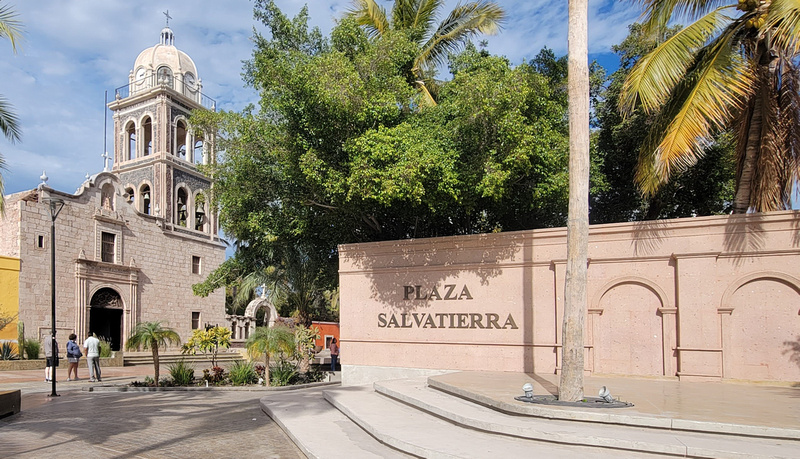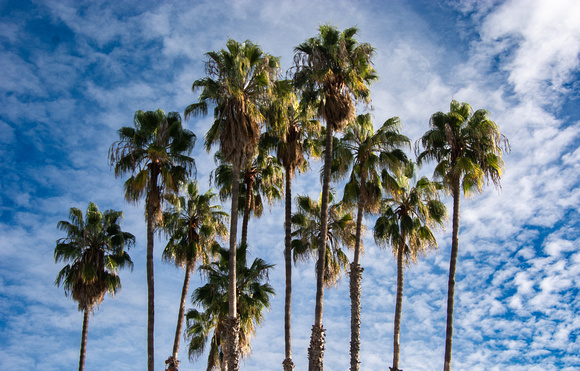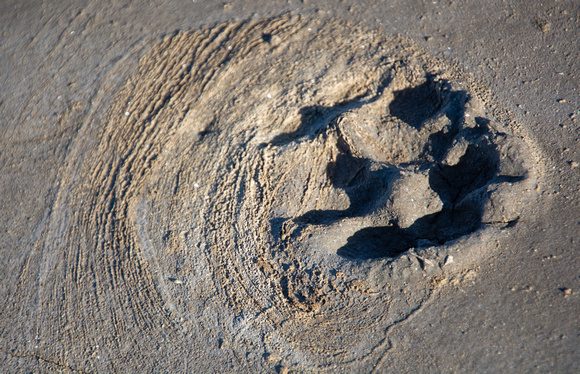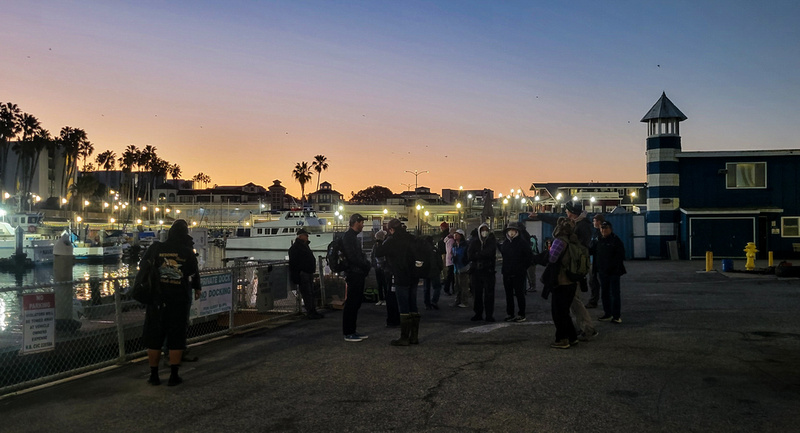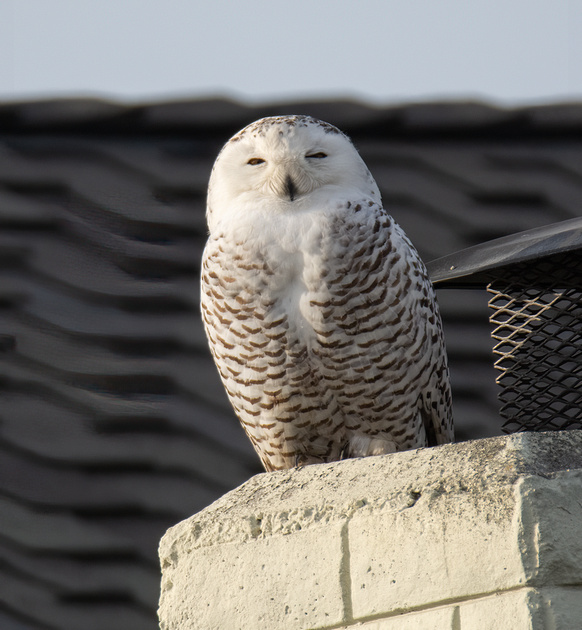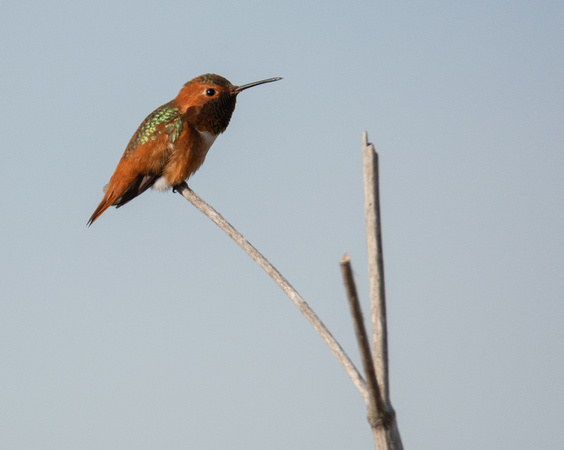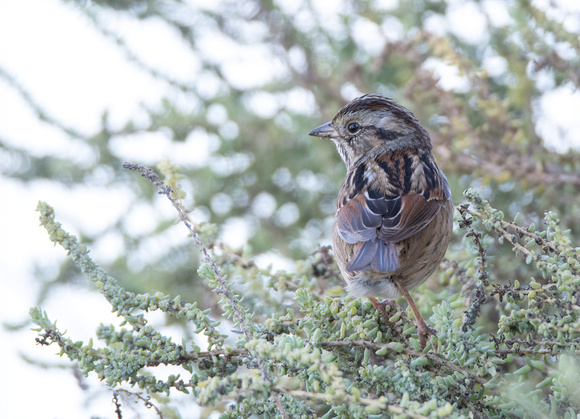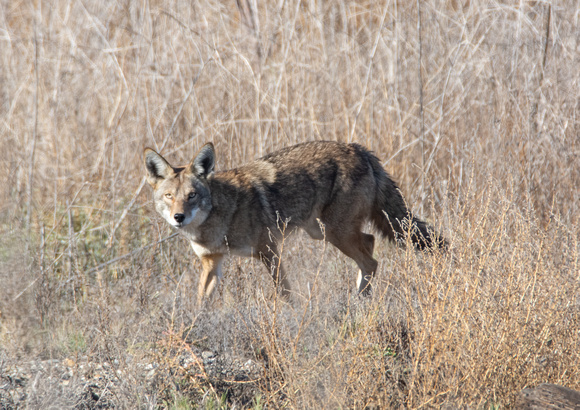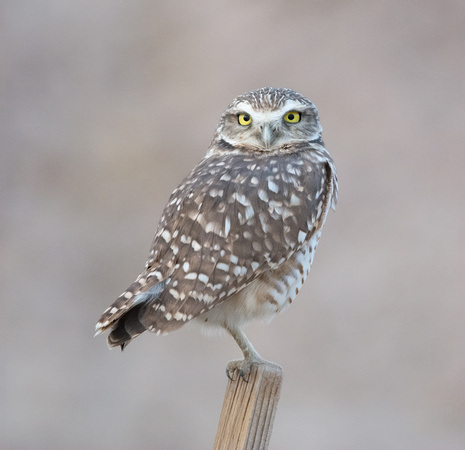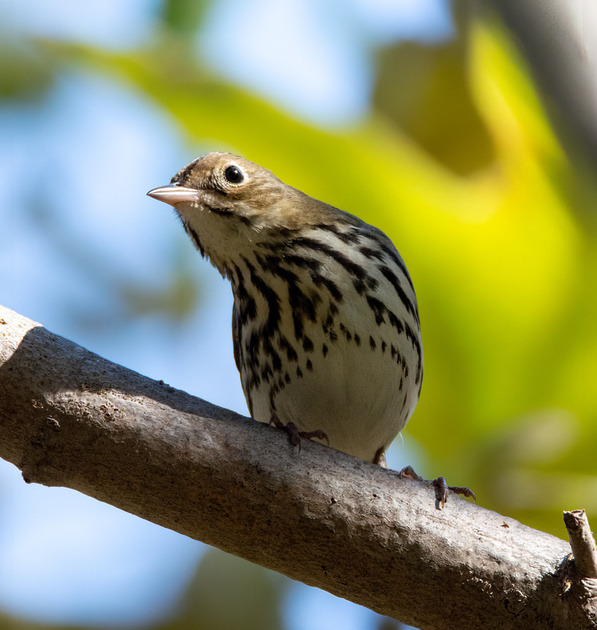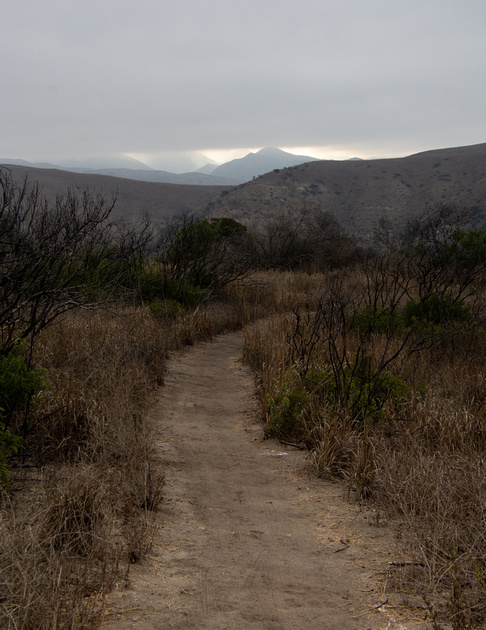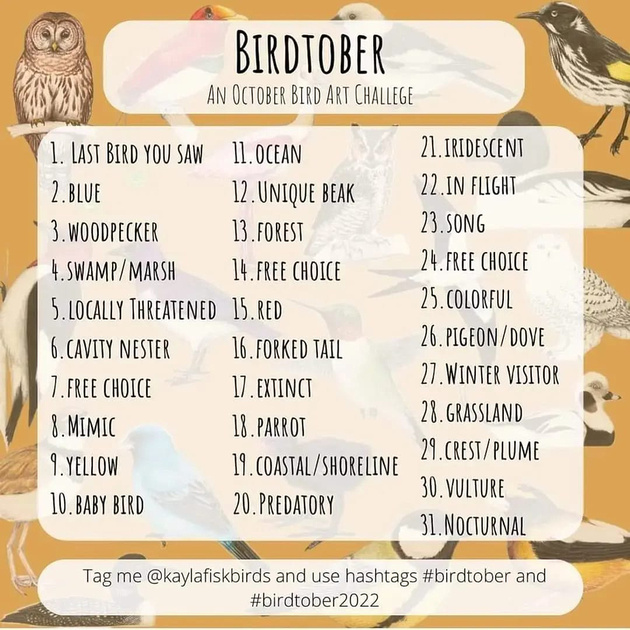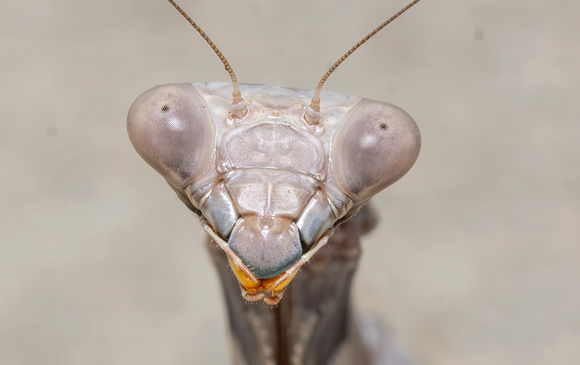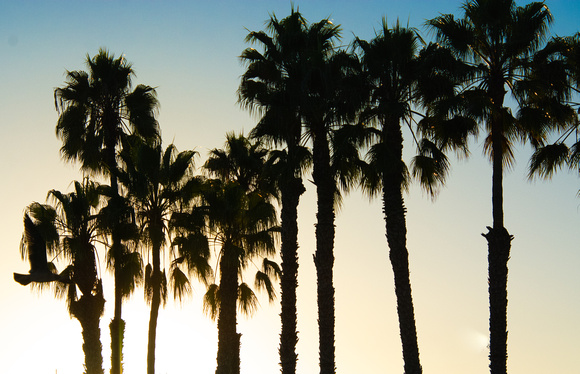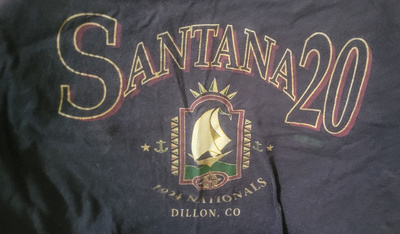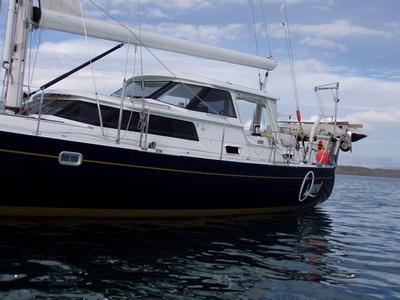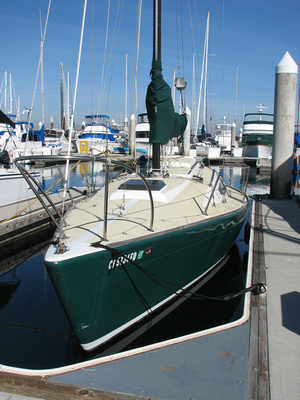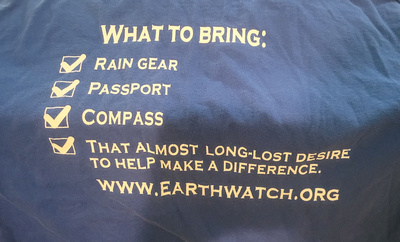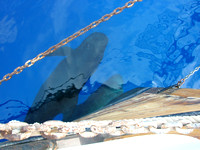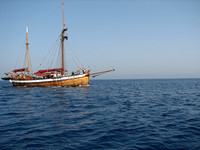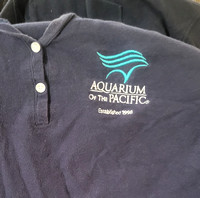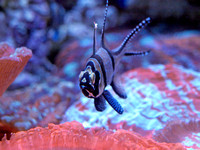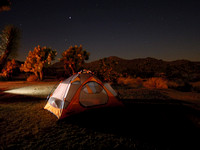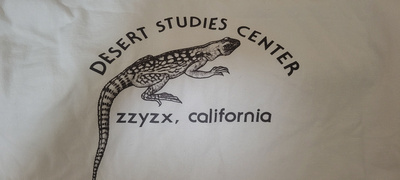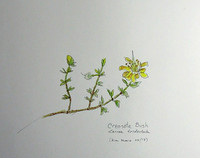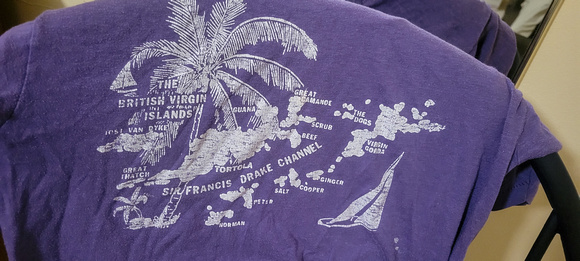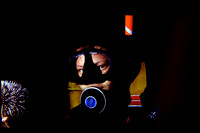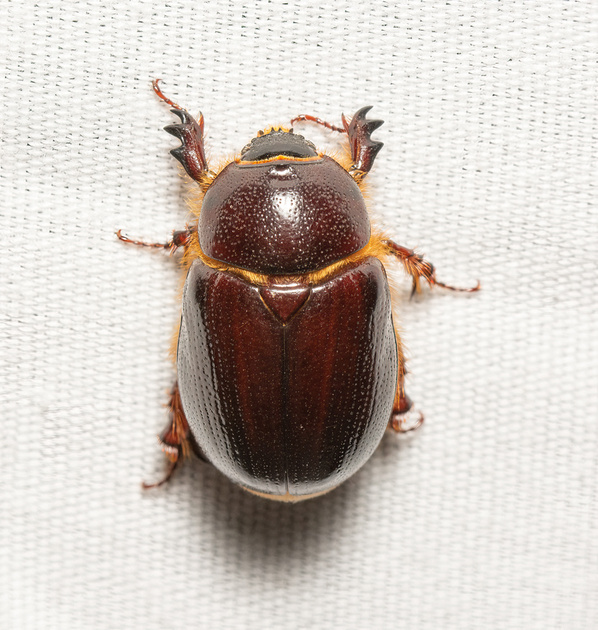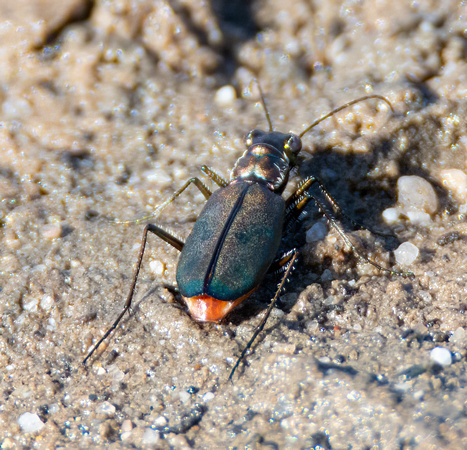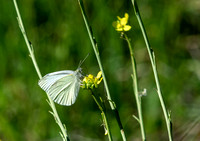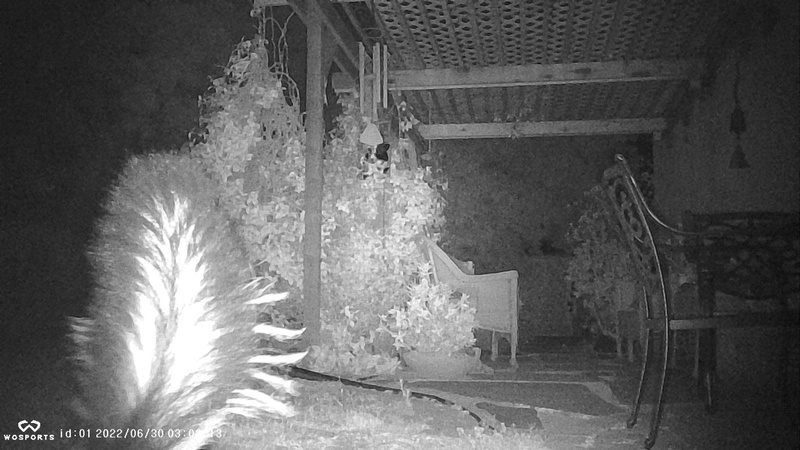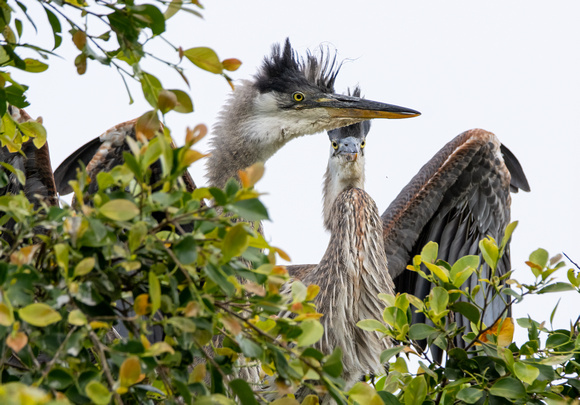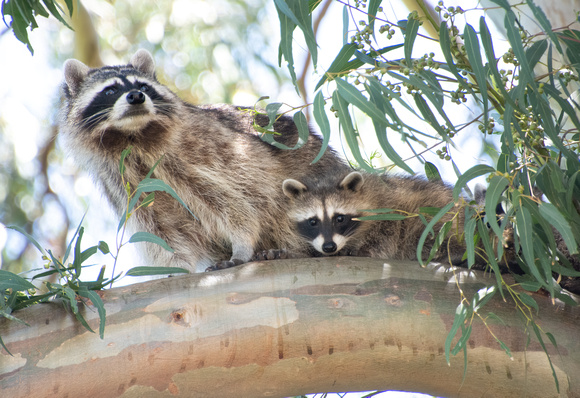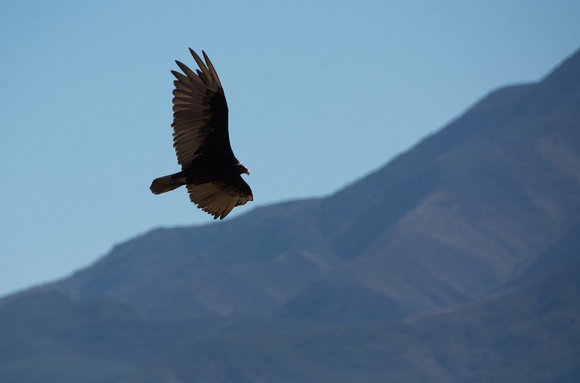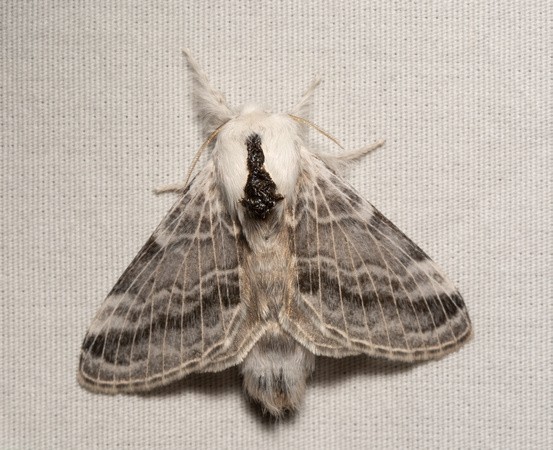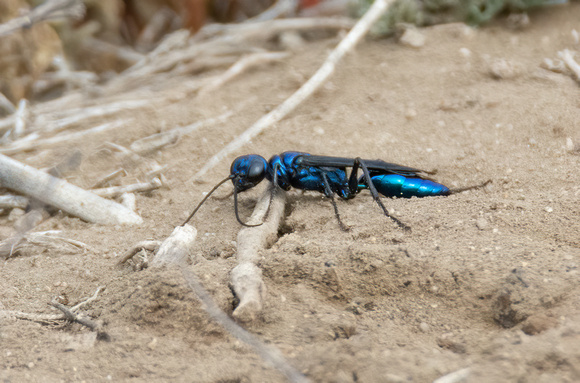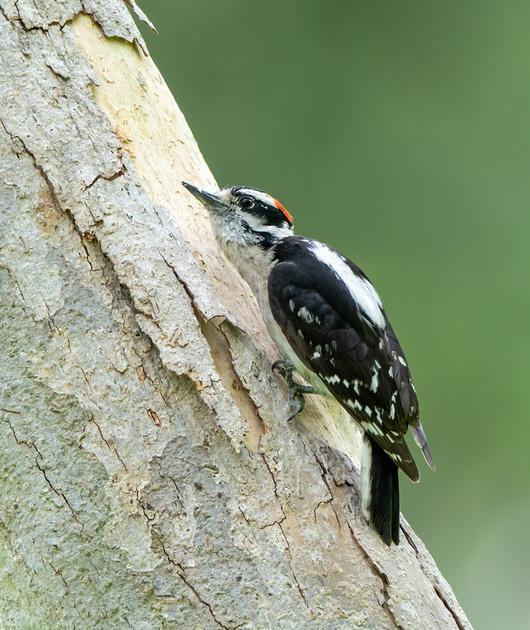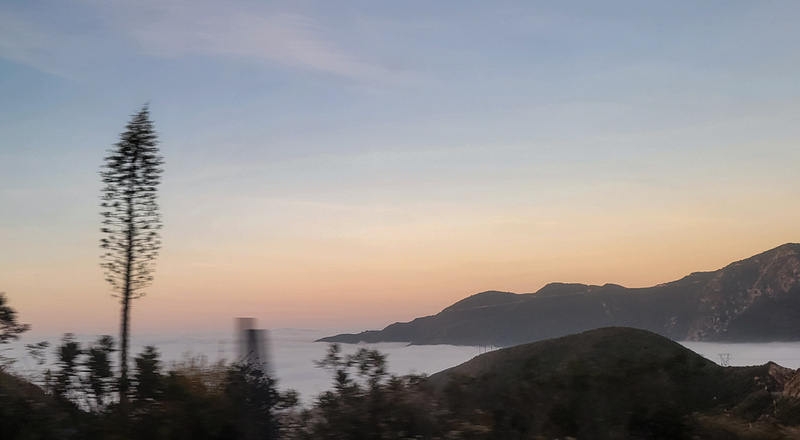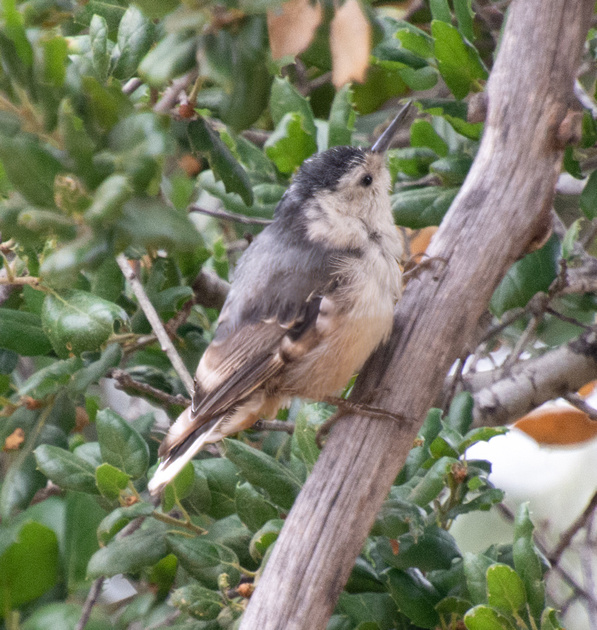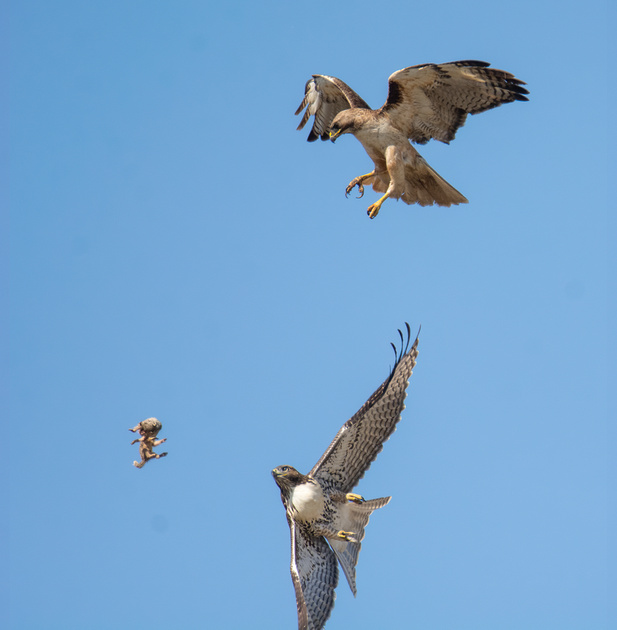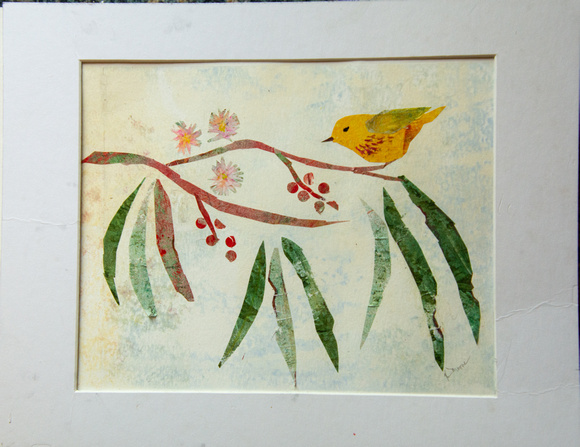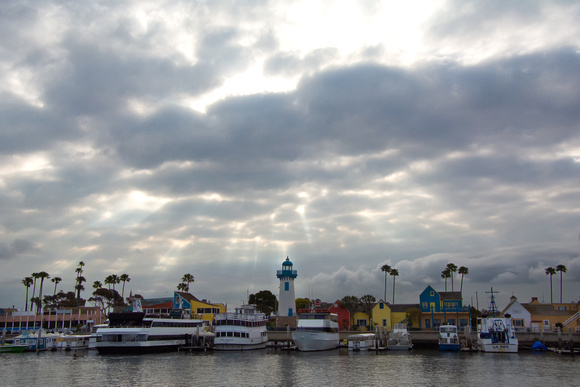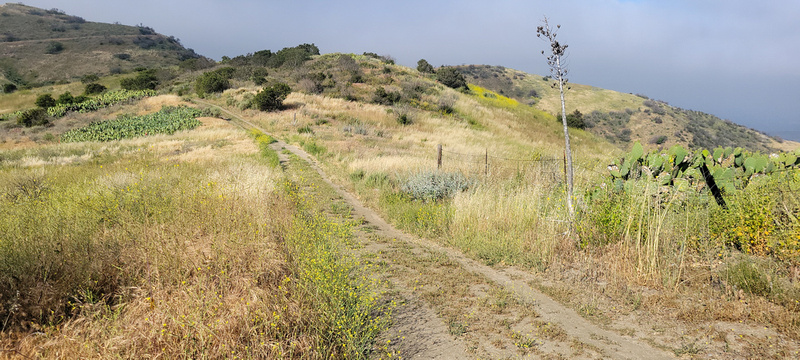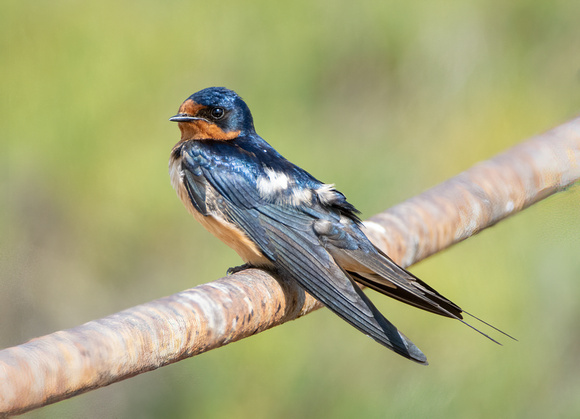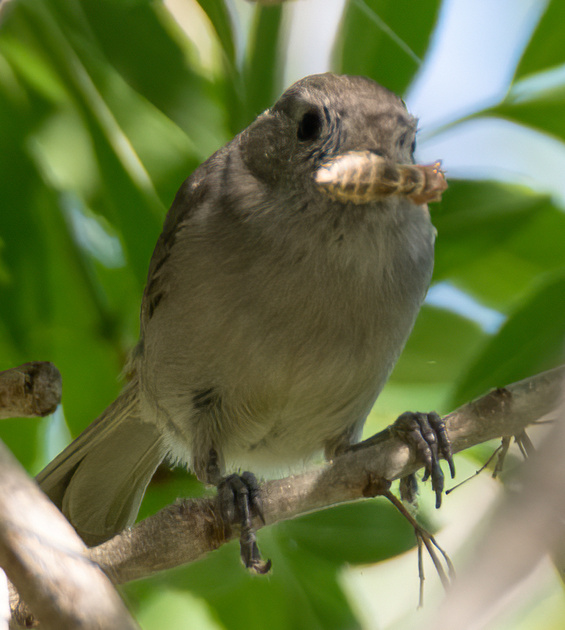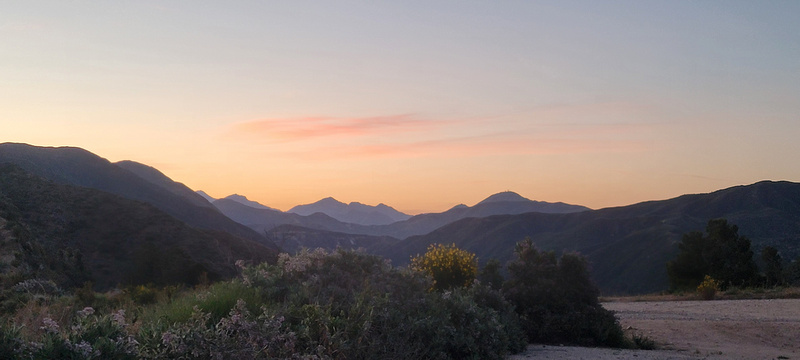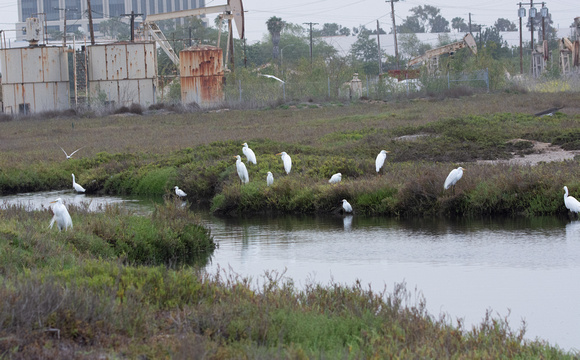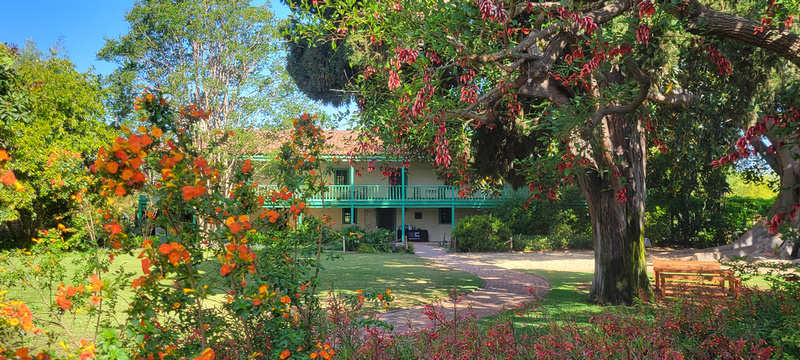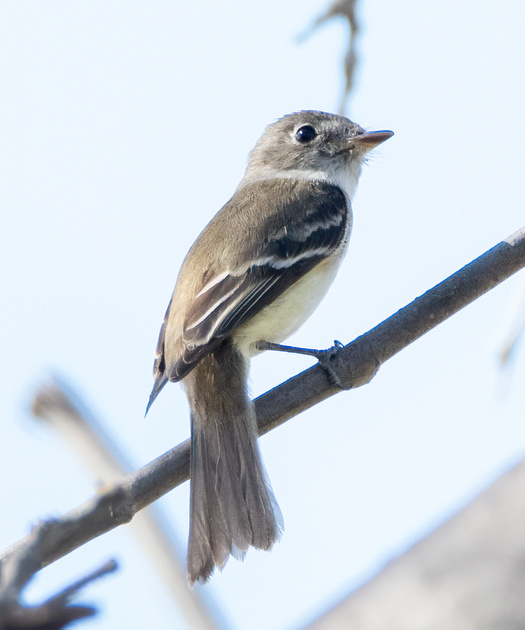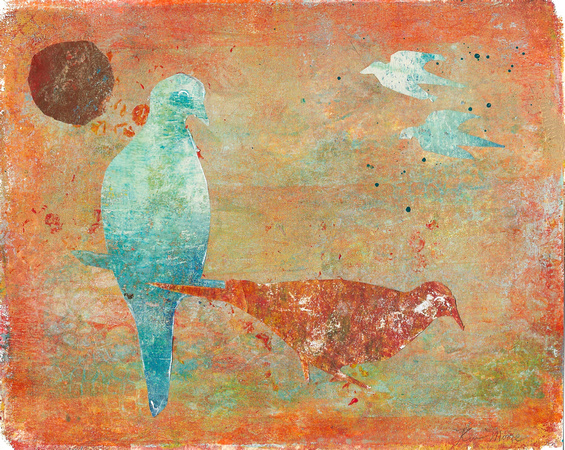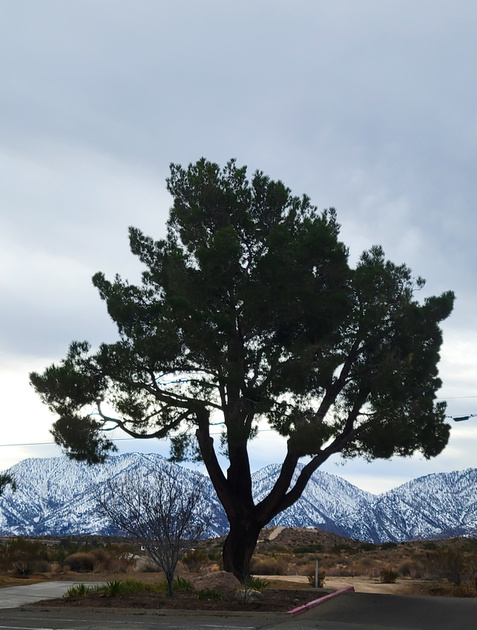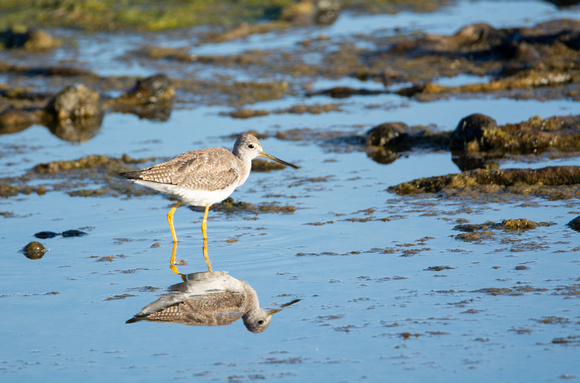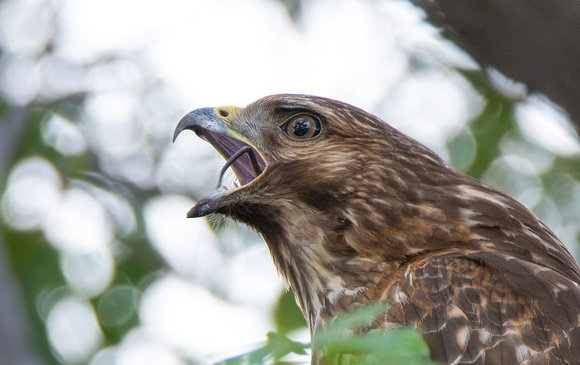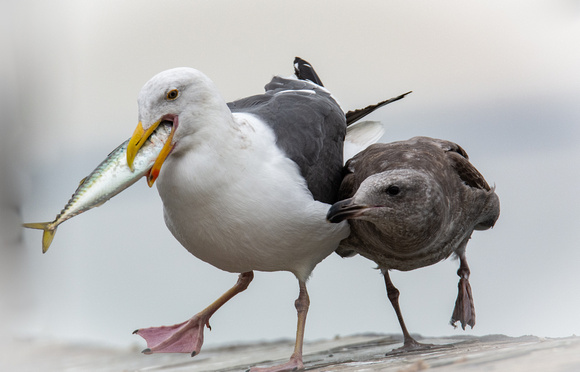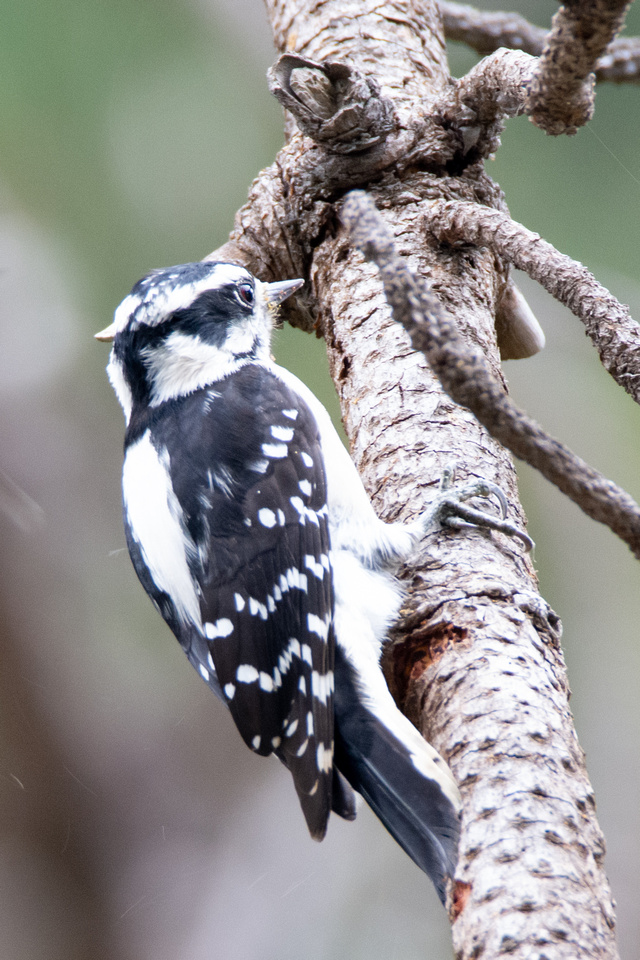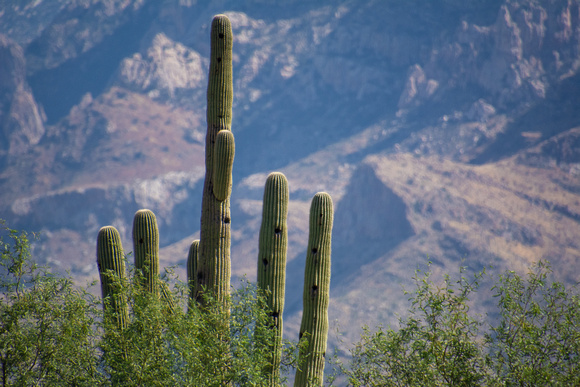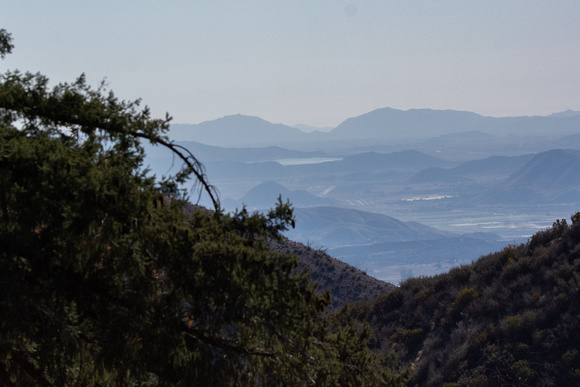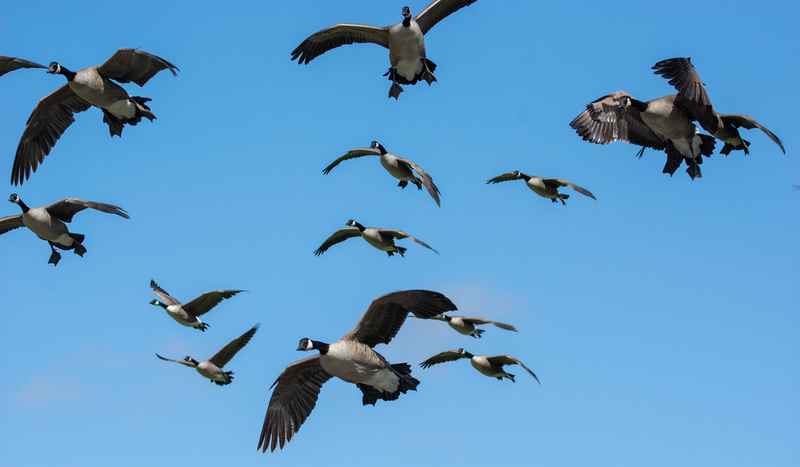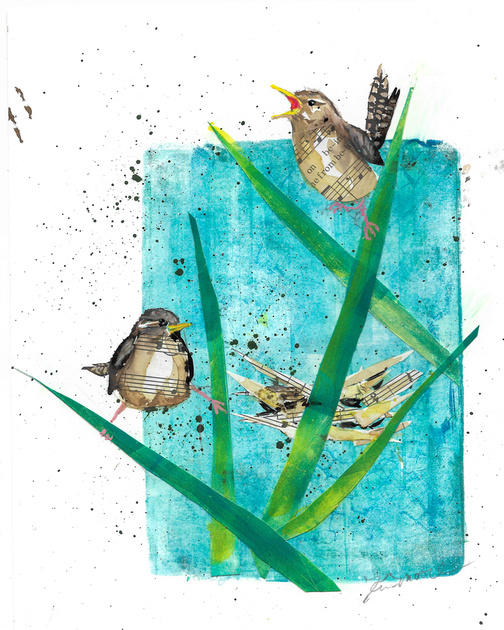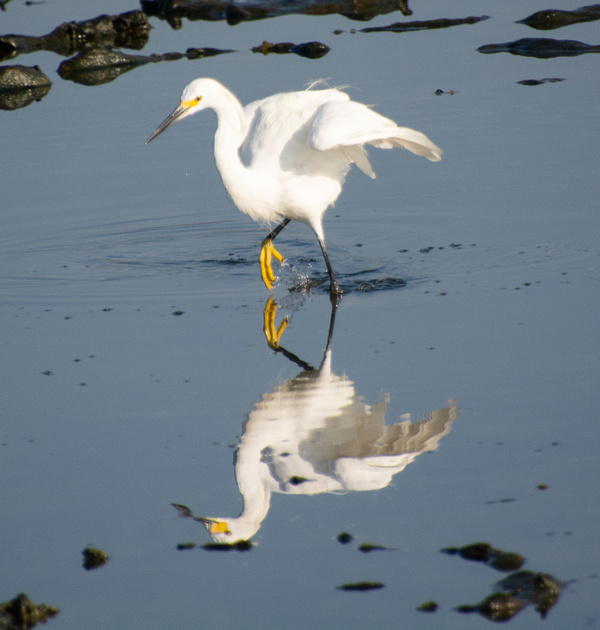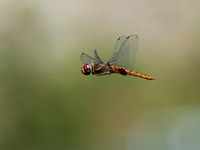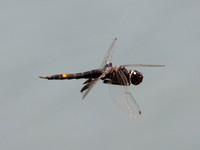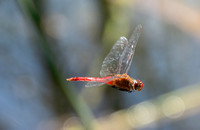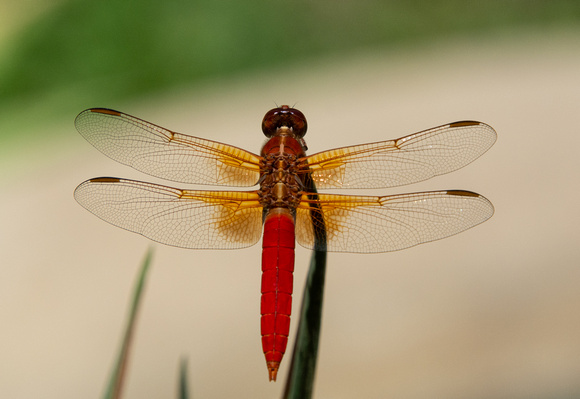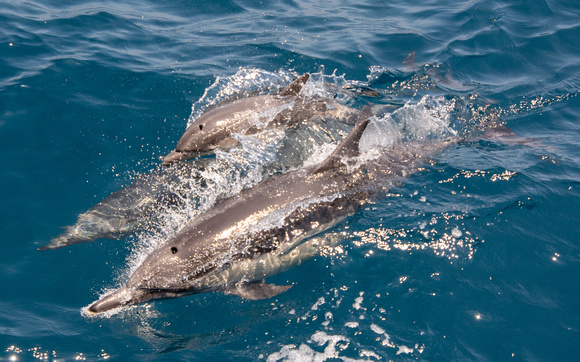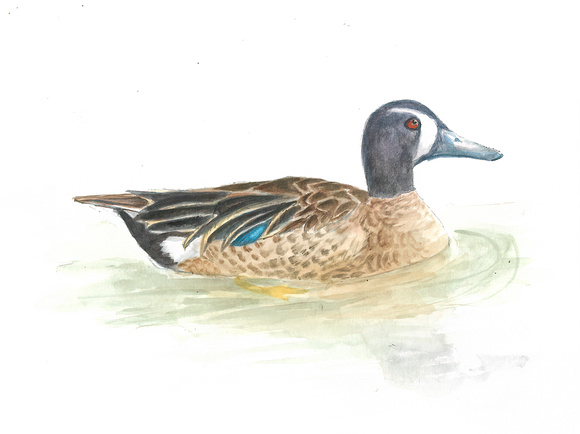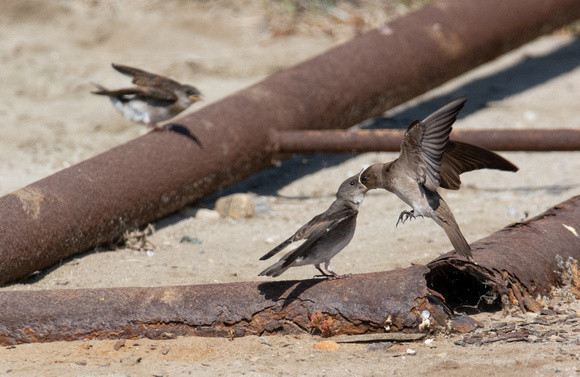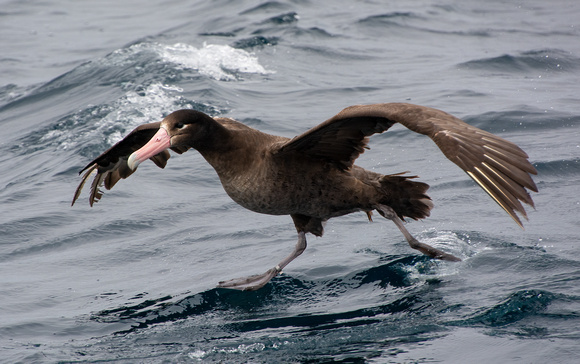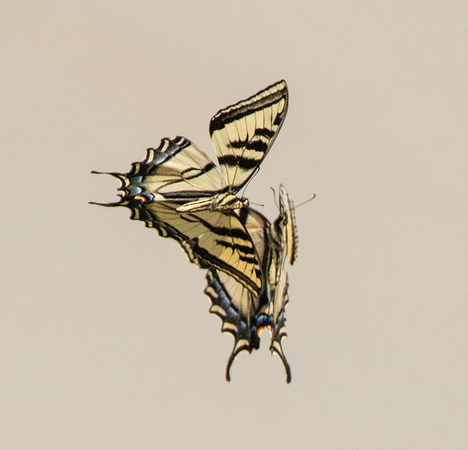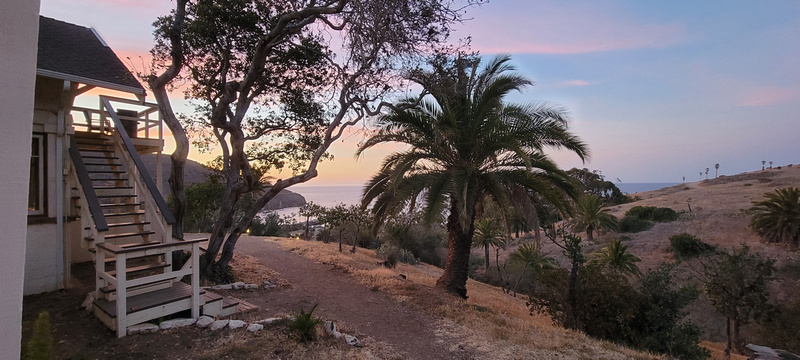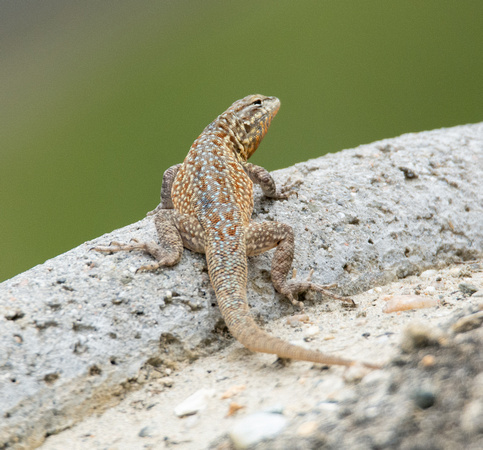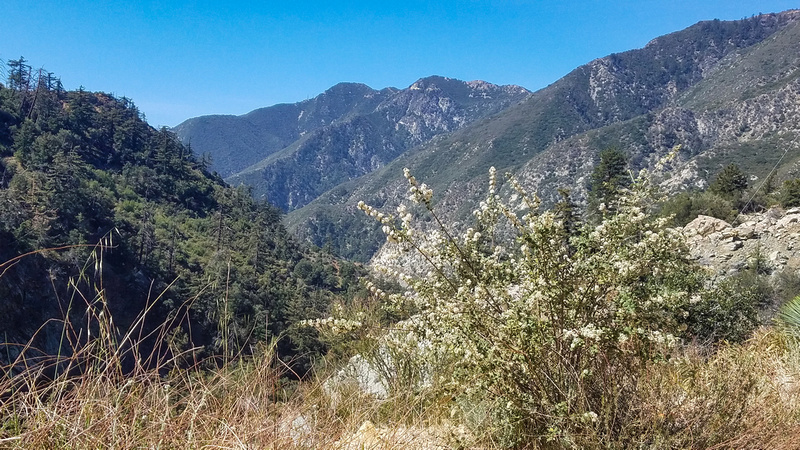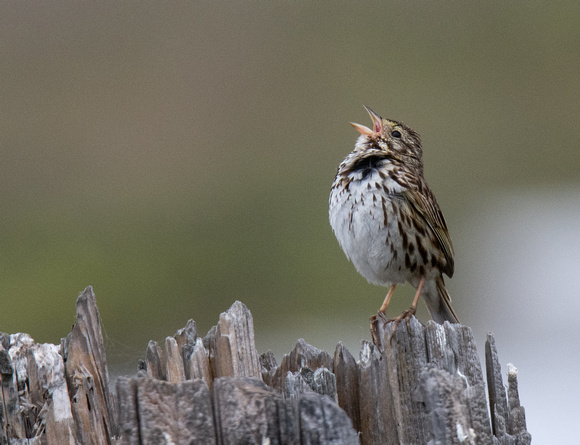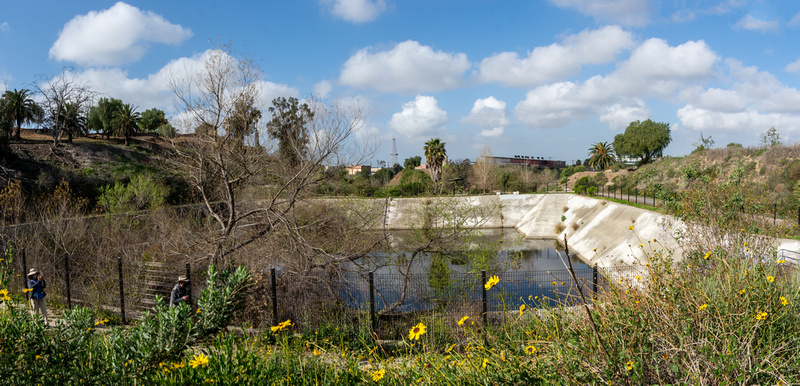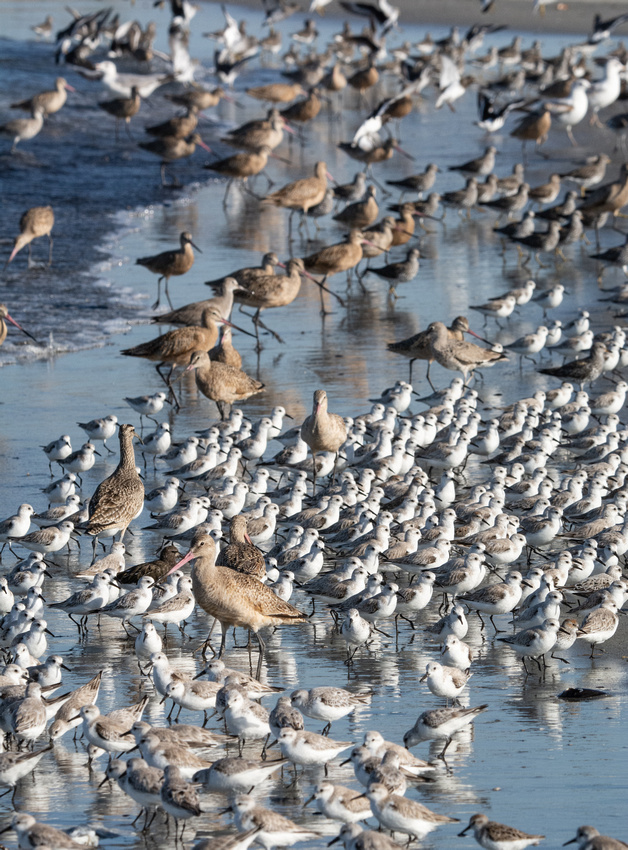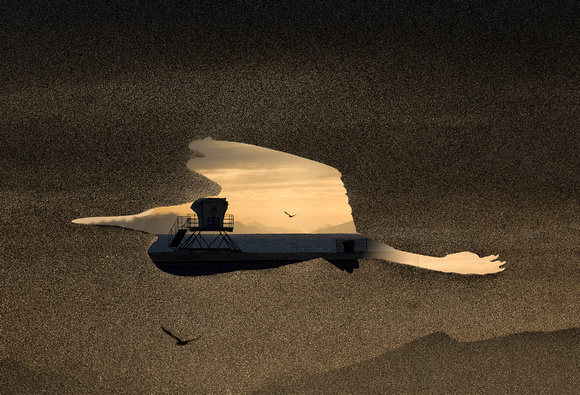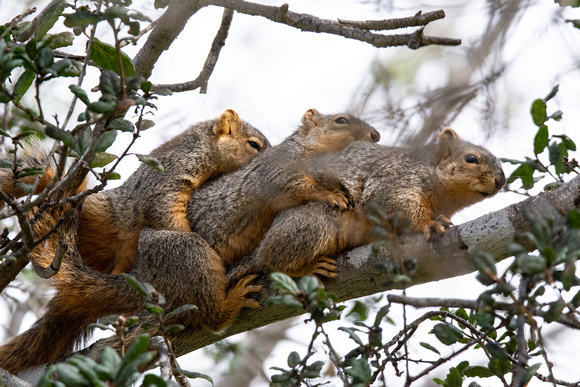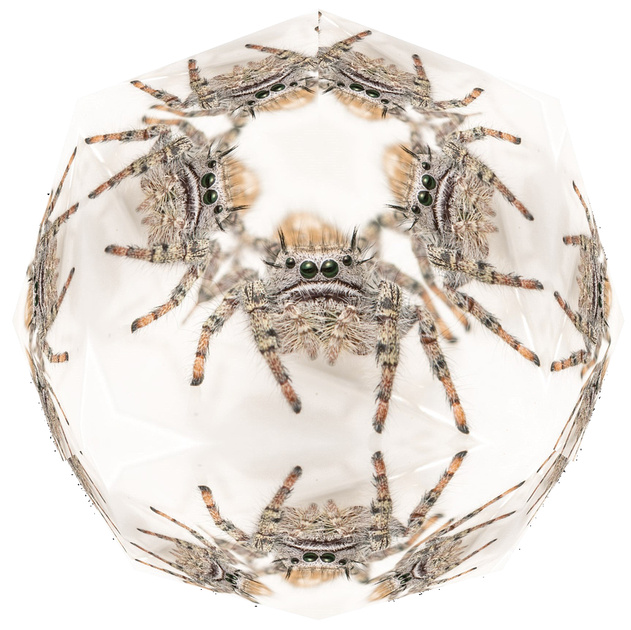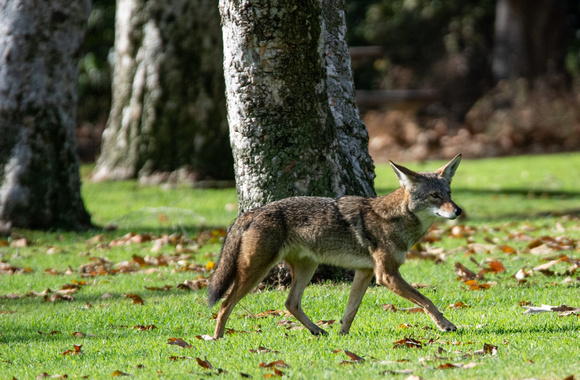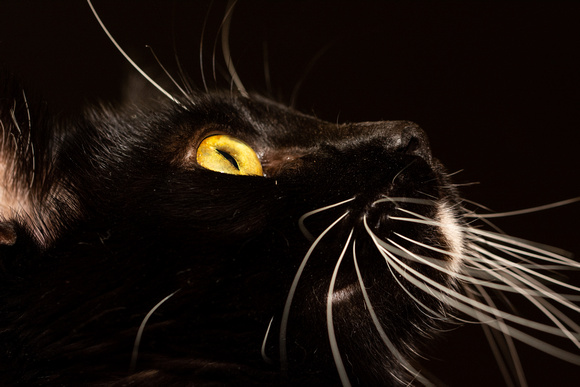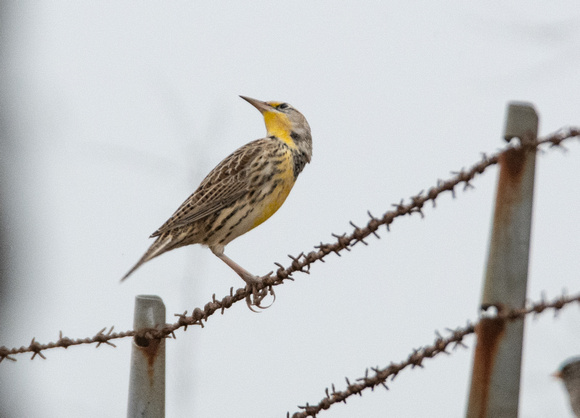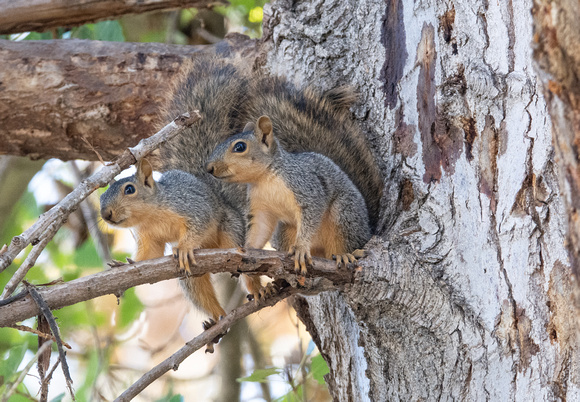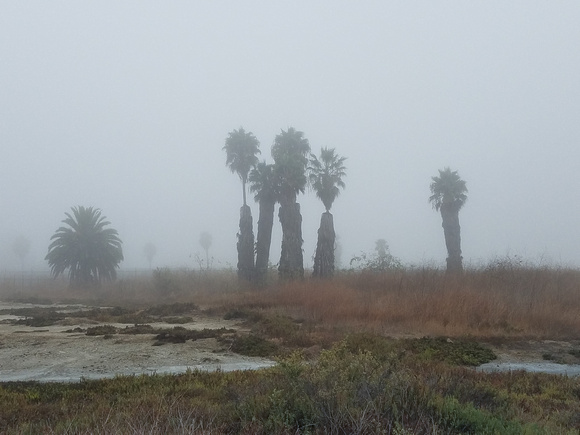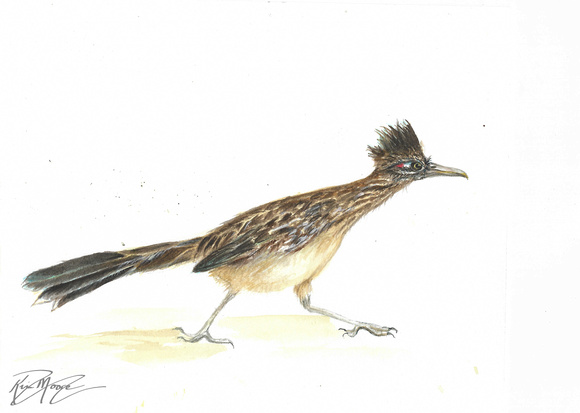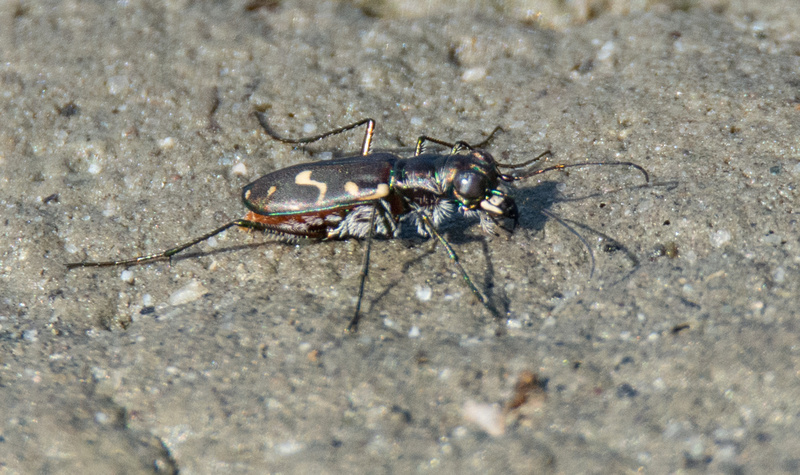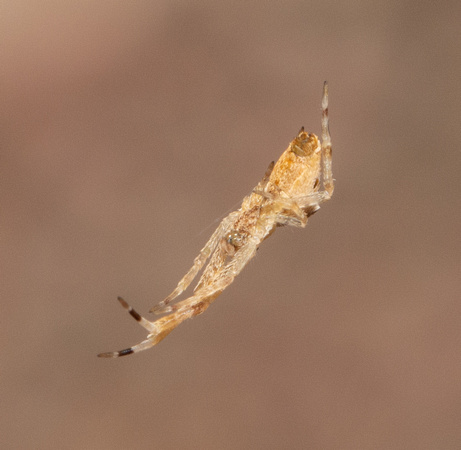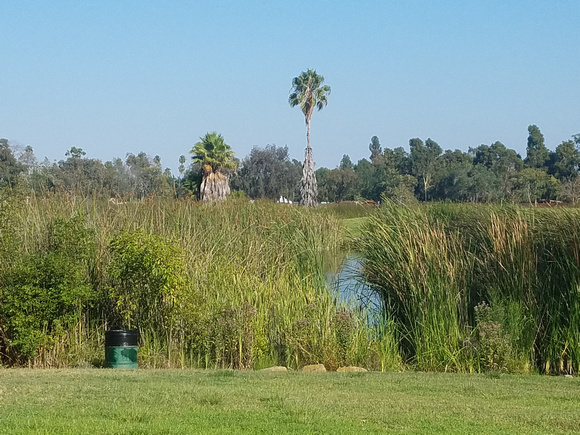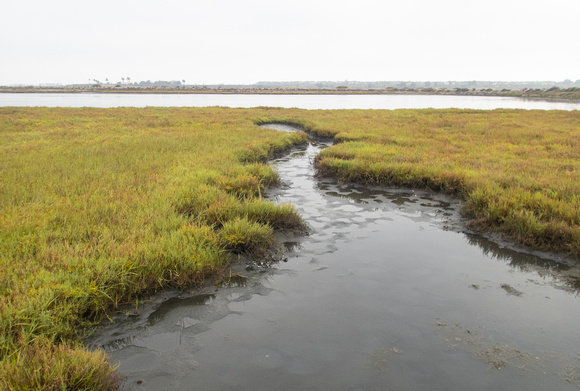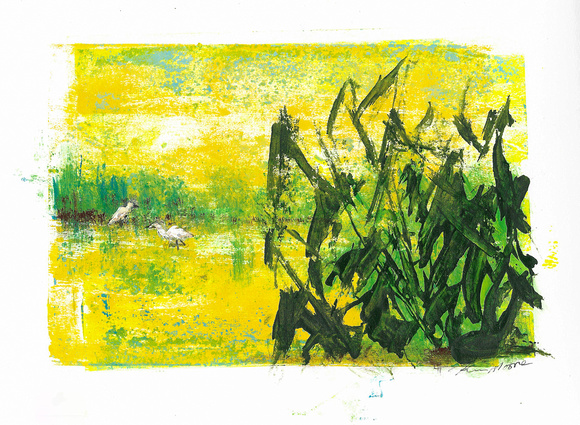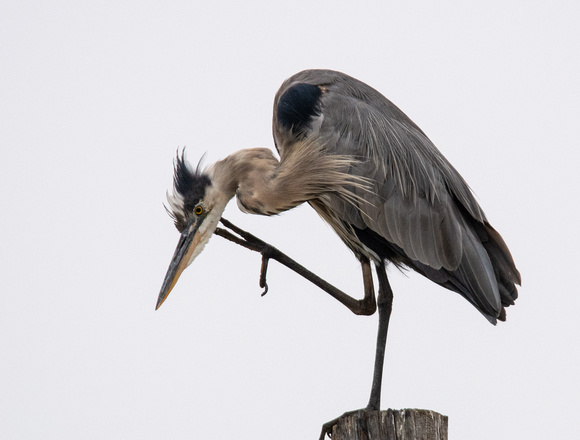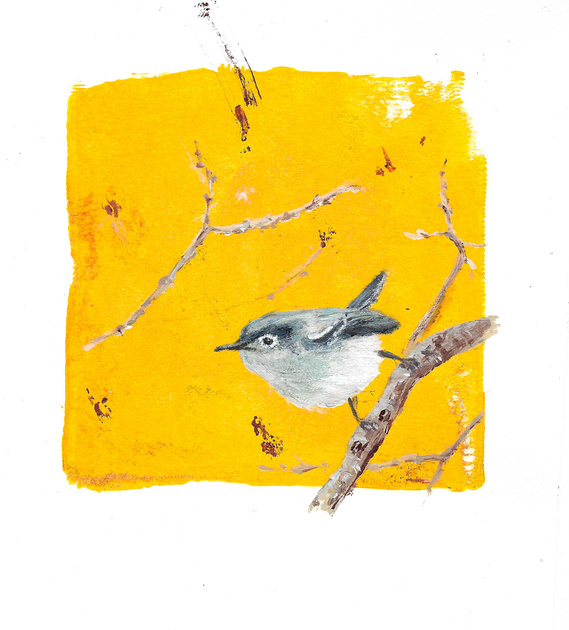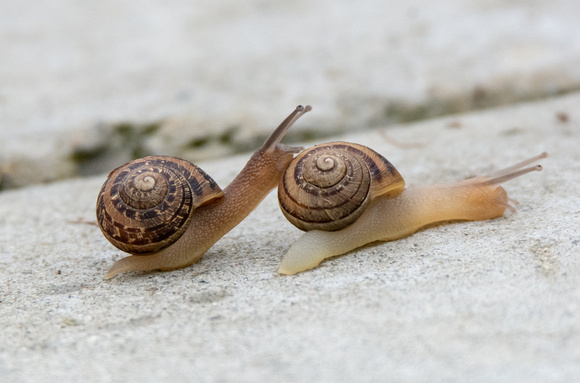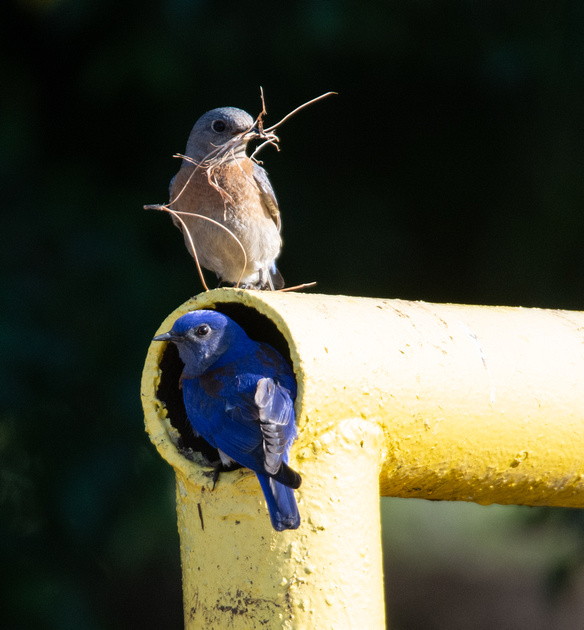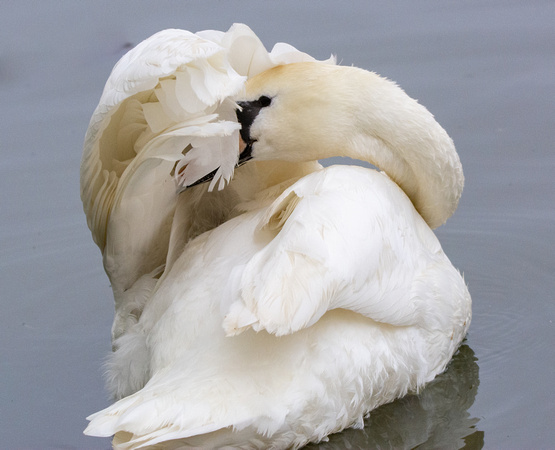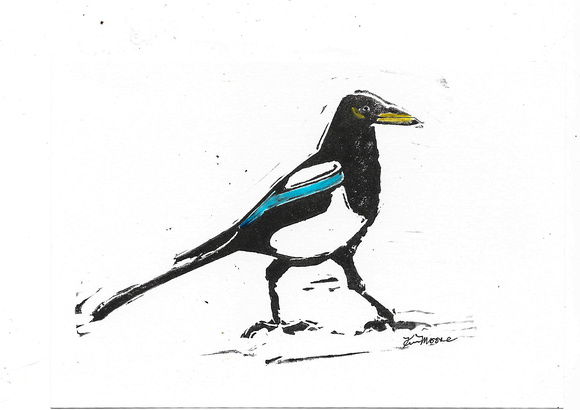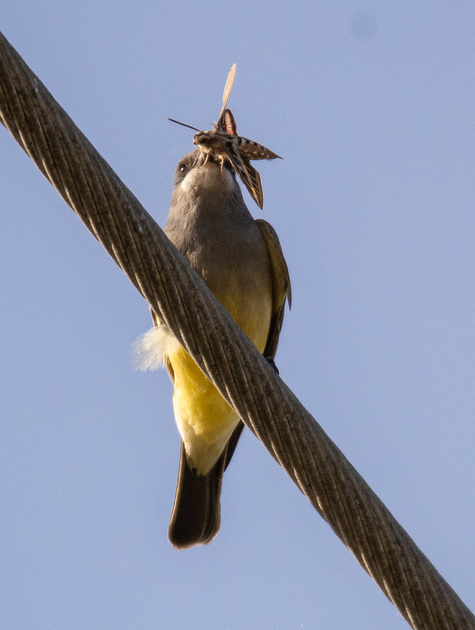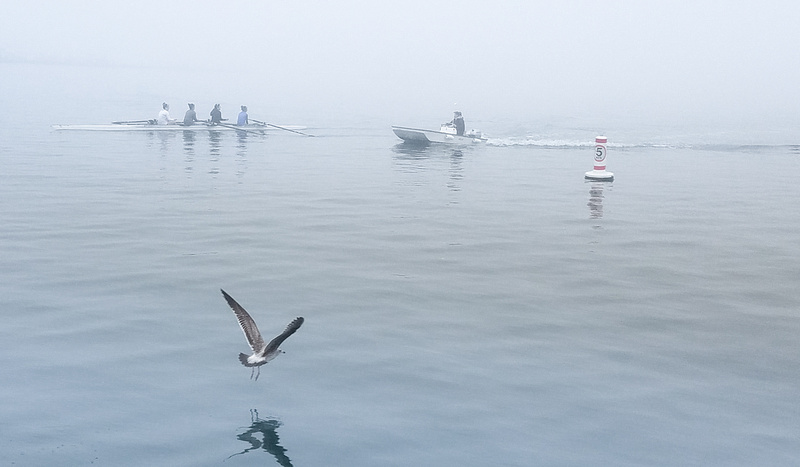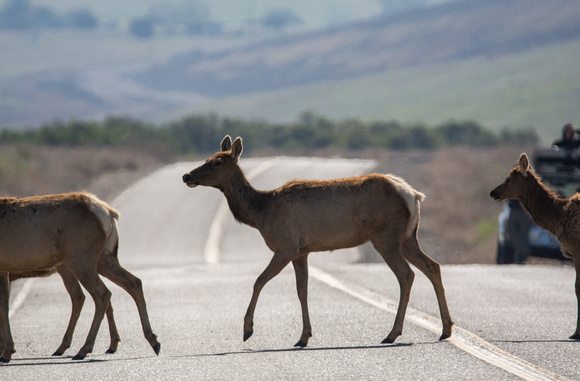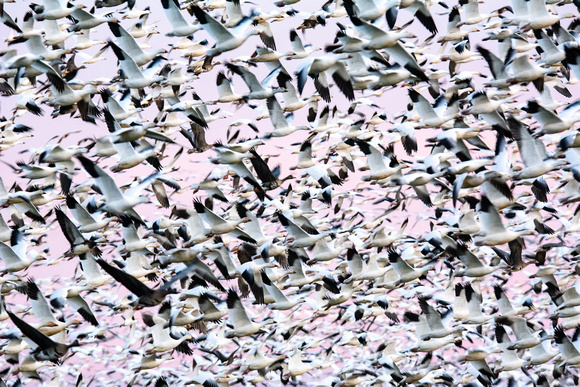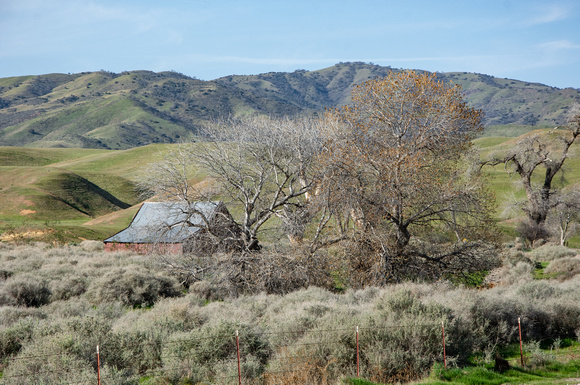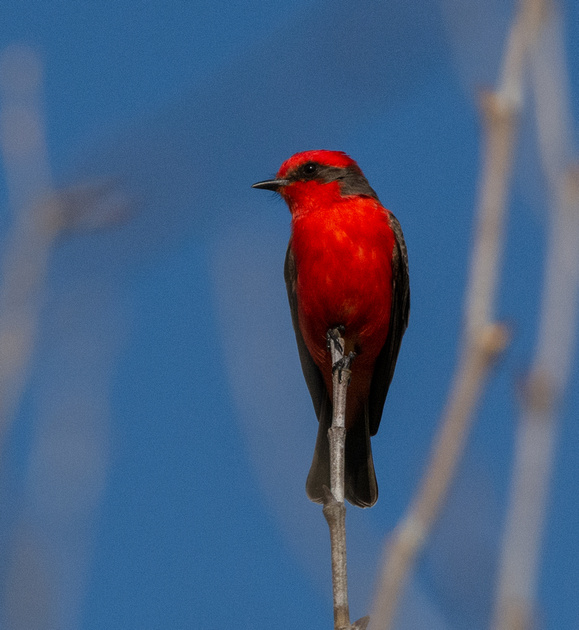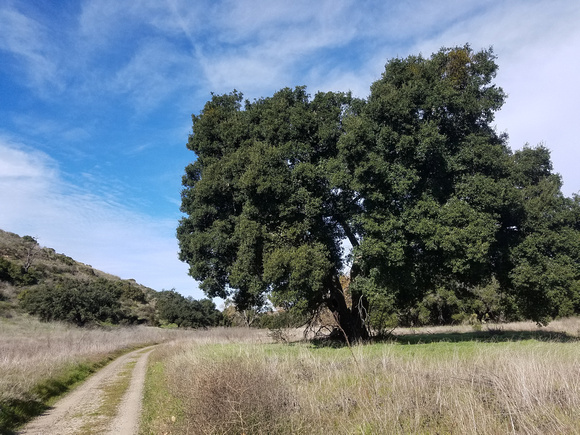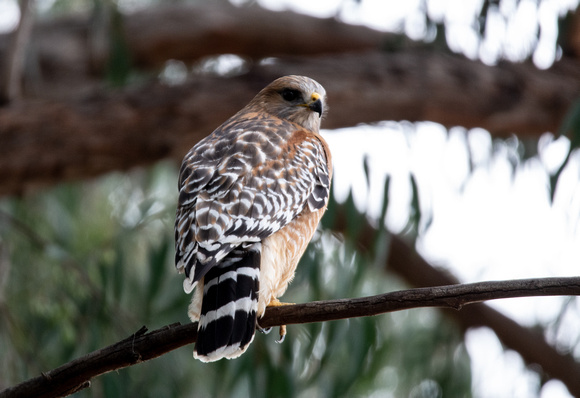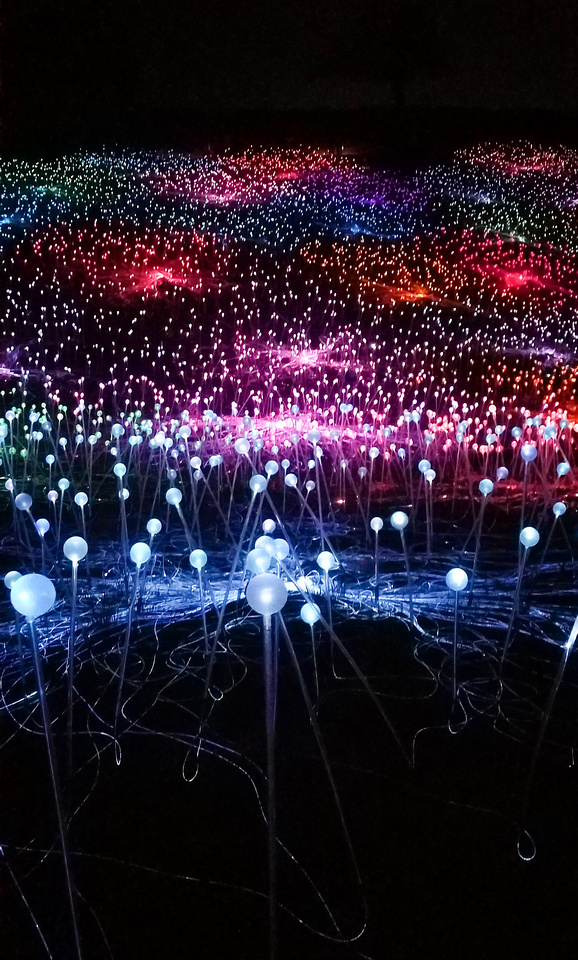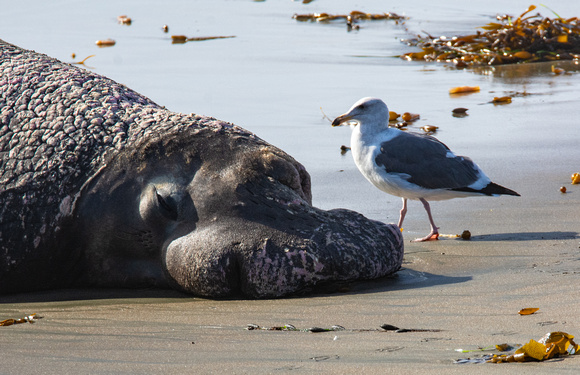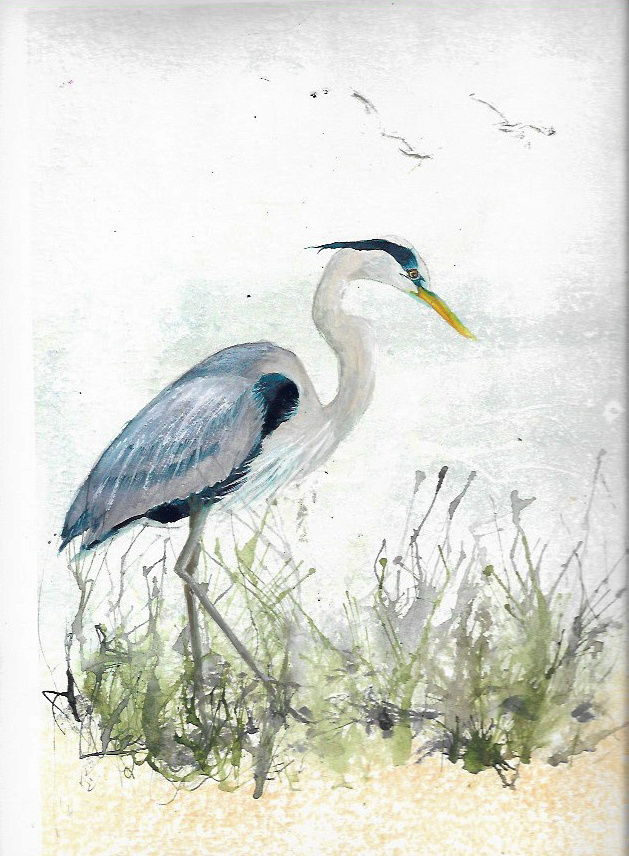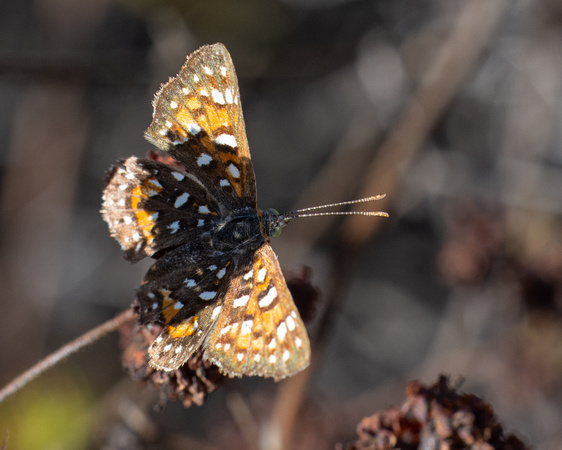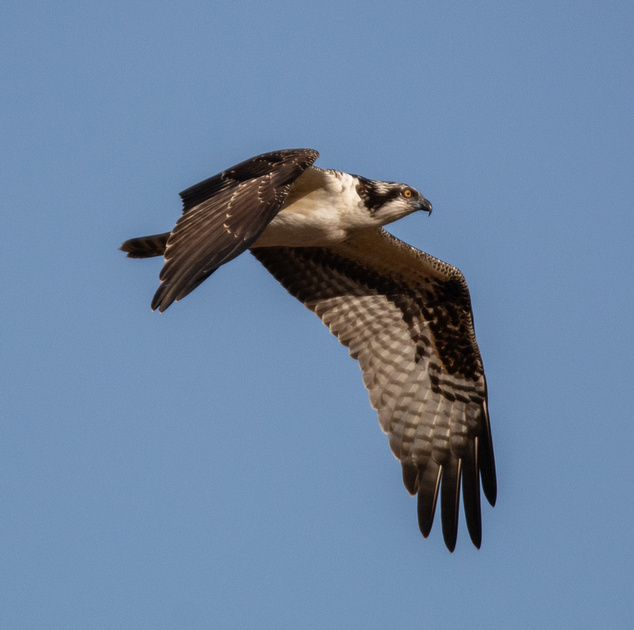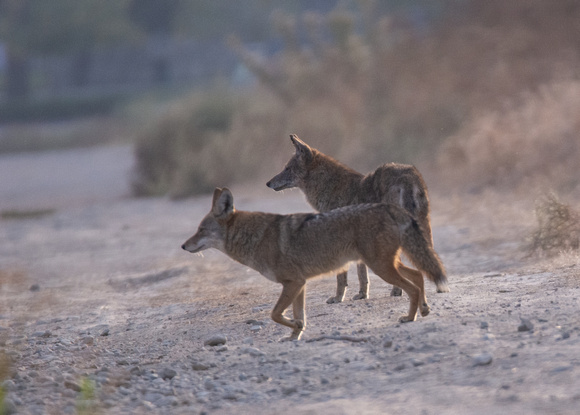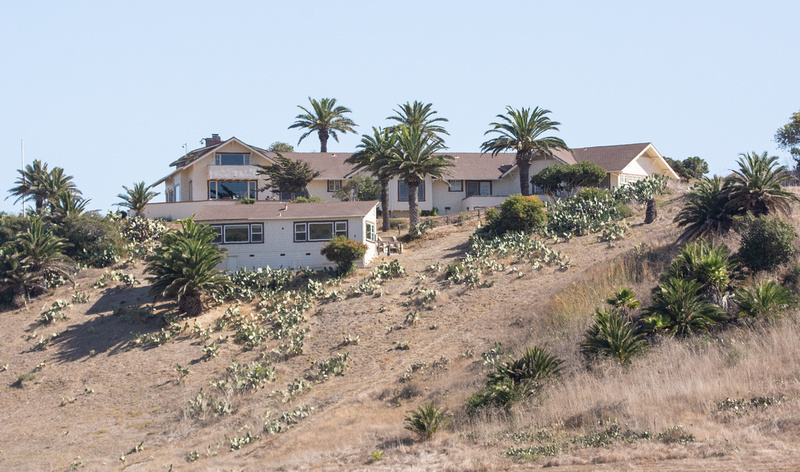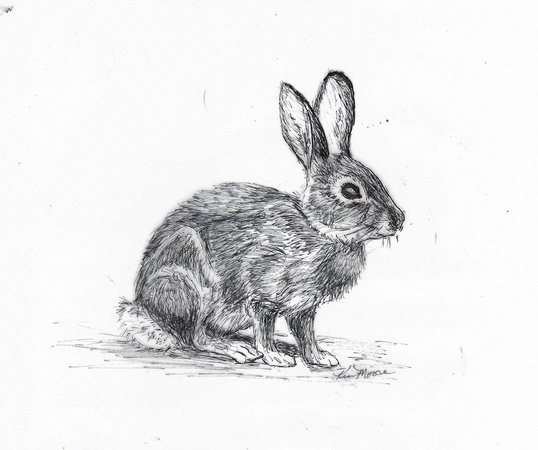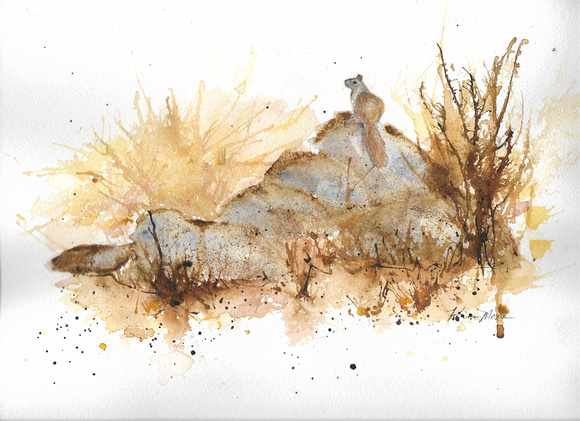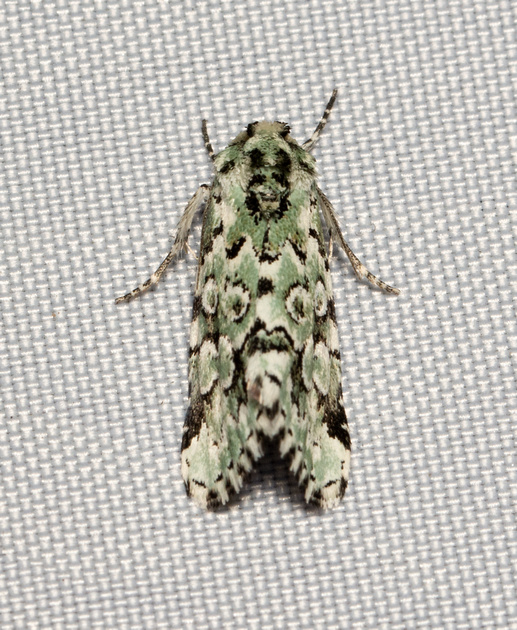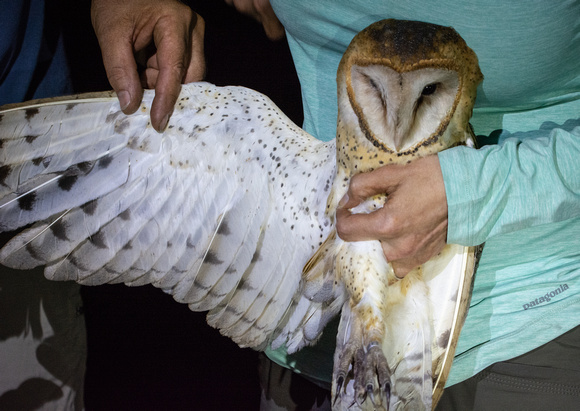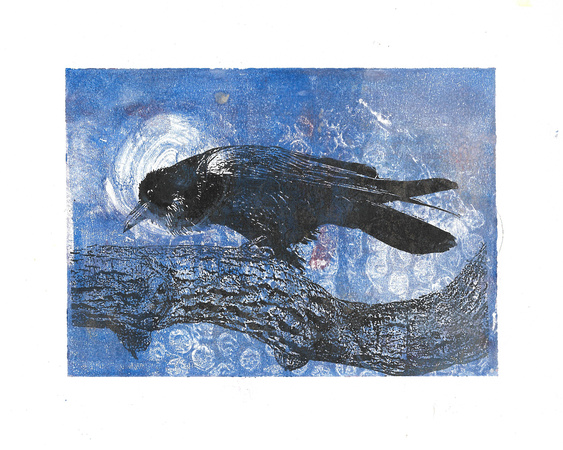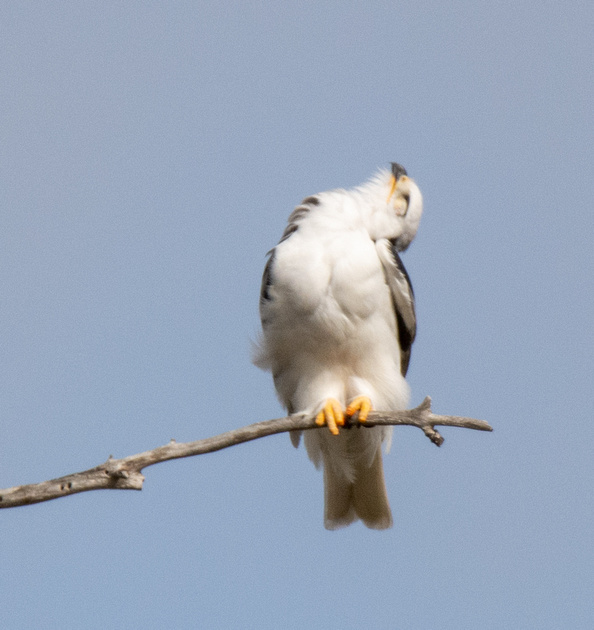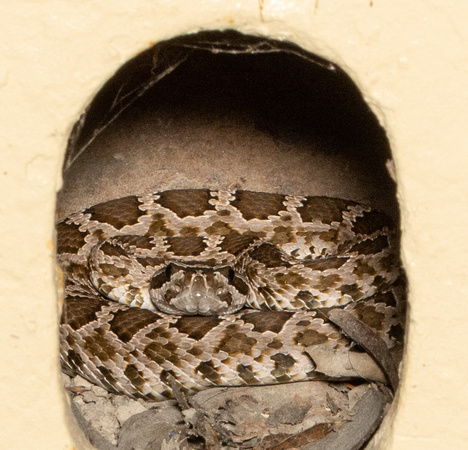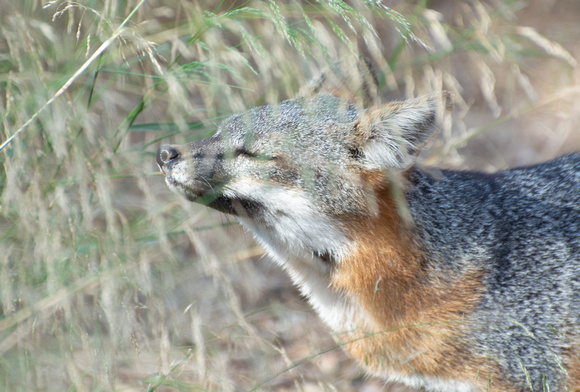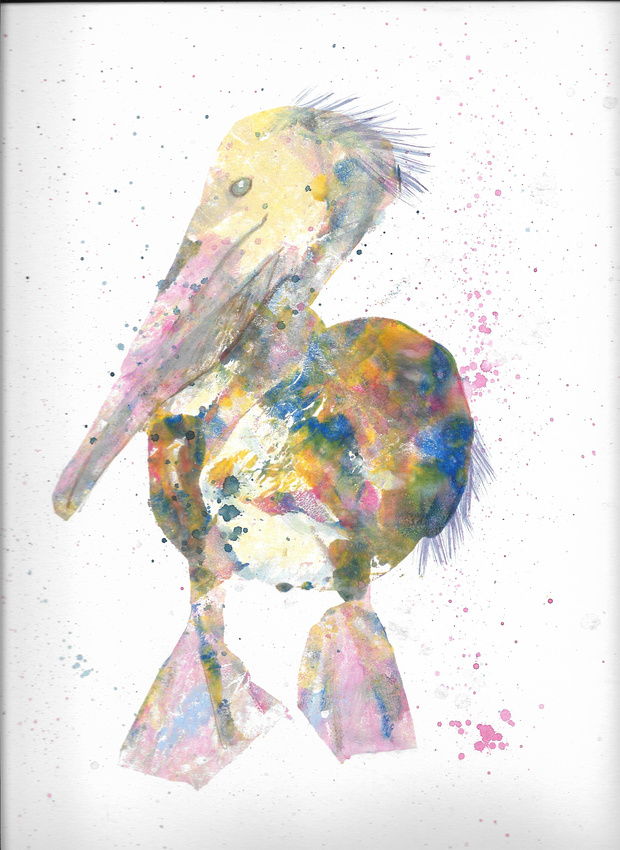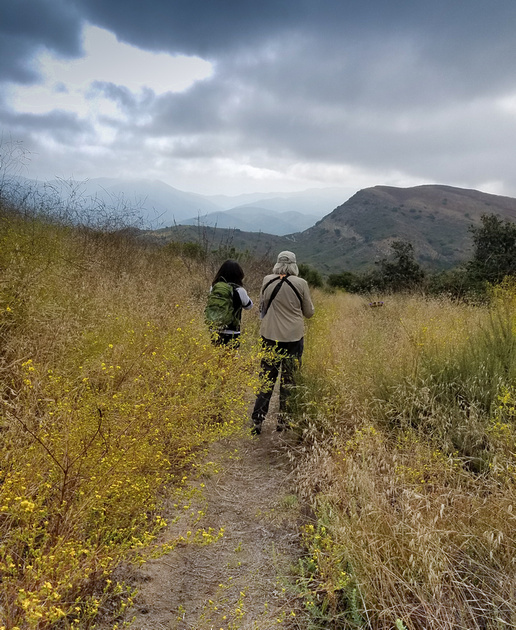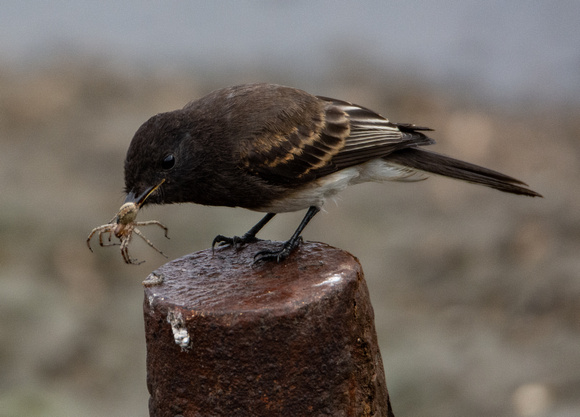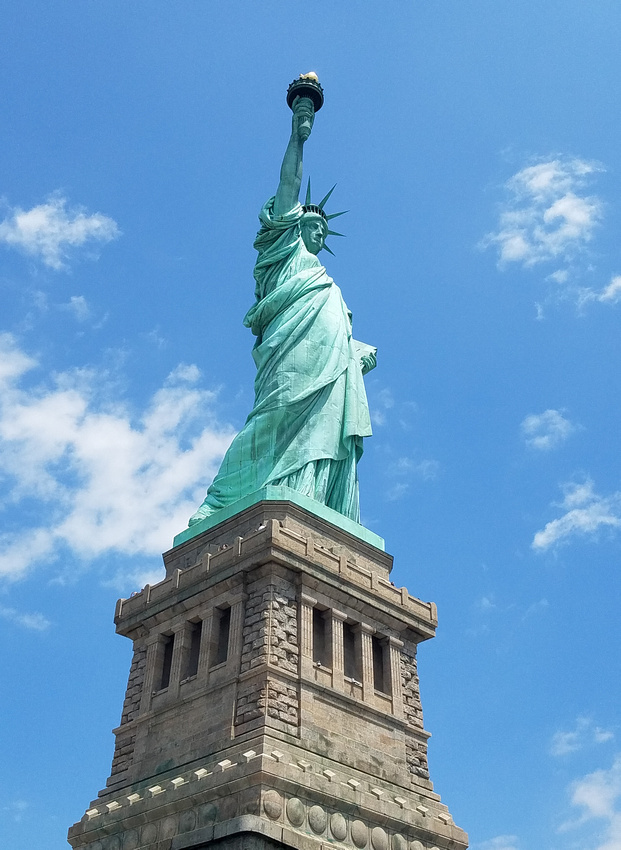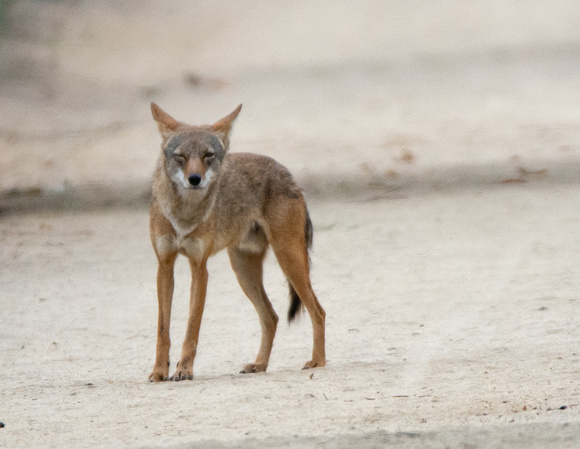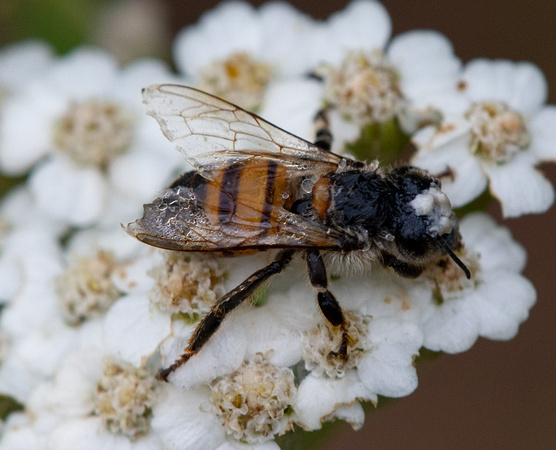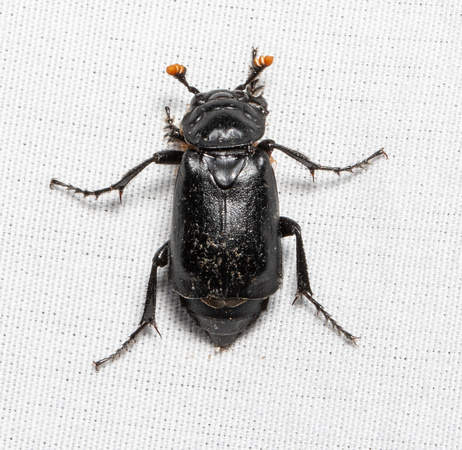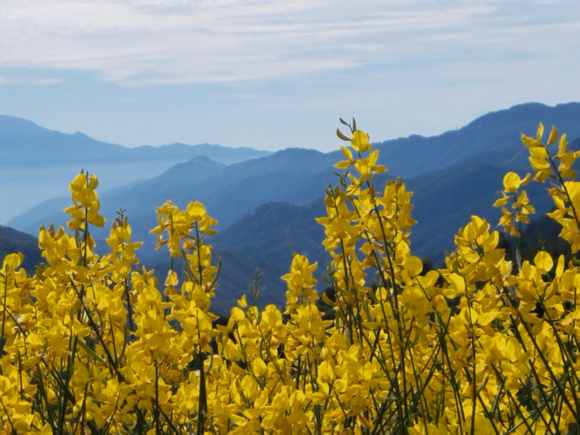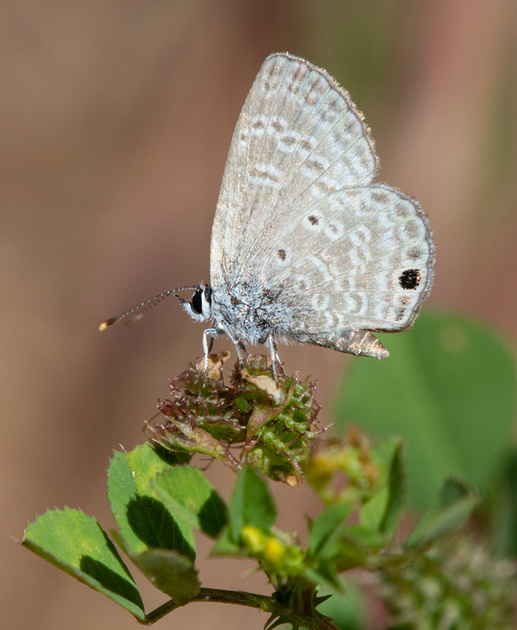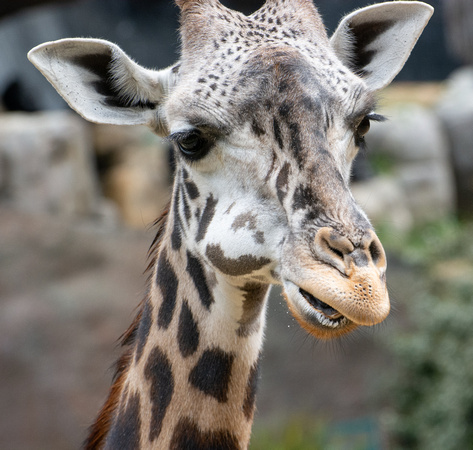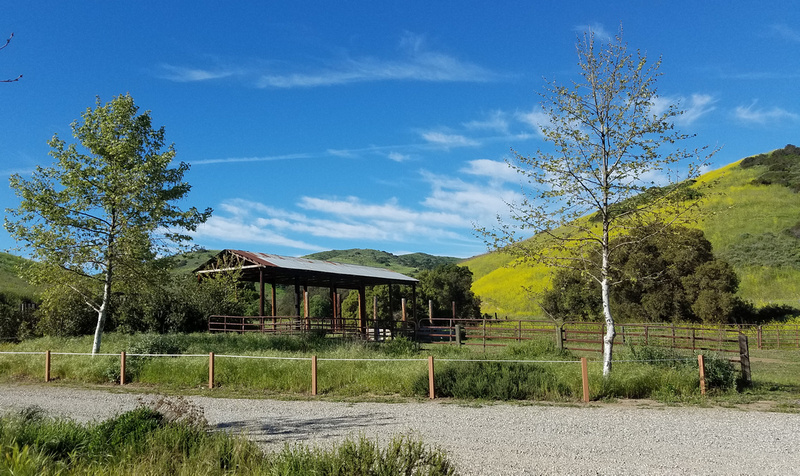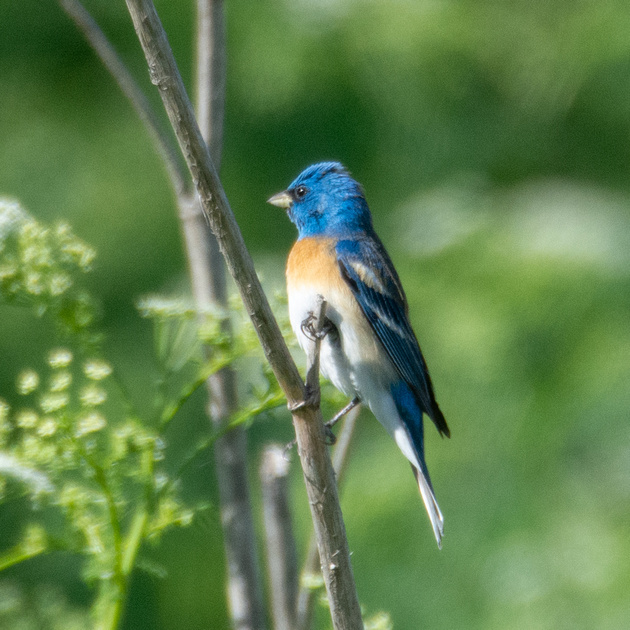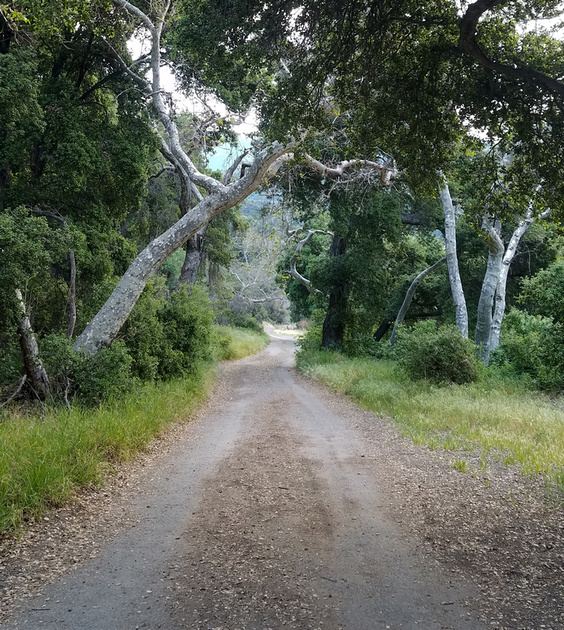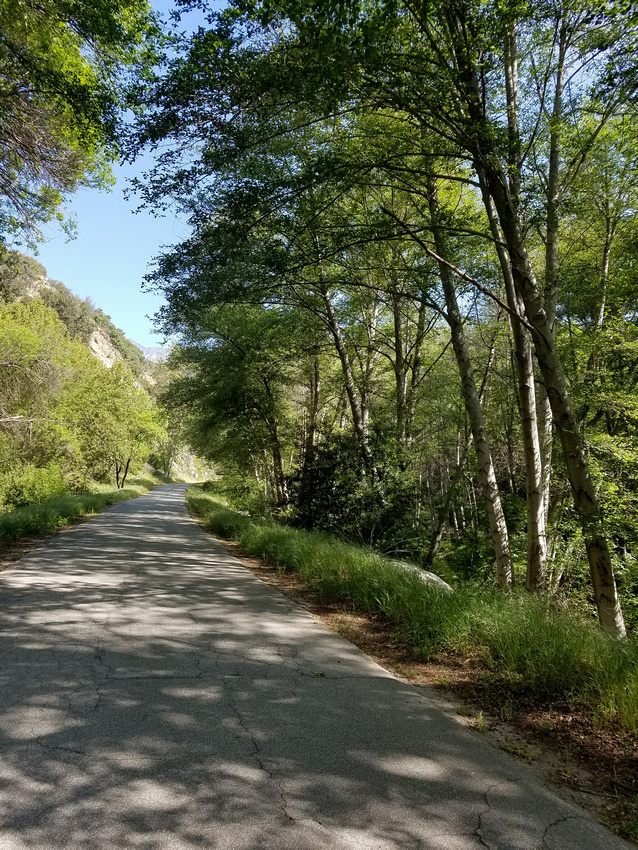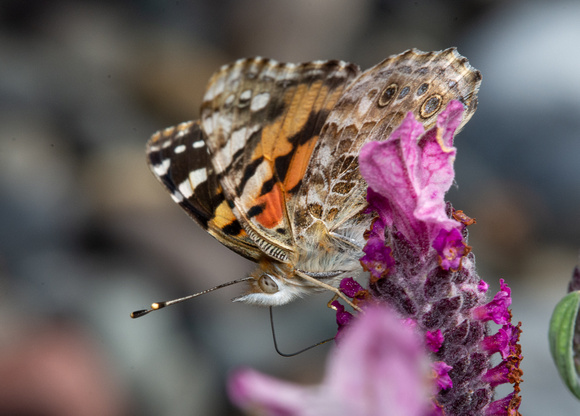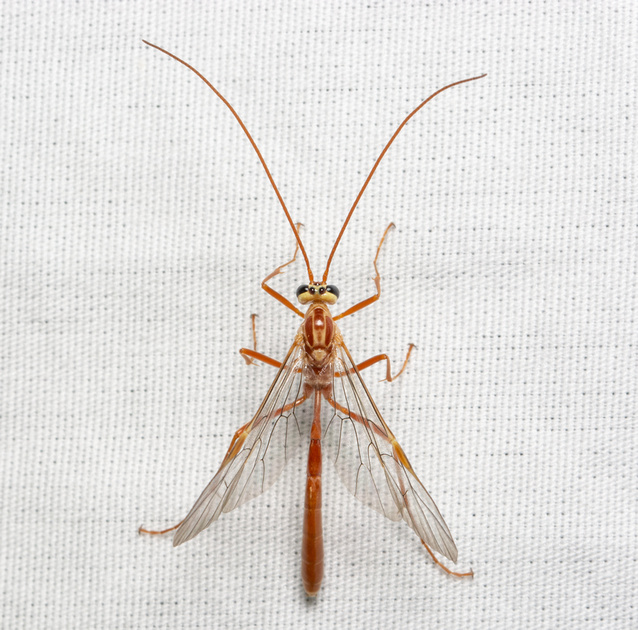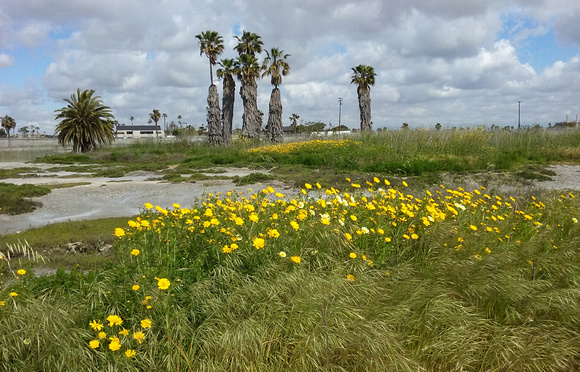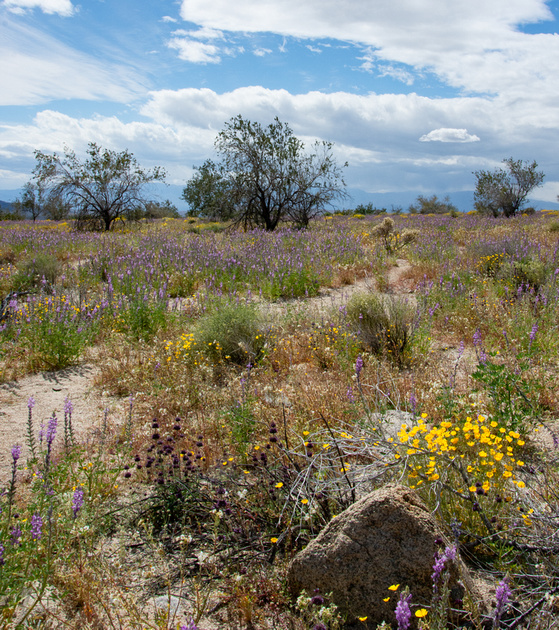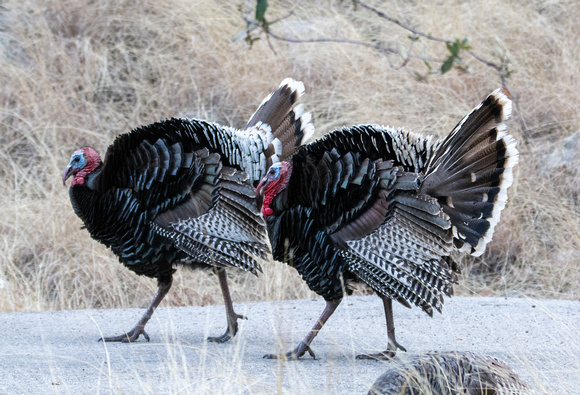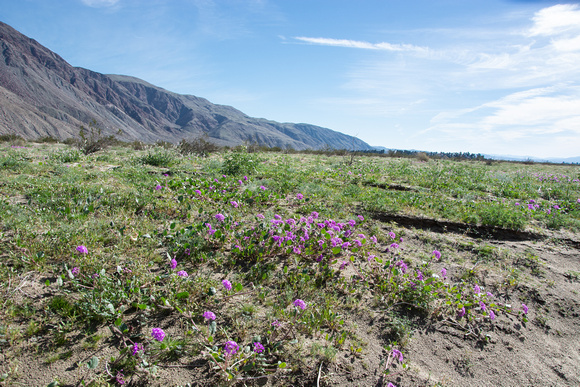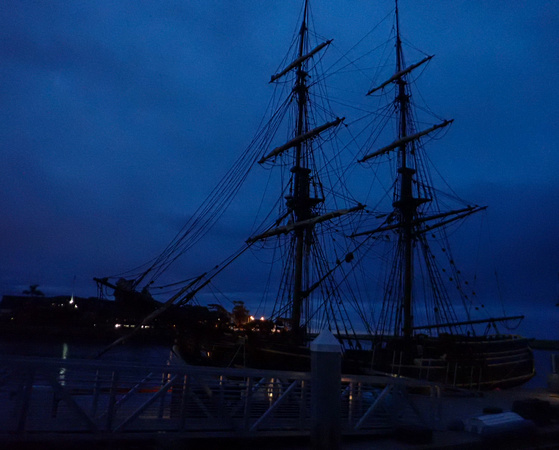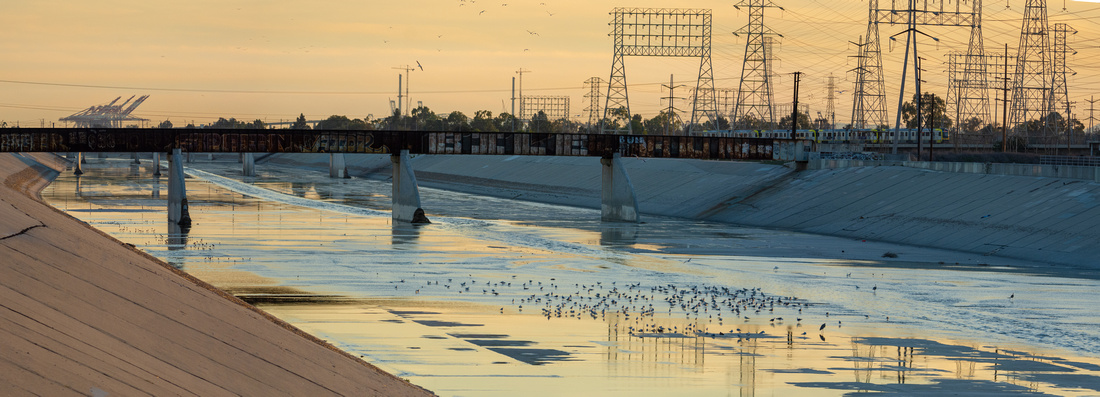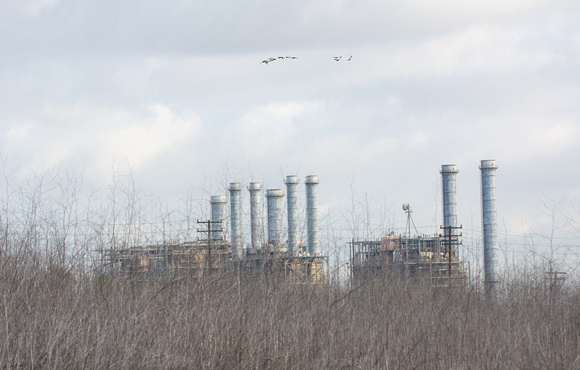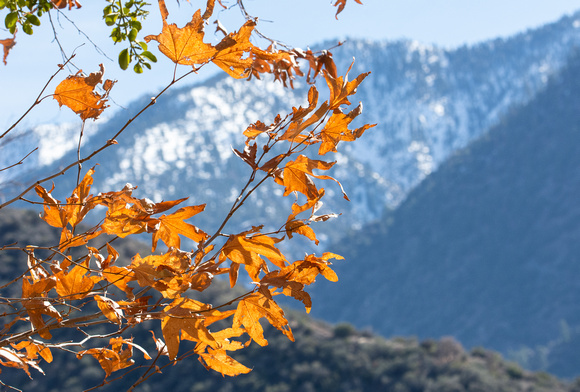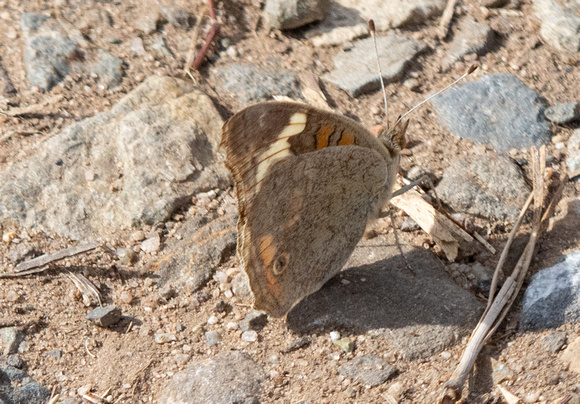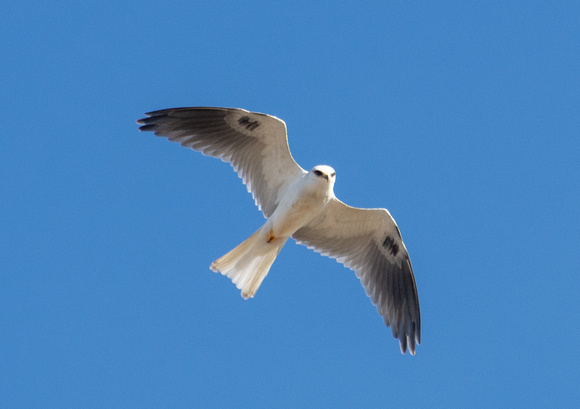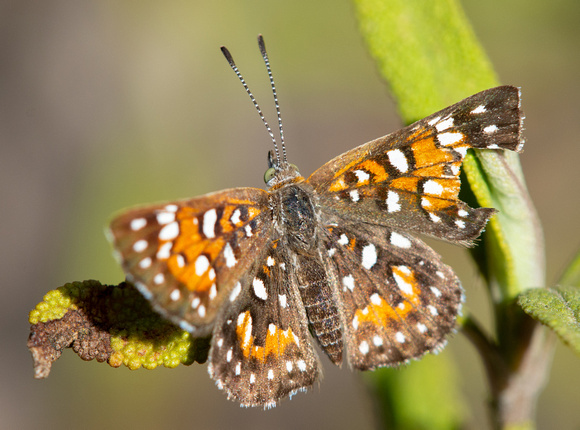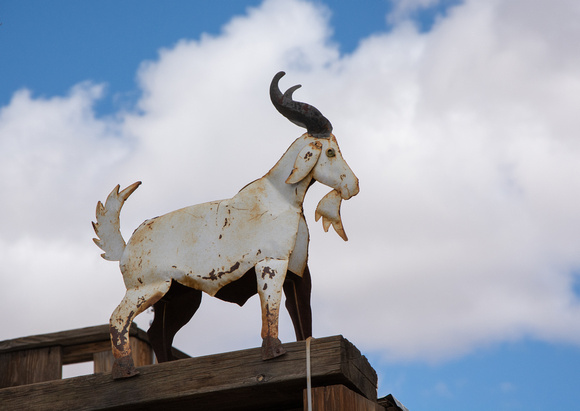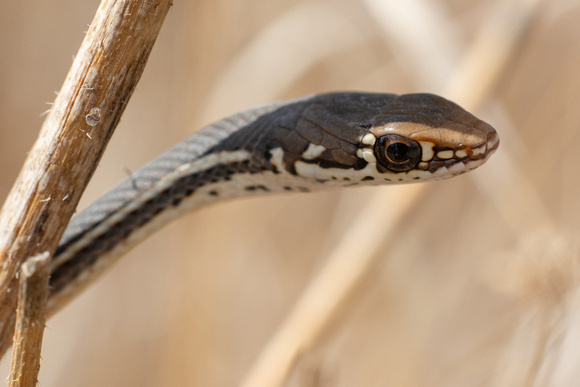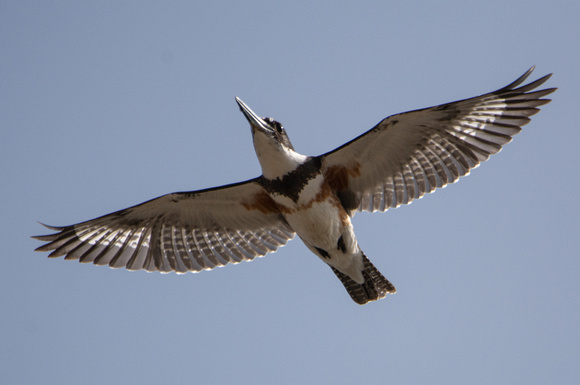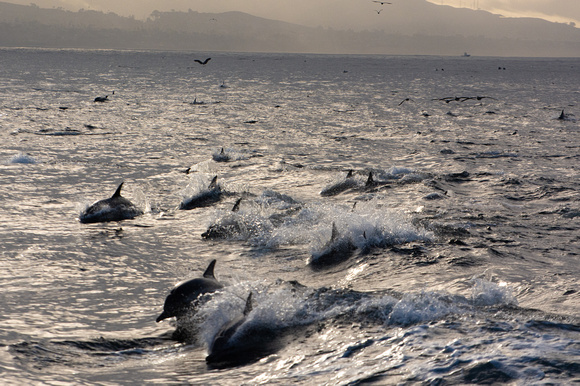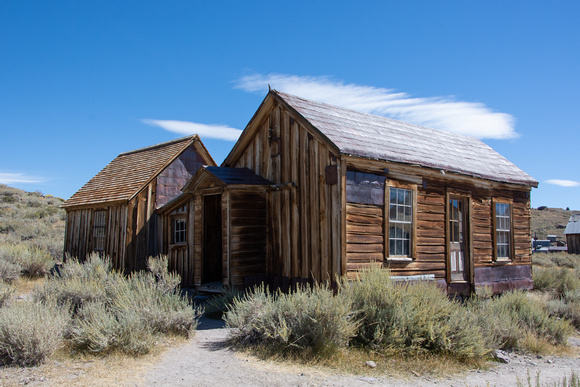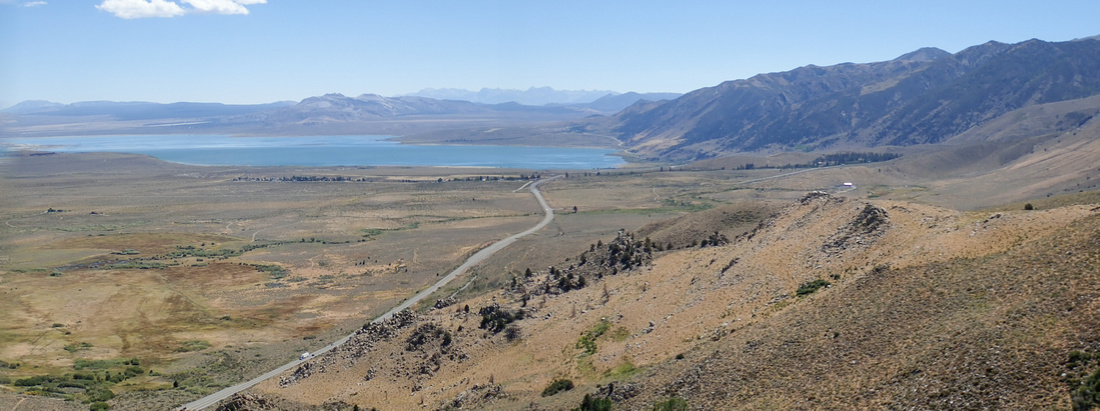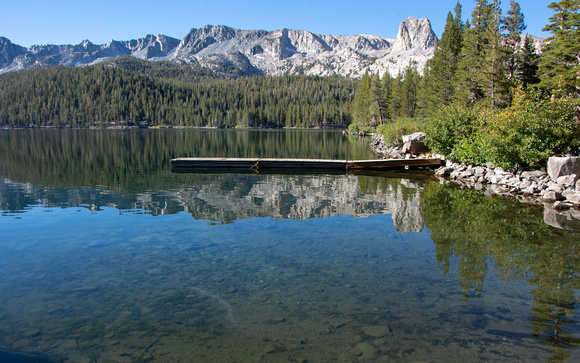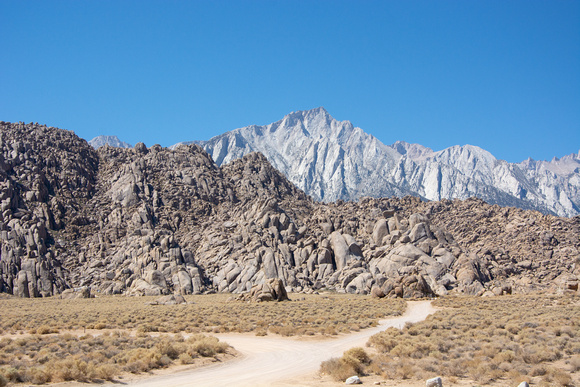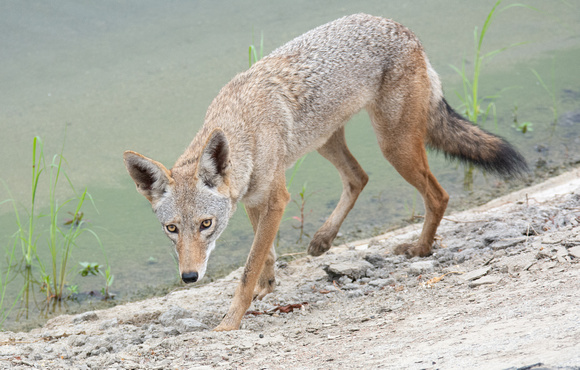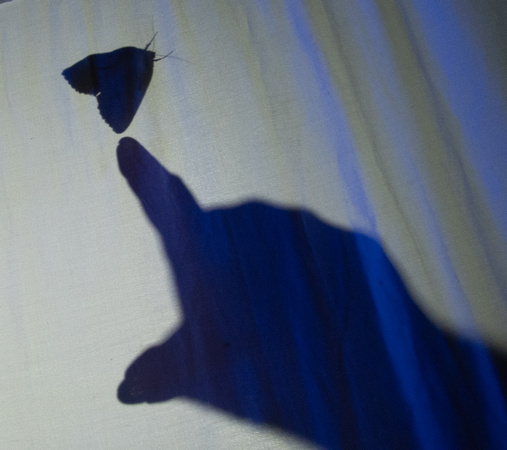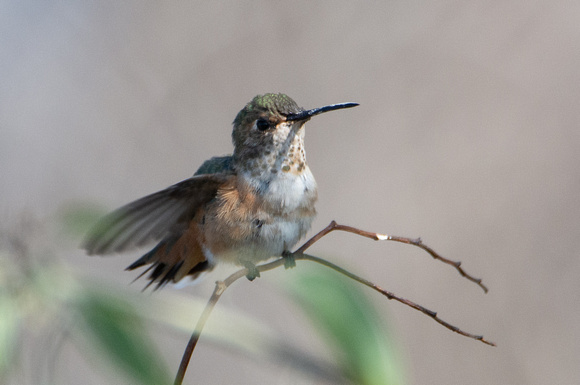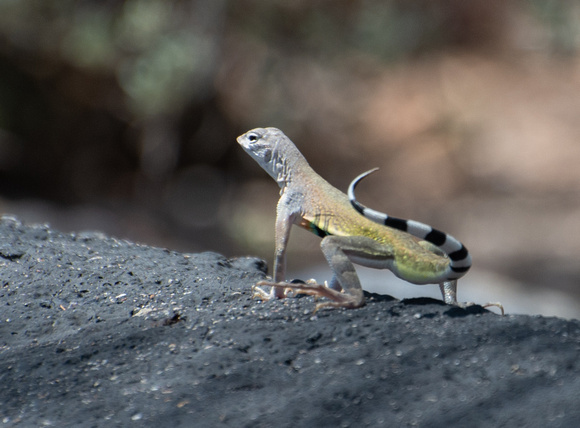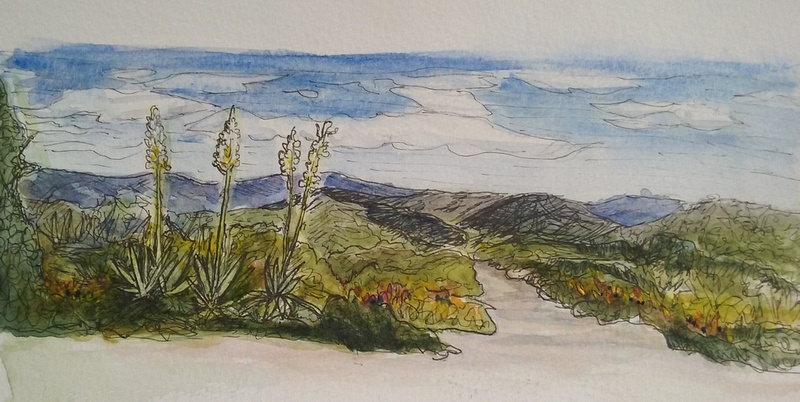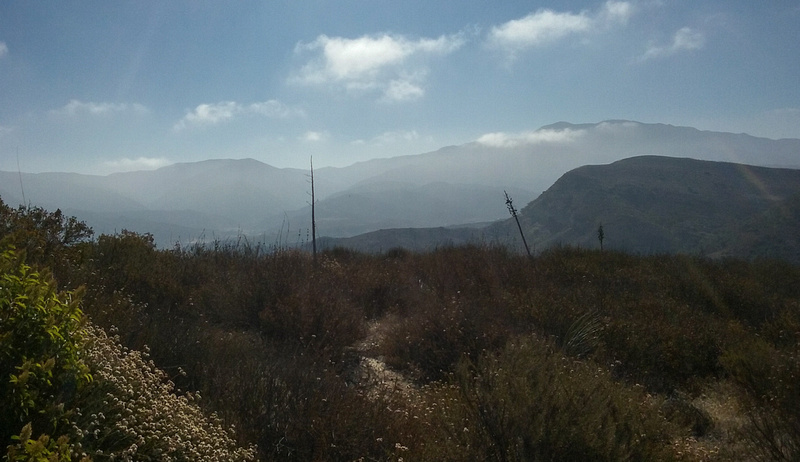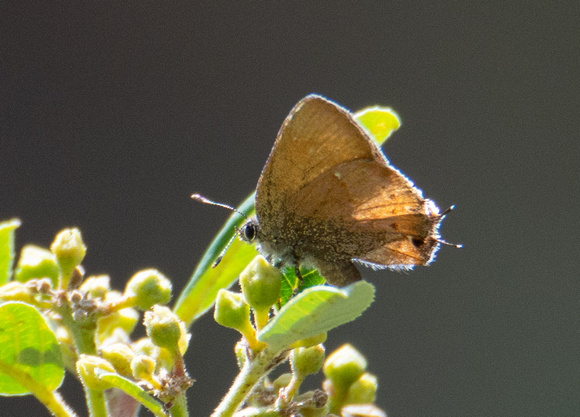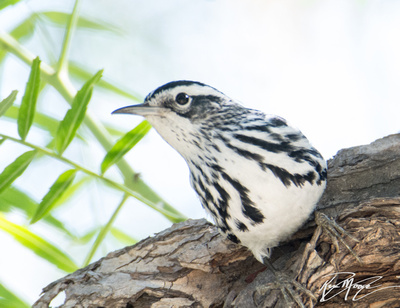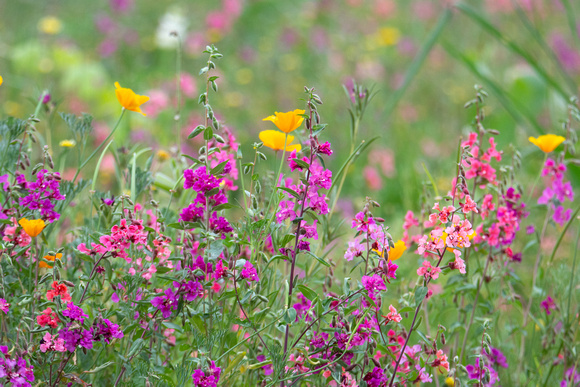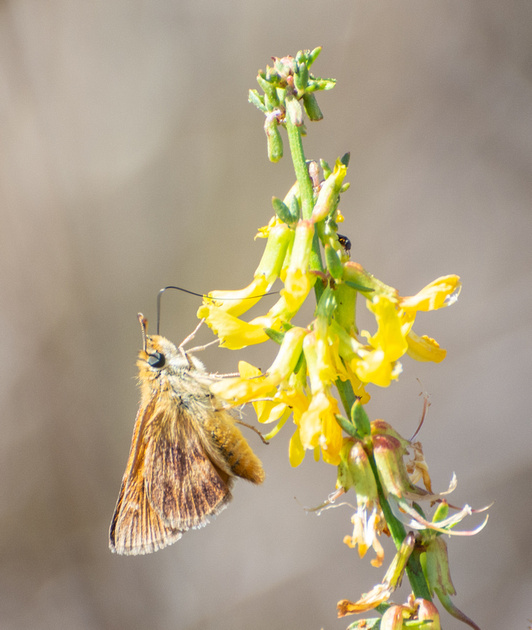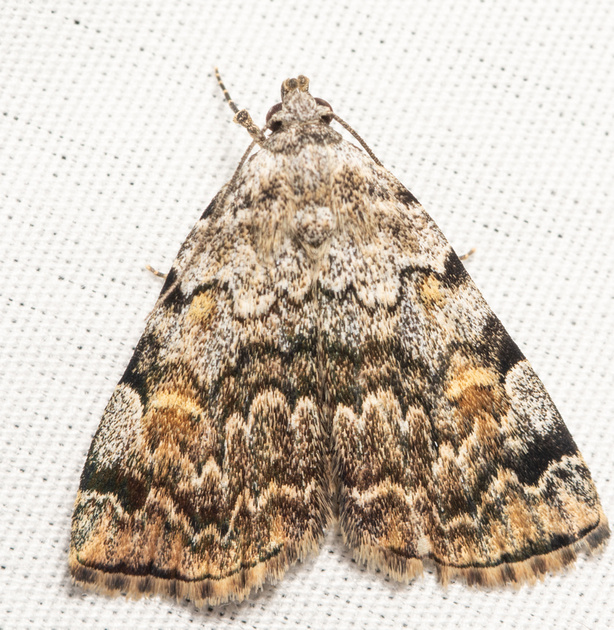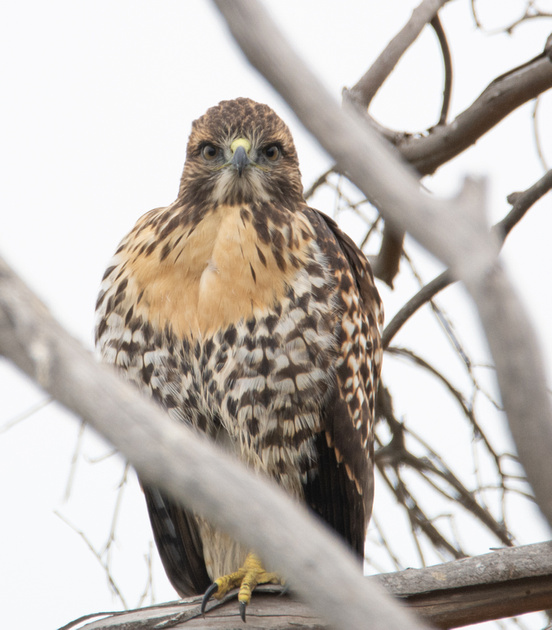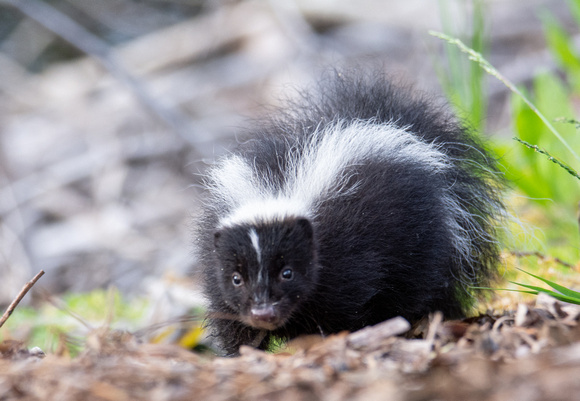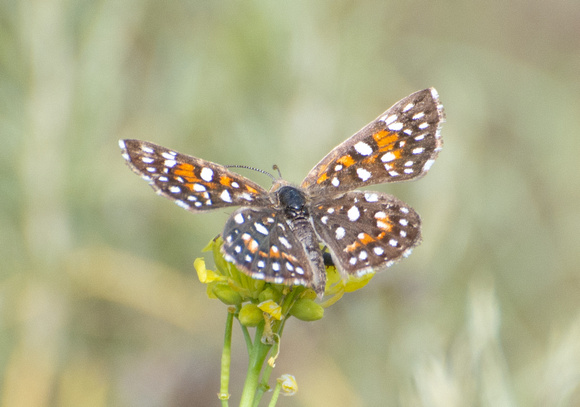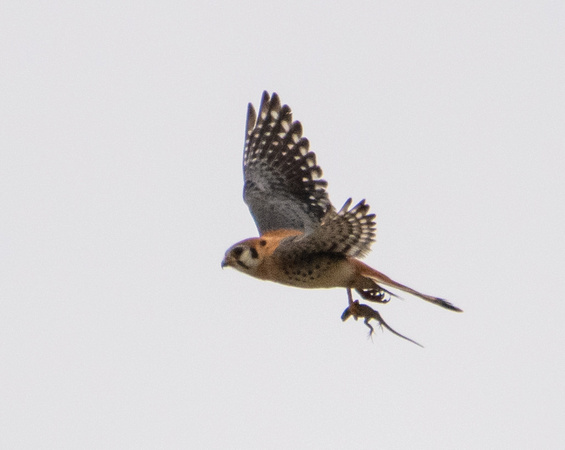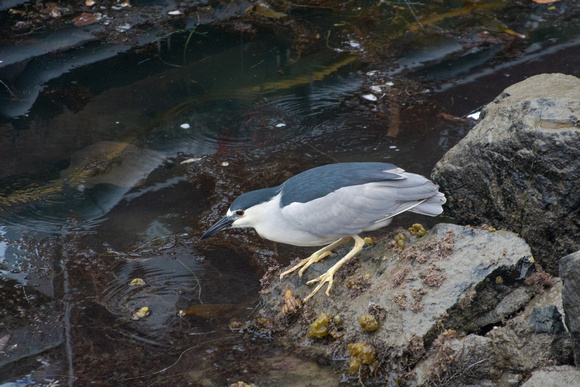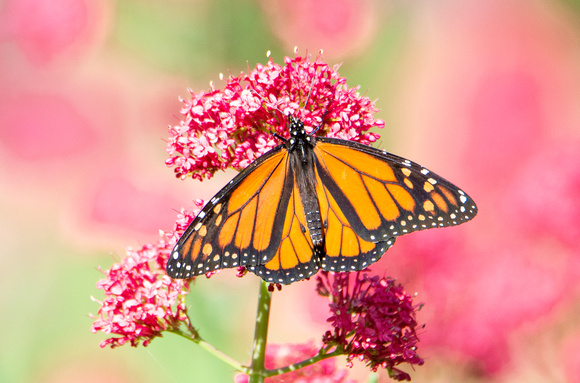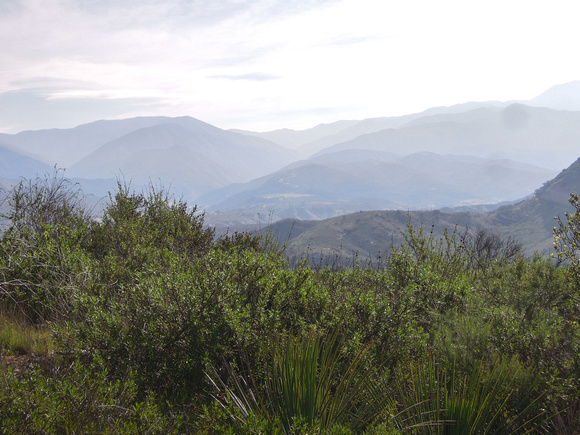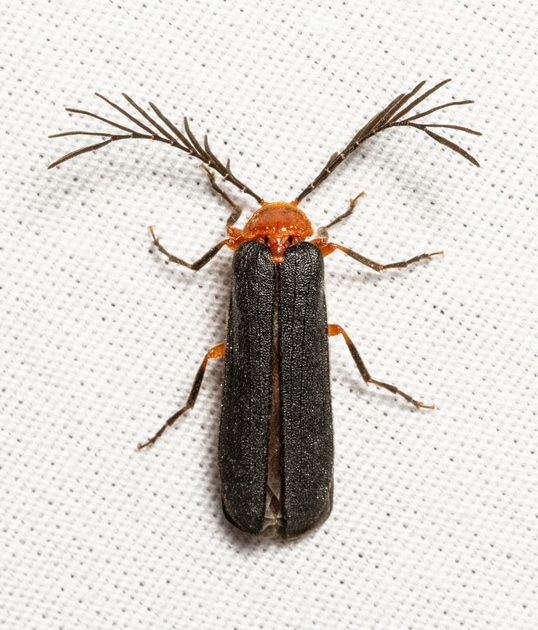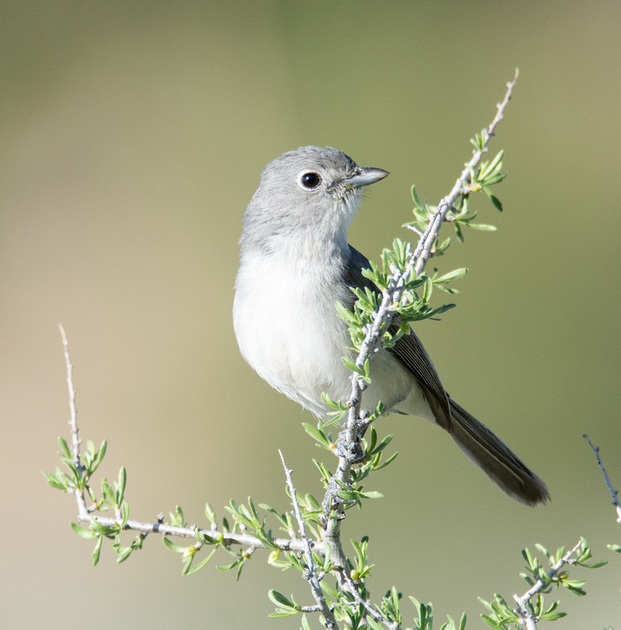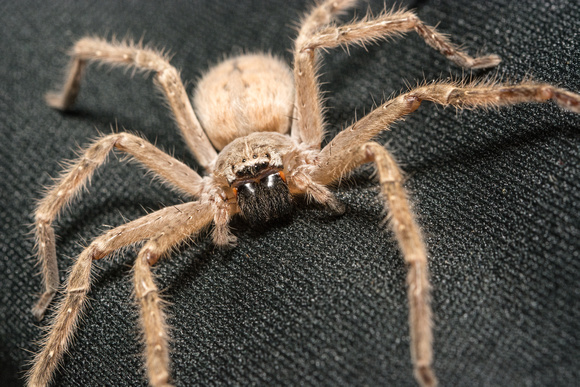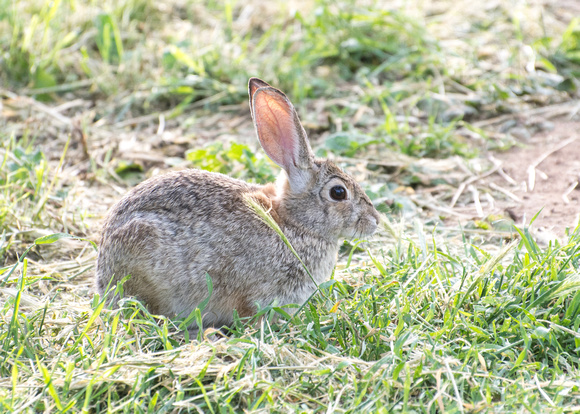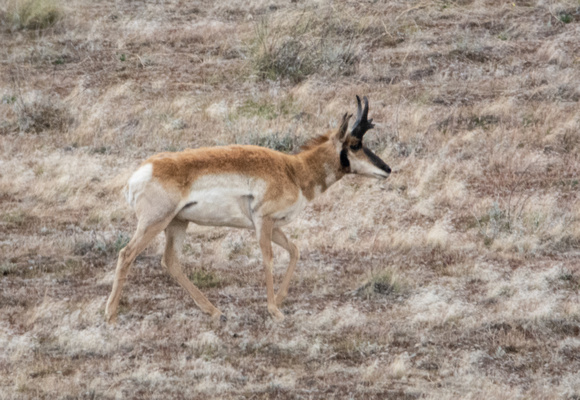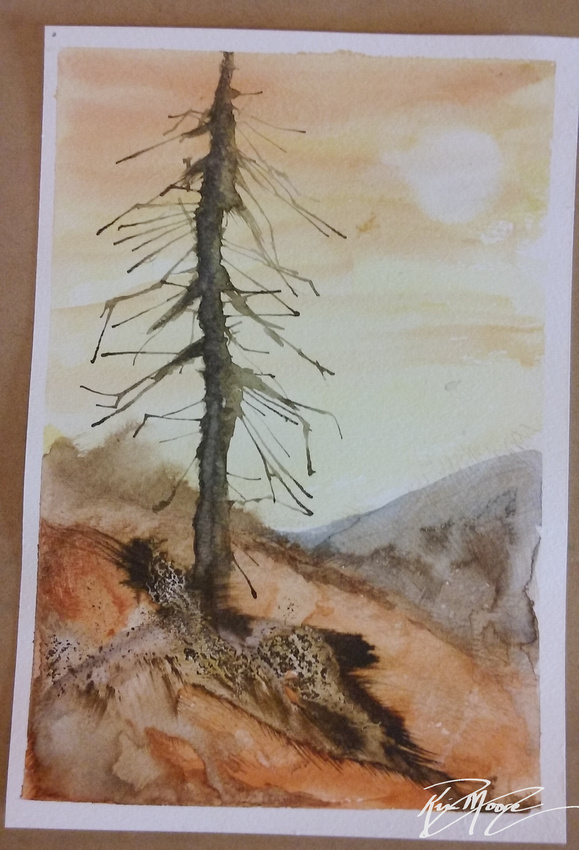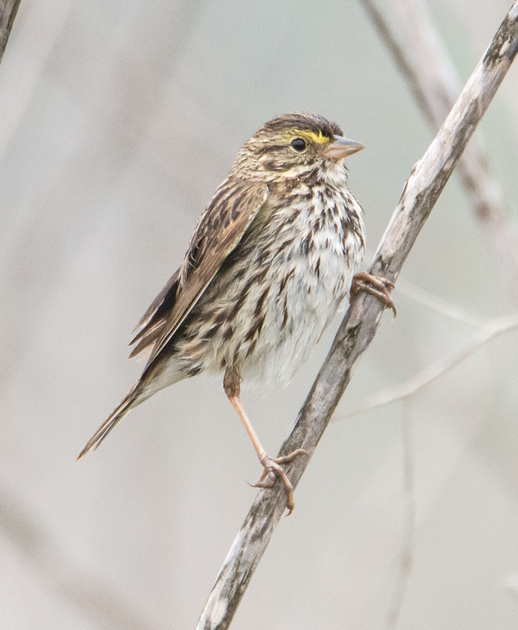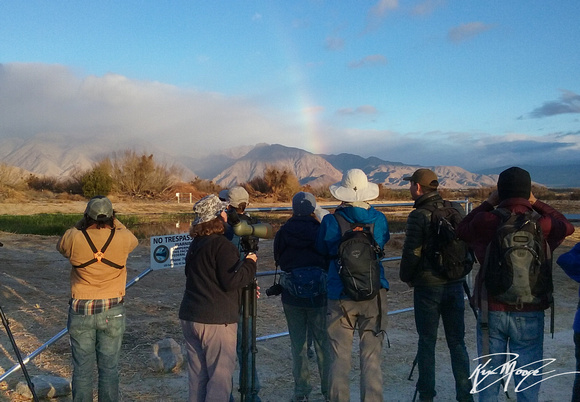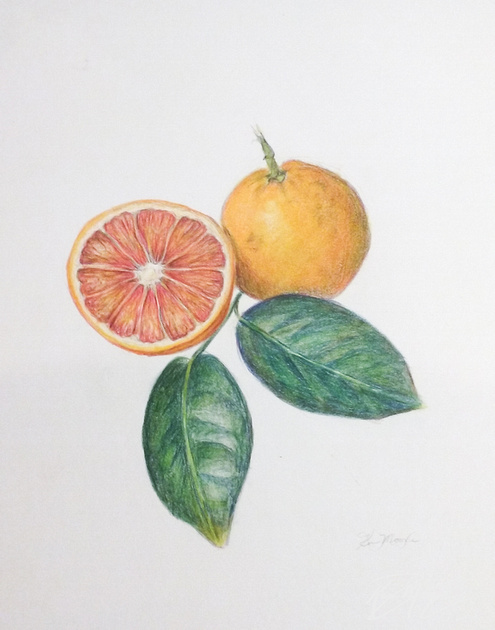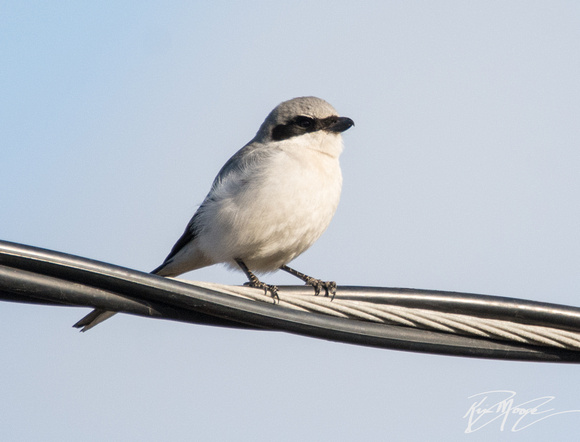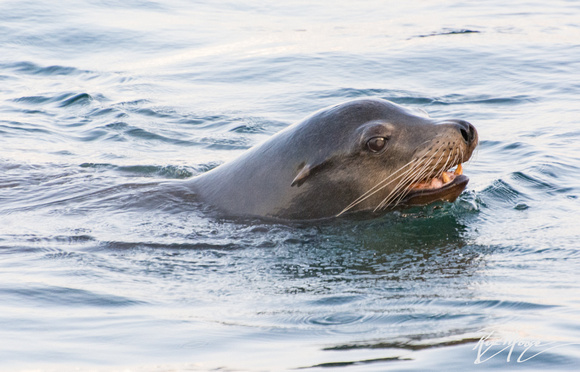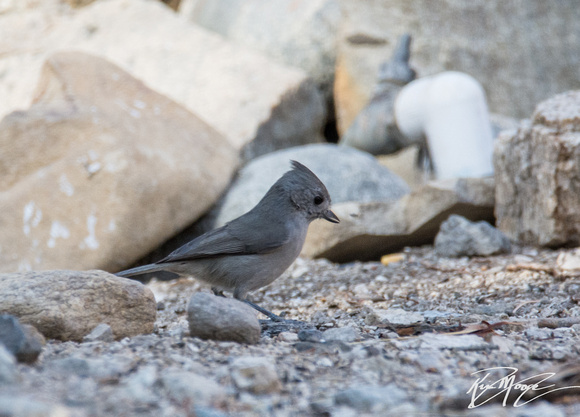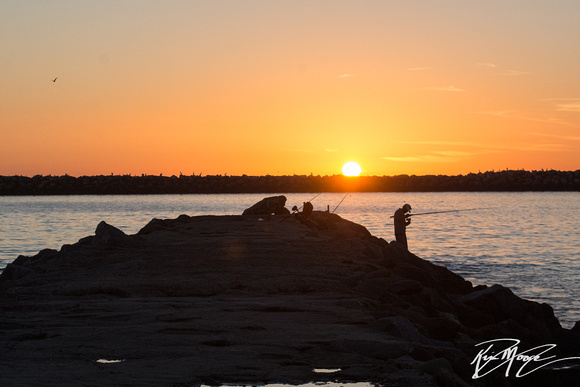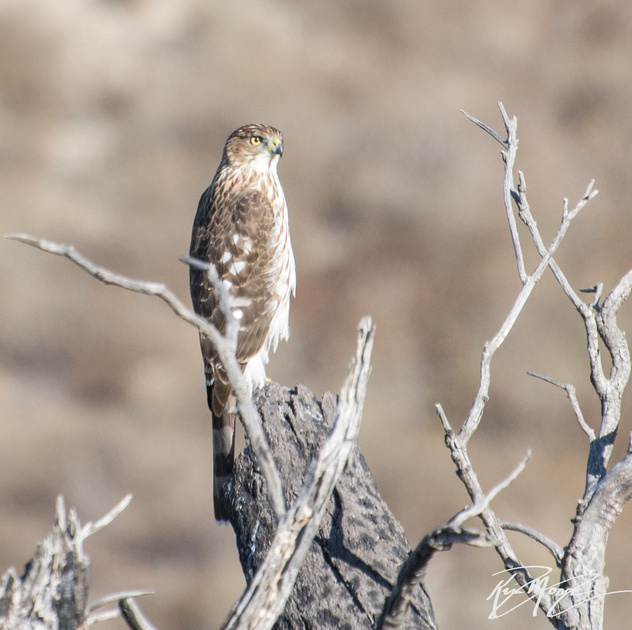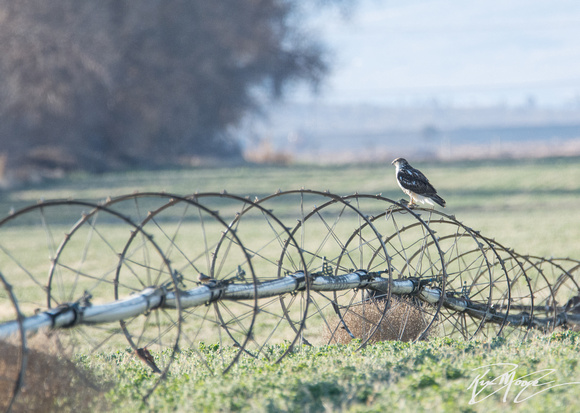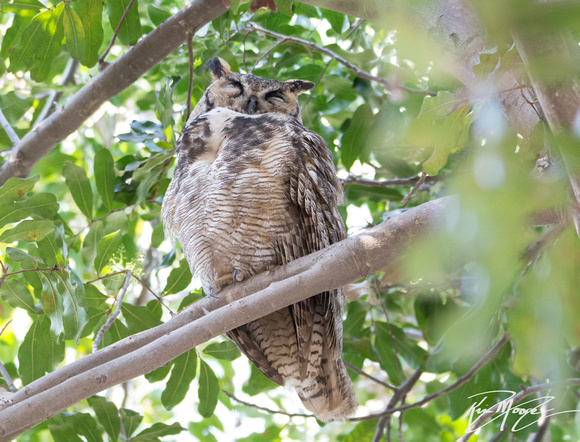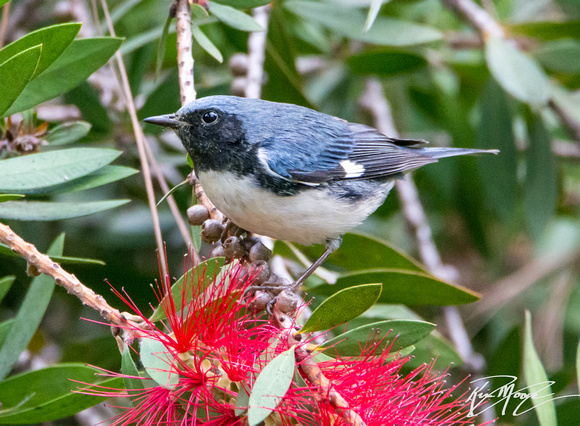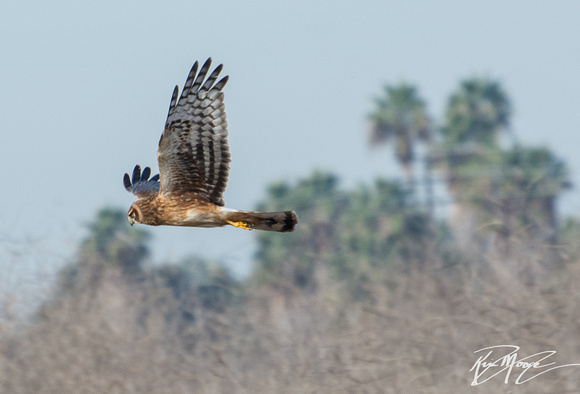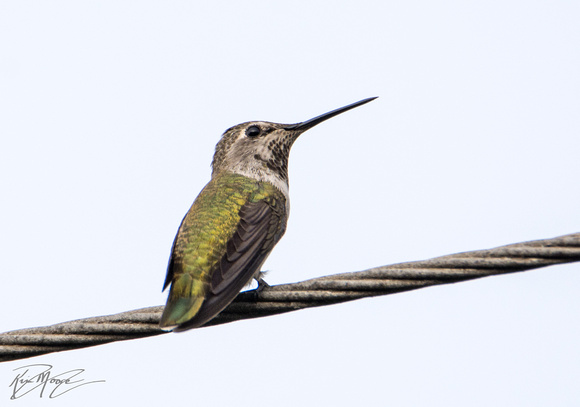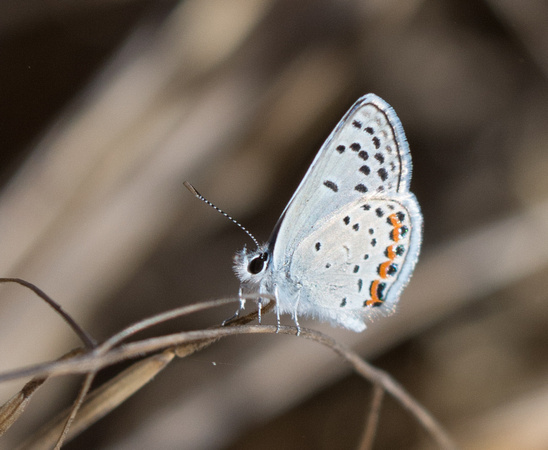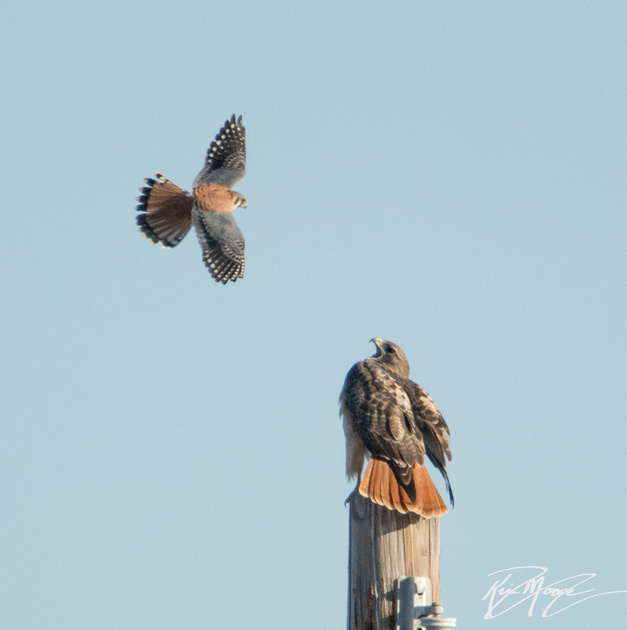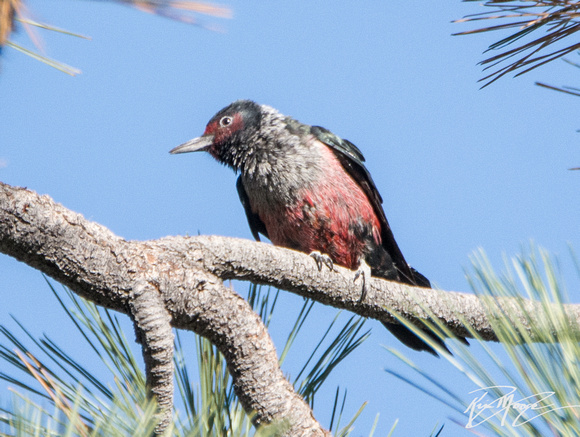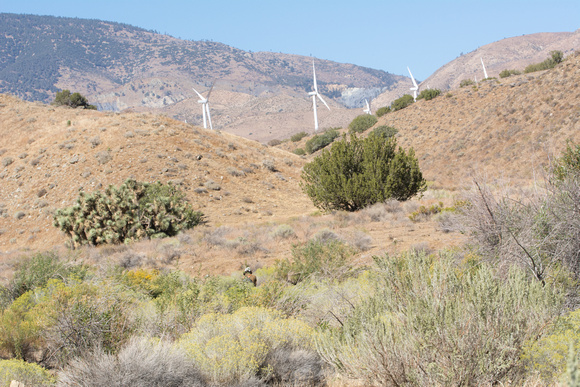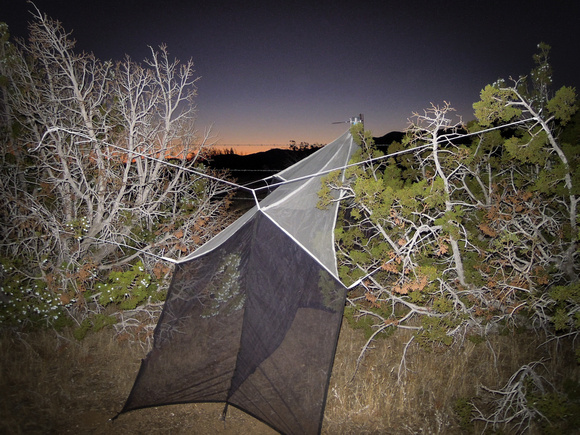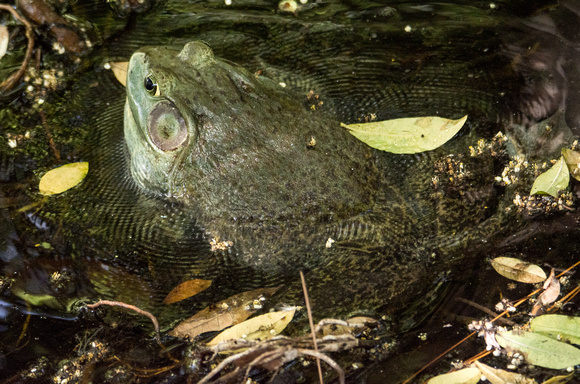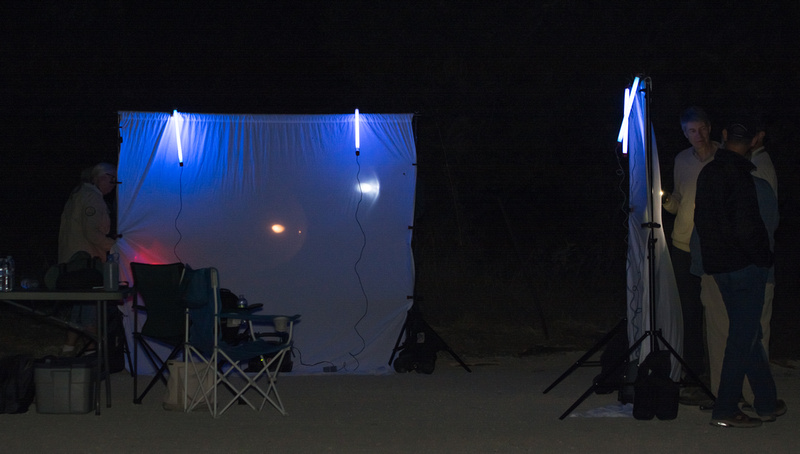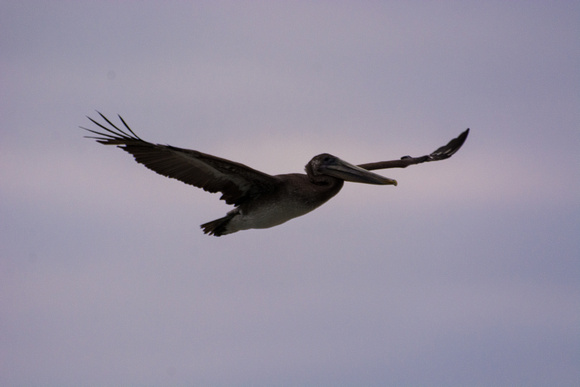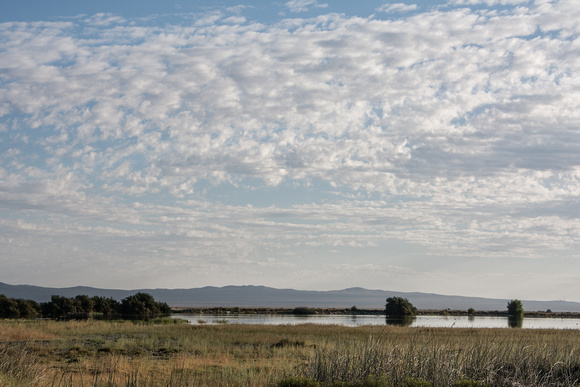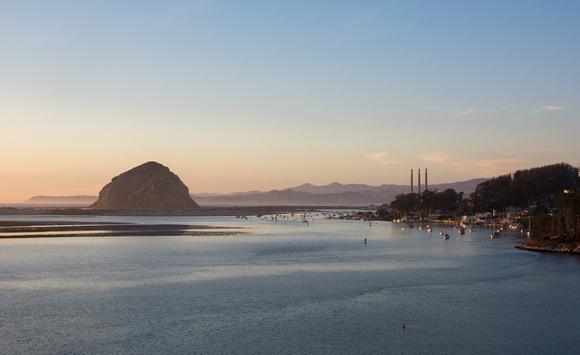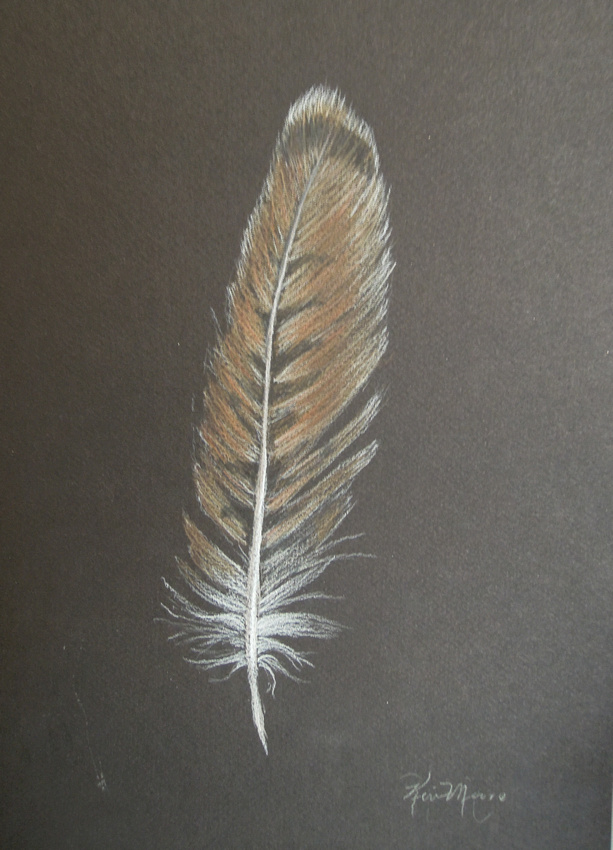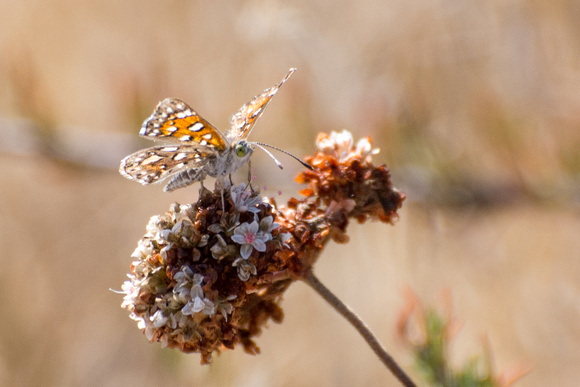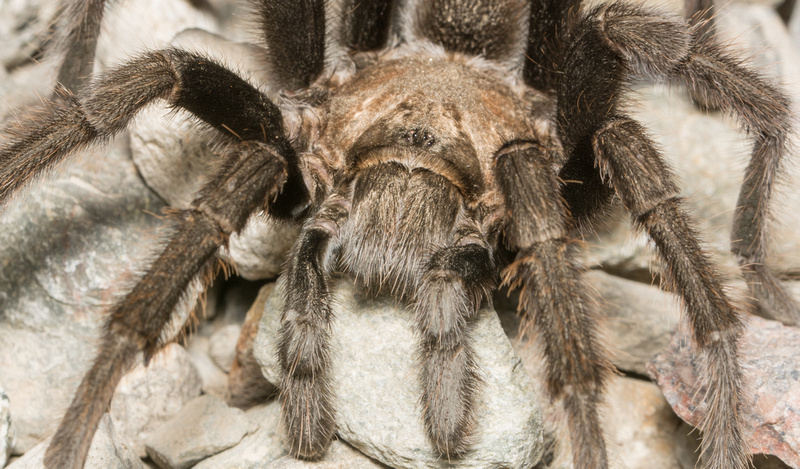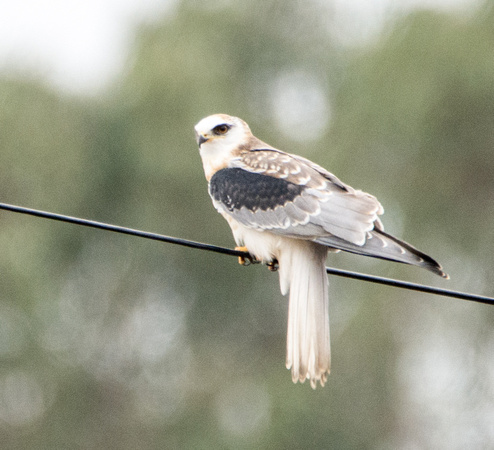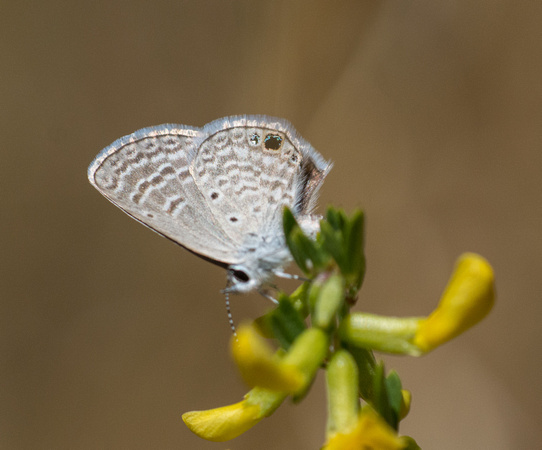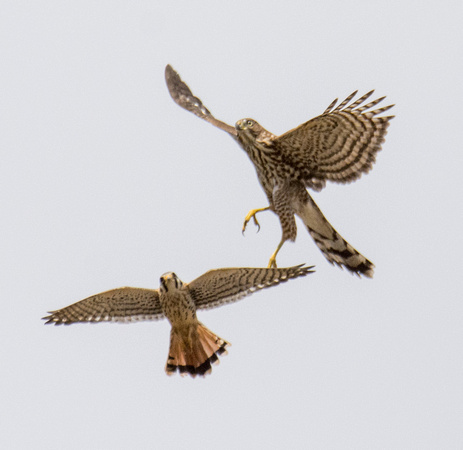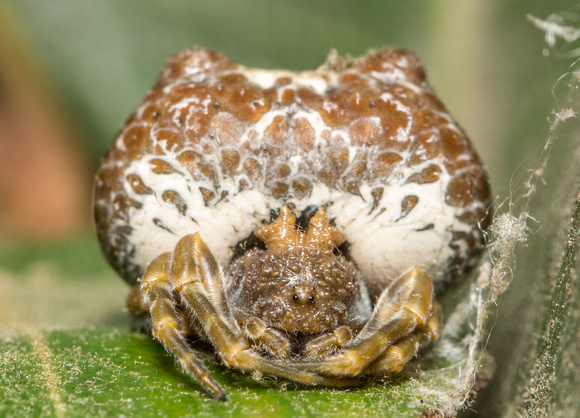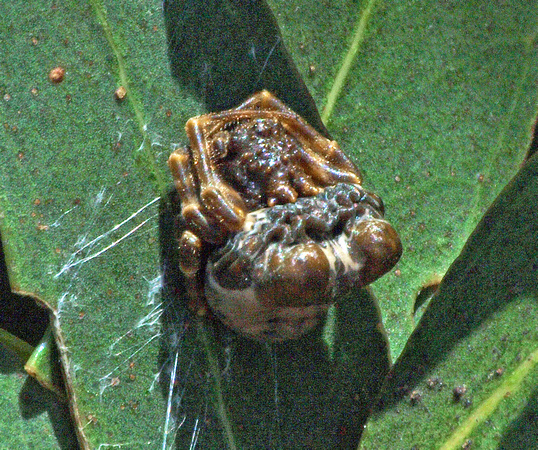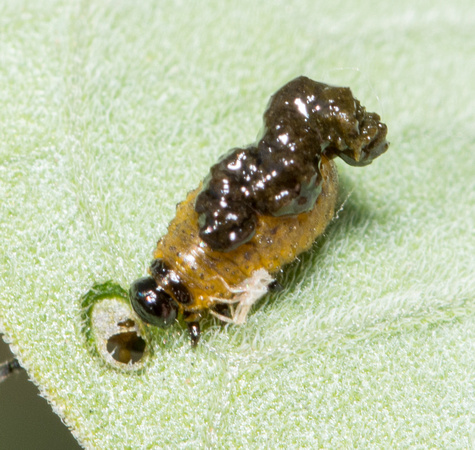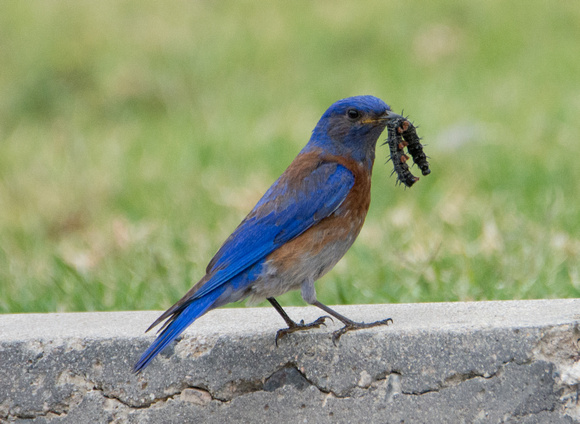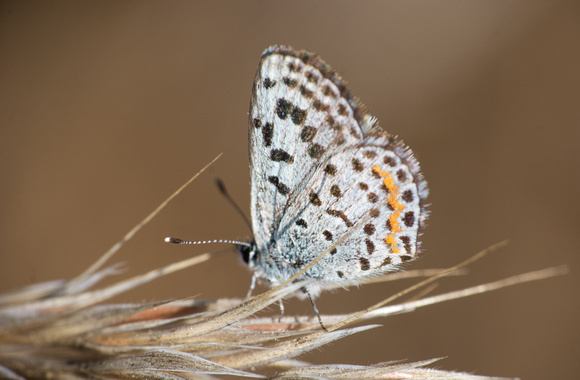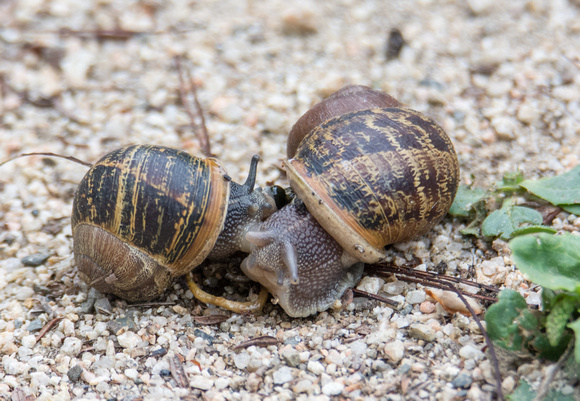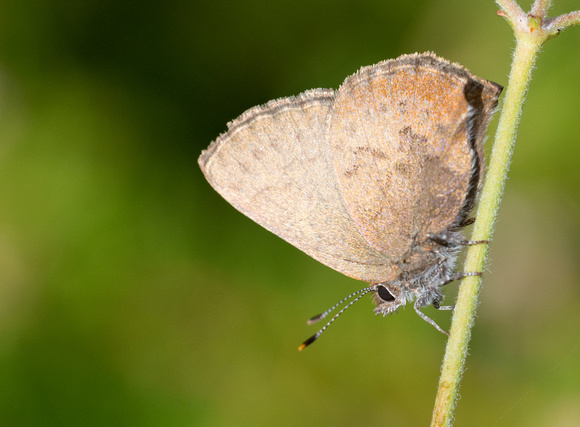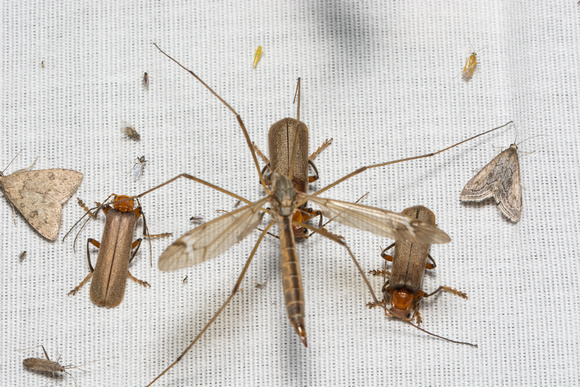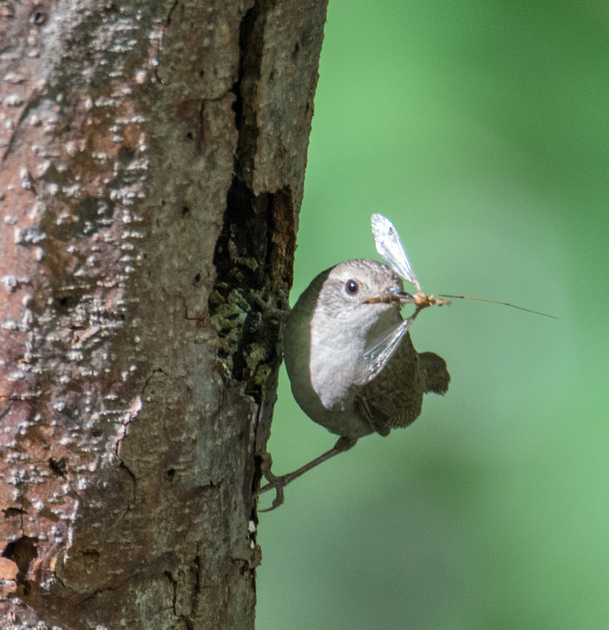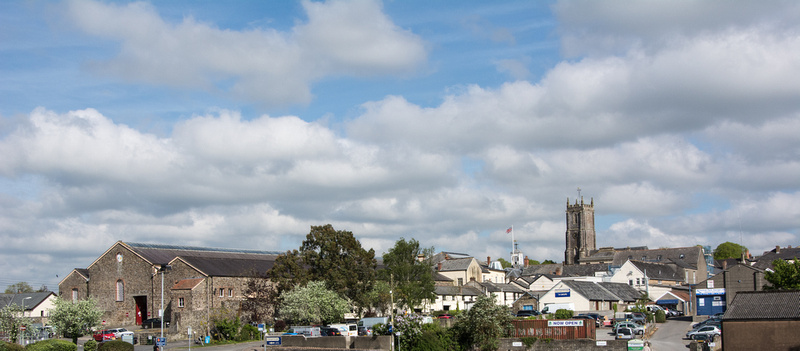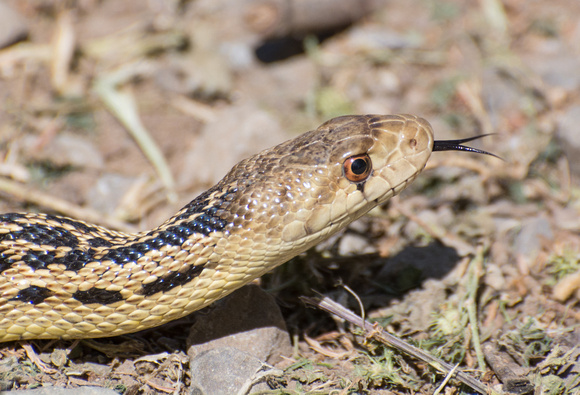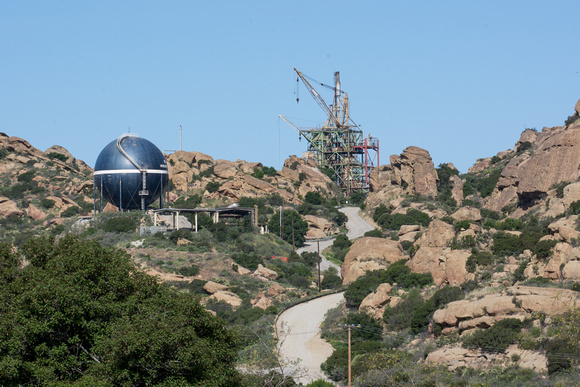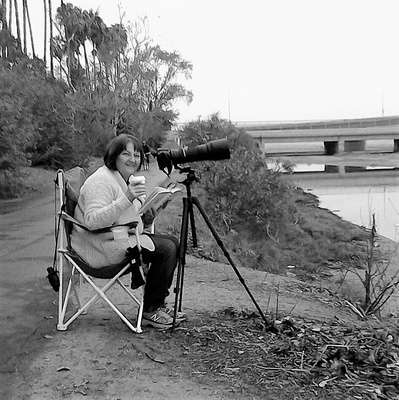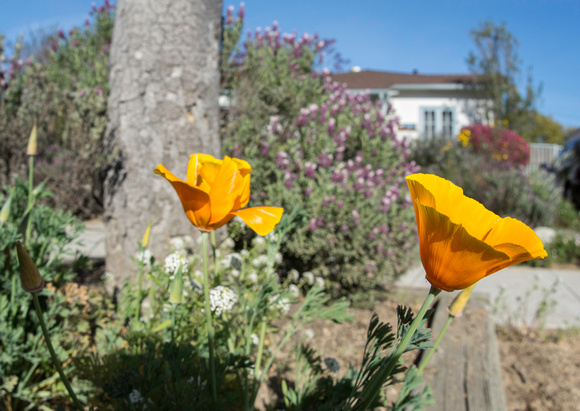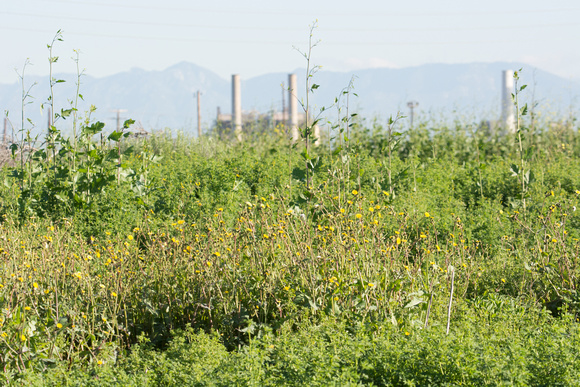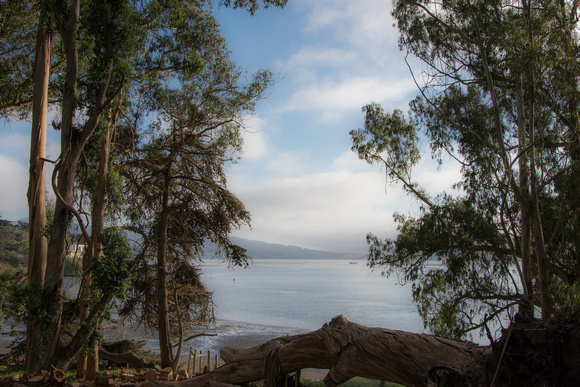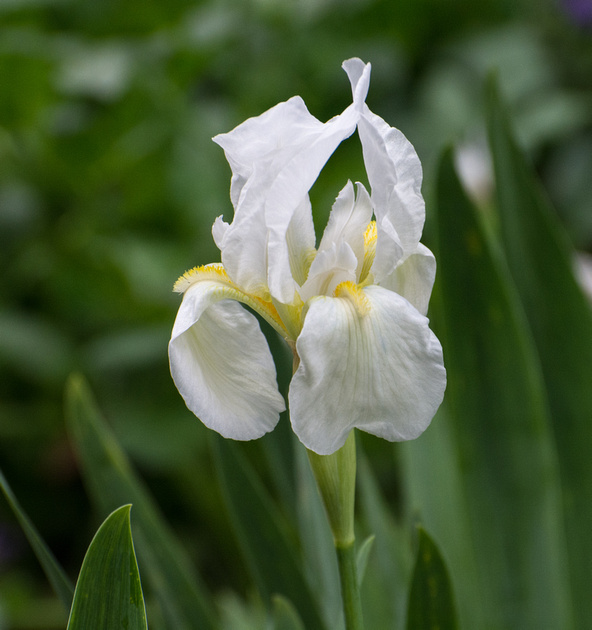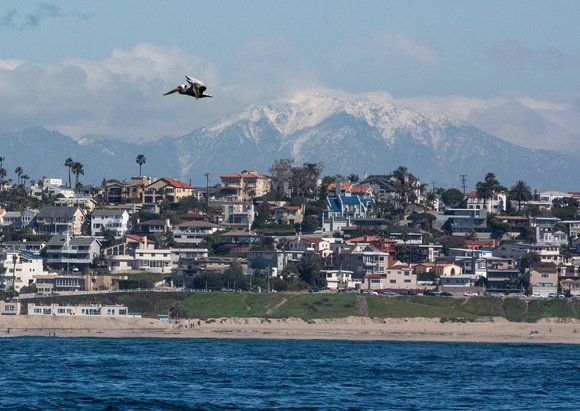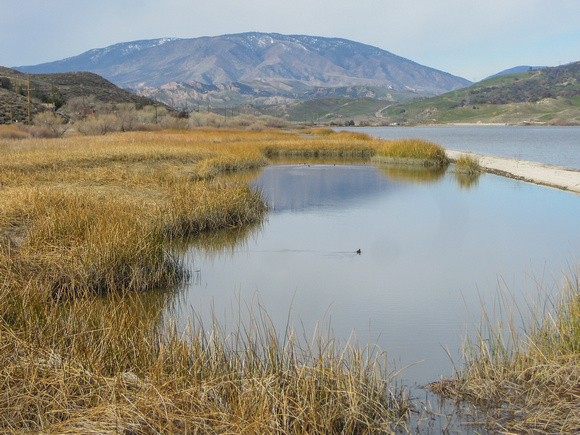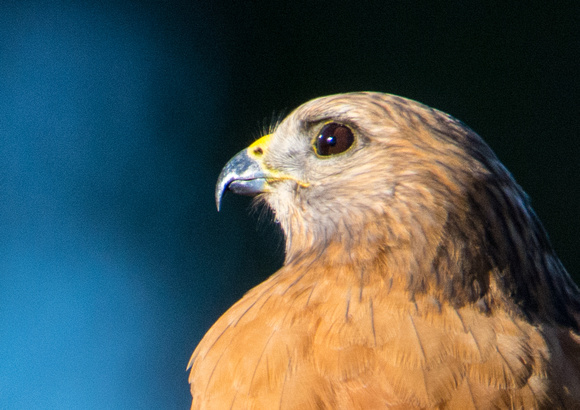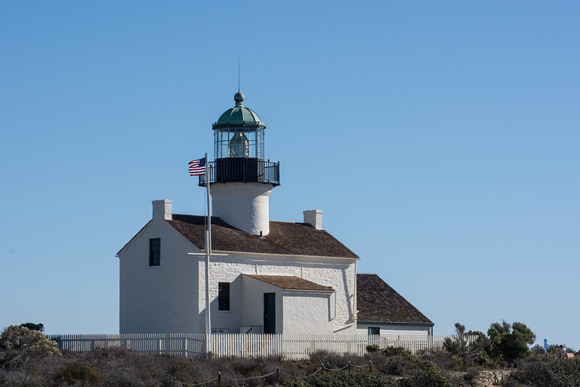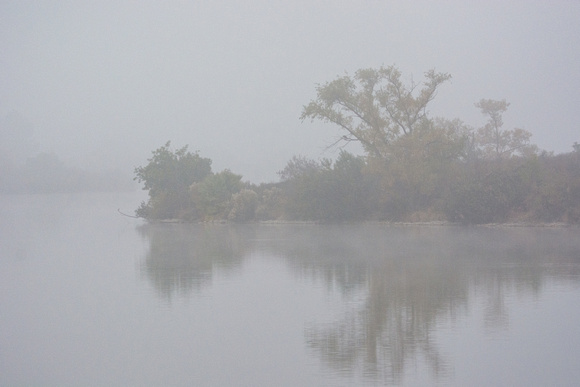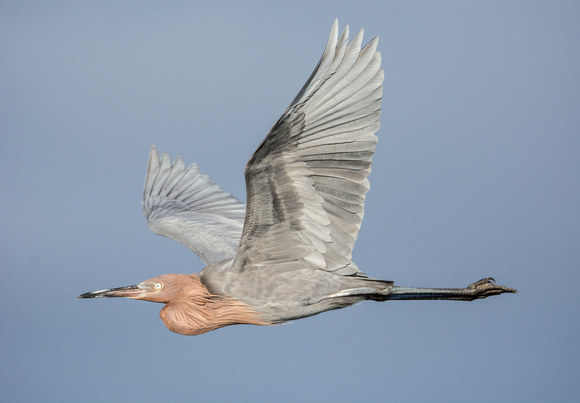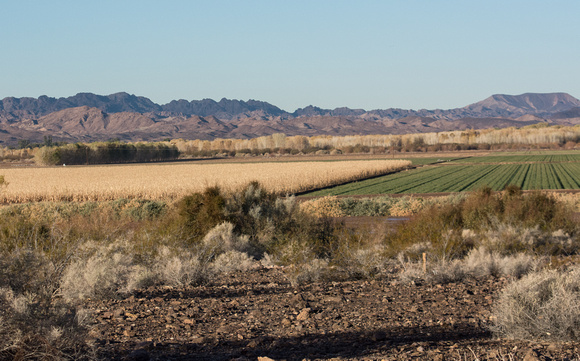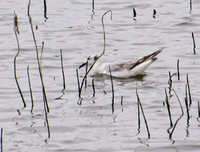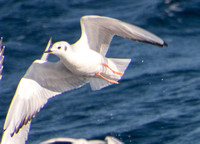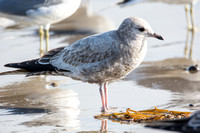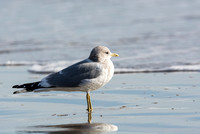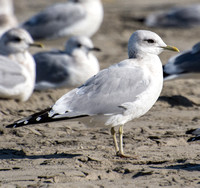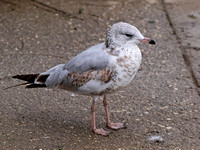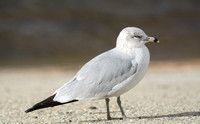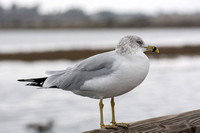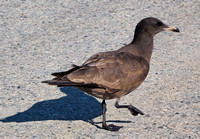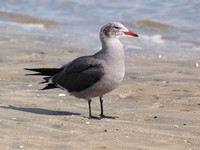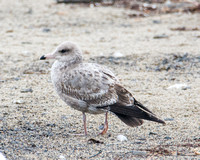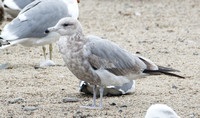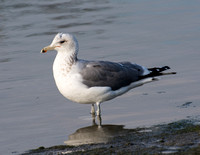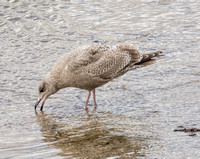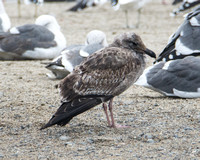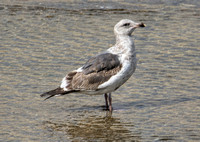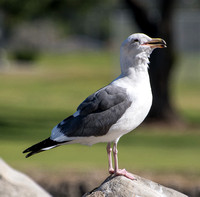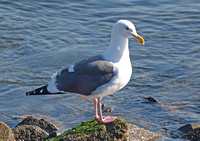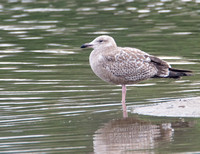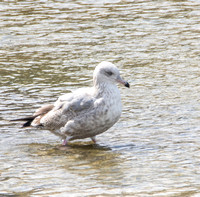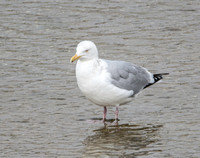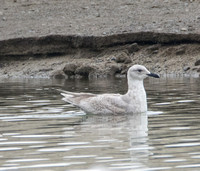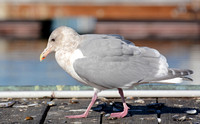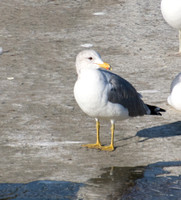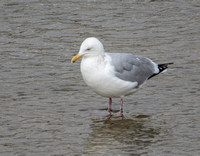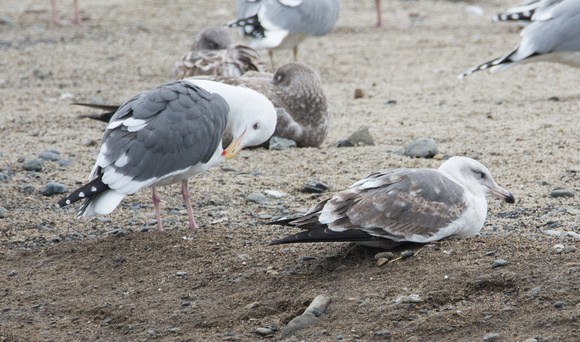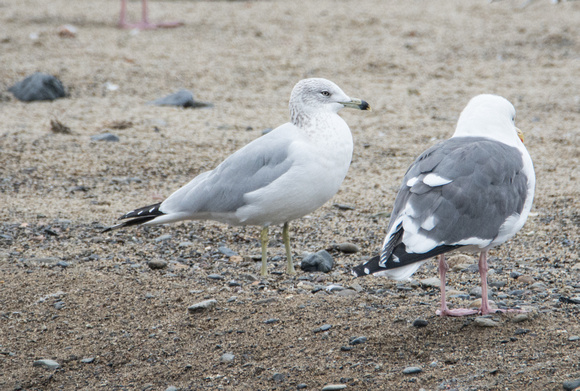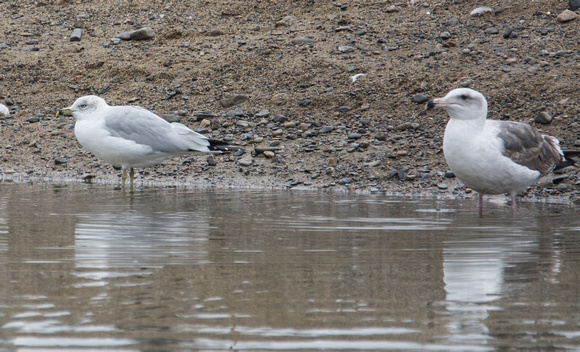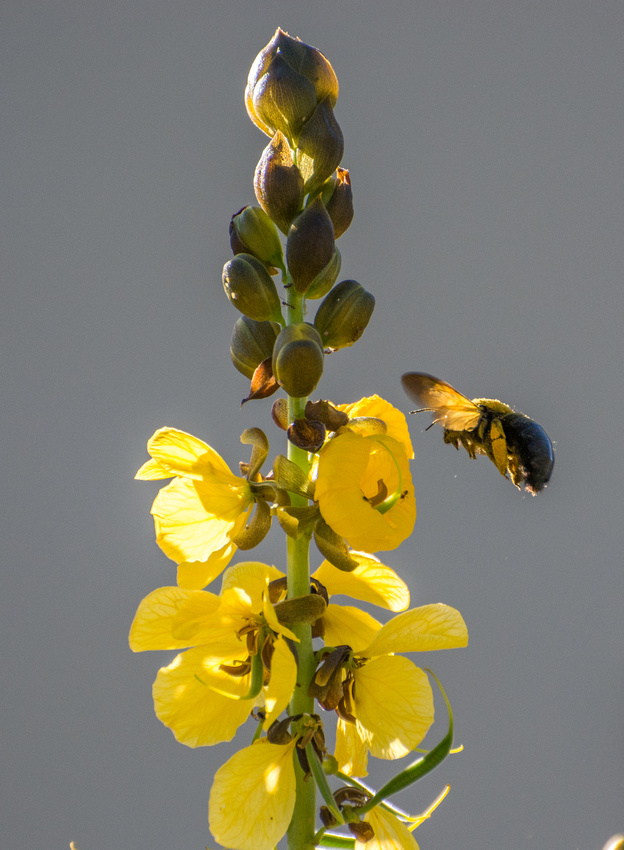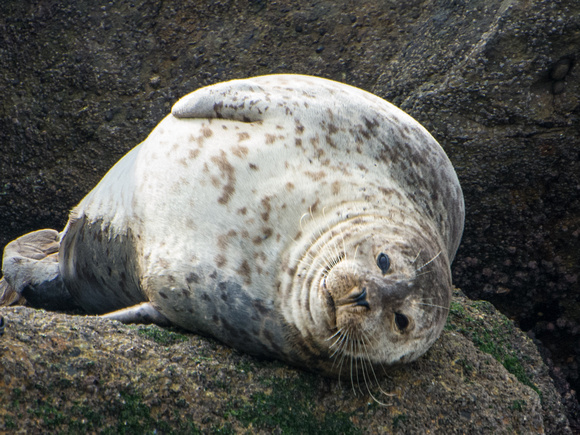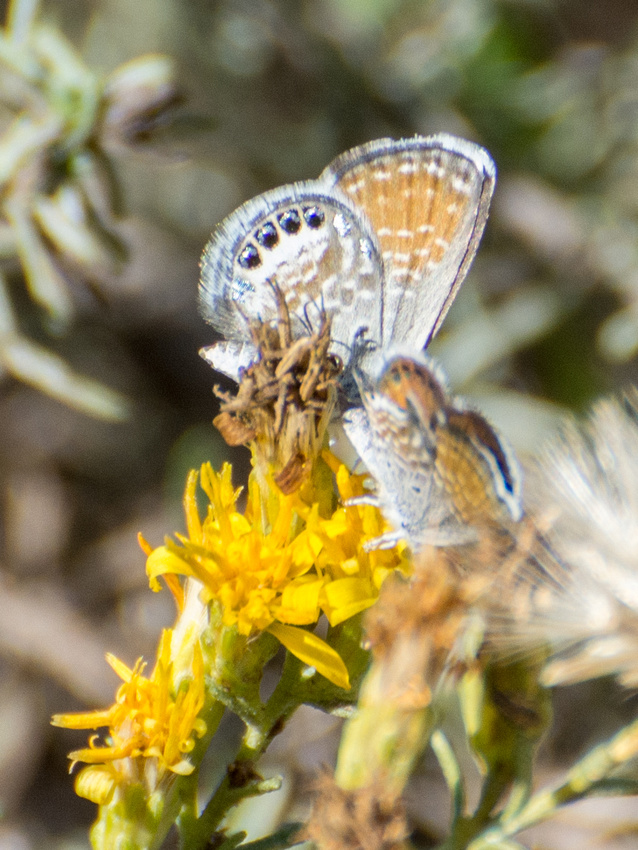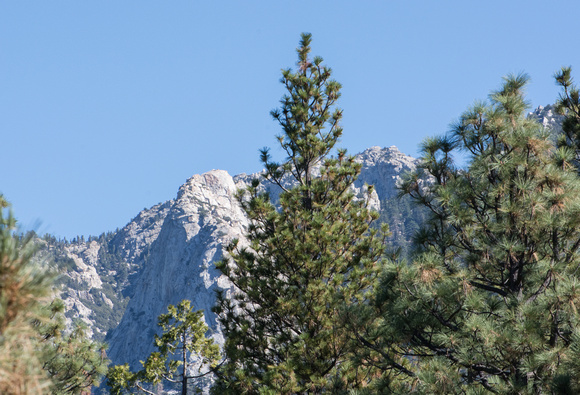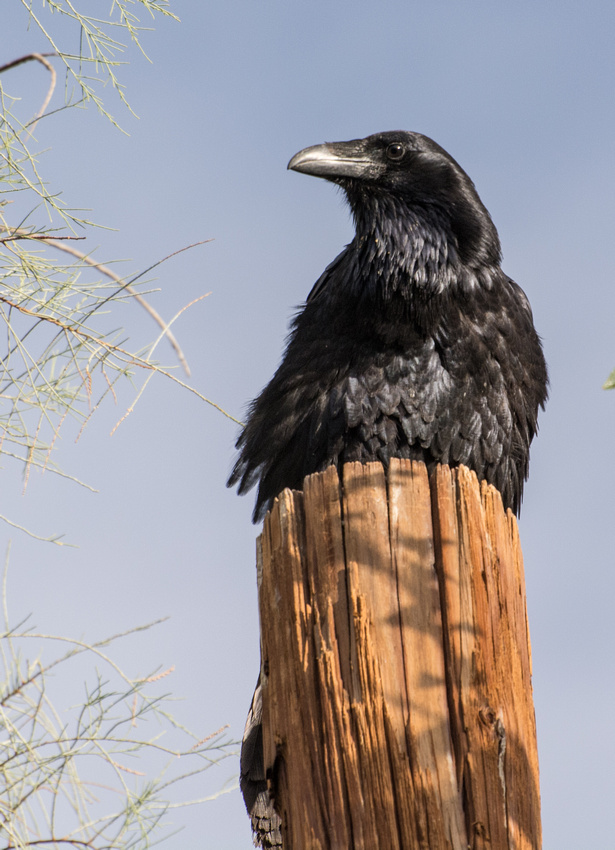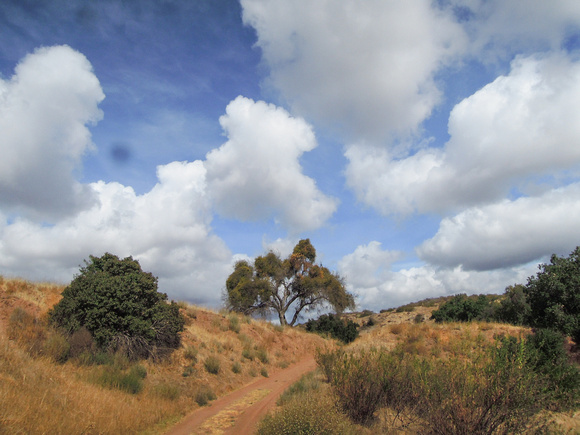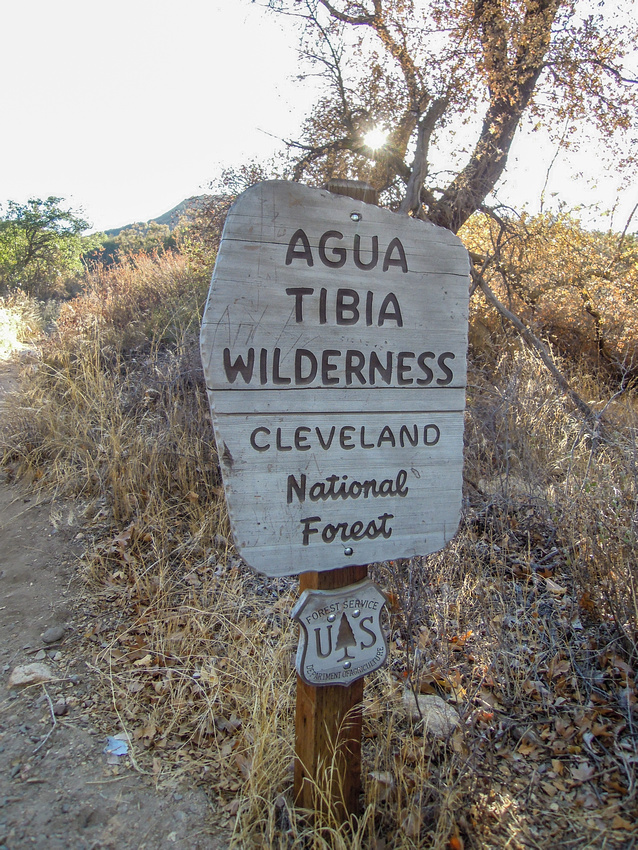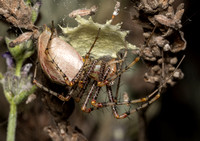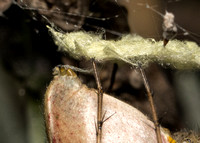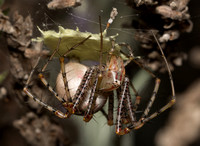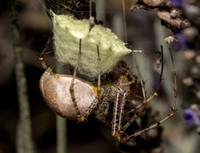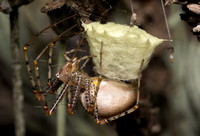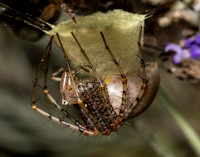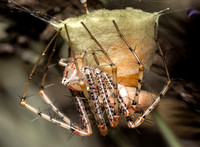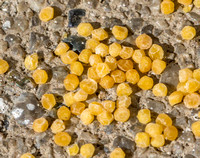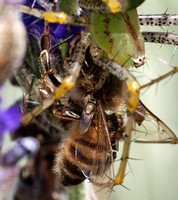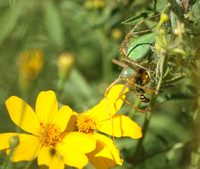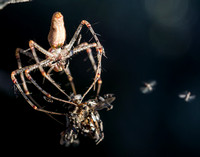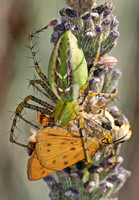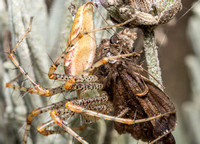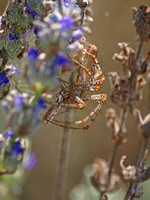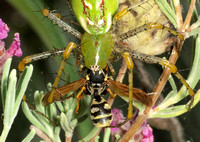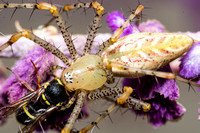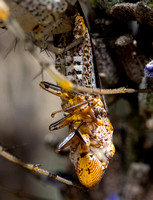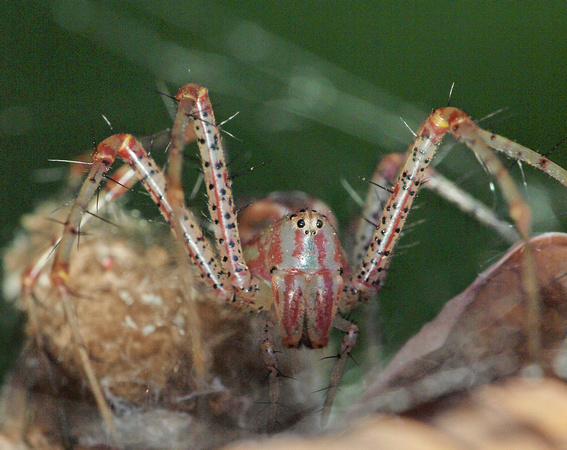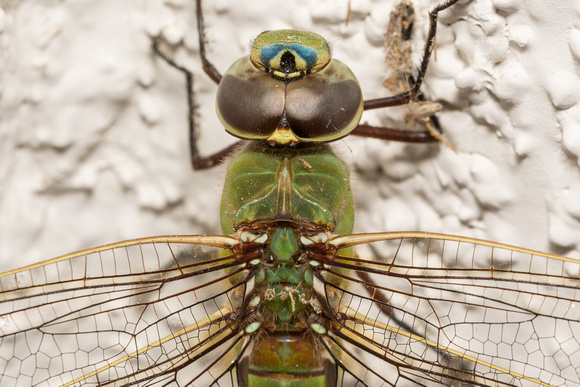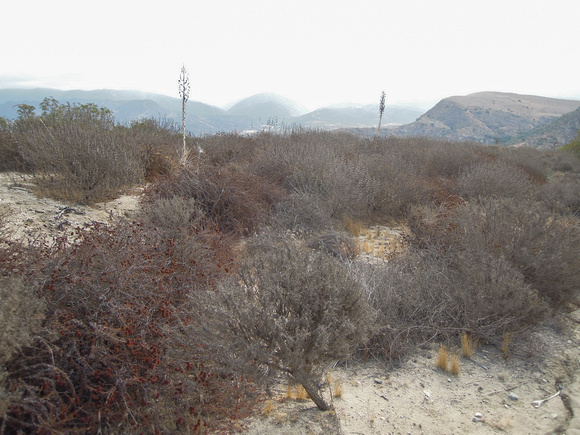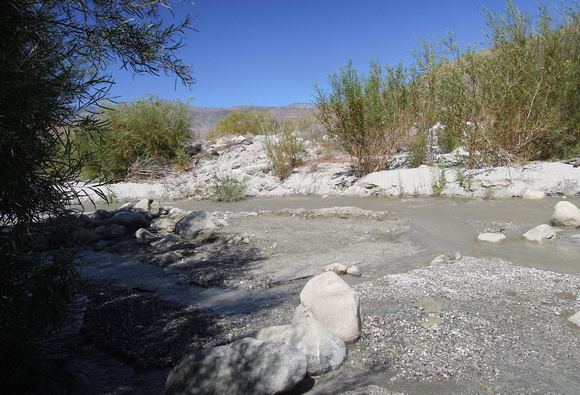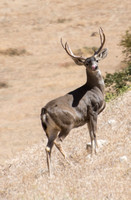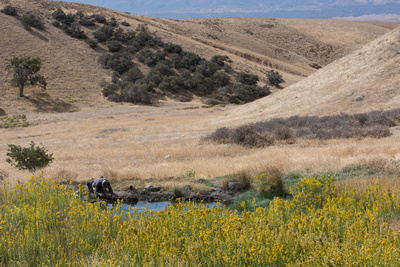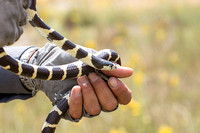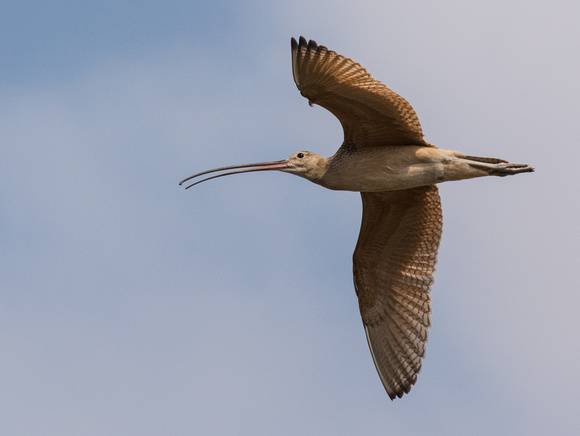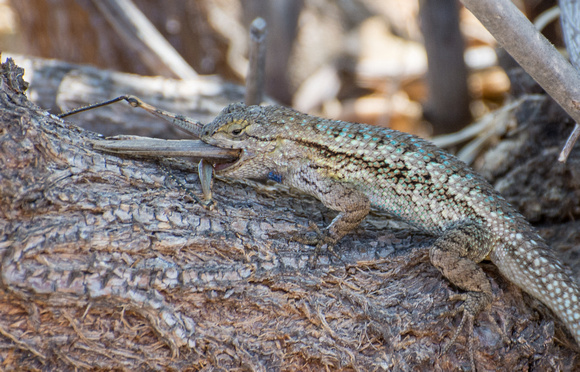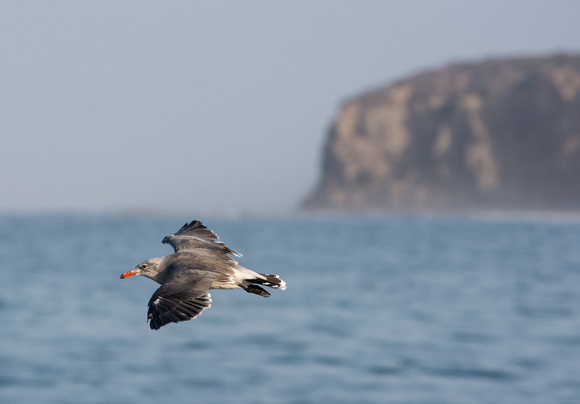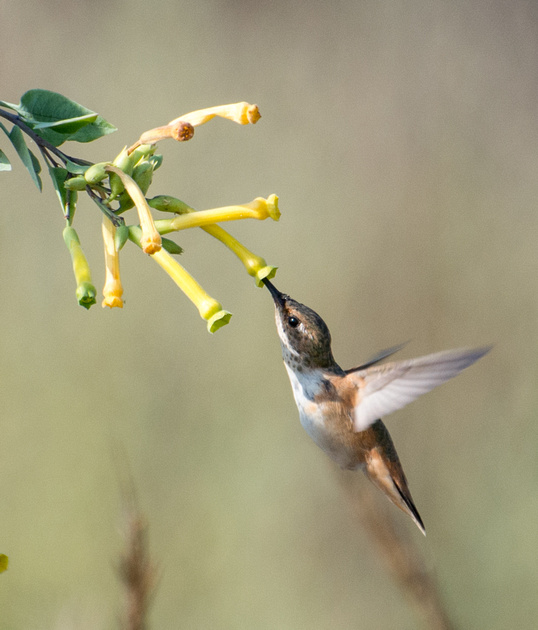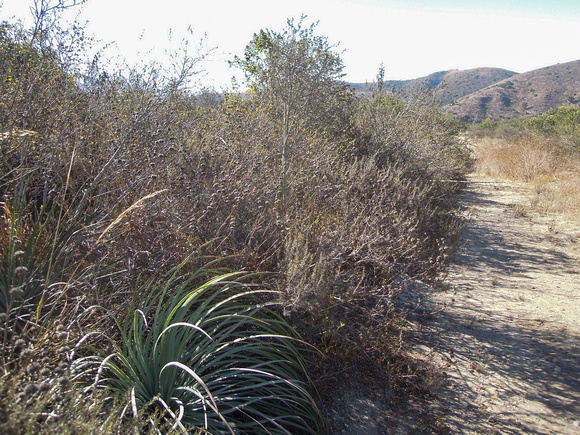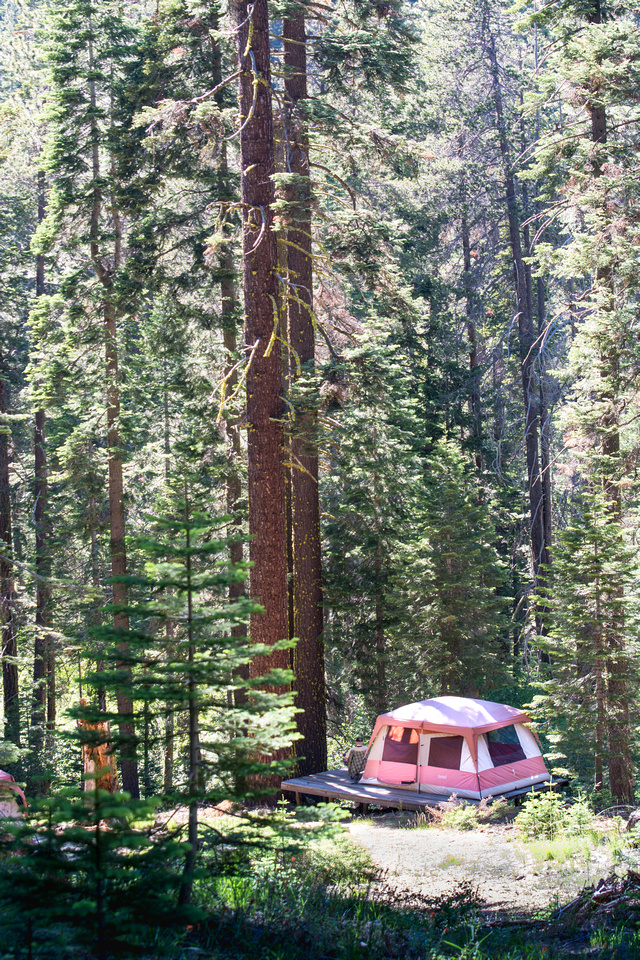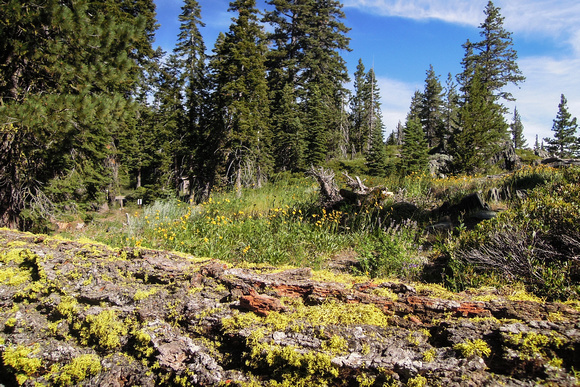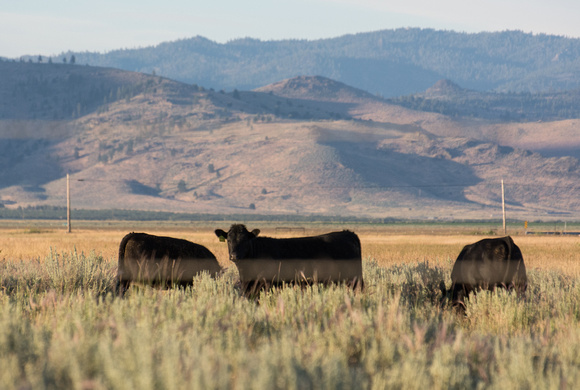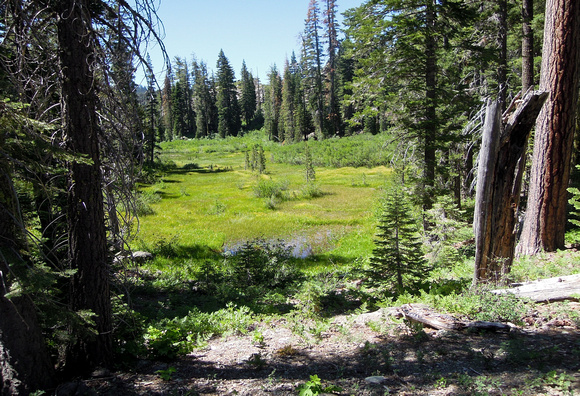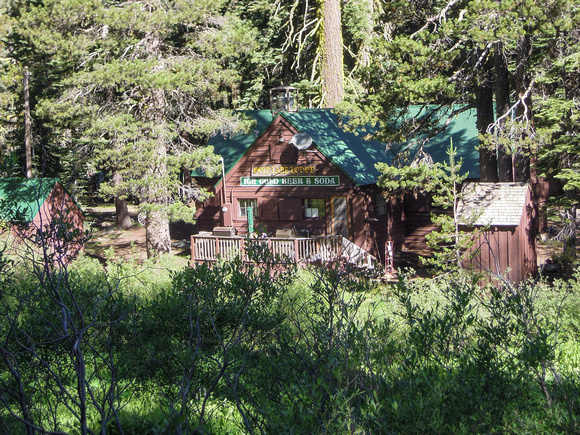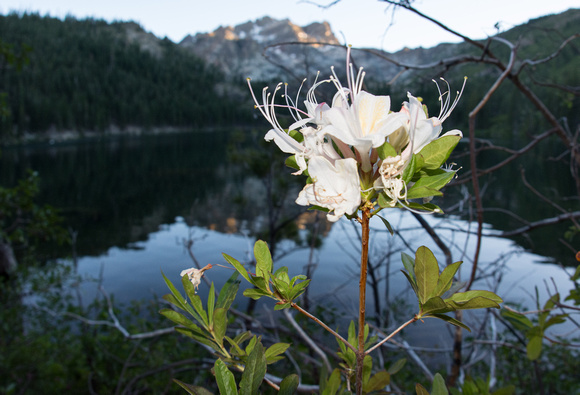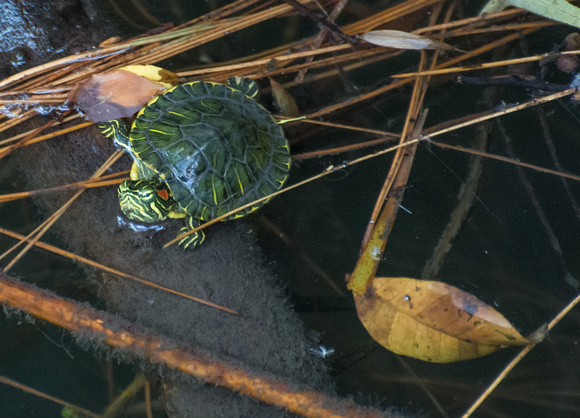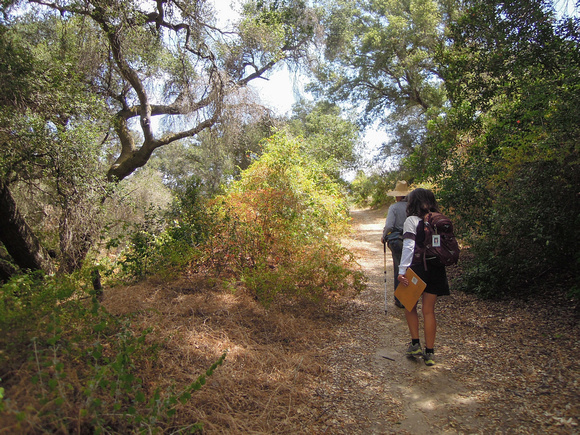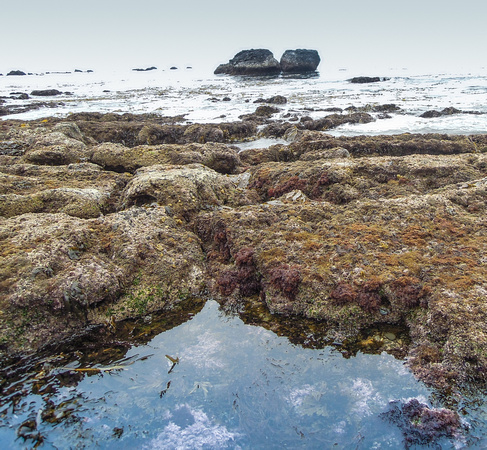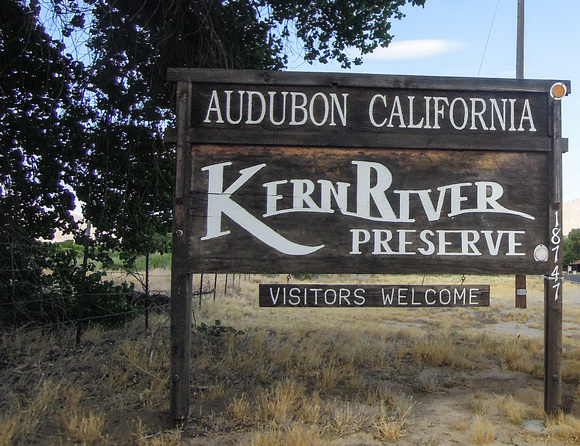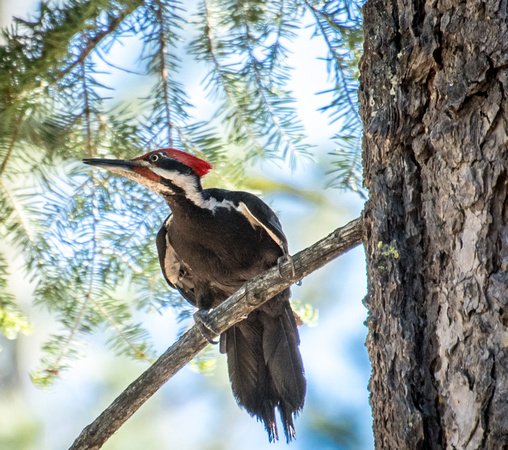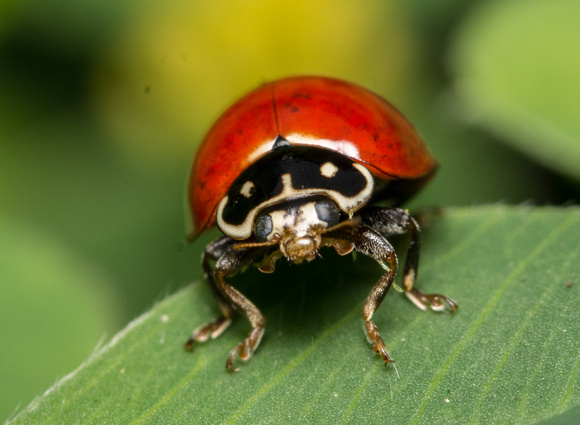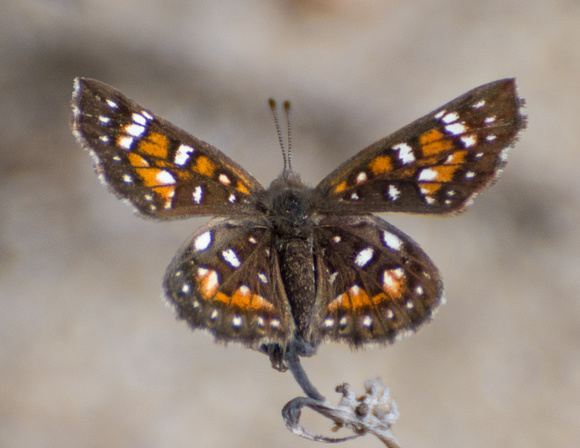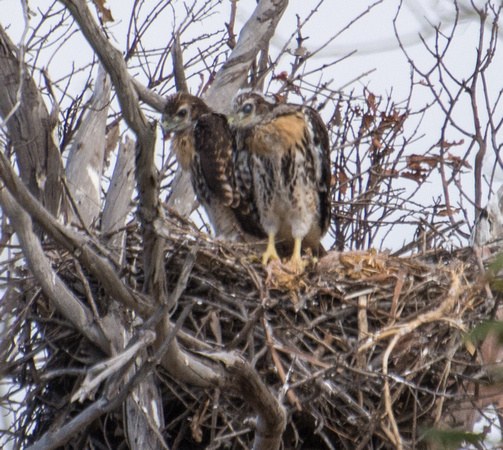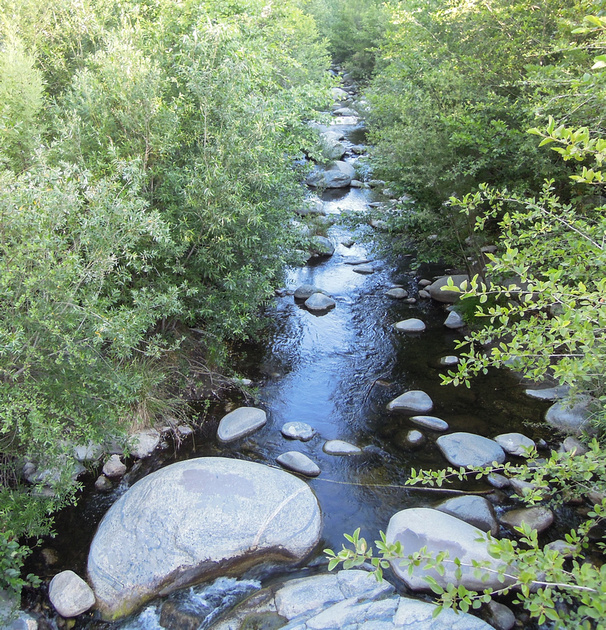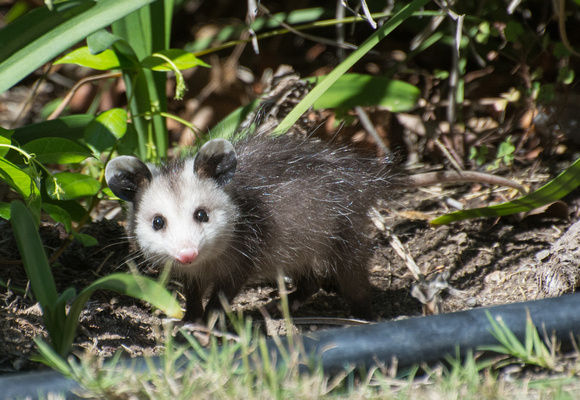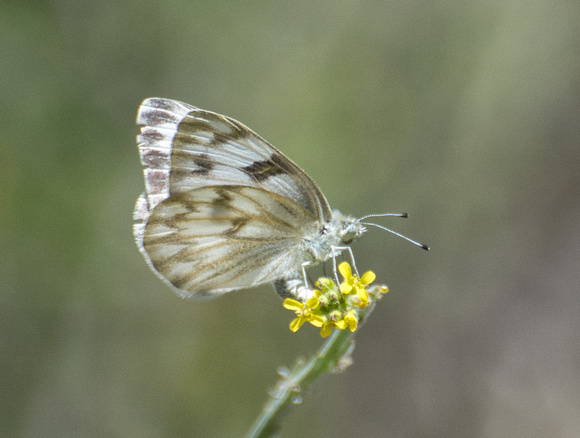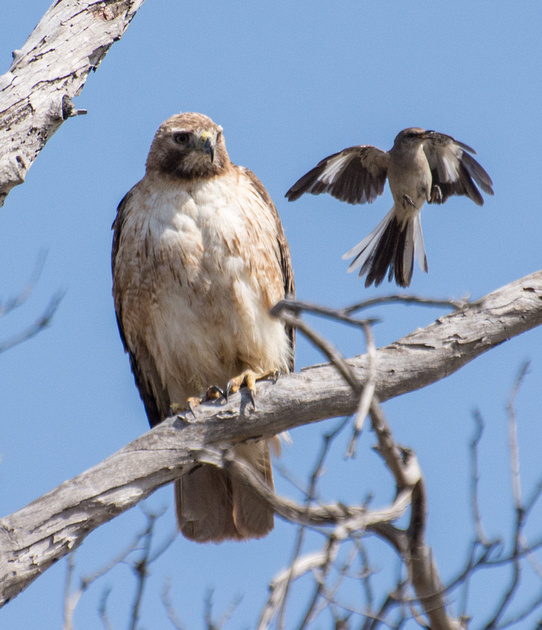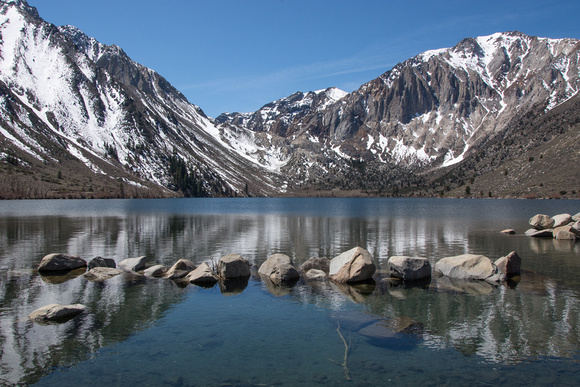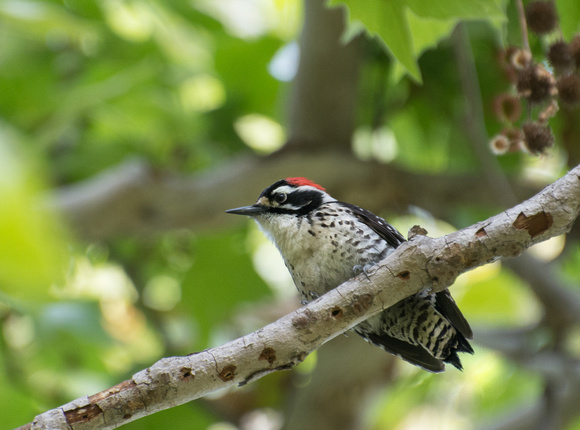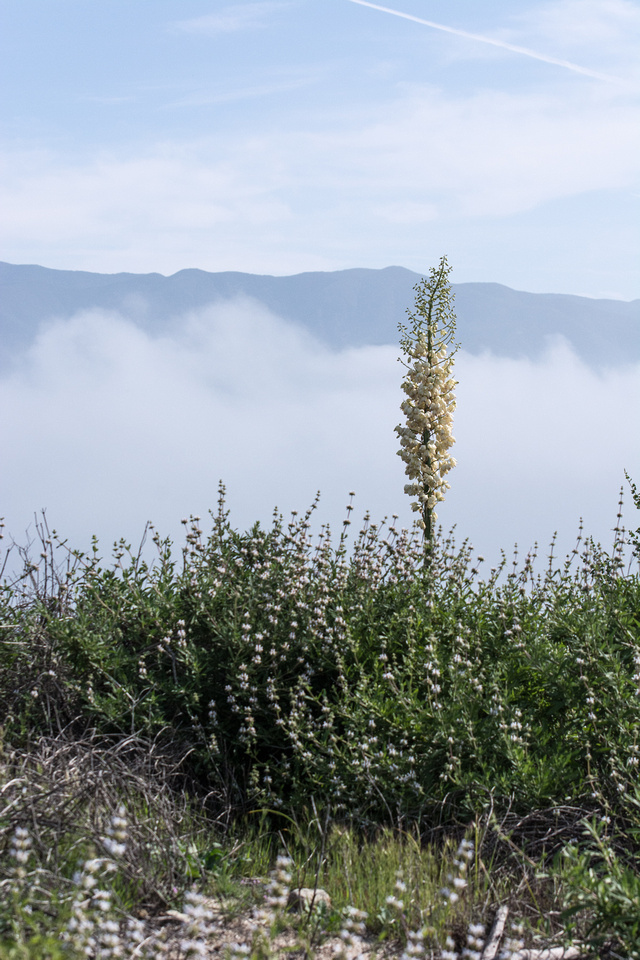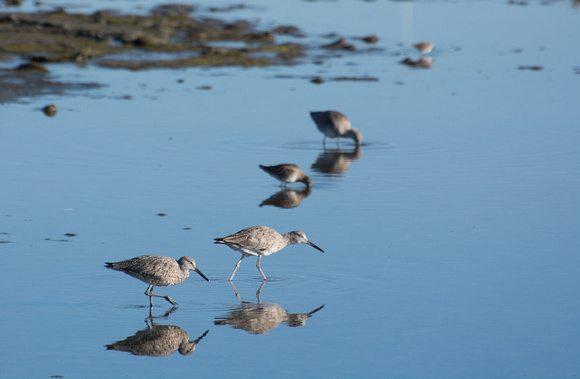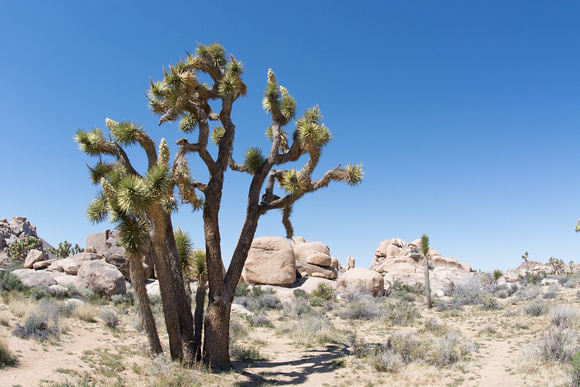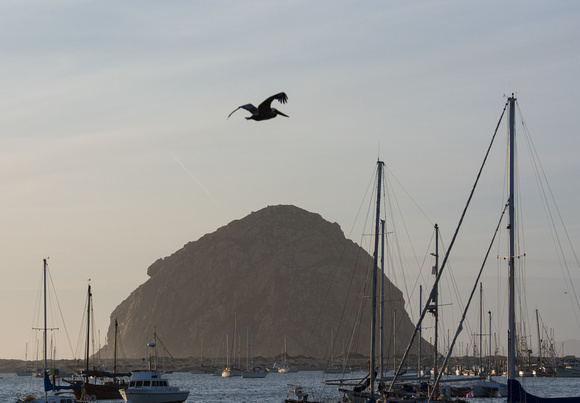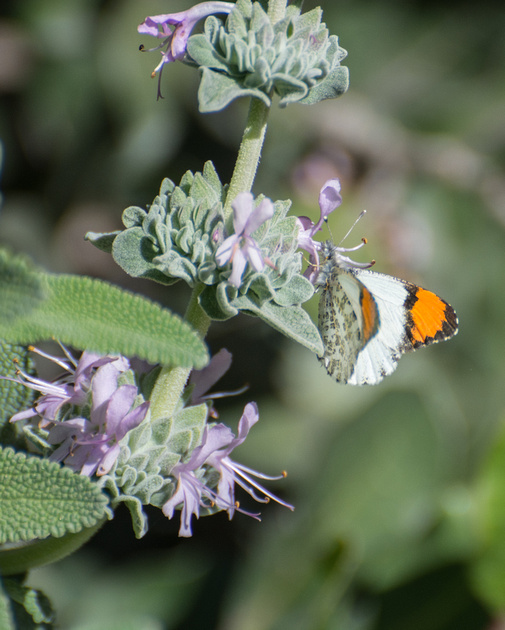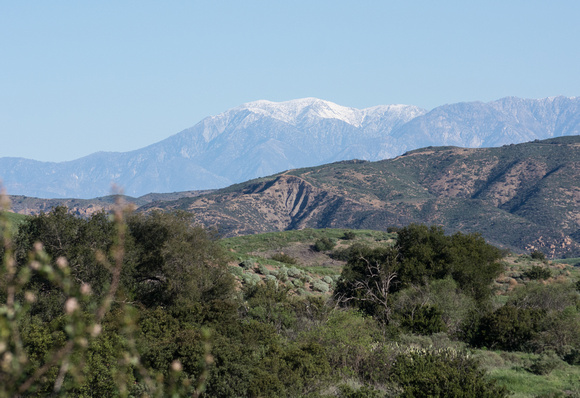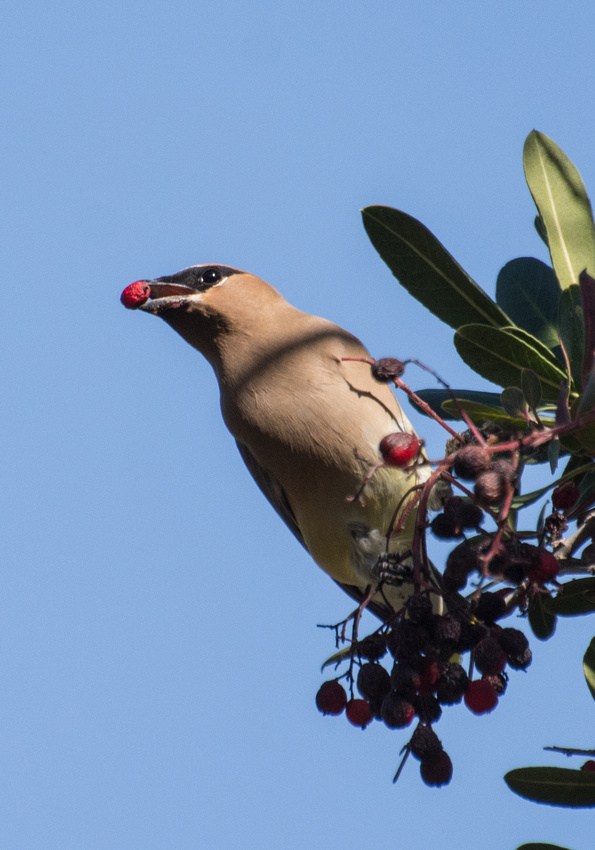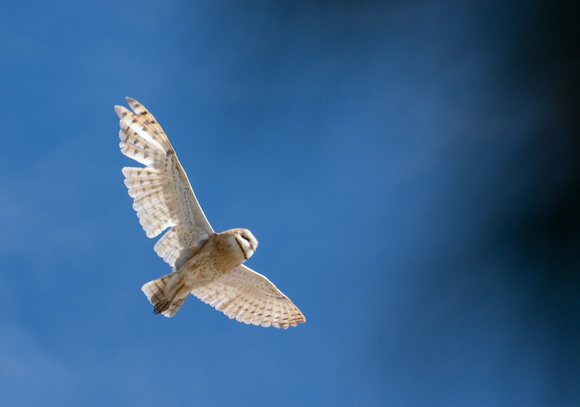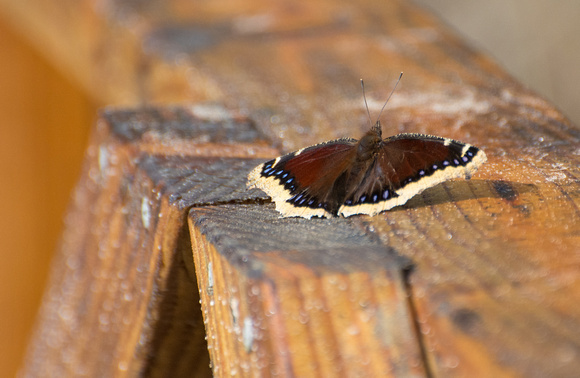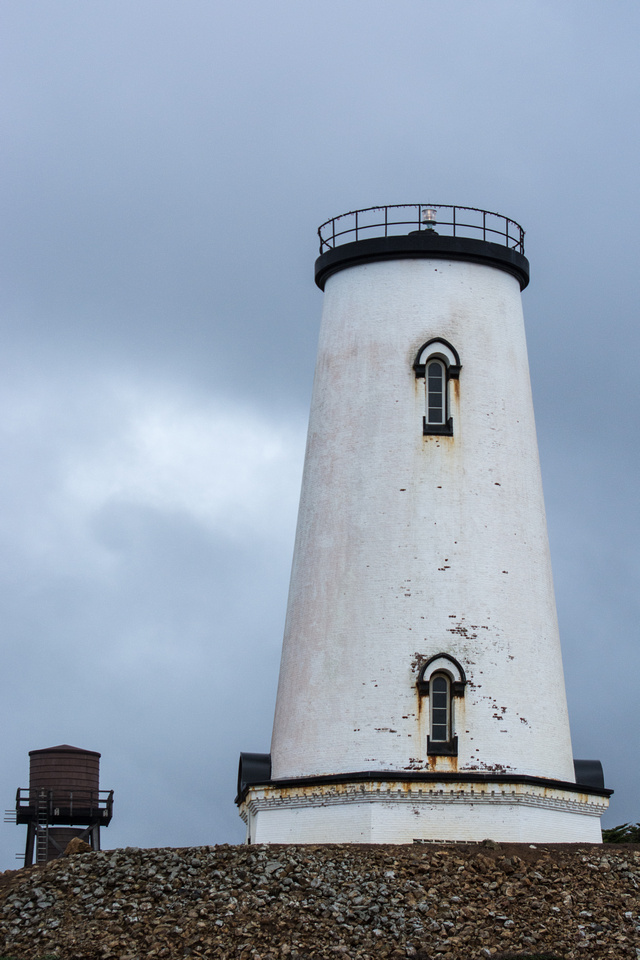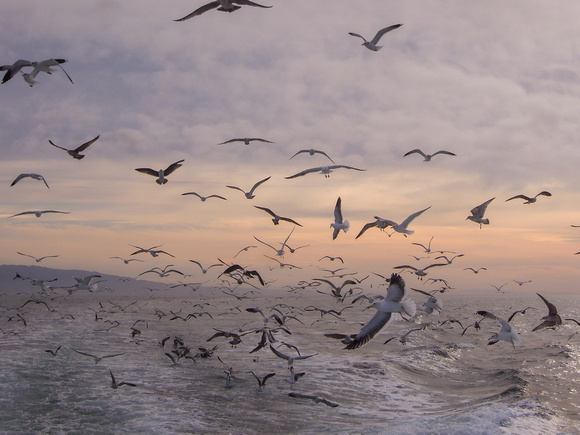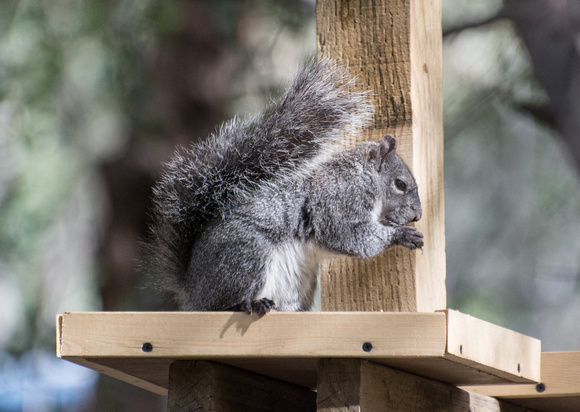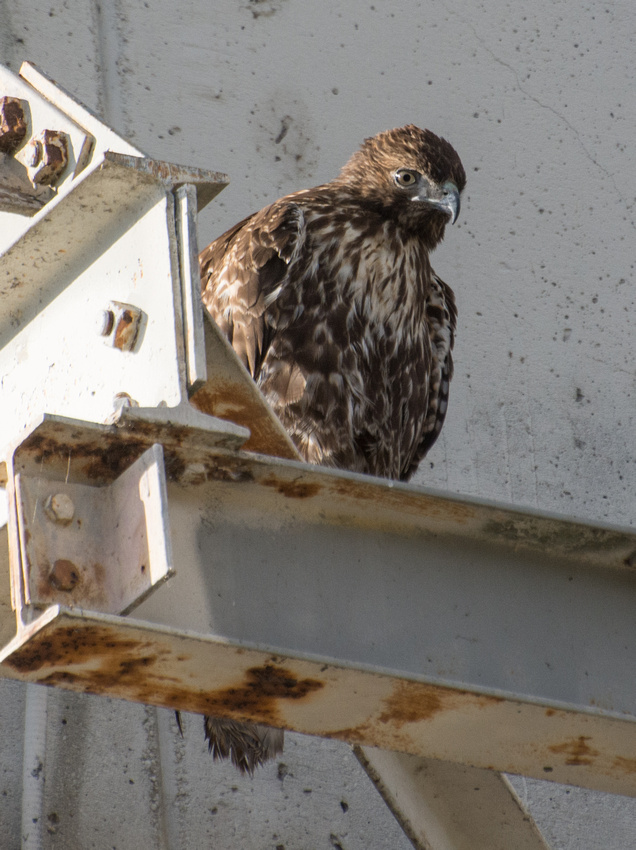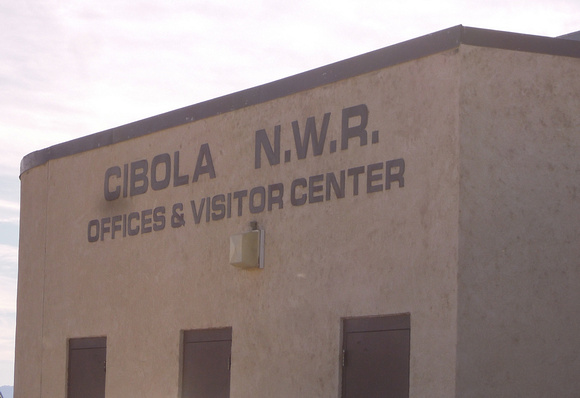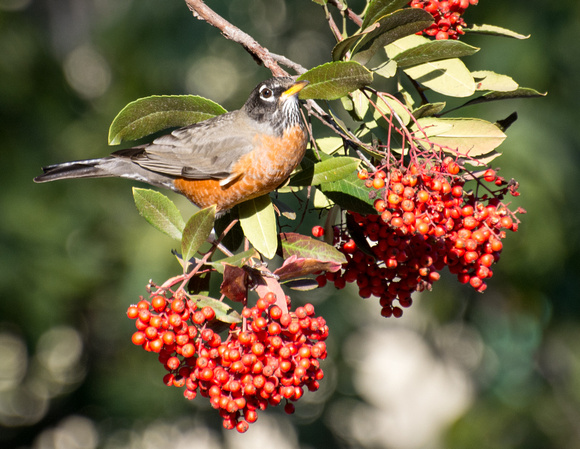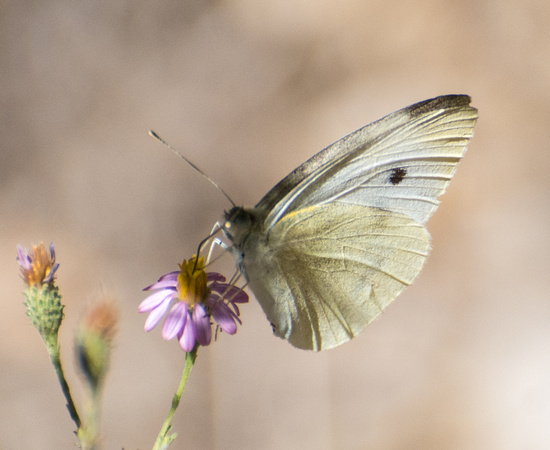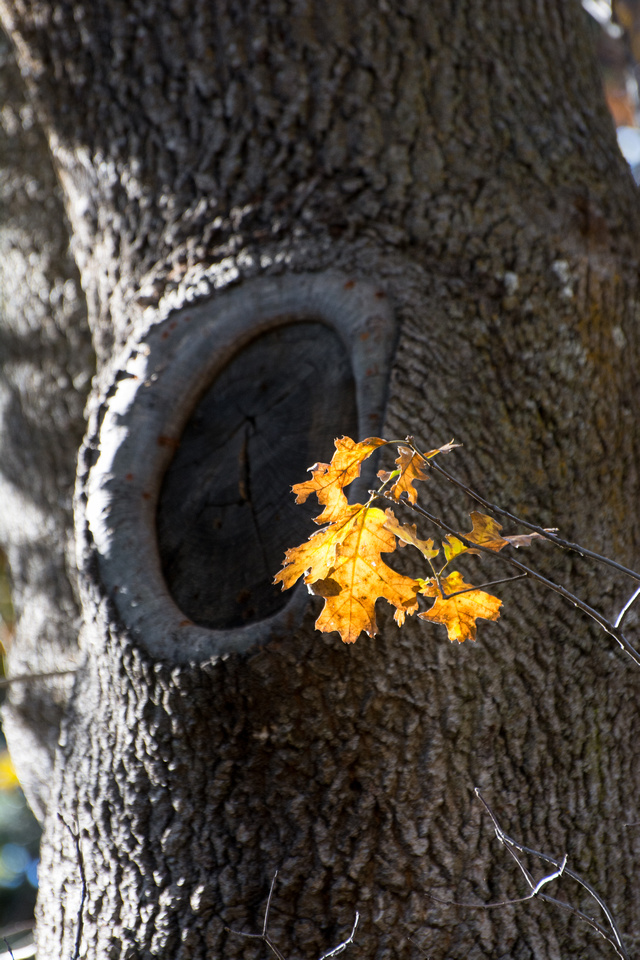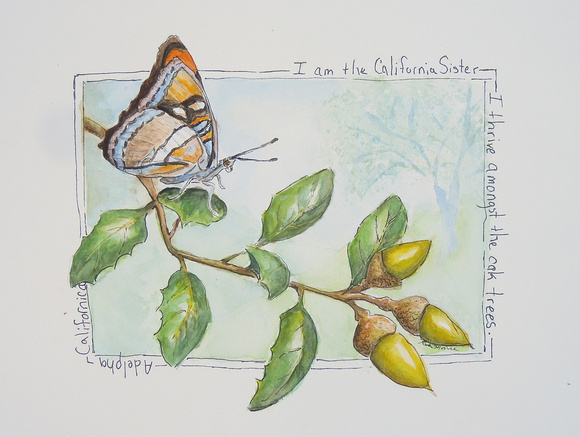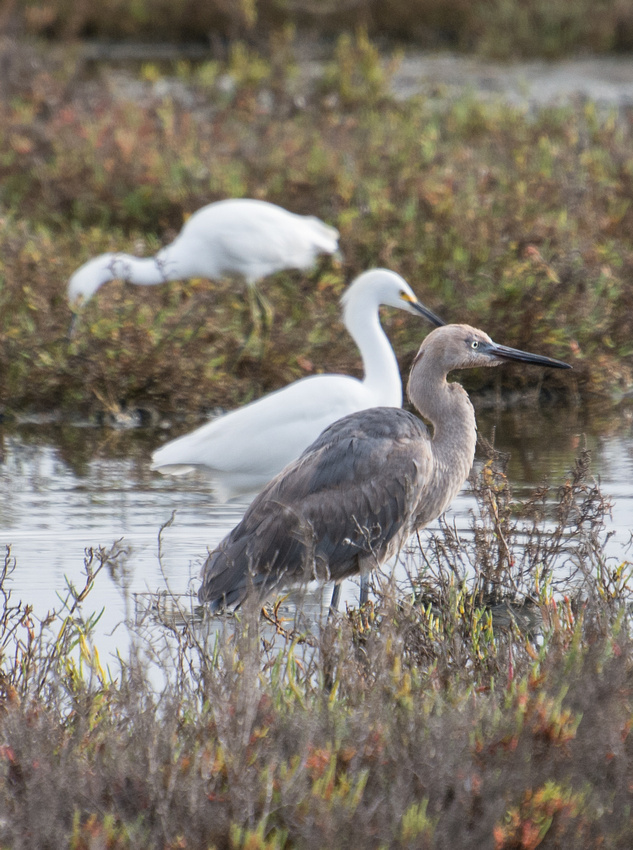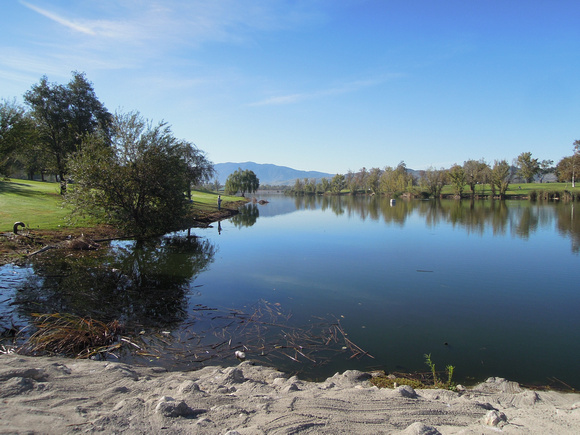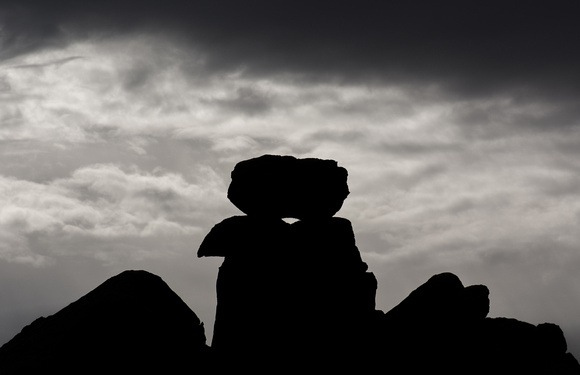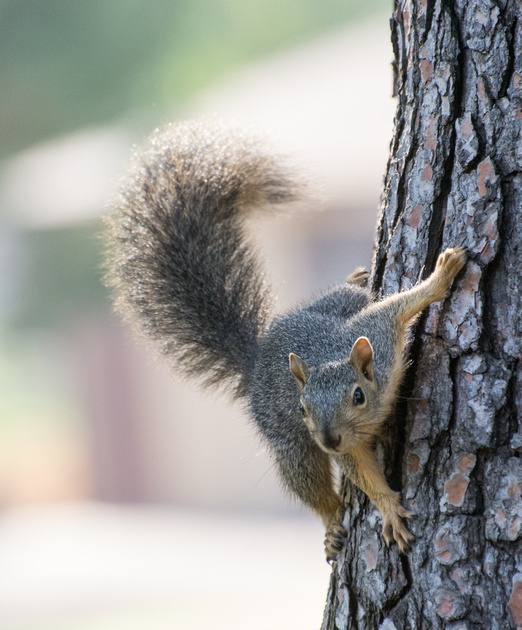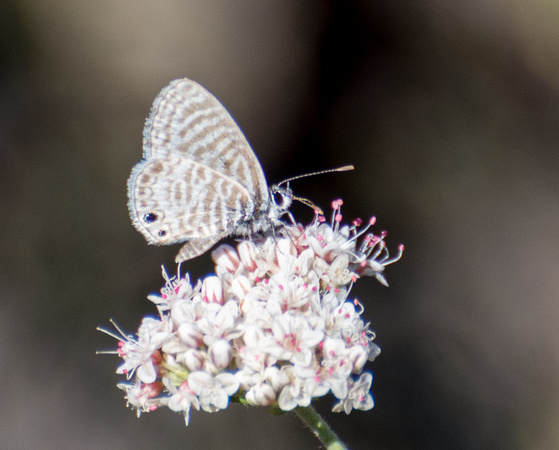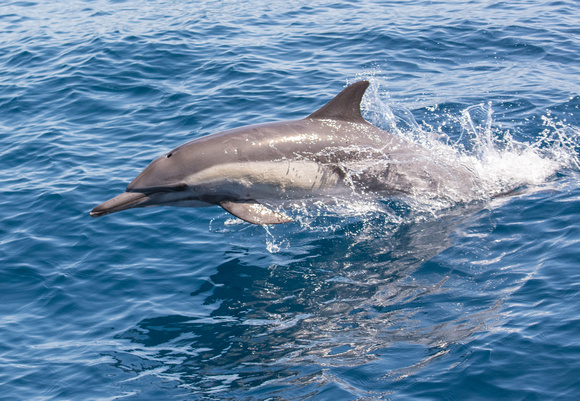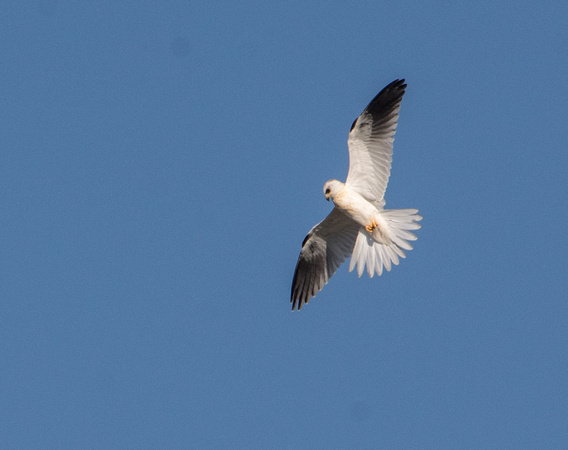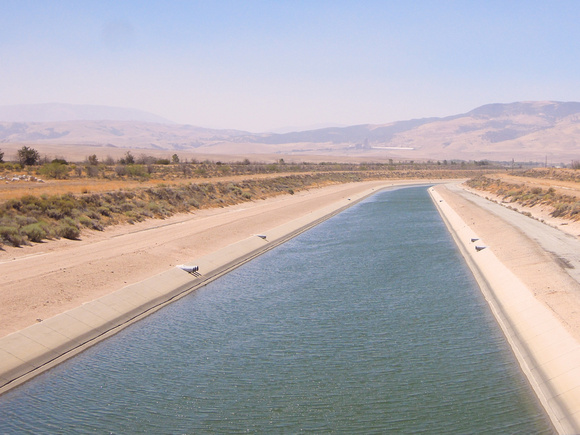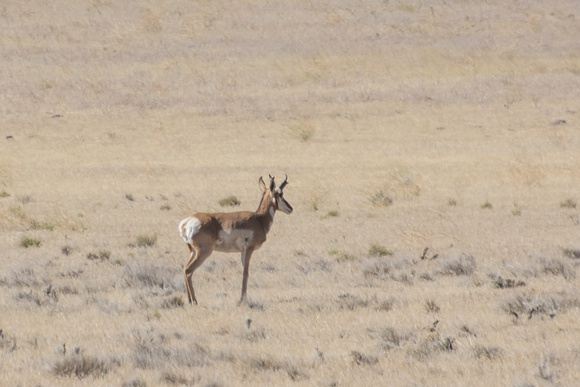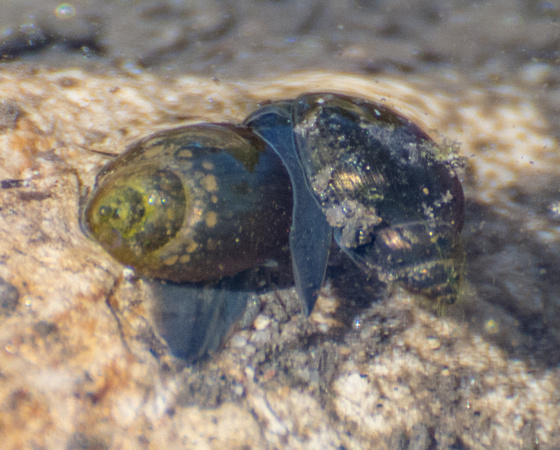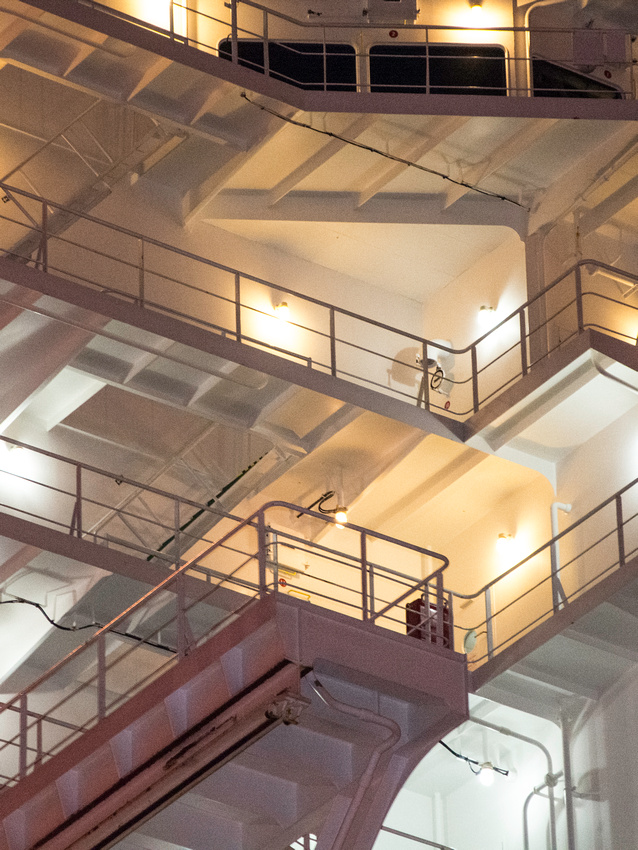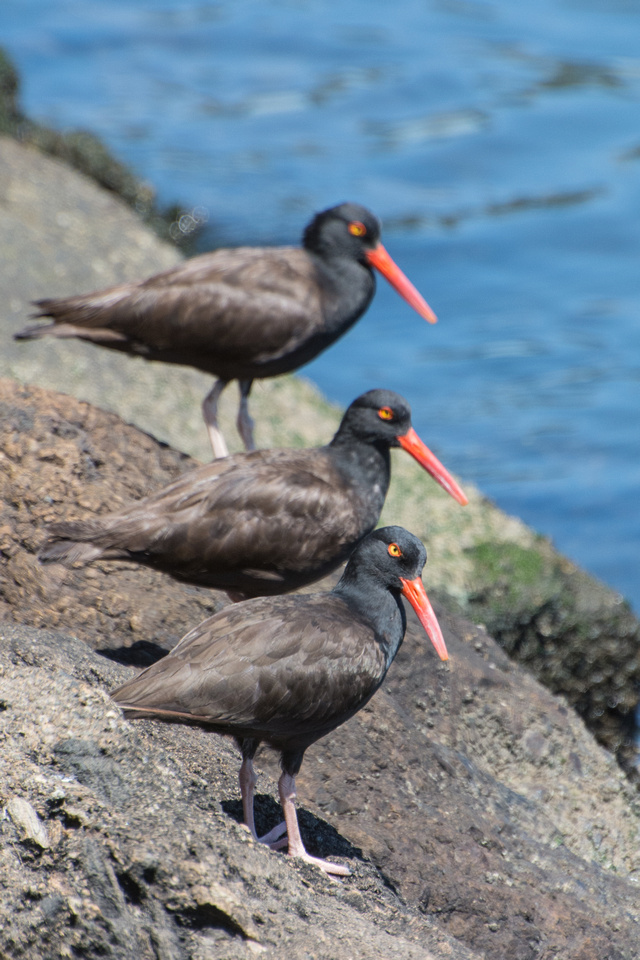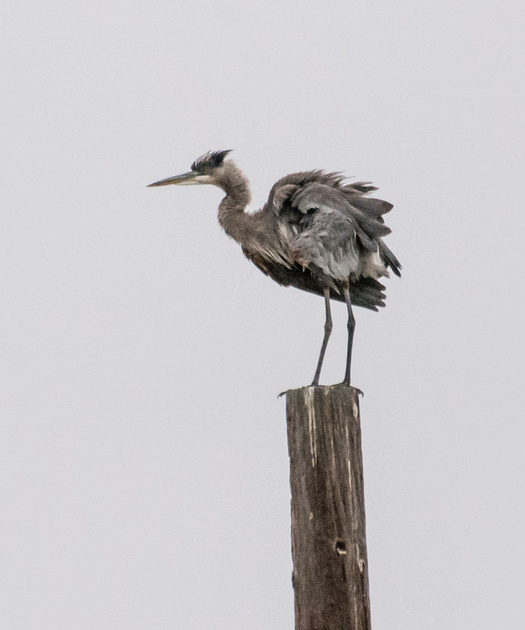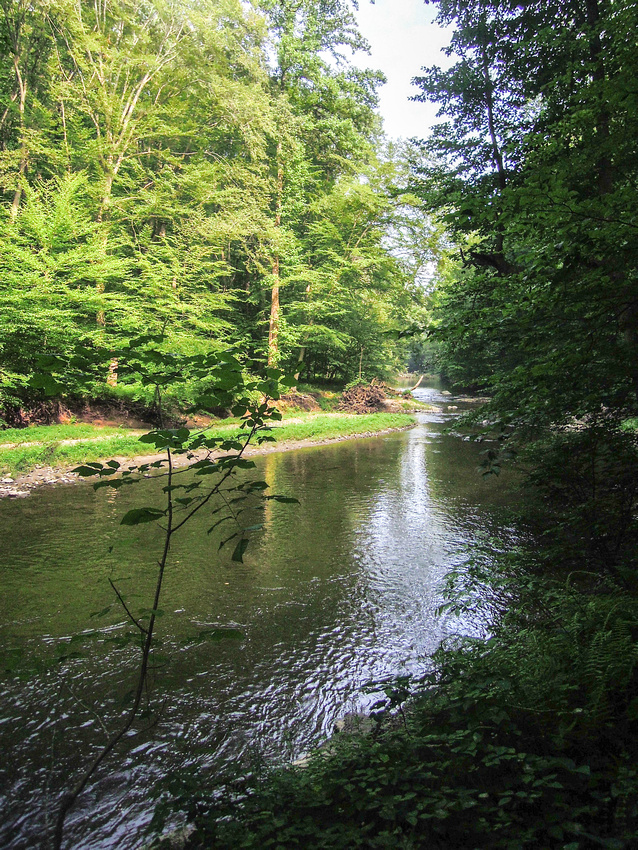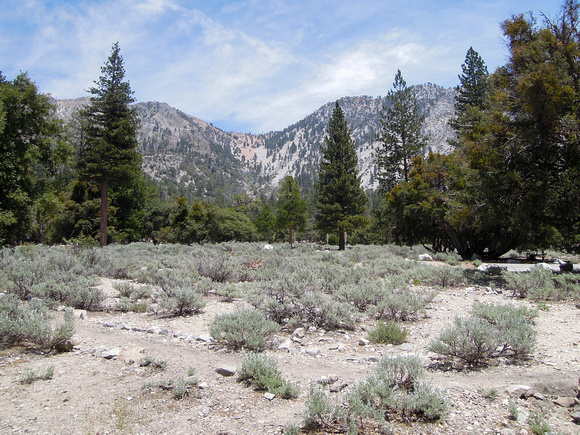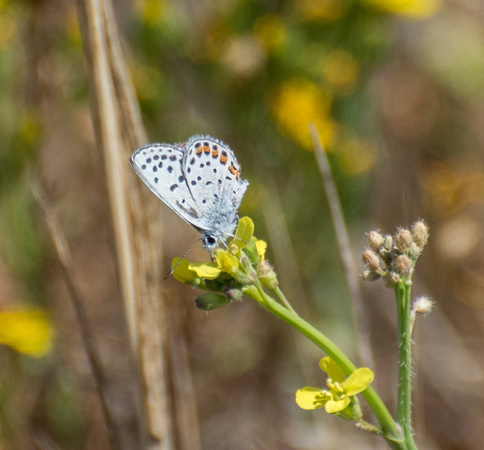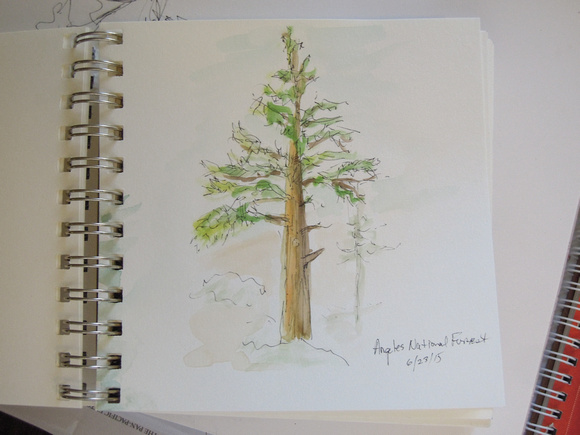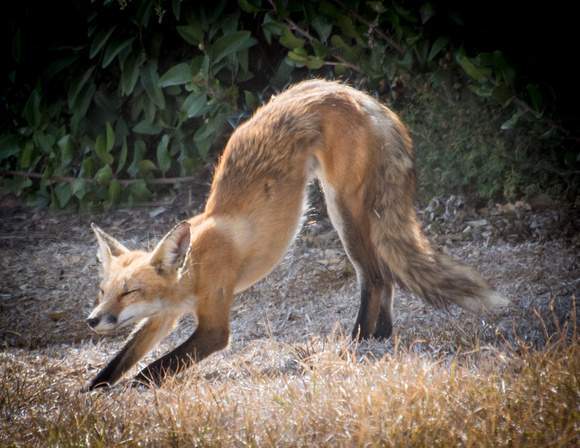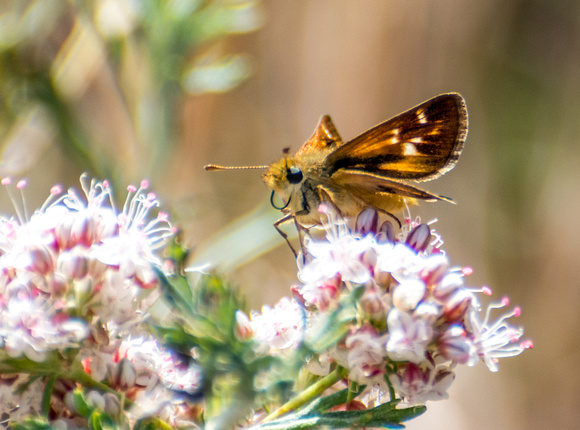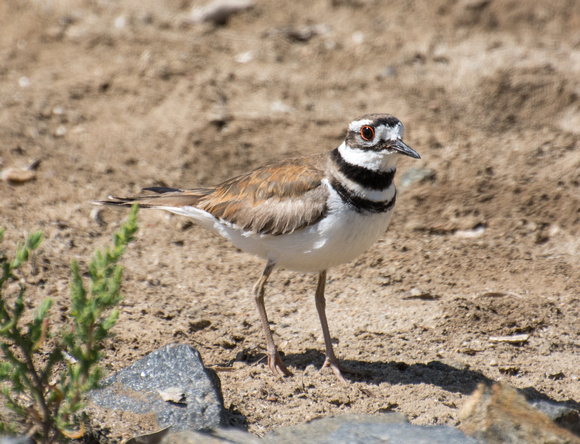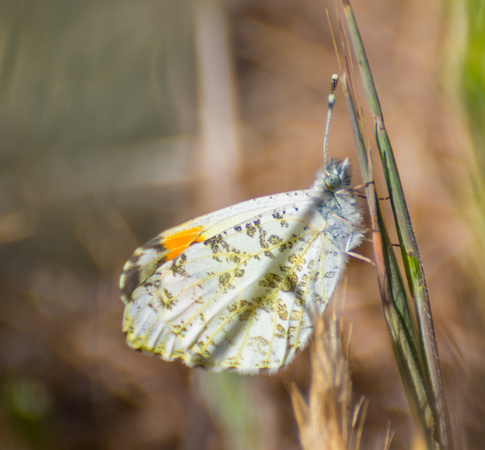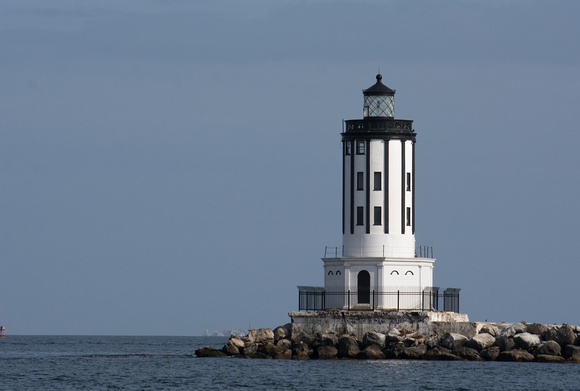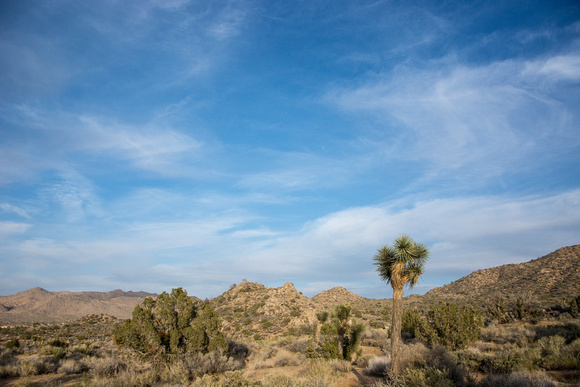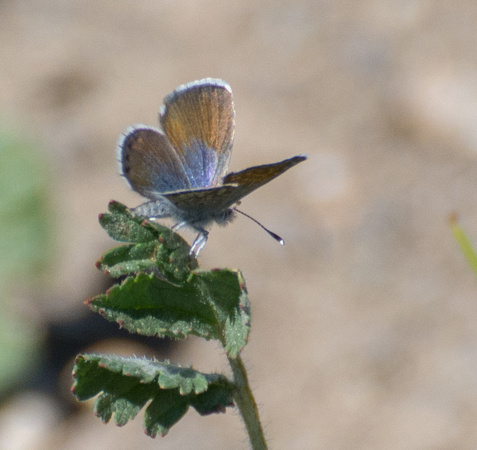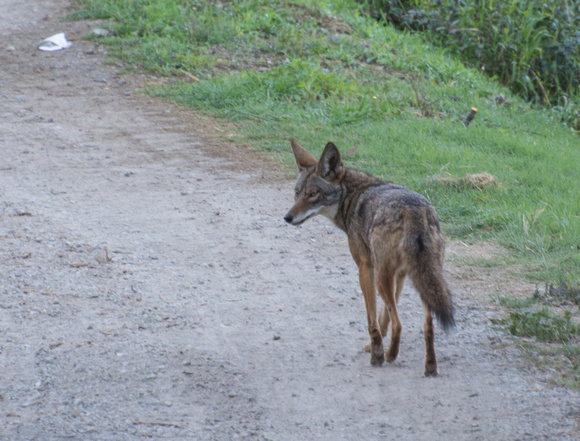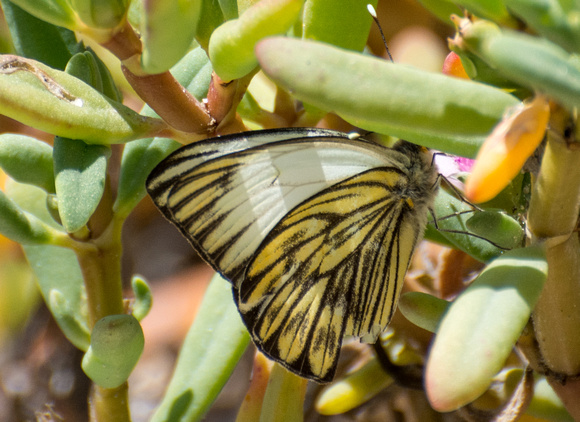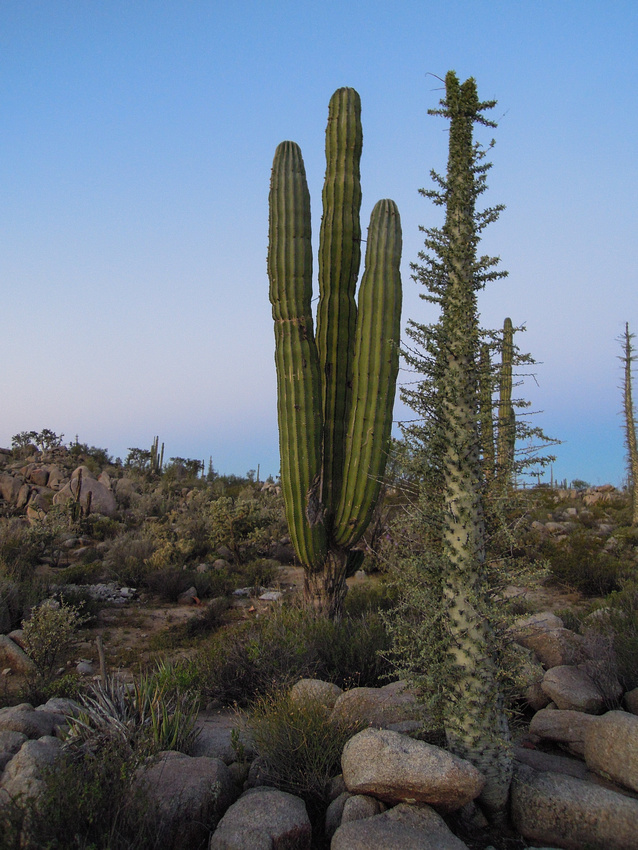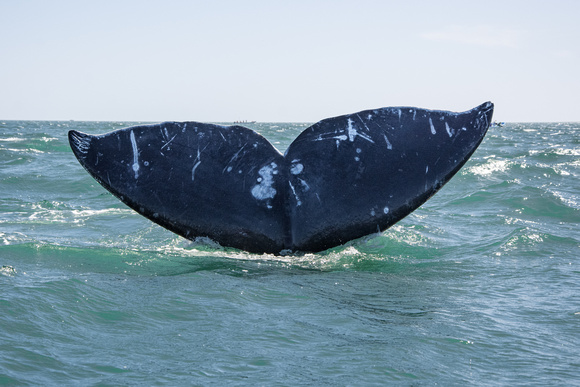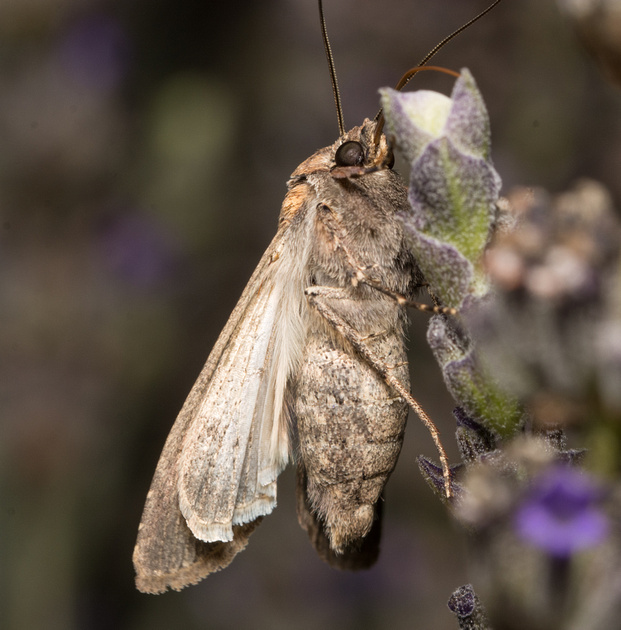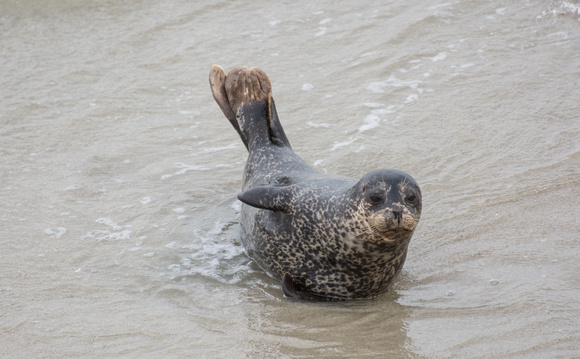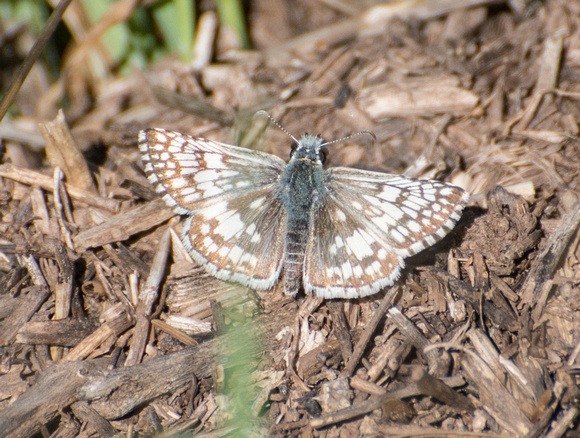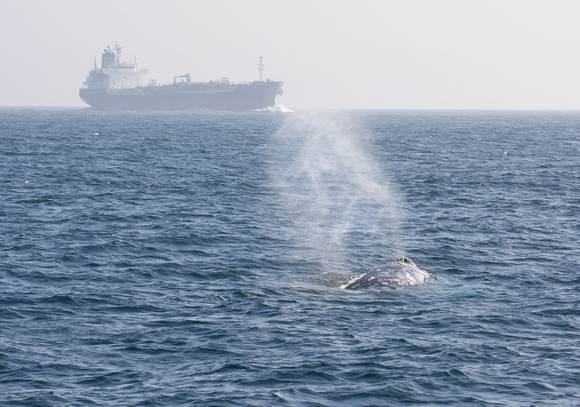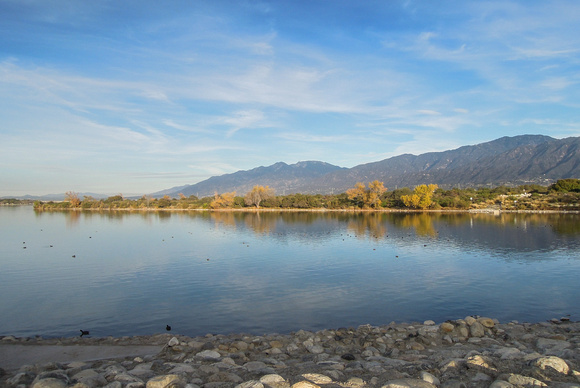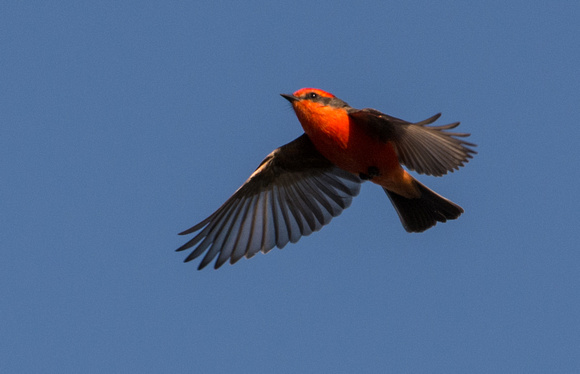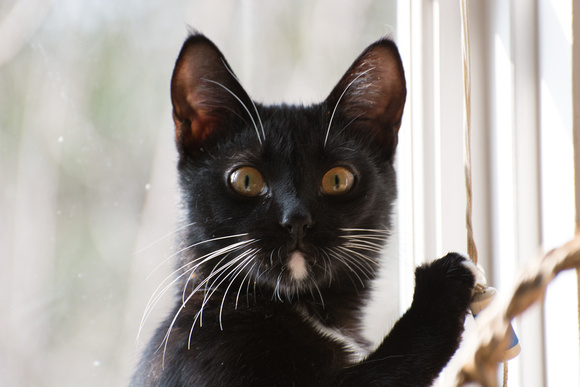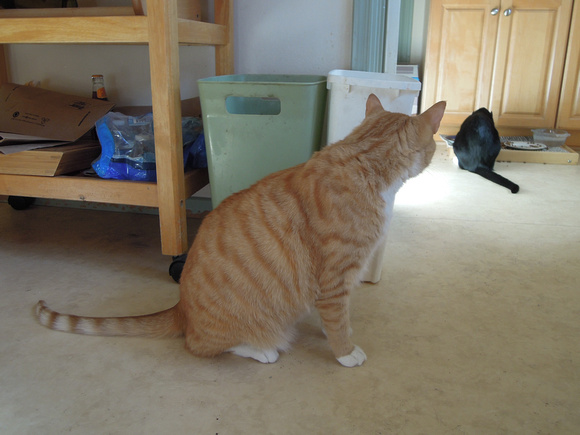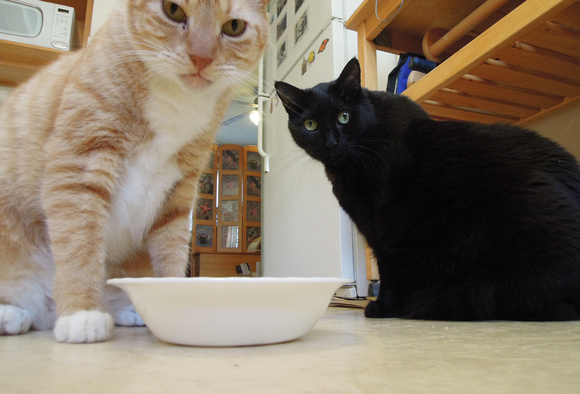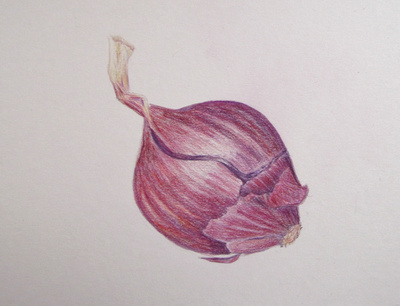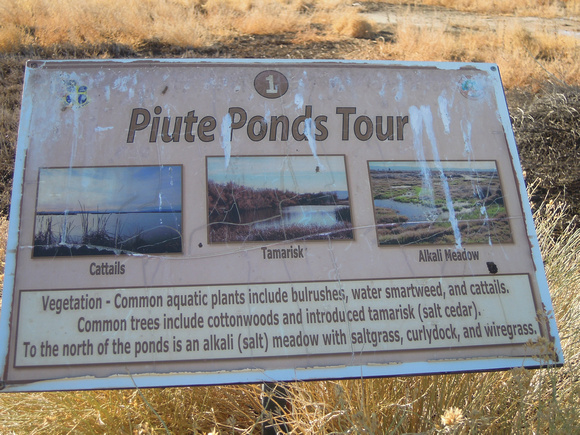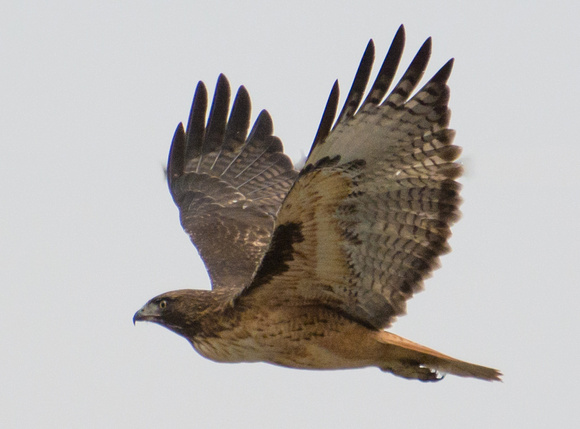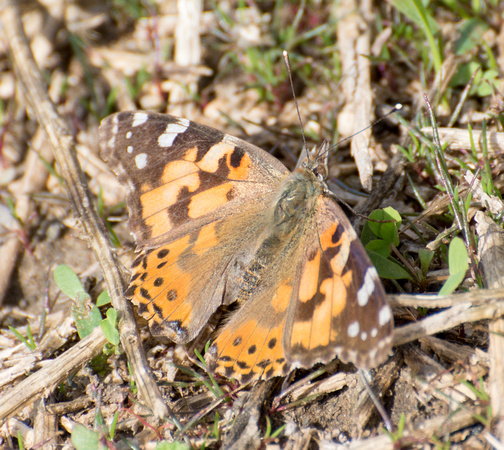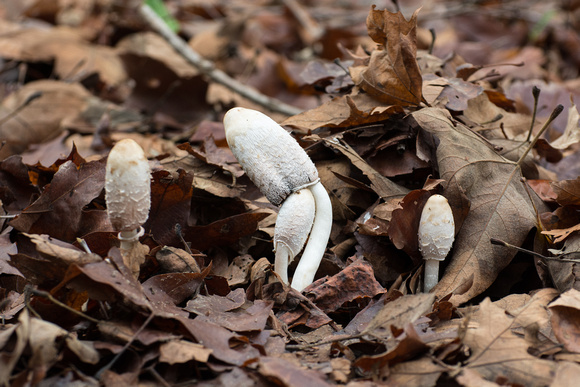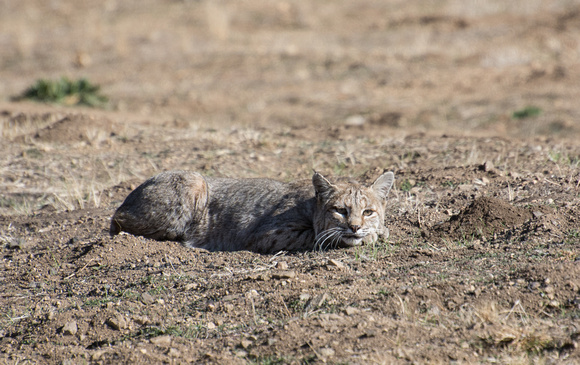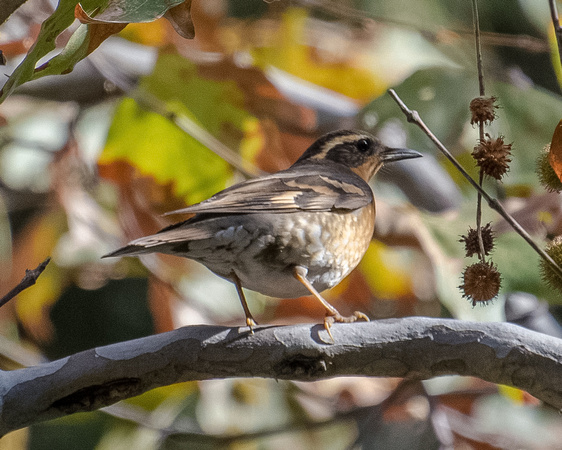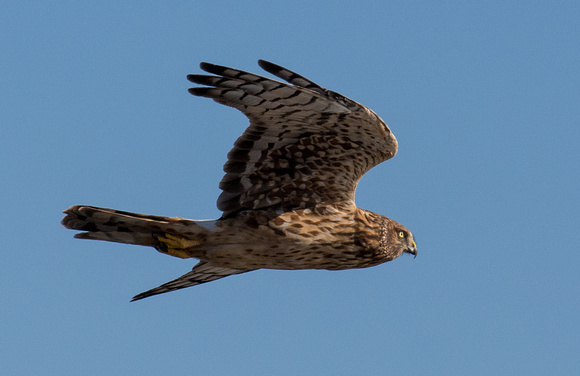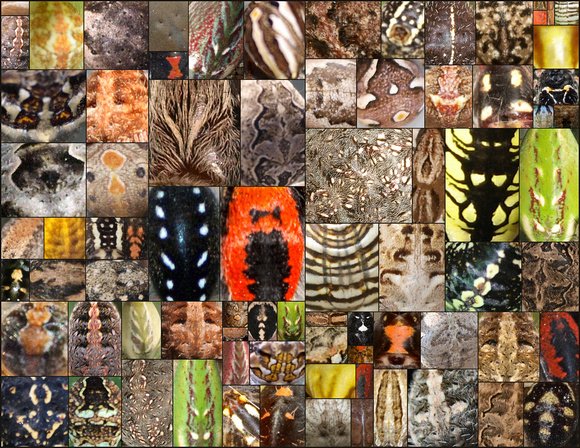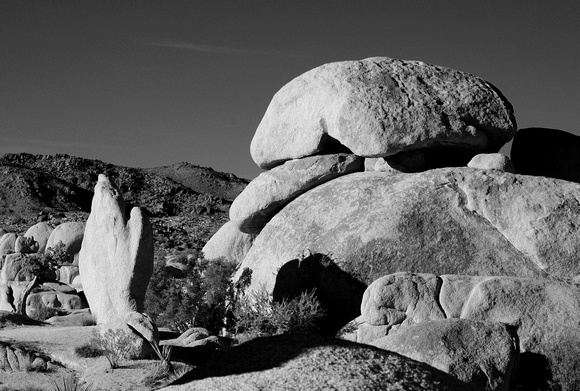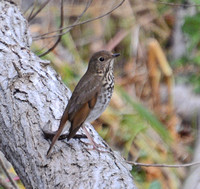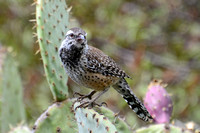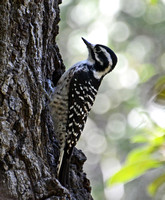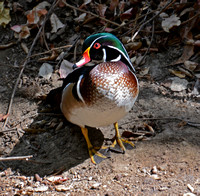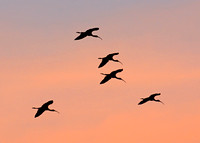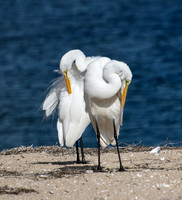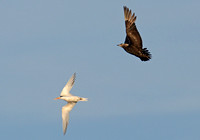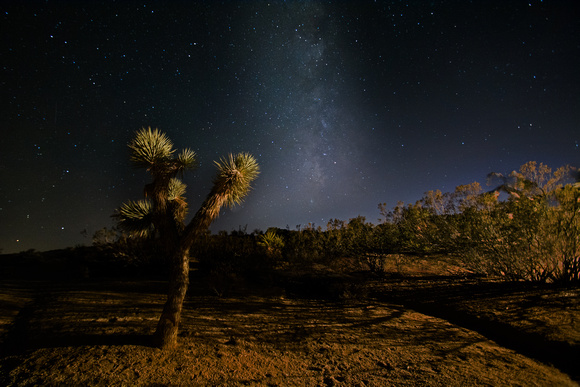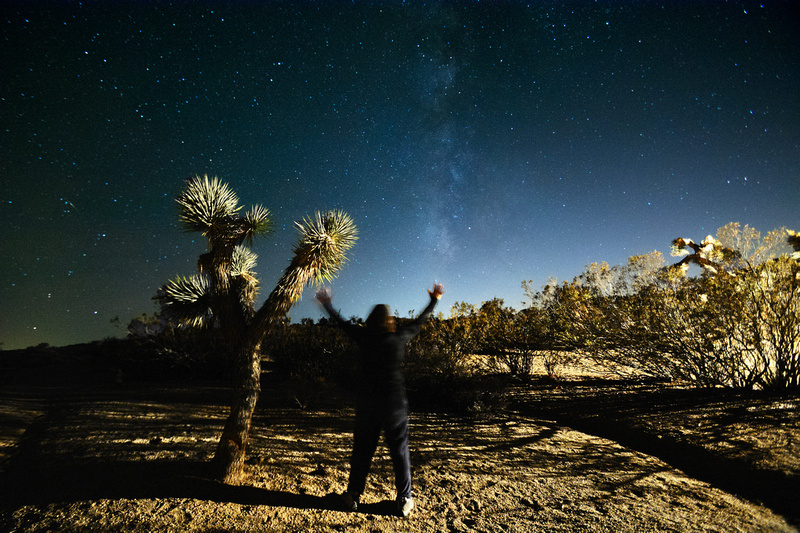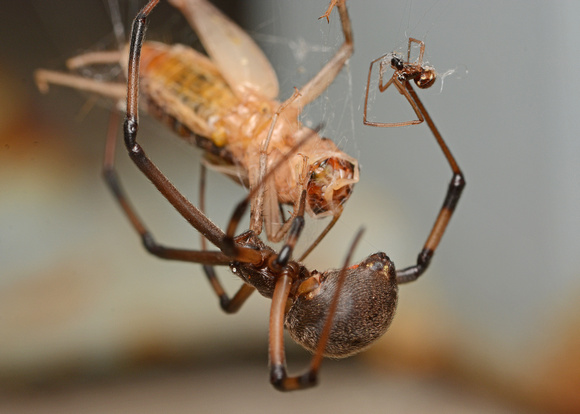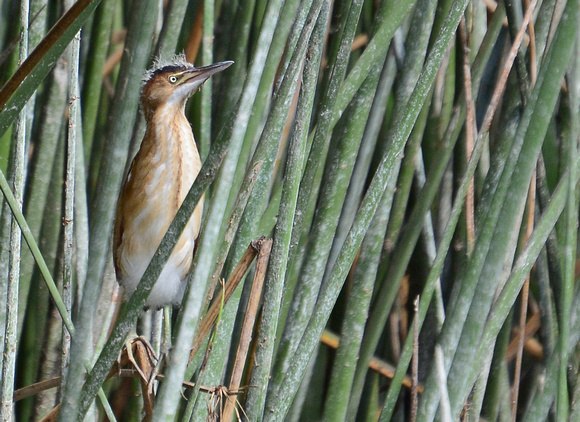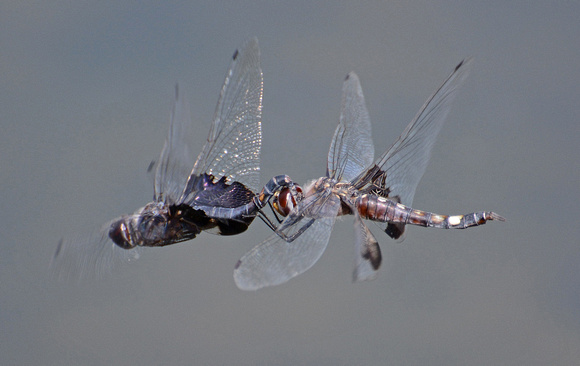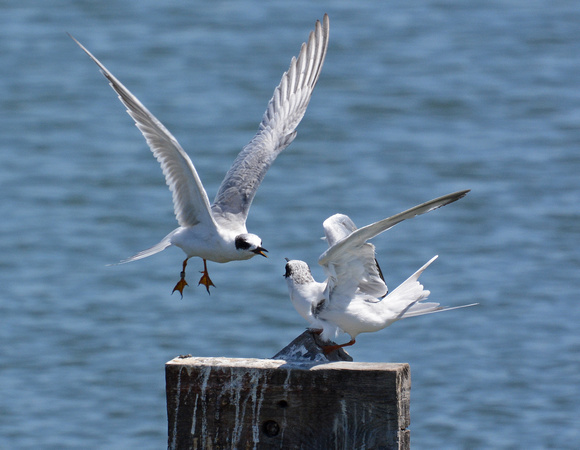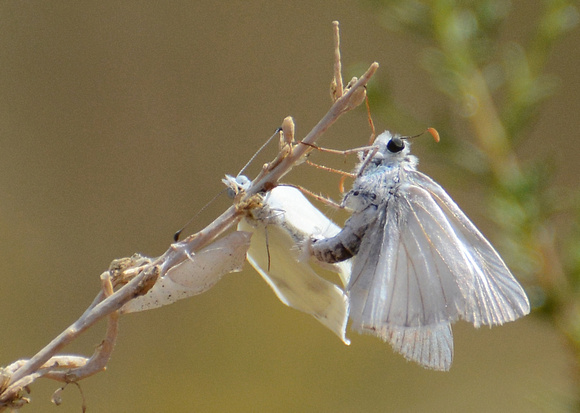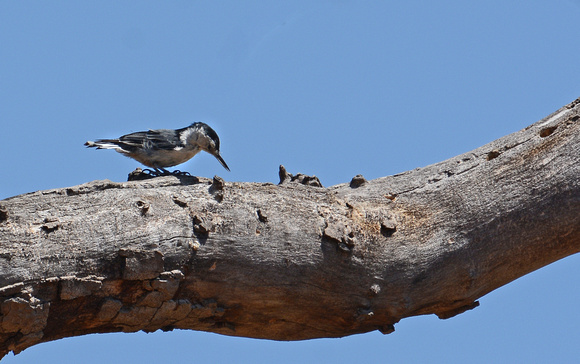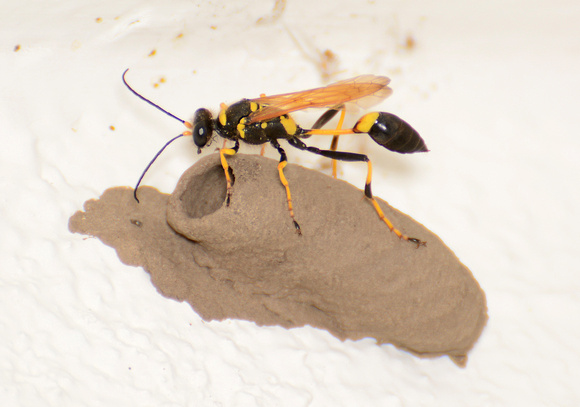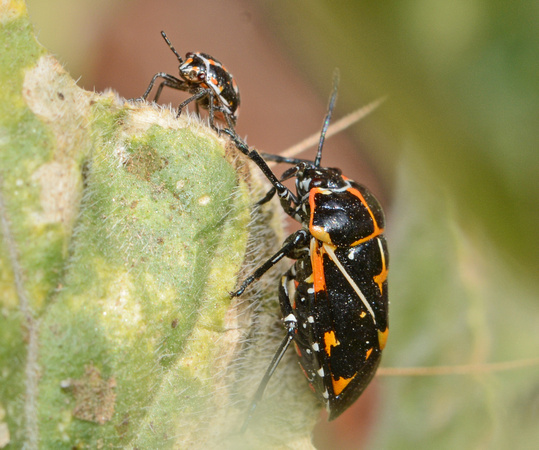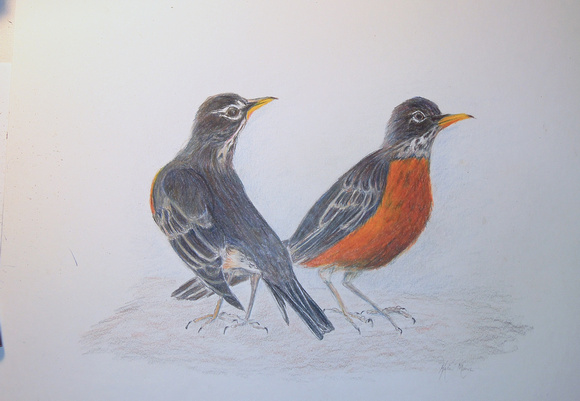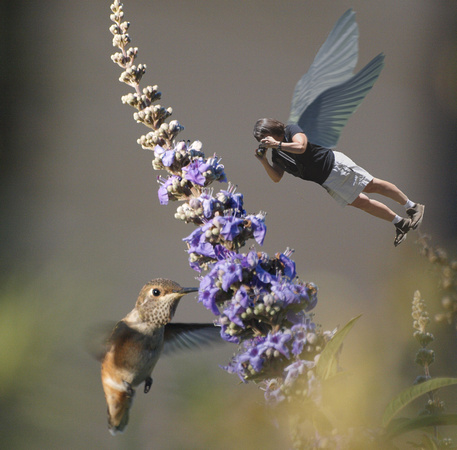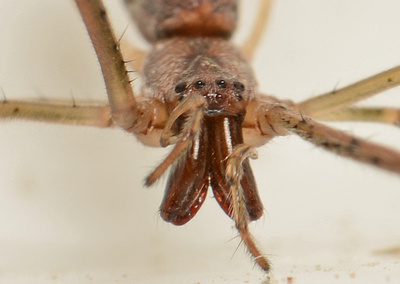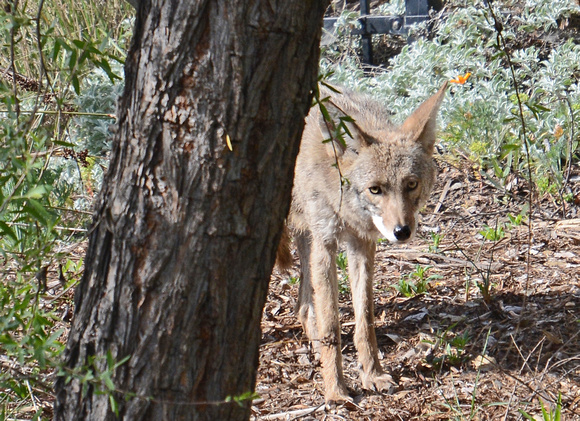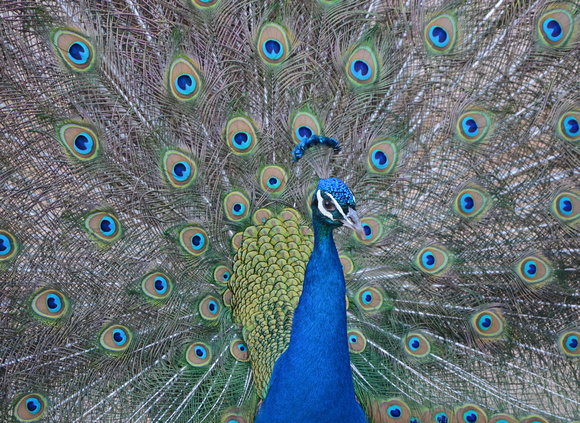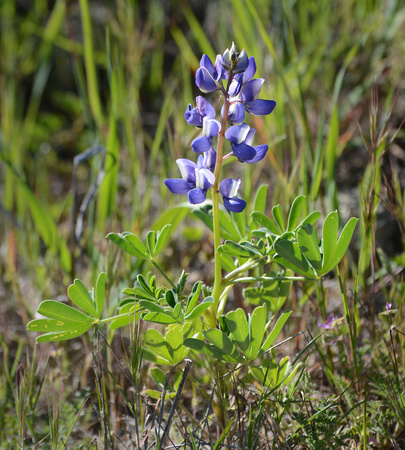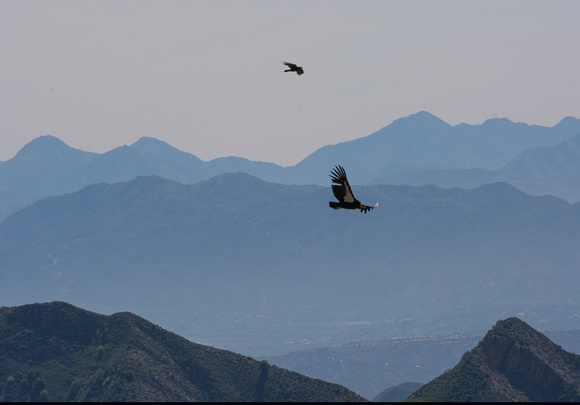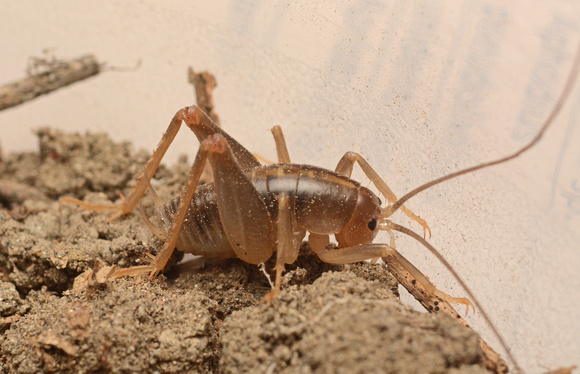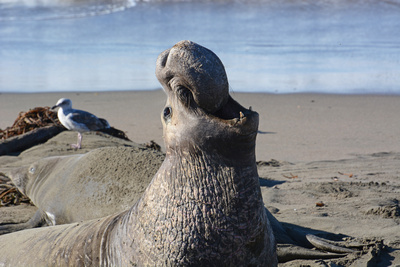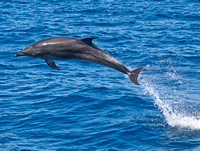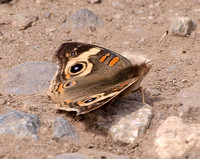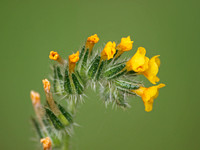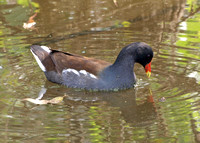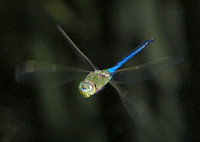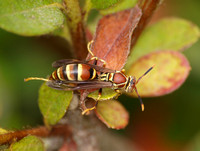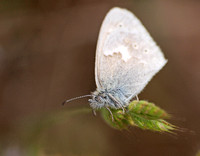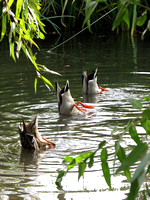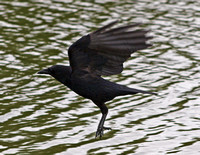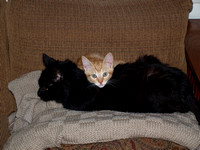And just as there are no bad birds, there are no bad birders. Birding is enjoying birds. That's it. Some people say I am a decent birder and some people would say good. Some tell me they are bad birders. However, it all depends on how you measure the judgement you impose. Yes I have gotten better at identifying some birds, but there is always more to learn. My mother, who recently moved in with my husband and me, is now taking up birding. She tells me she is a bad birder. But there is nothing wrong with not knowing birds that are all new to you. We just bought her better binoculars and she is having a good time. That, to me, is success.
For me, birding is just part of being a good naturalist. I was glad I was birding alone, and not with good birders, when I saw a small group of rats at Shoreline Aquatic Park. I enjoyed watching and photographing them. My birding buddies would have laughed and wanted to get back to birding.
Happy nature watching.
Follow me on Facebook: https://www.facebook.com/KimMooreNaturalist/
|
How to view photos with species names:
|
Watch the slideshows or click on the links to look through at your own pace. Links open in a new tab.
Local Stuff: https://kimssight.zenfolio.com/new_mar_2024
Wetlands Bird Survey: https://kimssight.zenfolio.com/hellman_mar_2024
]]>
On February 29th (my uncle would have celebrated his 25th birthday, born on leap year 100 years ago), I went on my wetlands survey. The wetlands were wet. Wetter than usual! There were many pools of water. Poor milk snails were drowning in the water in the tire tracks in the mud. We tried to save them and a few may have survived through our efforts. The remaining ones may go as coyote or heron snacks. Some biologists are apparently doing a study of coyotes. They had staked statues of a cat and a dog to the ground and had motion detector trail cameras pointed at them. I don't know if they fooled the coyotes but they made me do a double take. When I realize what it was, I patted the cat and said "poor kitty". I wonder what the biologists will think when they retrieve the camera. The rains should yield a bumper crop of mustard. I was impressed by the amount of moss growing on the trail. There were some of our usual areas too wet to walk through.
I have enjoyed our wet lands, but hope for some drier days so I can get out to see them.
Happy nature watching.
Follow me on Facebook: https://www.facebook.com/KimMooreNaturalist/
|
How to view photos with species names:
|
Watch the slideshows or click on the links to look through at your own pace. Links open in a new tab.
Local Stuff: https://kimssight.zenfolio.com/new_feb_2024
Wetlands Bird Survey: https://kimssight.zenfolio.com/hellman_feb_2024
]]>
As is typical, I started the new year with the LB 100 when I organize a group to find 100 bird species on the first day of the year. There is always a push in the beginning of the year to see the wintering shorebirds, waterfowl, and as many birds as we can. The LA River is one hotspot. Among other birds, a variety of gulls can be found. I am still working on my gull identification skills. As a way of learning, and proof that I saw them, I take photos. These photos are good for id even if not that pretty. I have rarely seen Iceland (Thayer's) Gulls and Black Backed Gulls, so they are a particular challenge. I am grateful to my more expert friends for help with those.
Rarities, such as the Ancient Murrelet that turned up at Cabrillo Beach, and the Brown Thrasher at the West San Gabriel River Nature Trail, require proof for the eBird reviewers. This involves a write-up and often photos. I record birds in eBird and all nature in iNaturalist, including insects and the very well-fed Coyote I saw sauntering one evening.
I went on a pelagic birding trip out of Redondo Beach. While I have gone on many ocean trips, I must say, this one had the most spectacular feeding frenzy I have seen. Dolphin were swimming upside down and the small fish in the bait balls were leaping out of the water. The gulls and pelicans were scooping them up. I guess that is why I keep going out, you never know what you will see.
I am very careful to proofread my blog before sending it out, but still often miss things. I don't always proof my eBird postings and text messages. I use voice-to-text to write them from my phone. That, combined with auto-correct, makes for some very strange comments. I'm sure many eBird reviewers think I am drinking something with a very high proof. Sometimes, even, with a few garbled words, one can decipher my sentences. One text got a few laughs when I posted on a bird chat group the observation of a possible Red-naped Sapsucker. My photo proved it actually to be a Red-breasted Sapsucker. However, autocorrect changed my original report to be of a Red-naked Sapsucker. When I learned of my mistaken post, I said that it was what I meant all along. The breast was red from the sun because it was naked. It should have worn clothes, or at least sunblock. I think we have a new name for the bird.
Happy nature watching.
Follow me on Facebook: https://www.facebook.com/KimMooreNaturalist/
|
How to view photos with species names:
|
Watch the slideshows or click on the links to look through at your own pace. Links open in a new tab.
Local Stuff: https://kimssight.zenfolio.com/new_jan-2024
Pelagic Trip: https://kimssight.zenfolio.com/pelagic_trip_jan_2024
]]>
In preparation for my upcoming big birding event on January 1st, I scouted a few locations. At Marine Stadium I found the Long-tailed Duck that has been recently reported. It was happily swimming with a flock of Mallards. Speaking of Mallards, on my monthly Los Cerritos Wetlands survey, we encountered an unusual Mallard. Dare I say, everyone is familiar with Mallards, those ducks with shiny green heads and curlicue tail feathers. Those are the males. There are often brown drab ducks with them that are typically the females. What non-birders generally don't know is that males can also be drab brown and are hard to tell apart from the females when they are young or are in non-breeding plumage. Notice the color of the bill. Males have yellow bills and the females orange. Sometimes you see weird or 'funny' ducks at the duckpond that look like Mallards but are just off. They are usually highly inbred domestic mallards of questionable parentage. So back to our unusual Mallard. This one was a female (orange bill) but is considered 'intersex', or in drake-plumage. Some of her plumage resembles a male. This is less common but does occur in wild populations. While Mallards are not always that interesting, we saw a pair of White-tailed Kites on the survey. When they show up, I always consider it a good day.
Wishing peace and happiness in 2024 for all the humans and the critters too.
Follow me on Facebook: https://www.facebook.com/KimMooreNaturalist/
|
How to view photos with species names:
|
Watch the slideshows or click on the links to look through at your own pace. Links open in a new tab.
Local Stuff: https://kimssight.zenfolio.com/new_dec-2023
Los Cerritos Wetlands Bird Survey: https://kimssight.zenfolio.com/hellman_dec_2023
]]>
Taking some time between planning and arranging things, my nature observations are from both near and far. Mostly I was very near, in my own backyard. The 'far' was from a day trip to San Jacinto Wildlife Area with friends and a weekend trip to Arizona to visit family for Thanksgiving.
San Jacinto is always wonderful. A Virginia Rail was a highlight bird for me. I don't see them locally and they are very stealthy. I was also excited to see a male velvet ant. Velvet ants are a type of wasp, not an ant. The species we see most often has a fuzzy red abdomen, hence the name 'velvet'. I mostly see the females, which have no wings and crawl on the ground, looking like large ants. The males have wings. I didn't get the best photo, but it was cool just the same.
In Arizona, I mostly saw 'smores, charcuterie platters, turkey dinner, and close family. We went on a walk around the neighborhood and saw several vermillion flycatchers. We have them locally, but still they are always a stunning bird.
Go out and enjoy nature, and enjoy time with family and friends too.
Follow me on Facebook: https://www.facebook.com/KimMooreNaturalist/
|
How to view photos with species names:
|
Watch the slideshows or click on the links to look through at your own pace. Links open in a new tab.
Local Stuff: https://kimssight.zenfolio.com/new_nov_2023
San Jacinto Wildlife Area: https://kimssight.zenfolio.com/san_jacinto_nov-2023
Tucson, AZ: https://kimssight.zenfolio.com/tucson_nov-2023
]]>
Last month I completed the re-landscaping of my backyard to all native plants. I have already recorded several species of insects and birds new to my yard list: Lark Sparrow, Chipping Sparrow, Gray Buckeye butterfly, Western Pygmy Blue butterfly, Erebid moth (Tetanolita palligera), Ribbon Jumping Spider (Metacyrba taeniola), and a Mason Wasp (Pachodynerus pulverulentus), which also appears to be relatively new to California. Are they really new to my yard or have I just not seen them? Maybe it's because I'm spending more time looking for them. Whatever the reason, it is nice to have renewed interest in my yard. I also set up better crittercams for my night visitors. I was not disappointed. Watch the video of the wily racoon and a visit from opossum and skunk. I delighted myself by spending some time each day in my garden with my macro lens. I enjoyed seeing all the small changes of plants growing and insects coming.
I only went out a few times birding to see some of the fall migrants. I visited the LA River and a couple of local parks. The surprise was a Mountain Bluebird at the river. It is unusual to find one near the coast. It is new to my Long Beach list.
I also went on a pelagic birding trip out of Redondo Beach and added a Manx Shearwater as a new bird to my life list. It was a good day for pelagic birds with large flocks sitting on the water.
Go out and enjoy nature, and learn something new.
Follow me on Facebook: https://www.facebook.com/KimMooreNaturalist/
|
How to view photos with species names:
|
Watch the slideshows or click on the links to look through at your own pace. Links open in a new tab.
Local Stuff: https://kimssight.zenfolio.com/new_oct_2023
Pelagic birding out of Redondo Beach: https://kimssight.zenfolio.com/pelagic_trip_oct_2023
]]>
Birding has been a bit of a challenge. There has been a good variety of vagrant birds lost in migration, but otherwise it has been slow birding. I look forward to next month when, hopefully, all the birds will be back.
One of the places I went to several times was Signal Hill. It has been a local high point for migration, both literally and figuratively. Several rare migrants showed up there, and since it is close to my house, I tried chasing a few. A Magnolia Warbler and a Virginia's Warbler were the targets. At another park, a Tennessee Warbler was far from his home. I found a Blackpoll Warbler and a Lucy's Warbler at La Mirada Creek. All of these warblers chose to be very flitty and were hard to see, much less photograph, while flitting through dense foliage. And, it is a banner year for Red-breasted Nuthatches in our area. While you might see one occasionally at the coast during fall/winter, I seem to be seeing (or at least hearing) them almost everywhere I go.
While at Signal Hill, I discovered that the trees were infested with beetles (adults, larvae, and eggs).
This little eucalyptus leaf beetle, Paropsis atomaria, unfortunately is relatively new to our area. These are native to Australia. In November 2021 one was reported on iNaturalist, and they were documented by the LA Agriculture Commission in 2022. Since then, they seem to have exploded in population, now spreading into Orange, Riverside, and San Bernardino Counties. They join several other leaf beetles whose host is eucalyptus. Of course the eucalyptus trees, that we think of as a symbol of California, are also a native of Australia, and were brought to CA intentionally. How did our new little friend get here? Through the ports? Brought back by someone visiting Australia? We may never know.
Go out and enjoy nature, but remember to dress for summer, fall, and winter all at once. You never know which season you'll get in September and early October.
Follow me on Facebook: https://www.facebook.com/KimMooreNaturalist/
|
How to view photos with species names:
|
Watch the slideshows or click on the links to look through at your own pace. Links open in a new tab.
Local Stuff: https://kimssight.zenfolio.com/new_sep-2023
]]>
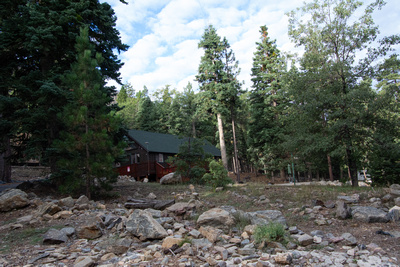 Camp De Benneville Pines, Angelus Oaks, CA 09/12/2023
This month I attended an art camp held in the San Gabriel Mountains. I never went to sleep-away camp as a child, but now can relate better to the many movies based on the subject. Although the focus of the camp activities was on art workshops, there were other activities such as group hikes, yoga, and archery. We slept in bunkbeds (lower for us old folk) and ate our meals in the big central building. I enjoyed the concept, but as a slightly introverted person, spending time surrounded by sixty-five people, and artists who created art eight hours a day, was a little intense for me. So I ducked out to spend time on my own birdwatching, exploring the forest, and photographing wildlife (chipmunks!!!).
Camp De Benneville Pines, Angelus Oaks, CA 09/12/2023
This month I attended an art camp held in the San Gabriel Mountains. I never went to sleep-away camp as a child, but now can relate better to the many movies based on the subject. Although the focus of the camp activities was on art workshops, there were other activities such as group hikes, yoga, and archery. We slept in bunkbeds (lower for us old folk) and ate our meals in the big central building. I enjoyed the concept, but as a slightly introverted person, spending time surrounded by sixty-five people, and artists who created art eight hours a day, was a little intense for me. So I ducked out to spend time on my own birdwatching, exploring the forest, and photographing wildlife (chipmunks!!!).
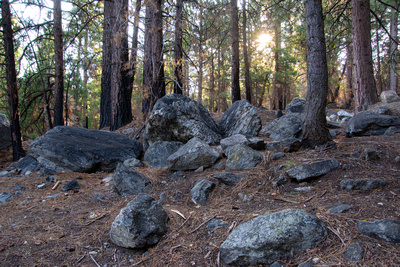 Camp De Benneville Pines, Angelus Oaks,
Camp De Benneville Pines, Angelus Oaks,CA 09/08/2023
These images will serve as inspiration for my future art projects at home. Photographing wildlife in the forest is challenging because the lighting is poor and the trees are very dense and tall, but I managed.
Camp de Benneville Pines is located in yellow pine forest with various pines, fir trees, and black oaks among other trees. Rocks are everywhere and would be a geologist's delight, I am sure. There are lots of metamorphic rock, granite, schist, and gneiss. One day, perhaps, I will learn more about rocks and trees, but fauna has my prime attention.
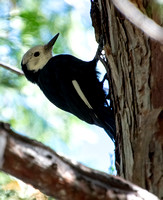 White-headed Woodpecker - Dryobates albolarvatusWhite-headed Woodpecker - Dryobates albolarvatus
White-headed Woodpecker - Dryobates albolarvatusWhite-headed Woodpecker - Dryobates albolarvatus
Camp De Benniville Pines, Angelus Oaks, CA 09/12/2023
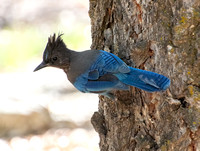 Steller's Jay - Cyanocitta stelleriSteller's Jay - Cyanocitta stelleri
Steller's Jay - Cyanocitta stelleriSteller's Jay - Cyanocitta stelleri
Camp De Benniville Pines, Angelus Oaks, CA 09/09/2023
Since it is September, most of the birds, that come up to the mountains to breed, have already left.
I did see a few Yellow-rumped Warblers and a Townsend's Warbler that will soon be visiting me, along with many of their kin, down at the coast for the winter. The resident birds were quite vocal. Mountain Chickadees and Stellar's Jays were abundant. I saw several fluffy immature jays. Red-breasted, White-breasted, and Pygmy Nuthatches, Acorn, White-headed, Hairy, and Nuttall's Woodpeckers tapped on trees and made their distinctive calls.
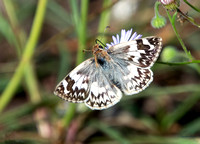 Northern White Skipper - Heliopetes ericetorumNorthern White Skipper - Heliopetes ericetorum
Northern White Skipper - Heliopetes ericetorumNorthern White Skipper - Heliopetes ericetorum
Camp De Benniville Pines, Angelus Oaks, CA 09/10/2023
I enjoyed birding by ear.
Butterflies, moths, and other insects caught my eye and camera. Northern White Skippers were all over the Fleabane.
Southern
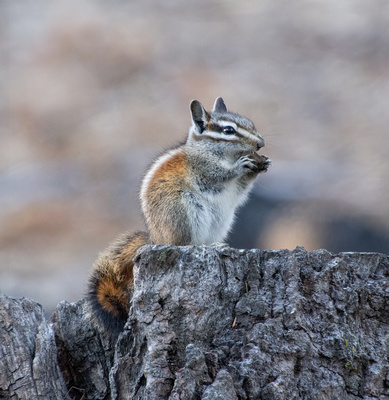 Chipmunk - Neotamias sp.Chipmunk - Neotamias sp.
Chipmunk - Neotamias sp.Chipmunk - Neotamias sp.
Camp De Benniville Pines, Angelus Oaks, CA 09/09/2023
Sagebrush Lizards and a beautiful blue-tailed Western Skink scurried over the lichen-covered rocks and in the pine and oak leaf litter.
There was a family of four Mule Deer (mama, papa, and two young ones) that I saw at a distance during one early morning walk. California Ground Squirrels, Western Gray Squirrels, and my most favorite, chipmunks, scampered around everywhere. Chipmunks are distinguished from squirrels by the lines through their eyes. I even caught one chipmunk in mid 'flight' as it jumped great distances from rock to rock.
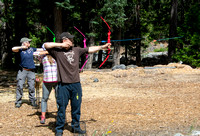 Camp De Benniville Pines, Angelus Oaks, CA 09/10/2023
On one of my walks, I passed the archery range. I always like to try to catch birds in flight, but since I was not having much success, I spent a little while trying to catch arrows in flight. That too was a challenge, but I finally reached success when I had the instructor help lead the coordination.
Camp De Benniville Pines, Angelus Oaks, CA 09/10/2023
On one of my walks, I passed the archery range. I always like to try to catch birds in flight, but since I was not having much success, I spent a little while trying to catch arrows in flight. That too was a challenge, but I finally reached success when I had the instructor help lead the coordination.
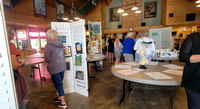 The Art SHowThe Art SHow
The Art SHowThe Art SHow
Camp De Benniville Pines, Angelus Oaks, CA 09/12/2023
The art classes were well structured and taught by very accomplished artists. I took the morning intensive (three hours each morning for five days) in monoprinting. The teacher was a delight. We had some instruction and then a lot of trial and error on our own with guidance from the instructor if we asked. I find it difficult to be creative during a class, so rather than work on a masterpiece, I chose several small exercise pieces to try out a technique or materials. I prefer to work in shorter, more sporadic increments as the mood hits, so I found it a bit challenging to spend so much time working at it.
Each afternoon, there were two shorter workshops offered, some taught by the instructors of the other intensives. I opted to take only one each day. I attended rock painting. While others did beautiful work, I found more beauty in the natural rock painted by lichen. I took journaling. It was fun to do collage work from magazine scraps, something I don't normally do. I went out on my own and did a little nature journaling in ink and watercolor.
I loved the acrylic pour workshop. I could see that that would be a lot of fun, but very messy. Lastly, I took oil pastels. This was my favorite. I hadn't used pastels before. The instructor was fun and a very good teacher. She took us step-by-step through the process. I might actually try that at home. The last day was a group art show so we could see what everyone had done.
 My Acrylic Pour TileMy Acrylic Pour Tile
My Acrylic Pour TileMy Acrylic Pour Tile
Camp De Benniville Pines, Angelus Oaks, CA 09/10/2023
 My Acrylic Pour TileMy Acrylic Pour Tile
My Acrylic Pour TileMy Acrylic Pour Tile
Camp De Benniville Pines, Angelus Oaks, CA 09/10/2023
 My Oil PastelMy Oil Pastel
My Oil PastelMy Oil Pastel
Camp De Benniville Pines, Angelus Oaks, CA 09/12/2023
 One of my MonoprintsOne of my Monoprints
One of my MonoprintsOne of my Monoprints
Camp De Benniville Pines, Angelus Oaks, CA 09/12/2023
 One of my MonoprintsOne of my Monoprints
One of my MonoprintsOne of my Monoprints
Camp De Benniville Pines, Angelus Oaks, CA 09/12/2023
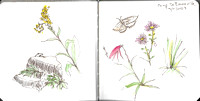

These six days confirmed for me that I am a Naturalist, Photographer, and Artist --- in that order.
Follow me on Facebook: https://www.facebook.com/KimMooreNaturalist/
Watch the slideshows or click on the links to look through at your own pace. Links open in a new tab.
Vertebrates (Birds, Reptiles, Mammals): https://kimssight.zenfolio.com/camp_de_benneville_vertebrates
Invertebrates (Insects and Spiders): https://kimssight.zenfolio.com/camp_de_benneville_invertebrates
Plants, Rock, Fungi, Lichen, Habitat: https://kimssight.zenfolio.com/camp_de_benneville_habitat
Art and Activities: https://kimssight.zenfolio.com/camp_de_benneville_art
|
How to view photos with species names:
|
]]>
Red Foxes are not native to southern California. They were introduced by humans for fox hunts and for farming for the fur trade. Escapees, accidental or released, have since populated some areas. The Palos Verdes Peninsula is one place they can be found. I have seen them there before, but not often. This time I was on my way to Cabrillo Beach to go birding with a friend. On the way in, my friend spotted one. I pulled the car over. There really isn't parking there. We got out to grab our cameras and were being very quiet. After a quick first shot, we noticed it was a family with two young kits. My friend warned me not to scare them. But, soon we realized they were very accustomed to humans and even sat just feet away to groom. I would love to have stayed with them longer, but other cars were coming.
My snake moment came at the end of the month. I went with an Urban Sketching group up to Mount Wilson. While they sketched the observatory, I had a little wander. I was following a whiptail lizard when the Striped Racer darted for it. I think my presence helped the lizard escape. The snake just sat there for a moment. I think it was saying "Harumph". I was able to get down to eye-level with it and snap a picture.
After years of smelling a skunk pass my bedroom window at night, I had never seen it. I caught him on my trail cam occasionally, but never saw him in person. One morning I did. I grabbed my camera, even though I didn't have the right lens on. Before I could focus, he ran directly at me. I ran backwards faster. Fortunately he charged me head on and didn't turn tail, but I still wish I got a better photo. It could have been a moment.
Live in the moment, and live for the moments. I hope this brought you a moment to smile.
Follow me on Facebook: https://www.facebook.com/KimMooreNaturalist/
|
How to view photos with species names:
|
Watch the slideshows or click on the links to look through at your own pace. Links open in a new tab.
Local Stuff: https://kimssight.zenfolio.com/new_aug-2023
Mount Wilson: kimssight.zenfolio.com/mt_wilson_aug-2023
]]>
However, I did get hot under the collar at our local park maintenance. I have noticed trees being taken down throughout Long Beach’s parks. When I went to Wardlow Park, one of my favorites and a hotspot for birds in migration, I was shocked practically to tears. Dozens of trees have been removed. This includes the trees that were a favorite of the Summer Tanager, several of the favorite trees of the Oak Titmouse, the trees where I found the Red-faced Warbler a few years ago. The Nuttall’s Woodpeckers and Western Bluebirds would nest in cavities in several of the trees, now gone. Beautiful Sycamores gone. The trees in the center of the park where the Hammond’s Flycatchers perch, gone. All the undergrowth along the channel fence has been cut down. No place for White-crowned Sparrows and California Towhees to hide. In discussions with fellow birders, this has been the case in many of our favorite places.
Apparently, in 2015, an inventory and assessment was conducted that identified 14,000 trees as dead, dying, or in critical condition. Nothing was done at that time. These trees continued to decline further due to a historic drought, disease, and invasive pests. The 2023 budget included one-time Measure A funds in the amount of $1.8 million to address the decline of the park urban forest. So the city is doing everything at once. If you have the money, spend it while you can. If I could wave my magic wand, I would have done the work in sections over time, leaving at least some habitat for birds and wildlife. I also think the city is focusing on using the parks for 'recreation', which to them means sports fields. We will see how this effects fall migration.
So back to what I saw this month. A friend introduced me to a new-to-me local park where we met to photograph insects. It is a more wild area, and I saw some cool stuff. I am reminded that there is always more to see if you look closely. I also coordinated the PV/South Bay Audubon Butterfly/Dragonfly survey. Not as many butterflies this year, but my highlight was a young raccoon and a posing cicada.
As we try to escape the heat at the beach or on summer vacations, as is usual, fall migration has begun for birds. Shorebirds are returning along the river and shore. An Eastern Kingbird, headed south, came down the wrong coast and showed up at Los Cerritos Wetlands. A Tundra Bean Goose that breeds in Siberia got very lost in migration and showed up locally, making it's way through several local parks. Baby birds are growing up, and there were some other rarities. I saw Magnificent Frigatebirds when I was in Mexico in February. It was quite unusual to see one locally. It was very distant, but there is no mistaking the size and shape. An Indigo Bunting was by the river. It's name is true to the color of the bird.
Enjoy nature, hydrate, and stay cool!
Follow me on Facebook: https://www.facebook.com/KimMooreNaturalist/
|
How to view photos with species names:
|
Watch the slideshows or click on the links to look through at your own pace. Links open in a new tab.
Local Stuff: https://kimssight.zenfolio.com/new_july-2023
Los Cerritos Wetlands Bird Survey: https://kimssight.zenfolio.com/hellman_jun_2023
]]>
Follow me on Facebook: https://www.facebook.com/KimMooreNaturalist/
|
How to view photos with species names:
|
Watch the slideshows or click on the links to look through at your own pace. Links open in a new tab.
Local Stuff: https://kimssight.zenfolio.com/new_jun_2023
Los Cerritos Wetlands Bird Survey: https://kimssight.zenfolio.com/hellman_jun_2023
Barret-Stoddard Road: https://kimssight.zenfolio.com/barrett-stoddard_jun-2023
Grassy Hollow, Blue Ridge Campground, Jackson Lake: https://kimssight.zenfolio.com/san_gabriel_mountains_jun-2023
]]>
We started the month visiting with my husband's daughter and her beau who were visiting San Diego from the UK. We had a lovely time with them and went out whale watching. Not too exciting for whales, but there were many Mola mola eating Velella velella (Ocean sunfish eating sea jellies).
At the end of the month my husband and I welcomed guests into our home. It has been a long time, due to the pandemic, since we have had guests spend time in our home for an extended visit. I had been looking forward to it for a while. One of the benefits for me is getting the house ready. My husband dreads this part, but is happy when it is done. Not that we are bad housekeepers, although I guess we are but, without visitors, sometimes clutter builds up beyond what I can tolerate. My husband likes to accumulate things, and I have followed suit, particularly with art supplies. I have now had the opportunity to go through my supplies, clean out what I can, and at least reorganized them, which will make them much easier to access in the future. Decluttering is very good for my spirits. Meanwhile, my husband painted the front bench and sanded the Adirondack chairs out back. When my friends arrived, I'm sure they were impressed with the way we live in only a moderately cluttered house. The visit with guests is so very welcomed. After preparations, it is then a stay-cation for us to spend time enjoying the company of our friends...and the residual cleaner home. Our friends came to LA for the Natural History Museum Bug Fair. The rest of the time we met up with others and looked for and talked about birds and insects. My kind of people!
While migration petered out, as usual, the silk oaks attracted the birds while their blooms lasted. I saw Black-headed Grosbeaks and Western Tanagers on their way through. Yellow Warblers arrived for the summer. A Northern Parula and an Indigo Bunting were nice rarities.
Visits to Dockweiler Beach, Bolsa Chica, and San Joaquin Marsh were wonderful places to see tern courtship. Males offer fish to the females to prove they are good providers. If she is receptive, courtship and copulation follow. At Dockweiler Beach, a young boy came by and asked why one bird was standing on the back of the the other. I didn't want to go into too much detail, but he left excited about birds. At Bolsa Chica, we watched a Least Tern male go fish and feed a potential mate. She proved very responsive and waggled and tickled his chest with her tail. But he seemed mostly confused and eventually flew off. Was he still too young?
I enjoyed tide pooling at Cabrillo Beach. It has been a while since I have done that, and was glad that our guests suggested it.
I took my friends to see the Nighthawks at Irvine Regional Park, and the birds put on a good show. We also heard Western Screech Owls and saw bats. Nighttime birding is a different experience even if there are no photos.
We looked for insects at San Joaquin and Madrona Marshes where we saw native bees and flies. I threw a party at my house where everyone brought their cameras to do a mini bioblitz for insects in my yard. It was a success. They added many new species to my yard list. I think my husband now believes I'm not the only one looking under leaves and under the porchlight. There is a whole community out there!
Follow me on Facebook: https://www.facebook.com/KimMooreNaturalist/
|
How to view photos with species names:
|
Watch the slideshows or click on the links to look through at your own pace. Links open in a new tab.
Local Stuff: https://kimssight.zenfolio.com/new_may-2023
Los Cerritos Wetlands Bird Survey: https://kimssight.zenfolio.com/hellman_may_2023
Tide Pools: https://kimssight.zenfolio.com/cabrillo_tide_pools_may-2023
San Diego boat trip: https://kimssight.zenfolio.com/whale_watch_san_diego_2023
]]>
Grunion are small fish that come to spawn with special high tides. They bury their eggs in the sand high on the shoreline. This occurs on a full moon at night. I have yet to stay up that late and trek to the beach to see them. However, I do get up the next morning to see the shorebirds flock to feed on the eggs.
Signal Hill was THE hotspot for spring migration. There were so many warblers including multitudes of Wilson's, Orange-crowned, Nashville's, and Townsend's, a few Hermit, an individual Black-and-White, and even a Hooded Warbler (only the second one I have ever seen). That warbler brought flocks of local birders to look for it. In addition, there were flocks of Western Tanagers and Black-headed Grosbeaks in dazzling color. I made some rounds to other local parks too. In addition to the birds, White-lined Sphinx moths were everywhere. I also saw coyotes at Signal Hill and Willow-Springs. The ones at Signal Hill gave a rousing chorus at dusk.
I went to San Jacinto Wildlife Area in Riverside County. I was there a few months ago for the first time and was very happy to go back. The waterfowl were fewer because many had already left, but there were still some there. Last time we were there, we saw many Mountain Bluebirds, but these too were all gone now. I just missed the 'good' birds that were the targets for many birders including my friends, but I was not disappointed. I was very happy to see the White-faced Ibises in breeding plumage. I also stayed by the car while the others went for a longer walk to look for them. I took some time to sketch in my journal and enjoy the greenery and yellow flowers after the rain.
Los Cerritos Wetlands was stunning in yellow with Mustard and Garland Daisies. Unfortunately they are both non-native invasives, but stunning none the less.
At the end of the month, Rancho Los Cerritos held events for the annual City Nature Challenge. I helped with birds, and then at night, joined the blacklighting event. It was rather cool, and insects were few, but the company and just being at the Rancho at night was wonderful.
The wildflowers are so beautiful that I did a little ink and watercolor journaling this month, and I did a more detailed colored pencil botanical illustration of yellow sage.
Get outside. It's good for you!
Follow me on Facebook: https://www.facebook.com/KimMooreNaturalist/
|
How to view photos with species names:
|
Watch the slideshows or click on the links to look through at your own pace. Links open in a new tab.
Local Stuff: https://kimssight.zenfolio.com/new_apr-2023
Feeding Frenzy: https://kimssight.zenfolio.com/feeding_frenzy_apr-2023
San Jacinto: https://kimssight.zenfolio.com/san_jacinto_apr-2023
Los Cerritos Wetlands Bird Survey: https://kimssight.zenfolio.com/hellman_apr_2023
Rancho Los Cerritos Wetlands City Nature Challenge: https://kimssight.zenfolio.com/rancho_los_cerritos_nature_challenge_apr_2023
]]>
Get outside. It's good for you!
Follow me on Facebook: https://www.facebook.com/KimMooreNaturalist/
|
How to view photos with species names:
|
Watch the slideshows or click on the links to look through at your own pace. Links open in a new tab.
Local stuff (mostly my yard): https://kimssight.zenfolio.com/new_mar-2023
]]>
February opened with a pelagic birding trip out of Dana Point in Orange County. This one was on a catamaran, lower to the water. Although a little brisk, the seas were flat, and made for perfect viewing of alcids and shearwaters. There were distant whales, but the focus of this trip was birds. That was OK because I got my whale fix in Baja later in the month.
Two days later I went to San Jacinto Wildlife Area in Riverside County with two birding buddies. This was my first time there. It is a hunting area, so we had to time our visit on a day without guns. It was fabulous. It briefly rained on our way out there. The morning was gray and cloudy, but soon the clouds parted, and suddenly we could see the snow on the mountains. I took lots of scenery photos with my phone, in addition to the bird photos with my big camera. Raptors were my favorite. A Northern Harrier posed for us. We had a great air show with a Golden Eagle, three young Bald Eagles, Red-tailed Hawks, Turkey Vultures, and a pack of attacking Common Ravens. They were all high in the sky, so photos didn't really capture it, but it was a thrill.
Most of my time this month involved my field arts trip to Baja. First I spent time preparing, then the trip itself, and then another week processing the photos and the experience. It was so full of activities, habitats, and birds, that I had to break it up into three separate blogs.
- https://kimssight.zenfolio.com/blog/2023/2/baja-sur---travels-part-1-field-arts-bootcamp
- https://kimssight.zenfolio.com/blog/2023/2/baja-sur---travels-part-2-magdalena-bay-and-whale-camp
- https://kimssight.zenfolio.com/blog/2023/2/baja-sur---travels-part-3-mountains_sea_of_cortez_loreto
I may take a break next month.
Get outside. It's good for you!
Follow me on Facebook: https://www.facebook.com/KimMooreNaturalist/
|
How to view photos with species names:
|
Watch the slideshows or click on the links to look through at your own pace. Links open in a new tab.
Dana Point Pelagic Trip: https://kimssight.zenfolio.com/pelagic_feb-2023
San Jacinto: https://kimssight.zenfolio.com/san_jacinto_feb-2023
]]>
The trip was so jam-packed with habitats, nature, and learning, that I am breaking up the experience into three blogs. This is Part 1 and covers an overview, trip organization and people, and field arts. Part 2 will focus on Magdalena Bay, Gray Whales, and Whale Camp. Part 3 will cover Isla Coronado, The Mountains, and Loreto and the Estuary.
Before any vacation there is a lot of work before, during and after. This one was no different. It started with planning and packing. I wrote a whole separate blog about that last month. https://kimssight.zenfolio.com/blog/2023/1/preparing-and-paring. Then there was the eight days of vacation which included travel time, much time unpacking and repacking, and packing the day pack as I moved from activity to activity. When I got home, I had to unpack, do laundry, catch up on email and bills, etc. Oh yes, and a long hot shower. Then add to that the downloading, identifying, labeling, and posting of photos to iNaturalist, eBird, and my website. I capped it all off with my blog. It is a lot of work, but that is just the price I pay as a naturalist for learning and moments of pure joy.
This trip was an immersive Baja Field Arts Bootcamp. Could there be a better fit for me? Baja, whales, Sea of Cortez, naturalist skills, field arts! It was three days/two nights at whale camp on the Pacific side in Bahía Magdalena watching Gray Whales and a tour of the mangroves. There was a day of optional snorkeling and beach combing at Isla Coronado in the Sea of Cortez with rocky shores and sandy beaches. Next was a day in the mountains that separate the two sides. Finally, there was a day at the beach exploring town and the mudflats of the estuary in Loreto. Instead of the quiet contemplative experience of journaling and improving my journaling practice as I expected, we had an activity packed adventure.
|
Whale Camp, Magdalena Bay |
Isla Coronado, Sea of Cortez |
In the Mountains |
Estuary in Loreto |
The trip was organized by Roseann Hanson, with her husband Jonathan. They are an extraordinary couple of adventurers, naturalists, and expedition leaders. Their website is https://www.exploringoverland.com/. They really looked out for us in terms of safety. That is something I particularly appreciate as I call myself an adventurous wimp. They carried a satellite communications device for our remote travels, safety gear, and supplies. Fortunately, it was never put to the test. They made constant head counts of the group, checked that everyone was accounted for before leaving the hotel and at night. They reminded us of sunblock, hand sanitizer, and hydration. They helped track lost luggage (not mine), late arrivals (one couple), coordinated with hotel services (hot water), restaurants, taxis, vans, sick people (two couples who needed the Imodium), and all tips. This kind of safety prep did not go unnoticed by me. It is so important to travel with a reputable organization. They worked with a local operator, ROW Adventures: https://www.rowadventures.com/. ROW did an excellent job also. They hired local biologists as leaders. The local guides had the opportunity to be in the field and give nature talks, but they also had to deal with the logistics from menu orders, camp setup, carrying toilet paper and water, and emptying the pee buckets. There was also a cook at camp. Mario was one of the local guides. He let us know he had two masters’ degrees. He gave the talks at Whale Camp, and what he called the “blah, blah, blah”. Rafa did more of the ‘other’ activities. Diana was new and in training. All three were a joy. Finding satisfying work as a biologist is always a challenge. The season with the whales is from February to mid-March and then the guides are on to other assignments and/or back to school.
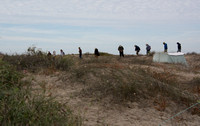 on a hikeon a hike
on a hikeon a hike
Baja California Sur, MX
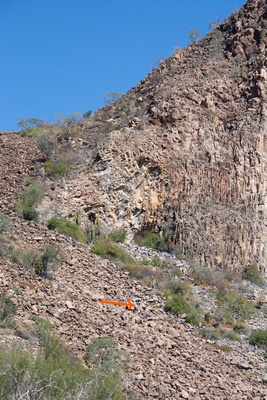 The group climbing to the pictographsThe group climbing to the pictographs
The group climbing to the pictographsThe group climbing to the pictographs
Between Rancho Santo Domingo and the Pictographs, 02/16/2023
In addition to our expedition leaders, there were sixteen of us who all came from different places, literally and figuratively. I could tell that others have also had experience guiding groups, not just from the fact that they told us they were teachers, wilderness guides, and park docents, but also from the way they helped act as group translators, people herders, and crossing guards. I was very impressed with their knowledge, skills, friendliness, and adventurous spirit, not to mention their athleticism. While some were under retirement age, the majority were above. While I was babying my recently injured hip, trying not to reinjure it walking in sand and on uneven pavement (fortunately it didn’t give me much grief), others were scampering over sand dunes and taking brisk walks into town. I skipped the arduous rock climb to the pictographs. The guide said it was easy, but Roseann warned us it was not. Several of us opted for a nature walk instead.
Field Arts
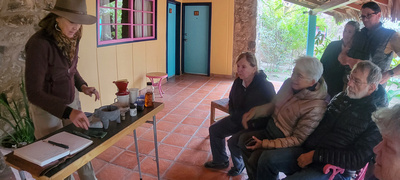 We had two whale talks by Mario, one each on the two nights in camp. They were excellent presentations, and I learned a few new things. Jonathan showed people how to use the binoculars. They lent us Swarovski Optics binoculars for the trip. Roseann has a wealth of knowledge, and I could tell that she wanted to share more than we had time for. She gave a demonstration and lesson on color mixing with watercolors. That was good for those who are newer to art. She showed us how she does her page layouts. In the field she showed how to measure tracks and talked about how to make plaster casts. On the last night, Roseann showed us how to make paint from natural pigments and binders. She used soil she collected while we were in the field.
We had two whale talks by Mario, one each on the two nights in camp. They were excellent presentations, and I learned a few new things. Jonathan showed people how to use the binoculars. They lent us Swarovski Optics binoculars for the trip. Roseann has a wealth of knowledge, and I could tell that she wanted to share more than we had time for. She gave a demonstration and lesson on color mixing with watercolors. That was good for those who are newer to art. She showed us how she does her page layouts. In the field she showed how to measure tracks and talked about how to make plaster casts. On the last night, Roseann showed us how to make paint from natural pigments and binders. She used soil she collected while we were in the field.
With all the activities, travel, talks, and socializing, we didn’t have much opportunity for our own journaling practice. However, I did have the opportunity to see other people’s perspectives on journaling.
Naturalists used to journal because cameras, cell phones, and other techniques were not available. They noted species, drew pictures, made field notes, and captured metadata such as location, weather, and time. These were done in the field as they went, or in their field camps. Modern nature journaling seems to be more of an artform. It includes quiet observation, contemplation, art, poetry, and a host of individual preferences. I asked a few people how they use their journal practice, and also observed what others were doing.
 On the last day we gave presentations to children and showed our journals (I did mine in Spanish, dredging up forgotten vocabulary and grammar). This was the best opportunity to learn from others.
On the last day we gave presentations to children and showed our journals (I did mine in Spanish, dredging up forgotten vocabulary and grammar). This was the best opportunity to learn from others.
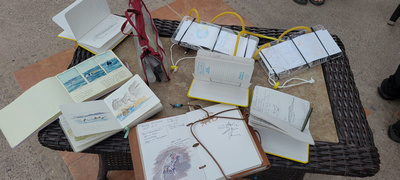 Group share
Some people took time in the evening to work on their journals from photos on their cell phones or from memory. Some did little to no journaling on the trip, but some people thought they would work from photos when they got home. Some did more writing, some did more art, some made quick spontaneous sketches and notes, some were more scientific, some artistic, some whimsical. It was a delight to see all the creativity, and I got an understanding of journaling in a new way.
Group share
Some people took time in the evening to work on their journals from photos on their cell phones or from memory. Some did little to no journaling on the trip, but some people thought they would work from photos when they got home. Some did more writing, some did more art, some made quick spontaneous sketches and notes, some were more scientific, some artistic, some whimsical. It was a delight to see all the creativity, and I got an understanding of journaling in a new way.
Seeing others work and how they use it gave me more insight into my own practice. I love beautiful journals such as Roseann’s, with scientific notes and beautiful pictures. She spends a lot of time in the field without electronics. She meticulously indexes her pages and captures metadata. She writes as much as she sketches, often in the evening or completing a page over several days. As a result, her journals are scientific and beautiful.
Without time in the schedule, I had to force myself to carve out some time to do some quick field sketches. Instead, I leaned into my naturalist skills. I use electronic means to aid in capturing my observations. I recorded my birds in the field in eBird. While I did not list every bird I saw, I wanted to capture at least one of every species I saw. I photographed my observations of some of the birds and insects for a record and for later identification.
 So many water crossingsSo many water crossings
So many water crossingsSo many water crossings
The drive from San Javier to Rancho Santo Domingo, 02/16/2023
It is hard to shoot from a moving car or boat, and I prefer to take my time for good shots, but for documentation purposes you take what you can get. I did get a few good quality shots. The camera captured metadata such as date and time. One of my cameras captured GPS. I captured field notes electronically and entered them on my phone as incomplete thoughts. I often wake up in the middle of the night or very early in the morning to capture my thoughts before the noise of the day begins. At home I go into the other room and write on the computer. In the hotel room or in the tent, I didn't want to disturb my roommate. It was too windy and cold to go outside, so I sometimes sat in the hotel bathroom at 3am to write my notes. I guess this is my form of journaling, but I won’t have a pretty book at the end of the day. Instead, I will have shareable and searchable observations. It will be shared in iNaturalist and my own website, and can be used in this blog.
I have gained a deeper understanding of field arts, what it is for others, and what journaling will be for me. I would like to continue my practice of field sketching for quiet contemplation, pleasure, and a casual pastime, but no longer have expectations of making a robust field journal as a naturalist. I am a digital person first.
Magic Moments
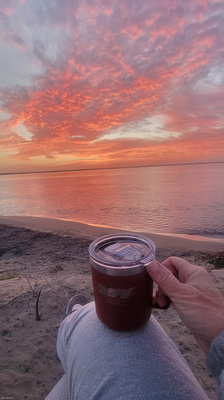 The Way to Start Every DayThe Way to Start Every Day
The Way to Start Every DayThe Way to Start Every Day
Magdelena Bay, BCS, 02/12/2023
I feel most like Kim when I am in the field with a small group of similarly interested people. Some of my favorite moments came when I decided to forego the main group activities and spend time alone or with a smaller sub-group of people. It gave me time to observe and think. I loved taking a walk up the hill and down the beach while the group did a trek over the dunes. I loved sitting on the boat and watching the Brown and Blue-footed Boobies, and sketching while others were out journaling in the cold water. I loved walking on the mudflats and exploring with just one or two other people. I loved the fabulous sunrises and sunsets, noting the rapidly changing colors.
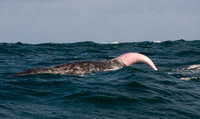 Pink FloydPink Floyd
Pink FloydPink Floyd
Magdelena Bay, BCS, 02/12/2023
We all shared the experience of the “Pink Floyd”, a rare thing to see. For those who don’t know to what I am referring, think about an excited male Gray Whale when he sees his lady love. I felt a strong connection and awe when the Humpback Whale came to each boat, out of what seemed to be curiosity.
I found a crab that looked like a rock in a tidepool and a lizard in a slit in a rock.
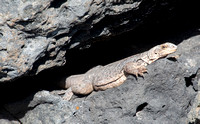 Monserrat Chuckwalla - Sauromalus sleviniMonserrat Chuckwalla - Sauromalus slevini
Monserrat Chuckwalla - Sauromalus sleviniMonserrat Chuckwalla - Sauromalus slevini
Isla Coronado, Baja California Sur, MX, 02/15/2023
I called others over to see. These were my magic moments of observation and discovery.
I concentrated on learning the finer differences in plovers in order to find my first Wilson’s Plover on the mudflats. I also enjoyed the surprise of finding a Semipalmated Plover amongst my plover photos only after I got home.
All these beautiful experiences and I barely scratched the surface. I know I will have to go back.
See my other blog posts for more "blah, blah, blah" and photos of each area we explored.
The Highlight Reel
Click here to see the highlights at your own pace. https://kimssight.zenfolio.com/baja_2023_highlights
Journal Pages
Click here to see the highlights at your own pace. https://https://kimssight.zenfolio.com/baja_2023_journal_pages
Next Post: Part 2 will focus on Magdalena Bay, Gray Whales, and Whale Camp. Part 3 will cover Isla Coronado, The Mountains, and Loreto and the Estuary.
Click here to see ALL my photos: https://kimssight.zenfolio.com/baja_feb_2023
Follow me on Facebook: https://www.facebook.com/KimMooreNaturalist/
]]>
Bahía Magdalena
We drove from Loreto across the mountains to Adolfo López Mateos. Along the way I saw my first Crested Caracara. Some of them swooped right in front of the vehicle. We got good looks, but not good photos. This is when I developed "Bird Tourrette's", abruptly shouting out bird names at random moments during the rest of the trip. Some from the group in another van said they saw a Harris’s Hawk, but alas, I missed it. The closer we got to the port, the more Ospreys we saw. There were many occupied platforms along the road. I even saw an Osprey on top of a cactus with a fish.
We got in pangas, the local fishing boats, to take us to Whale Camp on the barrier island, looking for whales along the way. Pangas met us at camp for the next day of whale watching, the tour of the Mangroves, and to take us back on the last day.
Whale camp was rustic, but tents were walk-in height and were appointed with cots, sleeping bags, and a solar lamp. A central dome was used for dinner and evening lectures. Food was delicious, prepared by the camp cook. A small tent, open on one side, afforded beautiful views when using the ‘office’ (aka pee buckets). Handwashing was with salt water, and showers were welcomed when we got back to the hotel in Loreto.
The tranquility of the camp, the amazing sunrises and sunsets, and one night of clear stars, and seeing whales from the beach made this a magic place.
Watch below or Click on this link to see photos and descriptions: https://kimssight.zenfolio.com/baja_2023_skies
Sand Dunes and Mangroves
There was sand. Sand dunes. Sand in the tents. Sand in clothes. It was unavoidable.
My cats would have loved the sandbox and rodents, that make burrows in the sand and leave tiny paw prints everywhere in camp. I saw a cute rodent in the dinner tent and it scampered away before I could get a picture. The cats would not have liked the coyotes. We only saw one distantly, but saw many prints in the sand at the beach and around the tents. I thought I heard them but the sound was so distant and muffled by the sound of wind and waves.
The wind and sand are constantly changing the shape of the barrier islands. I was surprised by the lack of birds on the beach. Apparently, the constant new sand doesn't allow time for invertebrates to settle, and consequently no birds were there to eat them.
The vegetation on the dunes is all low with many vines. I did see a butterfly, but the strong winds made it hard to find insects.
Across the bay from camp, there were the Mangroves. We spent about an hour exploring them. I was surprised at what I thought was a low number of birds. I guess it is relative. One of the other boats thought there were a lot. Did they see more, or did we have a different personal baseline? Most of the birds are the same as those we have in Southern California in the winter. American Oyster Catcher is rare in California but does occur occasionally. White Ibis is extremely rare in California but common in Baja. It was a lifer for me.
Watch below or Click on this link to see photos and descriptions: https://kimssight.zenfolio.com/baja_2023_mag_bay
Gray Whales
Whales are just going about their mundane business, making babies, having babies, snacking, sleeping, playing. We come to watch them. What if whales came to our hotel to watch us eat, communicate, and, if lucky, catch us in the act. Would they approach slowly so as not to scare us or make us stop our activities? Our guides were very respectful of the whales’ space, but a few of the other boats approached rapidly or got too close. At times, I just wanted to avoid interfering with them, and breaking up couples in love. I did delight in seeing them, although you mainly see just a body part at a time.
The inlet to the bay from the Pacific could be very rough. Inside the bay, in front of our camp, it was very calm, even on very windy days. In general, we saw the mating activity take place in the deeper rougher water, and the mom’s and calves in the calmer parts of the bay. The guides also knew where the whales would be, based on the current from the tides going in and out of the channel.
When the whales were mating it was hard to distinguish which whale was which and what body part we were seeing. Two or three at a time, they were rolling around in courtship or just trying to get into position. Courtship could last over an hour. The tail was often sideways acting as a rudder. There was one body part we could identify and saw briefly. On one occasion we got great looks at, what the guides called, the "Pink Floyd".
The babies are big, but their skin has few if any of the barnacle patches that are characteristic of the Gray Whales. We would see a baby come up near the boat, and then mama could come between us and the baby. The mamas are HUGE. The babies came up for air more frequently than the patient mothers.
The babies seemed to be playing, but that is their way of developing the skills they need for their future journey north. I saw one baby with mud in its mouth. Apparently, it had been at the bottom practicing feeding.
Watch below or Click on this link to see photos and descriptions: https://kimssight.zenfolio.com/baja_2023_whales
Next Post: Part 3 will cover Isla Coronado, The Mountains, and Loreto and the Estuary.
Click here to see ALL my photos: https://kimssight.zenfolio.com/baja_feb_2023
Follow me on Facebook: https://www.facebook.com/KimMooreNaturalist/
]]>
After three days of exploring the sand dunes, mangroves, and Gray Whales of Magdalena Bay, we went back to Loreto for day trips to Isla Coronado, San Javier and the mountains in search of Pictographs, and finally short walks on the beach and mudflats at the Estuary in Loreto.
Isla Coronado
We took boats out of Loreto and went to Isla Coronado. The intent was to snorkel and use specially made journals to document sea lions while under water. It sounded like fun on paper, however, the weather and water were cold and the sea lions were big. I am amazed at the adventurous souls who did it. I stayed on the boat along with a few other (scared or sane?) people. I documented the experience with my camera and did some field sketches. I delighted in the sea birds on guano drenched ledges on the rocks. Thank you, Blue-footed Booby and Yellow-footed Gull, for names that accurately describe your feet.
After the wet and shivering people got back on the boats, we went around the island to a beach for lunch and exploration. There was a sandy beach, some tidepools, and a boardwalk inland to see the habitat. I started photographing butterflies and was surprised to find Wandering Skippers and Ceraunus Blues on the same plants near the shore. I see Wandering Skippers in our local wetlands. I have seen the Ceraunus Blues inland in the mountains in more chaparral and desert areas. On this little island the desert meets the shore. A sea star and a chuckwalla were not far apart. Some of these were species and sub-species specific to the islands.
Leave me here for a week.
Watch below or Click on this link to see photos and descriptions: https://kimssight.zenfolio.com/baja_2023_isla_coronado
Mountains
I was surprised by the amount of water in the washes. We drove through several stream-crossings to get there. I was also surprised by official no passing signs along a narrow dirt lane. The driver said the road was supposed to be constructed as a pass from one side of the mountain to the other. The signs were installed, but the roadwork was never completed. I was surprised by the number of vehicles we encountered on our walk.
I was familiar with the birds we saw. We have them in our area too, but did I did see a special Xantus’s Hummingbird, a lifer for me. Here the reptiles, butterflies, other insects, and plants looked familiar but different. We have similar species, so I could identify the families, but not the species. I had to look those up, and also get some help from iNaturalist to identify those when I got home.
I want to spend more time in the mountains.
Watch below or Click on this link to see photos and descriptions: https://kimssight.zenfolio.com/baja_2023_mountains
Loreto Beach and Estuary
The hotel we moved to for the last night was on the beach and next to the estuary. When the tide was out, there were large mudflats. I enjoyed a few short walks on them accompanied by a few others. Although there weren’t as many birds as I expected in terms of numbers, the variety was very good. Some special birds included Wilson’s Plover, White Ibis, and Little Blue Heron. I think I have burned plover differentiation into my brain. There were Snowy, Wilson’s, Black Bellied, and one Semipalmated at far distances in the mud. It was difficult to pick them out. A scope and better lighting would have helped. Any normal person would have overlooked them, but I was determined to find my first Wilson’s Plover. Once I learned the subtle differences, they were easier to pick out. I saw a Yellow-footed Gull try to grab an octopus which was wrapped around the beak of a Great Blue Heron that was flying to get a way. A little less dramatic, it was also interesting to look for shells and tracks in the mud. I doubt I’ll be able to determine which bird made which track, but I paid more attention after our tracking lesson. I did see a snail track and the snail that made it.
Watch below or Click on this link to see photos and descriptions: https://kimssight.zenfolio.com/baja_2023_loreto
Follow me on Facebook: https://www.facebook.com/KimMooreNaturalist/
]]>
The storms continued bringing much needed rain. This worked out well for me as I shifted to indoor activity. I took an on-line wasp id course. It was very well run, and the people were great. I sat back in a reclining chair with a cup of coffee, and a cat on my lap, and soaked in what I could from the lectures. Much was far more detailed than my interest, and I'm not sure how much I will retain, but I very much enjoyed it. I enjoy hearing from scientists dedicated to their field of research, and I think entomologists are the most fun.
Between the rains, I did some small walks to see some of the wintering 'good' birds: Cape May Warbler, Eastern Phoebe, Lewis's Woodpecker, Varied Thrush, Townsend's Solitaire, and my favorite wintering Short-billed Gull (formerly Mew Gull, which I think is a better name). The rain resulted in fungi and animal tracks. At the Wetlands, some human tracks looked like toes of Big Foot (see the photo). Also, a coyote must have crouched down in the mud. In addition to paw prints there were fur prints.
I have also been planning for a field arts trip to Baja. I wrote a separate blog post on my preparations. https://kimssight.zenfolio.com/blog/2023/1/preparing-and-paring. Next month I will report back.
A mini-pelagic trip out of Redondo Beach was pleasant, and we saw the expected birds. Most were far from the boat. However, the gulls love the steady flow of popcorn tossed to attract a flock, and I had fun photographing them. I love to catch them as they land in feet down positions.
Get outside. It's good for you!
Follow me on Facebook: https://www.facebook.com/KimMooreNaturalist/
|
How to view photos with species names:
|
Watch the slideshows or click on the links to look through at your own pace. Links open in a new tab.
Local Stuff: https://kimssight.zenfolio.com/new_jan_2022
Los Cerritos Wetlands: https://kimssight.zenfolio.com/hellman_jan_2023
Pelagic Trip: https://kimssight.zenfolio.com/pelagic_trip_jan_2023
]]>
- We will be travelling light, and are allowed only one small duffle and a day pack.
- We will have no phone service, WIFI, nor electricity for part of the trip.
- Practice, prepare, and experiment ahead of time to make it easier in the field .
Challenge accepted. While it makes my head explode a little bit, I am finding it is part of the fun of the trip to pull things out of the recesses of my closets and create a compact travel kit. I have always been better at collecting gear than using it. I just knew it would come in handy someday; well, someday is now!
CLOTHES
Eight days, hot weather, cold at night, rain gear, swim wear, no laundry facilities, one carry-on duffle. I know I will use only three items when I am there. The problem is I don't know which three until I get there, and that is why I have to bring too much. I have already tried numerous articles of clothes from my closet and drawers, and I have a pretty good idea of what I will pack. Don't expect anything stylish. I'll wait until the last minute before I make my final decisions. I'm sure I will bring too much and all the wrong stuff. Yet clothes are easy compared to the fun stuff.
ART SUPPLIES
How is this going to fit in my day pack?
 What to take???!!!??? This won't all fit.How is this going to fit in my backpack?
What to take???!!!??? This won't all fit.How is this going to fit in my backpack?
Which pens, pencils, watercolors, journal(s?), kits,....should I take. I pulled out all my supplies and experimented. How to carry/organize them? Once it is pared down, I need to be comfortable with the limited choice in the field.

Pencil Case: I chose one that would force me to limit what I brought. I dug through my piles of past supplies, that I have kept around 'just in case', and I found this one that I once used for a colored pencil drawing class.
Watercolor pencils: I found a set of Derwent watercolor pencils I once bought at someone's suggestion. I think I used them once, but I think they may come in handy. I tested the colors and chose ones that would fit in my case. I had to leave some out. They can be easily applied in the field and supplemented with paint.
Colored Pencils: I decided to bring a few non-soluble colored pencils that I can use not so much for color, but to sharpen edges of my drawings.
Pens: I tested out quite a few pens. You wouldn't think it would be that hard. First I had to find ones that aren't dried out, and test thickness and smoothness. I decided not to take my brush pens (e.g. Tombow). While I like these very much, I have had past experiences when traveling with them where they have somewhat exploded and got ink everywhere . Maybe it is altitude changes in the plane, but whatever it is, I don't want to have to deal with the potential mess. I went with black Staedtler pigment liners .7, .3, .05. I also have my trusty white gel pen.
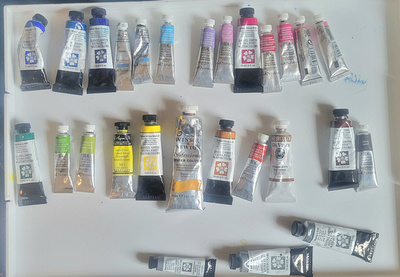 I'm taking all the colors, but not in the tubesPayne's Gray (DS)
Neutral Tint (DS)
Shadow Violet (DS)
Sepia (WN)
Pthalo Red Shade (DS)
Indigo (WN)
Ultramarine (DS)
Antwerp Blue (WN)
Pthalo Green Shade (DS)
Manganese Blue (WN)
Burnt Umber (DS)
Burnt Sienna (WN)
Raw Sienna (DaVinci)
Quinacridone Gold (DS)
Quinacridone Gold (WN)
Hansa Yellow Medium (DS)
Lemon Yellow (Aqua)
Olive Green (WN)
Sap Green (WN)
Perylene Green (DS)
Quinacridone Pink (DS)
Quinacridone Magenta (WN)
Rose Madder (WN)
Alizarine Crimson (WN)
Opera Rose (WN)
Cobalt Violet (WN)
Windsor Violet (WN)
I'm taking all the colors, but not in the tubesPayne's Gray (DS)
Neutral Tint (DS)
Shadow Violet (DS)
Sepia (WN)
Pthalo Red Shade (DS)
Indigo (WN)
Ultramarine (DS)
Antwerp Blue (WN)
Pthalo Green Shade (DS)
Manganese Blue (WN)
Burnt Umber (DS)
Burnt Sienna (WN)
Raw Sienna (DaVinci)
Quinacridone Gold (DS)
Quinacridone Gold (WN)
Hansa Yellow Medium (DS)
Lemon Yellow (Aqua)
Olive Green (WN)
Sap Green (WN)
Perylene Green (DS)
Quinacridone Pink (DS)
Quinacridone Magenta (WN)
Rose Madder (WN)
Alizarine Crimson (WN)
Opera Rose (WN)
Cobalt Violet (WN)
Windsor Violet (WN)
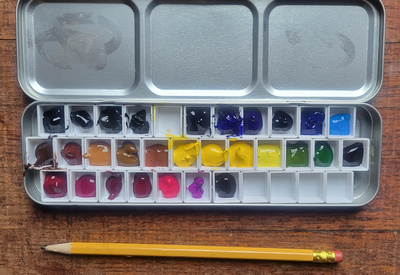 All the colors, but in a small sizeTOP ROW (L - R)
Payne's Gray (DS)
Neutral Tint (DS)
Shadow Violet (DS)
Sepia (WN)
Pthalo Red Shade (DS)
Indigo (WN)
Ultramarine (DS)
Antwerp Blue (WN)
Pthalo Green Shade (DS)
Manganese Blue (WN)
MID ROW (L-R)
Burnt Umber (DS)
Burnt Sienna (WN)
Raw Sienna (DaVinci)
Quinacridone Gold (DS)
Quinacridone Gold (WN)
Hansa Yellow Medium (DS)
Lemon Yellow (Aqua)
Olive Green (WN)
Sap Green (WN)
Perylene Green (DS)
BOTTOM ROW (L-R)
Quinacridone Pink (DS)
Quinacridone Magenta (WN)
Rose Madder (WN)
Alizarine Crimson (WN)
Opera Rose (WN)
Cobalt Violet (WN)
Windsor Violet (WN)
All the colors, but in a small sizeTOP ROW (L - R)
Payne's Gray (DS)
Neutral Tint (DS)
Shadow Violet (DS)
Sepia (WN)
Pthalo Red Shade (DS)
Indigo (WN)
Ultramarine (DS)
Antwerp Blue (WN)
Pthalo Green Shade (DS)
Manganese Blue (WN)
MID ROW (L-R)
Burnt Umber (DS)
Burnt Sienna (WN)
Raw Sienna (DaVinci)
Quinacridone Gold (DS)
Quinacridone Gold (WN)
Hansa Yellow Medium (DS)
Lemon Yellow (Aqua)
Olive Green (WN)
Sap Green (WN)
Perylene Green (DS)
BOTTOM ROW (L-R)
Quinacridone Pink (DS)
Quinacridone Magenta (WN)
Rose Madder (WN)
Alizarine Crimson (WN)
Opera Rose (WN)
Cobalt Violet (WN)
Windsor Violet (WN)
Watercolors: After a journaling class I took in the Sierras, I created my own very small watercolor kit that fit eight colors in a mini-Altoid tin. I have been very happy with it. So now is it the time to change it? While it was very small and useful, I have decided to add a few more colors that might be better suited to Baja. It feels like going from my first box of crayons and lusting after the deluxe box with 64 colors and a built-in sharpener. I bought some inexpensive 1/2 pans from Amazon, and put them in an old metal pencil box from my rarely-used-supplies collection. I left some spots empty to be filled with sample colors that the leader may bring. Yes. All these colors can come with me now to capture the colors of Baja. They are condensed into my travel pallet.
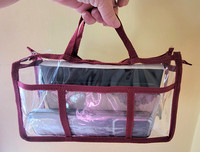 My Art Kit (2.2 lbs)
The journal I've used most often is an 8x5.5 watercolor by Strathmore, but I've always wanted to try a larger journal. I tried Stillman & Birn 7.5x7.5 mixed media. I was discouraged by my first attempt with water brushes in my new journal. I have trouble controlling the water, and the mixed media paper is far less forgiving than watercolor paper. I like the larger size, and I might pack it in my duffle bag as a backup, but I decided to go back to the Strathmore. Also, the Strathmore fits better in a smaller kit.
My Art Kit (2.2 lbs)
The journal I've used most often is an 8x5.5 watercolor by Strathmore, but I've always wanted to try a larger journal. I tried Stillman & Birn 7.5x7.5 mixed media. I was discouraged by my first attempt with water brushes in my new journal. I have trouble controlling the water, and the mixed media paper is far less forgiving than watercolor paper. I like the larger size, and I might pack it in my duffle bag as a backup, but I decided to go back to the Strathmore. Also, the Strathmore fits better in a smaller kit.
CAMERA GEAR
 I want to take them all! Alas, I have no Sherpa.The big lens is for birds. Leaving it home will make me sad, but save my back.
While the Bootcamp doesn't focus on photography, I do. I can't go anywhere without a camera. I want to bring them all, but alas, that is not feasible.
I want to take them all! Alas, I have no Sherpa.The big lens is for birds. Leaving it home will make me sad, but save my back.
While the Bootcamp doesn't focus on photography, I do. I can't go anywhere without a camera. I want to bring them all, but alas, that is not feasible.
 Nikon D7100 with Tamron 18-400 lens and Olympus TG5
I will bring one camera (Nikon D7100) with a general purpose lens (Tamron 18-400) for birds, and another pocket camera (Olympus TG5) for macro. The worst of both worlds. Expect some whining when I see my first bird, but there is no way I can take the big lens. In the depths of my closet, I found a spindly but lightweight tripod that someone must have given me. I have never used it, but will take it in case I get a chance to use it at night. I'll leave the heavier one, that I actually use, at home. The small pocket-sized camera is supposed to have a good macro setting and to work underwater, but I have never been very successful with it. I am trying to work with it before the trip. I hope I can get past the weight vs quality decision I have to make on my cameras.
Nikon D7100 with Tamron 18-400 lens and Olympus TG5
I will bring one camera (Nikon D7100) with a general purpose lens (Tamron 18-400) for birds, and another pocket camera (Olympus TG5) for macro. The worst of both worlds. Expect some whining when I see my first bird, but there is no way I can take the big lens. In the depths of my closet, I found a spindly but lightweight tripod that someone must have given me. I have never used it, but will take it in case I get a chance to use it at night. I'll leave the heavier one, that I actually use, at home. The small pocket-sized camera is supposed to have a good macro setting and to work underwater, but I have never been very successful with it. I am trying to work with it before the trip. I hope I can get past the weight vs quality decision I have to make on my cameras.
PULLING IT TOGETHER
The next hurdle is packaging it altogether in a way I can carry it. I will have different needs at different times in the trip: what I can carry on the plane, what I need at the hotel and in town, what I can carry and need at camp, what I need for day trips, etc. Adding a few light-weight items is like buying just a few inexpensive items on Amazon; just one more small thing, and then then suddenly it adds up! Weight has been even more important for me these days as I have been having some low back and hip/leg problems.
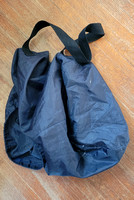 Nylon stuff sack is my new day pack
My first attempt at a daypack was a well constructed camera backpack with lots of pockets and compartments. But it was eleven pounds with art supplies, cameras, water bottle, a few snacks, and a lightweight collapsible stool I want to take. I did a trial run field test #1 on the urban nature trail near my house, walking briskly for a 1/2 mile and slowly on the return trip, stopping to journal a couple of times along the way. The added weight made my hips hurt and particularly the next day.
Nylon stuff sack is my new day pack
My first attempt at a daypack was a well constructed camera backpack with lots of pockets and compartments. But it was eleven pounds with art supplies, cameras, water bottle, a few snacks, and a lightweight collapsible stool I want to take. I did a trial run field test #1 on the urban nature trail near my house, walking briskly for a 1/2 mile and slowly on the return trip, stopping to journal a couple of times along the way. The added weight made my hips hurt and particularly the next day.
Back to square one. I found a nylon camping stuff-bag with a thick strap that can be worn over the shoulder or cross-body. It eliminates 2 pounds, packs well, and distributes the weight. Not as fashionable as the backpack, but this will be my daypack. I will carry the camera on my other shoulder and take a proper camera bag to travel with and to store it in when not in use. Field test #2 and a little ibuprofen seems to bear out this solution.
 Wheels to carry the heavy stuff on the plane.
Wheels to carry the heavy stuff on the plane.
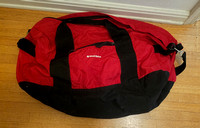 The duffle for the boat and campI am getting reuse from my old sailing bag
Sometimes I wake up in the morning with a brilliant idea. Well, maybe not brilliant, but it occurred to me that the longest distance I have to lug the sum total of all my gear, is through the airports. Last time I traveled, that was how I got in all my steps for the day. I will put all my heaviest gear and the empty duffle in a wheeled carry-on bag. I can leave the bag and excess gear stored at the hotel while I take just the duffle and day pack for the camping portion of the trip. The duffle only has to be carried from the hotel to the van and from the van to the boat and then from the boat to the camp. I am assuming those are all short distances.
The duffle for the boat and campI am getting reuse from my old sailing bag
Sometimes I wake up in the morning with a brilliant idea. Well, maybe not brilliant, but it occurred to me that the longest distance I have to lug the sum total of all my gear, is through the airports. Last time I traveled, that was how I got in all my steps for the day. I will put all my heaviest gear and the empty duffle in a wheeled carry-on bag. I can leave the bag and excess gear stored at the hotel while I take just the duffle and day pack for the camping portion of the trip. The duffle only has to be carried from the hotel to the van and from the van to the boat and then from the boat to the camp. I am assuming those are all short distances.
PRACTICE, PRACTICE, PRACTICE
It is important to get to know one's equipment before fumbling in the field. Almost everything I am taking is a scaled down different version of what I use at home, or is new to me in some way. I am glad to have this opportunity to try new things. Nothing beats experience, and the only way to get it is to practice, practice, practice. This takes a lot of time, and trial and error, and that is just for the gear. I'm also trying to become familiar with what nature I might see along the way. I started a small wish-list of birds. It is not a birding trip, but one can hope. Now that I think I know what I am taking, I will take some time over the next week to practice with the journal and little camera.
PREPARED AND PARED DOWN
And now I've got my kit together. The whole kit and caboodle. I haven't packed everything yet, but at least I have a plan. I think I've made the best choices I can for now. I am hopeful that my traveling companions will not judge me harshly for not being a trend setter, nor for looking a bit ripe towards the end of the trip. There is still time to change my mind, but I think my head will explode if I have to make any more decisions.
So how does it all work out? More about the trip next month.
ADDENDUM:
In last minute packing, since I published this blog post, I did a little more thinking and paring down. I decided to take more warm clothes, which necessitated making hard choices. I decided to leave out the small tripod. It might be too windy for night photography anyway, and there were only two nights possible. I also left out the small stool. A chair or rock will do to sit on, and I will forgo the opportunity for different vantage points.
I am taking a 5x5 square watercolor journal instead of the larger mixed media. This will be my primary. I also added a few brown micron pens and took out many of the colored pencils. The paint will be enough for color.
Follow me on Facebook: https://www.facebook.com/KimMooreNaturalist/
]]>
I start the new year, tomorrow, with a birding event I coordinate. Preparation involves planning a route around parks in Long Beach, and looking through the eBird hotspots. While I was at it, I decided to make it a more thorough documentation project which might be helpful to others in the future. I created a downloadable pdf of the eBird hotspots and an online Google Map with information such as parking and bathrooms about each place.
I wrapped up my year of birding with some beautiful and unusual birds. Early in the month, in the marina at Long Beach, there were Black Swans, which are native to Australia and Tasmania. Clearly these are released birds from someone's collection. They have been documented in Orange County over the past few years and now in LA County. These birds are very large and they have beautiful red bills.
Some vagrant birds got lost in migration and turned up locally. Every year a few show up here and there. A Painted Redstart has been coming to a local birder's feeders. How lucky is he. It is a striking red and black bird. I ran out to a local park where an East Coast Phoebe was reported on Christmas Eve. Compare it to our local Black Phoebe. Flycatchers are some of my favorite birds because they are generally bold little creatures, darting out from the trees to the ground. Although it is drab in color, this one was fun to watch. I then continued with my last minute preparations for Christmas.
The most exciting bird was a young Snowy Owl. They are only occasionally seen south of the Canadian border and always cause a stir when seen in the states, usually northern states. This bird had been reported in San Pedro near the ports in November, but disappeared before it could be seen by the birding community. Then, just a few days ago, it turned up in a residential area in Orange County on someone's roof. Literally hundreds of birders and non-birders alike have come to see it. It made the Orange County Register and other local newspapers, and then several local news programs. My back is even seen briefly on ABC7 news. There has been much debate and discussion on the mystery of how it got here. Did it fly on it's own? Did it hitch a ride on a ship? Not to worry, Fish and Wildlife has seen it and says it is healthy. Regardless of how it got here, it seems to be content to hunt at night and hang out with the paparazzi during the day. Hopefully it will migrate back as the days get longer and the weather warmer. Until then, another reason to keep your cats indoors.
After all that, my wetlands survey was very uneventful, and my only insect reports were a very late-in-the-year Wandering Glider dragonfly, and a Brown Marmorated Stink Bug that amused my cats before I sent it back outdoors.
Lastly, I will wrap up the year with some of my stats on iNaturalist. https://www.inaturalist.org/stats/2022/kimssight
Wishing you and your family a healthy, happy 2023!
Follow me on Facebook: https://www.facebook.com/KimMooreNaturalist/
|
How to view photos with species names:
|
Watch the slideshows or click on the links to look through at your own pace. Links open in a new tab.
Local Stuff: https://kimssight.zenfolio.com/new_dec_2022
Los Cerritos Wetlands: https://kimssight.zenfolio.com/hellman_dec_2022
]]>
I remarked on the cold, and not to rub it in to folks in other parts, but we still have butterflies and dragonflies. So maybe it isn't that cold after all. Birds have not been too remarkable. I didn't go out as much because I am trying to give a sore hip a rest. I chased (looking for a particular bird found by someone else) a Swamp Sparrow at Colorado Lagoon. I have seen them in Long Beach, but not every year. I also chased the Tundra Swan, more rare, on the San Gabriel River. That is only the second one I've seen, my first in LA County, and marks my 400th LA County species. I think that qualifies me as an intermediate birder. Sometimes what is notable is not the rare bird, but what is missing. While there have been a high number of 'rare' vagrants showing up this year, I think some of the numbers of common birds are down. Where are all the American Pipits? There were several places I would see large flocks locally in winter, but I don't think I've seen a single one in Long Beach this month.
After so many years of bird surveys at the Los Cerritos Wetlands, one would think there is nothing surprising. Yet this month we were surprised by the level of the water. This was the most water we have seen on the property. November is known for very high tides, and the area does have tidal water, but this was remarkably high. It was quiet, in terms of birds. We did have a Northern Flicker which elicited some discussion as to sub-species. I have concluded that it is an intergrade. Hybrids are a cross between two species. Intergrades are between sub-species. We also saw a very healthy looking coyote. "Nice Doggie".
I had a wonderful trip with two friends to the Salton Sea for three days/two nights. The number of birds was amazing, particularly the literally multiple thousands of Snow Geese. I have a link to some highlight photos below. For a more extensive write-up, I refer you to our trip report in eBird. https://ebird.org/tripreport/85183
In honor of Thanksgiving, I drew a turkey portrait in colored pencil. They are very colorful. I also made some colorful cat art. I continued making art at a more enjoyable pace than last month. A friend gave a demo of art journaling techniques at Rancho Los Cerritos. A most enjoyable talk. I sketched the tree behind him while listening.
Happy Nature Walks.
Follow me on Facebook: https://www.facebook.com/KimMooreNaturalist/
|
How to view photos with species names:
|
Watch the slideshows or click on the links to look through at your own pace. Links open in a new tab.
Local Stuff: https://kimssight.zenfolio.com/new_nov_2022 Los Cerritos Wetlands: https://kimssight.zenfolio.com/hellman_nov_2022
Salton Sea Highlights: https://kimssight.zenfolio.com/best_of_salton_sea_nov-2022
In 2019 I joined the Inktober Challenge, a month-long art challenge that is focused on improving skill and developing positive drawing habits. This is big on the internet and in art groups. Since then, more challenges have popped up based on the premise of doing art every day in October. One nature group posted the Birdtober Challenge. Every day for the month, you create a piece of art based on the prompts provided and post it online. That sounded like a good idea at the time, and I suppose it was, but after the first couple of days it became more of a chore. When I made more time (3 to 6 hours!), the work came out better. Can you tell which ones? On many days I didn't start until very late at night. I forced myself to JUST DO SOMETHING, anything. The results were mediocre, but that was part of my personal challenge just to be ok with that. I guess I could have quit after a few days as many do, but that is not me. Once I let go a bit, I found creativity even if only in 10-20 minutes before going to bed. I let go of fear of ruining a piece. I let go of judging the quality. I realized I can either fix it or scrap it and start again. It's not a big loss. I started to think of each day as a chance to experiment with my art supplies. I tried a few techniques that I had wanted to get to, but hadn't made the time. It was fun when I focused on the playing and not the result. Creativity starts with an idea but may end with something completely different. Surprise endings are fun. Don't ask me to do any other challenges for a while. You can see all my bird themed creations below. Any favorites?
Locally, there were some warblers gone off course in migration, notably east coast migrants Ovenbird, Blackpoll Warbler, and Blackburnian Warbler. Look closely at some of the Blackburnian photos and you will see that it was photobombed by a large mantid. As if these weren't exciting enough, a Wood Warbler showed up. For those who don't know, the excitement is that while this bird is common in Europe and is a trans-Siberian migrant, it has turned up in records in Alaska only eleven times. This was the first time one was recorded in the lower 48 states. I was not the one to find it. My friend Brad has permanent status from that find. Now you may ask, what is it doing here. Catching flies is all I know. About 100 people showed up to see it on the first day, and it stuck around for several more days with multiple hundreds of people coming from all around "twitching" to see it, including several from other states. For me, seeing all the people is part of the total experience. The younger birders were hopping fences to try to get a better look when it flew over a fence into the neighboring cemetery. This must be the 'rarest' bird I've seen. And best of all, this was just a mile and a half from my house.
The hills were very dry, and the day was cool for my butterfly count, so the numbers were low. Of course I don't limit myself to butterflies, although I do try to stay on task. One of my favorite spiders, Banded Argiope (Argiope trifasciata) was abundant. We also amused ourselves trying to identify scat, mostly Mountain Lion I think.
Happy Nature Walks.
Follow me on Facebook: https://www.facebook.com/KimMooreNaturalist/
|
How to view photos with species names:
|
Watch the slideshows or click on the links to look through at your own pace. Links open in a new tab.
Local Stuff: https://kimssight.zenfolio.com/new_oct_2022
Butterfly Survey Irvine Ranch: https://kimssight.zenfolio.com/irc_oct-2022
Birdtober: https://kimssight.zenfolio.com/birdtober_2022
I often feel the need to keep busy, accomplish things, and strive to be better. I keep lists. I use iNaturalist and eBird to list what I see on a walk. This month I added to my life list of birds Black-rumped Waxbill, Zebra Finch, (both escapees), Least Storm Petrel, and a few birds on my trip to New York. I also added some rarities to my year list, Canada Warbler (an east coast bird) and Dickcissel. A Pigeon Guillemot and Red Phalarope were welcome rarities on a pelagic trip. Although it is my nature to keep lists, stay organized, and keep busy, I don't always like the way I feel when I get too deep into list mode. Sometimes I have to slow down. When I write my blog each month, it gives me time to reflect on what I've seen and maybe take it in a little more slowly and deeply.
It can be a struggle for me to just chill without the need to set goals and accomplish things. I saw a meme that said "Procrastination is totally a good thing. You always have something to do tomorrow, plus you have nothing to do today." So for next month I have set a goal to do less, be mediocre, and be ok with that. The first part is the easier, the being ok with that is more of a struggle. I'll see if I can accomplish that goal, and check it off my list.
Happy Nature Walks.
Follow me on Facebook: https://www.facebook.com/KimMooreNaturalist/
|
How to view photos with species names:
|
Watch the slideshows or click on the links to look through at your own pace. Links open in a new tab.
Local Stuff: https://kimssight.zenfolio.com/new_sep_2022
Pelagic Birding out of Marina del Rey: https://kimssight.zenfolio.com/pelagic_sep_2022
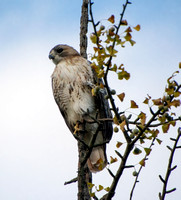 Last year it worked out perfectly, and I saw many species. This year I was a little off in my timing. Warblers come in waves, but I guess I hit a trough. Between visits with family and friends, I only got out one evening into Central Park with a New York Audubon group. The group was very impressed with a Red-tailed Hawk. They speculated about whether this was the famous New York City "Pale Male". It was getting dark and it was a slow day. Because it was late, the rats were starting to come out. They are not as cute as the squirrels. It is hard to photograph the birds as they hide in dense foliage or high in the trees. Add dusk and it is nearly impossible. Also, I didn't bring my long lens and sometimes only had my cell phone.
Last year it worked out perfectly, and I saw many species. This year I was a little off in my timing. Warblers come in waves, but I guess I hit a trough. Between visits with family and friends, I only got out one evening into Central Park with a New York Audubon group. The group was very impressed with a Red-tailed Hawk. They speculated about whether this was the famous New York City "Pale Male". It was getting dark and it was a slow day. Because it was late, the rats were starting to come out. They are not as cute as the squirrels. It is hard to photograph the birds as they hide in dense foliage or high in the trees. Add dusk and it is nearly impossible. Also, I didn't bring my long lens and sometimes only had my cell phone.
 I walked with a friend from the old Penn Station at 34th Street down the High Line to Little Island at 14th Street. The High Line is a lovely urban park built on an old elevated train track. It features greenery and sculptures along the walk. The architecture of some of the buildings is also like sculpture. I saw a Black-throated Green Warbler on the High Line near the Hudson Rail Yard. Little Island is relatively new. It is a small island constructed on pillars off 14thStreet in the Hudson River and connects with a bridge. I saw a Northern Mockingbird there. We finished with a quick visit to Chelsea Market, a major indoor food marketplace on 15th Street in the old Meat Packing District.
I walked with a friend from the old Penn Station at 34th Street down the High Line to Little Island at 14th Street. The High Line is a lovely urban park built on an old elevated train track. It features greenery and sculptures along the walk. The architecture of some of the buildings is also like sculpture. I saw a Black-throated Green Warbler on the High Line near the Hudson Rail Yard. Little Island is relatively new. It is a small island constructed on pillars off 14thStreet in the Hudson River and connects with a bridge. I saw a Northern Mockingbird there. We finished with a quick visit to Chelsea Market, a major indoor food marketplace on 15th Street in the old Meat Packing District.
While my timing on the birds was off, it did seem to be the peak of Spotted Lanternfly season. I'm sure East Coast people are very familiar with them, a highly invasive insect from Asia that destroys agriculture crops. They aren't actually flies, but bugs. They are about an inch long, and I think they have a rather pretty pattern in black and white and pink.
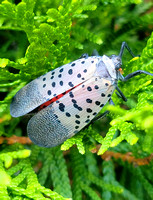 Apparently there has been a major public service campaign in the city to stomp on them. I guess more people like wine (one of the crops they destroy is grapes) more than insects. I saw crushed bodies everywhere (that's of insects, you have to be specific in NY). New Yorkers have a reputation for being fast walkers going places with purpose. I saw people walk down the street, swerve abruptly, and stamp with zeal. Some seemed to have a civic minded purpose, some had the attention of gamers, and some had a fascinated cringe. I could not stomp them. I understand the reason, but I felt bad for the little creatures. I wonder what the longer-term impact will be to the population. I'm sure everyone hopes it helps control the pest, but what will the unmeasurable impact be to the human psyche. Will people be more likely to kill all insects? Will children delight in killing small creatures? Or will people become more understanding and fascinated by nature and our interconnection with them?
Apparently there has been a major public service campaign in the city to stomp on them. I guess more people like wine (one of the crops they destroy is grapes) more than insects. I saw crushed bodies everywhere (that's of insects, you have to be specific in NY). New Yorkers have a reputation for being fast walkers going places with purpose. I saw people walk down the street, swerve abruptly, and stamp with zeal. Some seemed to have a civic minded purpose, some had the attention of gamers, and some had a fascinated cringe. I could not stomp them. I understand the reason, but I felt bad for the little creatures. I wonder what the longer-term impact will be to the population. I'm sure everyone hopes it helps control the pest, but what will the unmeasurable impact be to the human psyche. Will people be more likely to kill all insects? Will children delight in killing small creatures? Or will people become more understanding and fascinated by nature and our interconnection with them?
If you see a young well-dressed person carrying a briefcase, but appearing to relive the childhood fun of playing hopscotch, they are probably killing lanternflies.
Click on the link to see more photos: https://kimssight.zenfolio.com/nyc-2022
Some of my past life as told by T-shirts.
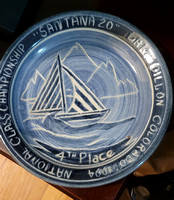
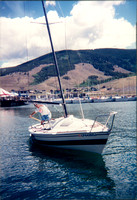
Some of you know that I used to sail and race. This was a hobby for about ten plus years while I was working. While I raced on several different boats, some of my favorite times were when I was just learning. I worked the bow on a two or three person crew on a Santana 20. This was 'one-design'. All the boats in the class were the same. We had many local wins for which there were many T-shirts, but the only one I kept was for 1994 Nationals in Colorado. Lake sailing was very different from the Southern California Coast. We were proud to come in 4th.
In 2011 my husband and I, along with another couple, crewed for Jean and Scott Adams on the Marina del Rey to Puerto Vallarta Race in the cruising class on their 58' sloop. The details are a little fuzzy now, but I know we sailed for several days and nights stopping in Turtle Bay, Magdalena Bay, Cabo, and Puerto Vallarta. It was an amazing trip with dolphin and whales along the way. I don't remember how we finished. This was one leg of a round the world cruise for Scott and Jean. Unfortunately it ended tragically off the coast of Somalia. We only joined them for this leg. The memories of Jean and Scott will last a lifetime.
My husband and I had our own boat for a while, a Morgan 27'. First we had it in Marina del Rey and then we moved it to San Pedro. We had it painted, changed the hardware and some rigging. We bought new cushions and a new engine. We sailed it some with friends and sometimes just the two of us. She moved beautifully even with light wind. But for me, more into racing, and my husband, more into tall ships, rigging, and knots, we ultimately sold it after I retired.
In 2006 my husband and I went on an adventure. We joined an Earthwatch Expedition off the southern coast of Spain. We spent about a week counting Dolphin and Whales. As a bonus, a historical Norwegian fishing vessel named Toftevaag was the research vessel. The first day we boarded, we looked at each other with trepidation. My husband asked the captain if we could tighten the rigging. He said, "have at it". The rest of the crew went off to dinner and drinks in town, and we worked for hours without a break until we set sail the next day. The Captain was delighted and said this was the first time he could climb aloft without the mast wobbling. A very memorable trip. We saw dolphins, Sperm Whales, and my favorite, Pilot Whales.

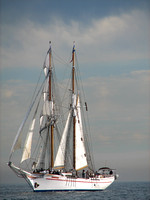
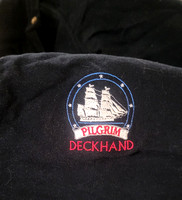
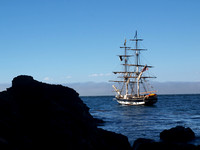


My husband loves tall ships and knotwork. I enjoyed it too, to an extent. While he has dedicated decades to it, I did the work to sail on the Brigantines out of San Pedro in 2009 and the Brig Pilgrim out of Dana Point in 2013. I got to explore the Channel Islands under sail. That was a wonderful experience. I also attended several international conferences with the Guild of Knot Tyers. I started sketching rather than knot tying. And of course, I got the T-shirts.
I have always had an interest in nature, but particularly stepped it up while working. I volunteered at the Aquarium of the Pacific from the time it opened for ten years, until I retired.

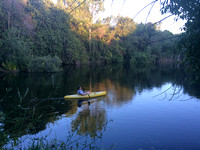
I then moved my interests from the ocean to the land. I volunteered at the Nature Center until the pandemic. I even helped conduct a multi-year insect inventory for them.
I took some classes in entomology, joined the Lorquin Entomological Society, and started to explore other areas of Southern California. In 2012 and 2013 I participated in Bioblitz's in Joshua Tree National Park. It was great fun, and I photographed lots of desert wildlife.
I took several classes in botanical illustration. One trip was to ZZYZX in the Mojave desert. My interest in art and nature deepened.
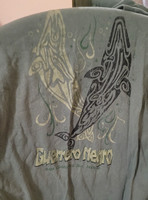

In 2015 I signed up for The California Master Naturalist Program. On the first day of class, another student asked If I wanted to go to Baja the next morning on a five day trip to pat the whales. I said yes and met her at 5am the next morning for a wonderful trip to Scammon's Lagoon and San Ignacio Lagoon. The Gray Whales and their calves were very friendly and came up to the boat to be petted. What an experience!
It was in the Master Naturalist class that I was introduced to iNaturalist and I have been posting photos on the site ever since.
My most precious T-shirt is this one I got on the first of several sailing trips I took to the British Virgin Islands in the 80s and 90s. Many of them blend together but I love the area. I took some sailing lessons there and also learned to dive. But the T-shirt is not precious for the memories of the islands, but this is the T-shirt I chose to wear when painting the ceiling of my new house. I was up on a ladder, with paint dripping down on me, when my husband decided it was the right moment to propose. I was annoyed at first, not knowing why he wanted me to come down from the ladder, but then he proposed. I said yes, and then got on with the painting. We have made many wonderful memories together since then.
I wish I had photographed some of the other T-shirts before I got rid of them. I know there were some for the Transpac race and other races. I don't think I had any from my years of working, nor from many family occasions. I had one that promoted me to Grandma, but can't find that one just now. As for the future, I will be going there, doing that, and might get the T-shirt.
Locally, August is mostly about dragonflies, shorebirds, and early migrants. I looked for shorebirds at the LA River, San Joaquin Marsh, and Cabrillo Beach, but didn't find anything unusual. Numbers of peeps were low until the final days of the month. I looked for early migrants at Huntington Beach Central Park. While I didn't see any special migrants, I was in the right place at the right time to see the Zone-tailed Hawk. So how did I find it? I followed the pack of crazed birders running and screaming across the park. More people joined the rush. Dog walkers and people out for a Sunday stroll stopped to look, as people from young to old carrying binoculars, cameras, and scopes loped over the uneven grass trying to avoid the holes made by California Ground Squirrels. Even before I knew what it was all about, I joined the rush. I figured it was either a really good bird, or Godzilla was chasing them, and either was worthy of a cardio workout. Fortunately the bird perched, preened its feathers, ignored the commotion, and posed for photos for a little while. This is the sort of thing that rewards the mesolimbic dopamine system of the bird addict's brain. While not rare in California, they are rarely seen along the coast. This was a lifer for me! Then, just before the end of the month, I had another lifer! A kingbird was spotted by a friend as we drove out of the park. We had already spent several hours in the park, and it was hot. I was reluctant to get out of the car, and assumed it was a pale Western Kingbird. He is remarkable at spotting good birds, and it was indeed an Eastern Kingbird visiting our coast!
The other interesting things this month were frogs. There was an enormous Bullfrog (baby Godzilla?) at San Joaquin Marsh. It just sat in the middle of the path as people had to step around it to pass. I was concerned for the frog in the heat and with all the people, but decided it had done quite well for itself to live this large for a highly invasive non-native predator. Another highly invasive non-native frog is the African Clawed Frog. We saw little "fish" jumping out of the water at Huntington Central. I quickly realized they were "flying frogs" or at least tadpoles trying out there new leg stubs. It was a challenge to photograph them, but I succeeded enough to identify them with the help of iNaturalist when I got home.
I went on the Sea and Sage Audubon pelagic trip out of Dana Point. It was pleasant with a variety of storm petrels, jaegers, and a few other pelagic birds. We also saw three types of dolphins including good views of Risso's Dolphins. Apparently they get the white scars on their skin from the teeth of other Risso's in social interactions. There was a young unscarred one travelling with a beautifully patterned adult. The other surprise was a swordfish swimming near the surface. We couldn't see the sword, but we could see the dorsal fin and tail.
I didn't go out on the Irvine Ranch Conservancy butterfly survey this month because it was too hot. However, I did finish up my analysis of 10 years of survey results, created twenty-seven pages of charts, a five page overview, and a four page comparison with The Butterflies of Orange County by Larry Orsak from 1977. I shared it with some of my fellow participants, but I'm not sure what to do with it otherwise. I wrote a separate blog post with a summary of my summary (https://kimssight.zenfolio.com/blog/2022/8/butterflies-of-irvine-ranch). I did attend a blacklighting session with the conservancy. It is much cooler at night. There were a few interesting moths and beetles.
It was rather quiet on the Los Cerritos Wetlands bird survey this month. The Wetsalts Tiger Beetles were still there, but bird activity was low.
I made more artwork. I'm on a roll -- well at least until the fall migration picks up.
Happy Nature Walks.
Follow me on Facebook: https://www.facebook.com/KimMooreNaturalist/
|
How to view photos with species names:
|
Watch the slideshows or click on the links to look through at your own pace. Links open in a new tab.
Local Stuff: https://kimssight.zenfolio.com/new_aug-2022
Pelagic Birding out of Dana Point: https://kimssight.zenfolio.com/pelagic_aug-2022
Irvine Ranch Conservancy Blacklighting: https://kimssight.zenfolio.com/irc_night_aug_2022
Los Cerritos Wetlands Bird Survey: https://kimssight.zenfolio.com/hellman_aug_2022
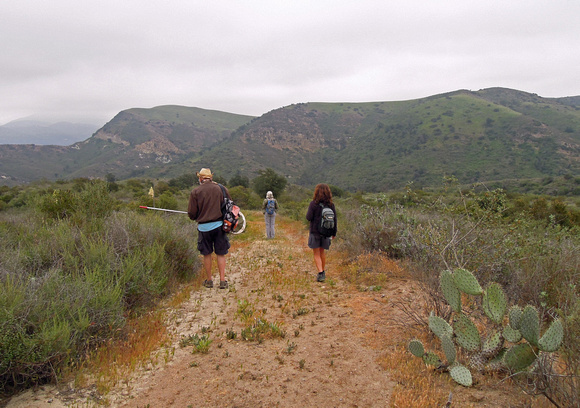 In January of 2013 a friend invited me to participate in a butterfly survey with the Irvine Ranch Conservancy, which had started the year before. Here I am nine years later and still counting. While each month I enjoy a fun walk with great people and taking photos of the butterflies, I hope my input contributes to restoration and conservation.
In January of 2013 a friend invited me to participate in a butterfly survey with the Irvine Ranch Conservancy, which had started the year before. Here I am nine years later and still counting. While each month I enjoy a fun walk with great people and taking photos of the butterflies, I hope my input contributes to restoration and conservation.
During the pandemic, only the official volunteers from the conservancy were allowed to participate in the survey. I am a 'public' volunteer and therefore could not participate. Additionally, at the end of 2020, there was a fire that hopscotched through the area. Since I have rejoined the butterfly surveys, post pandemic and post fire, I thought I noticed a change in the butterflies. This got me curious. Was it merely my perception or reality?
I requested access to the data and spent the several weeks looking deeper into it than I had planned. This has been a project of my own creation to satisfy my own curiosity. I think my curiosity is insatiable, but for now I have spent enough effort on it. Since the inception of the surveys there were 6,072 entries, 52 species, and 32,376 individual butterflies counted. From this data I created a five page report summarizing some of my findings, and twenty-seven pages of charts (I learned a lot about Excel spreadsheets). I then prepared another four page addendum comparing my findings to findings in "The Butterflies of Orange County" by Larry Orsak published in 1977. I looked at all 52 species on our list. In many cases, the names have changed over the years, both common and scientific, and I had to "reverse engineer" them to find them in Orsak.
A Summary of My Summary
Years 2015, 2016, 2017 and 2019 were banner years in terms of numbers of butterflies for many species.
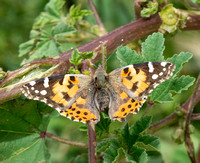
Year 2019 was also the year of the Painted Lady. They were everywhere across the state; numbers of Ladies across Southern California soared. I'm not sure of the reason, but those were great years. My mind immediately jumps to rainfall over the winter, but I haven't been able to confirm that theory.
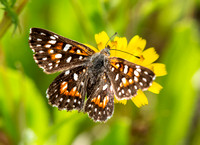 The ‘500 Club’: These species have had counts of 500 or more individuals in a single year. Behr's Metalmark, Woodland Skipper, Checkered White, Western Pygmy Blue, California Ringlet hit over 500 in multiple years. In 2019 Painted Lady made it for that year. In 2015 White Checkered Skipper hit the 500 mark.
The ‘500 Club’: These species have had counts of 500 or more individuals in a single year. Behr's Metalmark, Woodland Skipper, Checkered White, Western Pygmy Blue, California Ringlet hit over 500 in multiple years. In 2019 Painted Lady made it for that year. In 2015 White Checkered Skipper hit the 500 mark.
For the species that occurred in greater abundance, I mapped out the flight periods. I could see where some seemed to have only one brood per year while others are multi-brooded. I compared these to those documented by Orsak, and in many cases found similar findings. This has validated many of my observations from the data. However, I noted that in several cases, Orsak listed that for some of the multi-brooded species, the earlier spring broods were larger, while our numbers indicate the later broods were larger. I have no explanation, but did note the differences.
Since the December 2020 fire, I notice that numbers and species have changed a bit. I looked at some of our more numerous species. Behr's Metalmarks, California Ringlets, and Woodland Skippers disappeared in 2021.
The interesting changes have been in whites and sulphurs. Numbers of Checkered Whites soared since the fire. Orsak noted that where together with Checkered Whites, Cabbage Whites are more abundant. We see more Checkered whites than Cabbage Whites, but there has been an increase in Cabbage in recent years. We should watch to see if numbers of Cabbage increase over time comparatively.
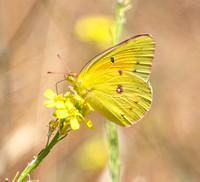
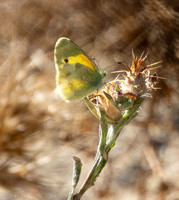
Orsak indicated that Orange Sulphurs are rarely common and are found primarily in lowlands. We only have three months of data in 2022 and Orange Sulphurs are looking stronger than in the past.
While our numbers are not significant, Orsak noted that Dainty Sulphurs are never common. We have seen them more frequently and in increasing numbers recently.
Are these lasting changes? Are these significant? Will we have another 10 years of data to compare to in 2032?
If you are interested in more details or have comments, feel free to leave a comment or contact me.
]]>
I started the month helping to document a group of nesting herons before and after the 4th of July fireworks. I was merely a small part in a large effort to monitor the birds. I had visited the heron rookery in the end of June so I had some idea of where the birds were. In the morning before the event, I noted several nests with small chicks, and some larger young either already fledged or soon to be. Unfortunately one of the young Great Egrets was already quite weak. The parents didn't seem to be feeding it, while investing in the larger healthier sibling. Nature can seem cruel that way. The next morning, although I am sure they were disturbed by the show, all were accounted for. I didn't stick around long enough to see the parent feeding the Great Egrets, but I did see an adult Great Blue Heron harassing them. The following day, the smaller young Great Egret was found on the ground and taken by a friend of mine to International Bird Rescue. It was found to be very thin and weak and ultimately did not survive. Whether it fell out of the nest because it was already weak, or was pushed out by a sibling (as happens), or possibly fell out because of the Great Blues, I'm sure the fireworks did not help. I am glad that all the healthy herons seemed to get through any trauma the fireworks may have caused. I wonder how the fireworks seemed compared to the thunderstorm last month. I went back a few days later and saw the surviving Great Egret doing quite well, evidence that the parents had not abandoned it. After monitoring these herons just for a short period, I did feel invested in their well being. I think when people engage with nature in a positive and curious way, they naturally want to help with its survival.
This month I helped with TWO back-to-back butterfly surveys. The first, was the annual survey conducted by Palos Verdes/South Bay Audubon. The data is collected for NABA (North American Butterfly Association). This annual count for butterflies is the equivalent of the annual Audubon Christmas Bird Count. The group I was with went to Harbor Lake. We also count dragonflies for fun. Butterflies and dragonflies do not like to pose. Sometimes we just have to count them at the family level. Butterflies were plentiful, but there were few dragonflies. The highlights though, were a very long gopher snake and a mom and baby raccoons. The young raccoons had trouble navigating the world, learning to climb branches. At times, the mom raccoon struggled to move her children along.
The next day I went out on my monthly survey with Irvine Ranch Conservancy. It was very hot and getting hotter, so we maintained a faster pace than usual to get back to base before the temperature rose to unbearable. One can see potential threats along the way, but if one is just aware, they pose little threat and caused me no worry. I was far more worried about the heat. People who know me, know that I can be a wimp. There were large swarms of harvester ants. We simply danced around them quickly, trying not to squish them and also trying to avoid their checking out our legs. I still have a small scar where one bit me last month. We saw two species of Tarantula Hawks. I am told they have a fiercesome sting. Fortunately they were happy nectaring on Narrow Leaf Milkweed and allowed me to get close for photos. There was Mountain Lion scat on the trail. At least I think it was. It could be large coyote, but in my mind it is mountain lion. It wasn't very fresh so I didn't worry this time. It was well worth getting out. There was a steady flow of butterflies and a nice variety. A Sylvan Hairstreak was the highlight butterfly.
On the last night of the month, I went back to the same area for a night of blacklighting. It was a lovely evening with nice people, and several really cool insects. Identifying some of them is a challenge and an on-going process.
It was rather quiet on the Los Cerritos Wetlands bird survey this month. So instead of birds, I got excited by a few insects. Wetsalts Tiger Beetles and a Wandering Skipper are residents of wetlands and remind me of the fragile habitat I am walking through. I always watch my feet and stick to the trail. A Steel-blue Cricket Hunter is a very striking wasp. They are not strictly associated with the wetlands, but they are beautiful.
I got a trail camera for my backyard. I have moved the camera to different locations each day, and found something on it almost every night. Although the photo quality is poor, I was not disappointed. It is fun to know what happens while I sleep. I have smelled skunks at night on and off for years, but never saw them in my yard, but my trail cam did! It even found out that the skunk is a male. It is these small things that bring me joy (LOL). The skunk comes back every few days for a short visit. I don't know where they come from or go to. Apparently I do get raccoons, but infrequently. The Opossum visits more regularly, as do a black cat and tortoiseshell cat.
Locally, things are about as expected. Fledgling resident birds are fun to watch. A Young Cooper's Hawk played with his food. A young Mockingbird stomped his feet and begged to be fed. Then finally towards the middle of the month, on cue, the shorebirds are returning and so are the birders at the LA River. I saw three birds new to me, a Bank Swallow, a Stilt Sandpiper, and a Lesser Black-backed Gull.
Oh yes, I also did some artwork. Playing with colors and layers.
So what's new with you?
Happy Nature Walks.
Follow me on Facebook: https://www.facebook.com/KimMooreNaturalist/
|
How to view photos with species names:
|
Watch the slideshows or click on the links to look through at your own pace. Links open in a new tab.
Local Stuff: https://kimssight.zenfolio.com/new_jul-2022
My Trail Cam in my yard: https://kimssight.zenfolio.com/mytrailcam
Egret/Heron Roost Survey: https://kimssight.zenfolio.com/heron_roost-2022
PV/South Bay Butterfly Survey: https://kimssight.zenfolio.com/pv_butterfly_count_2022
Irvine Ranch Conservancy Butterfly Survey: https://kimssight.zenfolio.com/irc_jul-2022
Irvine Ranch Conservancy Blacklighting: https://kimssight.zenfolio.com/irc_night_jul_2022
Los Cerritos Wetlands Bird Survey: https://kimssight.zenfolio.com/hellman_jul_2022
We did see the Violet-green Swallows, Lazuli Buntings, and Western Wood-pewees that passed our area quickly during spring migration. We also saw Yellow-rumped Warblers which had spent the winter with us and now moved back to higher elevation. We also saw the birds that are year-round residents of the mountains including White-headed Woodpeckers, Pygmy Nuthatches, and Steller's Jays. Many of the birds are high in the trees or deep in the brush. It is hard to see them much less photograph them, and we had to rely on our ears. We were surrounded by bird songs, many of which were a challenge for us to figure out. Some we are less familiar with because we don't have those birds locally, but even the birds familiar to us have different songs in their breeding grounds in the mountains. And then there are young birds who haven't quite figured out their proper voice yet. We enjoyed the challenge. We picnicked back at the Burkhart trailhead and watched Fontana Grasshoppers raising and lowering their legs. I think this is called femur-tipping and is a male territorial dance.
The Bobcat Fire in the San Gabriel Mountains was in September of 2020. Part of the area looked OK, but major portions showed quite a bit of fire damage. Perhaps this is why I get nervous and don't like campfires, or any fires for that matter. Even the whiff of smoke sends me on high alert. Perhaps anecdotal, but I saw very few, squirrels and chipmunks, and this is two years since the fires.
From there we went back to Chilao on our way home. We birded around the day-use area and visitor center. The water feature was dry, and feeders were picked clean. Overall it was pretty darned quiet. Traffic coming down the mountain was not bad, and we got home by 4 PM. Despite getting up too early, winding roads to get there, no cell service, and the fire damage, the company was great and the birding turned out quite good. We had a lovely time.
We had such a good time that we went back again at the end of the month. In just three weeks, there were more baby birds. We watched a pair of Brown Creepers nest building. A mother Black-throated Gray Warbler was feeding her baby and a Brown-headed Cowbird baby (a brood parasite). There had been some big rain in the time between our visits, and some more wildflowers appeared in the burn areas. It was interesting to see the changes in just a short time.
My June butterfly survey with Irvine Ranch Conservancy had many butterflies. This month was much warmer, and by the end of the route I felt the heat. Perhaps it was the heat that brought out all the butterflies. There were two highlights for me. First highlight was that there were quite a few Intermediate Weed's Mariposa Lilies. They are one of my favorites and I have not often seen them. The second highlight was a Western Yellow-bellied Racer. It was very green in the sun. I almost stepped on it and let out two simultaneous shrieks, one because I almost stepped on the snake, and one because it was a cool snake that I had never seen before. Checkered White and Funereal Duskywing butterflies were quite abundant. We also saw quite a few Dainty Sulfur butterflies.
Locally, they say things get quiet in the summer. Migrants are gone. True, the number of species is down, but watching all the young of our resident birds is fun. Fuzzy babies are fun, especially baby herons that look like Muppets. Babies molting have feathers all askew. Insects are also having babies this time of year. I found out that earwigs provide some level of parental care and guard their eggs and young. Booklice are very very tiny and their nymphs are even tinier.
As you probably know by now, I like birds and insects. I gave a talk to Palos Verdes/South Bay Audubon on the insects birds eat. It was a chance to combine the two. It is my way of making insects palatable for birders. Zoom can be quite challenging. I prefer in-person presentations when you can get feedback as you present. Here is the recording of the presentation. https://pvsb-audubon.org/wp-content/uploads/2022/06/GMT20220622-021509_Recording_1920x900.mp4
I was so glad I went to the bird survey out on the Los Cerritos Wetlands. While it was generally very quiet, the highlight was a mother Red-tailed Hawk teaching her teens to hunt for themselves. Twice we saw her catch rodents. Each time, she got the attention of her very noisy children, but refused to feed them. Instead, she took her prey over an empty part of the field and dropped it. She made the children go down and get it for themselves. Once, she missed and dropped it in deeper vegetation. She went down, retrieved it, and dropped it in a more open location. It all happened fast and my survey friends wanted to move on, so I was lucky to capture some of the action.
I made some quick art. Just whimsical cat themed pieces.
Happy Nature Walks.
Follow me on Facebook: https://www.facebook.com/KimMooreNaturalist/
Watch the slideshows or click on the links to look through at your own pace. Links open in a new tab.
Local Stuff: https://kimssight.zenfolio.com/new_jun_2022
San Gabriel Mountains: https://kimssight.zenfolio.com/san_gabriels_jun_2022
Irvine Ranch Conservancy Butterfly Survey: https://kimssight.zenfolio.com/irc_jun-2022
Los Cerritos Wetlands Bird Survey: https://kimssight.zenfolio.com/hellman_jun_2022
Migration is not a random thing with birds migrating anytime within the three months of spring and fall. First of all, the calendar months we call spring and fall are not known to birds; they just know when it's time to go. For example, Rufus Hummingbirds typically migrate north in our area in March, but you might see them in the last weeks of February. Some shorebirds might start migrating south in mid-July.
Different species migrate at different times and usually in groups over a short time window. Violet-green Swallows pass through quickly. Did you miss those Olive-sided Flycatchers? Too late, you have to try again. If you don't go out during that short window, you will miss them and have to wait until they pass through with the reverse migration. Willow Flycatchers don't show up until May. I hit it just right one day and saw trees filled with Western Tanagers and Hermit Warblers. I went back four days later to the same place, and there were many fewer birds.
North and south are relative terms. Mountain birds may come down to lower elevation in winter and go back up in summer. Some shorebirds winter in our area and then fly north. Orioles and Yellow Warblers fly south to South America in the winter and north to our area in the summer. We are their north.
Birds may choose slightly different routes in different directions and in different years. Rufus Hummingbirds follow a more easterly route when flying south, so we only get one opportunity a year to see them. Food source availability will also alter birds' migration patterns. Occasionally a species will have an irruptive year. An irruptive migrant is a species that moves to a different location in very large numbers. This year it was it was Swainson's Thrushes. I have seen more this year than I had seen in my life.
In spring migration, the birds are singing and they are in their finest plumage or at least coming into it. In the fall there are more birds because there are many young birds flying with the flock. The plumage of the adults may be worn and faded.
At the end of migration there are a few stragglers and late comers. This is also the time you are likely to see a local rarity. These are the birds lost in migration and may come up the wrong coast. This month I saw the lost East Coasters: Yellow-throated Vireo, Rose-breasted Grosbeak, and Baltimore Oriole.
There is so much more to know and understand, and the rest of my life to learn it.
I went on a pelagic birding trip out of Marina del Rey. The day started out gray and slow. There were not many birds. But after a few hours, the trip leader spotted a Horned Puffin. This was the first one seen in LA County since 2005. The mood on the boat was instantly uplifted with some people high-fiving and giving happy dances. A couple of Northern Fulmars followed the boat begging for scraps. I guess they recognize fishing boats, but today we weren't fishing, only watching birds. It did give an opportunity for good photos of them. We saw several Scripps's Murrelets, Cassin's Auklets, Pomarine Jaeger, Pink-footed, Sooty, and Black-vented Shearwaters, Common Murres, and a few flocks of Red-necked Phalaropes. It turned out to be a good trip after all. So good in fact, that I went out on another mini-pelagic the following weekend out of Redondo Beach to look for more Puffins. No luck the second time. I did see Risso's Dolphins, so that was at least my consolation prize.
After two and a half years, since the pandemic, I was finally able to go back to my monthly Butterfly Survey with Irvine Ranch Conservancy. I was greatly excited to go back, but also had a little trepidation. I thought I had gotten out of shape and was concerned that I hadn't done a three and a half to four mile hike in a long time. But the weather wasn't too hot, and I had no trouble at all. It was great to see old friends. Just as we have been recovering from the pandemic, the land was recovering from its own trauma. Sometime during the last two years, a fire had ripped through the area hopscotching, hitting some trees and bushes while missing others. We have also had a few years of drought. Now the area is quite brown and dry with dead trees and shrubs throughout the landscape. But it is still spring and so, with the little rain we did have, there were wildflowers poking up through the dry grasses. We had many butterflies, but it was interesting to note a different mix than in the past with Orange Sulphur butterflies quite abundant and no Behr's Metalmarks nor California Ringlets, which were always abundant in Mays past. Also, many of the butterflies were quite small indicating that the caterpillars had less to feed on before going through metamorphosis. With such dry grasses, it looked more like September than May. Fire season is now year-round.
The bird survey out on the Los Cerritos Wetlands was pleasant. I think that is the best description. The highlight was young Barn Swallows. Aside from that, nothing noteworthy, but I took a few photos for documentation.
Happy Nature Walks. Stay safe.
Follow me on Facebook: https://www.facebook.com/KimMooreNaturalist/
Watch the slideshows or click on the links to look through at your own pace. Links open in a new tab.
Local Stuff: https://kimssight.zenfolio.com/new_may-2022
Pelagic Trips: https://kimssight.zenfolio.com/pelagic_trip_may_2022
Irvine Ranch Conservancy Butterfly Survey: https://kimssight.zenfolio.com/irc_may-2022
Los Cerritos Wetlands Bird Survey: https://kimssight.zenfolio.com/hellman_may-2022
Despite only having a half a month to go out, I seem to have done a lot of nature things. While in isolation, I did get out into my own yard with my macro lens. Just the usual characters, moths, earwigs, and spiders, but fun. When I did get out, with Pride of Madeira blooming and other favorite flowers for hummingbirds, I shot the obligatory 'a thousand and one' in-flight shots. Empidonax (aka Empids) and other flycatchers are migrating through. If you can't tell the different Empid species apart, don't worry, you are not alone. These are always a challenge. My friends and I have long discussions when we see one to discuss bill size and color, length of primaries, and eye-rings. This is all fascinating if you are into it, otherwise just poke a pencil in your eye.
I went to Bear Divide with a friend. Bear Divide is a narrow pass in the San Gabriel Mountains. It funnels migrating birds through the pass at dawn in the spring. It is a unique biological phenomenon. It also funnels in a large number of birders. In 2021, the Moore Lab of Zoology (no relation) at Occidental College began a regular count and bands some of the birds as they pass. There were not a lot of migrants when I went, but I got an appreciation for the pass and activities there. I saw the mist nets for catching the birds and saw a few Lazuli Buntings get banded. The scenery is beautiful, and I loved how the light changed as the sun came up. The only downside was setting the alarm for 4am!
There was nothing much remarkable about my bird survey of the Los Cerritos Wetlands, except for the number of Snowy and Great Egrets in the channel. I have not seen that many in that location before. It must have been a convention. When doing surveys, I don't always get a chance to take the pretty pictures I would like. I am generally just shooting to document and identify subjects. While I try to get a second better shot, that is not always possible and then we need to keep moving. It's just a different experience.
On the last day of the month, I participated in the Nature City Challenge events at the Historic Rancho Los Cerritos. My friend is the curator of living collections and manages all the gardens. The gardens are beautiful. In the morning, she and I did a survey of the birds. I caught a very bad photo but identifiable as a MacGillivray's Warbler. I rarely see them. I saw an Olive-sided Flycatcher eat a bee and then another bee buzzed around the bird and chased him off the perch. In the evening, about a dozen or so of my entomologically inclined friends went out to dinner and then surveyed for insects at night with blacklights. It was a most enjoyable day and night.
Happy Nature Walks. Stay safe.
Follow me on Facebook: https://www.facebook.com/KimMooreNaturalist/
Watch the slideshows or click on the links to look through at your own pace. Links open in a new tab.
Enjoy the show! I always appreciate corrections to ID's.
Local Stuff: https://kimssight.zenfolio.com/new_apr_2022
Bear Divide: https://kimssight.zenfolio.com/bear_divide_apr_2022
Los Cerritos Wetlands Bird Survey: https://kimssight.zenfolio.com/hellman_apr_2022
Rancho Los Cerritos Nature Challenge: https://kimssight.zenfolio.com/rancho_los_cerritos_nature_challenge_apr_2022
And then something comes along. I started to work on next month's blog and deleted the March one entirely, never to be retrieved. Unless you read it in the first two days of April, you will have to go with this much abbreviated version. Imagine it witty, fascinating, and filled with stories about the nature of all things. My apologies to all. I will blame it on COVID.
Happy Nature Walks. Stay safe.
Follow me on Facebook: https://www.facebook.com/KimMooreNaturalist/
Watch the slideshows or click on the links to look through at your own pace. Links open in a new tab.
Enjoy the show! I always appreciate corrections to ID's.
Local Stuff: https://kimssight.zenfolio.com/new_mar-2022
]]>
been getting it. Fortunately, they were all boosted and cases were mild. I think we are all ready for it to be over. I am ready to get out farther afield.
I took my first overnight trip to the Salton Sea with a group of friends. The Salton Sea is a large shallow, landlocked, highly-saline body of water. It is adjacent to the Colorado River, which also created fertile land for agriculture. It is a major migratory bird stop-over on the Pacific Flyway. I carpooled with two other people, and others drove separately. We birded by day and then spent the evening dining outside at a great restaurant in Brawley. They had good food and music, despite the slow service. Seven people at a table, talking about birds and life, it was such a delight to feel almost normal again. The birding was good too with desert birds, large flocks of migratory birds, and beautiful landscape. See my photos below and the eBird trip report for the entire group: eBird Group Trip Report.
Locally our birds are switching to their spring songs, and there are signs of courtship. Hummingbirds are already nesting. A Least Flycatcher is considered 'rare' around here, although they do show up from time to time. This one is the latest, but not least bird added to my life list. Poor little thing, it is not as spectacular as the Vermillion Flycatcher, but do they have to give it such a dismissive name?
When I got back from from the Salton Sea and went to upload my photos, I found my 2-terabyte disk was full. Where is tech support when you need them. Oh wait, I am the tech support in my house. I found a work-around to finish my photos, but then spent quite a few days trying to make room on the disk. I moved some non-photo files to a new location. I recovered more space by going through some vey old photos and deleting the poor quality ones. I used to keep just about everything when it was all new to me. I have started with photos from my yard. I started documenting the insects in my garden in 2009. When going through the images, I noticed how many more insects I used to see. I have felt this for quite a while, but looking back at my photos confirmed it. I had so much more diversity. The years of drought and alarming decline in insects, as has been discussed in the media, is quite evident in my yard. It inspired me to go out and look some more. Of course I can always find things, but not like I used to.
Happy Nature Walks.
Follow me on Facebook: https://www.facebook.com/KimMooreNaturalist/
Watch the slideshows or click on the links to look through at your own pace. Links open in a new tab.
Enjoy the show! I always appreciate corrections to ID's.
Local Stuff: https://kimssight.zenfolio.com/new_feb-2022
Salton Sea: https://kimssight.zenfolio.com/best_of_salton_sea_feb-2022
]]>
Some birders, myself included, like to keep a list of the birds they have seen for the year. Of course that starts on January 1 with my January 1st event, called the LB100. It was a great success. A group of us go out and try to find 100 species of birds within the city of Long Beach on the 1st day of the year. I wrote a separate blog post about it. https://kimssight.zenfolio.com/blog/2022/1/happy-new-year---lb100-2022
You may know that I am interested in predator/prey relationships. I found it interesting that I had never before seen an American Kestrel eat a bat and then this month I saw two different birds in two different locations get one! Not the best photos, but interesting none the less. Brown Creepers are usually found in the mountains or foothills. They blend in with their backgrounds so well that they are easy to miss. We have one that has decided to visit Long Beach for the winter. I caught him (or her?) digging under bark for insects and pull out a Noble False Widow spider. These spiders have rapidly expanded their range. I guess the Creeper is trying to keep the population in check.
I went on not one, but two, pelagic birding trips. The first was out of Dana Point in Orange County. The morning sky was very pretty with the sun trying to break through the marine layer. Highlights were an abundance of Northern Fulmars, four Brown Boobies, and Common Dolphin and a Harbor Seal. The next trip was out of Marina Del Rey, Los Angeles County. A little slow at times for birds, but we saw the expected birds and so many dolphin.
I went with a few friends to Antelope Valley. It has been too long since I went there. We visited the agriculture fields near Lancaster and then Saint Andrew's Abbey on the north slope of the San Gabriel Mountains. Prairie Falcon and Ferruginous Hawk are always spectacular, but the highlight of the day was the gracious homeowner where the Long-eared Owl had been recorded on eBird. He came out of his house and gave us a tour of the trees in the orchard showing us three Barn Owls, a Great Horned Owl, and two Long-eared Owls.
My monthly Los Cerritos Wetlands bird survey (that I have been doing for many years), was remarkably uneventful. While there is always something interesting, it seemed less birdy and with fewer raptors. The fun find this time was a young Cooper's Hawk that landed on the phone lines. These birds don't perch on wires because hey are too big and unwieldy, as this one found out. It eventually settled on the phone pole and gave a scowl.
I made an effort to experiment a bit with Gelli printing for my artwork. What makes this technique interesting is the same thing that I enjoy about nature walks, you never know what you will find. There is always an element of discovery, and hopefully a pleasant surprise. I use the paper in collage. I'm liking it. Here is a separate blog describing the technique: https://kimssight.zenfolio.com/blog/2022/1/gelli-print-collage---becoming-and-artist
Happy Nature Walks.
Follow me on Facebook: https://www.facebook.com/KimMooreNaturalist/
Watch the slideshows or click on the links to look through at your own pace. Links open in a new tab.
Enjoy the show! I always appreciate corrections to ID's.
Local Stuff: https://kimssight.zenfolio.com/new_jan_2022
Pelagic Trip out of Dana Point: https://kimssight.zenfolio.com/pelagic_trip_jan_2022
Pelagic Trip out of Marina del Rey: https://kimssight.zenfolio.com/pelagic_trip2_jan_2022
Antelope Valley: https://kimssight.zenfolio.com/north_slope_san_gabriels_jan_2022
Los Cerritos Wetlands bird survey: https://kimssight.zenfolio.com/hellman_jan-2022
]]>
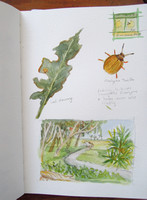
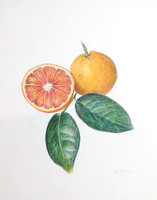 I strive to be an artist, but find my overly analytic mind sometimes gets in the way of the artist I want to be. I started out with botanical illustration. I so admire illustration and the beauty of it. I have done nature journaling which requires observation, but artistic technique is secondary. This has suited me at times and got me to be a little less judgmental of my art skills, which can be a major barrier for me. I am impressed with the skill of hyper-realistic art, but for my own work, it requires a patience and a precision I’m not willing to invest.
I strive to be an artist, but find my overly analytic mind sometimes gets in the way of the artist I want to be. I started out with botanical illustration. I so admire illustration and the beauty of it. I have done nature journaling which requires observation, but artistic technique is secondary. This has suited me at times and got me to be a little less judgmental of my art skills, which can be a major barrier for me. I am impressed with the skill of hyper-realistic art, but for my own work, it requires a patience and a precision I’m not willing to invest.

For me, my camera has served as a major visual medium for the natural world. But for my artwork, I have always wanted to be more creative and expressive.I tried some printing techniques with different types of ink and different types of paper. This was getting me closer to what I wanted.
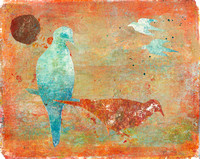 One of my more relatively recent discoveries in art technique is gelli printing and collage. I have learned this from a class, YouTube, and Facebook, so I can't claim to be totally self-taught, but my education is limited and I'm not really sure I am using the 'proper' terminology, but I am loving the experimentation and learning process. For vibrance, spontaneity, ease, and flexibility, it is my current choice of media.
One of my more relatively recent discoveries in art technique is gelli printing and collage. I have learned this from a class, YouTube, and Facebook, so I can't claim to be totally self-taught, but my education is limited and I'm not really sure I am using the 'proper' terminology, but I am loving the experimentation and learning process. For vibrance, spontaneity, ease, and flexibility, it is my current choice of media.
I started out just making prints on art paper with different layering techniques. Then I learned about using deli paper (yes, the kind they wrap sandwiches in at the deli). I just started making prints. I roll acrylic ink onto the gel plate with a brayer. I use stencils, bubble wrap, and anything for texture and pattern. I may do layers. I press the paper, and voila! I now have a box full.
In a class I took with a marvelous instructor who specializes in abstract, watercolor, and abstract landscape, she taught this technique to make the deli gelli prints. She looked through the paper, and chose colors she liked, and used them to make abstract collages. This helped me with some of the technical aspects of printing, cutting, and gluing onto Bristol paper.
But my analytical brain keeps raging and I don’t work in what seems a totally spontaneous visual manner.
So here is how I have worked things out for myself.
- I start out with an idea of the subject, usually based on something I recently saw as a naturalist or my go to muse (mews?), my cat.
- I look through my photos and select several.


- I lay awake at night thinking about composition and color and how I might work it out. This is my heavy analytical brain working.
- I then go into Photoshop and try to work out a general composition. My technical skills come into play here.

- I look through my stacks of paper and I usually wind up making more to get the colors I might want. This is my most spontaneous fun creative brain.


- I scan the paper into the computer.

- I play around in photoshop a little more using some of my scanned paper.

- I start to cut out images and then lay them on the paper in various places.
- I photograph them and may bring them back into photoshop to see what else I might want to do.
- I finish by gluing them down with matte medium and use a matte finish spray over the whole piece.
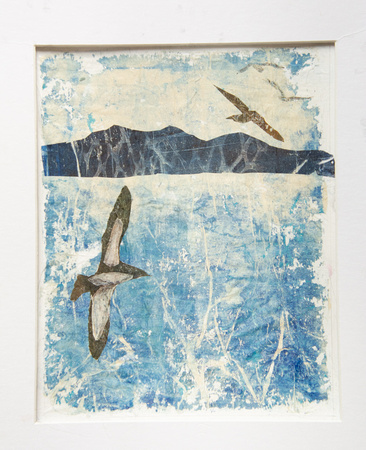
This process seems to fit for me and I am enjoying the journey.
Resources:
Gel Plate: https://www.gelliarts.com/
Golden Fluid Acrylics (and various acrylic brands and types)
Deli paper
Bristol paper
Liquitex Matte Medium
Krylon Matte Finish Aerosol Spray
]]>
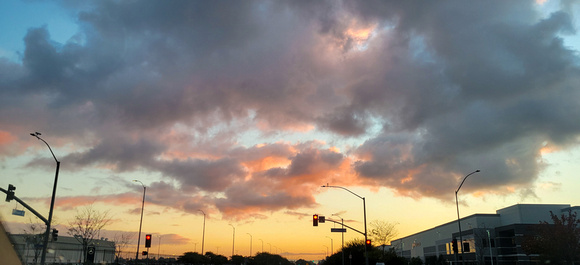 First sunrise of the new year
First sunrise of the new year
Some people like to end the year in celebration and start the new year sleeping in and with perhaps a hangover. I like to end the year going to sleep early with a full night sleep and start the new year with a celebration of birds. For the 5th year in a row, I have organized the LB100. A group of us go out and try to find 100 species of birds within the city of Long Beach on the 1st day of the year. It is an all day challenge and I plan a route based on where the birds are, tides, shortest driving route to maximize time for birding, and also, perhaps most importantly to some, where there are bathrooms and places for a snack and lunch break. The coffee, hot chocolate, and cookies I offered partway through the day were very well received.
The first 50 to 60 species of birds are easy to find, but it is those last unique ones that become harder and harder to find as the day wears on. It is no small feat. It takes good eyes and ears, and stamina.
 This year about 14 people participated, at least for part of the day. We had several strong storms in the days before the event, and we weren't sure what we would find with areas flooded and birds on the move. Two people took up the challenge and birded solo on their own routes. Jonathan scouted out some areas not often covered by most birders and found a returning Black-throated Green Warbler. Jeff B. stuck strictly to the LA River in Long Beach and tallied 93 species! Some people came in and out at different points during the day.
This year about 14 people participated, at least for part of the day. We had several strong storms in the days before the event, and we weren't sure what we would find with areas flooded and birds on the move. Two people took up the challenge and birded solo on their own routes. Jonathan scouted out some areas not often covered by most birders and found a returning Black-throated Green Warbler. Jeff B. stuck strictly to the LA River in Long Beach and tallied 93 species! Some people came in and out at different points during the day.
The main group caravanned from spot to spot to cover a variety of habitats. We started strong in terms of birds and birders. We hit the majority of the locations with 8-10 strong birders, but as the day wore on, a few people started to peel off from the group, with maybe a stop of their own on the way back to their homes.
Five of us completed the full route as planned:
(10 hours, 35 miles driving, 5 miles walking, 10 birding hotspots).
With such strong birders all looking out, we made fast work of finding many species. Some were targeted birds and some were pleasant surprises. We started at 7:15 in the morning and by 10:15 we tallied 59 species. We reached 100 species at 2:55pm! By the end of the day our final tally was 106. That's three hours for 60, five hours for 40 more, and two more hours for the final 6 birds!
Expected 'good' birds (We knew they had been there or were likely to be there): Snow Goose, Greater White-fronted Goose, Canvasback, White-throated Sparrow, Golden-crowned Sparrow, Spotted Towhee, Oak Titmouse, White-breasted Nuthatch, Glaucous-winged Gull, Herring Gull, Short-billed Gull, Whimbrel, Long-billed Curlew, Black Oystercatcher
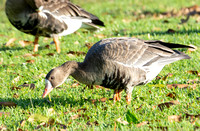
|
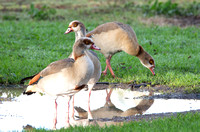
|
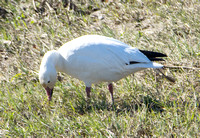
|
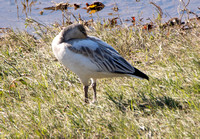
|
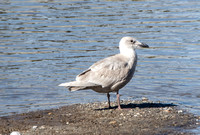
|
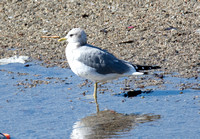
|
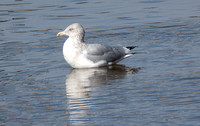
|
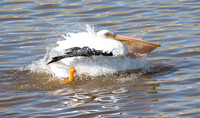
|
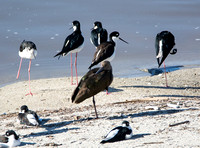
|
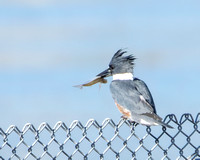
|
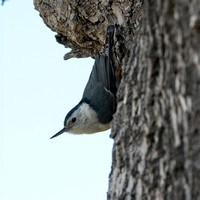
|
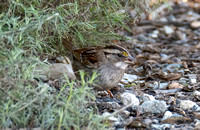
|
Surprises: White-faced Ibis hiding amongst Black-necked Stilts, Pin-tailed Whydahs at Wardlow Park (rarely seen there), White-tailed Kite flying over El Dorado Park as our last bird of the day
Misses and near-misses: Great-tailed Grackle and Northern Shoveler required a stop at the El Dorado Duck Pond. No Shovelers before that! We had no American Robin. A little less surprising, we missed Green-winged Teal, Green Heron, Peregrine Falcon.
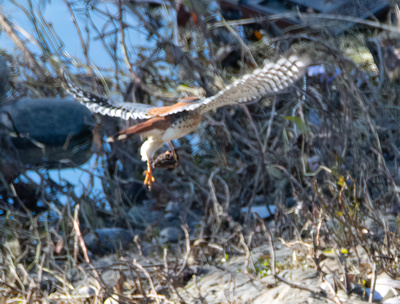 Highlight of the day: A bat was flying in the middle of the day at the LA River at Willow Street. An American Kestrel swooped in and hit the bat in flight. It dropped to the ground and the kestrel caught it. I was not fast enough, but caught a bad photo as the kestrel took off from the ground with the bat in its talon.
Highlight of the day: A bat was flying in the middle of the day at the LA River at Willow Street. An American Kestrel swooped in and hit the bat in flight. It dropped to the ground and the kestrel caught it. I was not fast enough, but caught a bad photo as the kestrel took off from the ground with the bat in its talon.
Thanks to all who participated.
Species from the day:
| 1 | Rock Pigeon | Wardlow Park | |
| 2 | Mourning Dove | Wardlow Park | |
| 3 | Allen's Hummingbird | Wardlow Park | |
| 4 | Downy Woodpecker | Wardlow Park | |
| 5 | Nuttall's Woodpecker | Wardlow Park | |
| 6 | Northern Flicker | Wardlow Park | |
| 7 | Mitred Parakeet | Wardlow Park | |
| 8 | Cassin's Kingbird | Wardlow Park | |
| 9 | American Crow | Wardlow Park | |
| 10 | Oak Titmouse | Wardlow Park | |
| 11 | Ruby-crowned Kinglet | Wardlow Park | |
| 12 | White-breasted Nuthatch | Wardlow Park | |
| 13 | House Wren | Wardlow Park | |
| 14 | European Starling | Wardlow Park | |
| 15 | Western Bluebird | Wardlow Park | |
| 16 | Cedar Waxwing | Wardlow Park | |
| 17 | Pin-tailed Whydah | Wardlow Park | |
| 18 | House Sparrow | Wardlow Park | |
| 19 | House Finch | Wardlow Park | |
| 20 | Lesser Goldfinch | Wardlow Park | |
| 21 | American Goldfinch | Wardlow Park | |
| 22 | White-crowned Sparrow | Wardlow Park | |
| 23 | Yellow-rumped Warbler | Wardlow Park | |
| 24 | Greater White-fronted Goose | Scherer Park | |
| 25 | Canada Goose | Scherer Park | |
| 26 | Egyptian Goose | Scherer Park | |
| 27 | American Wigeon | Scherer Park | |
| 28 | Mallard | Scherer Park | |
| 29 | Anna's Hummingbird | Scherer Park | |
| 30 | American Coot | Scherer Park | |
| 31 | Ring-billed Gull | Scherer Park | |
| 32 | Black-crowned Night-Heron | Scherer Park | |
| 33 | Black Phoebe | Scherer Park | |
| 34 | Common Raven | Scherer Park | |
| 35 | Swinhoe's White-eye | Scherer Park | |
| 36 | Northern Mockingbird | Scherer Park | |
| 37 | Dark-eyed Junco | Scherer Park | |
| 38 | Orange-crowned Warbler | Scherer Park | |
| 39 | Townsend's Warbler | Scherer Park | |
| 40 | Pied-billed Grebe | Dominguez Gap Wetlands | |
| 41 | Eurasian Collared-Dove | Dominguez Gap Wetlands | |
| 42 | White-throated Swift | Dominguez Gap Wetlands | |
| 43 | Glaucous-winged Gull | Dominguez Gap Wetlands | |
| 44 | Double-crested Cormorant | Dominguez Gap Wetlands | |
| 45 | Great Blue Heron | Dominguez Gap Wetlands | |
| 46 | Great Egret | Dominguez Gap Wetlands | |
| 47 | Osprey | Dominguez Gap Wetlands | |
| 48 | Red-tailed Hawk | Dominguez Gap Wetlands | |
| 49 | California Scrub-Jay | Dominguez Gap Wetlands | |
| 50 | Barn Swallow | Dominguez Gap Wetlands | |
| 51 | Bushtit | Dominguez Gap Wetlands | |
| 52 | Blue-gray Gnatcatcher | Dominguez Gap Wetlands | |
| 53 | Scaly-breasted Munia | Dominguez Gap Wetlands | |
| 54 | American Pipit | Dominguez Gap Wetlands | |
| 55 | Savannah Sparrow | Dominguez Gap Wetlands | |
| 56 | Song Sparrow | Dominguez Gap Wetlands | |
| 57 | Lincoln's Sparrow | Dominguez Gap Wetlands | |
| 58 | California Towhee | Dominguez Gap Wetlands | |
| 59 | Common Yellowthroat | Dominguez Gap Wetlands | |
| 60 | Lesser Scaup | Golden Shore Marine Reserve | |
| 61 | Surf Scoter | Golden Shore Marine Reserve | |
| 62 | Bufflehead | Golden Shore Marine Reserve | |
| 63 | Ruddy Duck | Golden Shore Marine Reserve | |
| 64 | Eared Grebe | Golden Shore Marine Reserve | |
| 65 | Western Grebe | Golden Shore Marine Reserve | |
| 66 | American Avocet | Golden Shore Marine Reserve | |
| 67 | Black Oystercatcher | Golden Shore Marine Reserve | |
| 68 | Whimbrel | Golden Shore Marine Reserve | |
| 69 | Least Sandpiper | Golden Shore Marine Reserve | |
| 70 | Western Sandpiper | Golden Shore Marine Reserve | |
| 71 | Spotted Sandpiper | Golden Shore Marine Reserve | |
| 72 | Willet | Golden Shore Marine Reserve | |
| 73 | Western Gull | Golden Shore Marine Reserve | |
| 74 | Caspian Tern | Golden Shore Marine Reserve | |
| 75 | Belted Kingfisher | Golden Shore Marine Reserve | |
| 76 | Say's Phoebe | Golden Shore Marine Reserve | |
| 77 | Snow Goose | Los Angeles River--Willow St. | |
| 78 | Blue-winged Teal | Los Angeles River--Willow St. | |
| 79 | Cinnamon Teal | Los Angeles River--Willow St. | |
| 80 | Gadwall | Los Angeles River--Willow St. | |
| 81 | Canvasback | Los Angeles River--Willow St. | |
| 82 | Ring-necked Duck | Los Angeles River--Willow St. | |
| 83 | Black-necked Stilt | Los Angeles River--Willow St. | |
| 84 | Killdeer | Los Angeles River--Willow St. | |
| 85 | Long-billed Dowitcher | Los Angeles River--Willow St. | |
| 86 | Short-billed Gull | Los Angeles River--Willow St. | |
| 87 | California Gull | Los Angeles River--Willow St. | |
| 88 | Herring Gull | Los Angeles River--Willow St. | |
| 89 | American White Pelican | Los Angeles River--Willow St. | |
| 90 | Snowy Egret | Los Angeles River--Willow St. | |
| 91 | White-faced Ibis | Los Angeles River--Willow St. | |
| 92 | American Kestrel | Los Angeles River--Willow St. | |
| 93 | Red-winged Blackbird | Los Angeles River--Willow St. | |
| 94 | Yellow-chevroned Parakeet | Willow Springs Park | |
| 95 | Hermit Thrush | Willow Springs Park | |
| 96 | Golden-crowned Sparrow | Willow Springs Park | |
| 97 | White-throated Sparrow | Willow Springs Park | |
| 98 | Spotted Towhee | Willow Springs Park | |
| 99 | Brown Pelican | Colorado Lagoon | |
| 100 | Red-shouldered Hawk | Colorado Lagoon | |
| 101 | Black-bellied Plover | Marine Stadium, LB | |
| 102 | Long-billed Curlew | Marine Stadium, LB | |
| 103 | Marbled Godwit | Marine Stadium, LB | |
| 104 | Northern Shoveler | El Dorado Regional Park--south of Willow St | |
| 105 | Great-tailed Grackle | El Dorado Regional Park--south of Willow St | |
| 106 | White-tailed Kite | El Dorado Regional Park--Area 2 |
]]>
I ended the year as I usually do, preparing for and participating in the Audubon Christmas Bird Counts (CBC).Christmas bird counts are held by different Audubon chapters in the days around Christmas. I once again helped coordinate my local CBC in the Long Beach circle and helped out with the Palos Verdes/South Bay chapter. Both were successful events. When those are done, I immediately start planning my January 1st event called the LB100. A group of us go out and try to find 100 species of birds within the city of Long Beach on the 1st day of the year. It is an all day challenge and I plan a route based on where the birds are, shortest driving route to maximize time for birding, and also, where there are bathrooms and places for a snack and lunch break. The first 50 to 60 species are easy, but it is those last unique ones that become harder and harder to find. It is no small feat. More about that next month.
Between planning for these events, family-fun holiday events, a bad bout of vertigo (now resolved) and chronic migraines, and a lot of well needed rain, the month went by fast. I didn't get out much beyond usual December events, so I took fewer photos. You will see some wet birds from the rain. I saw several Great Horned Owls and Red-shouldered Hawks, as well as a few other raptors. You can see one of the owls looking around him to the sky. Two Red-shouldered Hawks were chasing him away. They succeeded. I also saw a Red-shouldered Hawk catching a rodent, but he had it almost swallowed and gone by the time I got my camera up. Brown Pelicans are common and are good targets to photograph as they dive to catch fish. Maybe it was the location or my attention, but I thoroughly enjoyed capturing the dives. I tried and succeeded in capturing the point of water entry. I loved the angle of the neck and the closed eye.
I did attend one of my photography group's meetings, and they asked us to choose about six of our favorite photos from the year. As I looked back, I had a hard time choosing. My favorite photos are usually the ones I most recently took. Often it is not the photo quality, but the subject and story that went with it. I pulled a few into a folder and then selected a subset of those. I include the folder below as a summary of some of my favorites from the year.
I also like to look back at the summary of my observations in iNaturalist for the year. It looks like 2016 and 2017 were my biggest years of contributing to the site, but every year I add something. This year was more focused on birds. https://www.inaturalist.org/stats/2021/kimssight
Happy Holidays, Happy New Year, Happy Nature Walks. Let's hope 2022 brings no more greek letters.
Follow me on Facebook: https://www.facebook.com/KimMooreNaturalist/
Watch the slideshows or click on the links to look through at your own pace. Links open in a new tab.
Enjoy the show! I always appreciate corrections to ID's.
Local Stuff: https://kimssight.zenfolio.com/new_dec_2021
Some Favorites from the Year: https://kimssight.zenfolio.com/best_of_2021
]]>
It was cool enough to drive to Tucson for a visit with family. I planned a short morning get-away, while in Tucson, to bird the Sweetwater Wetlands. Note to self: check for controlled burns before birding. It was smoky and few birds. But Tucson was pleasant, I saw some different scenery, and my son's backyard had Costa's Hummingbirds. I was happy.
After I came back to California, my friend and I went to Oak Glen for autumn chill. Not as much nip in the air as we hoped. It was in the 70s! We found a few mountain birds, ate apple pie, and drank apple cider. We sang show tunes and Christmas carols in the car on the long trip home. A lovely way to spend a day.
This was a woodpecker and raptor month for me. For woodpeckers, in addition to Ladder-backed and Gila in the desert, and Acorn in the mountains, locally I had Nuttall's and Downy, as well as Red-breasted Sapsucker and Northern Flicker. I think everyone loves woodpeckers. They are good-sized birds with sturdy bills and, when they tap on the trees, it gets your attention.
I also saw many raptors this month. Red-tailed Hawks are the most common, but often deceptive. They don't always have a red tail. They have a wide variation in colors and patterns with age and color 'morphs'. It is the odd ones that really capture my attention. I have a couple of shots with two Red-tailed Hawks side by side, but looking very different. I visited Arbor Park where I often see Northern Harriers and White-tailed Kites. They always seem special. A particularly special raptor I saw was a Rough-legged Hawk at the Los Cerritos Wetlands. It is a rarity on the coast. The last one seen in Orange County was in 1997. I saw it on Thanksgiving while doing my regular monthly survey. As soon as word got out, several people tried to find it. The next morning several dozen people were on the hunt, but it was long gone. There is a competitive nature to some birders, and one person told me they 'hated me just a little bit' for having seen the special bird they didn't. I suddenly felt a small sense of celebrity.
A common bird is the Cassin's Kingbird. I had one on the phone lines behind my house. Cats cough up hairballs, owls cough up pellets of mammal bones, and kingbirds cough up pellets of the exoskeletons of insects. I happened to be in the right place at the right time to catch it on my camera. Not everyone appreciates such a photo, but if you are reading this blog, you might be one of the special people who do.
I hope you can find time during the holidays to just chill.
Happy Nature Walks.
Follow me on Facebook: https://www.facebook.com/KimMooreNaturalist/
Watch the slideshows or click on the links to look through at your own pace. Links open in a new tab.
Enjoy the show! I always appreciate corrections to ID's.
Local Stuff: https://kimssight.zenfolio.com/new_nov_2021
Tucson: https://kimssight.zenfolio.com/tucson_nov-2021
Oak Glen: https://kimssight.zenfolio.com/oak_glen_nov-2021
]]>
I photographed some spiders. I saw a Noble False Widow hanging outside in daylight. They generally come out at night. As I watched, I saw the reason why. She tried several times to go back into the crevice to hide from diurnal predators, but each time it led to an army of Argentine Ants coming out in force to attack her. She would quickly scurry out again. Poor thing.
So many people adore gruesome displays for Halloween. My neighborhood had some extravagant scary and gruesome displays. I generally don't watch scary movies, but finally caught some Stephen King flick that was a box office hit. All it had was so much blood and murder. I have a lot of predator/prey photos this month. Many are birds such as flycatchers and warblers, but, be warned, there are raptors feeding on fuzzy little mice. Predators have to eat too, but why do mice have to be so cute?
I have put the Turkey Vulture at the end of the set because this scene is particularly gruesome. In November people will be picking the meat off a turkey carcass in celebration. Yet they revile a poor Turkey Vulture who is not a predator. It is a scavenger merely cleaning up the opossum victim left by a murderous coyote. I must admit, I found it a bit gruesome too.
Happy Halloween and Happy Nature Walks.
Watch the slideshows or click on the links to look through at your own pace. Links open in a new tab.
Enjoy the show! I always appreciate corrections to ID's.
Local Stuff: https://kimssight.zenfolio.com/new_oct_2021
]]>
- Photographing Insects Part 1: https://kimssight.zenfolio.com/blog/2021/9/photographing-insects---part-1
- Photographing Insects Part 2: https://kimssight.zenfolio.com/blog/2021/9/photographing-insects---part-2-cameras-and-lenses
- Photographing Insects Part 3: https://kimssight.zenfolio.com/blog/2021/9/photographing-insects---part-3-techniques-and-tips
- Photographing Dragonflies: https://kimssight.zenfolio.com/blog/2021/9/photographing-dragonflies
What's in a name? As I look at my photos this month, I am struck by how names of birds seem to have little meaning for the birds I've photographed. Most often birds are named for adult male breeding plumage, even though the majority of birds with that name are in some other coloration. Orange-crowned warblers rarely show the crown. The immature White-Crowned Sparrows have a brown crown, the Chestnut-sided Warbler is green and gray, the female Blue Grosbeak is a golden brown. Thank goodness for the Black-and-white Warbler and Brown Creeper. Some birds are named after people such as Vaux's Swift, Townsend's Warbler, Say's Phoebe, Cooper's Hawk. Bobolink is supposed to be named after the sound it makes. In the field, often names are shortened or nicknamed by birders. Some of the common ones are Modo for Mourning Dove and GBH for Great Blue Heron. And then there is LBB (little brown bird) or LBJ (little brown job) for birds you can't identify. My friends have even created their own, such as Craven for Crow or Raven when you can't tell for sure and Hutlet for Ruby-crowned Kinglet or Hutton's Vireo which often look alike. Of course you can never go wrong with 'Look, a bird!'. Oh wait, it's a leaf.
I visited New York City to see my mother for the first time since the pandemic. Visiting her, some cousins, and a few friends was my primary purpose, but how could I pass up some birding during fall migration. Central Park is a concentrated green spot attracting migrating birds in spring and fall. I was glad I got an opportunity to experience it, even if only briefly. I ran into so many birders. The little parklet around my mother's apartment building let me sneak in a couple of short trips downstairs. The warblers were surprisingly good. I was glad to go out birding on several days. Depending on the weather, the birds seemed to come in waves, one day little activity, and another very birdy. It was rather humid and got a bit hot, but I was delighted by birds. Of course, House Sparrows, Starlings, and Pigeons were abundant but so were American Robins, and a good number of Northern Cardinals, Blue Jays, Black-and-white Warblers, American Redstarts, and Northern Parulas. There were many unfamiliar calls. With the trees very tall and backlit, and the undergrowth thick and dark, it was challenging to see the birds, much less photograph them. But I took what photos I could get just to puzzle over and figure out what they are. Forget Broadway, come to NY for the birds.
Not knowing what to expect, and carrying the camera and binoculars in my luggage, I opted for my smaller less expensive ones, and immediately cursed that I didn't have the better ones with me. I wrapped my camera and lens separately in bubble wrap, put them in the camera bag, and put the whole thing in my carry-on luggage. That didn't leave much room for clothes, but I have my priorities. However, coming back through security at JFK, TSA pulled apart my bag, electronics, ripped open the bubble wrap, and left my carefully arranged bag strewn across several trays on the conveyor belt. I guess I am glad that security is tight, but that may affect how I pack for next time.
Happy nature walks.
Watch the slideshows or click on the links to look through at your own pace. Links open in a new tab.
Enjoy the show! I always appreciate corrections to ID's.
Local Stuff: https://kimssight.zenfolio.com/new_sep_2021
New York City: https://kimssight.zenfolio.com/nyc-2021
]]>
One of my favorite things to photograph is dragonflies in flight. I love the challenge. I love to watch dragonflies. Not only are they colorful, but their large eyes and behavior make them easy to anthropomorphize and think they have personalities.
The key to photographing them is the same as with all animals. First you have to find them, and then you have to understand their behavior. Of course a key behavior is flying, so that is what I try to capture.
To find them, let's do a quick review of what they are. Dragonflies are in the order Odonata. This order includes dragons and damsels. Dragonflies are the big ones and damsels are the little skinny ones. I am going to ignore the latter the for rest of this discussion. If you want to photograph damselflies, much of this will apply, but the larger dragonflies are a bigger target.
Dragonflies have a lifecycle where they spend much of their life in water. Although some may be found away from water, near water is the easiest place to find them. They emerge as adults ready to reproduce in large numbers in summer. You may find them laying eggs in the water. So go to your closest pond or lake in July or August.
In the early morning, when it is cooler, they may be perched on reeds and you can get closer to them before they get too skittish. You can use a macro lens, such as I have with my Tamron 90mm macro. But I prefer to use a long lens, and this will definitely be needed as the day warms up and they are more active. My go-to lens is a Tamron 150-600 which I carry for birds, but my 18-400 will also do.
Some dragonflies behave like flycatchers, flying out from a perch to catch prey only to return to the same spot. They may have a couple of favorite reeds or twigs close by. You can focus on their perch and wait for it to come back. I try to change the background by positioning myself so that there is not a lot of background distraction. With great patience you can try to release your shutter just as it lifts off or lands.
Depending on the lens, I use an ISO so as to achieve a fast shutter duration of 1/1600 or thereabouts and a wide aperture of 6.3 to blur the background. I use autofocus with single point focusing for perched dragonflies.
Some dragonflies are more like swallows or swifts. They are constantly flying and catch their prey in flight. But the thing to know about them is that they are often territorial. They will fly in the same general area, then come to pause and hover for a few seconds. That is when you shoot. They are slower and you have a larger target when they are mating in flight.
I use a long lens, short shutter duration, and setting as I described, but instead of center spot, I like 9 spot continuous autofocus. Lookup those settings for your camera.
And take a lot of photos. Practice, practice, practice.
The next step is getting the image off your card and doing something with it. An image ‘straight from the camera’ really doesn’t exist anymore. I shoot raw images and then process them into jpg. I like the term ‘digital darkroom’ because you are doing things to the image digitally that used to be done with chemicals to film. I use Lightroom to catalog and process my images. Photoshop is more complex, and I am not making major alterations as a rule. Other photo editor software will do also.
I crop my images. I adjust the brightness overall and may lighten shadows or darken highlights. If I have used a high ISO, I will remove noise. And finally, I will sharpen an image. I have recently started using the TOPAZ products as Lightroom plug-ins (they can also be used stand-alone) for sharpening, de-noising, and enlarging images.
There is so much more you can do, but when processing volumes of images, I usually leave it there.
My Related videos:
- A talk on Dragonflies given via ZOOM to PV/SB Audubon https://pvsb-audubon.org/wp-content/uploads/2021/05/Those-Dashing-Dragons-An-Introduction-to-Our-Local-Dragonflies-with-Kim-Moore-5-18-21.mp4?fbclid=IwAR1Q1lbY3z-ztaXmPRFCLqlqmHxfeFjmvG1M2QYMw54u5bArzeuoDqPSVMw
- Photographing Insects Part 1: https://kimssight.zenfolio.com/blog/2021/9/photographing-insects---part-1
- Photographing Insects Part 2: https://kimssight.zenfolio.com/blog/2021/9/photographing-insects---part-2-cameras-and-lenses
- Photographing Insects Part 3: https://kimssight.zenfolio.com/blog/2021/9/photographing-insects---part-3-techniques-and-tips
]]>
The old joke goes: A man goes to New York to attend a concert, but gets lost. He spots another man who’s carrying a violin case. “Sir, can you tell me how to get to Carnegie Hall?” The musician smiles and says, “Practice, practice, practice.”
How do you get to good photos? Practice, practice, practice. Your camera has settings to take food pictures, architectural pictures, sports pictures, pet pictures, night time photography, time lapse photography, and probably many more. You don't need to know them all, or constantly change the settings on your camera. That is great fun for someone who is into photography, but not necessary for someone who just wants to get some decent shots of insects. You need not be a daunted by your camera and the settings. Learn a few that work for you.
Know your camera. Get comfortable with it. Read the manual of check out YouTube how-to videos for your camera.
Then take a lot of photos. Your yard or a local park are great places to start. Start with stationary objects like flowers or snails.
Move on to insects that sit still, are slow, or come back to a predictable place. Honey bees, bugs, and some spiders make good subjects. Move on to fast movers such as butterflies that only land for a short time. Then get crazy with those in flight. Dragonflies that like to hover in place make a fun challenge.
Know the behavior of your subject. The better you can predict movement, the easier it is to shoot. By using the camera and trying to get better shots, that is how I have learned about insect behavior. It is quite fascinating.
Sharpness of the image separates a good image from merely a documentation image. I use autofocus a lot, but not always. I like to look through the eyepiece and not on a screen on the back of the camera. That might not be an option for you on some cameras or your phone.
When using autofocus, you need to tell the camera where you want to focus.
In most cameras you can choose a number focus points in autofocus. While my camera has up to 51, To control my focus, I have two settings on my camera which I switch between. I use single point autofocus most of the time. I use 9-point continuous focus for flying things. That’s it. I never use any other options. Read your manual to learn how to adjust yours.
Once in single point focus, I can move the point around or push halfway down on the shutter release and then reposition the camera.
Aim for the eyes! As viewers, we always look at the eyes. If those are sharp, our brains fill in the rest.
If an insect is sitting nicely, I will use autofocus while I get within range by pressing half way on the release, but then I switch the camera to manual focus. If I rock my body in and out from the subject while pressing on the release, the camera will take the picture when in focus. See if your DSLR and lens work that way.
A faster shutter speed will have less blur. That is why I adjust ISO and aperture to get a faster shutter speed, particularly for flying insects. Using a flash will help ‘freeze’ an image.
Depth of field is an issue particularly with macro. Only a small portion is in focus at a time. Some people solve this problem with a technique called photo stacking. The Olympus TG5 has a built-in function for photo stacking. Photo stacking is very popular for closeup, a whole topic in itself. I don’t do it so it will not be covered here.
It is best to approach an insect flat on with the camera flat to the subject, but of course, this is not always possible. For artistic purposes, maybe you want to use the focal point and blur in your image.
The higher the f-stop, the more depth of field is in focus, but you need more light which you can add with a slow shutter speed, flash, or high ISO. I almost always leave my 90mm macro on ISO 400, 1/250, f14 and adjust the light with my speed light flash.
The lower the f-stop, the opposite is true. When I shoot with a zoom lens, I am usually at a distance, I don’t use flash, and depth of field is less of an issue. My standard setting is aperture mode, ISO 800 (which I may adjust), f6.3 with shutter speed determined by the camera.
When using autofocus, or even just for aesthetics, try moving your body until you get a neutral background. If there are too many leaves, twigs, or objects the camera may try to focus on what’s in the background.
Consider the light. Are you shooting during the day or night? Natural lighting, flash, blacklight?
If you are in natural light, where is the light coming from? Is the object backlit? The image may come out too dark.
Are you using flash? Is it too bright and harsh? Can you soften it with diffusers such as a softbox. There are light setups to add a sidelight. There are many solutions. I am content with mine for now, but maybe in the future I will up my game.
Post processing
The next step is getting the image off your card and doing something with it. An image ‘straight from the camera’ really doesn’t exist anymore. I shoot raw images and then process them into jpg. I like the term ‘digital darkroom’ because you are doing things to the image digitally that used to be done with chemicals to film. I use Lightroom to catalog and process my images. Photoshop is more complex and I am not making major alterations as a rule. Other editors will do.
I crop my images. I adjust the brightness overall and may lighten shadows or darken highlights. If I have used a high ISO, I will remove noise. And finally, I will sharpen an image. I have recently started using the TOPAZ products as Lightroom plug-ins (they can also be used stand-alone) for sharpening, de-noising, and enlarging images.
There is so much more you can do, but when processing volumes of images, I usually leave it at that.
Sharing
And finally, I share my images. I post some on Facebook for fun. I use them in presentations such as this. I post some, even crappy ones, on iNaturalist. I post them on BugGuide, although less frequently these days. I post some of the ‘better ones’ on my own website. Better is in the eye of the beholder. I include crappy images of ‘better’ insects if that is all I could get, as well as prettier pictures of common things if it pleases me. I don’t often print my images, but people have asked to use my photos in various publications.
In conclusion
- Learn to use what equipment you have, and use it in situations that work best. When it comes to cameras and lenses, "If you can't be with the one you love, love the one you're with".
- If acquiring new equipment, consider how you think you want to use it
- Practice, practice, practice. Don’t wait for the perfect shot.
- Learn the behavior of you subject
- Consider light and background.
- Consider post processing.
My Gear
I have often heard something like, ‘You take good pictures, what kind of camera do you use?’ I have a friend who responds to that type of question with, ‘You are a wonderful cook; what kind of stove do you use?’
Cameras
I have used a number of cameras and lenses. I have a Nikon DSLR (digital single-lens reflex camera allowing interchangeable lenses on the same camera body). I use it with a macro lens, telephoto lens, fisheye lens. I have used my cell phone. I have an Olympus TG5 high-end compact camera with good macro mode. While I have friends who get spectacular photos with their cell phone and the Olympus TG5, I have not used them enough myself and am happier with the images from my DSLR. I do take them with me if I am carrying my zoom lens on my camera or just want to go light. It is always good to have options and have a backup. Everything works to a degree. It's all about purpose, opportunity, and portability.
The most important camera is the one in my hand.
Initially I used an Olympus camera with a telephoto lens that my husband gave me as a gift. It worked fine, and I learned the basics of working with a DSLR. But as I learned more about photography, I wanted to try different lenses, particularly macro. Olympus lenses only worked on specific Olympus camera bodies, and there were limited choices.
That's when I decided to switch to Nikon before I invested in more lenses. The Nikon lenses work across Nikon bodies. I considered Canon, but had a friend working with Nikon, and that was an influence. Some people get hung up on Canon vs Nikon battles the way they do on Apple vs PC. I don’t know that one is better than the other (some of you may already be chomping at the bit), but my thinking is, choose a brand that will be around for the future. Once you go that with that brand, you will probably stick with it because that is what you are familiar with.
I chose a Nikon D7100 based on what options I was seeing at the time. Size, weight, features, cost, megapixels, were important to me. There are full frame and crop sensor cameras. I’m not sure I still understand all the ins and outs, but Nikon offers a line of lenses and camera bodies that may be interchangeable. I have been very happy with this choice.
I can program buttons on the camera to quickly change shooting modes. It has many features, some of which I have played with, such as time lapse, remote trigger release, video, etc. But for the most part, I really only use a small number of the options available. One of the best features is that is holds two cards. I can’t tell you how many times I have left the house and left my primary card in the computer. Fortunately, I had the second card still in the camera.
I even bought a refurbished second camera of the same model. This has come in very handy. I keep one for macro and one for telephoto. If one camera is in the shop for sensor cleaning (which I do annually), I still have another to work with.
Lenses
Your phone may have a good lens, and you can attach an inexpensive phone camera macro lens clip-on. I had trouble with the lens on my new phone. It didn’t fit when the case was on my phone, and my camera has three lenses. These will take good shots and videos, but you have to sneak up close to insects before they skitter away. My shots aren’t great, but one friend has amazing patience and excellent results with her phone.
The Olympus TG5 has a built-in macro lens. A really nice feature is the built in GPS to tag your photos. Another friend gets amazing results with it. I have not done as well, but have had some serviceable results when I am trying to capture images just for documentation purposes.
My go-to lens for strict insect photography is a 90 mm Tamron macro lens that I bought in 2014. I still use it today as my favorite macro lens. You can shoot from a distance and sneak up better. I use it for in-the-field shots, and it is great at the black-light. I use it with a Nikon SB-800 AF Speedlight and a Fotodiox 6"x9" Softbox. This lens and light are set up on my ‘insect’ camera so that it is ready to grab and go. I have settings of manual, ISO 400, Exposure 1/250 at f14. I adjust the power on the flash to control the exposure.
I sometimes add a Raynox DCR-150 Snap-On Macro Lens to photograph the really, really tiny things. Yes, it is heavy and awkward, and I don’t like it for long hikes, but I love the results.
A friend sold me a Tamron 180mm macro at a price I could not refuse. I've used it a little but find it more challenging to use. It is heavier and harder to hold steady on an image. Someone described it as looking down a straw. With the flash, it is altogether unwieldy for me. I have found a reasonable use for it when I used to do a butterfly survey in the foothills of the Santa Ana mountains. I could carry it and use it without the flash, get decent shots of butterflies from a better distance, and even shoot some birds or other critters. I think I understand why my friend sold it at a discount.
My favorite Zoom lens is a Tamron 150mm to 600mm. This is the lens I use most of the time. I use it mainly for shooting birds, but it is good for insects too. My favorite thing to shoot is insect/bird combinations. This lens also works very well for butterflies and dragonflies, particularly in flight. Distance to the subject helps to catch them in a natural setting without scaring them. My normal setting is to set the camera on aperture mode, ISO 800, f7.1 with shutter speed determined by the camera. I will adjust the ISO as needed to keep a faster shutter speed. For birds or insects in flight, I like a shutter speed of 1/1600 to 1/3200. This is just a rule of thumb. For closer or smaller insects, I have to back up a lot to get them in the shot. Yes, this too is a heavy and awkward lens. I have tried tripods and monopods, but most of the time I find they only add weight and do not allow me the mobility I want. I shoot handheld regardless of the size of the lens.
I used to have a Nikkor 70-300 VR zoom lens, and I could clip on the Raynox DCR-150 Snap-On Macro Lens. It was smaller, versatile, and easy to carry. I could use it for close birds and insects. It was good, but not as good as the super zoom lens, and not as good as the macro. I tried using the 180 macro I mentioned as a substitute, but wasn’t thrilled. I traded in the 70-300 and got a Tamron 18-400. This was better for birds although still not as good as my 150-600. What I failed to note was that the Raynox macro lens didn’t fit this lens! There is never a perfect solution. Since this lens is smaller and less unwieldy than my 150-600, I use this for longer walks for birds and insects and for boat trips for birds and whales, of course no ocean insects.
I have found that no matter what camera, lens, and setting you find works for you, you will find someone to tell you that you are doing it wrong or they have a better way. Sometimes I try new things and sometimes I am perfectly content to keep on in my own imperfect way.
Remember, your results may vary.
]]>
Intro
Several people recently have asked me to share how I get good photos of insects.
One time I was visiting Nepenthe, a restaurant in Big Sur overlooking the ocean. I asked the waiter, ‘Have you seen whales?’ To which he responded, ‘Oh yes, I was in Hawaii last summer and saw the most amazing humpbacked whales.’ I smiled and said, ‘That must have been awesome’. After he left, I turned to my husband and said, ‘I should have been more specific; will I see whales today?’
So, when people ask how I get good photos and what equipment I use, I think what they really want to know is how can they get better photos?
Things to think about
The gear and techniques you use will depend on many questions. You have to ask yourself about what you want to accomplish. All of these answers will guide you to what equipment you want to use and techniques you will employ.
What is your objective? Pretty pictures or scientific accuracy? Shooting a scene? Shooting true macro? Extreme closeup? Or just wandering outdoors and capturing what you see for your own memory, and/or maybe to share?
How much time do you want to, or are willing to, spend in the field, studio, and behind the computer?
I know some people who truly enjoy all the details of the equipment itself, knowing settings, having the right flash, lens, tripod – the right tool for the right job. Some people enjoy tinkering. They enjoy playing with settings and may be creating their own makeshift solutions, such as building their own sets for the insects, or making their own flash diffusers.
I have a friend who enjoys shooting ‘true’ macro photography where there are ‘rules’ defining what qualifies or not. He enjoys the enthusiasm and the precision of meeting the rules.
I've known some people who enjoy ‘creating’ images, not just ‘taking’ images. They will move an insect to a different plant to make a better picture. Some will create settings in a studio. Others will alter images in Photoshop or other editing tools to create the image they want.
Yet others who consider it sacrilege even to break a blade of grass to give a better view. Some people never want to touch an image, preferring to have an image straight out of the camera.
I think all of these are fine as long as it suits you, and you represent it for what it is. From the web, the definition of rule is ‘one of a set of explicit or understood regulations or principles governing conduct within a particular activity or sphere’. You can follow the rules of others, but really you make your own rules for your own purposes.
This is how I answer it for myself. I like to be outdoors looking at things. The lens gives me focused attention. If it is something new or just something I'm trying to see, I shoot first before it gets away for documentation purposes. But then I shoot again and again, to try to get better pictures.
For me, the camera is a tool to capture what I see. I don't worry about definitions of macro and don't claim to shoot macro per say, although I will sometimes use a macro lens.
My goal is to capture images of insects and spiders that are pleasing to me. They are particularly pleasing to me if they show some interesting behavior or concept in a natural setting.
I'm comfortable with technology. I don't mind spending some time at the computer, but that's not where I want all my time spent. I do, however, spend a fair amount of time with post-processing and uploading to iNaturalist and my own website.
With that in mind, in the next part, I will share my gear and, more importantly, how I use it. Warning, the next section gets a little technical. Some of this may apply to you and give you some tips to try, or reaffirm what you already know. Remember, your results may vary.
]]>
Fortunately for me, Tamron has an excellent 6 year warranty. I have had to take advantage of it all too often. This time my favorite birding lens came back after 4 weeks and still didn't work. A week and a half later they finally just replaced it. This, among other things (the news, delta variant and accompanying societal anger, the heat, a bad spell of migraines and headaches, and fights with ant invasions in my home, ... shall I go on?) had me feeling a little down this month. On the plus side, it left me time for making art, and now, at the end of the month, at least some of these have been resolved.
I am continuing my project of art inspired by the wildlife of Dominguez Gap. Last month I worked on watercolor illustration. This month I am working with multimedia collage and trying to be more expressive. Instead of watercolor alone, in each piece I may add paper collage, ink, gouache, acrylic, gesso, pencil, and anything else I have at hand. I find this style to be very experimental and colorful. It takes longer to plan, create, and clean up, so fewer pieces, but I am pleased with the process and result.
In the beginning of the month I participated in a 4-day bioblitz, a repeat from last year. This year I scaled back my personal effort but still was gratified to work with a team, and I made some interesting observations. I wrote a blogpost for the event. https://kimssight.zenfolio.com/blog/2021/8/california-wild-women---2021-sequel
Midway through the month I went to Casper's Wilderness Park where a friend was doing a program on blacklighting. It always seems that the best things start to come in later, when it is time for me to go home. I spend a lot more time on the computer after such an event to process and then try to id these critters. It is much harder than birds. Some will continue unidentified. Some highlights were an antlion and a mantidfly. These are not ants, nor lions, nor mantids, nor flies. They are in the order Neuroptera and have finely veined membranous wings. Sometimes people confuse them with dragonflies, but dragonflies are in a different order and don't have the long antennae. I find them fascinating. There was also a fine assortment of moths and beetles attracted to the light at night.
A group of my fellow local birders and I went out on a whale watch boat. It was a pleasant day. Although we saw no whales, we saw a few dolphin, some birds, and a highlight of a very large Ocean Sunfish (Mola mola). Always fun to share the day on the water with fellow nature lovers.
The month ended with my bird survey at Los Cerritos Wetlands. I have been helping with this for years. There were some signs of migrants returning. August is also primetime for Tiger Beetles. Normally I would have some highlight about a bird or insect, but this time it was a different kind of excitement. We were four of us this time, split into two teams of the 'girls' and the 'boys'. Apparently someone reported that there was a person carrying a rifle in the area. A scary concern. When the three heavily armed flak-jacketed officers confronted my friend and myself, took our names, and questioned us, we assured them that we had permission to be on the property, were merely counting birds, and that one of the other two people with us in the other area, was carrying a birding scope and not a rifle. I guess they believed us and let us carry on. I used to think there were sketchy-looking people around, now I suppose its me. It is a good thing they first found the 'girls' who are older short white women wearing floppy hats and carrying binoculars. Had we looked more menacing, this encounter could have had a different outcome.
I look forward to autumn. Happy nature walks. Stay safe!
Watch the slideshows or click on the links to look through at your own pace. Links open in a new tab.
Enjoy the show! I always appreciate corrections to ID's.
Local Stuff: https://kimssight.zenfolio.com/new_aug_2021
Blacklighting at Casper's Wilderness Park: https://kimssight.zenfolio.com/caspers_aug_2021
Whale Watch: https://kimssight.zenfolio.com/whale_watch_aug_2021
Los Cerritos Wetlands: https://kimssight.zenfolio.com/hellman_aug-2021
]]>
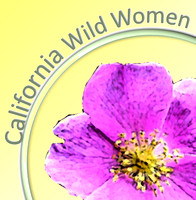
I once again started the month with The 2021 International Biodiversity Championship, August 2nd-5th, under the auspices of the Natural History Section of the Ecological Society of America. I was a member of the team, "California Wild Women". This was a group I connected with last year through iNaturalist. We each separately explore our local area and document the wildlife diversity we find. Last year I had the privilege of connecting with this amazing group of women, and we have deepened those connections through the year.
Team Observations: https://www.inaturalist.org/projects/california-wild-women-2021
All Teams: https://www.inaturalist.org/projects/2021-international-biodiversity-championship
Last year's event was deeply enriching. I approached it with dedication, enthusiasm, and a focus on documenting everything in distinct habitats: My Yard, Urban Parks, Tidal Wetlands, Rocky Shores/Sandy Beaches/Coastal Scrub, and Los Angeles River and Freshwater Wetlands.
Last year's blog: https://kimssight.zenfolio.com/blog/2020/8/california_wild_women
This year my goal was to play a supporting role for my team. Initially I wasn't going to participate at all, but I didn't want to pass up an opportunity to work with this wonderful group of women. I chose to stick to a few local spots and photograph fewer things, but try for the team to find species which I knew I could find but others may not get. I went to the LA River at Willow Street, Dominguez Gap Wetlands, the San Gabriel River Nature Trail, and El Dorado Park. I tried to balance my time between personal obligations and this challenge (which can be quite time consuming with time in the field, and then time processing, uploading, and identifying photos).
I found I faced three major obstacles: 1) my favorite lens and camera are in the shop, 2) there was a heat wave with temperatures in the 80's or above every day, and 3) my own attitude. That last one being my major obstacle. Warning, I am going to sound a little cranky in this post. Fortunately these obstacles seemed less of an issue for my teammates, some braving triple-digit temperatures and traveling great distances to lead our team to victory.
Everyone has their own personal backdrop of obligations and concerns, and mine are not so great. But I will share a few of mine to give a little background to my general crankiness. I have a couple of projects of my own making, and this challenge pulled me away from them. Additionally, I had several social events planned that I didn't want to have to schedule around. I find it is better to undertake this type of challenge with a cleared schedule and a sense of purpose.
Every morning, for the past month or so, I have had to battle ants attracted to cat food. I always win the individual battles, but the ceasefire lasts only a couple of days and then they are back. Although, as you know, I find insects fascinating, looking forward to this every morning makes me cranky. I've had lots of advice, so not looking for any more.
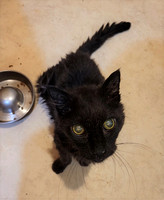

Also part of my daily routine is caring for my elderly cat who has been hanging on for the past 4 years with twice daily injections of insulin and special cat food. The poor thing is missing teeth and has bad hips. I think he is slipping and may be a bit senile. Feeding him is an ordeal. Not only does it take cajoling him, stirring his food for him, and chasing away the ants, but I also have to keep the other marauding fat cats from eating his expensive food.
During the bioblitz, I faced other stresses. My mother, who lives alone in New York City, had a small health scare. She is fine, but I am reminded that hopping on a plane to go there is fraught with the added stress of the highly politicized vaccination/mask debates. And then this week, hearing about the behavior of Governor Cuomo and his defense infuriates me. Among his many indiscretions in a workplace, I can think of no defensible position for running his finger down the back of a woman in an elevator. Would he have done this to a male colleague? Sorry gentlemen, this is just creepy. I will end the discussion there for fear of going into a major rant.
Now on to the bioblitz.
By the numbers:
- We finished 1st place in species (close to 900 species and increasing as more id's are made) (up from last year)
- 16 Teams (down from last year)
- 3 Continents (https://www.inaturalist.org/projects/2021-international-biodiversity-championship?tab=observations&subtab=map)
General Observations:
- I have found that my local habitats are in serious decline since the pandemic.
- Homeless encampments have overrun many areas and have caused fires in our drought parched vegetation.
- Some authorities have scraped away habitat at the LA River for flood control.
- Local parks are filled with trash and areas in the remote corners, which once held vegetation, have been turned into makeshift dirt bike trails.
- Time constraints lead to poor quality of photos, and careless and wrong identifications. Neither of which make me happy.
- However, there are always some things joyful to find in nature, but sometimes you need to dig a little deeper to find them.
Here are some of what I found.
After feeling a bit rushed to shoot things, even if they didn't really interest me, just to add to species, I took some time to photograph dragonflies. I found 10 species and enjoyed trying to catch them in flight. Not a good use of time for the bioblitz, but an excellent use of time for the soul. Here are Spot-winged Glider, Black Saddlebags, and Red-tailed Pennant, and a link to those I submitted to the bioblitz: https://www.inaturalist.org/observations?place_id=any&project_id=california-wild-women-2021&taxon_id=47792&user_id=kimssight&verifiable=any
A notable observation was this Alligator Gar at the Dominguez Gap. Last September I reported one to the Fish and Wildlife invasive species hotline. They were very interested. These are invasive non-native fish and have been reported to grow up to 10 feet and weigh 350 lbs. Looking through observations on iNaturalist, I think it was seen since April 2020 or before, but the photos were not clear. Later I reported back to them a report I saw on a Facebook page that showed one was captured by a local fisherman just a short ways from where I had seen it. We assumed it was the same fish. But during this bioblitz I saw another!!!!!! Makes you wonder how many there may be. These were probably released when they got too big for someone's home aquarium. Note that I and other birders have not seen ducklings, Marsh Wren, nor Song Sparrows in this area which I had reported in the bioblitz last year. I reported it again with many people CC'd. Link to the observation https://www.inaturalist.org/observations/89712681
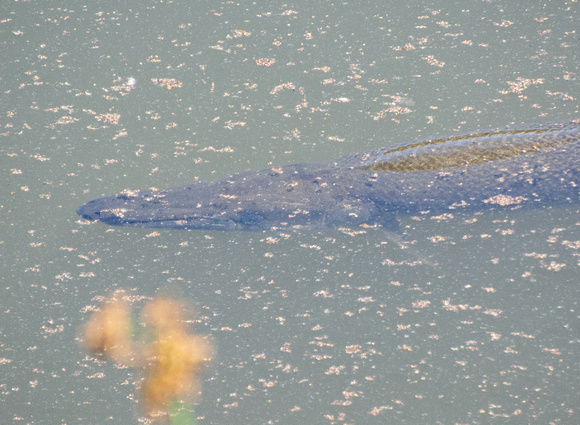
And lastly I thought I would share this little guy found near the LA River. I don't know the species of this solitary native bee, but I like to photograph things showing behavior or some concept. Most people only think of bees in hives, but this is true really only for the non-native Honey Bee. Most of our native bees are solitary, making nests in the ground.
Now back to my other projects. So many things, so little time.
]]>
I went out whale watching. I saw many Common Dolphin (which I suppose are technically small toothed whales), but no large whales. However, my best view of dolphin was right off the beach. Bottlenose Dolphin put on quite a show. One particularly exciting find for me was a "By-the-wind Sailor", a type of cnidarian (not a jelly, but more distantly related). I have seen them in the past out in the ocean, but never got a photo. One had washed up on the beach. They are moved about by ocean currents and the wind. A translucent vein projects upwards and acts like a sail.
One of my goals for this year was to do more art. I tend to procrastinate. I have started a project for myself to illustrate the wildlife of the Dominguez Gap Wetlands. This project is intended to give me some focus. I am trying to improve my artistic skills and doing is better than thinking about doing. I started the project this month and have made good progress, aided by the fact that my best camera and lens are in the shop. My first pieces are mostly 8x10 watercolor illustrations. This has led me to ask "Do ducks really need to have that many feathers? Is hair really necessary? Why did I start with such a challenge?" I am trying to improve techniques, patience, and to be less self critical. I am enjoying the process.
Watch the slideshows or click on the links to look through at your own pace. Links open in a new tab.
Enjoy the show! I always appreciate corrections to ID's.
Local Stuff: https://kimssight.zenfolio.com/new_jul_2021
Whale Watch: https://kimssight.zenfolio.com/whale_watch_jul-2021
Dominguez Gap Art Project: https://kimssight.zenfolio.com/art_of_dominguez_gap
]]>
I am continuing to see fledgling birds. I saw my first young Yellow-breasted Chat at the wetlands. I have seen the adults in the area, usually in the Spring. It is good to know that they are breeding there. In my local parks, I saw many familiar birds, but they were in baby-size. They sound different also as they exercise their newly found voices with high pitched squeaks and chirps.
But life is not all about birds. Two days in a row I saw coyotes at two different locations. At Rancho Los Cerritos there were a pair of young coyotes. Coyotes always have large ears, but somehow they look even larger on the young pups. A large raccoon was there also. The next day I was at Bolsa Chica Ecological Reserve to look for terns (ok, I know, terns are birds, but bear with me). The large Elegant Tern population had abandoned their nests after a drone crashed into the preserve. NOT GOOD and not legal. I saw no Elegant Terns at Bolsa Chica, but did see them nesting in Long Beach on two large barges in the harbor a few weeks later. Also at Bolsa Chica, there were Least Terns whose nests are monitored and protected by fences, because they are endangered. Since it was very low tide, a young bold female coyote was able to walk around one of the fences and walk into the nest area. Fortunately several people yelled at it and it finally left without a meal of eggs nor chicks. Don't worry, there is plenty of non-endangered food in the wetlands for the coyotes.
Continuing on the endangered species theme, a juvenile Short-tailed Albatross was found just off the coast. A group put together a boat to look for it the next morning and I signed up. We found it again hanging out near commercial fishing boats. These birds are very rare, numbering only in the few thousands in the North Pacific. They occasionally show up in Alaska and less often in northern California. So having one show up in southern California is rare indeed. It was a massive bird. It followed our boat as we were trying to attract gulls with popcorn. It loped across the water in gawky strides with an occasional glide low to the water. It was a banded bird. I couldn't read the tag, but several others on the boat got good photos of it, so the bird will be well documented.
So after the summer solstice, the days are getting shorter. The rest of summer is sure to whiz by and soon winter is coming.
Watch the slideshows or click on the links to look through at your own pace. Links open in a new tab.
Enjoy the show! I always appreciate corrections to ID's.
Local Stuff: https://kimssight.zenfolio.com/new_jun_2021
Los Cerritos Wetlands Bird Survey: https://kimssight.zenfolio.com/hellman_jun-2021
Albatross: https://kimssight.zenfolio.com/pelagic_jun_2021
]]>
I also seem to have sprung into post-vaccine life. I don't want to say I have thrown caution to the wind, but where I once was pouring sanitizer over my hands after anything I touched, hand washing has gone back to normal. I'm still having trouble remembering to take off my mask in my car and to put it on in stores. We are back to doing things we enjoy, such as family visits and local travels, and things we put off, such as my husband's eye surgery, all with a greater sense of ease. I am still hosting and attending ZOOM meetings, including a talk I gave on Dragonflies to PV/Southbay Audubon. However, more in-person gatherings are being planned, and carpooling has resumed!
May started with butterfly action. Some flowers attract butterflies and hummingbirds as nectar sources. This is where the action is. I have always known that hummingbirds are very territorial and will drive off competitors when defending 'their' patch. Butterflies do the same thing. I was surprised to see how aggressive the Monarch butterflies are. I watched for a while and saw them repeatedly driving off not only other butterflies, but also birds. Once I realized this, I tried and finally succeeded in photographing a monarch approaching a hummingbird. It was quite a challenge because they are both so fast and erratic in flight, but once I found the rhythm, I got it. There is only one photo out of many taken. These flowers also act as the local hangout for the butterflies to pick up a mate. I found a Western Tiger Swallowtail in hot pursuit of a female. There was a lot of mid-flight flirting going on and I caught it on camera. She seemed unimpressed.
At the end of the month, I spent two wonderful nights at the Banning House Lodge in Two Harbors on Catalina. My husband sipped wine and read books about the Chumash and Gabrielino-Tongva Indians, while I went out for solo hikes leisurely exploring at my own pace. Later I rejoined him on the terrace to do some artwork in my journal. Catalina is only 26 miles from Long Beach, and there was a large stand of Eucalyptus and other trees that reminded me of Gum Grove Park on the mainland. The birds are pretty much the same, but I was surprised by timing and abundance differences. Western Tanagers, Hermit Warblers, and Northern Flickers have pretty much left the coast at home, but they were on Catalina. Pacific slope flycatchers were very abundant. I enjoyed seeing the quail (not found in Long Beach) and delighted by the Santa Catalina Island Fox. A pair of them came by after 8pm each night to sweep the terrace for scraps. I was surprised that there are no rabbits on the island, but not surprised when I realize they would take over. I loved watching the sky change from gray to brilliant blue to pink as the time of day and cloud cover changed. I enjoyed the sounds of Raven wings, rustling palms, echoes of birds below, the constant call of Pacific Slope Flycatchers, young American Kestrels begging, and the occasional cackle of Acorn Woodpeckers. I will return.
Watch the slideshows or click on the links to look through at your own pace. Links open in a new tab.
Enjoy the show! I always appreciate corrections to ID's.
Local Stuff: https://kimssight.zenfolio.com/new_may-2021
Catalina Two Harbors: https://kimssight.zenfolio.com/catalina_may_2021
]]>
They say "Go big or go home", so I went home and went small. I spent some time in my yard with my Macro lens. It started when I was watching Valley Carpenter Bees going in and out of the home they have made in our old fig tree. I even tried my hand at some video. I had a great time watching them, but a hard time capturing them on camera. I saw an alligator lizard successfully grab a bee. By the time I saw it, and ran to get my camera, the action was over. He saw me and decided one bee was enough for the moment and quickly dashed away. As long as I had my camera, I went around my yard and shot a few more tiny critters.
I got to use my Macro lens again when I tried to solve a mystery. Some friends and I noticed that some Tipu Trees sometimes attract large numbers of birds, especially warblers. In Spring migration, one patch has had so many birds we named it "Tipu Corner". Once we noticed this bird magnet, we started mapping out the Tipu Trees in Long Beach, and quickly found that they are almost everywhere. These non-native ornamental trees are from South America and can lose their leaves late winter through spring. However, not all the trees were losing their leaves, and only some trees were birdy. It raises lots of questions about this tree. I'm not much of a plant person, so don't know much about the tree. However, I did discover that birds are not much interested in the tree. They are interested in the insects that are infesting them. I knew warblers are insectivores but never saw the insects, until I photographed a Hermit Warbler eating little white things. I did some research and also looked back at my photos of the Black-throated Green Warbler I photographed in Tipu trees in February. Sure enough, there were the same white bits and similar leaf damage. I went and collected some of the leaves at Tipu Corner and whipped out my macro lens. Mystery solved. Tipu Psyllids Platycorypha nigrivirga were found in San Diego in 2008 and have spread. As their name implies, they are associated with Tipu Trees, like Redgum Lerp Psyllids Glycaspis brimblecombei are associated with Eucalyptus (or "lerpy eucs" as we refer to them). The Eucalyptus psyllid/bird relationship has been well known since the 1990's. Psyllids feed by sucking on the leaves and stems for the plants. They create white waxy coatings and honeydew as they process the plant material. Each tiny insect grows by a series of molts until the final adult has wings and can disperse. The damage caused by these insects can cause the Tipu trees to drop their leaves prematurely. Their numbers surge in spring. This explains why some Tipu trees lose their leaves at different times and only some have birds, because they are infested. I guess the trick is to look for the trees with damage to find the birds.
I went to the shore the day after a grunion run to see birds eating the eggs. Grunion fish come up on shore at night on the very highest of tides to lay their eggs buried in the sand until the next very high tide. Birds have a feeding frenzy. However, I got there too late the next morning and the trucks were grooming the sand and and the dog walkers were about. Not many birds, but I found myself fascinated with the patterns in the sand left by water flow and also some squiggles left by the grunion in their midnight rendezvous on the beach.
From the coast to the mountains, Spring is an active time. I enjoyed a whale watching trip with a few friends, all birders. We hoped for pelagic birds and saw a few very distantly. A couple of fin whales provided the main entertainment. Early in the month I went to the mountains. It was very refreshing to see some different birds that we don't get by the coast.
I helped with my usual wetlands survey. It was uneventful, but I saw my first of the season Vaux's Swifts. Over the next few days I saw many more. They are harder to photograph than swallows. The name 'swift' is for a reason. I also helped out the Rancho Los Cerritos with their first time participation in the annual City Nature Challenge. A highlight for me was a Western Fence Lizard pooping and wiping its butt on the sand. Also there was a very large bumblebee with an orange butt. It was new for me. It is an endangered species Crotch's Bumble Bee - Bombus crotchii.
It has been a very busy month. A friend once told me that I need to retire from retirement. I at least need a few days to clean my house and pay bills. Oh, wait, I think I see a bird out the window, I need to grab my camera...
Watch the slideshows or click on the links to look through at your own pace. Links open in a new tab.
Enjoy the show! I always appreciate corrections to ID's.
Local Stuff: https://kimssight.zenfolio.com/new_apr-2021
San Gabriel Mountains: https://kimssight.zenfolio.com/barrett-stoddard_apr-2021
Los Cerritos Wetlands bird survey: https://kimssight.zenfolio.com/hellman_apr-2021
Ranch Los Cerritos City Challenge : https://kimssight.zenfolio.com/rancho_city_challenge_2021
]]>
So let me share some joy.
Mid-March is the most wonderful time of year, not only is it filled with anticipation and the first signs of Spring Migration, but it is also my birthday. What a difference this year is from last. Last year was the first days of shutdown from COVID. No celebration for me. I put a pile of whipped cream on a plate, stuck a candle in it, and sang Happy Birthday to myself. This year I met with vaccinated friends outdoors in a park, then met with family outdoors in the back yard for birthday celebrations, and I got my first vaccine! By the end of the month, birds are starting to sing their spring songs, migrating birds are starting to pass through, winter visitors are leaving, and summer birds are returning.
After a few storms blew through, large flocks (or gulps as they are called) of Violet-Green Swallows started to make their way north to the mountains. They were everywhere, and in the hundreds in some places like the LA river. Within about a week they were all gone. It was an amazing sight. It also posed a challenging photo opportunity. They move so fast that it is hard to focus on one. It takes hundreds of photos for one good shot, if you are lucky.
A leaky sink by the picnic area makes a wonderful bird bath. A Western Bluebird took advantage of the puddle, and I took advantage of the photo op. Common in the mountains and foothills, but the Oak Titmouse is not often found at the coast. Yet here it was in one of my local parks. It is a small bird with a large personality and a large vocabulary. I saw a nice assortment of flycatchers this month. Empids, as they are called, are very challenging to identify. Don't try this at home. Vermilion flycatchers are much easier to identify, as their name suggests they are a brilliant red. Some diving ducks at Bolsa Chica put on a show. I found the water splash patterns fascinating.
This is the time of year when shorebirds are making their long migrations. They are stopping along the way to feed and find food for their long journey. Large flocks of birds are found on our beaches. What is it about large flocks of birds that makes us want to chase them and watch them fly? Small children often do this with glee. There is something in the human spirit that is lifted by birds. People want to have their grandchildren enjoy the the same experience. They may even tell them, "I used to do that when I was your age. There were so many more birds then." However, humans have removed much habitat with development and beach recreation. Food sources have become scarcer. When people or dogs chase them, the birds expend energy to fly away and come back, after having their resting or feeding disturbed. Some birds don't survive the journey. Most people are unaware of this. As one individual person chasing birds, one time, there is probably not much harm done. However, collectively with all the humans, I fear this adds up to more impact on the birds we love. As years pass, there are fewer birds for humans to chase. One important opportunity for birds to feed is after grunion come up to lay their eggs in the sand. Grunion Runs occur at night on very high tides at specific times and in specific locations. The following mornings the migrating birds come to take their fill of grunion eggs. I went with a friend to Seal Beach to witness this feeding frenzy. It was a spectacular phenomenon. I am constantly learning new things about the intricacies of nature. Unfortunately the joy was marred when one dog walker told their off-leash dog to 'sic 'em', chasing off the birds. Yes, the birds will come back if you chase them, but they will have expended much energy to do so in the process. My friend tried to educate him, perhaps with an elevated tone of urgency in her voice. I am sure he was just there to enjoy the beach and the birds, but words escalated between the two in the exchange. I'm sure the joy of the moment was diminished for all. Often we don't know the harm we do, even if unintentionally, and education is slow and sometimes painful. I fear that our ignorance of nature, even if we love and cherish it, will cause us to have fewer and fewer fleeting moments of joy.
One of my photo groups had the theme of Black and White. One late afternoon, I loved how the light was streaming into the garage where my husband was making things with woodturning. I grabbed my camera and made the photos into black and white for effect. The next theme of the photo group was Double Exposure. So if a joy shared is a joy doubled, is a doubled photo a joy? Not necessarily. This is extending way beyond my usual interest, but I decided to give it a go. I got creative with it beyond pure double exposure. I'm not sure that it is for me, or that I have done justice to the technique, but it is good to get out of one's comfort zone and try something new. I am not experienced at photoshop, but think I prefer to play with messy paint and ink. View it with that perspective. Remember, sometimes it is wise to suspend judgment.
Watch the slideshows or click on the links to look through at your own pace. Links open in a new tab.
Enjoy the show! I always appreciate corrections to ID's.
Local Stuff: https://kimssight.zenfolio.com/new_mar-2021
Feeding Frenzy after the Grunion Run: https://kimssight.zenfolio.com/feeding_frenzy
Woodturner Black and White Study: https://kimssight.zenfolio.com/woodturner
Double Exposure Study: https://kimssight.zenfolio.com/double_exposure
]]>
The Covid/political fog and darkness of January seems to be brightening, or at least I'm feeling more optimistic. Mom in NYC is doing well and has had her vaccines. My husband has had his first and is scheduled for his second. I am hoping to get my first one in March. I have started a to-do list for post-vaccine. A few trips are on the list, but so are some simple things like hugging people, going to lunch with friends, and carpooling with those also vaccinated.
In addition to my post-Covid list, I am keeping my bird lists. Many birders are list keepers. Most have a life-list of all the birds they have seen in their life, and are eager to add a new 'lifer'. Some keep lists by state or county, such as a life-list in California or LA County. Seeing a 'lifer' gets harder without travel. Seeing a county lifer gets harder with experience, and one has to resort to 'chasing' a rare bird that turns up. Then there are year-lists. Sometimes people just keep a year-list, sometimes by state or by county. Birders rush out in the beginning of the year to see all the usual birds and chase the rarities. Many people use eBird to record their bird lists, as do I. Here you can see how many birds you have seen compared with others and with yourself in prior years. This is where the friendly competition drives one to seek out new birds, places, and skills. I try not to let my competitive side drive out the joy of quiet contemplation of a gentle walk through a park. I do a little of each. I am letting my lists fill themselves out as time goes on, and not pursuing them with competitive gusto. My January 1st LB100 birding event starts my Los Angeles County year-list each year. A few birds I chased locally this month for my county year-list were a Black-throated Green Warbler, an American Redstart, a Tropical Kingbird, a Grasshopper Sparrow, and a Greater Pewee (which was also a lifer!). They were all within a reasonable radius of my home and two were in parks new to me, so worth the excursion. I have a greater appreciation of the movie "The Big Year". If you haven't seen it, it gives an idea of competitive birding and 'chasing' birds.
Having spent almost all of last year within a very short radius of my home, I am ready for new adventures. I have decided that I will venture more into Orange County and slightly further afield to places I visit less frequently. I am seeking pretty places, less crowded, and places I feel relatively safe to let my mind wander as well as my feet. There are some places that are good for birds, but also are often accompanied by homeless encampments. Parts of the LA river are like that. Even when enticed by good birds, I find the experience less than enjoyable.
Some of the experiences I enjoyed this month have been watching some common characters. I watched an Anna's Hummingbird working on her nest. She repeatedly flew out to a nearby tree seeming to collect material (spider webs?) and go back to her nest. She would compact the outside with her bill and then stomp her feet and wiggle in the cup. Many birds are starting to collect nesting materials. This month was also filled with Eastern Fox squirrels hopped up on hormones. Their lives have been filled with food, frolick, and f-ing fun. They were not the only ones looking for love. A pair of Kestrels were caught in the act, as were a pair of Variegated Meadowhawk dragonflies.
My birding and observations on iNaturalist caught the attention of a reporter for a local newspaper. She interviewed me for an article on Pandemic Birding and featured eleven of my photographs.
I was inspired by a friend who was making kaleidoscope art from photographs. Hers were stunning and she spent a lot of time carefully creating them in photoshop. I didn't want to spend as much time, but found an app that let me do some more easily. I see the flaws, but still like some of the effect. Someday, with more patience, I may try the more detailed approach.
Follow me on Facebook: https://www.facebook.com/KimMooreNaturalist/
Watch the slideshows or click on the links to look through at your own pace. Links open in a new tab.
Enjoy the show! I always appreciate corrections to ID's.
Local Stuff: https://kimssight.zenfolio.com/new_feb-2021
Kaleidoscope: https://kimssight.zenfolio.com/kaleidoscope
]]>
However, the new year did not come as the fresh start I had hoped for. Covid cases increased. My husband's son in England was hospitalized with it. My local son, daughter-in-law, and granddaughter had mild cases. Fortunately all recovered. This makes several family members who have suffered with it and a friend and several acquaintances who have died. Then we had the grim and horrific attack on the Capitol. I found my nerves raw this month and even with the relief of a transition of power, it takes intention for me to remain balanced. From what I hear from others, I am not alone in raw nerves and ill moods.
While I have continued to go out for daily bird walks in an attempt for normalcy, I have gone alone more often. Birding has seemed a bit perfunctory. I want to escape talking about pandemic and politics, but find that when with friends, I seem only to talk about pandemic and politics. So here I am, starting my blog with talk of pandemic and politics.
Then there is a slight glimmer of hope on the horizon if enough vaccines can be given. My mother in New York City had been trying daily to get appointments with no luck yet, but suddenly a friend tipped her off and she got her first dose. This is huge relief. My husband and I are still waiting for local stocks to be replenished.
On to talk of nature. Recalling some of the wild things I've seen this month makes me smile, and I deeply need that.
I enjoyed watching gulls. Often they are either overlooked or dismissed as scavenging 'seagulls'. However, I find that once you try to get to know them, they are diverse and have great personalities (or is that gullinalities). Western Gulls are quite common. I enjoyed an encounter at the end of Belmont Pier. An adult gull had swallowed several fish. I'm not sure if it had caught them itself or had poached them from the bait bucket of some fisherman on the pier. A young gull harangued the parent until the fish were coughed up. Gulls take three to four years to mature, depending on the species. Their plumage changes each year, which is why many just give up on them and just call them gulls. Heerman's Gulls, however, are striking and sleek. I managed to photograph them in each of the four years of plumage. 'Cute' is a term not often applied to gulls, but Mew Gulls, are comparatively smaller and, in the gull world, can be called cute.
Shorebirds are fun to watch. I love Sanderlings darting back and forth at the edge of the surf. A Marbled Godwit was minding his own business when the Whimbrel decided to be a brat. The Whimbrel poked the Godwit in the butt and pulled out a feather.
Each photo in my set has some story, but I can't tell them all. But just a few more notable observations, a Kestrel found a Fig-eater beetle to eat. That is rather late in the season for that beetle. A California Scrub Jay found a Western Fence Lizard tasty. I had heard they eat them, but this is the first time I witnessed it. I generally see them eating acorns, or maybe backyard peanuts. A Cassin's Kingbird was one of seven devouring the fruit from a tree. They were tossing the fruit in the air and squeezing it to get to the pulp inside. A Blue-gray Gnatcatcher gorged itself on a swarm of termites.
At the very end of the month, I ventured into Orange County and discovered two new parks, a Mexican Duck, and had fun with raptors. And then it rained. It has been so dry, that the rain was actually a metaphorical ray of sunshine.
I think I shall recalibrate my personal calendar and now look forward to a fresh optimistic start of the new year starting February 12, Chinese New Year.
Follow me on Facebook: https://www.facebook.com/KimMooreNaturalist/
Watch the slideshows or click on the links to look through at your own pace. Links open in a new tab.
Enjoy the show! I always appreciate corrections to ID's.
Local Stuff: https://kimssight.zenfolio.com/new_jan-2021
]]>
My husband and I shared a quiet meal together and worked on a jigsaw puzzle. Our son, daughter-in-law, and grandchildren, came over for a brief but lovely visit socially distanced and masked in the back yard. We had a lovely laid back holiday. We rather enjoyed the simplicity of it.
Other traditions that had to be altered were the various Audubon Christmas Bird Counts (CBC). Our local chapter decided to cancel it altogether. However, several of us decided it could still be done with people birding singly or in couples. I helped coordinate and my friend Christine compiled the results. It took a bit of my time and some mild organizational skills, but 36 people covered a wide territory within our 15 mile circle and counted over 20,000 individuals birds and over 170 species. We called it a Holiday Bird Hunt (HBH). We had a ZOOM after-party. A good time was had by all.
I also had to redo the planning for my January 1st LB100. This has been a tradition for the fourth year. We seek to find 100 species of birds in Long Beach on Jan. 1. In the past I have created the route, and we all go together. I have had to re-plan it as a more elaborate scavenger hunt for people to compete singly or in couples. With the work behind me, I am looking forward to the first. I will let you know how it goes in my next month's blog.
Aside from planning and organizing, I did go birding locally. This has been a constant pleasure during these otherwise worrisome times. I visited the shore. I need to get there more often. I watched a Willet playing in the waves, shared a moment with Sanderlings, and saw a Spiny Sand Star (Astropecten armatus) for the first time. At local parks, Long Beach became a birder's hotspot with several birds showing up that only make an appearance on our coast very occasionally. A Dusky-capped Flycatcher, that I had found last spring, returned for another winter. When people went to look for it, they also found a Red-throated Pipit. A few miles away was a Lapland Longspur. They breed in the Arctic Tundra and usually winter in the Great Plains. I ended the year with a wonderful close encounter with a Great Horned Owl. Although they are not uncommon, they are always magnificent.
Wishing you all a safe and happy New Year. I look forward to meeting you all in the field in later 2021 when we all get our vaccines and the world is made safe again.
Follow me on Facebook: https://www.facebook.com/KimMooreNaturalist/
Watch the slideshows or click on the links to look through at your own pace. Links open in a new tab.
Enjoy the show! I always appreciate corrections to ID's.
Local Stuff: https://kimssight.zenfolio.com/new_dec-2020
]]>
After a brief warm start to the month, it got blustery and cold. We even had our first rain in a long time. But that was short lived, and by the end of the month, it was again unseasonably warm and dry. At least the evenings have been cool, which has made for pleasant weather.
My husband and I drove to Malibu one day, just to get away. This is the furthest we've been from home since the beginning of the year. We enjoyed outdoor dining in the parking lot, and I got to go birding at Legacy Park and at Malibu Lagoon. I saw a Wilson's Snipe at much closer range than usual. When I have seen them before, they are very elusive and hide in the reeds.
I enjoy Bolsa Chica, but had been frightened off by recent reports of car break-ins and follow-home robberies. It is a shame you go somewhere for peace and have these things in the back of your mind. But I was very glad I went. I saw my first Short-eared Owl, wintering birds are coming back, and all was safe when I got back to my car. A second trip, coming in from the back trails, got me a photo op of a resident Peregrine Falcon.
Vermillion Flycatchers were once rare in our area, but now have been breeding locally, and are more regularly found in certain places. They are beautiful birds. The males are bright red and can't be missed. The young and females are still beautiful, but the colors are more subtle. I was with two friends when we saw a male thrashing a caterpillar until it turned it into limp green pulp. We love our sweet little birds, but they can be quite vicious.
My own yard blooms bright yellow flowers of Mexican Marigold. They become magnets for native bees and flower flies. I saw several sweat bees (Halictus ligatus) mating. The females were laden with pollen sitting on flowers when a male would pounce on one and they would tumble to the ground. This repeated several times with several bees. It was interesting to watch, but hard to catch on camera. An interesting moth appeared, Metalmark moth (Choreutis emplecta). This is a non-native species that feeds on fig trees. It has only recently popped up in our area. I had not seen one before, but knew what it was as soon as I saw it from recent observations and discussions on iNaturalist. My favorite syrphid fly, Stripe-eyed flower fly (Eristalinus taeniops), always loves these flowers. They have crazy eyes. Just look at the photos. I continued night surveys of my yard for the Natural History Museum project. I found a spider I had never previously seen, Leafcurling Sac Spider (Clubiona sp.). Finding something new is always cool.
Wishing you all safe and happy adventures, and happy holidays.
Follow me on Facebook: https://www.facebook.com/KimMooreNaturalist/
Watch the slideshows or click on the links to look through at your own pace. Links open in a new tab.
Enjoy the show! I always appreciate corrections to ID's.
Local Stuff: https://kimssight.zenfolio.com/new_nov-2020
]]>
A personal highlight was that I finally broke down and purchased my first set of 'adult' binoculars. I had been birding with a pair of Pentax Papillio's. These were good for close-up viewing for my butterfly surveys, as well as casual birding. But with my butterfly surveys on hold due to Covid restrictions, and my increase in local birding, I decided it was time to make the leap. I am thrilled with my Nikon Monarch HG 8x30's. Still compact for when I am carrying my big camera, but incredible detail. I realize I have been birding blind all this time.
Fall migration continued strong after the spectacular start in the end of September. Sparrows are back for the winter and a few waterfowl are coming back, with more to come. Notable rarities that showed up were Great-crested Flycatcher, Broad-winged Hawk, and Black-throated Blue Warbler. Some other 'special' birds arrived that may stick around for the winter include a Little Blue Heron, Green-tailed Towhee, Tropical Kingbird, Palm Warbler, and a Tricolored Heron. Although Yellow-rumped warblers are very common and abundant in winter, I saw a leucistic one. Some of the melanin pigments that produce blacks and browns are missing and the bird looks odd.
While the 'rare' birds get a lot of attention, I also like to watch the common birds for their beauty and behaviors. Just like people on social media, they are eating, primping, dancing, and playing. Predator/prey relationships are always interesting and I try to photograph birds eating. A Downy Woodpecker found a Bordered Mantis egg case (ootheca) and really went to town on it, pecking at it and pulling out the tasty babies. I have a small video to go with it too. A Snowy Egret was picking off mosquitofish. It seemed to be dancing on the water. This feeding behavior is more typical of Reddish Egrets. A common behavior of birds is preening. I enjoy watching them as they display their feathers in the process. A Red-tailed Hawk, Red-winged Blackbird, and an Egyptian Goose were cooperative for the camera. A Western Gull seemed to amuse itself repeatedly dropping and catching a stick in flight. Do birds play?
Our monthly bird survey of the Los Cerritos wetlands was foggy and uneventful.
And what would October be without a black cat and spiders. I continued to survey my yard at night in hopes of finding Brown Widows with prey for the Natural History Museum project.
Wishing you all safe and happy adventures.
Follow me on Facebook: https://www.facebook.com/KimMooreNaturalist/
Watch the slideshows or click on the links to look through at your own pace. Links open in a new tab.
Enjoy the show! I always appreciate corrections to ID's.
Local Stuff: https://kimssight.zenfolio.com/new_oct_2020
Wetlands Survey: https://kimssight.zenfolio.com/hellman_oct-2020
]]>
I continued contributing to the Natural History Museum's Widow Wars project. The goal is to photograph Brown Widow spiders with their prey to study the impact of this species on other native species. So far, I personally have found that they dine on a variety of insects and spiders, with notably Tropical House Crickets, Black Webspinners, and other spiders high on the list. With cool temperatures and quiet I have enjoyed getting to know my yard at night. I didn't post all my photos here, just a few interesting characters.
I had an interesting find at the Dominguez Gap Wetlands. I photographed a large fish. About a month ago, I met a man who was rather excited that he had seen a large creature. I looked for it that day but could not find anything. My friend and I wrote it off as the Loch Ness Monster. I finally saw it, got some good photos, and was able to identify it. It is an Alligator Gar. These are invasive non-native fish, and was probably released from a personal aquarium. They have been reported to grow up to 10 feet and weigh 350 lbs. Looking through observations on iNaturalist, I think it has been seen since April, but the photos were not clear. I reported it to the state's invasive species hotline, and California Department of Fish and Wildlife biologists are now trying to capture it. The Natural History museum is working with them and would like to add it to their Ichthyology collection.
It was a great month for birding, particularly in the latter half of the month. Fall migration has turned up some amazing birds. I added several new to my life list. Notable in the birding world, drawing literally over 100 birders, some driving hundreds of miles to see them, were: a Sulphur-bellied Flycatcher, which normally ranges from Mexico to South America, and a White Wagtail, which breeds in Eurasia and Western Alaska and then migrates south to Africa. This one apparently migrated down the wrong coast. Not quite as 'rare', but still notable for me were a Northern Waterthrush, a few lost East Coast Warblers, interesting sparrows, and a beautiful red male Summer Tanager. Fortunately for me they were all close by. Our monthly bird survey of the Los Cerritos wetlands started off quite foggy. It was uneventful and pleasant.
Hooray for cooler weather.
Wishing you all safe and happy adventures. Voting starts. Make your voice heard.
Follow me on Facebook: https://www.facebook.com/KimMooreNaturalist/
Watch the slideshows or click on the links to look through at your own pace. Links open in a new tab.
Enjoy the show! I always appreciate corrections to ID's.
Local Stuff: https://kimssight.zenfolio.com/new_sep_2020
Wetlands Survey: https://kimssight.zenfolio.com/hellman_sep_2020
]]>
My big activity in the beginning of the month was participating in a 4-day bioblitz. With all the photos I took and follow-up computer work, it turned into an 8-day effort. It was jam-packed with learning and interesting things. I wrote a separate daily diary for the event. https://kimssight.zenfolio.com/blog/2020/8/california_wild_women.
I have also started contributing to the Natural History Museum's Widow Wars project. See my photos in their announcement. https://nhm.org/stories/widow-wars?fbclid=IwAR24ucO3xZPacEd0-ey6cbm7LhWyw3fty3D7-wWesxjwuixb_roVAvP5Nwc. The goal is to photograph brown widow spiders with what they are eating. I am creeping around my backyard at night. I am always afraid some neighbor will call the police on this strange prowler carrying a big camera. "But officer, this is for science". I have gotten to know these spiders better. I have seen orb weavers make a web, but until now had not seen a brown widow make its messy cobweb. I also found a number of other spiders in my yard. Noble False Widows are new to my yard and are relatively new to the LA area. Their population seems to be increasing greatly. Many will cringe when they see my spider pictures. I challenge you to look closely and find something that makes you say, "I didn't know that" , "let me look more closely", or "wow". Or just scroll past them quickly to get to the birds.
My outdoor activity for the rest of the month was slow. I visited the LA River a few times looking at migrating shorebirds. I now bring a dog stroller to carry my camera, scope, Sibley's, binoculars, and water. I think I have completed my metamorphosis into full fledged bird nerd. People see me and immediately identify me as someone who knows about birds. Strangers often stop and ask me questions, which I enjoy answering when I can. Mostly, I enjoy their enthusiasm. I browsed through a few local parks looking for early migrant flycatchers and perching birds. In the last few days I have seen some, but the numbers of birds still seem frighteningly low. I enjoyed watching an American Bullfrog stalking Common Green Darners. It made several attempts, but I'm not sure it caught them. In one of my photos you can see the leap, but you can just make out the dragonflies escaping on the right.
I left my air conditioning for short bursts, and inspected my own yard during the day, only to be attacked by Yellow-fever Mosquitoes. Of course I photographed them before swatting them. I also was surprised by a Long-horned beetle - Icosium tomentosum. It is non-native and first showed up in Orange County in 2005. I checked over the next couple of days to see if I could find it again. I did. It was in the web of a Nobel False Widow. Non-native spider eats non-native beetle.
I need cooler weather and to go somewhere! One can dream.
I hope this window on nature inspires you to look out your own.
Follow me on Facebook: https://www.facebook.com/KimMooreNaturalist/
Watch the slideshows or click on the links to look through at your own pace. Links open in a new tab.
Enjoy the show! I always appreciate corrections to ID's.
Local Stuff: https://kimssight.zenfolio.com/new_aug_2020
Wetlands Survey: https://kimssight.zenfolio.com/hellman_aug-2020
]]>

What a wonderful way to start the month! The 2020 International Biodiversity Championship is Monday, 3 August 2020 - 6 August 2020, under the auspices of the Natural History Section of the Ecological Society of America. I am a member of the team "California Wild Women". This was a group I connected with through iNaturalist. We each separately explore our local area and document the wildlife diversity we find. I designed our logo, the California Wild Rose, native to chaparral and woodlands in our region. The fragrant flower has five petals, one for each of us. I cover the coastal areas, my yard, and our regional park.
Team Description: https://www.inaturalist.org/projects/california-wild-women?tab=about
Team Observations: https://www.inaturalist.org/projects/california-wild-women
All Teams: https://www.inaturalist.org/projects/international-biodiversity-championship-2020
Some of my observations are in the links below. I chose some because I liked them, and/or they represented the habitat.
DAILY DIARY
August 2 (<12 hours)
Getting ready for a 4 day nature intensive challenge! What fun. It starts in <12 hours.
Today's preparations include getting chores out of the way (house cleaning, laundry, grocery shopping, clearing the calendar), getting the cameras ready (charging batteries, cleaning lenses), planning my day trips (checking tides, choosing locations).
The start time is midnight, but that is east coast time. I hope to start tonight at 9 pm. I will look for a few spiders and moths to kick things off.
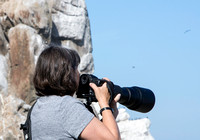 The biggest challenge I have right now is what camera(s) to bring. I am going to Bolsa Chica in the morning. There are lots of birds there so I want my best bird lens, a Tamron 150-600. It is very heavy. I have decided to take it. But I also want to look for the Silver Argiope Spiders. That is not a good lens for that. I have a good macro lens/flash on my other camera, but it is also heavy, and I can't carry both. I decided to charge up and bring my Olympus pocket macro camera. An added advantage is that it has a GPS built in. The only downside is picture quality, and I rarely use it, so I am afraid I will miss good shots. Life is compromise.
The biggest challenge I have right now is what camera(s) to bring. I am going to Bolsa Chica in the morning. There are lots of birds there so I want my best bird lens, a Tamron 150-600. It is very heavy. I have decided to take it. But I also want to look for the Silver Argiope Spiders. That is not a good lens for that. I have a good macro lens/flash on my other camera, but it is also heavy, and I can't carry both. I decided to charge up and bring my Olympus pocket macro camera. An added advantage is that it has a GPS built in. The only downside is picture quality, and I rarely use it, so I am afraid I will miss good shots. Life is compromise.

I also have to think of snacks and water. With COVID19 closures bathrooms may be closed.
I hope my brain lets me sleep tonight. Let the games begin already!
10 pm Update
I wandered around my yard with a flashlight and my camera. I generally don't creep about at night, but was rewarded with more than I thought I would (mostly spiders). Now to bed for an early start.
.
August 3
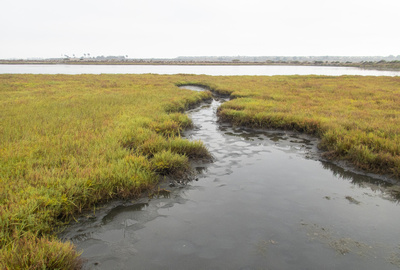
I woke up just before the alarm went off, fed the cats, drank a cup of coffee, and left for Bolsa Chica Ecological Reserve, a tidal wetland. It was the perfect place to go. The tide was low at 4:30 am, but the inner bay is gated and drains much later. So when I got there at 7 am, the tide was low and just beginning to rise. As predicted, I missed quite a few shots due to problems with my little camera. Perhaps I should read the manual! But also as predicted, there were lots of birds. I decided to focus on biodiversity rather than pure quantity or quality of observations. You may see a few multiple observations of the same species, but I think I shot only one or two of the multiple hundreds of Elegant Terns and Western Sandpipers. I tried to stay on mission, but couldn't help but linger with a Reddish Egret dancing to catch fish. A Peregrine Falcon swooped down to catch a crow in mid air. Flew off and landed with its victim directly in front of a lucky photographer. I, on the other hand, saw this occur from what seemed miles away and only caught bird smudges with my lens. I think you can just make them out. A highlight, was watching ants get caught on a high point when the tide came in. They bunched up, formed a raft, got carried off with the current, and drifted back to shore. They had a high survival rate.
 On my way home I stopped at Gum Grove Park/Heron Point on the edge of Los Cerritos Wetlands, another tidal and fresh wetland. I thought it a long shot, and it was, to see frogs. Nope. No frogs. I did see a few butterflies, but mid-day in midsummer is quite a bit duller than early morning in spring. I went home for a healthy lunch (Rum Raisin ice cream is just milk and fruit, right?), a nap, and to download a few photos.
On my way home I stopped at Gum Grove Park/Heron Point on the edge of Los Cerritos Wetlands, another tidal and fresh wetland. I thought it a long shot, and it was, to see frogs. Nope. No frogs. I did see a few butterflies, but mid-day in midsummer is quite a bit duller than early morning in spring. I went home for a healthy lunch (Rum Raisin ice cream is just milk and fruit, right?), a nap, and to download a few photos.
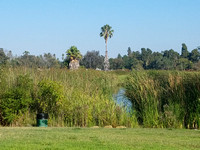 I lost some steam over lunch, but did get out to El Dorado Duck Pond and Regional Park. There is a reason I generally don't go in the afternoon -- it was crowded. Two drunk fishermen had a knock-down brawl, young boys were fighting, kids were screaming. So much for communing with nature. I did find a few things. My favorite was a teenage Western Bluebird thrashing a Mourning Cloak caterpillar and sharing it with a younger bluebird, probably from a later brood. I will spend the rest of the evening working on photos and trying to get some sleep.
I lost some steam over lunch, but did get out to El Dorado Duck Pond and Regional Park. There is a reason I generally don't go in the afternoon -- it was crowded. Two drunk fishermen had a knock-down brawl, young boys were fighting, kids were screaming. So much for communing with nature. I did find a few things. My favorite was a teenage Western Bluebird thrashing a Mourning Cloak caterpillar and sharing it with a younger bluebird, probably from a later brood. I will spend the rest of the evening working on photos and trying to get some sleep.
Onward to tomorrow.
August 4
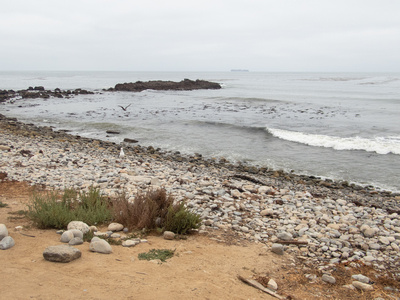 After a late night and early morning of photo processing from yesterday, it was time to go again. Today I went to White Point/Royal Palms on the Palos Verdes Peninsula and then over to Cabrillo Beach. These have rocky shores and sandy beaches with coastal sage scrub on the hills above. There are not as many bird species as found at Bolsa Chica yesterday, but I added a few species and a healthy number of observations.
After a late night and early morning of photo processing from yesterday, it was time to go again. Today I went to White Point/Royal Palms on the Palos Verdes Peninsula and then over to Cabrillo Beach. These have rocky shores and sandy beaches with coastal sage scrub on the hills above. There are not as many bird species as found at Bolsa Chica yesterday, but I added a few species and a healthy number of observations.
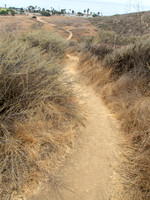 There were many Black Turnstones at the shore, more than I generally see at one time.
There were many Black Turnstones at the shore, more than I generally see at one time.
At Cabrillo Beach, an endangered snow plover was marching around the paved parking lot. I guess we know why it is endangered. When I got home for lunch, a nap, and to download some photos, I found that had worn myself out. I took a minor number of photos around the house, but didn't find much at all. Oh well. After a good night sleep tonight, I am sure I will be raring to go.
August 5
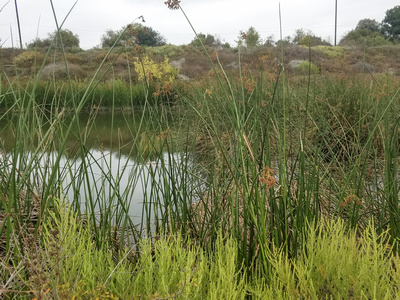 Another day. Today I visited the Dominguez Gap (a freshwater wetland adjacent to the Los Angeles River) and then to the lower Los Angeles River at Willow Street. The Gap was rather quiet. I had hoped to see a raccoon, a coyote, or a snake as I have seen in the past, but no luck today. I heard a bullfrog, but never saw it. Two other elusive denizens called out. There were about four Least Bitterns. They hid in the reeds, but flew between patches. I have never seen them so in the open before. However, since they were in sudden flight I had a hard time getting my camera on them. I spent quite a while before I could get even an obscured shot. The other elusive bird was the Marsh Wren. They make such a fun chattery call, but are frustratingly evasive. I did see a nest, and maybe a beak.
Another day. Today I visited the Dominguez Gap (a freshwater wetland adjacent to the Los Angeles River) and then to the lower Los Angeles River at Willow Street. The Gap was rather quiet. I had hoped to see a raccoon, a coyote, or a snake as I have seen in the past, but no luck today. I heard a bullfrog, but never saw it. Two other elusive denizens called out. There were about four Least Bitterns. They hid in the reeds, but flew between patches. I have never seen them so in the open before. However, since they were in sudden flight I had a hard time getting my camera on them. I spent quite a while before I could get even an obscured shot. The other elusive bird was the Marsh Wren. They make such a fun chattery call, but are frustratingly evasive. I did see a nest, and maybe a beak.
 Then it was off to the LA River. It is shorebird migration, so I saw several of my birding buddies. I tried to shoot at least one of every bird species I saw. Normally I spend more time trying to get 'pretty' shots, but I was seeking to document the biodiversity in a short period of time. I was satisfied. As I was leaving, we noticed a large number of Western Spotted Orbweaver spiders. I didn't have my good macro lens with me, so I had to make do with poorer photos, but at least I could add some photos to our team list.
Then it was off to the LA River. It is shorebird migration, so I saw several of my birding buddies. I tried to shoot at least one of every bird species I saw. Normally I spend more time trying to get 'pretty' shots, but I was seeking to document the biodiversity in a short period of time. I was satisfied. As I was leaving, we noticed a large number of Western Spotted Orbweaver spiders. I didn't have my good macro lens with me, so I had to make do with poorer photos, but at least I could add some photos to our team list.
I got home to avoid the afternoon heat. After my usual late lunch and nap, I searched my yard. I found a very interesting lace bug. I found a few other insects, but quit when the insects found me. Several Yellow Fever Mosquitoes found me tasty. As if COVID19 were not worry enough! I took a few photos and then ran inside.
August 6
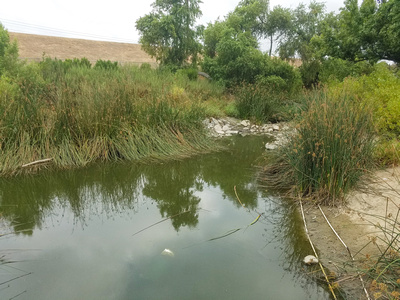 The final day of the challenge. The challenge ended at 1pm and we had to have all our observations loaded by that time, so I stuck closer to home. I went to Deforest Wetlands and Park. The wetlands is a further extension of the Dominguez Gap. The park is just above that, with typical urban park habitat. This park is a great place for warblers in migration, but in summer, it was pretty much dead, except for a multitude of Black Phoebes and Bushtits.
The final day of the challenge. The challenge ended at 1pm and we had to have all our observations loaded by that time, so I stuck closer to home. I went to Deforest Wetlands and Park. The wetlands is a further extension of the Dominguez Gap. The park is just above that, with typical urban park habitat. This park is a great place for warblers in migration, but in summer, it was pretty much dead, except for a multitude of Black Phoebes and Bushtits.
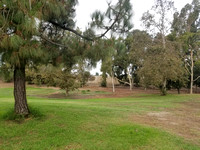 I rushed home to process and upload my photos. I still have a lot of work for my own records, but I got the final batch uploaded with just four minutes to spare.
I rushed home to process and upload my photos. I still have a lot of work for my own records, but I got the final batch uploaded with just four minutes to spare.
I really felt like I needed to high five my teammates, but alas, I am alone at my computer. We have had constant emails of encouragement with one another. I have looked at many of the observations they have posted and want to visit those places.
The Results
By the numbers:
- 36 Teams
- 5 Continents
- We finish 6th in both number of observations (1988) and in identified species (753 and increasing as more id's are made)
- 2 species of spider new to my yard, 1 lace bug new to my yard and new to me, 1 mosquito new to me and my yard
- Innumerable plants that I have seen and never paid much attention to
General Observations:
- Scarily fewer birds this year, even for summer there should be more
- High numbers of Wandering Glider and Spot-winged Glider Dragonflies
- More mosquitoes than in recent years
- More people out and about on a weekdays
- So much trash from the homeless encampments in LA river and adjacent wetlands. Perhaps with COVID19 there are fewer cleanup parties
- The wetlands adjacent to the river have been planted with native plants as part of restoration, but have many non-native species of plants coming through
Some personal key takeaways:
- Pay attention to habitat more holistically, particularly plants, which I often ignore
- Read the camera manual when using a new camera. Better yet, learn it before you go
- Don't go to parks in the afternoon. They are crowded
- I really didn't miss anything on Facebook or in the news
- Bioblitzes are exhausting, but are worth it. Being part of a team keeps you going
- Seeing things you've seen before, but with a new perspective, gets you thinking
- There is always something exciting if you look for it and something new to learn
Watch the slideshows or click on the links to look through at your own pace. Links open in a new tab.
Enjoy the show! I always appreciate corrections to ID's.
My Yard: https://kimssight.zenfolio.com/wild_women_my_yard
Urban Park: https://kimssight.zenfolio.com/wild_women_urban_parks
Tidal Wetlands: https://kimssight.zenfolio.com/wild_women_tidal_wetlands
Rocky Shores, Beach, and Coastal Scrub: https://kimssight.zenfolio.com/wild_women_white_point
LA River and Freshwater Wetlands: https://kimssight.zenfolio.com/wild_women_la_river
]]>
I never knew my maternal grandfather. He died well before I was born. My mother recently told me something he used to say. "All heat, but no light". During this time of communal anger, this phrase resonated with me. We need to find and be the light. I have always found light in nature and the community of people who share that passion. My birding zoom chat group has been a great joy to me, with humor and knowledge sharing. I always enjoy the passion of my entomological friends. I have made new connections with other naturalists through on-line sharing. With my past routines and opportunities disrupted, I am finding more time for exploration and a deepening involvement with my naturalist activities. I hope you can find your light.
This has been a good time to switch over to insects. In the beginning of the month I co-led the NABA butterfly count at the Nature Center. Because of COVID19 it was not public, and we made changes for social distancing and mask wearing. We held it in honor of Richard. This is an event he proudly led for many years. I think it very special that the California Dogface butterflies appeared this year. Richard had planted False Indigo specifically for them, and finally the population he had reared and cared for seem to be doing well on their own. My friend Mike, who also volunteers at the nature center, planted a butterfly garden in the regional park. It is thriving. In addition to a flutter of butterflies, native bees, wasps, lady beetles, and grasshoppers have called it home. My entomological society speaker (via Zoom) was an expert on Red Imported Fire Ants (RIFA). I got to tag along with him and Mike to photograph some finds on an ant expedition. No RIFA, but some other interesting species. The Palos Verdes /South Bay Audubon Society has started holding dragonfly surveys. This year was the first of what hopes to be an annual event. I explored Harbor Lake with two other socially distanced, masked enthusiasts. An exciting find for me, at another local park, was an Ashy Gray Lady Beetle. I had known of this one, but this is the first one I have seen.
Bird activity locally was slow, but picked up in the end of the month with migrating shorebirds. I made several trips to the lower LA River and to Dockweiler Beach. In addition to those that pass through, some who nest here have young. Black-necked Stilts and American Avocets are very aggressive and chase after any would-be predators. And who can resist taking too many pictures of snowy plovers! One interesting exchange was a Hutton's Vireo feeding a Southern Green Stink Bug to a Brown-headed Cowbird. Cowbirds are brood parasites. They lay their eggs in the nests of other birds, who then raise them as their own. We finally got to go back to our Wetlands Bird Survey. Not many bird species there right now, but so good to get out.
My photography group (which only meets intermittently) had a challenge this month to photograph water droplets. Challenges are good to try and learn new things. I learned how to use my flash remotely. It required a lot of patience, batteries, and a mop. I was in short supply of all three. I'm not sure if I will do it again, but I got some interesting results.
With all my other activities, I didn't make as much time for art. I did play with embellished acrylic monoprinting on paper. Abstract landscapes are a stretch for me.
I hope this window on nature brings some light into your world.
Follow me on Facebook: https://www.facebook.com/KimMooreNaturalist/
Watch the slideshows or click on the links to look through at your own pace. Links open in a new tab.
Enjoy the show! I always appreciate corrections to ID's.
Local Stuff: https://kimssight.zenfolio.com/new_jul_2020
Wetlands Survey: https://kimssight.zenfolio.com/hellman_jul-2020
Abstract Water Drops: https://kimssight.zenfolio.com/water_drops
]]>
I continue to go out close to home. Babies of all kinds are around. A mother raccoon collected her wayward kit. Perhaps it had wandered off a little too close to the water. I think the baby's face looks like he knew he did something wrong and is now resigned to his fate of mom carrying him back where he belongs. Along the LA river, Black-necked Stilts have had their babies. Chicks run around the river and then back to tuck under their parent for protection. The adult looks like it has too many legs! I love listening to birds. I can often tell a bird by its song, but the babies all sound alike to me with an insistent high-pitched plea. Baby birds are often streaky. A baby Vermilion Flycatcher looks quite a bit different from its bright red father. I enjoyed watching and trying to photograph Barn Swallows feeding their babies without ever landing.
Butterflies are always pretty. I must admit that I only occasionally photograph Monarchs. They are the poster child for butterflies, but there are so many more butterflies that don't get the attention they deserve. If you love birds and butterflies, then you must love insects. Insects form a major portion of the diet for birds. Without insects, you wouldn't have baby birds. And butterflies ARE insects. So scroll past the insects if you must, but some are quite beautiful and colorful if you take the time to look closely.
My current media for art is acrylics on paper. I was playing with a few techniques. I will probably continue in this vein for a while.
Even if you haven't gotten out for a walk yourself, I hope this window on the world brings you at least some peaceful distraction.
Follow me on Facebook: https://www.facebook.com/KimMooreNaturalist/
Watch the slideshows or click on the links to look through at your own pace. Links open in a new tab.
Enjoy the show! I always appreciate corrections to ID's.
Local stuff: https://kimssight.zenfolio.com/new_jun_2020
]]>
Despite these last few days and my heavy heart, I will continue with the rest of my blog as I had been writing throughout the month.
Park closures continued for the beginning of the month, but then started to ease up. I am getting used to wearing a mask and to my weekly routine for grocery shopping and disinfecting. I've increased my social interactions through zoom calls with family and naturalist groups. I even had a couple of socially distant lunches with friends outdoors, where we each supplied our own chairs and lunches and sat about 10 feet apart. My initial fears of the pandemic are subsiding a bit. Watching and photographing nature always helps keep my focus on something positive and peaceful.
I mostly stuck with local parks. Most of the migrant birds have found their way to the mountains and further north. Some resident birds are sitting on nests hiding from view. This has made for much quieter walks in the parks. However, some of the resident birds already have fledglings. Young Great-horned Owls, Red-tailed Hawks, and Great Blue Herons are some of the larger ones. They always look scruffy and gawky. There were many parents carrying food for their screaming offspring. Additionally I caught some nature courtship and 'romance' including Royal Terns, Black-necked Stilts, and Margined Calligrapher flies.
Mammals, reptiles, frogs, insects, spiders, and even snails and slugs were fun to photograph. Squirrels and rabbits get a lot of camera coverage, not for any scientific understanding, but just because they warm my heart. However, I was surprised to learn that squirrels eat birds! A horrified House Sparrow made a tremendous amount of squawking as the squirrel munched on a family member.
I am preparing for a talk about the Bixby Marshland. This has required me to dig a little deeper into my lacking plant knowledge and learn a little more technology. I always enjoy learning something new.
There are so many stories with each photo. I take each photo for a reason. Even if the reason isn't anything deep, I have chosen to click the shutter. Take a walk with me sometime.
Even if you haven't gotten out for a walk yourself, I hope this window on the world brings you at least some peaceful distraction.
Follow me on Facebook: https://www.facebook.com/KimMooreNaturalist/
Watch the slideshows or click on the links to look through at your own pace. Links open in a new tab.
Enjoy the show! I always appreciate corrections to ID's.
Local stuff: https://kimssight.zenfolio.com/new_may_2020
]]>
Every day is about the same as I described last month: bird, work on photos, binge-watch something, pat the cats, weekly grocery run, repeat. I did, however, participate in a Zoom party, and also presented on "Garden Birds and Insects" to a class using Zoom. At the end of the month I participated in the annual City Nature Challenge by posting my photos, including insects, reptiles, mammals, and flowers, to iNaturalist and helped identify birds and insects that others posted.
I am thankful that I can go outside every day for exercise with my camera in hand. With more parks and birding spots closed or less accessible, I am birding in more and more 'interesting' places. Streets next to golf courses have been very birdy. My own yard had some 'good' birds migrating through including a Black-headed Grosbeak and an Ash-throated Flycatcher. I even found a California Lady Beetle in my yard. An open field on CSULB is now accessible with school closed. I have met up with friends and we bird with masks and social distancing. Sometimes I have shown up at a park and run into a friend who happened to have the same idea. It is amazing what you can find within a few miles of the house.
Migration is fully underway. Warblers and flycatchers were in abundance. I discovered Tipu trees. These are a big draw for the warblers. They seem to have lots of insects on the leaves. During migration season you have to go often or you'll miss them; waves of birds come through. First it was Western Kingbirds and Orioles, then Nashville Warblers and Black-headed Grosbeaks, then Ash-throated Flycatchers, Black-throated Gray Warblers, Vaux's Swifts, and Western Tanagers, and then Olive-sided Flycatchers and Western Wood Peewees. The birds pass through so very quickly. The last few days have become much quieter. The Yellow-rumped Warblers and White-crowned Sparrows that were here all winter have now moved out. Our local birds are singing for mates (perhaps you have heard the Northern Mockingbirds). Some birds have already had young. I've seen Song Sparrows and Black Phoebes carrying food and feeding begging fledgelings.
With Spring in full swing, I didn't get much art done. I decided to use my Macro Lens to photograph small sections of my watercolor mixing palette. It made for colorful abstracts and was a lot of fun. While technically it is photography, I suppose, I classify it as art.
I am missing visiting and having a meal with family and friends. But separation is buying time for those dealing with the sick, and those searching for cures and vaccines. I look forward to knowing my family is safe. I hope this finds you and your family well. I think we are in this for the long haul. Even if you haven't gotten out for a walk yourself, I hope this window on the world brings you joy.
Follow me on Facebook: https://www.facebook.com/KimMooreNaturalist/
Watch the slideshows or click on the links to look through at your own pace. Links open in a new tab.
Enjoy the show! I always appreciate corrections to ID's.
Local stuff: https://kimssight.zenfolio.com/new_apr_2020
Macro Palette Abrtracts: https://kimssight.zenfolio.com/macro_palette
]]>
Spring is in the air for the birds. Birds are starting courtship displays including switching to their spring songs. Some are gathering nesting materials. Waves of migrating birds have been coming through. Swallows have returned and Violet-green Swallows came through on their way to the mountains. Rufous Hummingbirds are passing through. At the end of the month, Western Kingbirds and Bullock's Orioles have been recently plentiful. One late afternoon I saw a large flock of Whimbrels fly in at the shore.
In the early part of the month, I was still occasionally birding with larger groups of people. When a rare bird shows up, the birders flock. That was the case with the Blue-headed Vireo. However, shortly thereafter, things started shutting down. No group outings, no trips, and my butterfly and bird surveys are canceled. This has led me to bird close to home and explore places I don't usually go. With playgrounds and sports fields closed, there are more places to bird. I found two Dusky-capped Flycatchers in two separate parks. They must have overwintered here but have been overlooked. Only a few show up in Southern California each winter. A fellow birder walked through his neighborhood and found a bottlebrush tree filled with Orioles, including a lost east coast Orchard Oriole. It took me only 15 minutes to get there and see it too.
I have always wondered about the significance of sneakers hung on a lamppost or in a tree. It seems like a waste of perfectly good shoes. I saw some Nike's in a tree at the park. An Allen's Hummingbird was collecting spiderwebs from the sneakers to help build its nest. I think whoever threw the shoes up there may have had a different idea of wild life.
We did have rain this month. On the rainy days I stayed in and did art. I made a series on prints using printing ink as monoprints combined with block print. I cut the raven out of a rubber block making a positive and a negative image. I feel very artsy when doing it. However, printing is messy. I will probably not do it for a while because cleanup involves too many paper towels, and those are hard to come by right now.
Sometimes I want to do art but get stuck at the blank page. To break the spell, I take a piece I didn't like, and cut it up and do something with it. I had a piece that reminded me of pines. I then added the birds: Hermit Warbler and Townsend's Warbler. Less pressure, more fun.
Finally, I did a more detailed watercolor painting. This requires more skill. I need to practice more.
I hope this finds you and your family well. I think we are in this for the long haul. I am trying to watch less news and find creative ways to occupy my heart and mind, including connecting with friends and family.
Follow me on Facebook: https://www.facebook.com/KimMooreNaturalist/
Watch the slideshows or click on the links to look through at your own pace. Links open in a new tab.
Enjoy the show! I always appreciate corrections to ID's.
Local stuff: https://kimssight.zenfolio.com/new_mar_2020
A big change for me was getting rid of the bed in my office/studio/guestroom. Guests are still welcome, but we will have a folding bed when needed. This has opened up space for me to move and breathe. I now have a proper art studio. I was inspired to make some art using various media.
It was still a little slow on my Irvine Ranch butterfly survey, but it felt like spring. We had a few butterflies and some spring flowers are starting to bloom.
It was a raptor day at the wetlands bird survey. A pair of Peregrine Falcons was chasing a mourning dove. I think it was supposed to be 'food pass' of the dove from the male to the female falcon (perhaps as courtship?). The dove escaped, but without a tail. I always look for birds on my butterfly survey, so I have to look for butterflies on my bird survey. Western Pygmy Blue, Monarch, and Painted Lady posed. Cabbage Whites were there but did not pose.
I went on another Pelagic Birding Trip, this time out of Marina del Rey. We had sightings of Masked Booby, Short-tailed Shearwater, Black-legged Kittiwake, numerous Northern Fulmars, several gull species, three alcid species, and some shorebirds on the breakwater. They didn't all pose for me, but I got some shots that pleased me. We started in thick fog, but it lifted after a few hours and the weather was perfect for the rest of the trip. We had flat seas and smooth sailing. It was good to see some familiar faces aboard. Since it was a little cool, everyone was bundled up in jackets and warm hats. I said it was hard to recognize some people when they were wearing their winter plumage. My husband and I had owned a Morgan 27, but sold it about 10 years ago. It was a big surprise to see my old sailboat out on the water. It made me a bit nostalgic.
My big trip was a three day trip with fellow birders to Los Banos and surrounding areas in Merced County. We visited San Luis Reservoir, San Luis National Wildlife Reserve, Merced National Wildlife Reserve, Mercy Hot Springs, and Kern National Wildlife Reserve. It was extrodinary. It was my first time in all these locations. We birded in four counties, and I had a new life list bird, Yellow-billed Magpie. The fly-in at Merced NWR had literally over 10,000 birds. I have never seen that many birds in one place before: Snow Geese, Ross's Geese, Greater White-fronted Geese, and Sandhill Cranes. There was a spectacular sunset as a bonus. So many birds so many photos. We also saw lots of mammals: Tule Elk, Mule Deer, Coyote, Beaver, Ground Squirrel, Black-tailed Jack Rabbit, Desert Cottontail, and of course the domestic Horses, Ovine, and Bovine. On the way home on the last day, we drove through the beautiful rolling hills of Fresno and San Benito Counties to search for a special farm that attracts Tricolored Blackbirds. It was a beautiful drive.
I ended the month with a trip with (non-birding) friends to Palm Springs. I took my first aerial tram ride to Mt. San Jacinto. I highly recommend it. There were great views, snow, and Red Crossbills.
Follow me on Facebook: https://www.facebook.com/KimMooreNaturalist/
Watch the slideshows or click on the links to look through at your own pace. Links open in a new tab.
Enjoy the show! I always appreciate corrections to ID's.
Local stuff: https://kimssight.zenfolio.com/new_feb-2020
Butterfly Count: https://kimssight.zenfolio.com/irc_feb-2020
Wetlands Survey: https://kimssight.zenfolio.com/hellman_feb-2020
Pelagic Trip: https://kimssight.zenfolio.com/pelagic_feb-2020
San Luis Reservoir: https://kimssight.zenfolio.com/san_luis_reservoir_feb-2020
San Luis NWR/Merced NWR: https://kimssight.zenfolio.com/merced_nwr_feb-2020
Fresno and San Benito Counties: https://kimssight.zenfolio.com/fresno_feb_2020
Mt. San Jacinto: https://kimssight.zenfolio.com/san_jacinto_feb-2020
]]>
I also started the year with a wicked cold that kept going on and on. Despite that, I went out a fair amount in the early part of the month, until I finally came to my senses and rested to get well. I visited Crystal Cove in Orange County with my birding buddy Harriet and two Birding Pals from New Mexico. I have only been there once, many, many years ago. We had a splendid time, and I recommend a visit. I know I will be back soon. It has several habitats to explore, including on top of the bluff and on the beach. There are California Thrashers, California Gnatcatchers, and shorebirds. With beautiful views of the California Coast under warm sunny skies, have I mentioned how much I love California... especially in winter?
In my local parks, there seems to be a surge of pocket gophers. This is a major headache for those who are trying to maintain pristine parks. However, it is a big boon for the raptors. I do hope that the parks do not try to control the gophers with rodenticides. That poison goes up the food chain. Warning: Graphic predator/prey photos. On a positive note, Vermilion Flycatchers seem to be becoming more common in our parks around the San Gabriel River. I saw at least FOUR birds in three separate areas including male, female, and immature. I 'chased' (went out of my way to look for) a Trumpeter Swan. These are rarely seen in California. I saw an adult and immature.
It was so good to get back to my Irvine Ranch butterfly survey. Even though there were few butterflies and flowers blooming, the hills were green and the weather perfect. We saw tracks of Bobcat, which is a lot less scary than Mountain Lion.
It was a big raptor day at the wetlands bird survey. There were a pair of White-tailed Kites (one eating a gopher), a Red-tailed Hawk, a Sharp-shinned Hawk, and a pair of Peregrine Falcons.
I went on a Pelagic Birding Trip with Sea & Sage Audubon out of Dana Point. The weather and company were accommodating. We had the usual fun with gulls, pelicans, cormorants, and shearwaters following the boat on and off all day. There were also the assortment of tiny blips on the water or flying that are smaller than the floaters in my eyes. I am amazed at how the leaders can see and call them out. I do not find these sightings particularly satisfying. We did however, have a wonderful Black-legged Kittiwake close to the boat for a little while. Now, THAT made the trip for me! They are typically off-shore gulls, so it was nice to see my first one closer to the coast and have it pose for photos.
I finished off the month by giving a presentation on nature in the garden to the Lakewood Garden Club, and helping my entomological society with some administrative duties. It looks like February is lined up to be just as busy.
Follow me on Facebook: https://www.facebook.com/KimMooreNaturalist/
Watch the slideshows or click on the links to look through at your own pace. Links open in a new tab.
Enjoy the show! I always appreciate corrections to ID's.
Local stuff: https://kimssight.zenfolio.com/new_jan-2020
Butterfly Count: https://kimssight.zenfolio.com/irc_jan-2020
Wetlands Survey: https://kimssight.zenfolio.com/hellman_jan_2020
Pelagic Trip: https://kimssight.zenfolio.com/pelagic_jan-2020
]]>
My Irvine Ranch butterfly survey and my wetlands bird survey were both canceled due to much needed rain.
In the middle of the month, I went to Paso Robles to see the Field of Lights art installation covering rolling hills with an array of over 58,800 fiber optic stemmed spheres. They don't allow tripods, 'professional' equipment, nor flash, and of course the photos are for personal use - not for sale. Despite the restrictions, my cell phone and kit lens caught some of the light. We spent the night there and then went over to the coast to see Elephant Seals in San Simeon. They are always a winter favorite of mine. There were some very large bulls with all the younger males giving them wide berth. There were also three mothers with newborns. The birds were enjoying the flies, sometimes picking them off the seals directly only to be swatted away.
May 2020 bring you health, joy, kindness, and of course walks with nature.
Follow me on Facebook: https://www.facebook.com/KimMooreNaturalist/
Watch the slideshows or click on the links to look through at your own pace. Links open in a new tab.
Enjoy the show! I always appreciate corrections to ID's.
Local stuff: https://kimssight.zenfolio.com/new_dec-2019
Paso Robles Field of Lights: https://kimssight.zenfolio.com/sensorio
San Simeon Elephant Seals: https://kimssight.zenfolio.com/san_simeon_dec_2019
]]>
It was nice to be back to a regular routine, not missing any of my regular surveys. My local visits found (or should I say refound as reported by others) some 'good' birds, those considered rare or less common in our area. Madrona Marsh had Painted Bunting, Bobolink, Bronze Mannikin, and Pine Siskin. Cabrillo Beach had a Nazca Booby and a Red-throated Grebe. Wardlow Park had a Summer Tanager. Most of my birding was local, but I did get out on a quick trip to the north slope of the San Gabriel Mountains for sapsuckers. I spent a night in Pasadena at a charming B&B for my anniversary with my wonderful and patient husband. It was nice to wake up to some different birds outside the window. Red-whiskered Bubuls and Yellow-headed Parrots are introduced exotic species that have grown in population in that area.
I had some monoprints I had done in the past, that I wasn't happy with for one reason or another. I had stuck them in my drawer of art that is incomplete or I don't like but I think may be salvageable. I used these as backgrounds and added ink and gouache. I like the result. Lesson learned: something good can come out of it if you put it down and come back to it with new eyes.
My Irvine Ranch butterfly survey had decent numbers of butterflies, and as expected very dry vegetation. It was good to get back after missing a few times due to heat. I always enjoy the people, butterflies, and views. It was still warm, but not too bad. However, what you don't want to see when hiking is smoke. The water helicopters were flying past us to Irvine Lake. Turns out it was fire about 5 miles away, and fortunately it was put out quickly. We had just ended our butterfly survey and we left the area quickly.
The wetlands bird survey was at the end of the month. I was impressed by all the water from the King Tide. In one of our brackish puddles I noticed a lot of small insects swimming. While my photos were not good and not posted here, I was able to identify Water Boatmen and Water Striders. Both are generally in the area and would not mind the brackish water. Interesting how they quickly find and occupy a new source of water. The insect the Kestrel was carrying looked like it might be a Jerusalem Cricket. The Say's Phoebe maybe carrying a large cockroach. My photos were not good enough to positively identify the insects, but do identify the birds. We also had a late in the season Checkered White butterfly.
Follow me on Facebook: https://www.facebook.com/KimMooreNaturalist/
Watch the slideshows or click on the links to look through at your own pace. Links open in a new tab.
Enjoy the show! I always appreciate corrections to ID's.
Local stuff: https://kimssight.zenfolio.com/new_nov-2019
Irvine Ranch butterfly survey: https://kimssight.zenfolio.com/irc_nov-2019
Wetlands Bird Survey: https://kimssight.zenfolio.com/hellman_nov-2019
]]>
I participated in a Park Planning session for Deforest Park. It was an interesting exercise. They said that in all the other sessions, no one had raised the issue of habitat. I was glad that I was there to represent nature.
The wetlands bird survey was at the end of the month, and it was hot. The usual raptors were there along with sparrows. A Brewer's Sparrow was a first on the survey.
A trip to Two Harbors on Catalina Island was definitely the highlight of the month...or year. It was a relaxing two-night stay at the Banning House Lodge with my husband and two good friends. We enjoyed the views, the company, the relaxation, and the food. Marla and I took nature adventure hikes while we left our husbands to read and nap. Marla and I saw a large school of Leopard Sharks at Cat Harbor, searched for quail, laughed, and enjoyed our hikes. I, of course, searched for birds. I enjoyed the Catalina California Quail, which are a subspecies of our California Quail. They sounded a little different to me. They traveled in small flocks with one or two standing sentry. We also listened to the wing beats of the Ravens. It is a powerful sound. We had two Catalina Island Foxes visit with us. One was 'Dennis' a frequent visitor according to the hotel staff. The other we named 'Denise'. It was much smaller and very shy. I could stare at the landscape seemingly endlessly. Small changes in light and wind made for a constantly changing view. I plan to go back!
Inktober is a month-long art challenge that is focused on improving skill and developing positive drawing habits. Every day for the month of October, anyone participating in the Inktober challenge creates an ink drawing and posts it online. Everyone has set their own 'rules'. There are 'prompts' provided for those who wish to use them, but I found that too stifling. For me, it is daily practice, creativity, and ink only (a variety of different types of ink). I found some days I just needed to DO SOMETHING, anything. Other days I had more time, felt more creative, and had more motivation. It was an interesting experience, but now I look forward to new creations with a variety of media, and at a more leisurely pace. You can see all my ink creations below.
Follow me on Facebook: https://www.facebook.com/KimMooreNaturalist/
Watch the slideshows or click on the links to look through at your own pace. Links open in a new tab.
Enjoy the show! I always appreciate corrections to ID's.
Local stuff: https://kimssight.zenfolio.com/new_oct_2019
Wetlands Bird Survey: https://kimssight.zenfolio.com/hellman_oct_2019
Catalina: https://kimssight.zenfolio.com/catalina_oct-2019
Inktober: https://kimssight.zenfolio.com/inktober
]]>
I'm a mover
I'm a midnight lover
You're the cutest thing, That I ever did see: Plover (My apologies to the Steve Miller Band.)
Forget the age old pronunciation debate, they really are 'cute' with large eyes, small bill, and long legs. I got a chance to see several species and look closer at the details. Killdeer (which are plovers) have a red eye. I never noticed before that Semipalmated Plovers have very yellow skin around their eyes. Black-bellied Plovers lose their black bellies in winter. The scientific name of Snowy Plovers is Charadrius nivosus. Nivosus comes from a Latin word meaning snow. I think they should be called C. nervosus, because the way they run willy-nilly on the beach.
I started the month at San Joaquin Marsh in Irvine. I tried to tell myself that it wasn't necessary to chase every MEGA rarity reported to the birding community, but after sleeping in and trying to resist, I went. This bird has been recorded in the state only twice before in California since 2011. I easily found the Common Ringed Plover with a whole lot of paparazzi pointed at it. I had begged off my butterfly count a second month in a row because it was predicted to be very hot. I got to the marsh mid-day. Shortly thereafter some of my friends showed up to see the bird, having just come back from the butterfly survey. I felt a little like a kid getting caught playing hooky!
The Little Blue Heron continued at Madrona Marsh for much of the month. Remember all those dragonflies I had last month? They make tasty snacks. The heron caught them while the male dragonfly lowers the female to the water to lay eggs. The male got away but flew around the heron in an agitated manner, to no avail. An American Kestrel also got lucky. Speaking of dragonflies, I saw a Twelve-spotted Skimmer Libellula pulchella at Madrona. That was a first for me!
I went with a friend to Fairview Park in Orange County to find a special bird, the Chestnut-collared Longspur, that had been found a few days earlier. The area had a maze of narrow trails through tall dead brush. How would we ever find one small drab little brown bird? Some had found it, and others searched for hours with no luck. When we got to the area where the bird had last been seen, there was a serious police man-hunt going on complete with police helicopter and threatening to release the police dogs. We decided to bird in another area of the park until they went away. When we finally made our way back to the area, we came in from the back much further from the spot. As we walked back, I suddenly almost tripped over a little brown bird! Sometimes you just get lucky.
So where are all the warblers? By mid-September they should have been here in greater numbers. I was not the only one remarking on their absence and the absence of birds in general. I started to search more aggressively towards the end of the month, and finally started to see them in low numbers in the final days. At last, White-crowned Sparrows and Yellow-rumped Warblers, which are ubiquitous in winter, are returning, as well as a few migrants and vagrants.
This month I went blacklighting - twice! A friend asked me to explain what blacklighting is. A "blacklight" or ultraviolet light (like from the hippie days) is used to attract insects that are active and flying at night. The lights, powered by a generator, are hung downward from the top of a white sheet. Night flying insects navigate by the light of the moon, keeping it at a constant angle to fly a straight course. Blacklight overpowers the moon, but emits lights all around. The insects get confused and circle it trying to keep a constant bearing. They wind up resting on the sheet. Collectors use this method. We don't collect, but use it to photograph and observe what is in the area.
In the beginning of the month I went to the Muth Interpretive Center at Upper Newport Bay. This was a family friendly event. Although there were only a few insects, they were mostly new to me. The children outnumbered the insects, but they were very excited and well behaved. They pointed out all the smallest insects to me and said "take a picture". They enjoyed seeing them on the back of my camera. Although not an official volunteer, I wound up helping out a fair amount.
At the end of the month I was at my usual Irvine Ranch Conservancy event. There were two events happening at the same time, blacklighting and owl banding. So not only did we see a California Mantis, lots of moths, insects, and tarantulas, but also a Barn Owl close up. The interesting thing about going to two different habitats in the same month, is seeing some different insects. Going to the same habitat, but in different months, I see the seasonal differences.
The wetlands bird survey was at the end of the month, and it too was rather quiet. The highlight was an American Kestral carrying a rat and another Kestrel looking very ratty. The ratty looking one was harassed mercilessly by a large murder of crows.
Follow me on Facebook: https://www.facebook.com/KimMooreNaturalist/
Watch the slideshows or click on the links to look through at your own pace. Links open n a new tab.
Enjoy the show! I always appreciate corrections to ID's.
Local stuff: https://kimssight.zenfolio.com/new_sep_2019
Upper Newport Bay Blacklighting: https://kimssight.zenfolio.com/upper_newport_jul-2019
Irvine Ranch Blacklighting: https://kimssight.zenfolio.com/irc_night_sep_2019
Wetlands Bird Survey: https://kimssight.zenfolio.com/hellman_sep-2019
]]>
I also took some time to post a few of my historical photo observations into iNaturalist. I still have so many more to post, but at least that's a start. By posting in iNaturalist I help science, and I get the benefit of some more searchable data. Also, let me again give my appreciation to those that help with id's and correct my mistakes. With so many photos to post and places to track things on-line, I sometimes make clerical errors, and of course, sometimes just plain old wrong identifications. I truly appreciate the time and effort when someone corrects me.
I continued my Dragon quest into August. I visited San Joaquin Marsh in Irvine, Madrona Marsh in Torrance, El Dorado Park, DeForest Park, and the LA River in Long Beach. No new species for me, but I continued to see the same species I have seen in past years in the same locations. Some dragonflies, such as Skimmers, are 'perchers', hunting like Flycatchers, often returning to the same spot. They are easier to photograph. Others, such as Gliders and Darners, are fliers, like Swifts, and only occasionally perch. These are always a challenge to photograph, and I feel particularly happy when I get a good shot.
In addition to the dragonflies, I found two species of tiger beetles at Colorado Lagoon. I rarely see tiger beetles because they are small, often have cryptic coloration (although some species can be quite colorful), are very fast, and not found in most places. Finding two different species was quite a treat. I went to Madrona Marsh with some folks from my entomological society to look at native bees and other critters.
Shorebirds are migrating back. The 'special' bird was a Baird's Sandpiper, but I love seeing the diversity of plumage on our more common birds. Some still have remains of the summer as they have not fully molted back to their basic plumage, and some are juveniles just coming into their first adult plumage. In addition, the babies of common birds that breed locally are growing up and looking more adult, but still may have a feather out of place here and there.
Another 'special' bird was the Little Blue Heron at Madrona Marsh. Better birders than I had found it and notified the birding world. Little Blues have rarely been seen in LA county. Before you complain to me that it is not blue, let me say that it is immature and immature Little Blue Herons are white. It looks very similar to the immature snowy egret. I don't make the rules. Fortunately last month I had a good study of the Snowy due to my own confusion. This time I knew it when I saw it.
I am still a sucker for furry creatures. I can't help but say 'here kitty' to most small mammals (and birds, reptiles, insects, etc.) that I meet. A pair of raccoons at Cabrillo Beach were generally unfazed by my presence and unresponsive to my calls. One climbed into a palm tree and took a nap.
The wetlands bird survey was good for raptors. We have had consistent visits of a White-tailed Kite in August. They are one of my favorite birds. Red-tailed Hawks and American Kestrels are almost always there, and a Cooper's Hawk is not uncommon. I also found an Orange Sulphur butterfly and a few other insects as incidental sightings.
I had to skip my Irvine Ranch butterfly count because I thought it would be too hot for me. However, I did make it to the monthly blacklighting night. It was a a lot of fun. We had good weather, good company, and good critters. As usual in the summer, bats came out just at sunset. We had some additional excitement with a shy young rattlesnake. I did not try calling it with 'here kitty'. A large Sphinx moth (Smerinthus ophthalmica) was a big hit. I really enjoy the company of others who can get excited by a moth.
A special trip was an afternoon out to Scorpion Bay at Santa Cruz Island. I was happy that my husband joined me. It was a birding trip, however the highlight was the Island Fox. I had seen one once before and was glad my husband finally got to see one too. Actually there were several of them and they are very bold around people. Ravens and foxes like to pick through human belongings at the campgrounds. Due to their isolation, the ecology of island ecosystems is different from that of mainland communities. Each of the channel islands has its own subspecies of fox. All are related to the Gray Fox. We went to see the Island Scrub Jay, which is related to the California Scrub Jay. As one person put it, it's the $54 bird, because that's how much the boat trip cost to see it.
Follow me on Facebook: https://www.facebook.com/KimMooreNaturalist/
Be sure your browser allows Flash in order to see the names in the slideshow.
Watch the slideshows or click on the links to look through at your own pace. Links open n a new tab.
Enjoy the show! I always appreciate corrections to ID's.
Local stuff: https://kimssight.zenfolio.com/new_aug_2019
Wetlands Bird Survey: https://kimssight.zenfolio.com/hellman_aug-2019
Irvine Ranch Blacklighting: https://kimssight.zenfolio.com/irc_aug_night_2019
Santa Cruz Island: https://kimssight.zenfolio.com/santa_cruz_island_aug-2019
]]>
Nothing says summer like Dragonflies, vibrant, colorful, and flitting about like angry little fairies. I love to watch them protecting territory, coupling in their unique head to tail way, dotting eggs into a pond, and returning to perches on high branches or reeds above the water. I really need to pay more attention to them. Blue Dashers were all over El Dorado Nature Center, yet on the other side of town I saw none. Similarly Neon Skimmers were common at Deforest Park, yet uncommon at the Nature Center. I am sure to continue my Dragon quest into August. I saw a few butterflies, other insects, and spiders that caught my attention enough to photograph them.
Some of our early migrating shorebirds are coming back to So Cal after breeding up north. The early arrivers are sporting their breeding plumage. Note how patterned the Willets look now instead of in their drab gray winter clothes. I saw a Willet territorial fight. The larger Willet grabbed the beak of the smaller one and proceeded to kick and dunk it. Both Willets flew away after the altercation.
Unfortunately bulldozers in the LA river seem to have altered where the water flows, and so far I have seen few shorebirds there. This is usually one of the prime areas for shorebirds.
At local parks I was still seeing immature birds. As they are molting into adult plumage, their scruffy looks make me smile. An immature Snowy Egret had me fooled. It's bill and legs were paler and more colorful than the adults. Apparently I wasn't the only one confused as to what the bird was, but several experts helped me out. I thought that after that my name would be "Miss Identification". While not a rare heron, I enjoyed watching it fish for Bullfrog tadpoles. At another park a Great Blue Heron was eating crayfish. An immature Green Heron tried to catch Dragonflies. Predator/prey relationships are interesting to me. It is also interesting that many people love birds but not insects and spiders nor see animals eating other animals. People love to photograph and post pictures of their own food on Facebook and Instagram. Since birds don't have smartphones, I have to post their food photos for them.
I went on a local whale watching trip out of San Pedro and took a few dolphin photos. I appreciated the humor when a crew member said that we were not likely to see whales, because it was pretty dry out there. At least I think he knew it was humorous. No one else laughed.
Somebody called the Marine's for the July Irvine Ranch butterfly count. Well, at least the Marine Blue butterflies. They were the most abundant. A few Ceraunus Blue butterflies wanted to join the Marines, but they didn't fool us; they look similar and the photos help with identification. I think we made up for last month's poor butterfly numbers with an abundance this month. The butterflies were hard to count and harder to photograph as they would not sit still for photos! Butterflies were not the only ones out in numbers. Chimney bees and harvester ants were everywhere. One of our team was attacked by the ants when she stood too long in one spot near a nest. Yes they sting and bite! We found a horned lizard. I wish there had been more. They eat harvester ants.
My wetlands bird survey was rather quiet. A highlight for me was a young Black Phoebe eating a large grass spider (Agelenopsis aperta).
A Pelagic Trip out of Dana Point had pleasant weather and good company on the boat. That is all I can really say about it. There were plenty of Western Gulls, the usual birds on the breakwater, and literally thousands of Black-vented Shearwaters, but otherwise, we saw few birds. Most were small black dots in the distance. My photos were mostly for documentation purposes and to have something to delete when I got home. I enjoyed the closer view of the crowded beach as we passed Huntington Beach Pier.
After enjoying the rocking and rolling we felt from the Ridgecrest earthquake, we went to New York City to experience the five hour massive blackout on the Westside. My husband and I made a very quick trip to New York City to see my mother and aunt. We managed to take in a couple of sights, but I only had my cell phone camera. Of course I couldn't help but find a Red Admiral butterfly on the roof of my aunt's building in the middle of the city.
Follow me on Facebook: https://www.facebook.com/KimMooreNaturalist/
Be sure your browser allows Flash in order to see the names in the slideshow.
Watch the slideshows or click on the links to look through at your own pace. Links open n a new tab.
Enjoy the show! I always appreciate corrections to ID's.
Local stuff: https://kimssight.zenfolio.com/new_jul-2019
Butterfly Survey: https://kimssight.zenfolio.com/irc_jul_2019
Bird Survey Los Cerritos Wetlands: https://kimssight.zenfolio.com/hellman_jul-2019
Pelagic Trip: https://kimssight.zenfolio.com/pelagic_jul-2019
New York City: https://kimssight.zenfolio.com/nyc_july_2019
]]>
Some local spiders, butterflies, and other insects also passed by my camera lens. One day I went into my yard and noticed very tiny flowers growing in the grass. Most of them are non-native, but none the less pretty and feed the butterflies and bees. A Marine Blue butterfly was laying eggs on the Black Medick leaves.
I also spent a little time on artwork. I did a little printmaking and also painted in acrylics. My muse (or mews) is my cat. However, for the acrylic painting I used my cat in my garden for inspiration, but made it a Bobcat at Irvine Ranch instead.
The Irvine Ranch butterfly survey was very gray, and the dew was more like drizzle at times. Despite all the flowers blooming, and because of the cool wet weather, there were NO butterflies flying! A few moths tried to trick us, and there were Painted Lady caterpillars on thistle, but we don't count them. One team on another transect reported three butterflies, but the other teams also came up empty. We saw one large gopher snake who seemed too cold to move. The dew really made the grass spider webs stand out and covered the flowers with droplets. The grass was high and the trails were narrow and quiet. Every month the trail seems different! I never cease to feel in awe and renewed after the walk.
Blacklighting in the same area was fun, visiting old friends, and finding new moths and beetles. There were a few bats flying, and we heard the calls of the Barn Owls. I tried to take photos of the bats, but they are too fast, and it is too dark. I appreciate people who are enthusiastic and curious, and especially if we have a common interest.
A friend and I went to the San Gabriel Mountains off Angeles Crest Highway for some birding. Some of the roads were closed, so we wound up doing some exploring. It wasn't as birdy as we expected and hoped, but the views were spectacular and the weather very pleasant. We saw some nice butterflies, lizards, and a few mammals. At one point, while we were listening carefully for birds, we both heard a low growl. This is not a sound I wanted to hear. We never saw anything, so never found out what it was. I am trying to convince myself that it was a bobcat, but my heart keeps saying mountain lion. We continued on to another spot and had a wonderful time.
A few days later I went with another friend to the West Fork of the San Gabriel River and up to Cogswell Dam. We were in a vehicle and stopped to admire the beauty of the river, and to photograph a few butterflies. My friend is a volunteer with the Forest Service. Some people came by and asked if I was the Forest Lepidopterist. Our time was cut short as we helped reunite a separated couple, provided water to a dehydrated bicyclist, and then assisted with notifications of evacuation because of nearby fires. I am a bit of a chicken and would love an uneventful day in the mountains!
Follow me on Facebook: https://www.facebook.com/KimMooreNaturalist/
Be sure your browser allows Flash in order to see the names in the slideshow.
Watch the slideshows or click on the links to look through at your own pace.
Enjoy the show! I always appreciate corrections to ID's.
Local stuff: https://kimssight.zenfolio.com/new_jun_2019
Butterfly Survey: https://kimssight.zenfolio.com/irc_jun-2019
Blacklighting: https://https://kimssight.zenfolio.com/irc_jun_night_2019
San Gabriel Mountains: https://kimssight.zenfolio.com/san_gabriels_jun_2019
]]>
I finally got back to trying out an art form I tried about a year ago - making monoprints. I liked it then and bought supplies. It has taken me a year to try it again. It is very messy. I still like it because it focuses on color and texture. It makes me feel a bit more creative. I have a lot to learn, and experiments will keep coming.
The Irvine Ranch butterfly survey was popping with wildflowers and butterflies. We got bragging rights on our transect with three Ceraunus Blues, two Dainty Sulphurs, and a Western-tailed Blue (first time recorded on the survey!) in addition to the usual suspects. I struggle to remember the names of the wildflowers. Just when I think I can remember them, I have to wait a year, and am sure to forget them when we see them again next spring.
The monthly bird survey at Los Cerritos wetlands was quiet; however there were many, many salt marsh caterpillars. My good bird lens is back in the shop for repairs, so I photographed more butterflies and flowers than birds with my backup lens!
Early in the month I went with Sea and Sage Audubon on a pelagic birding trip out of Dana Point. The day was gray and cool, and we had pretty much flat seas. While there wasn't an abundance of birds, we got distant views of Shearwaters, Storm-petrels, Loons, Phalaropes, and Jaegers, none of which cooperated for decent photos. However, out by the oil platforms, Red-footed Boobies gave us a close up show! On the way back, while chumming for birds with popcorn and bread, I enjoyed the action of Western Gulls jockeying for position to get the best bits. Incidental to bird watching, we saw a Blue Whale, a Minke Whale, and several pods of Dolphin. One of the aspects that I enjoy, when going out on a pelagic trip, is meeting up with other birders I don't often get to see. Some I knew by name or reputation only, and it is nice to have an in-person experience with them. There is a lot of camaraderie between naturalists and birders.
Follow me on Facebook: https://www.facebook.com/KimMooreNaturalist/
Be sure your browser allows Flash in order to see the names in the slideshow.
Watch the slideshows or click on the links to look through at your own pace.
Enjoy the show! I always appreciate corrections to ID's.
Local stuff: https://kimssight.zenfolio.com/new_may_2019
Butterfly Survey: https://kimssight.zenfolio.com/irc_may_2019
Los Cerritos Wetlands: https://kimssight.zenfolio.com/hellman_may-2019
Pelagic Birding Trip: https://kimssight.zenfolio.com/pelagic_may-2019
]]>
I'm a little bit exhausted. Spring migration is underway, and it is hard not to go out every day. Additionally, at the end of the month I once again participated in the City Nature Challenge by the Natural History Museum of Los Angeles County and California Academy of Sciences. Over 150 cities from around the world compete to see which city can find the most nature. I am far from the biggest contributor, but I do my part. Had it not been for the challenge, I would not have stopped at a park I often go to. I was a little tired but made the extra push to take a few more photos for the challenge. I found a bird that is not generally found in California. I think there have been few records. The bird is a Red-faced Warbler. I knew it was rare, and made it known to the birding community. Within hours, and for the next two days, birders from all over the state came to the park looking for the bird. I was very touched when one woman in the park thanked me for letting people know, pulled out an enameled pin of the very bird, and wanted me to have it. Someone had given it to her the first time she had seen it in the mountains of Southeast Arizona, and now she wanted me to have it. I do love the community of people you meet when exploring nature.
White-crowned Sparrows and Yellow-rumped Warblers are leaving our area, but many other birds are coming in or passing through. I enjoy watching behavior and saw lots of predator/prey, courtship, mating, nesting, and territoriality in all types of animals. One cool observation was a pair of male western fence lizards battling for territory. They were amazingly blue.
I posted the photos on iNaturalist and sent them to herpetologist Greg Pauly at the LA museum of natural history. He responded, "The colors on these two males are SPECTACULAR. I have no doubt that the colors are all the more intense because of the display, meaning that the lizards are slightly changing colors in response to immediate behavioral cues. This is something that has not been well studied in Sceloporus, (.... ) I don't see how else you can explain their colors without more rapid short-term color change on top of the already dramatic seasonal change in color." I only wished they had stood still for better photos.
After all the rain, the trails were finally dry and I went on my first butterfly survey of the year! It was good to see my friends again -- the other naturalists and the butterflies. We had a nice variety of butterflies. While there is generally a size variation, we noticed that many of the butterflies seemed smaller than usual. Highlights for me were the beautiful views and many blooms.
The following week I was out to the same location for black-lighting. It was still cool, but we had more moths than the prior month, and again good company.
My monthly bird survey at Los Cerritos wetlands had a White-tailed Kite hovering, sparrows enjoying the mustard, and Lazuli Buntings. They seem to be everywhere this year.
One trip to the Santa Ana mountains for my butterfly count was not enough. A friend and I went further into the mountains in Silverado Canyon. The butterflies, wildflowers, and scenery were wonderful. While it was hard to see all the birds because of all the foliage, it was an awesome opportunity to bird by sound. I think I learned a few more bird songs. I also saw a new (to me) species of rattlesnake. It's always interesting to see them -- at a distance. It was in the middle of the trail but soon scooted off uneventfully.
The following weekend we again went to the mountains, but this time the San Gabriel Mountains at the West Fork of the San Gabriel River. It is at a little higher elevation. Birds, butterflies, and trees and flowers in this mountain riparian habitat were just starting to pop. In a few more weeks it will be even more spectacular, and I recommend a visit. I had a nice moment with the usually elusive canyon wren, and found a few grasshoppers new to me.
Sorry/not sorry for the longer than usual post. It is all just too beautiful to miss.
Follow me on Facebook: https://www.facebook.com/KimMooreNaturalist/
Be sure your browser allows Flash in order to see the names in the slideshow.
Watch the slideshows or click on the links to look through at your own pace.
Enjoy the show! I always appreciate corrections to ID's.
Local stuff: https://kimssight.zenfolio.com/new_apr_2019
Butterfly Survey: https://kimssight.zenfolio.com/irc_apr_2019
Black-lighting: https://kimssight.zenfolio.com/irc_apr_night_2019
Los Cerritos Wetlands: https://kimssight.zenfolio.com/hellman_apr-2019
Silverado Canyon: https://kimssight.zenfolio.com/silverado_apr_2019
West Fork of San Gabriel River: https://kimssight.zenfolio.com/west_fork_apr-2019
]]>
With all the rain, we missed a third month of my butterfly count. However, we did try black-lighting at the Augustine Staging area with Irvine Ranch Conservancy early in March. But alas, it was 48 degrees and dropping, so we had very few insects.
On the other hand, it was a glorious day at Los Cerritos Wetlands for my bird survey toward the end of the month. There were sparrows, shorebirds, the Hooded Orioles were back, a Merlin, and beautiful sky and yellow flowers.
At the end of the month, my husband and I drove out to Tucson to visit my son. A fabulous opportunity to visit, relax, and explore. On the way out, we made a brief stop at the south end of Joshua Tree National Park at Cottonwood Springs to admire the wildflowers. It was magnificently colorful. There were lots of White-lined Sphinx moth caterpillars enjoying the bountiful bouquet. They will probably make fast work of the flowers.
Then it was on to Tucson and southern Arizona. We spent one night in Madera Canyon and stayed at Santa Rita Lodge, a well known birding hotspot. Wow! Just wow. So many birds at the feeders including special birds: Mexican Jay, Arizona Woodpecker, Bridled Chickadee, Hepatic Tanager, Rivoli's Hummingbird, and Broad-billed Hummingbird. The Wild Turkeys were most amusing, marching through the area and trying to get to the feeders. At night we saw an Elf Owl. We don't get to see those birds in Long Beach. A big surprise was a Coati wandering on a trail near by. It walked under a bridge. Of course I was on the wrong side and my husband got a fabulous view as he made sweet kitty talk to it and it stared at him at close range. Coati's are related to Racoons. When the Coati walked by, the Mexican Jays put up quite a fuss. I suspect that Coati's are very fond of bird eggs.
Back in Tucson, I went out in the mornings around the block, and one day we went to Sweetwater Preserve. I saw a Curved Billed Thrasher and a Pyrrhuloxia that made a call like a small laser. The rest of the time we ate great food at local restaurants, went to a street fair, relaxed, and binge-watched the cooking competion show "Chopped". My son may be sorry I had such a good time, he may have a more frequent visitor!
Follow me on Facebook: https://www.facebook.com/KimMooreNaturalist/
Be sure your browser allows Flash in order to see the names in the slideshow.
Watch the slideshows or click on the links to look through at your own pace.
Enjoy the show! I always appreciate corrections to ID's.
Local stuff: https://kimssight.zenfolio.com/new_mar_2019
Blacklighting: https://kimssight.zenfolio.com/irc_night_mar_2019
Los Cerritos Wetlands: https://kimssight.zenfolio.com/hellman_mar_2019
Joshua Tree wildflowers: https://kimssight.zenfolio.com/jtree_mar_2019
Tucson: https://kimssight.zenfolio.com/tucson_mar_2019
Madera Canyon, AZ: https://kimssight.zenfolio.com/madera_cyn_mar_2019
]]>
Later in the month I went on two back-to-back pelagic birding trips. One out of Dana Point had been postponed from January due to the rain, and it wound up being rescheduled on the same weekend as the one I had booked out of Marina del Rey for February. Fortunately the weather held up for the most part. I had a full weekend of ocean going birds and dolphin. Dramatic skies and a Red-footed Booby were the highlights of Dana Point on Saturday. There were many more birds and a few dolphin that posed while out of Marina del Rey on Sunday.
With all the rain, we missed a second month of my butterfly count. As I write this, it looks like my March survey will be canceled for the same reason. The rain is much needed, and I look forward to all that blooms after the rains.
I got out between the rain drops when I could to stretch my legs in the local parks. I enjoy the 'common' birds as well as the more rare ones. I like to watch their behaviors, learn where they like to go in the parks, listen to the calls, see insects, see the changing light,and clear my own own thoughts as I go at my own pace. Of course meeting up with friends and adding birds to the life list is fun too. Local highlights and notes:
- Neighbors of one local park complained about coyotes. Park crews have cleared away much of the lower bushes (habitat). Perhaps this helped combat the coyote populations but it is not good for birds. Maybe coincidence(?), but now I see more gophers there.
- I finally got up to LA to take a look at the 'mega-rarity' Red-flanked Bluetail. It had visitors from all over the country coming to see it. I am glad it stuck around, and I am glad I waited until the crowd died down. It was the subject of an article in the LA Times.
- Some other rarities (but not quite as notable) showed up in Long Beach, so I had to chase them: Blue-winged Warbler and Grace's Warbler.
- I saw two Spotted Sandpipers together, one with spots and one without. At this time of year they generally do not have their spots. It could be a "breeding-like" plumage in the pre-basic molt in fall that it wore all winter. I enjoy learning something new when consulting experts on such matters.
- I particularly like seeing the relationship of birds and their environment. Western Bluebirds are voracious insectivores. A Willet and a Striped Shore Crab had a battle with the crab wrapping itself around the Willet's bill. Willet eventually won. A California Gnatcatcher gathered plant material for its nest.
- Someone found a dead Western Meadowlark and placed it on top of a garbage can. I have no idea on what caused its death. They are beautiful birds. It did give me the opportunity to look at the detail of its feet.
- These are just some of my observations. I hope you get a chance to observe some cool things near you.
Follow me on Facebook: https://www.facebook.com/KimMooreNaturalist/
Be sure your browser allows Flash in order to see the names in the slideshow.
Watch the slideshows or click on the links to look through at your own pace.
Enjoy the show! I always appreciate corrections to ID's.
Local stuff: https://kimssight.zenfolio.com/new_feb_2019
Anza-Borrego: https://kimssight.zenfolio.com/anza-borrego_feb_2019
Pelagic Trips: https://kimssight.zenfolio.com/pelagic_feb_2019
]]>
Starting January 1, I started a new Year List for Birds. I organized my second annual LB100. Ten people saw over 100 species of birds in 10 parks in Long Beach in a 10 hour birding marathon. That started the year off right. While I ventured as far as Playa del Rey, most of my birding was in or close to Long Beach for the entire month. I didn't have to go very far and yet saw birds from several habitats. Here are just a few highlights:
- Mountain Birds visiting for the Winter: Red-naped and Red-breasted Sapsucker, Dark-eyed Juncos including a less often seen Gray-headed subspecies
- Lost in Migration and other less often seen birds: Scissor-tailed Flycatcher, Vermillion Flycatcher, Black-and-White Warbler, White-throated Sparrow, Tropical Kingbird, Palm Warbler, American Redstart
- Dessert Birds: White-winged Dove, Verdin
- City Park and Backyard Birds (and returning winter birds): Black Phoebe, Northern Mockingbird, Sharp-shinned Hawk (wet from the rain in my yard), Cedar Waxwings
- Freshwater Wetlands Birds: American Bittern, Great Blue Heron, Snowy Egret, Hooded Merganser, Red-winged Blackbird
- Coastal Birds and Shorebirds: California Gnatcatcher, Black-Oystercatcher, American Oystercatcher, Black Turnstone, Ruddy Turnstone, a Brown Pelican eating a Rockfish, Wandering Tattler, Surfbird, Brants Cormorant, Red-necked Loon, Mew Gull (the "cute" gulls!)
- Exotic Birds: Red-crowned Parrots, Lilac-crowned Parrots, Japanese Tit, Scaly-breasted Munia
I also had a couple of wonderful Coyote encounters. My photos start with one at El Dorado Park. I watched the coyote cross a field and travel a couple of miles. I saw it several times in the park. For the majority of the time I was watching him, he was checking out ground squirrel and gopher holes. Some he would stop at and listen, sometimes pouncing (he came up short handed, or should I say, short pawed) each time. He went around to many holes peeing on them. At first I just though he was marking territory. Then I thought he was clever and was marking the holes he checked already. I wondered if he was marking the holes to prevent an escape route. Perhaps he was marking to force the prey to another exit hole. I consulted with my panel of experts (it is good to know experts), and the answer came back that sometimes they are just A--holes. He was probably pissed off that the little critters got away. So I guess it is just a case of rodent rage.
The rain also brought out fungi. I just bought a Field Guide to Mushrooms of North America. That should be fun reading.
Follow me on Facebook: https://www.facebook.com/KimMooreNaturalist/
Be sure your browser allows Flash in order to see the names in the slideshow.
Watch the slideshows or click on the links to look through at your own pace.
Enjoy the show! I always appreciate corrections to ID's.
Local stuff: https://kimssight.zenfolio.com/new_jan_2019
]]>
I learned a new term, "forest bathing". The Japanese term shinrin-yoku. Shinrin in Japanese means “forest,” and yoku means “bath.” So shinrin-yoku means bathing in the forest atmosphere, or taking in the forest through our senses. I apply it to deserts, beaches, oak woodlands, and grasslands, scrub, and my backyard too. I feel renewed by immersing myself in and sharing nature and art. I fear the political climate will continue, or even ramp up, for the next two years. I will do my best not to add to the drama. I may need a lot more forest baths.
A recap of 2018
Stats (slightly up from 2017):
- 344 volunteer hours (Citizen Science, Interpretation, Program Support )
- 321 bird species for the year, 294 in LA County - eBird listing rank 17 in LA County
- over 2,900 observations, 775 species, over 5300 identifications logged in iNaturalist: iNat stats
Classes/Conferences:
- Citizen Science Symposium
- Printmaking workshop
- On-line watercolor class
- Mixing Greens in Watercolor Workshop
- Arcylics class
- Colored pencil classes
Some of the things I did:
- Gave talks on "Documenting Nature" at the Los Alamitos Library and at Caspers Wilderness Center
- Gave presentation to the Master Naturalist Program for the chapter on Wildlife
- Co-led the July NABA Butterfly Count at the Nature Center
- Participated in an Invertebrate Bioblitz at Tejon Ranch with the Conservancy and the Lorquin Entomological Society
- Had three pieces of artwork displayed in a Colored Pencil Exhibit
- Wrote a blog on birding and nature in Long Beach (https://kimssight.zenfolio.com/blog/2018/7/birding-and-observing-nature-in-long-beach)
- Participated in monthly butterfly survey with the Irvine Ranch Conservancy
- Participated in several Black-lighting Events with the Irvine Ranch Conservancy
- Participated in monthly bird survey at Los Cerritos Wetlands with Sea and Sage Audubon
- Served as secretary of the Lorquin Entomological Society
- Volunteered as a Trail Steward for El Dorado Nature Center
For the most part, I stuck closer to home visiting old and new places, mostly while birding. I like to discover new places that I have previously overlooked, didn't get to, or never knew about. In addition to some of my old favorites, I visited new places for me:
- Pasadena Parrot Roost
- Bob's Gap
- Deforest Wetlands
- Bixby Marshlands
- Wilmington Marina
- Agua Amarga Canyon
Some farther trips with friends and family, some of which were new to me too:
- Catalina
- Mammoth Lakes
- Bodie
- Mono Lake
- Alabama Hills
- Fossil Falls
- The Salton Sea
- Anza-Borrego
- Tucson/Mount Lemon, Arizona
- Louisville, Kentucky
Wishing you much happiness, peace, and nature in 2019!
]]>We got rained out of my butterfly survey. This means more greenery to look forward to next month. My monthly wetlands survey had lots of White-crowned Sparrows, but was otherwise uneventful.
I went on an overnight trip to Antelope Valley, Lancaster, and the north side of the San Gabriel mountains looking for and finding LeConte's Thrashers, Ferruginous Hawks, other Raptors, and Sapsuckers and Woodpeckers. Lancaster is on the edge of the Mojave Desert with Joshua trees, sage brush, and farmed green fields. This trip was over the Winter Solstice. There was an incredible moonrise on the 21st. The moon was almost full and came up just before sunset. The next morning we went out just before sunrise. The colors at sunrise were magnificent. Watching for less than an hour, the colors changed every few minutes from dark blue to gold to pink to blue. Photos do not do it justice. With the sunrise after the Solstice, it really felt like this was the the true start of the new year. For the rest of the day, we visited St. Andrew's Abbey and then Sycamore Flats Campground at the base of the San Gabriel Mountains. Here there were Cottonwood Trees and Pine Trees. One can cover quite a few habitats in a short time in Southern California.
Follow me on Facebook: https://www.facebook.com/KimMooreNaturalist/
Be sure your browser allows Flash in order to see the names in the slideshow.
Watch the slideshows or click on the links to look through at your own pace.
Enjoy the show! I always appreciate corrections to ID's.
Local stuff: https://kimssight.zenfolio.com/new_dec_2018
Los Cerritos Wetlands bird survey: https://kimssight.zenfolio.com/hellman_dec_2018
Lancaster, Antelope Valley: https://kimssight.zenfolio.com/lancaster_dec_2018
Back of the San Gabriel Mountains: https://kimssight.zenfolio.com/st_andrews_dec_2018
]]>
In my yard I photographed my favorite fly the Stripe-eyed flower fly - Eristalinus taeniops. Doesn't everyone have a favorite fly?
Look at the photo and you will see why. I look forward to seeing them each year in my yard in winter. My Bordered Mantis - Stagmomantis limbata stuck around all month.
On one trip, I went to the LA River and was delighted with several good birds. A Scissor-tailed Flycatcher and a Tropical Kingbird were on the top of a tree when a Vermilion Flycatcher came and disrupted the party. These are three flycatchers rare to our area, so to see all three at once was great. On the same trip I also saw the red crown on a Cassin's Kingbird. I have never seen the crown before as they usually keep it hidden. Even though it is a bad photo, I had to include it.
You will also find a short video in my collection this month. Some Northern Shovelers were feeding collectively. In this way, they stir up the water and get better results filter feeding.
There were mostly Pygmy Blue butterflies on my survey this month. The only butterfly photo I shot was a a Common Buckeye. Although the day was warm, we are into the winter months and will not have many butterflies nor flowers until spring. No mountain lion scat this month, but we did have a Bobcat. A squirrel was making an alarm call which caught our attention. We wondered why it was so upset. My friend Jeff was the one to spot the Bobcat. I had my macro lens on the camera for shooting butterflies, but managed to get some distant shots. I approached the cat and did my best to call "Here kitty kitty", to which it had the same reaction as my cats, and turned and walked away.
It was very nice to be out on my bird survey at Los Cerritos Wetlands. The weather was perfect, and there were lots of birds (mostly White-crowned Sparrows). The highlight for me was the White-tailed Kite. I always love watching these birds. This one seemed to hunt with its head down and its back to the sun. I guess they don't wear baseball hats to keep the sun out of their eyes.
In the beginning of the month I gave a talk on Documenting Nature for the Caspers Park Foundation. Hopefully I inspired them to explore Citizen Science Options, use eBird and iNaturalist, photograph what they see, or start a nature journal. I enjoyed visiting the Caspers Wilderness Park and hope to go back soon.
Follow me on Facebook: https://www.facebook.com/KimMooreNaturalist/
Be sure your browser allows Flash in order to see the names in the slideshow.
Watch the slideshows or click on the links to look through at your own pace.
Enjoy the show! I always appreciate corrections to ID's.
Local stuff: https://kimssight.zenfolio.com/new_nov_2018
Irvine Ranch butterfly survey: https://kimssight.zenfolio.com/irc_nov_2018
Los Cerritos Wetlands bird survey: https://kimssight.zenfolio.com/hellman_nov_2018
]]>
Some of my favorite birds were the Plumbeous Vireo singing up a storm, a Mountain Plover apparently vacationing at the beach, a partially leucistic (partial loss of pigmentation resulting in white patchy coloration) California Thrasher, and of course every bird that posed for my camera. I try not to take too many squirrel pictures even though they are cute and everywhere. However, there was a Fox Squirrel which amazed me with the way it balanced perfectly on its toes on the edge of a trash can.
It is hard to find time for everything and I did make a little time for art. I am still experimenting with different styles and media.
There were butterflies on my butterfly survey. Always a good sign. Most of them were quite tattered. Only the Pygmy Blues looked fresh. We found some interesting ants, mostly dry vegetation, and more fresh mountain lion scat with what appeared to be mule deer hair, bone, and hoof in it. As long as there is going to be a mountain lion in the area, I am glad that it is well fed.
Interesting trip to Joshua Tree. It was supposed to be for a Charcoal drawing class with my friends. We made a brief stop at Big Morongo where we spotted a family of deer. Next stop Pioneertown for Lunch and a Roadrunner. Next was Keys View in Joshua Tree for the view. Rain was coming, and hundreds of Pigeons roosted for the night at the gas station by the entrance to the park. Overnight there was a major hail storm and rain. When we woke up the next day the roads were blocked by mud, and power was out in much of the surrounding area. Art class was canceled, so we turned around and drove home. I am sure glad we decided to stay in a motel instead of camping!
At the end of the month I went to Kentucky with my husband for a knot tying conference (his passion). It rained and even though I usually don't drink, I did taste the bourbon. No photos.
Follow me on Facebook: https://www.facebook.com/KimMooreNaturalist/
Be sure your browser allows Flash in order to see the names in the slideshow.
Watch the slideshows or click on the links to look through at your own pace.
Enjoy the show! I always appreciate corrections to ID's.
Local stuff: https://kimssight.zenfolio.com/new_oct-2018
Irvine Ranch butterfly survey: https://kimssight.zenfolio.com/irc_oct_2018
Big Morongo/Pioneertown/Joshua Tree: https://kimssight.zenfolio.com/joshua_tree_oct_2018
]]>
September is a great time for warblers and other migrating birds. I enjoyed several trips to local parks to look for migrants, vagrants (birds), and always fun resident birds. Deforest Park and the LA River at Willow Street required multiple visits. I noticed that the favorite snack of Cassin's King Birds seemed to be Scoliid wasps. They would catch them and then thrash them about before eating them. I saw several birds in several locations eating this same species of wasp.
I often like to wander a park by myself where I can go at my own pace and linger when I want to. However, I also enjoy the company of others who speak the same bird or bug language and can share my excitement of a special find.
The highlight of my butterfly survey was a snake and a weevil. Actually, there were two California Striped Racers! They looked like branches of a bush and didn't move, so they were well hidden. The flower weevil was in a Jimson Weed. The day was gray, overcast, and very dry. When the sun finally came out, we saw lots of Woodland Skippers.
There were several different raptors on my bird survey at Los Cerritos wetlands. However, for me the highlight was some good looks at Marsh Wrens. I have only seen one there in the past.
I went on a pelagic birding trip out of Dana Point. I enjoy being out on the water, but wish I didn't have to get up so early. We had birds near the shore, but as we crossed the channel towards Catalina, it was decidedly unbirdy. A morning pod of dolphin amused us.
I went on a trip to Mammoth Lakes, Mono Lake, and Bodie with two friends. It was supposed to be a mini art retreat. One friend did do a little journal sketching. The other took photos and did watercolors from them at home. I had good intentions and I didn't even bring my good lenses, but woodpeckers and Mountain Bluebirds got the best of me and I didn't do any art (yet?). I have broken up my photos into different sets by location. Bodie is the ghost town that was full of Mountain Bluebirds. Mono Lake has fabulous Tufas, California Gulls, and Alkalai flies. We didn't spend much time in Mammoth Lakes except at the condo at night. I went on early morning walks and looked for mountain birds. On the way up and back we stopped at Fossil Falls and the Alabama Hills. Not much wildlife in either place, but great geological points of interest.
Follow me on Facebook: https://www.facebook.com/KimMooreNaturalist/
Be sure your browser allows Flash in order to see the names in the slideshow.
Watch the slideshows or click on the links to look through at your own pace.
Enjoy the show! I always appreciate corrections to ID's.
Local stuff: https://kimssight.zenfolio.com/new_sep_2018
Irvine Ranch butterfly survey: https://kimssight.zenfolio.com/irc_sep_2018
Los Cerritos Wetlands Bird Survey: https://kimssight.zenfolio.com/hellman_sep_2018
Pelagic Birding Trip out of Dana Point: https://kimssight.zenfolio.com/pelagic_trip_sep_2018
Bodie: https://kimssight.zenfolio.com/bodie_sep_2018
Mono Lake: https://kimssight.zenfolio.com/mono_sep_2018
Mammoth Lakes: https://kimssight.zenfolio.com/mammoth_lakes_sep_2018
Fossil Falls and Alabama Hills: https://kimssight.zenfolio.com/inyo_sep-2018
]]>
I missed my monthly butterfly count this month, but I did go blacklighting in the same area. What a splendid night. I enjoyed the company of my friends and enthusiasts, saw bats, and enjoyed astronomy, with the help of a friend who brought an amazing telescope. In addition to the moon, we saw a reddish Mars, Saturn with it's clear rings, and Jupiter with the four Galilean moons. The Galilean moons are the four largest moons of Jupiter—Io, Europa, Ganymede, and Callisto. No astral photography through the telescope, but I shot Mars and the Moon with my long lens. But back to bugs. Some nice beetles including colorful Banded, Striped, and Spotted cucumber beetles, a few longhorned beetles, and a lovely Curculio weevil. A few other orders of insects made an appearance including an impressive Legionary ant. The highlight of the moths, of which there were plenty, was a large Penitent Underwing.
As if it wasn't hot enough in California, I went to Arizona. We stopped in Tucson to pick up my son. He has Zebra-tailed lizards and White-winged Doves outside his door. We then drove to Summerhaven at elevation over 8000 ft. I did not bring all my camera equipment because this was a short family trip. However, I had my pocket camera and my general lens for when I took couple of short walks with the family and caught some cool insects under the porch light at night. I had a few 'life list' birds including Hepatic Tanager and Yellow-eyed Junco. I need to plan a separate longer trip with proper camera equipment.
Follow me on Facebook: https://www.facebook.com/KimMooreNaturalist/
Be sure your browser allows Flash in order to see the names in the slideshow.
Watch the slideshows or click on the links to look through at your own pace.
Enjoy the show! I always appreciate corrections to ID's.
Local stuff: https://kimssight.zenfolio.com/new_aug_2018
Irvine Ranch blacklighting: https://kimssight.zenfolio.com/irc_night_aug_2018
Los Cerritos Wetlands Bird Survey: https://kimssight.zenfolio.com/hellman_aug_2018
Tucson and Summerhaven, AZ: https://kimssight.zenfolio.com/az_aug-2018
]]>
On my monthly butterfly count, it continued to be very dry, but at least it wasn't too hot, and we had a nice breeze. All the groups had high counts of Wood Nymphs. This year had the highest counts we've ever seen. There were also our Common Ringlets. The other teams had more diversity than we did - not that we are competitive.
I had the opportunity to go with friends to Buckhorn Campground and the Chilao Visitor Center in the San Gabriel Mountains. It was a bit buggy, but not in the good way. Despite mosquitoes an flies, or perhaps because of them, I enjoyed the mountain birds.
Follow me on Facebook: https://www.facebook.com/KimMooreNaturalist/
Be sure your browser allows Flash in order to see the names in the slideshow.
Watch the slideshows or click on the links to look through at your own pace.
Enjoy the show! I always appreciate corrections to ID's.
Local stuff: http://kimssight.zenfolio.com/new_jul_2018
Irvine Ranch butterfly survey: http://kimssight.zenfolio.com/irc_jul_2018
Buckhorn and Chilao: http://kimssight.zenfolio.com/buckhorn_jul_2018
]]>
I thought I would organize some of my Long Beach hotspots. It is certainly not all inclusive, but is a good start. I hope many of you will contribute findings on iNaturalist and eBird.
UPDATE: In December of 2022, I created a birding map to help located eBird hotspots with annotation of where to park, bathroom info, and caution and revised a PDF with all the information.
PDF: https://drive.google.com/file/d/1OSfUSTWCLtOKIvTwe9WWMxHiVbEzT98F/view?usp=sharing
Google MAP: https://www.google.com/maps/d/u/0/edit?mid=1s66-yosGHEOvUdsgx8wOioElbnwbh-w&usp=sharing
All of Long Beach
Butterflies of Long Beach https://www.inaturalist.org/guides/7830
iNaturalist all of Long Beach https://www.inaturalist.org/observations?place_id=66068&subview=grid&view=species
Westside
Deforest Park
http://www.longbeach.gov/park/park-and-facilities/directory/deforest-park/
This park has always been a hotspot for warblers and migratory birds. It runs next to the LA River in northwest Long Beach. Check the river, in season, for gulls, shorebirds, and maybe a peregrine falcon.
- eBird
- Hotspot link https://ebird.org/hotspot/L305002
- Printable Checklist (some of these are rarities only seen once or a few times in the past, but an indication of why this is a hotspot) https://ebird.org/printableList?regionCode=L305002&yr=all&m=
- iNaturalist observations: https://www.inaturalist.org/observations?place_id=128196&subview=grid&view=species
Deforest Wetlands
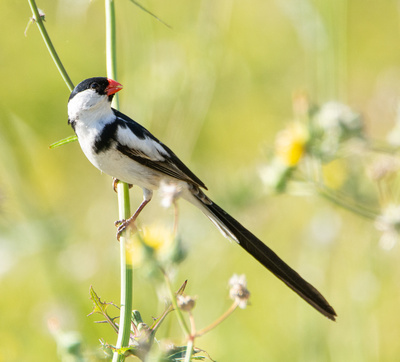
https://www.presstelegram.com/2018/06/30/once-an-overgrown-illegal-trash-dump-deforest-wetlands-in-north-long-beach-is-declared-officially-reinvigorated-saturday/
Recently a major restoration of the Deforest Wetlands connects the walk from Deforest Park to the Dominguez Gap. Look for butterflies, dragonflies, and lizards and frogs. Toward the south end, sometimes there is a homeless encampment. It gets cleaned out from time to time. Just watch your surroundings.
- eBird
- Hotspot link https://ebird.org/hotspot/L7732526
- Printable Checklist https://ebird.org/printableList?regionCode=L7732526&yr=all&m=
- iNaturalist observations: https://www.inaturalist.org/observations?place_id=128196&subview=grid&view=species
Scherer Park
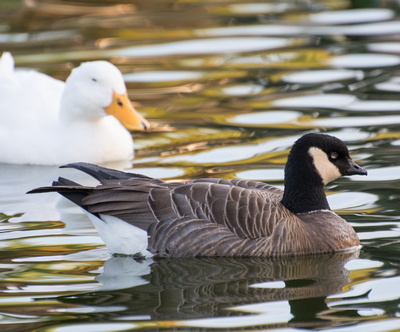 http://www.longbeach.gov/park/park-and-facilities/directory/scherer-park/
http://www.longbeach.gov/park/park-and-facilities/directory/scherer-park/
This park has a small pond that gets migrant waterfowl in winter. It is not birded very often but offers close up views of the ducks and other birds. It was known for the small Cackling Goose that took up residence with the domestic ducks. It was there for quite a few years, but sadly it disappeared in 2019. But do check for other waterfowl.
- Hotspot link https://ebird.org/hotspot/L754527
- Printable Checklist (some of these are rarities only seen once or a few times in the past, but an indication of why this is a hotspot) https://ebird.org/printableList?regionCode=L754527&yr=all&m=
Dominguez Gap
https://www.kcet.org/departures-field-guides/dominguez-gap
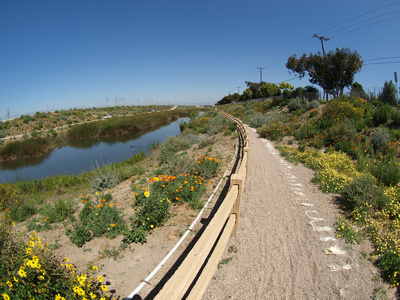
Dominguez Gap is fairly well established and runs next to a section of the LA River. Great for migratory waterfowl and Black-necked Stilts on the river. Blue-winged Teal, Cinnamon Teal, and Green-winged Teal can be found in the Gap in winter.
- eBird
- Hotspot link https://ebird.org/hotspot/L4792086
- Printable Checklist https://ebird.org/printableList?regionCode=L4792086&yr=all&m=
Rancho Los Cerritos
http://www.longbeach.gov/park/park-and-facilities/directory/rancho-los-cerritos/
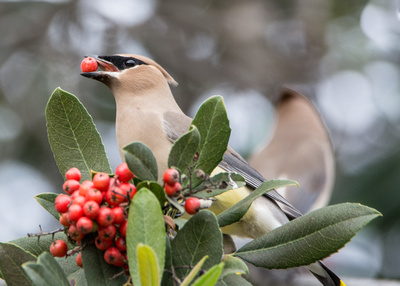
El Dorado Audubon has been conducting a monthly bird survey here since 2015, and now the Rancho is offering public bird walks. There are often resident Red-Shouldered Hawks, Common Raven, and lots of Hummingbirds. When the Toyon goes to fruit in winter, many birds come to feed including Cedar Waxwings.
- eBird
- Hotspot link https://ebird.org/hotspot/L3280075
- Printable Checklist https://ebird.org/printableList?regionCode=L3280075&yr=all&m=
- My website from past surveys: http://kimssight.zenfolio.com/rancho_los_ceritos_bird_count
Los Cerritos Park
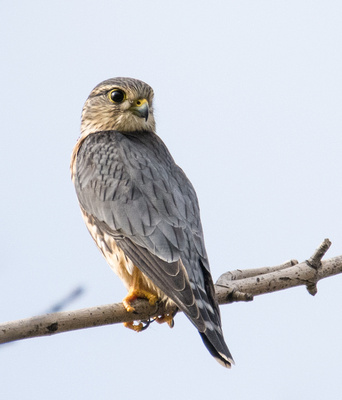
http://www.longbeach.gov/park/park-and-facilities/directory/los-cerritos-park/
We affectionately call this park Bathroom Park. Birders know that you can look all day and find nothing and the best birds are at the bathroom. This park is a good stop on the way to Dominguez Gap. On several consecutive winter outings, a Merlin has been found there. The open grassy lawn and high perches bring raptors. In the back of the park there are Silk Oaks which, when in bloom, are very popular with Western Tanagers.
- eBird
- Hotspot link https://ebird.org/hotspot/L4141355
- Printable Checklist https://ebird.org/printableList?regionCode=L4141355&yr=all&m=
- iNaturalist observations: https://www.inaturalist.org/observations?place_id=128196&subview=grid&view=species
Willow-Springs Park
This park has some nice habitat and potential, but suffers from location and variability of safety. Sometimes there is a homeless population there and often people engaged in questionable activities. But sometimes, the homeless have been moved out. I don't go alone and prefer the morning. There is a parking lot on Orange between Willow and Spring. There is a native garden to the top of the hill with nice views. You can walk down the hill on a trail to the south that borders the cemetery. At the bottom, there is a native plant farm and you can continue walking through a small wetland area over to a sump that sometimes has water.
- eBird
- Hotspot link https://ebird.org/hotspot/L8264995
- Printable Checklist (some of these are rarities only seen once or a few times in the past, but an indication of why this is a hotspot) https://ebird.org/printableList?regionCode=L8264995&yr=all&m=
- iNaturalist observations: https://www.inaturalist.org/observations?place_id=130830&subview=grid&view=species
Willow Street Bridge
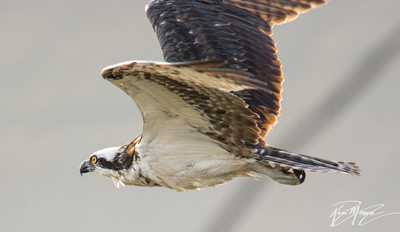
https://www.kcet.org/food-living/where-the-concrete-ends-the-river-begins-exploring-an-estuary-in-long-beach
Every birder worth their salt knows this hotspot on the river. South of the bridge are waterfowl and north of the bridge gulls and shorebirds. Osprey are frequently fishing. Rarities are often found here. I suggest you don't go alone for safety.
- eBird
- Hotspot link https://ebird.org/hotspot/L481023
- Printable Checklist https://ebird.org/printableList?regionCode=L481023&yr=all&m=
Points Along the Shore
Golden Shore Marine Biological Reserve
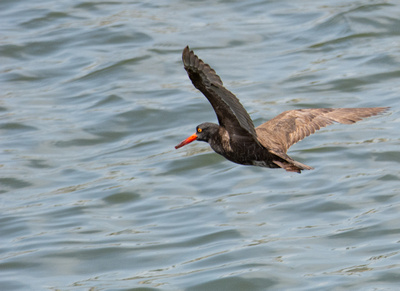
http://www.longbeach.gov/park/park-and-facilities/directory/golden-shore-marine-biological-reserve-park/
Near the mouth of the LA River, this spot can be hit or miss for birds, depending on season and tides. When it is a hit, Black Oystercatchers on the river side and large flocks of Black Skimmers in the Reserve. You can walk around to the Catalina Express docks, and also check out the small group of trees for migrating warblers. Bring quarters for the parking meters.
- eBird
- Hotspot link https://ebird.org/hotspot/L673176
- Printable Checklist https://ebird.org/printableList?regionCode=L673176&yr=all&m=
Shoreline Aquatic Park
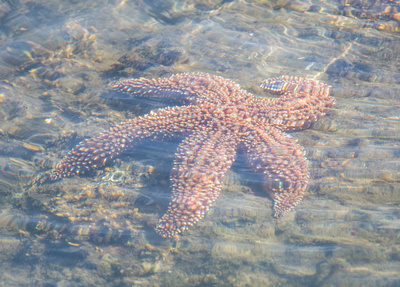
http://www.longbeach.gov/park/park-and-facilities/directory/shoreline-aquatic-park/
This little park is behind the Aquarium of the Pacific. It is not birded often, but a pleasant breeze and views of the Queen Mary make it very pleasant. At low tide you can see some marine invertebrates.
- eBird
- Hotspot link https://ebird.org/hotspot/L1112464
- Printable Checklist https://ebird.org/printableList?regionCode=L1112464&yr=all&m=
- iNaturalist observations from a 2018 Bioblitz: https://www.inaturalist.org/observations?place_id=any&project_id=shoreline-aquatic-park-bioblitz-cscscs-2018&subview=grid&verifiable=any&view=species
Colorado Lagoon
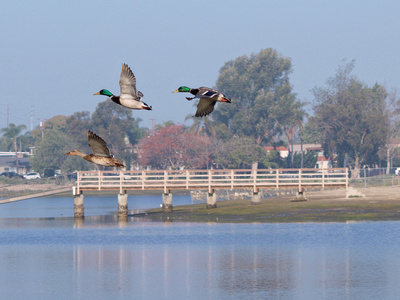
http://www.longbeach.gov/park/recreation-programs/aquatics/colorado-lagoon/
A lovely gem of a park to walk around. It has tidal water and gets lots of shorebirds and waterfowl in winter. It also has marine invertebrates such as sea jellies. It is adjacent to a golf course and has trees for flycatchers and orioles. it is birded regularly by the locals.
- eBird
- Hotspot link https://ebird.org/hotspot/L288881
- Printable Checklist https://ebird.org/printableList?regionCode=L288881&yr=all&m=
Marine Stadium
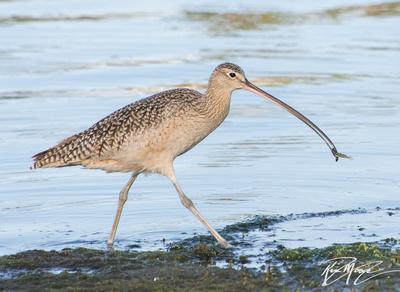
http://www.longbeach.gov/park/park-and-facilities/directory/marine-stadium/
A small spit of beach, but, when the tide is low, shorebirds flock.
- eBird
- Hotspot link https://ebird.org/hotspot/L3403561
- Printable Checklist https://ebird.org/printableList?regionCode=L3403561&yr=all&m=
Jack Dunster Marine Reserve
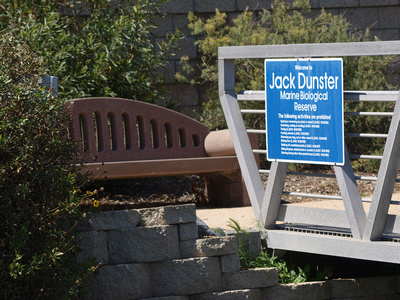
http://www.longbeach.gov/park/park-and-facilities/directory/jack-dunster-marine-biological-reserve/
A beautiful pocket park filled with native plants, butterflies, bees, and views of the bay. Cliff swallows collect mud when the tide is low and build their nests under the overhang of the sea retaining wall.
- eBird
- Hotspot link https://ebird.org/hotspot/L3403561
- Printable Checklist https://ebird.org/printableList?regionCode=L3403561&yr=all&m=
Sims' Pond Biological Reserve
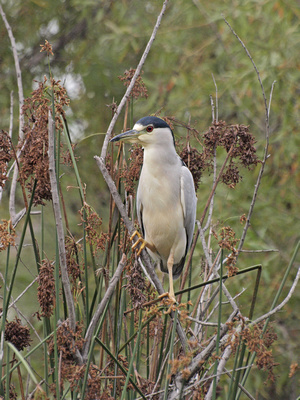
http://lcwstewards.org/Projects/sims.html
You can't enter the preserve without special permission, so this preserve is less frequently birded. You can look in from the outside along Loynes Drive. There are many Black-crowned Night Herons there and recently a couple of Yellow-crowned Night Herons were found there.
- eBird
- Hotspot link https://ebird.org/hotspot/L4415612
- Printable Checklist https://ebird.org/printableList?regionCode=L4415612&yr=all&m=
- A report on survey of birds that I prepared in 2013: http://alamitosheightsblog.com/wp-content/uploads/2014/11/simsbirds-2013-Final-v-1-1-2.pdf
Los Cerritos Wetlands
Los Cerritos Wetlands spans across Long Beach and Seal Beach. Public access is through guided walks and activities by several organizations, many on the Orange County side. Therefore, I mention it here, but am not including details because it is not strictly as Long Beach.
Eastside
El Dorado Park South of Willow - Duck Pond
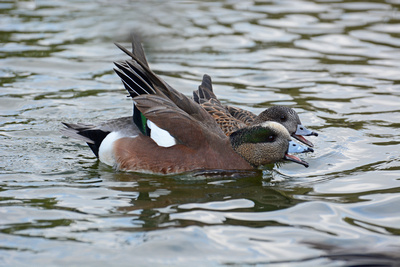
http://www.longbeach.gov/park/park-and-facilities/directory/el-dorado-park-west/
Filled with ducks, geese, Black-crowned Herons, and gulls, all begging for white bread which is served up by well meaning people. BREAD IS BAD FOR DUCKS!!! It has no nutritional value for them and it can contaminate the water as it rots.
Go birding in the park around the pond too. There are lots of trees, and there is brush along the fence next to the golf course.
- eBird
- Hotspot link https://ebird.org/hotspot/L4822370
- Printable Checklist hhttps://ebird.org/printableList?regionCode=L4822370&yr=all&m=
El Dorado Park - Nature Center

http://www.longbeach.gov/park/park-and-facilities/parks-centers-pier/el-dorado-nature-center/
This park is a beautiful tranquil place for wildlife including birds, mammals, insects, and of course, the turtles. The Great Horned Owls are always popular. There is a monthly bird walk and an annual butterfly count. Check their calendar.
- eBird
- Hotspot link https://ebird.org/hotspot/L198926
- Printable Checklist https://ebird.org/printableList?regionCode=L198926&yr=all&m=
- iNaturalist observations: https://www.inaturalist.org/observations?place_id=120389&subview=grid&view=species
- Photos from the insect study I conducted 2014 & 2015: http://kimssight.zenfolio.com/nature_center_insect_study_2014
El Dorado East Regional Park - Areas 2 and 3
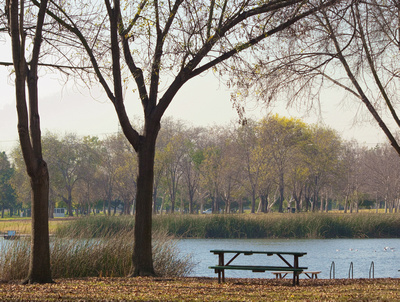
http://www.longbeach.gov/park/park-and-facilities/directory/el-dorado-east-regional-park/
This is a large park with many areas to explore. There are oak trees, sycamore trees, silky oaks, and ponds to attract birds. This park is great to explore any time of the year. Along the west side of area 3, there is a nice path along the fence line that is fun to explore for insects. There are dead trees kept for woodpeckers and other cavity nesters, such as Tree Swallows, Wrens, and Bluebirds. A group also maintains the Bluebird boxes.
The downside of this park is contending with recreational use. Drones and gliders seem to have multiplied. The park is packed on weekends and especially holidays, when it is littered with trash. I don't know where all the wildlife goes to hide because much of the lower brush has been cleared away. However, the real problem is the fishing line and lures that entangle, injure, and kill the wildlife. See my blog link below.
- eBird
- Hotspot links: Area 2 https://ebird.org/hotspot/L605440, Area 3 https://ebird.org/hotspot/L614595
- Printable Checklists: Area 2 https://ebird.org/printableList?regionCode=L605440&yr=all&m=, Area 3 https://ebird.org/printableList?regionCode=L605440&yr=all&m=
- My blog on fishing: http://kimssight.zenfolio.com/blog/2013/3/people-fish-and-birds
Wardlow Park
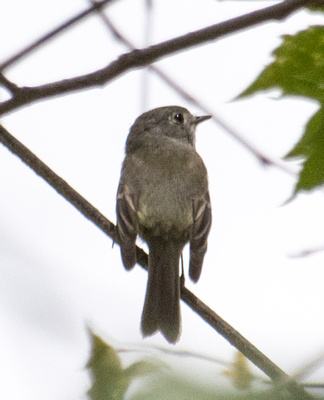
http://www.longbeach.gov/park/park-and-facilities/directory/wardlow-park/
Wardlow is a small park but can be surprisingly good for birds, particularly flycatchers in migration. There is brush and low vegetation along the fence which is good habitat for some birds. The many trees and tall snags are well appreciated.
- eBird
- Hotspot link https://ebird.org/hotspot/L1118116
- Printable Checklist https://ebird.org/printableList?regionCode=L1118116&yr=all&m=
Heartwell Park
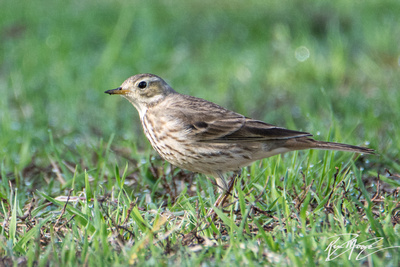
http://www.longbeach.gov/park/park-and-facilities/directory/heartwell-park/
This park is actually three parks. Clark to Bellflower has a small pond and tall trees. Bellflower to Woodruff has a community center and ball fields. It also has some very good tree including magnificent Tipu Trees. Woodruff to Palo Verde also has ball fields and is the least birded. You never know if that rare warbler will show up. You can always amuse yourself with American Pipits.
- eBird
- Hotspot link https://ebird.org/hotspot/L1059629
]]>
On my monthly butterfly count, it continues to be very dry and hot, and I suspect this may repeat for the next several months. At times we could smell the smoke from the Aliso Viejo Fire, but we were still at a distance. We seemed to have a pocket of flowers and butterflies at the highest elevation, and then it was downhill from there - literally and figuratively. Bernardino Blues were the most abundant. I tried to stay on task, but managed to find some cool beetles too.
Blacklighting in the same area is always fun. Certainly it is cooler and no hiking involved. Hanging out with friends around a sheet full of insects is my idea of a fun Saturday night. No photos, but we heard barn owls feeding their chicks and also saw bats.
On my monthly bird survey at Los Cerritos Wetlands, it was very quiet. The highlight was a pair of young Red-tailed Hawks. One was very skinny and one was looking healthy. A pair of Ravens were seen harassing mom. I was glad to have my small camera in my pocket so I could get a shot of the Four-spotted Tree Cricket. I have only seen one once before.
Follow me on Facebook: https://www.facebook.com/KimMooreNaturalist/
Be sure your browser allows Flash in order to see the names in the slideshow.
Watch the slideshows or click on the links to look through at your own pace.
Enjoy the show! I always appreciate corrections to ID's.
Local stuff: http://kimssight.zenfolio.com/new_jun_2018
Irvine Ranch butterfly survey: http://kimssight.zenfolio.com/irc_jun_2018
Irvine Ranch blacklighting: http://kimssight.zenfolio.com/irc_night_jun_2018
Los Cerritos Wetlands Bird Survey: http://kimssight.zenfolio.com/hellman_jun_2018
]]>
On my monthly butterfly count, it was very dry and hot. There were fewer blooming plants and much less diversity of butterflies than in prior years in May. The most abundant were Common Ringlets. It was a lovely hike with good company as always.
On my monthly bird survey at Los Cerritos Wetlands, we were surprised by the number of Western Wood-Pewees that we saw. They may be migrating through, but to see so many, and in the wetlands no less, just wow!
Even on my Pelagic Birding Trip out of Dana Point we saw migratory birds out at sea. Several Wilson's Warblers landed on the boat to rest only to leave us at the oil platforms. There they will have to contend with Peregrine Falcon's and I even saw a Sea Lion snap at one. It is a hard journey. You can see from my photos how tattered they get. We saw, but my photos didn't capture, Townsend's Warblers, a Willow Flycatcher, and a highlight of Black Swifts. Of course there were some sea birds and marine life too!!
I hope that you too are getting out there and enjoying nature. It changes every day.
Be sure your browser allows Flash in order to see the names in the slideshow.
Watch the slideshows or click on the links to look through at your own pace.
Enjoy the show! I always appreciate corrections to ID's.
Local stuff: http://kimssight.zenfolio.com/new_may_2018
Irvine Ranch butterfly survey: http://kimssight.zenfolio.com/irc_may_2018
Los Cerritos Wetlands Bird Survey: http://kimssight.zenfolio.com/hellman_may_2018
Pelagic Birding Trip out of Dana Point: http://kimssight.zenfolio.com/pelagic_trip_may_2018
]]>
At the end of March spanning into April, I participated in an invertebrate survey for the Tejon Ranch Conservancy. We spent three days camping and visiting sites on the San Joaquin Valley side. In addition to insects, there were wildflowers and snakes. (Warning: under vertebrates there are images of predation, snakes, and animal carcasses). The San Joaquin Valley side was very green and the weather was close to 80 during the day. I went back to Tejon Ranch at the end of the month for a birding trip. We stayed on the dry southern side. What a contrast! It was mostly very brown and dry, but here was some green up in the canyons. It was about fifty degrees, and the wind was howling. We did see some birds mostly at a distance or from the comfort of the van. It didn't make for great photography but there were highlights to be enjoyed, including a close look at a Golden Eagle, beautiful scenery, sights of Pronghorn, and a huge number of Black-headed Grosbeaks.
I went with Pasadena Audubon to Bob's Gap. That is an area on the north side of the San Gabriel Mountains on the edge of the Mojave. Going with knowledgeable guides is great for finding a new place and special birds. The highlight was a Gray Vireo. It is kind of a drab bird, but is a state species of special concern and has not been seen in the area since the 1990's. There were many 'prettier' birds too, including Scott's Oriole and a White-throated Sparrow. Even though it was a birding trip, I couldn't resist photos of the horned lizard, a few butterflies, and some other insects I encountered.
On my monthly butterfly survey we saw a few butterflies, but I must admit that I wasn't looking as hard as usual. Instead, I kept looking over my shoulder. Just after we were dropped off at the top of the trail head, we saw a fresh pile of scat, huge paw prints from a mountain lion, and turkey vultures circling over what we believe was fresh kill. There is a big difference in knowing that you are on a trail 'where there could be mountain lions' and knowing you are on a trail 'where there IS a mountain lion'. We again saw tracks further down the trail. I am happy to report that the day was uneventful after all. I went back at the end of the month to do some blacklighting. There were some cool beetles and moths. My faves were the Red-fringed Emerald moth, the Black Burying Beetle, and the fireflies and glowworms.
I went to Catalina with my husband and friends. We left from San Pedro, visited the famous Casino, enjoyed the tile work, and had a great time. Since this wasn't a 'nature' trip, I only brought my new compact camera and took photos of landscapes and artwork. I played with some of the settings to get used to the camera. It certainly is smaller and lighter than my regular cameras, but the jury is out on quality.
Watch the slideshows or click on the links to look through at your own pace.
Enjoy the show! I always appreciate corrections to ID's.
Local stuff: http://kimssight.zenfolio.com/new_apr_2018
Irvine Ranch butterfly survey: http://kimssight.zenfolio.com/irc_apr_2018
Irvine Ranch blacklighting: http://kimssight.zenfolio.com/irc_night_apr_2018
Audubon's Trip to Bob's Gap: http://kimssight.zenfolio.com/bobs_gap_apr_2018
Tejon Ranch Invertebrate Trip (1 of 3 - Landscapes): http://kimssight.zenfolio.com/tejon_mar_2018_habitat
Tejon Ranch Invertebrate Trip (2 of 3 - Invertebrates): http://kimssight.zenfolio.com/tejon_mar_2018_inverts
Tejon Ranch Invertebrate Trip (3 of 3 - Vertebrates): http://kimssight.zenfolio.com/tejon_mar_2018_vertebrates
Tejon Ranch Birding Trip: http://kimssight.zenfolio.com/tejon_apr_2018
Trip to Catalina: http://kimssight.zenfolio.com/catalina_apr_2018
]]>
I joined Pasadena Audubon to watch the Swainson's hawks in the desert and also look for desert birds. I went with a friend the day before to checkout a few locations near the Salton Sea. In addition to the birds, the scenery was beautiful and we were treated to a lucky rainbow on St. Patrick's Day. The hawk-watching was very interesting although brief. The annual great migration of Swainson’s hawks brings thousands of hawks through the Borrego Valley on their way from South America to Canada. They fly by day and roost at night. As the temperatures rise and the winds pick up, the birds slowly rise and form “kettles” of circling birds. A leader then leaves and the others one by one stream off to the north. Our experience lasted about 1/2 hour. It was very cool. Some of my favorite other birds from the trip were Greater Roadrunners, Sage Thrashers, Gambel's Quail, and the ever adorable Burrowing Owls.
My local highlight was a Long-eared Owl at El Dorado Nature Center. This is the first time I saw one, so it was with great excitement, but coupled with great sadness. The bird was injured. Fortunately, staff from the nature center called for rescue and the bird was captured for medical assistance. Some migratory birds are coming in, such as Hooded Orioles and Western Kingbirds. It was foggy on my Los Cerritos Wetlands Survey. There were many Savannah Sparrows including Western and Belding's, but otherwise nothing in particular to report - just a quiet morning.
Watch the slideshows or click on the links to look through at your own pace.
Enjoy the show! I always appreciate corrections to ID's.
Local stuff: http://kimssight.zenfolio.com/new_mar_2018
Bird Survey Los Cerritos Wetlands: http://kimssight.zenfolio.com/hellman_mar_2018
Anza-Borrego Hawk Watch: http://kimssight.zenfolio.com/anza_borrego_mar_2018
]]>
Insects and Spiders: It was cold this month, and I did not shoot many insects and spiders. I found a Red Admiral Butterfly ovipositing on the new leaves of stinging nettle (its host plant).
Birds: Locally I found some cool birds. DeForest Park continues to have some interesting birds including, a Yellow-bellied Sapsucker, Black-and-White Warbler, and Palm Warbler. An American Redstart has been hanging around El Dorado Park. I went with a friend to Bonelli Park, and we saw 66 species! The Neotropic Cormorant was easy to find even though it looks like the common Double Crested Cormorants. When side by side with the Double Cresteds, you can see how much smaller the Neotropic is. I really enjoyed listening to the Double Crested Cormorants making gutteral noises of courtship. There was also a Western Grebe clacking its bill at an unreceptive female. It was cold when we went to Quail Lake and Holiday Lake, but worth it for the owls. The highlight of my wetlands survey was a Loggerhead Shrike. I seem to be seeing more of them this year.
Pasadena Audubon had a pelagic birding trip out of Marina del Rey. We saw lots of birds and marine mammals. It was beautiful weather!
I went to Chilao visitor center for mountain birds. We watched White-headed Woodpeckers chasing each other. Just before we left we were treated to a view of a female Williamson's Sapsucker. The timing was right because it has snowed up there since.
Watch the slideshows or click on the links to look through at your own pace.
Enjoy the show! I always appreciate corrections to ID's.
Local stuff: http://kimssight.zenfolio.com/new_feb_2018
Bird Survey Los Cerritos Wetlands: http://kimssight.zenfolio.com/hellman_feb_2018
Pelagic Birding out of Marina del Rey: http://kimssight.zenfolio.com/pelagic_trip_feb-2018
Chilao Campground: http://kimssight.zenfolio.com/chilao_feb_2018
]]>
Insects and Spiders: I went to the nature center to help identify insects found under a a large piece of black plastic that was used to kill off the weeds in an area for restoration. Camel crickets and Jerusalem crickets were the highlight. In my own yard, I found mites, monarch caterpillars, and milkweed bugs. My butterfly count was very dry and as expected very few butterflies were seen. It is still data, and as always, it was a lovely day and great to meet up with the other people. So few photos so I've just added them to my local stuff rather than a separate slideshow.
Birds: January 1st started with a great day. I coordinated what might now be an annual event. Nine friends joined me early in the morning for what is now called the LB100. We visited 11 parks looking for 100 species of birds within the City of Long Beach. Starting at 8am and finishing at 5pm, we came up with 96. I didn't take a lot of photos, but went back to several of the spots over the next few weeks for photos and to find the 'missing' birds to reach (and exceed) 100. I caught some rarities including a Scissor-tailed Flycatcher, Palm Warbler, and Pacific Golden Plover. It took three trips to the beach to find the Pacific Golden Plover. The weather was beautiful. We have had a very mild winter. We could certainly use some rain, but it is so nice to get outside and enjoy the beach. I have lots of shorebird photos this month. My bird survey at Los Cerritos Wetlands had more shorebirds coming in. It is always nice to see them in the little patches of tidal water.
I went to Pasadena to see the Parrots prep for roosting for the night. WOW! I knew there were parrots there, but had know idea on the the number. Noisy little dickens. Photography was a challenge as they come in just before dark and it gets quite dark very quickly.
A last minute cancellation got me on a pelagic birding trip with Sea and Sage Audubon. (Might I say, Audubon has many chapters, and they all offer great field trips, even for non-members). The weather was perfect and the seas were calm. We saw a Brown Booby and lots of gulls and pelicans. In addition to birds we saw whales and dolphin. Southern California in January doesn't get better than this!
Watch the slideshows or click on the links to look through at your own pace.
Enjoy the show! I always appreciate corrections to ID's.
Local stuff: http://kimssight.zenfolio.com/new_jan_2018
Bird Survey Los Cerritos Wetlands: http://kimssight.zenfolio.com/hellman_jan_2018
Parrot Roost: http://kimssight.zenfolio.com/parrot_chase_jan_2018
Pelagic Birding out of Dana Point: http://kimssight.zenfolio.com/pelagic_trip_jan_2018
]]>
On my continuing surveys, there weren't many butterflies this month, but we still counted them. It was a beautiful walk with comfortable temperatures and a little time to enjoy the birds. At the wetlands, the Northern Harrier seems to have stuck around despite being harassed by a Cooper's Hawk.
I went Whale Watching out of Long Beach and into the Catalina channel. We saw four Humpbacked Whales, thousands of Common Dolphin, and several pelagic birds. The weather was warm and the seas were flat. This made for perfect viewing.
Last month I went to the Antelope Valley and St. Andrew's Abbey with Pasadena Audubon. I went back again with two friends to spend more time and go at our own pace. We got there very early. The Ferruginous Hawks were cooperative for my photography, and I saw a new life-bird, Sage Thrasher. We then went on to the the Abbey and looked for Sapsuckers, which we found.
I went with El Dorado Audubon to the Seal Beach National Wildlife Reserve. We drove around in vans and saw many birds. Many of the birds require a spotting scope to get a good look, but a Peregrine Falcon managed to fly in front of my lens for a decent shot.
I participated in two Christmas Bird Counts (CBC's). At the one in Long Beach, I found a Black-and-White Warbler, Palm Warbler, Hooded Merganser, and a Hybrid Cinnamon X Blue-winged Teal. An Osprey entertained us greatly while it was taking a bath in the LA River. At the San Pedro CBC, the highlights for me were the sunrise and sunset, the Mew Gulls, and the fun plumage on the teenage White-crowned Sparrow and the Surf Scoter. A Large-billed Sparrow (Savannah sub-species) was new for me.
Watch the slideshows or click on the links to look through at your own pace.
Enjoy the show! I always appreciate corrections to ID's.
Local stuff: http://kimssight.zenfolio.com/new_dec_2017
Butterfly Count: http://kimssight.zenfolio.com/irc_dec_2017
Whale Watching: http://kimssight.zenfolio.com/whale_watch_2017
Antelope Valley and St. Andrew's Abbey: http://kimssight.zenfolio.com/north_slope_san_gabriels_dec_2017
CBC Long Beach: http://kimssight.zenfolio.com/cbc_2017
CBC San Pedro: http://kimssight.zenfolio.com/cbc_san_pedro_2017
]]>
This year I really upped my game at birding. I added to my life list and can id many more birds by sight and sound. I didn't do as much hiking and camping as in past years, but I am quite happy with that. I might do more B&B's next year. I want to focus more on art and creative projects, but I will have to see how 2018 proceeds. I am sure to continue enjoying birds, insects, spiders, and all that nature will show me.
A recap of 2017
Stats:
- 250 volunteer hours (Citizen Science, Interpretation, Program Support )
- 304 bird species for the year, 276 in LA County - eBird rank 21 in LA County
- over 2,500 observations, 750 species, 4,400 identifications logged in iNaturalist: iNat stats
Classes/Conferences:
- Oak identification
- Botanical Illustration at Joshua Tree
- Colored Pencil Botanical Illustration
Some of the things I did:
- Presented at an information table on Nature Journaling at the Nature Center
- Co-led a Spider and invertebrate walk
- Gave a talk on common yard birds and creating habitat to the Long Beach Garden Club
- Licensed a few photos to the Museum of Natural History for use in an upcoming book
- Participated in an Inverebrate Bioblitz at Tejon Ranch with the Conservancy and the Lorquin Entomological Society
- Participated in a nighttime Mammal Survey at Seal Beach NWR
- Participated in monthly butterfly survey with the Irvine Ranch Conservancy
- Participated n several Black-lighting Events with the Irvine Ranch Conservancy
- Participated in monthly bird survey at Rancho Los Cerritos
- Participated in monthly bird survey at Los Cerritos Wetlands with Sea and Sage Audubon
- Served as secretary of the Lorquin Entomological Society
- Volunteered as a Trail Steward for El Dorado Nature Center
Some of my favorite places I went:
- Devon England
- Santa Susana Field Lab: It was quite fascinating and I never new it existed.
- Tule Elk Staute Natural Reserve
- Pelagic trips/Whale watching trips
- Joshua Tree NP always
- Morro Bay watching sea otters
- Piute Ponds
- Sycamore Canyon
- Deforest Park for warblers
- West Fork San Gabriel River for butterflies
- Chilao and Buckhorn Campground
- Antelope Valley for raptors
- St. Andrews Abbey for sapsuckers
- Oak Canyon
- El Dorado Park
Wishing you much happiness, peace, and nature in 2018!
]]>The Mexican marigold in my yard is blooming. It attracts many pollinators and other critters, so a have a nice collection of insect photos too.
I went on an Audubon trip to the backside of the San Gabriel Mountains. There didn't seem to be as many birds as last year and few posed. Between that, and my favorite lens in the shop (three weeks and counting), I have mostly scenery and a few fuzzy bird shots. There were lots of Ferruginous Hawks and some nice raptor watching in Antelope Valley. I finally saw a Vesper Sparrow and got good looks at a Golden-crowned Kinglet. Darn that broken lens!!! I will just have to go back when my lens comes back from the shop.
Watch the slideshows or click on the links to look through at your own pace.
Enjoy the show! I always appreciate corrections to ID's.
Local stuff: http://kimssight.zenfolio.com/new_nov_2017
Back slope of the San Gabriels: http://kimssight.zenfolio.com/north_slope_san_gabriels_nov_2017
Los Cerritos Wetlands Bird Survey: http://kimssight.zenfolio.com/hellman_nov_2017
]]>
My monthly butterfly count had lots of Woodland Skippers and lots of spiders. We saw four tarantulas and many more Banded Orbweavers. There were even crab spiders eating butterflies. The weather was perfect!
I don't always post photos from my monthly bird survey at Los Cerritos Wetlands, but there was a fun encounter between a perturbed American Kestrel and a Red-tailed Hawk. I also saw a Wandering Skipper which is a butterfly associated with our wetlands.
I went with a friend on a brief trip to the local mountains. We found Lewis's Woodpeckers, White-headed Woodpeckers, and three kinds of Nuthatches.
The real highlight of the month was that I once again participated in an Inverebrate Bioblitz at Tejon Ranch with the Conservancy and the Lorquin Entomological Society. As always, a wonderful trip and with great people. We added many new species to the conservancy's list. We ended the trip with a great view of the Pronghorn as we drove out.
Watch the slideshows or click on the links to look through at your own pace.
Enjoy the show! I always appreciate corrections to ID's.
Local stuff: http://kimssight.zenfolio.com/new_oct_2017
Butterfly Count: http://kimssight.zenfolio.com/irc_oct_2017
Los Cerritos Wetlands Bird Survey: http://kimssight.zenfolio.com/hellman_oct_2017
Chilao Visitor's Center and Campsites: http://kimssight.zenfolio.com/chilao_oct_2017
Tejon Ranch BioBlitz: http://kimssight.zenfolio.com/tejon_oct_2017
]]>
It's warbler season! With migration underway, I had to get out often. There is such a short time frame and every day may be different. There are always the welcome usual warblers, such as Black-throated Gray (one of my favorites), Wilson's, and Townsend's, but also the ones that get special attention for being locally rare: Blackburnian, Blackpoll, Tennessee, Lucy's and the mega-rare Dusky Warbler. Other migrants come through or back again too. I found a bullfrog at the Nature Center and I am seeing a high number of Warbling Vireos, Western Wood-Pewees, as well as flycatchers in general, such as the beautiful Vermilion Flycatcher. I caught a shot of a Bullfrog at the Nature Center and photographed it croaking. It created amazing patterns on the water. In the insect world, mantids (commonly called praying mantis) have been showing up everywhere!
I took some notable day trips and one overnight trip too. At Piute Ponds, Lancaster Water Treatment Facility, and Apollo Park, I saw some wonderful birds including a Virginia Rail, Bell's Sparrows, and a Barn Owl, as well as quite a few dragonflies.
On a pelagic birding trip out of Dana Point, I saw shearwaters, jaegers, and lots of common terns. We even saw a few dolphin.
My favorite trip of the month was to Morro Bay with my husband. While I enjoy going out with Audubon groups and insect enthusiasts, it is the most wonderful to catch beautiful sunsets with the one I love. In addition to sunsets, there is also an overabundance of adorable sea otter photos.
Website 'improvements': I have reorganized my birds. I combined my two bird sections into one and have now put them into subfolders. My organization is not exactly taxonomic, but in some cases combines birds that might be confused such as sparrows and finches. Also, I am expanding the number of birds in this section to include birds in all of LA county and a few farther locations. I am hoping this will make it easier to find and compare birds on my site.
Watch the slideshows or click on the links to look through at your own pace.
Enjoy the show! I always appreciate corrections to ID's.
Local stuff: http://kimssight.zenfolio.com/new_sep_2017
Irvine Ranch Blacklighting: http://kimssight.zenfolio.com/irc_night_sep_2017
Pelagic Birding Trip out of Dana Point: http://kimssight.zenfolio.com/pelagic_trip_sep_2017
Lancaster/Piute Ponds et al: http://kimssight.zenfolio.com/piute_ponds_sep_2017
Morro Bay: http://kimssight.zenfolio.com/morro_bay_sep_2017
]]>
I was busy at the Nature Center. I had two photographs on exhibit and in the middle of the month I had a table with information to encourage nature journaling. I did not do much of that this month, but I did do a little artwork including the feather in colored pencil.
It was hot and dry on my monthly butterfly count with the Irvine Ranch Conservancy, but there was a pleasant breeze. There was a nice diversity of butterflies including a nice courtship/mating show by a pair of Northern White Skippers, predation by a crab spider on a Gray Hairstreak, and predation by a Green Lynx Spider on a Checkered White. Some other highlights were a tarantula hawk, Silver Argiopes, and a baby horned lizard.
At the end of the month I went back for some blacklighting in the same area. The people I expected showed up, as well as some other friends I know. Standing around the sheets with friends with common interest, makes for a fun party. We started off the evening by finding a tarantula walking across the parking lot. Then Bob Allen found us a trapdoor spider. There was an interesting diversity of insects on the sheets with at least ten different orders represented. I am mostly shooting to record the information rather than to make beautiful images, but you can't help but notice the beautiful patterns of nature. This tiny world is beautiful and fascinating when seen through the lens of a macro camera.
The day was cool and gray for my monthly bird survey at Los Cerritos Wetlands. We expected to see more birds than we did, but still we were not disappointed. There was a pair of young White-tailed Kites, an Ash-throated Flycatcher, and two young Blue Grosbeaks.
Watch the slideshows or click on the links to look through at your own pace.
Enjoy the show! I always appreciate corrections to ID's.
Local stuff: http://kimssight.zenfolio.com/new_aug_2017
Irvine Ranch Butterfly Count: http://kimssight.zenfolio.com/irc_aug_2017
Irvine Ranch Blacklighting: http://kimssight.zenfolio.com/irc_night_aug_2017
Los Cerritos Wetlands Bird Count: http://kimssight.zenfolio.com/hellman_aug_2017
]]>
About a year ago I started to use my nature journal more often. This has been most satisfying and has helped me both as a naturalist and as an artist. As a naturalist, I find I look more closely and ask more questions about my subject. I look at things from a different perspective than through the lens of a camera. I observe a single object for a longer period of time. As an artist, it helped me get past judging and criticizing my work which stopped me before I started.
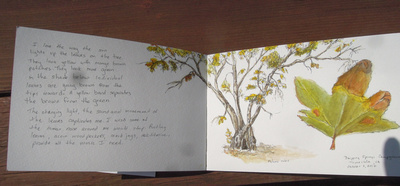 Just by doing more, my skills are improving. I now use my journal work to do a study of a plant before a do a detailed drawing at home. And from a personal level, I get absorbed in the work and take a break from the ills in the world.
Just by doing more, my skills are improving. I now use my journal work to do a study of a plant before a do a detailed drawing at home. And from a personal level, I get absorbed in the work and take a break from the ills in the world.
The key is using the journal to capture information - not worry about making a pretty book. That may come, but that is not the purpose. Here are some tips to get started.
Do it for yourself:
- It is for yourself!
- The journal is the tool
- There is no right or wrong
- It doesn’t have to be pretty
- Find what interests you
- Get ideas from others and try different techniques
Deepen your connection to and understanding of nature:
- See more
- Develop appreciation
- Learn something new
- Expand your critical thinking
- Expand your creativity
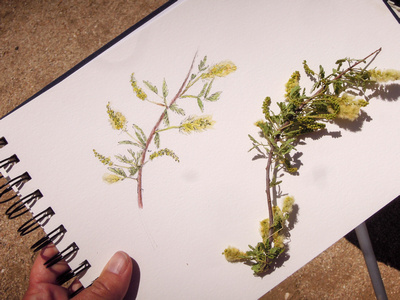 Catsclaw - Senegalia greggiiAnza-Borrego Desert State Park, Culp Valley Campground 05/29/2016
Go slowly and with thoughtful intention:
Catsclaw - Senegalia greggiiAnza-Borrego Desert State Park, Culp Valley Campground 05/29/2016
Go slowly and with thoughtful intention:
- Observe closely
- Ask questions
- Wonder
- Connect with past experiences
Record what you see, think, feel, and wonder:
- Record Date, Time, Location, and Weather
- Note Habitat
- Note Species of Plants and Animals (counts, sizes, locations, behaviors)
- Write descriptions, write questions, write ideas, write feelings
- Draw pictures. Stick figures will do with words attached.
- Draw for information and observation
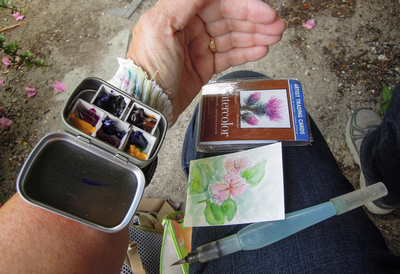 Field kitField kit
Field kitField kit
Explore media but keep it simple:
- If it is not easy and accessible, you won’t do it.
- Notebook and pen or pencil
- Optional watercolor, colored pencils
- Get ideas from others
The key is just to start and keep doing it!
]]>With family in town over July 4th, we took a nature walk at Bolsa Chica. The terns were out in force. Apparently there had been a common tern in the area recently, but I didn't see it. It was fun to run into friends toting scopes and cameras. It enjoyed seeing young terns. The LA River was also filled with baby stilts and avocets. I watched the trauma of a baby stilt swept away by the current. Fortunately it was rescued by a fellow birder. Some 'rare' birds brought out a flock of birders as well as birds.
Butterflies and bees were out and about at Irvine Ranch. Common Ringlet, Marine Blue, Acmon Blue, and Gray Hairstreak were most abundant on our transects but we were also lucky to see a Ceraunus Blue. In addition to the butterflies, there were many Yellow-faced bees and two swarms of Diadasia bees, which make funny looking tubes in the dirt. Another highlight was a California bee assassin living up to its name by assassinating a bee. Despite extremely hot days on either side, we had reasonable temperatures and a pleasant breeze.
Summer is slower for birds and we didn't see many at Los Cerritos Wetlands on my monthly bird count. However, we did see an epic battle between a Cooper's Hawk and an American Kestrel. The hawk chased the Kestrel and took over the spot where it was sitting. Kestrel didn't like it and chased the hawk. The hawk fought back. Finally another Kestrel came in and the hawk decided two against one was more than it was worth.
Three of us drove up to the San Gabriel Mountains to find mountain birds. We found a few, but the highlight was a Southern Pacific Rattlesnake on the side of the trail (which I almost stepped on and backed away from rather quickly) and at another location we came upon a Bobcat. In both cases, were were alerted to something to look for by the alarm call of ground squirrels.
Watch the slideshows or click on the links to look through at your own pace.
Enjoy the show! I always appreciate corrections to ID's.
Local stuff: http://kimssight.zenfolio.com/new_jul_2017
Irvine Ranch Butterfly Count: http://kimssight.zenfolio.com/irc_jul_2017
Los Cerritos Wetlands Bird Count: http://kimssight.zenfolio.com/hellman_july_2017
San Gabriel Mountains: http://kimssight.zenfolio.com/buckhorn_jul_2017
]]>
What better way to hide from predator and prey. No one is going to eat you if they think you're a turd! These mimics typically rest on a leaf during the day. This mimicry is found in various orders of insects and spiders.
I have to admit that I find myself poking at bird poop these days. Sometimes it is exactly what it looks like, but other times it is something far more interesting. Here are a few from my photo collection.
This Bolas spider (Mastophora cornigera) is one of my favorite poop mimics. Not only is it cool looking, but it captures prey (moths) by swinging a line with a sticky ball at the end scented like a female moth.
Another poop mimic is the olive-shaded bird-dropping moth (Ponometia candefacta). This is only one of a whole subfamily of bird-dropping moths.
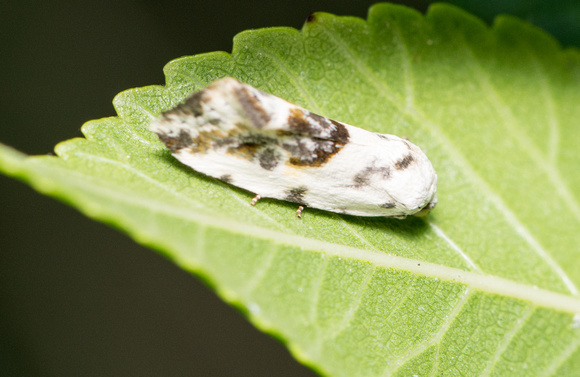 Several swallowtail butterflies choose this mimicry for their caterpillars.
Several swallowtail butterflies choose this mimicry for their caterpillars.
This is an anise swallowtail (Papilio zelicaon) larva.
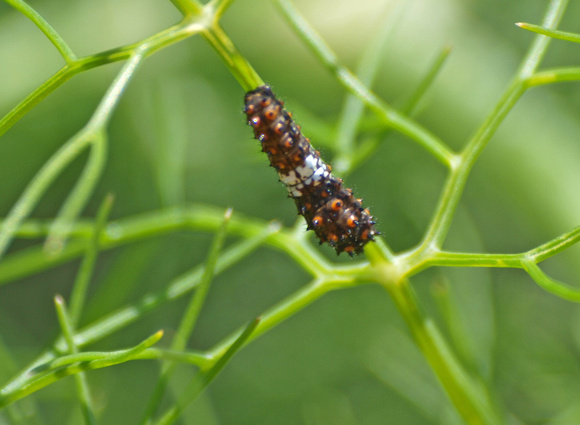 Anise swallowtail - Papilio zelicaonFamily Papilionidae - Swallowtails
This caterpillar of Western giant swallowtail (Papilio rumiko) not only looks like bird poop, but also is said to look like the head of a snake from head on.
Anise swallowtail - Papilio zelicaonFamily Papilionidae - Swallowtails
This caterpillar of Western giant swallowtail (Papilio rumiko) not only looks like bird poop, but also is said to look like the head of a snake from head on.
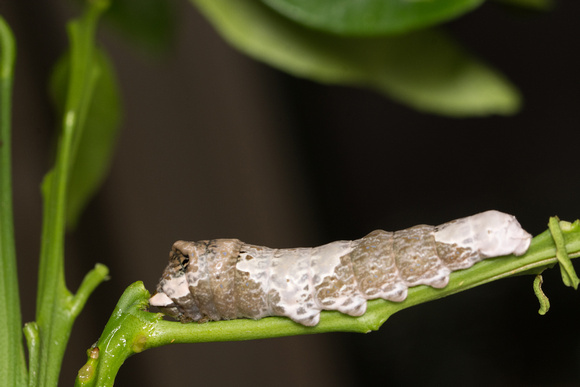 Western giant swallowtail - Heraclides rumikoWestern giant swallowtail - Heraclides rumiko
Western giant swallowtail - Heraclides rumikoWestern giant swallowtail - Heraclides rumiko
A Long Beach backyard 10/15/2015
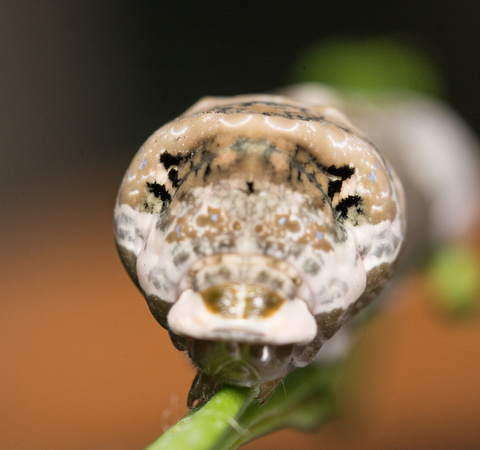 Western giant swallowtail - Heraclides rumikoWestern giant swallowtail - Heraclides rumiko
Western giant swallowtail - Heraclides rumikoWestern giant swallowtail - Heraclides rumiko
A Long Beach backyard 10/15/2015
Beetle larva, particularly that of leaf beetles, can also have this effect. Here is an example of the Three-lined Potato Beetle (Lema daturaphila).
So the next time you see bird droppings, look again and you might just be lucky enough to find something really cool.
You're welcome.
]]>
Cloudy gray mornings in the beginning of the month gave way to a heat wave. I was out of town for part of the month. While I had a chance to see some birds at the newly reopened Harbor Regional Park, El Dorado Park and Nature Center, and Santa Fe Dam (where I caught a whiptail lizard pooping!), I spent much of my spare time in my own garden enjoying the buzzing of insects. A friend gave me some buckwheat seeds. They quickly sprouted and bloomed, and have attracted native bees. Leaf-cutter bees were active cutting circles out of leaves to take back to line their nests. I would have loved to find where they flew off to, but had to settle for watching them cut and fly. My front yard was abuzz with wasps and bugs and a few butterflies. One of my favorite wasps is Genus Gasteruption. They look like a flying thread, until they land and you see them up close. They are hard to find and photograph, but they are very bizarre looking. Western red shouldered stink bugs (Thyanta pallidovirens) invaded my yard. I've seen them here once before, but not in these numbers. I don't know if it is same one growing up or different ones, but I found the Mediterranean katydid (Phaneroptera nana).
At my monthly butterfly count in the Santa Ana Mountains, there were lots of 'blues' flying but not as many landing. It is hard to identify them in flight. Although the focus is on butterflies, we had to stop and watch two American Kestrels harass a Red-tailed hawk that was carrying a huge gopher snake, presumably back to a nest to feed its young.
I went up Rt 39 with my friend who volunteers in the San Gabriel Mountains. He has been documenting the nesting eagles. I got a few so-so shots of the family and enjoyed watching them. We proceeded up to Crystal Lake campgrounds for fine chili, the company of a travelling poet, and a glimpse of a gray fox. A fine day it was.
Watch the slideshows or click on the links to look through at your own pace.
Enjoy the show! I always appreciate corrections to ID's.
Local stuff: http://kimssight.zenfolio.com/new_jun_2017
Irvine Ranch Butterfly Count: http://kimssight.zenfolio.com/irc_jun_2017
Crystal Lake and Rt 39: http://kimssight.zenfolio.com/crystal_lake_june_2017
]]>
I saw some of the May migrating birds, but missed quite a few. Between my travels, my birding buddy away, and my major computer crash and subsequent new computer recovery, I just didn't get out to catch them during the short window of opportunity. But it was a lovely month anyway. Some bird highlights were an Ovenbird (who would give a bird such a sad name), two Yellow-crowned Night Herons that have been hanging out in my local park (unfortunately, one became entangled in fishing line and is now at a bird rescue center), a Hammond's Flycatcher, and a Snowy Plover sitting on eggs (her nest has been protected from predators by a mesh cage and from people by caution tape barriers).
I took a trip with Audubon to the West Fork San Gabriel River. We saw some nice birds, but the trees have grown quite leafy which makes it harder for bird photography. However, there was an amazing number of butterflies. There were literally hundreds, and maybe more than a thousand, Variable Checkerspots and several types of blues. I photographed eleven species and missed shots of another four or five. There were more butterflies on my bird walk than on my Irvine Ranch monthly butterfly count. At Irvine Ranch we saw a relatively high number of Brown Elfin; we have rarely seen any in the past. A few small gopher snakes were also a highlight. We had a night of blacklighting at Irvine Ranch. It was spectacular! Great diversity with highlights including what I photographed: daddy longlegs, some caddisflies, over 20 species of moths, about 10 species of beetles, and various other insects. There are still a few yet to be identified at the bottom. Any help?
A little further from home, I went to Devon England for a family trip. The weather was lovely and we enjoyed the family visits and the countryside.
Watch the slideshows or click on the links to look through at your own pace.
Enjoy the show! I always appreciate corrections to ID's.
Local stuff: http://kimssight.zenfolio.com/new_may_2017
(insects and spiders first this time, scroll for birds, flowers, and art)
Irvine Ranch Butterfly Count: http://kimssight.zenfolio.com/irc_may_2017
Irvine Ranch Backlight Night: http://kimssight.zenfolio.com/irc_night_may_2017
West Fork San Gabriel River: http://kimssight.zenfolio.com/west_fork_san_gabriel_may_2017
Devon an Somerset, UK: http://kimssight.zenfolio.com/uk_may_2017
]]>
Irvine Ranch was filled with wildflowers, butterflies, and a lazy Gopher Snake who would not leave the trail.
Boeing hosted a hike at the Santa Susana Field Lab for Earthday. It was a special event that you had to sign-up for. A friend of mine had connections so not only did we join the hike but we got a private mini-tour of some of the other areas. The hike was long, very hot, and at a a pace, but I loved the area and was with good company. Santa Susana Field Laboratory, according to Wikipedia was used mainly for the development and testing of liquid-propellant rocket engines for the United States space program from 1949 to 2006, nuclear reactors from 1953 to 1980 and the operation of a U.S. government-sponsored liquid metals research center from 1966 to 1998. Now the facility is closed, and they are removing the buildings and cleaning up the site.
Watch the slideshows or click on the links to look through at your own pace.
Enjoy the show! I always appreciate corrections to ID's.
Local stuff: http://kimssight.zenfolio.com/new_apr_2017
(insects and spiders first this time, scroll for birds, flowers, and art)
Irvine Ranch Butterfly Count: http://kimssight.zenfolio.com/irc_apr_2017
Santa Susana Field Laboratoy: http://kimssight.zenfolio.com/santa_susana_field_laboratory
]]>
My main camera is a Nikon D7100 (24.1-megapixel DX-format CMOS image sensor). I recently bought a second body as a spare with a slightly different strap configuration. I don't carry them both at the same time, but may pack them in the car if it is for a longer trip. I also have a point-and-shoot Nikon Coolpix P300 which slips neatly in a pocket. I frequently carry it to shoot pictures of the habitat. My phone is not the most high tech and so is not good for photos. I may change that in the future. I carry a spare camera battery. The camera has two slots for SD cards. This has been handy for when I forget to put one back in after loading the previous batch of photos to my computer.
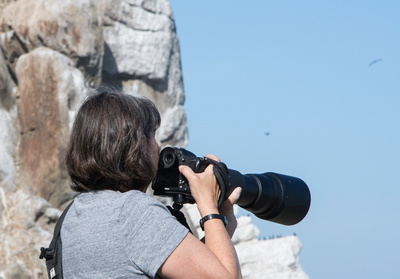 Tamron 150 to 600mm lens. BlackRapid shoulder strap. Cotton Carrier hand strap.
Tamron 150 to 600mm lens. BlackRapid shoulder strap. Cotton Carrier hand strap.
I mostly shoot handheld. If I am going birding then I will bring my Tamron 150 to 600mm lens. I carry it with a BlackRapid shoulder strap attached to the tripod mount.
The camera and lens are pretty heavy, so I use it for shorter walking distances (max about 2 miles). I have tried a monopod but it has never been successful for me. Many birds are in the trees or flying at different angles, and I often need to grab my lens quickly. The monopod has not been helpful in these situations and just adds weight. I have yet to feel comfortable with it.
If I am going to sit and watch birds, I will probably be close to the car. In addition to the big lens, I have a rolling cart and can carry a tripod, chair, scope, bird book, and a thermos of coffee. I take the strap off and put the lens on the tripod. I have done this when studying gulls. It was a very satisfying experience.
If I'm shooting insects, I'll bring my Tamron 90mm macro lens with a Nikon SB-800 AF Speedlight and a Fotodiox 6"x9" Softbox. Again I shoot handheld. This too can get heavy. If I am walking with it, I will use my Cotton Carrier camera harness. I sometimes add a Raynox DCR-150 Snap-On Macro Lens for really tiny critters.
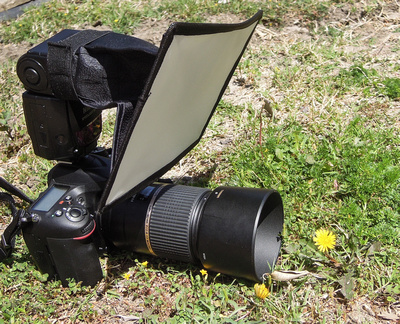 Macro setup
Macro setup
If it's a longer walk, I will bring my Nikkor 70-300 VR zoom lens. I wear my camera harness. This leaves me hands-free when I need it and gives me a break from carrying the camera in my hand. The drawback is that it is difficult to maintain good posture. I also carry the point-and-shoot and the Raynox snap-on macro. This setup is very versatile for shooting birds, macro, and habitat. It is probably the one I use most often. It is good for 'documentation' photographs and an occasional really nice one. I was happy I had this for my 3 1/2 mile butterfly survey. I could catch butterflies from a distance so that they wouldn't spook, and add my Raynox for close-ups, and it was a perfect lens for a gopher snake that was sunning itself in the middle of the trail.
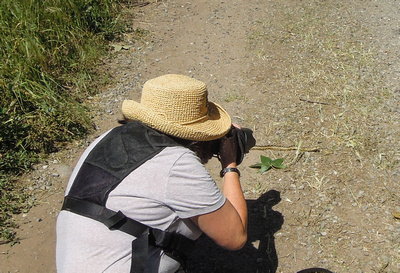 Nikkor 70-300 VR zoom lens. Cotton Carrier camera harness. This photo was shot by a friend with my Nikon Coolpix P300.
Nikkor 70-300 VR zoom lens. Cotton Carrier camera harness. This photo was shot by a friend with my Nikon Coolpix P300.
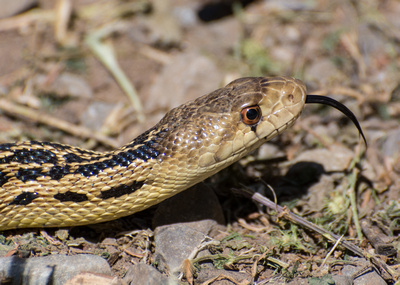 Nikkor 70-300 VR zoom lens.
Nikkor 70-300 VR zoom lens.
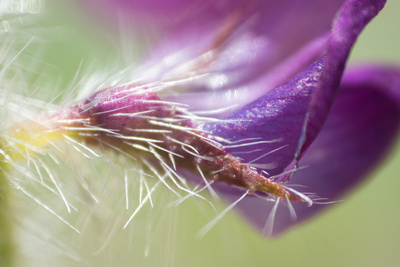 Shot with Nikkor 70-300 VR zoom lens with Raynox DCR-150 Snap-On Macro
Shot with Nikkor 70-300 VR zoom lens with Raynox DCR-150 Snap-On Macro
On some occasions, not on long walks, I bring my Sigma 15mm f/2.8 EX DG Diagonal Fisheye lens or Nikon AF-S DX NIKKOR 18-105mm zoom lens. These are good for landscape and other shots. I always carry my tripod in the car and I sometimes use it with these lenses for night shooting.
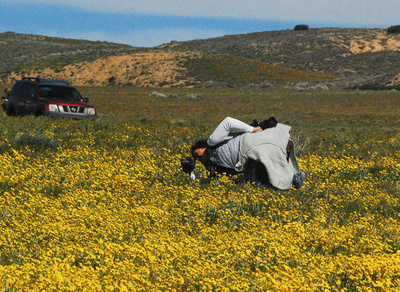 Shooting with my fisheye lens
Shooting with my fisheye lens
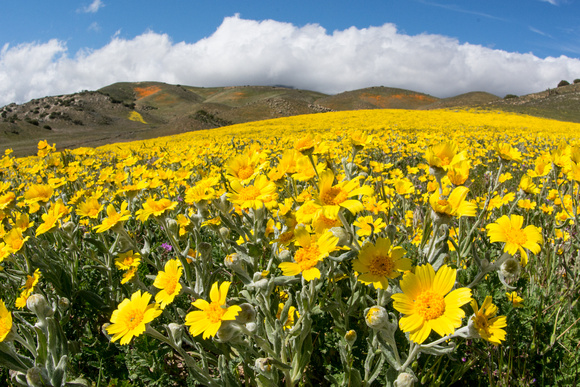 Shot with Sigma 15mm f/2.8 EX DG Diagonal Fisheye lens
Shot with Sigma 15mm f/2.8 EX DG Diagonal Fisheye lens
Somehow, I always wish I had the other lens, but I don't let the lens restrict what I shoot. Recently birding in Sycamore Canyon in Whittier, I had my big lens. There were many insects I would like to have shot, but missed. However, I still got decent shots of butterflies. At Madrona Marsh, I shot a Red-tailed Hawk being harassed by a Red-winged Blackbird, with my macro lens because that is what I had when the action occurred. I would have loved to have my big lens. Another time, at Tejon Ranch, when I had my macro lens, I saw a rattlesnake. Oh how I wished I had a longer lens. As I gained some bravery, and the snake seemed not to pay too much attention to me, I crept closer to get a better shot. But when I used my flash and got a little too close, he gave a little rattle and I ran very fast.
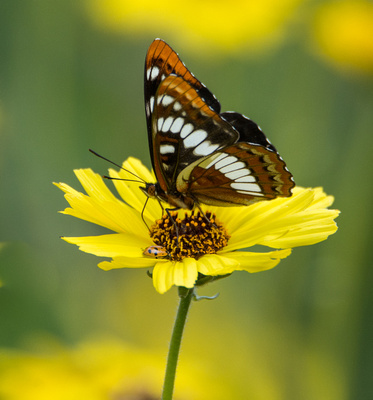 Shot with Tamron 150 to 600mm lens
Shot with Tamron 150 to 600mm lens
 Shot with Tamron 90mm macro lens
Shot with Tamron 90mm macro lens
Another decision in carrying gear is where you are going in terms of safety. I often go out alone, but only to certain places where I feel safe. The longer the lens, the more attention I get. Often it's somebody asking if I'm a birder and then they proceed to tell me about a bird that they have recently seen. That's good attention, and I enjoy talking with them on the trail and educating people on birds. However, sometimes there's attention you don't want, and I feel it may make me a target. Sometimes if I'm carrying the big camera in a sketchy neighborhood I will wear a poncho to cover it up or, better still, to go with a group. When I become absorbed in shooting, I am not always aware of my surroundings. I have been approached for 'money'. In one experience I had a bare-chested, bald, tattooed man wearing nothing but shorts and flip-flops and carrying a can of beer say "That camera looks expensive." I responded "I don't know, it was a gift". That made my heart skip a beat. Fortunately, although I separated from them, I was with a group and someone from my group came to my side. Nothing happened and perhaps he was just curious about getting into photography, but it makes me more cautious.
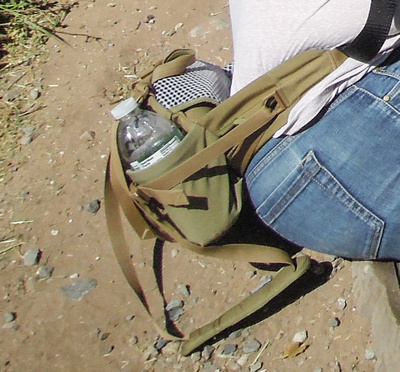 My favorite day pack
Camera, lens, and carrying method are not the only decisions to be made. I almost always carry Pentax 8.5x21 U-Series Papilio II Binoculars. They are close focusing and are good for birds and bugs. I have a favorite daypack, which also functions as my purse. It is a Mountainsmith Drift Lumbar Pack and is a good size for carrying smaller lenses, a journal, a water bottle, and various other essentials. I like that it converts from a shoulder bag to a fanny pack.
My favorite day pack
Camera, lens, and carrying method are not the only decisions to be made. I almost always carry Pentax 8.5x21 U-Series Papilio II Binoculars. They are close focusing and are good for birds and bugs. I have a favorite daypack, which also functions as my purse. It is a Mountainsmith Drift Lumbar Pack and is a good size for carrying smaller lenses, a journal, a water bottle, and various other essentials. I like that it converts from a shoulder bag to a fanny pack.
And, of course, I have other decisions to make such as, which shoes, hat, water bottles, snacks, lunch, and clothes (long or short sleeves, shorts or long pants, sweater?). Sometimes I like to bring my journal and small watercolor kit. Whatever I decide, it is always not enough and too much to carry!
Intense birding people often are less interested in stopping for photography, much less for an insect. It's not just the right gear that is needed, but also going with the right people and then choosing the gear for the group. I went birding at Madrona Marsh one week and there were so many insects that I had to make a second trip with friends from my entomological society and my macro lens.
Whatever I choose, the most important thing is to always carry a camera, and I'm sure that you will hear me say, "I wish I brought the other lens".
]]>My husband and I went up the coast to Morro Bay for my birthday. The highlight was watching sea otters. Mothers held babies on their chests. One mother left her older baby to dive for food. The baby started screaming and swimming from otter to otter. When mom came back there was a joyous reunion with lots of otter kisses.
It was a long drive and short visit at Tejon Ranch to see wild flowers. It always feels remote and beautiful there.
What a delight to accidentally discover new places. I went with my husband to Buttonwillow for his job. We passed a sign on the way and made a detour to the Tule Elk Staute Natural Reserve. We saw elk and birds. I finally got a good look at a Swainson's hawk. I also found a Great Horned Owl's nest with a chick. I only wish I had brought my better lens, but at least I had a camera.
Watch the slideshows or click on the links to look through at your own pace.
Enjoy the show! I always appreciate corrections to ID's.
Local stuff: http://kimssight.zenfolio.com/new_mar_2017
Monthly Los Cerritos Wetlands bird survey: http://kimssight.zenfolio.com/hellman_03-23-2017
Morro Bay: http://kimssight.zenfolio.com/morro_bay_mar_2017
Tejon Ranch: http://kimssight.zenfolio.com/tejon_mar_2017
Tule Elk State Natural Reserve: http://kimssight.zenfolio.com/tule_elk_mar_2017
]]>
I went out on a pelagic birding trip out of Marina del Rey. The weather was perfect, but birds were few. A highlight was a Rhinoceros Auklet.
I went on a trip with Pasadena Audubon to Quail Lake, Holiday Lake, and Antelope Valley. I saw some good birds at a distance, but it was not a good bird photography trip. One thing of note was how noisy it was. There were lots of trucks passing on the 138, and each one had to blast its horn three times. I am reminded that it seems in even remote areas there is the noise from traffic or airplanes.
Watch the slideshows or click on the links to look through at your own pace.
Enjoy the show! I always appreciate corrections to ID's.
Local stuff: http://kimssight.zenfolio.com/new_feb_2017 (birds first, scroll for insects, art, and misc.)
Rancho Los Cerritos: http://kimssight.zenfolio.com/rancho_los_cerritos_feb_2017
Pelagic Birding Trip: http://kimssight.zenfolio.com/pelagic_trip_feb_2017
Quail Lake and Antelope Valley: http://kimssight.zenfolio.com/quail_lake_feb_2017
]]>
I spent the month within about a 40 minute circle of my home, so my photos are local. A young sea lion at Dana Point looked like he was waiting for his mother and making friends with birds. There were plenty of interesting mushrooms and I discover that squirrels like to eat them. I have a few insect photos, but was birding for the most part.
Winter is a time for waterfowl. I found beautiful ducks and geese including a Eurasian Wigeon, a Lesser Canada Goose, Hooded Mergansers, and a Wood Duck. I saw several birds that are vagrants showing up as rarities in our area including Painted Redstart, Yellow-throated Warbler, and Eastern Phoebe. I finally saw my first Tricolored Blackbird. The Tricolored Blackbird lives almost entirely in California and is of special concern. Over just the last 6 years, the Tricolored Blackbird population has decreased by 64%. Audubon California is working closely with landowners and its partners in the Tricolored Blackbird Working Group to protect this species across California. So where did I see this bird? Eating garbage in a parking lot in Torrance with a flock of Brewer's Blackbirds and Brown-headed Cowbirds.
Predation is an interesting subject. A Black-throated Gray Warbler was eating a Leaf-footed bug Leptoglossa zonatus in my front yard. A Red-tailed Hawk made a meal of a gopher at Madrona Marsh and posed for photos.
On the last day of the month I was in Escondido and visited a sculpture garden called Queen Califia's Magical Circle. It reminded me of Park Guell in Barcelona, which was indeed part of the inspiration for the artist. It was very colorful and creative.
Watch the slideshows or click on the links to look through at your own pace.
Enjoy the show! I always appreciate corrections to ID's.
Local stuff: http://kimssight.zenfolio.com/new_jan_2017
Queen Califa's Sculpture Garden: http://kimssight.zenfolio.com/queen_califa
]]>
Some things I have learned:
- I have learned many new places to visit. I have also learned that each place requires a longer visit than I ever have time for. I have enjoyed the diversity and sometimes subtleties of habitats.
- I have learned so much when it comes to recognizing birds by sound. I have also learned that I have a long ways to go.
- Patience is required in all things, yet I have not learned patience. This is an ongoing task for me.
- I recognize a wide variety of birds, insects, and some plants, but can become quite unsure and easily talked into or out of an ID. I need to work on my skills and confidence.
- I learn a lot from being with others who are knowledgeable in a subject, and also I need space and time to process information in my own way. I need to pace myself with trips with others and trips alone.
- I learned about nature and art journaling. This has helped me observe more closely. I also learned that I need to let go of self-judgment and criticism of my art skills (and probably in other aspects also). Sometimes it is hard to start, yet the only way to improve is to keep doing it. The journal class I took with Jack Laws was very liberating in that regard.
- When you travel with other experts, they point out many things that you might not otherwise see.
- I enjoy "discovery" and the element of surprise that comes from finding things randomly on my own.
Classes/Conferences:
- Bird Sounds
- "Way of Water" art journaling class in the Northeastern Sierra-Nevada
- California Master Naturalists Conference including Nature Journaling with Jack Laws
- "Earth Now" Conference
- Calligraphy class
- Colored Pencil Botanical Illustration
Some of the things I did:
- Gave a talk on Bees to a Girl Scout group
- Gave a talk on entomology and insects to a different Scout group
- Gave a talk to the Lorquin Society on my monthly butterfly count
- Participated in a Coastal Bioblitz for World Ocean Day
- Participated in Tejon Ranch Invertebrate Bioblitz
- Participated in monthly butterfly survey with Irvine Ranch Conservancy
- Participated in monthly bird survey at Rancho Los Cerritos
- Participated in monthly bird survey at Los Cerritos Wetlands with Sea and Sage Audubon
- Served as secretary of the Lorquin Entomological Society
- Volunteered as a Trail Steward for El Dorado Nature Center
Stats:
- 270 volunteer hours (Citizen Science 192, Interpretation 53, Program Support 25)
- 299 bird species for the year, 245 in LA County - eBird rank 40 in LA County, 42 in Orange County
- approx 1900 observations, 900 species, 2800 identifications logged in iNaturalist
Some of the places I went:
- Cambria
- Pelagic trips/Whale watching trips
- Quail Lake and Holiday Lake
- Bonelli Park
- Joshua Tree NP
- Morro Bay
- Whittier Narrows
- Wardlow Park
- Legg Lake
- San Gabriel Spreading Grounds
- Convict Lake
- Sycamore Canyon
- Deforest Park
- Cruise to Vancouver
- Culp Valley - Anza Borrego
- West Fork San Gabriel River
- Chilao
- Buckhorn Campground
- Redrock Canyon Campground
- Kern River
- "Trail of a Hundred Giants" in Sequoia National Forest
- Malibu Lagoon
- Northeastern Sierra-Nevada
- San Bernardino Mountains
- Whitewater Preserve
- Near Temecula at Dripping Springs Campground
- Idyllwild, CA
- North slope of the San Gabriels
- St. Andrews Priory
- Point Loma
- Trails above JPL
- Santa Fe Dam
- Cibola NWR
- Bolsa Chica
- Huntington Central Park
- ...and many more that are too many to name
I think some of the most standouts are:
- The trip to the Northeastern Sierra-Nevada and separately Jack Law's Class stand out as inspirational and educational
- The Weekend in Culp Valley Campground and the Great Birding Day looking at Gulls and Visiting Bolsa Chica stand out as deeply soul satisfying and having perfect pace for viewing nature
- Tejon Ranch BioBlitz stands out for sharing with others and as a magical place
I will have to see how 2017 proceeds and how I can balance my year. I know I want to continue to take photos, do a lot more artwork and creative projects, explore new places, and learn new things.
I look forward to sharing with you all.
]]>
A little rain is great for our plants. While the plants are renewed by the rain, I stay at home and do some artwork. I am renewed by working on creative efforts.
I took a trip, along with a fellow naturalist James Bailey, to the Cabrillo National Monument in San Diego, where we looked at local flora and the rugged California coastline. In addition to adding to our own collections of photos, we posted on iNaturalist to participate in the 2016 National Parks Bioblitz.
An Audubon trip to Santa Fe Dam Recreation Park started out very foggy. But soon the fog lifted, and we saw lots of birds. Rock Wren, Merlin, and Ross's Goose were my favorites.
I had to drop my husband off in Dana Point, so I decided to spend some time on learning my gulls. My birding buddy Merryl and I spent a few hours in Dana Point and then stopped by Bolsa Chica on the way home for a fifteen minute stop that turned into a few hours. It turned out to be a fabulous day of birding. A whole lot of gull education and then reddish-egret and long-tailed duck.
I don't always post the photos from my monthly bird survey for the Rancho Los Cerritos Historic Site when the pickings are slim. This month, however, the birds were back. Winter seems to be the best time for birding at the Rancho when the Toyon berries get ripe. The Cedar Waxwings were back, and Robins, and Hermit Thrushes, and about 20 species of birds. An Allen's Hummingbird (although they are abundant and around all year) posed for me. I love the way the gorgette changes color as the bird moves its head. But what happened to them on the Audubon CBC (Christmas Bird Count???)
I finished the month with am Audubon trip to the Cibola NWR in Arizona, and Palo Verde Ecological Reserve in CA. Both are close to Blythe, CA. This was my second time going and it never disappoints. Highlights for me included Sandhill Cranes, Prairie Falcon, and just the volume (both in number and sound) of geese, ducks, and blackbirds. The only disappointing part is not having enough time to linger in one spot.
Watch the slideshows or click on the links to look through at your own pace.
Enjoy the show! I always appreciate corrections to ID's.
Local stuff: http://kimssight.zenfolio.com/new_dec_2016
Point Loma : http://kimssight.zenfolio.com/pt_loma_dec_2016
Santa Fe Dam: http://kimssight.zenfolio.com/santa_fe_dam_dec_2016
Rancho Los Cerritos monthly bird survey: http://kimssight.zenfolio.com/rancho_los_cerritos_dec_2016
An excellent day of birding: http://kimssight.zenfolio.com/most_excellent_birding_12-11-2016
Cibola NWR and Palo Verde Ecological Reserve: http://kimssight.zenfolio.com/cibola_dec_2016
]]>
This will be a living blog that I will update as I get new information, insights, and photos. If you find I have made an error, please let me know. I will correct it and learn. If you know another source, let me know. If you find this helpful, let me know.
So here goes. I am highlighting a few key points that will help me in the field and help me to remember the differences.
Local Gulls in Size Order:
BOGU Bonaparte's Gull - Chroicocephalus philadelphia (13.5") Two-year gull
Pigeon size, Black bill, Post occular spot, Generally don't mix with others
|
|
1st Summer |
Winter Adult |
SBIG Short-billed Gull - Larus brachyrhynchus (17") Three-year gull
Similar to Ring-billed, but smaller bill and shorter legs. Dark iris on adult. Winters on the coast
|
|
|
Winter Adult |
RBGU Ring-billed Gull - Larus delawarensis (17.5") Three-year gull
Pale mantle
|
1st Winter |
|
|
HEEG Heerman's Gull -Larus heermanni (19") Four-year Gull
Distinctive, dark easy to identify
|
|
|
Winter Adult |
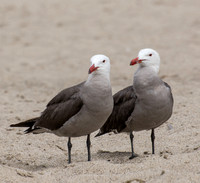 Heerman's Gull - Larus heermanniMalibu Lagoon 06/14/2106
Breeding Adult Heerman's Gull - Larus heermanniMalibu Lagoon 06/14/2106
Breeding Adult |
CAGU California Gull - Larus californicus (21") Four-year Gull
Variable, mantle lighter than western, adult yellowish legs, dark eye, slim straight bill
|
|
|
|
|
Thayers (23)" Four-year Gull - UNCOMMON IN OUR AREA
Highly Variable
|
1st Winter |
2nd Winter |
3rd Winter |
Winter Adult |
Yellow-footed (24") Four-year Gull - UNCOMMON IN OUR AREA
I got nothing
|
1st Winter |
2nd Winter |
3rd Winter |
Winter Adult |
WEGU Western Gull - Larus occidentalis (25") Four-year Gull
Adults White head, dark gray back, pink legs, large yellow bill with red dot,thick tipped, slightly drooping, darker eyes
|
|
dark gray back, two toned bill, yellow eye |
|
|
HERG Herring Gull - Larus argentatus (25") Four-year Gull
Mantle lighter than California Gull, Highly variable
Section needs work
|
|
|
|
GWGU Glaucous-winged Gull - Larus glaucescens (26") Four-year Gull
Bill shape variable, unpatterned and uniformly colored plumage. Wing tips same color as back.
Hybridizes
|
|
2nd Winter |
3rd Winter |
|
Same Year Birds:
First year birds
|
SBIG |
RBGU |
CAGU |
|
GWGU |
WEGU |
Adult
|
SBIG |
RBGU |
CAGU |
|
pink legs |
WEGU pink legs
|
HERG |
And now for some side by side comparisons:
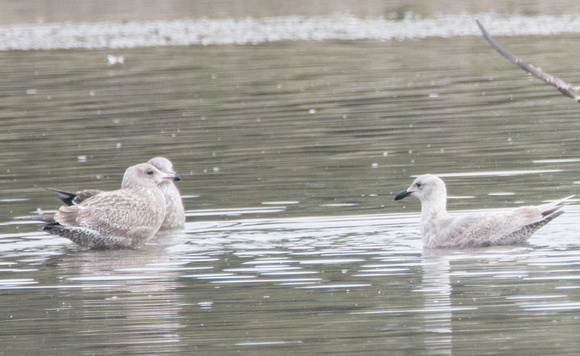 1st Winter California Gull - Larus californicus, Dana Point, Glaucous-winged Gull - Larus (r)1st Winter California Gull - Larus californicus, Dana Point, Glaucous-winged Gull - Larus (r) Dana Point, San Juan Creek Mouth 12/11/2016
1st Winter California Gull - Larus californicus, Dana Point, Glaucous-winged Gull - Larus (r)1st Winter California Gull - Larus californicus, Dana Point, Glaucous-winged Gull - Larus (r) Dana Point, San Juan Creek Mouth 12/11/2016
CAGU GWGU
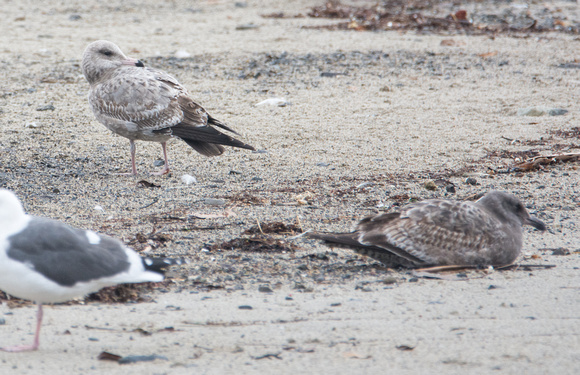 1st winter birds California Gull - Larus californicus, Western Gull - Larus occidentalis1st winter birds California Gull - Larus californicus, Western Gull - Larus occidentalis Dana Point, San Juan Creek Mouth 12/11/2016
1st winter birds California Gull - Larus californicus, Western Gull - Larus occidentalis1st winter birds California Gull - Larus californicus, Western Gull - Larus occidentalis Dana Point, San Juan Creek Mouth 12/11/2016
CAGU WEGU
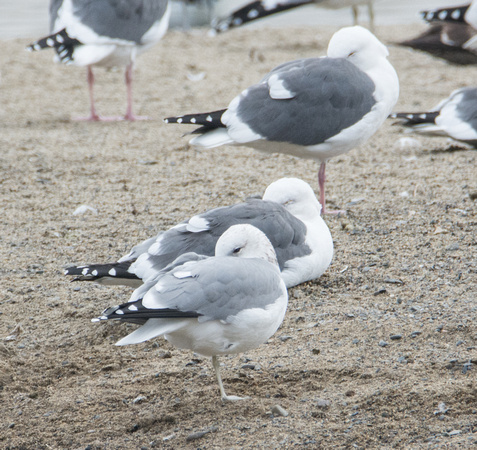 Dana Point, San Juan Creek Mouth 12/11/2016
Dana Point, San Juan Creek Mouth 12/11/2016
WEGU CAGU
WEGU (Adult and 2nd)
RBGU WEGU
RBGU WEGU (2nd)
]]>It is too early for Gray Whale migration, but I took a whale watch cruise to see dolphin and seals.
There was not much happening on my butterfly count, but I love being outdoors and in the company of such good people. A new-to-me jumping spider was a nice find.
To celebrate our 25th anniversary, my husband and I spent a couple of nights in Idyllwild, CA at a charming B&B. We discovered a wonderful nature center nearby with a a very interesting museum/gift shop and lovely hiking trails. We enjoyed the autumnal colors and mountain birds.
I went on a loooong day of birding with Pasadena Audubon. We stopped at eight locations in one day tracking down several 'prized' birds. We heard the Pygmy Owl and saw at great distance the Mountain Plover. Alas, no photos of those. It was a lovely autumn day and I was very happy to discover some new birding areas. St. Andrews Priory was a highlight for overall beauty.
Watch the slideshows or click on the links to look through at your own pace.
Enjoy the show! I always appreciate corrections to ID's.
Local stuff: http://kimssight.zenfolio.com/new_nov_2016
Dolphins and Seals : http://kimssight.zenfolio.com/whale_watch_nov_2016
Irvine Ranch Conservancy monthly butterfly count: http://kimssight.zenfolio.com/irc_nov_2016
Idyllwild, CA: http://kimssight.zenfolio.com/idyllwild_nov_2016
North Slope of the San Gabriels: http://kimssight.zenfolio.com/north_slope_san_gabriels_nov_2016
]]>
Warblers were migrating, and we had some vagrants come through. Blackpoll warbler, Black-and-white warbler, Nashville warbler, and Black-throated Gray Warbler were highlights. I found insects and spiders in my yard and caught a grasshopper molting. I think I get double bonus points for birds eating insects: a Snowy Egret eating a common green darner and a Black-and-white Warbler eating a long-jawed spider.
My butterfly count was interesting. At first attempt, a tree went down over the main jeep trail so instead we did a short walk-about and saw a Fatal Metalmark - a first for us in the area. We met again a few weeks later and completed the survey. The butterflies were fewer, as expected for the time of year, so we enjoyed the clouds and beautiful scenery. We saw some mule deer that seemed uninterested in our presence.
I went with a friend on an overnight camping trip near Temecula at Dripping Springs Campground. Our primary purpose was to do some nature/art journaling and just relax. Mission accomplished.
Watch the slideshows or click on the links to look through at your own pace.
Enjoy the show! I always appreciate corrections to ID's.
Local stuff: http://kimssight.zenfolio.com/new_oct_2016
Irvine Ranch Conservancy monthly butterfly count: http://kimssight.zenfolio.com/irc_oct_2016
Dripping Springs Campground: http://kimssight.zenfolio.com/dripping_springs_camp_oct_2016
]]>
 MaleGreen Lynx
MaleGreen Lynx
The more you closely observe something, the more fascinating it becomes, or at least that's the way it is for me, particularly with nature.
I first noticed Green Lynx spiders several years ago on my lavender and the other shrubby drought tolerant plants in my garden. Each fall I would see them and occasionally saw them with their egg sacs, but by summer they were gone (or so it appeared). Rarely did I see a male. I just wasn't observing closely. Since then, I have been fascinated by them and have been photographing them whenever I get a chance.
I have come to appreciate the many color variations and patterns on these beautiful spiders. I saw my first spiky green spider and wondered what it was. I found out it was a Green Lynx spider. Soon after, I saw a reddish spider and a yellowish spider. They were also spiky and I wondered what they were. Of course I found out they are the same species.
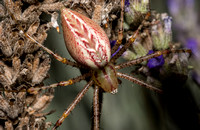
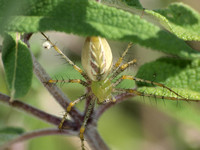
|
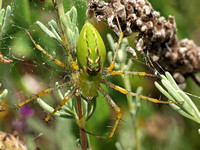
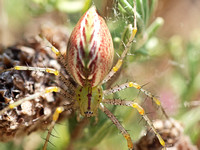
|
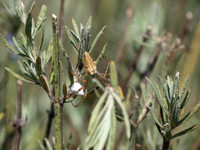
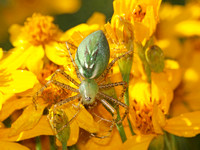
|
I have watched several spiders weave their egg sacs over a period of about an hour. I watched one fill it with orange eggs. The mother's body changed shape from round and fat to skinny. Initially the sac was a pale yellow-green; then it dried to a brown color and was camouflaged with bits of the lavender. The mother stays near the egg sac and vigorously defends it.
She ventures a short way to actively hunt or lay-in-wait for prey. One often thinks of spiders catching flies in a web, but this species doesn't build webs to catch prey; Honey Bees seem to be the most common visitors, and so they are the most common meal followed by Fiery Skippers. Wasps, large flies, other butterflies, and an assortment of bugs are on their menu. Freeloader Flies quickly come to dine on the spider's dead or dying prey and annoy the spider to no end. They cover a Honey Bee and even land on the spider. The spider will flick them away with her legs.
It may be a month or more before the egg sacs open. The mother will make a mesh of web often tying branches into a cluster in order to make a safe haven for the spiderlings. While this spider usually has one brood a season, some may have multiple broods, and as soon as one sac opens, she makes another one in the same spot. I have observed up to three broods. The eggs hatch inside the sac after about two weeks, but stay inside for another couple of weeks although I have not observed what happens in the egg sac. The mother helps open the egg sac to release the spiderlings.
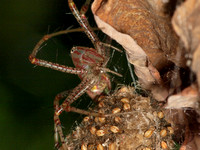
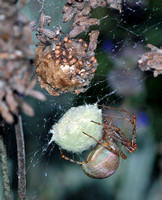 One brood is done ,now creating another egg sac One brood is done ,now creating another egg sac
|
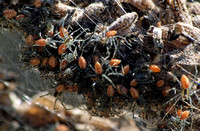
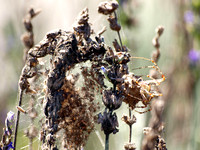 multiple broods multiple broods
|
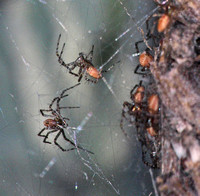
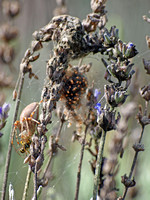 Weaving together a safe place for the spiderlings Weaving together a safe place for the spiderlings
|
The spiderlings will molt multiple times over the course of their lives.
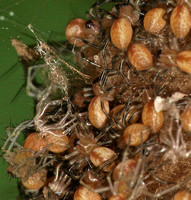
|
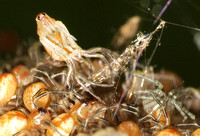 Molting Molting
|
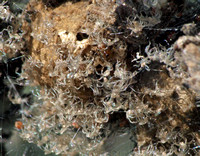 Molted exoskeletons Molted exoskeletons
|
The babies spread through my garden and dine on tiny insects such as carpet beetles, small caterpillars, and nymphs of other insects. I enjoy finding the baby spiders throughout the spring, but then they seem to disappear or maybe I'm just not looking for them.
 Baby Green lynx spider Baby Green lynx spider
|
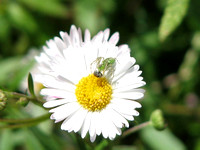 Eating a carpet beetle Eating a carpet beetle
|
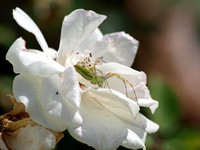 Still growing Still growing
|
It's not until the next fall that I start to see a few adult females starting the cycle anew. I love their patterns and colors and their expressive faces. They have become one of my favorite garden visitors.
I attended a conference of the California Master Naturalists in Running Springs in the San Bernardino Mountains. There were many interesting presentations. My only regret was there was not enough time to explore the area. Of highlight was a class I attended on nature journaling and drawing by Jack Laws. In addition to some simple tips for drawing, he talked about some ideas to help see and think about the world. After the conference we took a field trip to the Whitewater Preserve. As we were driving out, I was happy to spot some bighorn sheep on a rocky outcropping. We stopped the vans so all could get a look.
Some of the regular participants were unable to attend my monthly butterfly count, so I once again was the lead on my transects. I was fortunate to recruit a very knowledgeable young naturalist to join the team and I enjoyed the company of some others relatively new to the group. We saw many butterflies including lots of woodland skippers. However, what was surprising was the relative absence of some of expected ones such as white checkered skippers. That's why I continue to go out; always something new.
I participated in a BioBlitz at Tejon Ranch. That required a blog all of its own. Here is the link in case you missed it. http://kimssight.zenfolio.com/blog/2016/9/tejon-ranch-invertebrate-bioblitz
At home, the green lynx spiders are thriving in my garden. I got to watch one spin its egg sac and deposit its orange colored eggs. I found one of several egg sacs not being guarded and couldn't resist opening it to see the little golden eggs.I was surprised by a few late blooms on my tree out front, one of which had a first-in-my-yard mantid on it. My cats alerted me to a common green darner at my door. It posed for some macro shots. I wrapped up the month with some local birding and a trip to my local nature center. My monthly bird count at Los Cerritos Wetlands had a few shorebirds coming back for the season. A highlight was a Dainty Sulfur butterfly, my first. At DeForest park, I co-led a bird walk. Highlights for me included a Pectoral Sandpiper and an angle-wing katydid. I see cool insects on bird walks. A trip to the LA river had more birds coming back, but now wearing non-breeding plumage. Finally, at the nature center on the last day of the month, small bullfrogs (or soon to be heron snacks) were all around the lake.
I am off to recharge my batteries, literally and figuratively. Enjoy your pumpkin spice season!
Watch the slideshows or click on the links to look through at your own pace.
Enjoy the show! I always appreciate corrections to ID's.
Local stuff: http://kimssight.zenfolio.com/new_sep_2016
Irvine Ranch Conservancy monthly butterfly count: http://kimssight.zenfolio.com/irc_sep_2016
Whitewater Preserve: http://kimssight.zenfolio.com/whitewater_sep_2016
Pali Mountain Resort Running Springs : http://kimssight.zenfolio.com/running_springs_sep_2016
]]>
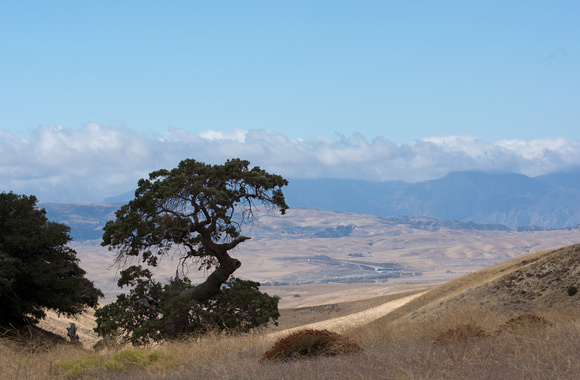
A BioBlitz is when a group of people, including experts, get together to identify as many different biological organisms as they can in a given area in a short period of time. These BioBlitzes serve several purposes from engaging the public in conservation to gathering scientific information. I have participated in a number of citizen science BioBlitzes and this one, camping and searching for invertebrates with the Tejon Ranch Conservancy and the Lorquin Entomological Society, is one of my favorites. I feel truly privileged for the opportunity to join this group and lend my skills as a nature photographer, my somewhat limited but growing knowledge of entomology, and my curiosity of and my passion for discovery of Southern California fauna.
Tejon Ranch is an amazing place. It is the largest contiguous private landholding in California at 270,000 acres. The owner of the land reached an agreement with several environmental groups to leave 90% of the land undeveloped in exchange for unchallenged development of the other 10%. The Tejon Ranch Conservancy was created to document, enhance, maintain, and restore the ranch's ecosystems.
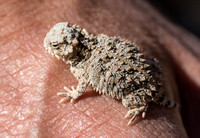 Tejon Ranch encompasses areas of Antelope Valley, Tehachapi Mountains, the base of the southern Sierra-Nevada Mountains, and the western edge of the Mojave. This makes for rich biodiversity. Because this is a private land holding, there has been limited access to the land for scientists and the public. While a fair amount is known about the mammals, birds, and reptiles that call it home, there is still much to be discovered, particularly when it comes to invertebrates. That’s where we come in.
Tejon Ranch encompasses areas of Antelope Valley, Tehachapi Mountains, the base of the southern Sierra-Nevada Mountains, and the western edge of the Mojave. This makes for rich biodiversity. Because this is a private land holding, there has been limited access to the land for scientists and the public. While a fair amount is known about the mammals, birds, and reptiles that call it home, there is still much to be discovered, particularly when it comes to invertebrates. That’s where we come in.
Our group of seven drove to the top of one of the mountain ridges. I was a bit white-knuckled as our van made its way up a steep gravelly narrow road with a sharp drop-off on one side. But, from there on, it was a completely blissful adventure. The weather was perfect, not too hot, and the wind was unusually calm.
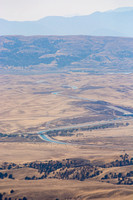 The views from the top were magnificent. The rolling golden California hills, the valley and distant mountains, and a view of the California Aqueduct reinforce my love of this state. We walked down the mountain passing pinyon pines,
The views from the top were magnificent. The rolling golden California hills, the valley and distant mountains, and a view of the California Aqueduct reinforce my love of this state. We walked down the mountain passing pinyon pines,
 manzanita, oaks, and chaparral for about four miles at a very leisurely pace. We made frequent stops to photograph insects along the way. When someone found something particularly good, we all gathered round to share. It is wonderful to have passion for something, but I am extremely fortunate to have others who share these often underappreciated interests. My fingers were blistered from gripping my camera and trying to capture all I saw. And I was not even close to capturing as much as some of the others!
manzanita, oaks, and chaparral for about four miles at a very leisurely pace. We made frequent stops to photograph insects along the way. When someone found something particularly good, we all gathered round to share. It is wonderful to have passion for something, but I am extremely fortunate to have others who share these often underappreciated interests. My fingers were blistered from gripping my camera and trying to capture all I saw. And I was not even close to capturing as much as some of the others!
After about six hours, we went down to our camp at Pescadero Creek. We pitched our tents, ate some dinner, and told a few jokes. I turned in a bit early while the others went off to look for critters in the dark. The winds were cooperative during the night and I slept cozily in my sleeping bag. The next morning, the temperature dropped and we bundled up and regrouped over breakfast and coffee. We walked a short way from camp to a very small pond.
A small water source in an otherwise quite dry area attracts many critters, and it was teaming with life. We saw insects associated with water, frogs, and I had the good fortune to be startled by a California king snake,
which I announced to the rest of the group with a sharp squeal of surprise -- and delight.
After a few hours recording our findings, we drove to another area of the ranch, this one populated with Joshua Trees. I’m sure this area is richer in the spring, but we managed to find a few gems in the dry autumn desert.
We have been logging our findings in iNaturalist which will be used by the Conservancy to add to their compilation of species on the ranch. We covered a very small portion of the ranch and for such a short time, but I am sure we added some significant findings. I look forward to many more opportunities to visit, explore, and discover at Tejon Ranch.
View more of my photos here. http://kimssight.zenfolio.com/tejon_sep_2016
Thank you to Cedric, Chris, James, and the iNat community for help with identifications. As always, I welcome corrections.
| “I am dying by inches, from not having anybody to talk to about insects...” ― Charles Darwin, Letters. A Selection, 1825–1859 |
]]>
Even though I have been at the Los Cerritos Wetlands over several years (mostly birding), I finally saw my first Wandering Skipper!!! That was definitely a treat. They live in our coastal wetlands, which are always under threat of climate change, habitat degradation and development. This butterfly is listed as Low Risk/Near Threatened as evaluated by the IUCN. At the end of the month I went to Malibu Lagoon. It was there I saw my second Wandering Skipper! I went to Sycamore Canyon, just north of Malibu, with some birding pals and we saw Nanday Parakeets and a large group of California Quail with young ones. I also visited the LA River a couple of times this month, where, in addition to bird watching, I enjoyed the dragonflies.
IRC Monthly Butterfly Count: Woodland Skippers were most abundant, however a highlight for me was to catch a Western Fence Lizard swallowing a huge grasshopper. The grasshopper gave a valiant effort but in the end was no match for the hungry reptile.
Pelagic Birding Trip: I went on a Pelagic Birding Trip out of Dana Point. Not that many birds, but always good to be out on the water. We did have some nice looks at Black Storm-Petrels and Pink-footed Shearwaters.
Watch the slideshows or click on the links to look through at your own pace.
Enjoy the show! I always appreciate corrections to ID's.
Local stuff: http://kimssight.zenfolio.com/new_aug_2016
Irvine Ranch Conservancy monthly butterfly count: http://kimssight.zenfolio.com/irc_aug_2016
Pelagic Birding Trip: http://kimssight.zenfolio.com/pelagic_trip_aug_2016
]]>
Local stuff: I visited the LA River a couple of times and found the Black-necked stilts great fun to watch. These seemed to neglect their own chicks in favor of attacking young Mallards. Mother duck didn't do much. This went on endlessly. I don't think there were any serious injuries, but the Mallards eventually got the hint and the next day seemed to stay further away. There is a huge colony of Elegant Terns at Bolsa Chica on one of the isolated islands. There were many birds bringing fish back to their nests. I enjoyed watching a Leaf-cutter bee attack my rose bushes, cutting and carrying off bits of the leaf to line her nest. I found two species of crabs and a dragon fly that are new to me. I enjoy discovering new creatures, but the familiar are fun to photograph when they pose.
IRC Monthly Butterfly Count: Dry, dry, dry!!! We still managed to see some butterflies but the habitat was so extremely dry that seems such a hazard for fires.
Watercolor Journaling in the Northeastern Sierra-Nevada: San Francisco State University has wonderful classes at their Sierra-Nevada Field Campus. I went for a week to learn watercolor journaling. We hiked to waterfalls, painted, and I photographed the wildflowers, butterflies, and birds. Evening Grosbeak, American Dipper, Western Columbine, and Leopard Lilies were some of my favorites. I am so in love with mountain meadows. Each day brought a new hike and a new location. I can now say I hiked the Pacific Coast Trail - well maybe not all of it but at least a small part. I learned that it is hard to hike with a day pack, camera, binoculars, art supplies, and small three-legged stool. I need a pack mule.
Watch the slideshows or click on the links to look through at your own pace.
Enjoy the show! I always appreciate corrections to ID's.
Local stuff: http://kimssight.zenfolio.com/new_july_2016
Irvine Ranch Conservancy monthly butterfly count: http://kimssight.zenfolio.com/irc_jul_2016
So many places to see in the Sierra:
Around the camp: http://kimssight.zenfolio.com/sierra_nevada_campus_jul_2016
Frazier Falls: http://kimssight.zenfolio.com/frazier_falls_2016
Sierra Valley: http://kimssight.zenfolio.com/sierra_valley_2016
Trail to Hawley Falls: http://kimssight.zenfolio.com/hawley_falls_2016
Veronica Lake: http://kimssight.zenfolio.com/veronica_lake_2016
Sardine Lake and Haypress Creek: http://kimssight.zenfolio.com/sardine_and_plum_2016
]]>
Highlights captured in pictures:
Local stuff: My mother came to visit me from New York City, so I took her to enjoy some of California's lovely habitats. I briefly questioned my decision to take her hiking in the Santa Monica Mountains when it was very hot and we saw a large rattlesnake, but the snake just went on its way and she was happy to see it -- from a distance. I particularly liked the baby Great Egrets we saw when we stopped for lunch by Malibu Lagoon. They look like Muppets. On another trip, I picked my husband up in Dana Point and was lucky enough to see the Pelagic Red Crabs (aka Tuna Crabs) that have been floating up on the Orange County beaches. I enjoyed watching them swim backwards by flicking their tails (I guess it is only backwards to us and the normal way for them). A friend and I took a trip up to the Angeles Crest Forrest to join an Audubon group. We went the night before, so that we could sleep later before the early start. The campground was packed but we eventually found a sight about 40 minutes away and set up the tent in the dark. We were awakened by a beautiful dawn chorus of mountain birds. I didn't get many good photos but enjoyed the trip. As summer approaches and birds have migrated through, and babies have fledged, there is less to see locally. My monthly bird count at Los Cerritos wetlands had mostly house finches and morning doves, but we did scare a coyote or two. I got a brief shot of one before it darted off. Coyotes prefer open spaces and would prefer not to see humans. I did a little artwork. Never enough time for everything!
IRC Monthly Butterfly Count: In addition to a lovely variety of butterflies, we saw several Intermediate Weed's Mariposa Lilies, a horned lizard, and a buck. I love the nature you find in preserved open spaces.
Tide Pool Bioblitz: For World Ocean Day, I participated in a Tide Pool Bioblitz sponsored by USC Sea Grant Program, Aquarium of the Pacific, Los Angeles Natural History Museum and the Los Angeles MPA Collaborative. We logged our findings in iNaturalist. I love the richness of the tide pools, but find it is difficult to photograph them: walk up and down steep cliffs, balancing on rocks, light reflected off the water. I am glad they are not that accessible, it helps preserve them.
Birding Trip in three parts: Kern River/ Sequoia/ Red Rock Canyon: Another Audubon excursion for three days of birding, this time sleeping in a motel instead of tent. We left the area two days before the devastating Erskine fire. Having been to the area, I am doubly saddened as California goes up in flames from devastating heat and drought.
- On the way up, before we met up with the group, we made a stop at Red Rock Canyon State Park in CA. The park is 25 miles northeast of Mojave on Highway 14. It was a brief stop to checkout the campground and the visitor center. It would be a lovely place to stay, but not in the summer! Highlights were a cactus wren and adorable antelope squirrels.
- Around the Kern River Area we stopped at several places including Onyx, the Audubon Kern River Preserve, Kernville, Weldon, Bert's Park, and various road turnouts. It was very hot and there were lots of ticks, but well worth the visit. Great bird sightings, cows, butterflies, a visit to a fish hatchery, great scenery and my best hawk photos (warning, a bit gory, and squirrel involved).
- On the second day in the afternoon, with a few stops along the way, we went up to higher altitude to the "Trail of a Hundred Giants" in Sequoia National Forest . Here we enjoyed much cooler temperatures (only in the high 80's to low 90's), giant trees and a Pileated Woodpecker. The sad part was that the forest has so many dead trees from drought and bark beetle devastation.
Watch the slideshows or click on the links to look through at your own pace.
Enjoy the show! I always appreciate corrections to id's.
Local stuff: http://kimssight.zenfolio.com/new_jun_2016
Irvine Ranch Conservancy monthly butterfly count: http://kimssight.zenfolio.com/irc_jun_2016
Tidepool Bioblitz : http://kimssight.zenfolio.com/pelican_cove_bioblitz_2016
Red Rock Canyon: http://kimssight.zenfolio.com/red_rock_ca_june_2016
Kern River: http://kimssight.zenfolio.com/kern_river_2016
Sequoia National Park: http://kimssight.zenfolio.com/sequoia_jun_2016
]]>
Local stuff: Playing with Macro again I found lady beetles and some interesting insects as subjects in my yard. This seemed to be flycatcher month in the local parks, some catching butterflies and eating other insects.
IRC Monthly Butterfly Count: A lovely day with the usual suspects. I am giving a joint presentation at the June meeting to the Lorquin Entomological Society about the program and butterflies. I hope to see some of you there.
Los Cerritos Wetlands Bird Count: Two Red-tailed Hawk babies were still in the nest. They were very scruffy and cute. House Finch were quite abundant.
West Fork San Gabriel River: I went on a local Audubon trip. Although we saw good birds, they were difficult to photograph, so I shot more butterflies than birds.
Anza-Borrego Desert State Park: WOW! Such a great trip. My husband and I went with friends over Memorial Day Weekend and actually found a campsite, and a great one at that. We spent lazy days around camp. I never ventured far and found lizards, butterflies (Ceraunus Blue and Great Purple Hairstreak), birds and mammals. At night, my lantern drew in some interesting insects (including a Mantisfly) and we had a fabulously starry sky. My friends (you know who you are) don't fully share my interests and continually complained that it was my turn at dominoes and hadn't I already taken a photo. Sometimes I have to be social so as not to be rejected by the herd, but I got in some shots - never enough.
Cruise LA to Vancouver: I took my first cruise in about 35 years. A friend from Audubon found a great deal on a 3-day trip from LA to Vancouver. We looked for pelagic birds and spent a day birding in Vancouver. It was a great time! We saw lots of Albatross and gray whale blows (or gray whale "poofs" as we called them). I didn't photograph all the food, but trust me, it was delicious.
Watch the slideshows or click on the links to look through at your own pace.
Enjoy the show! I always appreciate corrections to id's.
Local stuff: http://kimssight.zenfolio.com/new_may_2016
Irvine Ranch Conservancy monthly butterfly count: http://kimssight.zenfolio.com/irc_may_2016
Los Cerritos Wetlands bird count: http://kimssight.zenfolio.com/hellman_may_2016
West Fork San Gabriel River: http://kimssight.zenfolio.com/west_fork_san_gabriel_may_2016
Anza-Borrego: http://kimssight.zenfolio.com/anza_borrego_may_2016
]]>
Highlights captured in pictures:
Local stuff: I saw many baby birds and quite a few birds new to my list: California Gnatcatcher, Yellow-breasted Chat, Bell's Vireo, and Hermit Warbler, to name a few. I got a little carried away with shots of the baby Mockingbirds in my backyard and with a few R-rated scenes of an older hummingbird trying to mate with a fledgling and also of Tree Swallows mating.
I made a trip to El Dorado Park to shoot a few insect. Some shots are just to record new insects and some are prettier shots. There are some interesting flies and moths that I have not identified yet. I always appreciate help.
Throw in a few mammals and wildflowers and the month is complete.
IRC Monthly Butterfly Count: Brown elfin, a Mexican Tiger Moth, lots of butterflies, and baby red-tail hawks. It was very hot and windy but so worth it.
Los Cerritos Wetlands Bird Count: A mocking bird was repeatedly harassing a Red-tailed Hawk. I felt bad for the poor hawk. We changed our route a bit to avoid habitat where there might be birds nesting on the ground and chose a new route to record birds a little further back. We found this habitat to be more sandy with antlion traps. We also found two old raccoon skulls outside a burrow. We recorded lots of House Finch, Morning Doves, and Hooded Orioles.
Watch the slideshows or click on the links to look through at your own pace.
Enjoy the show! I always appreciate corrections to id's.
Local stuff: http://kimssight.zenfolio.com/new_apr_2016
Irvine Ranch Conservancy monthly butterfly count: http://kimssight.zenfolio.com/irc_apr_2016
Los Cerritos Wetlands bird count: http://kimssight.zenfolio.com/hellman_apr_2016
]]>
Highlights captured in pictures:
Local stuff: Woodpeckers started the month and I added birds throughout the month. I discovered two new places in Whittier, the Whittier Narrows Nature Center and Sycamore Canyon. Both well worth the visit. Finally the bugs are back in town and my yard is providing fun opportunities to break out the macro lens. For those who like larger things, a few whale shots and lastly a cat photo.
IRC Monthly Butterfly Count: WOW!!! Everything was in bloom and there were lots of butterflies. Sara Orange-tips, Common Ringlets, and White Checkered Skippers were in greatest abundance. Love is in the air. I saw lots of courtship and mating going on. In addition to butterflies, I found a mating pair of Dragon Lubber grasshoppers. How often have I mentioned that this is the activity I most look forward to each month?
Los Cerritos Wetlands Bird Count: A few birds, insects, mostly non-native, but still colorful, flowers, and a bunny for Easter.
Joshua Tree National Park: The park was packed with people. We went mid-week and all the campsites were full. We wound up camping in a private RV park in 29 Palms. It was like camping in a parking lot. But it was quiet, we had running water, picked up pizza for dinner and enjoyed good company so I had a good time even if no night photos. We had a telescope with us and saw the moons of Jupiter. We only did a quick drive-by through the park the next day. I hopped out of the car to shoot some wildflowers which were abundant.
Morro Bay: The drive up was lovely. So great to see the hills green again after the rains. We spent one night to celebrate my birthday and the home the next morning. Our hotel was next to a Heron Rookery where Great Blue Herons, Great Egrets, and Double Crested Cormorants were nesting. I have to go back and spend more time!!!!
Watch the slideshows or click on the links to look through at your own pace.
Enjoy the show! I always appreciate corrections to id's.
Local stuff: http://kimssight.zenfolio.com/new_mar_2016
Irvine Ranch Conservancy monthly butterfly count: http://kimssight.zenfolio.com/irc_mar_2106
Los Cerritos Wetlands bird count: http://kimssight.zenfolio.com/hellman_mar_2016
Joshua Tree: http://kimssight.zenfolio.com/jtnp_mar_2016
]]>
Highlights captured in pictures:
Local stuff: I saw three species of Merganser (Hooded, Red-breasted, Common), both male and female. I consider that a highlight to see them all in one month. Good sightings of Clark's and Western Grebes really helped me see the difference. I saw an Sara Orange-tip butterfly at my local nature center. I see them out in more wild areas but this is the first in the nature center in the city in about eight years. Unfortunately I saw a fair about of fishing line and bird entanglements in all the local parks where they stock the ponds for the fishermen. It is very sad to see and makes me ask why we still do it (revenue I'm sure) or can't we do it more responsibly?
IRC Monthly Butterfly Count: I had missed my butterfly count in January but am back on track in February. We mostly saw Sara Orange-tip butterflies, but they seemed to be on a mission and didn't pose for photos. I did catch some deer running through. It was a glorious day. California winter at 80 degrees.
Ranch Los Cerritos: The toyon berries were still attracting America Robins, Cedar Waxwings, and Purple Finches
Quail Lake: Five of us from Long Beach joined in on a trip with Pasadena Audubon to Quail Lake and Holiday Lake near Tejon Ranch on the 138 off the 5. Great sightings and several birds added to my life list included Williamson's Sapsucker and Red Crossbill. The owls at Holiday Lake were such a treat!
For those that are on Facebook, I have set up a public page where I post updates during the month. You can LIKE it here: https://www.facebook.com/KimMooreNaturalist. I also send out a monthly email with a link to this blog. Contact me if you would like to added.
Watch the slideshows or click on the links to look through at your own pace.
Enjoy the show!
Local stuff: http://kimssight.zenfolio.com/new_feb_2016
Irvine Ranch Conservancy monthly butterfly count: http://kimssight.zenfolio.com/irc_feb_2016
Rancho Los Cerritos: http://kimssight.zenfolio.com/rancho_los_cerritos_02_2016
Quail Lake, near Tejon Ranch: http://kimssight.zenfolio.com/quail_lake_feb_2016
]]>On the other hand, there are lots and lots of good winter birds. I made a particular effort to get out frequently this month and participate in an eBird challenge and in iNaturalist challenges. I enjoyed getting out but need to get back to a more relaxed pace.
Highlights captured in pictures:
Local stuff: Black Skimmer's can be so dramatic. Young ones rest completely prone on the sand. I love firsts and this month I saw my first Snowy Plovers - so adorable, Mew Gulls - cute for gulls, Lewis's Woodpecker - lovely subtle colors, Red-breasted Nuthatch - crawling up a tree trunk, and Greater Scaup - so hard to tell apart from the more common Lesser Scaup. I found two East Coast birds that seem to have gotten lost, or just discovered how great Southern California is in the winter. Red-shafted Flickers are common, but Yellow-shafted are usually found on the East Coast. An Eastern Phoebe is not as striking as our common Black Phoebe. Some exotic birds, probably released from the pet trade, are becoming established in our area. They are pretty but one wonders what impact they will have on native species. These were the Japanese White-eye, Yellow Chevroned Parakeet, and Scaley-breasted Munia.
Cambria and San Simeon: A quick trip up the coast is always a delight, even if it is rainy and gloomy. We visited Hearst Castle, ate good food (particularly the yummy cheeses), and drank fine wine. I managed to sneak in some time for a few birds and elephant seals between dining and the rain. The pups are about one week old nursing from their mothers. There were still a number of the males there with their harems. We took a tour of the lighthouse at Pierdas Blancas but I left my camera in the car due to bucketing rain.
Pelagic Birding Trip off Dana Point: Usually I go on whale watching trips and the boat rushes out to see the whales, skimming past wonderful sea birds. This time the tables were turned. We ignored three or four grey whales to pursue ocean going birds. We chummed with popcorn, which attracted a huge following of gulls. Black-vented Shearwaters and California Gulls dominated the day, but we also got some satisfying looks at Pomarine Jaegers, Commone Murre, Rhinocerous Auklet, Northern Fulmar, and Brown Boobies. Count me in the next time!
For those that are on Facebook, I have set up a public page where I post updates during the month. You can LIKE it here: https://www.facebook.com/KimMooreNaturalist. I also send out a monthly email with a link to this blog. Contact me if you would like to added.
Watch the slideshows or click on the links to look through at your own pace.
Enjoy the show!
Local stuff: http://kimssight.zenfolio.com/new_jan_2016
Cambria and San Simeon: http://kimssight.zenfolio.com/cambria_2016
Pelagic Birding Trip: http://kimssight.zenfolio.com/pelagic_trip_jan_2016
]]>
Local stuff: All birds. I like trying to catch birds in flight and got some shots. Some birds, such as finches, posed and asked me to take their photos. Some birds are camera shy, such as the Sora and Ridgeway's Rail so I had to take a shot when I could even if they didn't pose. I also shot a Greater white-fronted Goose and a Greylag Goose. Seeing them side by side really helps to see the difference of these sometimes confused geese.
Audubon Christmas Bird Count on the LA River, Dominguez Gap, and Deforest Park. The highlights of this trip for me were
- hundreds and hundreds of birds on the LA River. Beautiful flight formations and reflections in the river.
- a Merlin, which is a small raptor not often seen
- a herring gull, yes one individual bird in flocks of a hundred or more Western and Ring-billed Gulls.
Trip to Cibola, NWR: Cibola National Wildlife Reserve is in Arizona just over the border. We stayed in Blythe and went to Cibola and to the Palo Verde Ecological Reserve on the CA side of the Colorado River. highlights:
- Thousands of birds!!!! Huge numbers of Snow Geese, Sandhill Cranes, Mallards, Northern Pintail, and others.
- Sandhill Cranes, Wilson's Snipe, Yellowheaded Blackbirds. All new to my life list.
- Coyote, Deer, Owls, Autumn colors
IRC Monthly Butterfly Count: Not too many shots, but we did see lots of butterflies. There were some spring flowers blooming, which seemed unusual.
Rancho Los Cerritos Monthly Bird Count: Not much on the count, but I went back at the end of the month when the toyon berries were ripe and I saw Purple Finch, Cedar Waxwing, and American Robin chowing down.
On to January and the reset of birding year list.
For those that are on Facebook, I have set up a public page where I post updates during the month. You can LIKE it here: https://www.facebook.com/KimMooreNaturalist. I also send out a monthly email with a link to this blog. Contact me if you would like to added.
Watch the slideshows or click on the links to look through at your own pace.
Enjoy the show!
Local stuff: http://kimssight.zenfolio.com/new_dec_2015
Christmas Bird Count: http://kimssight.zenfolio.com/cbc_2015
Irvine Ranch Conservancy monthly butterfly count: http://kimssight.zenfolio.com/irc_dec_2015
Cibola NWR Audubon Trip: http://kimssight.zenfolio.com/cibola_2015
Rancho Los Cerritos: http://kimssight.zenfolio.com/rancho_los_cerritos_12-2015
]]>
I need to acknowledge that the photos and identifications that I share are really the result of a body of work supported by so many others. I thank so many people for helping me with identifications, helping me learn new things, go new places, and most of all for friendship. I want them to know how much I appreciate that they share their knowledge and company. I am mentioning some with whom I find friendship, guidance, and inspiration, but there are also so many more with whom I have had the honor of good company. (In alpha order)
- Insects and Spiders: Blaine, Dave, David, Donna, Emile, Eric, Jeanne, Jeff, Jerri, Jutta, Lenny, Mike, Peter, Renaldo, Richard, and everyone on the IRC butterfly count, and at the Lorquin Entomological Society
- Birds: Carolyn, Erin, Harriet, Jan, Jeff, Jerry, Jill, Keith, Mary, Merryl, Sylvia, Tracy, and the members of El Dorado Audubon
- Plants: Diane, Richard
- Photography: Bill, Douglass, Steve, and inspiration from my friends who post on Facebook
- Art and Camping: Jan
- Proof reading: Betty (aka Mom)
- Love and Support: Lindsey (aka husband), Nick, Ben, and Christina
- A shout out to my friends at Tertulia and Marla, just because they are my friends
And all my good friends with whom I spend time in the field!! I look forward to another year with you all.

With Love From Kim
]]>
I started the month with my butterfly count which once again proved a record for butterflies. I made a presentation to my local Audubon chapter on this monthly citizen science activity. I think it was well received, even if the focus wasn't birds. Some local trips included a hike on the Palos Verdes Peninsula and lunch at Terranea Resort, a trip to Malibu Lagoon with lunch at the Marmalade Cafe. I am enjoying fine dining instead of granola bars and nuts. I took a trip to Oak Glen for some autumn colors and apple pie, but this time I stayed in a B&B instead of a tent...I think I'm on to something!
For those that are on Facebook, I have set up a public page where I post updates during the month. You can LIKE it here: https://www.facebook.com/KimMooreNaturalist. I also send out a monthly email with a link to this blog. Contact me if you would like to added.
Watch the slideshows or click on the links to look through at your own pace.
Enjoy the show!
Local stuff: http://kimssight.zenfolio.com/new_nov_2015
Irvine Ranch Conservancy monthly butterfly count: http://kimssight.zenfolio.com/irc_nov_2015
Oak Glen fall colors: http://kimssight.zenfolio.com/oak_glen_2015
]]>
Check out the the camouflage of the giant swallowtail caterpillar. The ants in the park battle for territory. I found a woodpecker fly and a jumping spider that were new to me. I watched a great blue heron listen for, grab, dunk, and swallow a gopher. If you can get over the sad gopher part, the process is quite fascinating. On my bird count, a highlight was a juvenile Reddish Egret. Turkey Vultures posed for me at Prado Regional Park. I found desert beauty and a Laddered-back Woodpecker in Anza-Borrego, even though there was a cloud cover the whole time. Wrens, woodpeckers, wood ducks, shore birds, spiders, and artwork, are all here to inspire you no matter what your fancy.
For those that are on Facebook, I have set up a public page where I post updates during the month. You can LIKE it here: https://www.facebook.com/KimMooreNaturalist. I also send out a monthly email with a link to this blog. Contact me if you would like to added.
Watch the slideshows or click on the links to look through at your own pace.
Enjoy the show!
Local stuff: http://kimssight.zenfolio.com/new_oct_2015
Los Cerritos Wetlands bird count: http://kimssight.zenfolio.com/hellman_oct_2015
Audubon trip to Prado Regional Park: http://kimssight.zenfolio.com/prado_regional_park_oct_2015
Culp Valley Campground, Anza-Borrego Desert Park: http://kimssight.zenfolio.com/anza_borrego_oct_2015
]]>
Boy was it hot. How hot was it?...It was so hot that I barely got out this month! Most of my local shots are from my own yard and a few trips to local parks toward the end of the month. Still, there is a lovely array of birds (including and adorable Egyptian Goose Chick) and insects and spiders. There is an interesting story on the Cooper's Hawk. Click the image to read the comments.
I went on my regular butterfly count in the Santa Ana Mountains. The heat seemed to effect the counters more than the butterflies. We saw so many individuals and species that it made for a longer day than usual.
I tried some night shooting at Shoreline Village to capture the colors of the lights at night. I am learning a lot by extending my range outside my comfort zone. I used different lenses and different settings than my typical nature shots.
And I threw in some artwork.
Watch the slideshows or click on the links to look through at your own pace.
Enjoy the show!
Local stuff: http://kimssight.zenfolio.com/new_sep_2015
Monthly butterfly count: http://kimssight.zenfolio.com/irc_sep_2015
Photos from Shoreline Village: http://kimssight.zenfolio.com/shoreline_village_2015
]]>
A highlight for me this month was participating in an invertebrate bioblitz with the Lorquin Entomological Society at Tejon Ranch. Tejon Ranch Conservancy partnered with the Lorquin Entomological Society to perform a BioBlitz focused on invertebrates. This event took place in Sacatara Canyon, the largest wetland system on the Mojave Desert side of Tejon Ranch. The Conservancy is documenting the invertebrate fauna of this area regularly to see if their management approach improves habitat quality for a variety of taxa. It was very hot and windy. I saw a rattlesnake and scorpions. I was stung and bitten by ants. I had a great time!
Monthly photos include blue whales and dolphins that I photographed on a whale watching trip out of Dana Point. In addition, there are a few local birds and insects.
My regular butterfly count in the Santa Ana Mountains has been terrific this year and August was no exception. The numbers and variety were just tremendous. Woodland skippers were definitely dominant this month. We also saw more California sisters than usual and they even posed for me.
A white-tailed kite was a highlight at my Los Cerritos Wetlands bird count.
A special treat and a slight diversion from my nature photography was a photo event hosted by the Port of Long Beach. In addition to taking pictures of ships, cranes, containers, and port activities, I tried for some artistic abstracts.
Here and there I've thrown in some artwork.
Watch the slideshows or click on the links to look through at your own pace.
Enjoy the show!
Local stuff: http://kimssight.zenfolio.com/new_aug_2015
Monthly butterfly count: http://kimssight.zenfolio.com/irc_aug_2015
Monthly Bird Count at Los Cerritos Wetlands: http://kimssight.zenfolio.com/hellman_aug_2015
Tejon Ranch has to be split into three groups: Habitat, Vertebrates, and Invertebrates
http://kimssight.zenfolio.com/tejon_aug_2015_habitat
http://kimssight.zenfolio.com/tejon_aug_2015_vertebrates
http://kimssight.zenfolio.com/tejon_aug_2015_invertebrates
Photos from Port of Long Beach: http://kimssight.zenfolio.com/port_of_lb_2015
]]>
My regular butterfly count kicked off the month with two less commonly seen butterflies: a Sylvan Hairstreak and a Propertius Duskywing. My monthly bird count also held some hidden gems - a leucistic black-crowned night heron and a baby cowbird with its warbler 'mother'. A leucistic bird has a genetic mutation that prevents pigment from being properly deposited on a bird’s feathers and the plumage may be pale. Cowbirds push eggs out of nests of other birds and replace them with their own. The unsuspecting mother raises the chick as her own. These were not great photos, but fascinating to watch the big baby.
I spent much of July with friends and family here in California and also back east. I could not pass up an opportunity to slip away from family and photograph some birds in Pennsylvania. The cardinals were molting and some looked pretty odd indeed.
Watch the slideshows or click on the links to look through at your own pace.
Enjoy the show!
Local stuff: http://kimssight.zenfolio.com/new_july_2015
Monthly butterfly count: http://kimssight.zenfolio.com/irc_jul_2015
Monthly Bird Count at Los Cerritos Wetlands: http://kimssight.zenfolio.com/hellman_july_2015
Photos from Pennsylvania: http://kimssight.zenfolio.com/pa_jul_2015
]]>
I take and post some photos because they are pretty or fun. Others I post because they record what I find at a particular location. In some cases I see something new to me. I can't always get the shot I want, but something is better than not getting it at all. I shoot first and then try to get a better shot, but the bird or insect does not always pose for me.
June photos are from the insect study, local day trips, and my own yard. I started the month in the San Gabriel Mountains in LA County to look for butterflies, pine trees, and eat chili at the Crystal Lake Cafe. I discovered Bonelli Park in San Dimas, thanks to an Audubon outing. I attended a dragonfly and butterfly walk at San Joaquin Marsh in Irvine. When I, along with three others, stopped to take a photo, we lost the group. We enjoyed the rest of the walk at our own pace.
The next set of photos is from my monthly butterfly count. These shots are to record what we see. There were lots of white butterflies flitting about. It is often hard to tell them apart because they move fast and often don't land or sit for very long. Sometimes, even a blurry shot can make all the difference. We do the best we can!
The last set is from an overnight camping trip to Buckhorn Campground in the San Gabriel Mountains. The weather was perfect and it was a beautiful spot. I sometimes refer to myself as an adventurous wimp. Around 11 pm we heard loud beating on a 'bear box' in one of the the other campsites. We never found out what it was and whether it was human or animal. I must admit I felt a little vulnerable sleeping in a tent with only a thin piece of cloth between me and many imagined predators in the night. Of course all was peaceful and morning came with the songs of birds.
Watch the slideshows or click on the links to look through at your own pace.
Enjoy the show!
Local stuff: http://kimssight.zenfolio.com/new_june_2015
Monthly butterfly count: http://kimssight.zenfolio.com/irc_jun_2015
Camping in the San Gabriel Mountains http://kimssight.zenfolio.com/buckhorn_jun_2015
]]>
I really saw the impact of the drought on my monthly butterfly count. The grasses are getting so brown early in May. I am hoping that the little rain we had in the middle of the month greens things up a bit. Rural Skippers were the highlight.
I am continuing my insect study at the local nature center for the second year. You can see some of what I found in my local photos. I found a spittle bug in my own yard and wondered what was under all that white foam. Now I know. The tiny spittle bug nymph started to spittle again as I cleared away his protective froth. A friend found a California Lady Beetle and showed it to me to photograph. I was thrilled to see it. This is only the second one I've seen in five years, as they have been largely displaced by non-native species.
Enjoy the show!
Local stuff: http://kimssight.zenfolio.com/new_may_2015
Monthly butterfly count: http://kimssight.zenfolio.com/irc_may_2015
]]>
I love Southern California. I can't say that enough. From Desert to Ocean and everything in between. I am very fortunate to live here and get to see this beautiful state. I have just been certified through The Los Angeles Coastal California Master Naturalist Program. It was a wonderful opportunity to learn about the natural process that have created out state from geology, to climate, ocean currents, and habitats. We had great field trips including Catalina, JPL, and the California Science Center. I highly recommend the program.
I have participated in Earth Day with a photo exhibited (and for sale) at the Greenly Art Space in their exhibit BLUE. The art works explore issues such as oil pollution, over-fishing and global warming's effect on the health of our oceans. I submitted a photo of a brown pelican. The brown pelican story shows how human interaction on land can have a far reaching impact even into a vast ocean environment. Brown Pelicans ate contaminated fish and the pesticide disrupted their hormones. When they laid eggs the shells we so thin that the weight of the parent broke the eggs. But this is also a comeback story and a story of how human interaction can help. The federal government listed the California Brown Pelicans as endangered and banned DDT in 1972. The Brown Pelicans populations have made a comeback.
I also participated in Earth Day at the local aquarium. I wrote six pages of background information on earth-friendly gardens, butterflies, monarch migration, and the monarch-milkweed connection. I staffed a table for one of the days. My photos of local butterflies were displayed on a monitor for both days of the exhibit.
I hope my photos share the beauty and diversity of California and I encourage you to connect to nature, wherever you are.
Watch the slideshows or click on the links to look through at your own pace.
Enjoy the show!
Local stuff: http://kimssight.zenfolio.com/new_april_2015
Monthly butterfly count: http://kimssight.zenfolio.com/irc_apr_2015
Oxnard: http://kimssight.zenfolio.com/oxnard_apr_2015
Catalina: http://kimssight.zenfolio.com/catalina_scmi_apr_2015
Joshua Tree National Park, Black Rock Campground http://kimssight.zenfolio.com/jtnp_apr_2015
]]>
While much of the country suffered from major cold and snow, here in Southern California we started to see Spring. With some much needed rain and warm to downright hot weather, the insects are coming out to play. We had something to count on my monthly butterfly count and my yard was popular with moths. A friend alerted me to Surfbirds at the shore. So I grabbed my camera and added them to my site. As usual, I spent time at Bolsa Chica and saw birds. There are lots of birds building nests, courting, and babies. Great Horned Owl chicks are always a delight.
A friend and I looked for Bighorn Sheep. First at Mount Baldy where we so no sheep but we did see snow. Then to Anza-Borrego where we saw Bighorn Sheep and wildflowers.
An incredible Baja Whale Adventure required a whole separate blog. http://kimssight.zenfolio.com/blog/2015/3/baja-adventure
Watch the slideshows or click on the links to look through at your own pace.
Enjoy the show!
Mt. Baldy http://kimssight.zenfolio.com/mt_baldy_mar_2015
Bighorn Sheep in Anza- Borrego http://kimssight.zenfolio.com/anza_borrego_mar_2015
Butterflies and spring flowers http://kimssight.zenfolio.com/irc_mar_2015
Local Bugs and Birds http://kimssight.zenfolio.com/new_mar_2015
Direct links
Local http://kimssight.zenfolio.com/new_mar_2015
Mt Baldy http://kimssight.zenfolio.com/mt_baldy_mar_2015
Bighorn in Borrego http://kimssight.zenfolio.com/anza_borrego_mar_2015
Butterfly Count http://kimssight.zenfolio.com/irc_mar_2015
]]>A classmate announced that she would not be at the class field trip on Saturday because she was leaving to go see the gray whales in San Ignacio Lagoon. Turning to me she said there had been a last minute cancellation and would I like to fill the spot. Next thing I know I am handed a cell phone with Rosa in Ensenada on the other end. Two hours later I was home, rearranging my schedule, checking my passport, and packing my bags. At 5 AM the next morning I was in Dena’s car headed for San Diego to meet the bus and thirty-two incredible people that were to be my home and family for the next six days.
I was warned that accommodations could be a bit rustic. I suppose it is all in the expectation. Having spent time camping and on sailing adventures, I thought these accommodations were all quite luxurious, with flush toilets and running water, soft beds with pillows, and margaritas every night! We traveled between hotels on a motor coach where we were entertained and educated by our fabulous guide. I was very impressed with her knowledge and passion for the people and the land of Baja, her organization and flexibility, and her patience. Her patience was tested several times, starting with a demonstration by farm workers in San Quintin, requiring a sudden rearrangement of plans.
We made our way down Federal Highway 1, past the border cities of Tijuana and Ensenada, past the smaller towns of San Vicente and El Rosario, to Cataviña, Guerrero Negro, and San Ignacio. I saw the landscape change from city to vegetation much like parts of San Diego, to agriculture, and then to Sonoran Desert. We drove through El Valle de los Cirios with Dr. Seuss-like Boojum Trees. We were there to see the whales, but I could easily have spent the whole trip in the desert. At Scammon’s (Ojo de Liebre) Lagoon there was a huge salt marsh filled with migrating birds. We drove past rather quickly, which was a bit of a torture for me. I could only shoot photos of birds through the tinted windows of a moving bus. Still, I saw my first Tricolored Heron.
At San Ignacio a group of school children performed for us. They were dressed in costumes made for them by their mothers. Traditional dances included a machete dance and a 'bull fight'. A beautiful young voice sang traditional folk songs.
And we did see whales! Lots of whales. The view from water level in a small boat is amazing. I have gone whale watching from a large boat and have seen the whales close by, but at a little distance and from an elevated position. Here the mothers push their babies to the boats to be touched. Curious whales spyhop directly next to the boat. I touched the hairs on the baby's nose. At one point we were surrounded by at least four whales which nudged the boat. Their power is awe inspiring.
And about that fire; Ok it was more of a teaser at the opening of this blog. On the way in to San Ignacio our guide told us of recent devastating hurricanes and fires in the date palms that lined the road. The town was recovering but you could see signs of the devastation. It is just part of their way of life. Then, when about to check into the hotel, we saw a growing blaze of palm trees across the street. Charred fronds fell in the pool. After some time of heart palpitations on my part, the fire was gotten under control and put out. My margarita tasted especially sweet that night.
Photos:
I have divided my photos into four sets. View the slide shows here or click on the links to view them at your leisure.
Towns and culture: http://kimssight.zenfolio.com/baja_culture_2015
Fauna: http://kimssight.zenfolio.com/baja_fauna_2015
I saw a couple of lizards, a few insects, lots of birds, and a few bats. Although I certainly tried, I only got fuzzy images of bats flying at night. The Osprey put on a great show. They were nesting near the lagoons on platforms, but also on power poles. They made nests with sticks and trash.
Habitat and Flora: http://kimssight.zenfolio.com/baja_habitat_2015
Gray Whales: http://kimssight.zenfolio.com/baja_gray_whales_2015
]]>
While much of the country suffered from major cold and snow, here in Southern California we started to see Spring. With some much needed rain and warm to downright hot weather, the insects are coming out to play. We had something to count on my monthly butterfly count and my yard was popular with moths.
I attended a fabulous North American Nature Photography Association (NANPA) conference is San Diego. On my way home, I stopped at La Jolla where Harbor Seals were having pups, and Double-crested and Brandt's Cormorants were displaying breeding plumage.
I was asked to give a presentation at the local middle school on Birds and Habitats prior to their participation in the Great Backyard Bird Count. I was very impressed with their politeness, attentiveness, and inquisitiveness. Our future looks bright!
Enjoy the show!
Locally I spent time in my yard photographing moths flying at night. I was pleased to see them nectaring on my lavender. In my backyard, I had aphids. Now I know most gardeners hate them with a passion, but I caught a parasitic wasp helping me out. These wasps lay eggs in the aphids. The larvae eat and kill the aphid leaving only "mummies". In my front yard, a gray hairstreak butterfly came close to a camouflaged green-lynx spider, but made an escape before the attack. For my birding friends, I saw some interesting birds. Some less common in our area including a Brown Booby on a buoy just outside the harbor, a Common Merganser (not as common as the name implies), and a Eurasian Wigeon. Some common birds showed some odd looking plumage as they are changing to breeding colors and demanded closer inspection. Watch the slideshow or click this link to look through at your own pace. http://kimssight.zenfolio.com/new_feb_2015
Harbor seals were on a protected beach with their newborn pups. You can still see the umbilical cord on some of them. The clean up crew (gulls) were picking at the cords. The Harbor Seals are fat and healthy. Unfortunately, there is a problem on the coast right now with many young California Sea Lions undernourished and sick. The cause is unknown. I saw some healthy adults but scrawny pups. The Cormorants were in the same area and were displaying beautiful breeding plumage. http://kimssight.zenfolio.com/la_jolla_02-2015
Wildflowers and butterflies in Limestone Canyon show a promising spring. Sara Orangetip and White Checkered-skippers were the butterflies of the day. http://kimssight.zenfolio.com/irc_feb_2015
Direct links
- Local Photos: http://kimssight.zenfolio.com/new_feb_2015
- Butterfly Count with Irvine Ranch Conservancy: http://kimssight.zenfolio.com/irc_feb_2015
-
Seals and Sea Lions at La Jolla: http://kimssight.zenfolio.com/la_jolla_02-2015
January was rich with friends and family and a new kitten added to my home. Along with my two older cats, there has been much wildlife and animal behavior to watch and photograph inside my own home. However, with good weather and migratory birds and whales, I couldn't stay indoors. It was still too early to see anything particularly interesting on my monthly butterfly count, but fingers crossed for March after our much needed rain.
I was asked to give two presentations this month, one to my local chapter of the Sierra Club on the arthropod study I worked on last year and one to my local Audubon on my travels to the desert, with an emphasis on birds. Some of my butterfly photos were used in publications by Madrona Marsh and the El Dorado Nature Center, a Willet photo was used by Friends of Colorado Lagoon, and one of my spider photos was requested for a presentation on spiders in agriculture. It is very satisfying to contribute to science education and local conservation efforts.
Gray Whales migrate from feeding to breeding grounds (Alaska to Baja Mexico) and back. Winter also brings Pacific White-sided Dolphin and pelagic birds to our temperate waters. You can see them from shore or by boat. I went three times (so far) on the local whale watch boat. In addition to sea life, there is a lot of interesting shipping activity around the ports of Long Beach and Los Angeles. Watch the slideshow below or click this link to look though at your own pace. http://kimssight.zenfolio.com/whale_watch_2015
Santa Fe Regional Park in Irwindale is a short drive to a beautiful location. There is a large lake with sycamore trees, grassy meadows, and is a birding hot spot. The dam is built for flood control of the San Gabriel River. I visited the park on an Audubon trip. A highlight for me was a rock wren. I saw them for the first time in the desert last month and now it is good to see them closer to home. http://kimssight.zenfolio.com/santa_fe_dam_jan_2015
Locally I focused on birds. Some highlights are a Feruginous Hawk, a Vermillion Flycatcher, Brown Booby, Purple Finch, Cackling Geese, and a host of other beautiful birds. Watch the slideshow below or click this link to look though at your own pace. http://kimssight.zenfolio.com/new_jan_2015
What could be more fun than the tales of a new kitten and how he gets along with the two older cats!
Who, me????
Not so sure of the new guy.
Supper Bowl Sunday!
And a little artwork. Colored pencil drawing.
Direct links
- Local Shots January: http://kimssight.zenfolio.com/new_jan_2015
- Whale Watching: http://kimssight.zenfolio.com/whale_watch_2015
- Santa Fe Regional Park: http://kimssight.zenfolio.com/santa_fe_dam_jan_2015
What a way to end the year! Lots of local trips, the annual Audubon California Bird Count, my Monthly Butterfly Count, a road trip to Piute Ponds in the Mojave Desert, and a camping trip at Anza-Borrego in the Colorado Desert. All that and we finally got a heavy dose of well needed rain.
Anza-Borrego Desert State Park is in the Colorado Desert n San Diego County. We stayed one night in Borrego Palm Canyon Campground in Borrego-Springs. Great camping and hiking up the canyon to the oasis. The night was cold but cozy with a fire and toasty sleeping bags. Perfect weather for a hike the next day but clouds rolled in and we left just before the rain and snow! I saw my first Costa's Hummingbird and Rock Wren, both of which were plentiful.
Piute Ponds is situated in the southwestern portion of Edwards Air Force Base in the western region of the Mojave Desert, on the southern margin of Rosamond Dry Lake Bed.The freshwater marsh is comprised of channels, dikes and evaporation ponds with water supplied from a Los Angeles County waste-water treatment plant. This is not what I think of when I think of the Mojave! Highlights included lots of Northern Harriers, a White-tailed Kite, and a couple of Loggerhead Shrikes.
The El Dorado Audubon participates in the Annual Christmas Bird Count. Tens of thousands of volunteers throughout the Americas have taken part in the Audubon CBC for over one hundred years. Audubon and other organizations use data collected in this longest-running wildlife census to assess the health of bird populations - and to help guide conservation action. The area I covered was Gum Grove Park and Los Cerritos Wetlands. The weather was cool and gray. We didn't see as many birds as in prior years, but still we had a great time.
The monthly Irvine Ranch Concervancy butterfly count had cool weather and only a few plants blooming. We saw only a few butterflies but the scenery and hike is always rewarding. IRC staff, local butterfly enthusiasts, and experts continue to monitor IRC’s butterflies every month! We will be recording number and types of butterflies encountered along the trails of Limestone Canyon. Our butterfly count will provide a benchmark estimate of diversity and number to compare to future local surveys and to larger patterns being compiled nationwide.
Locally I focused on birds and had a fine time with White Pelicans, Varied Thrushes, and I even added a Fox Sparrow, Horned Grebe, Eurasian Collared Dove, Dunlin, and Red Knot to my life list.
Direct links
- Local Shots December 2014: http://kimssight.zenfolio.com/new_dec_2014
- Piute Ponds: http://kimssight.zenfolio.com/piute_dec_2014
- Monthly IRC Butterfly Count: http://kimssight.zenfolio.com/irc_dec_2014
- CBC: http://kimssight.zenfolio.com/cbc_2014
- Anza Borrego: http://kimssight.zenfolio.com/anza_borrego_dec_2014
]]>
This month I converted my photo library to new technology (Lightroom), I visited a new park (Irvine Regional Park), and I added a new bird (Varied Thrush) to my life list. I also visited Oak Glen Preserve out near Yucaipa and made several trips to Bolsa Chica Ecological Reserve.
Oak Glen is known for apples, apple cider, and apple pie. I tried them all but left the crab apples to the Cedar Waxwings and American Robins, who thoroughly enjoyed them. There are lots of little shops to explore; I brought home some amazing fudge. The day started out crisp and brought a taste of back east with beautiful autumn colors. But the highlight by far was that I saw my first bobcat in the wild! There was a sign that said there had been recent sightings of a black bear and a mountain lion on the lower trails. It was with disappointment and relief that I did not see them.
Closer to home, I saw fall colors at Irvine Regional Park. My birding class went there on a field trip and there were lots of birds. I enjoyed the easy trails, beautiful scenery, and lots of wildlife. I know I will be going back. Here were the Varied Thrushes. Normally, this species lives in the Pacific Northwest and travels no further south than San Francisco, but this year it has shown up in Southern California.
On the local front, I visited Bolsa Chica a couple of times and each time ran into fellow photographer friends! It is fun to share stories along the trail. I saw a Northern Harrier, a Brown Pelican inverting his pouch, and lots of shorebirds. El Dorado Park, Colorado Lagoon, and my own yard rounded out the month with warblers, goldfinch,and various song birds. A Cooper's Hawk settled into the tree in front of my house. I quickly grabbed my camera and ran outside in my pajamas. My neighbors have gotten used to me in my front yard with my camera shooting pictures of insects, but this may solidify their opinions of me.
Direct links
- Local Shots October 2014: http://kimssight.zenfolio.com/new_nov_2014
- Oak Glen: http://kimssight.zenfolio.com/oak_glen_2014
- Irvine Regonal Park: http://kimssight.zenfolio.com/irvine_regional_park_nov_2014
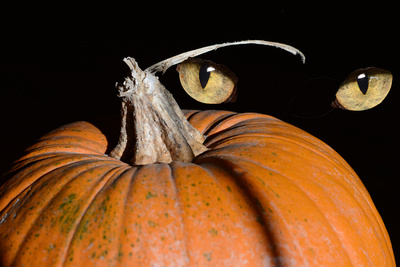
Happy Halloween!
Autumn is well upon us which means fall colors, spiders, and migrating birds. This month, and for the next several months, I am trying to improve my birding skills. I started taking a birding class and am learning so much. I always enjoy developing new skills and learning something new. My photos reflect this focus. I visited Oak Canyon Nature Center in Anaheim as well as hitting some birding hot spots including Huntington Central Park, Bolsa Chica Ecological Reserve, El Dorado Park and Nature Center.
I didn't spend as much time with insects and spiders but did not pass up the opportunity if it presented itself. I guess you can't do it all - at least not all at once. I thought A 'Spider Quilt' would be fitting for the season. The patterns and colors of spiders are quite beautiful.
I can't neglect practicing art. Autumn oak leaves captured in colored pencil.
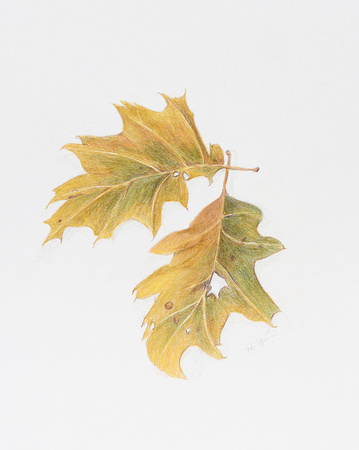
I tried a little black and white photography. It makes one focus on composition and tonality. Some are new photos and a few are old ones converted to B&W. Trying something outside one's comfort zone and stretching a little is always good!
So many birds, so little time!
My husband and I got away for a night of camping at Joshua Tree National Park. A lone coyote wandered into camp and kept me awake calling for it's pack. Fortunately they didn't join him and he eventually wandered off to leave us in quiet. No, I didn't get his photo. I was cowering in my tent in case the pack showed up. We watched the stars though the top of tent all night long. I took the opportunity to photograph the Milky Way.
Here is the full set of local wildlife:
Direct links
- Local Shots October 2014: http://kimssight.zenfolio.com/new_oct_2014
- Joshua Tree including night shots October 2014: http://kimssight.zenfolio.com/jtnp_oct_2014
Want to explore more?
- Local Shots September 2014: http://kimssight.zenfolio.com/new_sep_2014
Highlights:
I discovered Block Prints with ink and paint. An original drawing is transferred to a block. It is hand cut and hand inked. After printing on mixed media paper, watercolor, acrylic,or ink highlights are applied and each print is signed. The hand inking and painting process makes each print unique. These two are inspired by the petroglyphs in Little Petroglyph Canyon at China Lake. The second has an added influence of my cats and I call Broken China Lake.
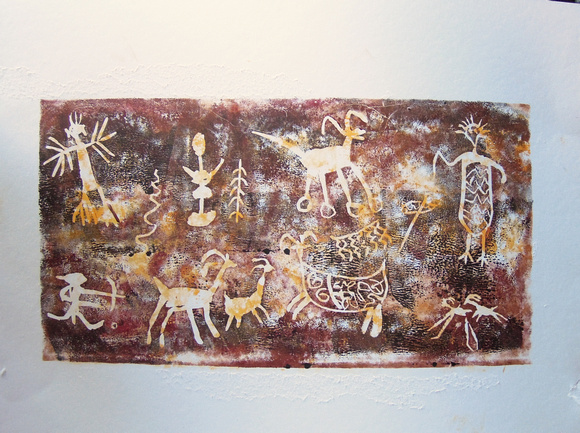 Petroglyphs from China LakeBlock Print
Petroglyphs from China LakeBlock Print
Ink and Acrylic
Bristol 11" x 14" 96 lb.
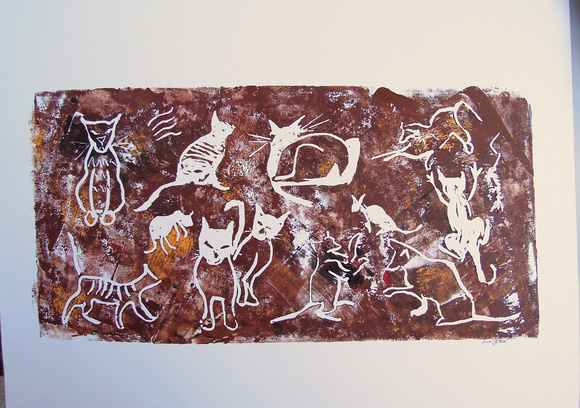 Catroglyphs from Broken China LakeBlock Print
Catroglyphs from Broken China LakeBlock Print
Ink and Acrylic
Bristol 11" x 14" 96 lb.
I thoroughly enjoyed a trip to downtown LA to see hundreds of Vaux's Swifts flying into a chimney to roost for the night. I put together a little video to try and capture the excitement.
Movie: Vaux's Swifts in Downtown LA
An Allen's Hummingbird gave me a raspberry, I was bugged a little, and there was the usual bull(frog)
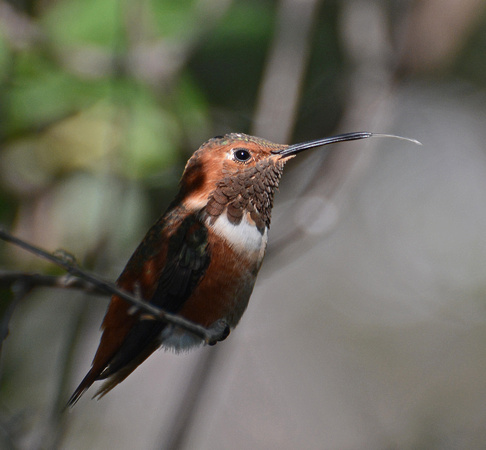 Allen's Hummingbird - Selasphorus sasinOrder: APODIFORMES - Swifts and Hummingbirds
Allen's Hummingbird - Selasphorus sasinOrder: APODIFORMES - Swifts and Hummingbirds
Family: TROCHILIDAE - Hummingbirds
Common and abundant year-round. Resident.
My yard 09/07/2014
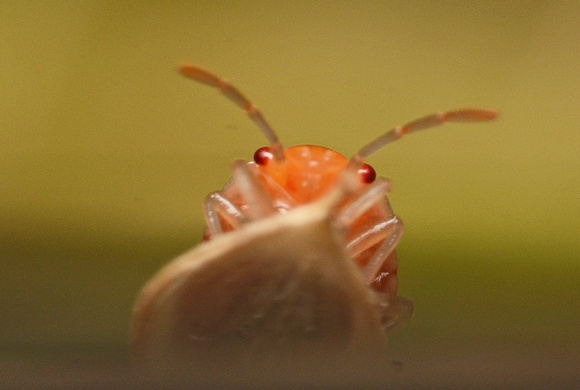 Painted bug - Bagrada hilarisFamily Pentatomidae - Stink Bugs
Painted bug - Bagrada hilarisFamily Pentatomidae - Stink Bugs
My yard 09/09/2014
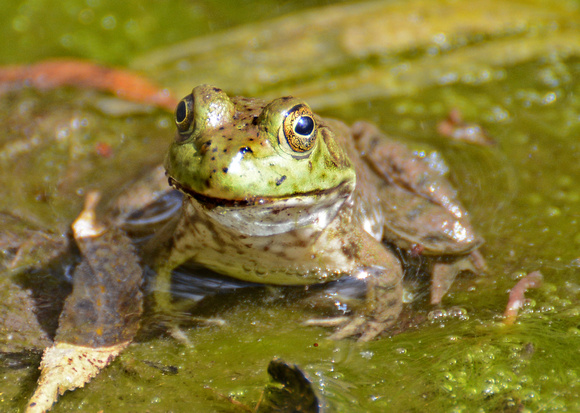 Bullfrog - Lithobates (Rana) catesbianusEl Dorado Nature Center 09/19/2014
Bullfrog - Lithobates (Rana) catesbianusEl Dorado Nature Center 09/19/2014
I found a female brown and two male widows in front of my door. I Capture a sequence where she earns her reputation. She killed her suitor, wrapped him in silk and attached him to a cricket she also killed. Another male comes in and partakes of the cricket while carefully avoiding the female. Perhaps he will be her new suitor.
There is so much more!
Want to Explore More?
- Local Shots September 2014: http://kimssight.zenfolio.com/new_sep_2014
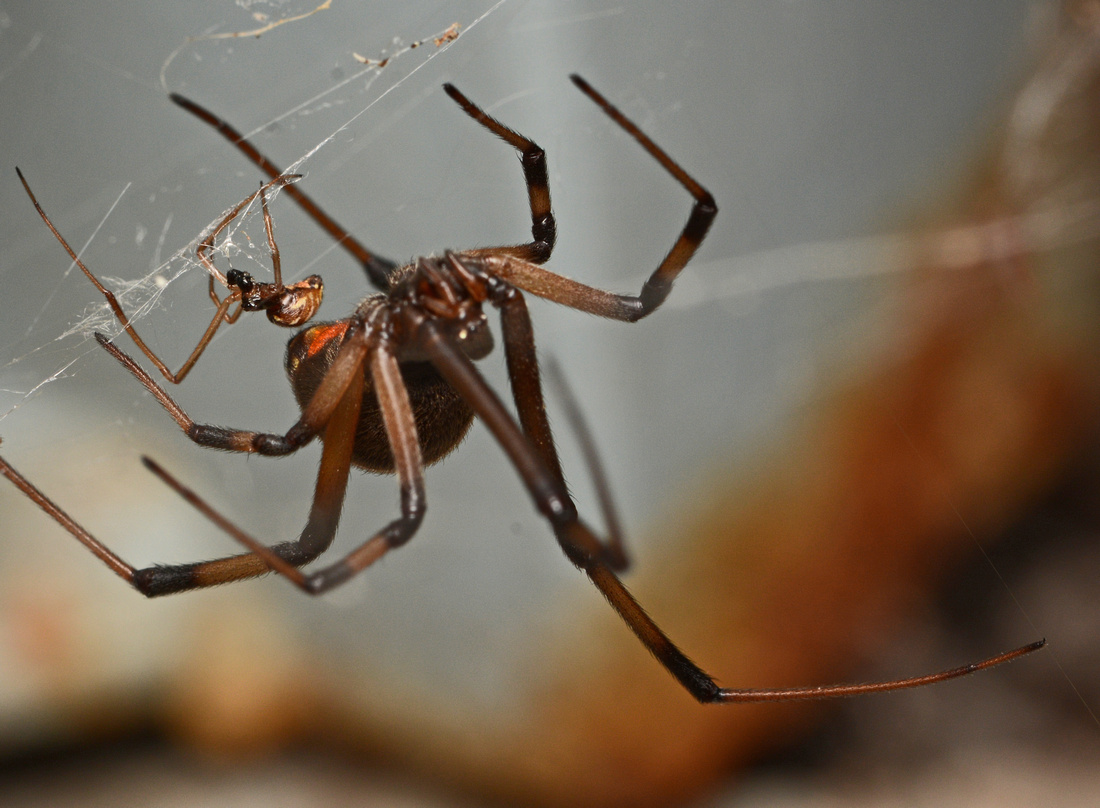 Male (small) and Female Brown widow - Latrodectus geometricus
Male (small) and Female Brown widow - Latrodectus geometricus
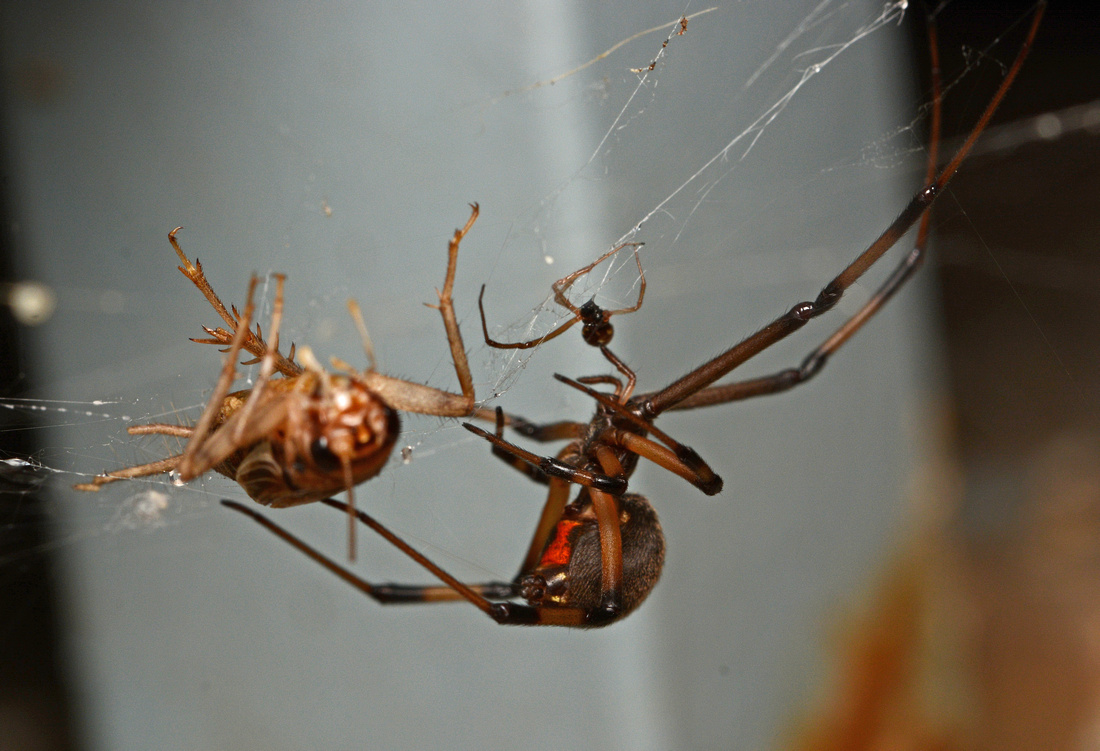 Brown widow - Latrodectus geometricus livng up to her reputation. The male is dead.
Brown widow - Latrodectus geometricus livng up to her reputation. The male is dead.
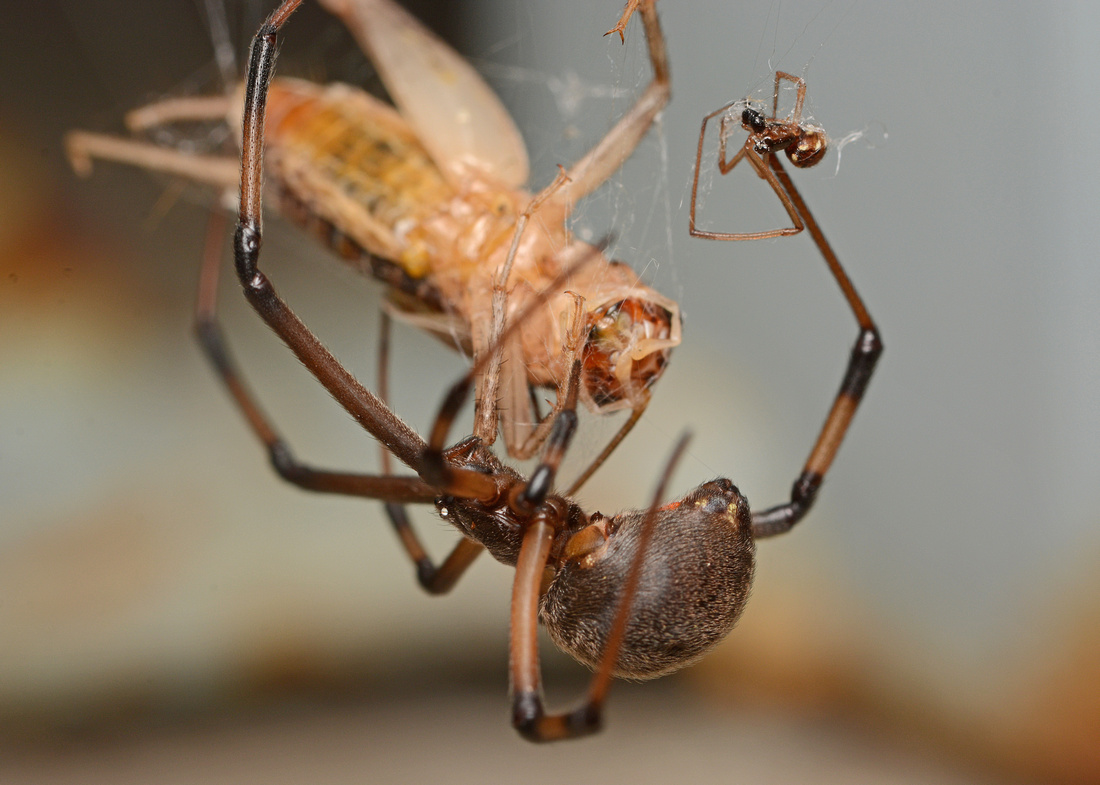 She holds onto him, partially wrapped in silk, with her claw
She holds onto him, partially wrapped in silk, with her claw
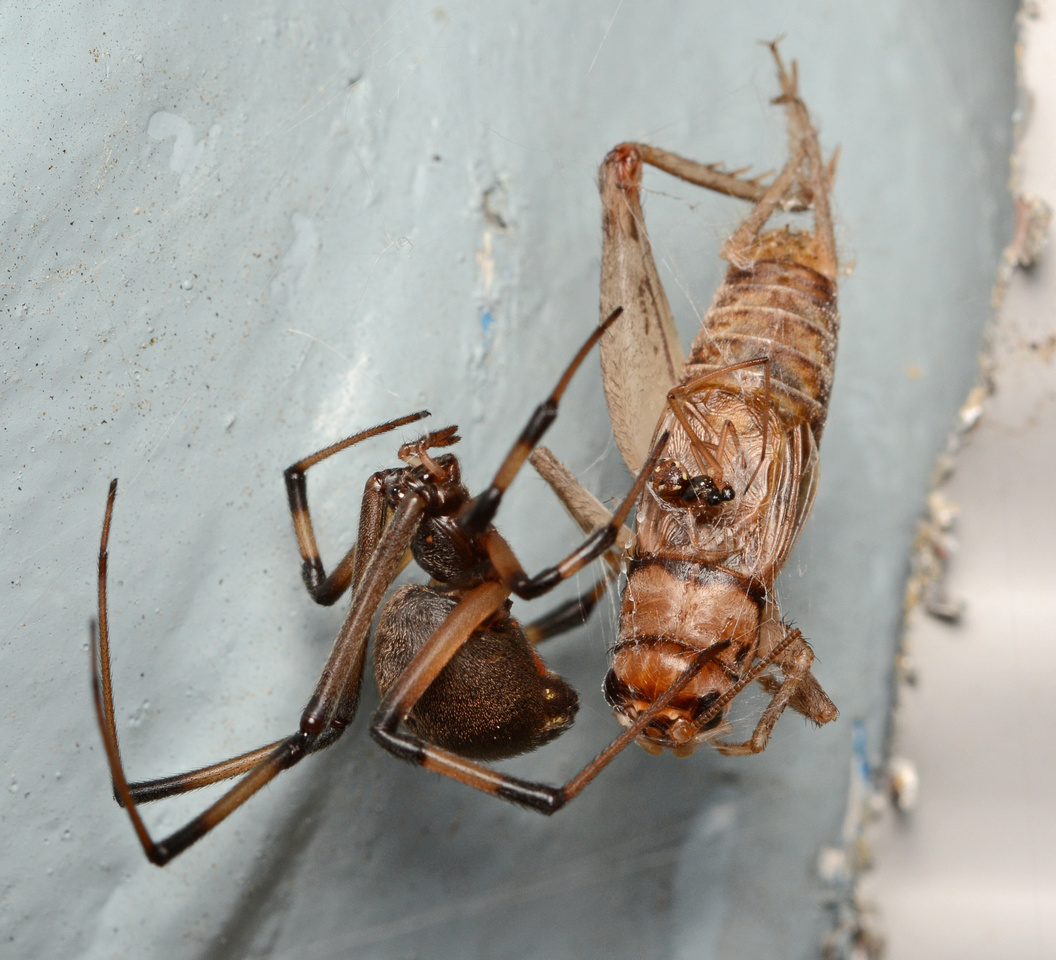 The dead male is wrapped with the cricket
The dead male is wrapped with the cricket
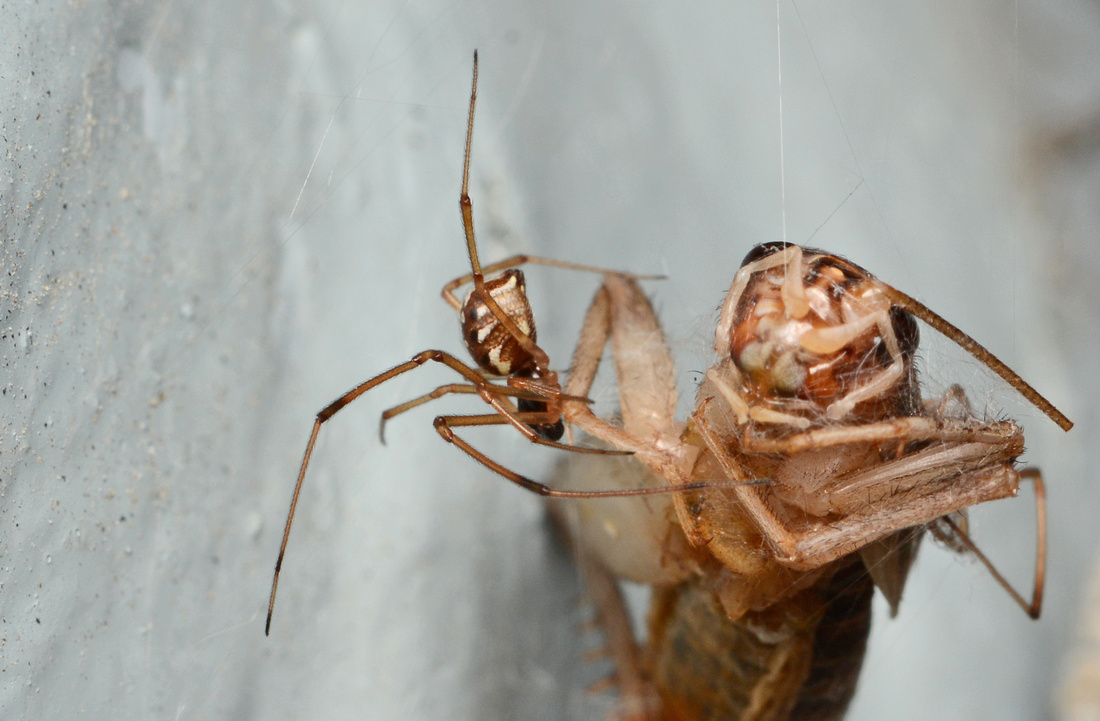 Another male comes in
Another male comes in
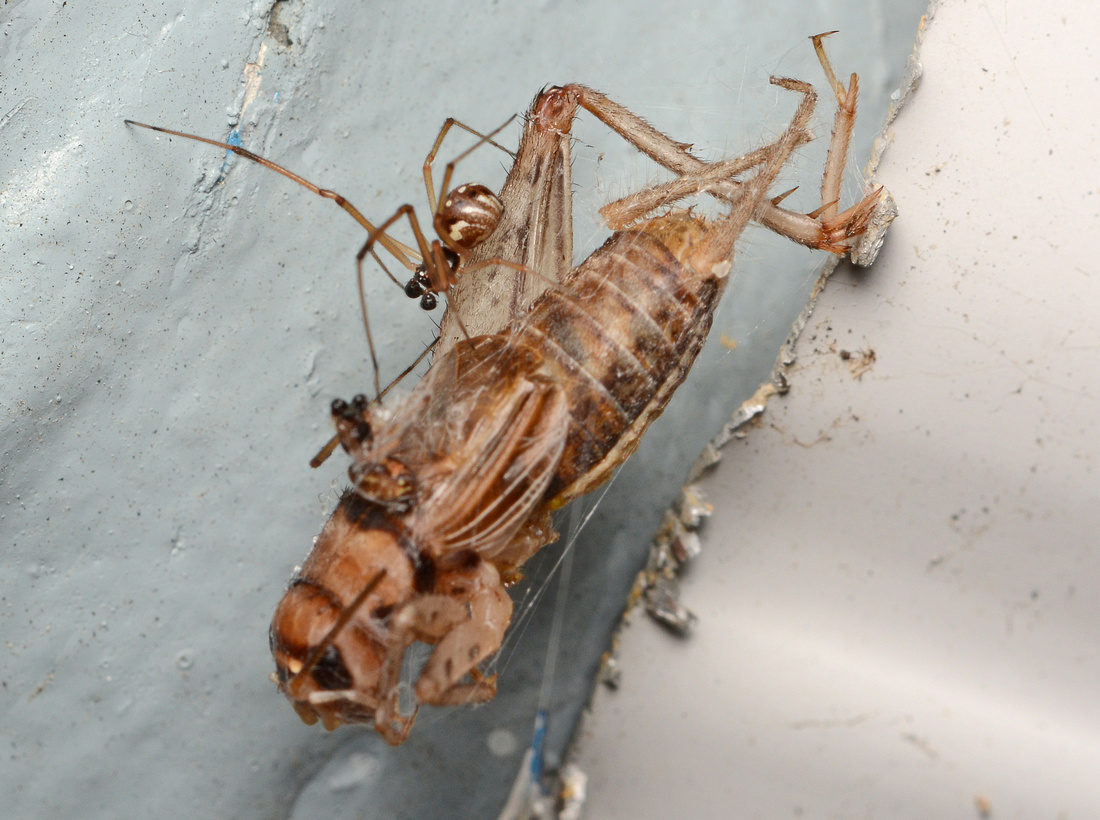 The new suitor looks at his unfortunate predecessor.
The new suitor looks at his unfortunate predecessor.
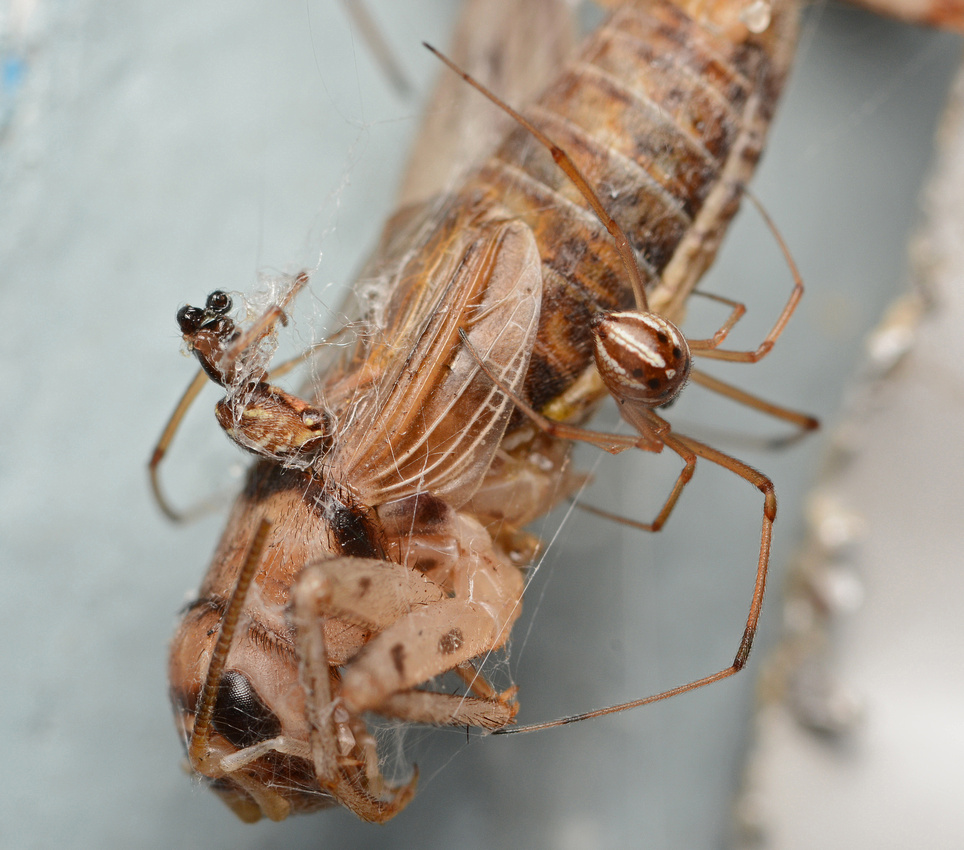 The new male dines on the cricket under the the lifeless prior suitor.
The new male dines on the cricket under the the lifeless prior suitor.
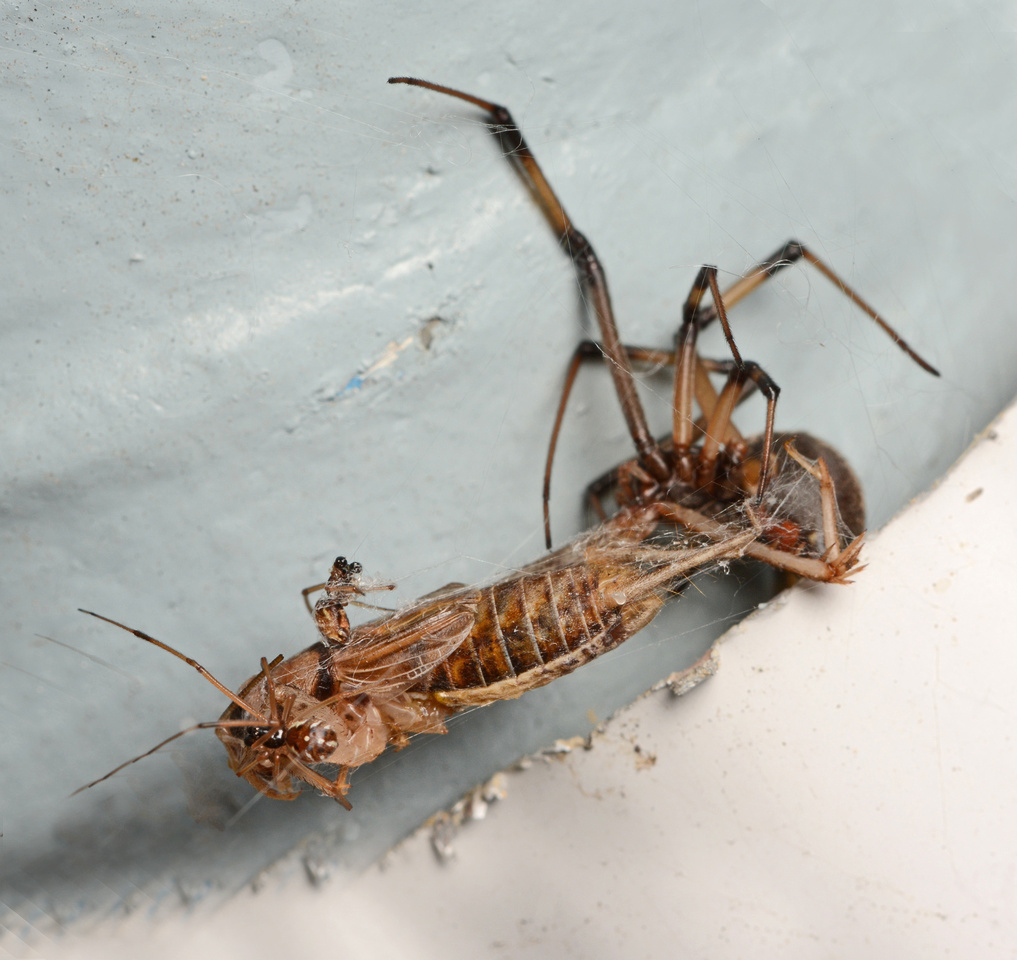 The female comes back
The female comes back
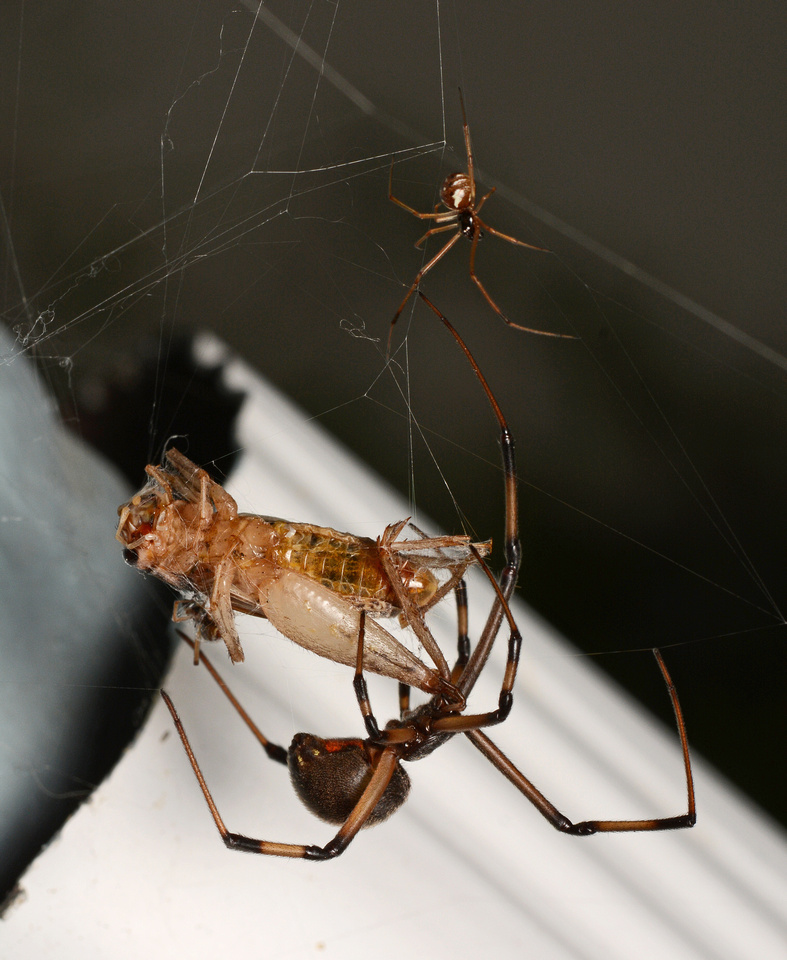 The careful male keeps his distance.
The careful male keeps his distance.
Want to explore more?
- Local Shots August 2014: http://kimssight.zenfolio.com/new_aug_2014
- Port of Long Beach night shoot: http://kimssight.zenfolio.com/port_of_lb
Highlights:
The Port of Long Beach is the second busiest port in the US (LA is number one). It is a fascinating place with super cargo ships and cranes.
Whale watching is always a treat. We saw a mother and calf humpback whale. I've seen humpbacks before but this is the first time I saw one so close to home. This was off Point Vicente.
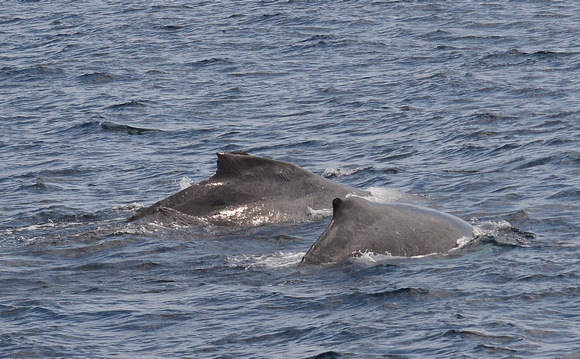 Humpback Whale - Megaptera novaeangliae (Mother and Calf)Off Point Vicente 08/19/2014
Humpback Whale - Megaptera novaeangliae (Mother and Calf)Off Point Vicente 08/19/2014
My what a big nose you have.
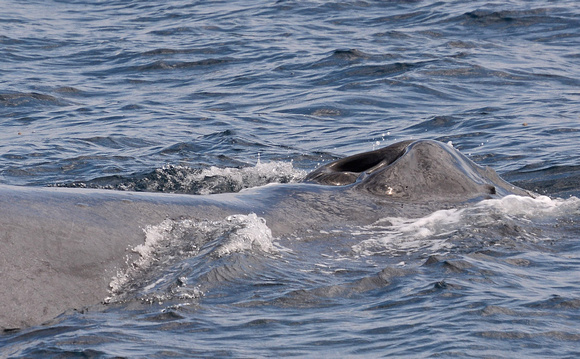 Humpback Whale - Megaptera novaeangliaeOff Point Vicente 08/19/2014
Humpback Whale - Megaptera novaeangliaeOff Point Vicente 08/19/2014
My art work ranged from colored pencil, to water color and ink, and my newly discovered acrylics. Subjects range from fruit to ships. This is Point Vicente.
There were two young Least Bitterns at El Dorado Park. They are very elusive. I love the little bits of fluff.
Bitterns love to eat dragonflies. There were several species of dragonflies at the Nature Center. These Black Saddlebags have mated and the male will do the flying while the female deposits her eggs in the water.
I saw a downy Downy. This is a young Downy Woodpecker. You can still see a little bit of fluff.
Forster's Terns were squabbling at Bolsa Chica over a spot on the post. They need to take turns.
There is so much more!
Want to Explore More?
- Local Shots August 2014: http://kimssight.zenfolio.com/new_aug_2014
- Port of Long Beach night shoot: http://kimssight.zenfolio.com/port_of_lb
Want to explore more?
- Local Shots July 2014: http://kimssight.zenfolio.com/new_july_2014
- IRC Butterfly Count : http://kimssight.zenfolio.com/irc_jul_2014
- PV Butterfly Count: http://kimssight.zenfolio.com/pv_butterfly_count_2014
- Santa Barbara Museum of Natural History: http://kimssight.zenfolio.com/santa_barbara_jul_2014
- Harlequin vs Painted bug: http://kimssight.zenfolio.com/confused_harlequin_painted
Highlights:
A highlight of the month was a Northern White Skipper trying to mate with a newly eclosed Checkered White. For those less familiar, I often have trouble telling white butterflies apart, but we expect the butterflies to know the difference. Not only are they two different species but they are from different families. The female had newly emerged (eclosed) from the chrysalis which you can see hanging on the stem. Her wings are still a bit shriveled as she is trying to dry them out for flight. Yet this persistent male skipper kept trying, of course to no avail.
Another highlight was watching hooded orioles in the nest in the plantain tree of my next door neighbor. Their were three chicks and I saw the last one leave the nest.
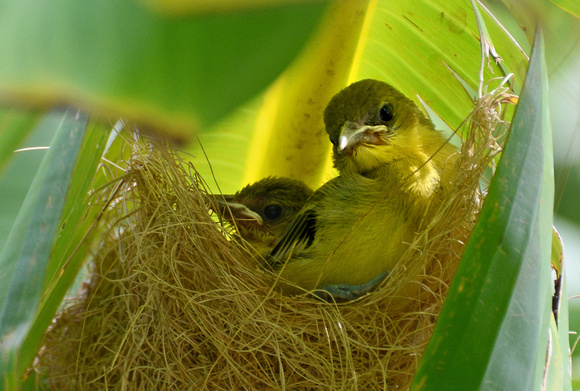 Hooded Oriole- Icterus cucullatus
Hooded Oriole- Icterus cucullatus
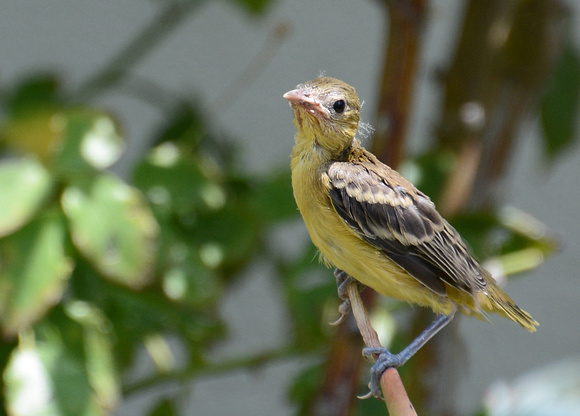 Hooded Oriole- Icterus cucullatus
Hooded Oriole- Icterus cucullatus
A White-breasted Nuthatch searches for insects.
A Western fence lizard warms himself in the sun but keeps a watchful eye on me, ready to make a run for it.
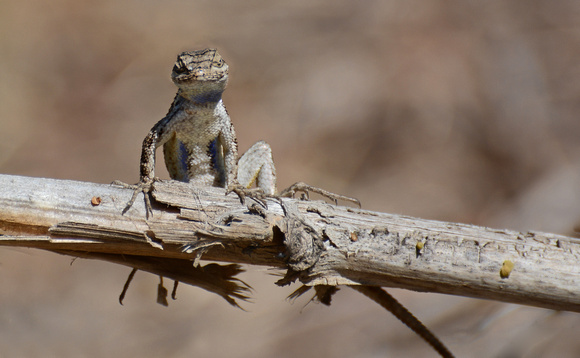 Western Fence Lizard - Sceloporus occidentalisGeorge F Canyon, Rolling Hills Estates 07/06/2014
Western Fence Lizard - Sceloporus occidentalisGeorge F Canyon, Rolling Hills Estates 07/06/2014
This black and yellow mud dauber builds its nest near the eaves of my house.
Many yellow jackets were excavating a burrow in the ground.
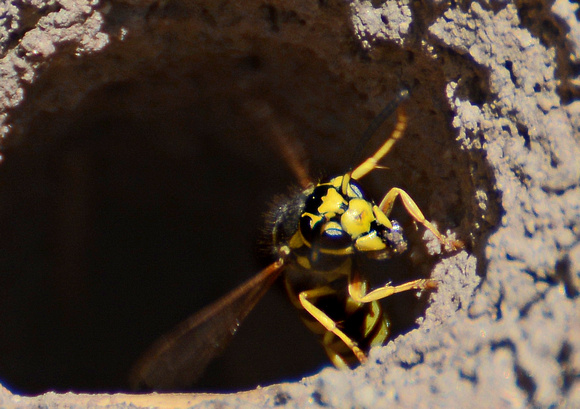 Western Yellowjacket - Vespula pensylvanicaWestern Yellowjacket - Vespula pensylvanica
Western Yellowjacket - Vespula pensylvanicaWestern Yellowjacket - Vespula pensylvanica
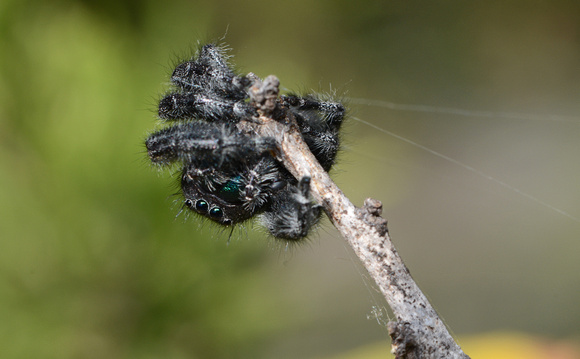 Bold jumper - Phidippus audaxFamily Salticidae - Jumping spiders
Bold jumper - Phidippus audaxFamily Salticidae - Jumping spiders
My yard 07/07/2014
Want to Explore More?
- Local Shots July 2014: http://kimssight.zenfolio.com/new_july_2014
- IRC Butterfly Count : http://kimssight.zenfolio.com/irc_jul_2014
- PV Butterfly Count: http://kimssight.zenfolio.com/pv_butterfly_count_2014
- Santa Barbara Museum of Natural History: http://kimssight.zenfolio.com/santa_barbara_jul_2014
- Harlequin vs Painted bug: http://kimssight.zenfolio.com/confused_harlequin_painted
Want to explore more?
- Local Shots June 2014: http://kimssight.zenfolio.com/new_june_2014
Highlights:
I saw some wonderful sights from my front window.
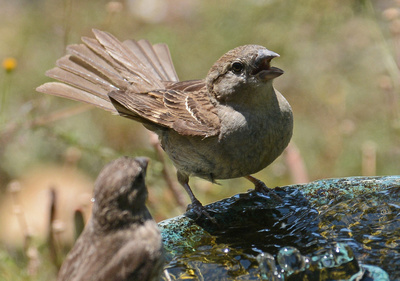 House Sparrow - Passer domesticus
House Sparrow - Passer domesticus
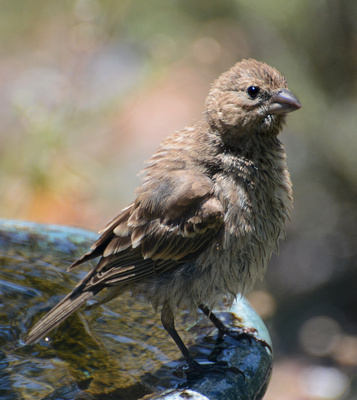 House Finch - Carpodacus mexicanus
House Finch - Carpodacus mexicanus

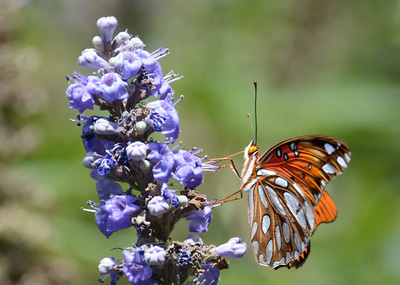 Gulf fritillary - Agraulis vanillae
Gulf fritillary - Agraulis vanillae
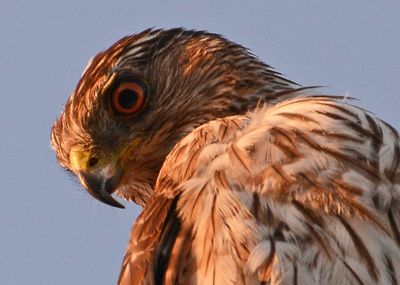 Cooper's Hawk - Accipiter cooperii . I had to get out of my chair for this one.
Cooper's Hawk - Accipiter cooperii . I had to get out of my chair for this one.
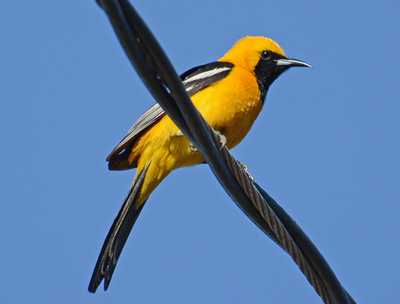 Hooded Oriel - Icterus cucullatus
Hooded Oriel - Icterus cucullatus
I picked up the colored pencils again. I hope to continue to develop my skills over the summer. Expect to see more.
I saw babies at Sims' Pond.
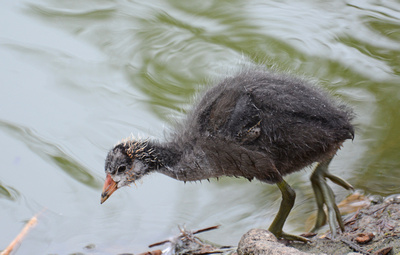 American Coot - Fulica americana (young)
American Coot - Fulica americana (young)
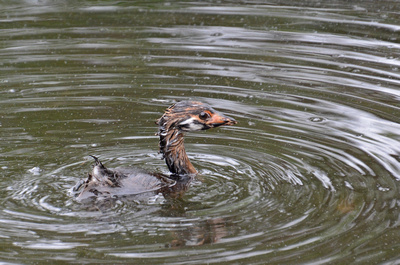 Pied-billed Grebe - Podilymbus podiceps (young)
Pied-billed Grebe - Podilymbus podiceps (young)
I saw my first Lorquin's admiral - Limenitis lorquini
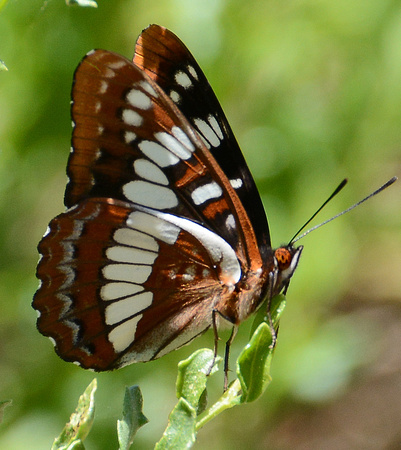 Lorquin's admiral - Limenitis lorquini
Lorquin's admiral - Limenitis lorquini
Want to Explore More?
- Local Shots June 2014: http://kimssight.zenfolio.com/new_june_2014
Want to explore more?
- Local Shots May 2014: http://kimssight.zenfolio.com/new_may_2014
- Irvine Ranch Conservancy Butterfly Count: http://kimssight.zenfolio.com/irc_may_2014
- Big Morongo and Joshua Tree: http://kimssight.zenfolio.com/jntp_may_2014
Highlights:
I got a little creative.
I saw lots of babies.
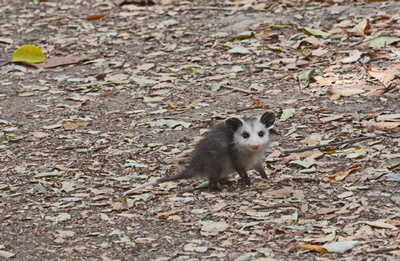 Opossum - Didelphis virginianaEl Dorado Nature Center 05/06/2014
Opossum - Didelphis virginianaEl Dorado Nature Center 05/06/2014
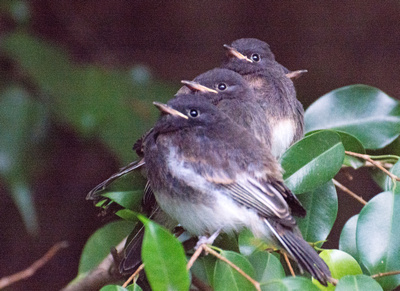 Black Phoebe - Sayornis nigricansOrder: PASSERIFORMES - Perching birds
Black Phoebe - Sayornis nigricansOrder: PASSERIFORMES - Perching birds
Family: TYRANNIDAE - Tyrant Flycatchers
Year-round residents
Juveniles
My Yard, 05/27/2014
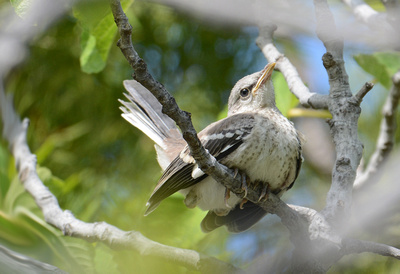 Northern Mockingbird - Mimus polyglottosOrder: PASSERIFORMES - Perching birds
Northern Mockingbird - Mimus polyglottosOrder: PASSERIFORMES - Perching birds
Family: MIMIDAE - Mockingbirds, Thrashers, and Allies
Year-round resident.
My yard 05/17/2014
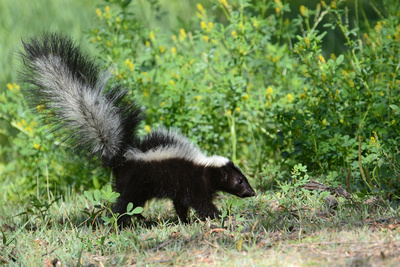 Striped skunk - Mephitis mephitisMadrona Marsh 05/31/2014
Striped skunk - Mephitis mephitisMadrona Marsh 05/31/2014
I took a day trip to the desert.
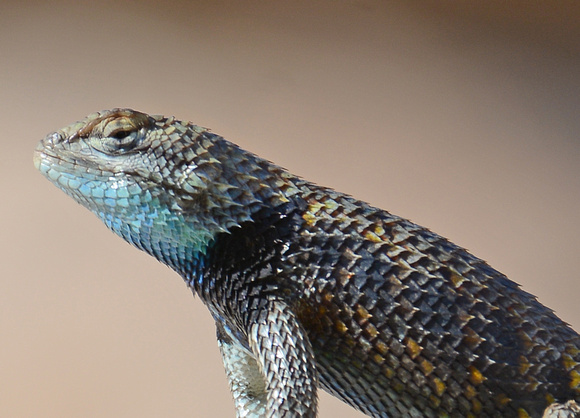 Yellow-backed Spiny Lizard - Sceloporus magister uniformisJoshua Tree 05/02/2014
Yellow-backed Spiny Lizard - Sceloporus magister uniformisJoshua Tree 05/02/2014
And I continued my insect and spider study.
Want to Explore More?
- Local Shots May 2014: http://kimssight.zenfolio.com/new_may_2014
- Irvine Ranch Conservancy Butterfly Count: http://kimssight.zenfolio.com/irc_may_2014
- Big Morongo and Joshua Tree: http://kimssight.zenfolio.com/jntp_may_2014
In addition to my usual endeavors, I began an insect study at the nature center comparing a restored native grassland to a non-native habitat. The study, along with my searching for interesting spiders for my entomology and arachnology class, I have added many new species to my site. http://kimssight.zenfolio.com/new_apr_2014
There were lots of wildflowers blooming during my monthly butterfly survey with Irvine Ranch Conservancy and of course a few butterflies. http://kimssight.zenfolio.com/irc_apr_2014
A special trips was to the Hopper Mountain National Wildlife Reserve and the Condor Recovery Program. Yes, I saw condors! http://kimssight.zenfolio.com/condors_apr_2014
I welcome corrections or ID's I am missing.
Highlights:
I do a regular bird survey at Sims' Pond Biological Reserve which is home to coyotes. They are never a problem for us and I rarely see them. Two people doing mosquito control just before we got there were walking in opposite directions around the pond and must have flushed him out. I got a few good shots.
I took a brief trip to Rosamond, CA and didn't take many pictures but I saw a male peacock displaying for a female. She was not impressed. I caught images of the courtship.
Wildflowers are blooming. When we count butterflies we also take note of what plants are blooming. It takes a lot longer in spring. We have a wonderfully knowledgeable person with us for plants. I have learned some but have a long ways to go.
Condors are magnificent birds. Here is one being pursued by a raven. A small flock of ravens were harassing to condor. The scenery is just stunning. We saw 14 condors all at the same time and suspect there were about 18 to 20 in the area.
One of the interesting insects we found during our insect study was a Camel Cricket. They are nocturnal and like dark moist places. We set out pitfall traps and collected them the next morning. Anything that crawls by at night drops in. We found quite a few critters including this one. We released all our little captives back into the field.
Want to explore the full series?
- Local shots of birds and bugs http://kimssight.zenfolio.com/new_apr_2014
- Irvine Ranch Conservancy butterfly count http://kimssight.zenfolio.com/irc_apr_2014
- Hopper Mountain National Wildlife Reserve Condor Recovery Program http://kimssight.zenfolio.com/condors_apr_2014
There were lots of butterflies seen during my monthly butterfly survey with Irvine Ranch Conservancy, although most were duskywing skippers and I didn't get many shots. I saw my first Bramble Hairstreak - Callophrys erplexa! http://kimssight.zenfolio.com/irc_mar_2014
I found a great example of parasitoids in my own yard. Check it out with the explanation. http://kimssight.zenfolio.com/parasitoid
For sweeping landscapes, vastness, rocks, and color you can't beat Death Valley. Scenic shots are a departure from my critter cam, but I did find pupfish spawning. http://kimssight.zenfolio.com/death_valley
And of course there is a cat photo just for fun.
As always, I welcome corrections or ID's I am missing.
Highlights:
Death Valley has beautiful colors in the rocks. The vastness cannot be captured in pictures. It was very dry and barren. There was some water but it was very salty from the minerals washed down from the mountains. I was there too early for the wildflowers.
 Abandoned Borax Mine, Death Valley
Abandoned Borax Mine, Death Valley
I enjoyed watching a pair of Bushtits making a nest at the El Dorado Nature Center. They use spiderwebs and leaves and then add downy bits of plant fluff and feathers. They would alternately, and occasionally together, enter the nest from the top with fluff in their beaks and I would watch the nest wriggle about. I also saw them at nesting Sims' Pond Biological Reserve during my bi-monthly bird survey.
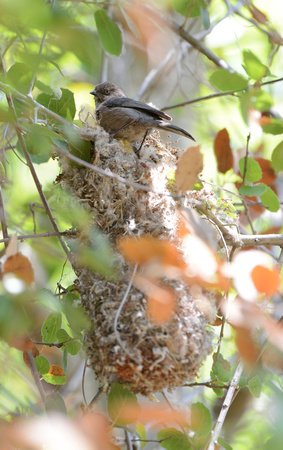 Bushtit - Psaltriparus minimus building a nest
Bushtit - Psaltriparus minimus building a nest
Either they are plentiful or I was just looking for them this month, but whatever the case, I saw some jumping spiders this month. I found them at South Coast Botanical Garden, Jack Dunster Marine Reserve, and my own yard. They are always a favorite as they are some of the cutest spiders!
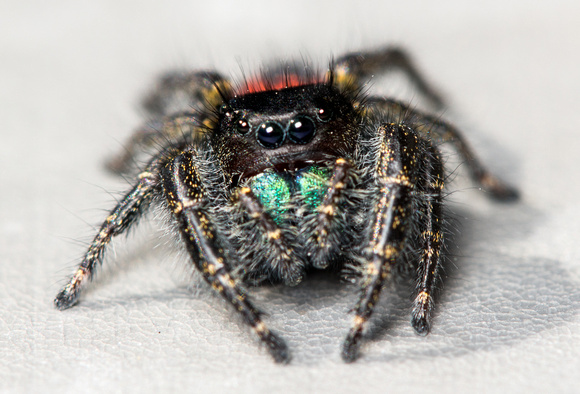 Johnson jumper - Phidippus johnsoni (female)
Johnson jumper - Phidippus johnsoni (female)
This Cabbage white butterfly chrysalis is a victim of parasitoids. You can see the hole where a fly larva crawled out and the smaller larvae of parasitic wasps. I added a section about it on my website.
 Cabbage white (Pieris rapae) pupa with hole from emerging parasitoids and parasitoid larvae
Cabbage white (Pieris rapae) pupa with hole from emerging parasitoids and parasitoid larvae
What can I say, I'm a cat lover.
Want to explore the full series?
- Local shots of birds and bugs http://kimssight.zenfolio.com/new_mar_2014
- Irvine Ranch Conservancy butterfly count http://kimssight.zenfolio.com/irc_mar_2014
- Parasitoids explanation. http://kimssight.zenfolio.com/parasitoid
- Death Valley http://kimssight.zenfolio.com/death_valley
]]>
There wasn't much happening on my monthly butterfly count with Irvine Ranch Conservancy, oh so dry, but I saw some interesting wildflowers starting to appear http://kimssight.zenfolio.com/irc_feb_2014. Also, I do a bird survey of Sims' Pond each month in conjunction with El Dorado Aububon and Los Cerritos Wetlands Stewards. The report I wrote last year is now on-line here: link to the pdf.
As always, I welcome corrections or ID's I am missing.
Highlights:
A little Photoshop fun here. I also have a couple of my colored pencil drawings in the full set.
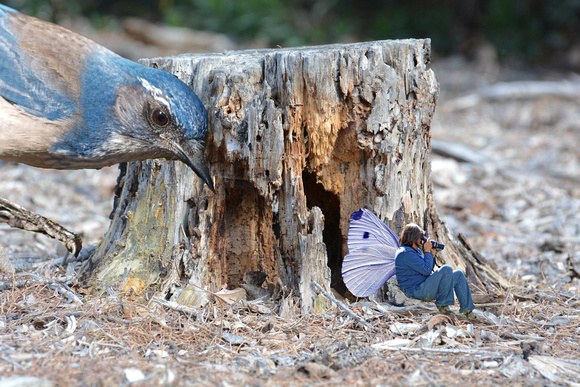 Portrait of the nature photographer
Portrait of the nature photographer
Birds are starting to get mating plumage. I saw shorebirds at Colorado Lagoon and the little tweety birds at El Dorado Nature Center and in my own yard. With help from friends, I ID'd my first Vireo. Those little birds give me a hard time!
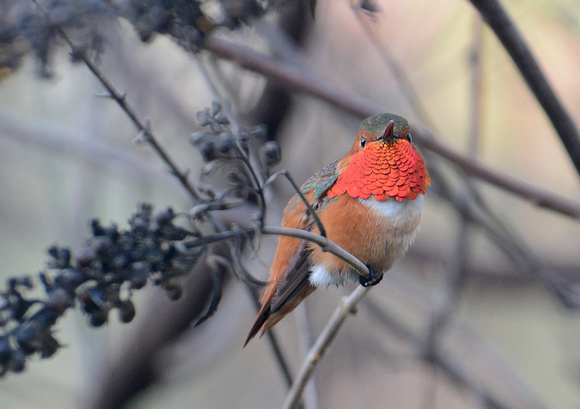 Rufous Hummingbird - Selasphorus rufus
Rufous Hummingbird - Selasphorus rufus
I am showing a charismatic insect here. I think they are all fascinating. In the full set this month, in addition to several from my yard, I have a few from Madrona Marsh (which was so very dry) and South Coast Botanic Gardens. The mating wasps are from El Dorado Nature Center. They were an interesting mystery to ID because they were recycling mud dauber nests to make them their own.
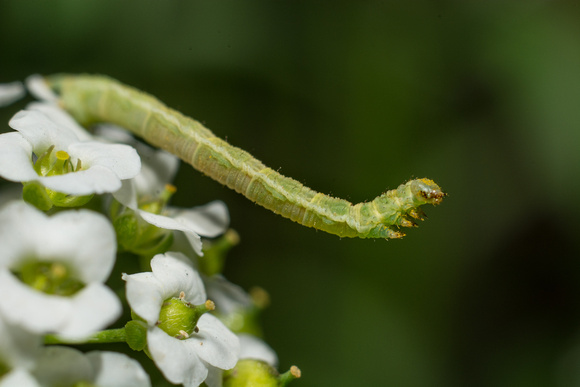 Geometrid looper - Unidentified sp.
Geometrid looper - Unidentified sp.
Oh the joy of spiders. This spider was collected by a fellow student and is new to my site. I also found a Wall Spider, which is new for me, at Shipley Nature Center in Huntington Beach. I capture an example of kleptoparasitism where freeloader flies are stealing the prey from the Green Lynx spider. These flies really annoy the spider. In one shot you can see the fly sitting on the spider's head. The others are shot in the field in my various wanderings.
 Orb weaver - Araneus montereyensisFamily Araneidae - Orb weavers
Orb weaver - Araneus montereyensisFamily Araneidae - Orb weavers
I found a few interesting Marine Invertebrates at Colorado Lagoon. The moon jellies were there in abundance on one visit but had disappeared by the next.
Want to explore the full series?
Local shots of birds and bugs http://kimssight.zenfolio.com/new_feb_2014
]]>
I went birding at El Dorado Park and Nature Center. One of the highlights was a view of a Great Horned Owl.
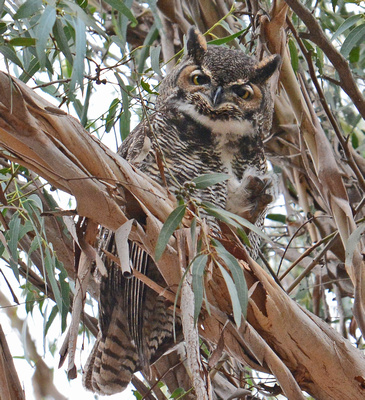 Great Horned Owl - Bubo virginianusEl Dorado Nature Center 01/24/2014
Great Horned Owl - Bubo virginianusEl Dorado Nature Center 01/24/2014
Although I have driven past Colorado Lagoon, I had not spent much time there. This month I was pleasantly surprised by the diversity of birds including shorebirds such as the Black-bellied Plover.
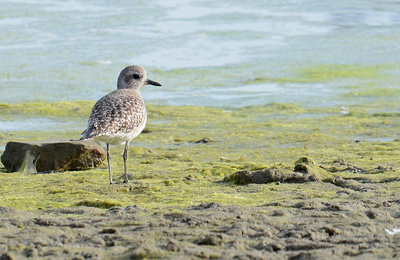 Black-bellied Plover - Pluvialis squatarolaColorado Lagoon, Long Beach 01/26/2014
Black-bellied Plover - Pluvialis squatarolaColorado Lagoon, Long Beach 01/26/2014
Bolsa China is always amazing for close up encounters with birds. This Brown Pelican put on quite a show diving for fish.
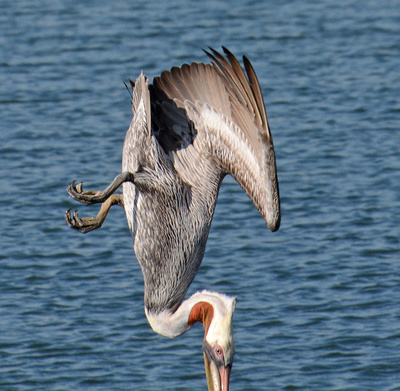 Brown Pelican - Pelecanus occidentalisBolsa Chica 01/20/2014
Brown Pelican - Pelecanus occidentalisBolsa Chica 01/20/2014
I borrowed a macro lens from a friend and found some cooperative subjects. I hope we get a break from the terribly dry winter and that we get some rain soon so our insect friends thrive in Spring.
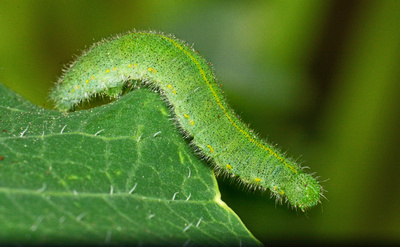 Cabbage white - Pieris rapaeMy yard, 01/19/2014
Cabbage white - Pieris rapaeMy yard, 01/19/2014
But the highlight of the month for me was our annual trip to see the elephant seals in San Simeon.
Want to explore the full series?
Local shots of birds and bugs http://kimssight.zenfolio.com/new_jan_2014
Elephant Seals http://kimssight.zenfolio.com/san_simeon_2014
]]>
I got a new Nikon D7100 camera which focuses faster, works better in low light, and takes a much sharper image than my prior camera. Between the new camera and winter migration I went a little wild shooting birds and particularly trying to shoot birds in flight. Most of the month was spent close to home
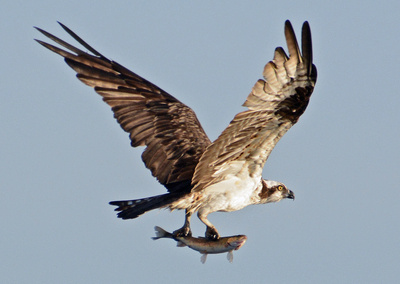 Osprey - Pandion haliaetusOrder: ACCIPITRIFORMES
Osprey - Pandion haliaetusOrder: ACCIPITRIFORMES
Family: PANDIONIDAE - Osprey
El Dorado Park, Area III
12/08/2013

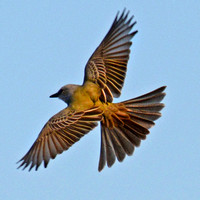 Cassin's Kingbird - Tyrannus vociferansOrder: PASSERIFORMES - Perching birds
Cassin's Kingbird - Tyrannus vociferansOrder: PASSERIFORMES - Perching birds
Family: TYRANNIDAE - Tyrant Flycatchers
El Dorado Park Area III 12/09/2013
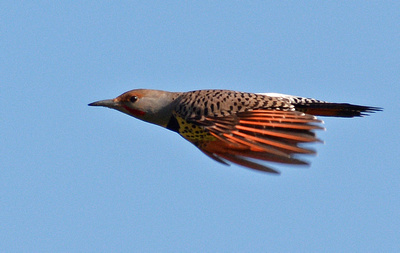 Northern Flicker (red shafted) - Colaptes auratusOrder: PICIFORMES - Woodpeckers and Allies
Northern Flicker (red shafted) - Colaptes auratusOrder: PICIFORMES - Woodpeckers and Allies
Family: PICIDAE
Migrant Sept thru Mar
El Dorado Park Area II 12/20/2013
I found Eared Grebes and Western Grebes diving for fish.
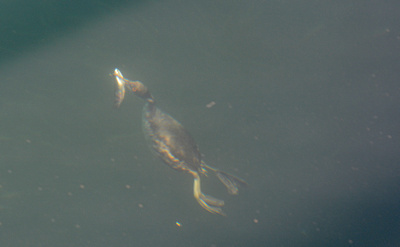 Eared Grebe - Podiceps nigricollisOrder: PODICIPEDIFORMES - Grebes
Eared Grebe - Podiceps nigricollisOrder: PODICIPEDIFORMES - Grebes
Family: PODICIPEDIDAE
Visitor November to March
Jack Dunster Marine Reserve 12/04/2013
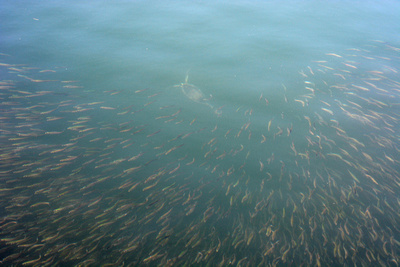 Eared Grebe - Podiceps nigricollisOrder: PODICIPEDIFORMES - Grebes
Eared Grebe - Podiceps nigricollisOrder: PODICIPEDIFORMES - Grebes
Family: PODICIPEDIDAE
Visitor November to March
Jack Dunster Marine Reserve 12/04/2013
I photographed a few birds new to my site including American Pipit, White-throated Swift, Ross's Goose, a Pink-sided variation of a Dark-eyed Junco and a leucistic (white not albino) Black-crowned Night Heron. In the image below you can see Black-crowned Night Herons from left to right a juvenile, the leucistic adult, a young adult, and a normal adult. Leucism is caused by defects in pigment cells during development.
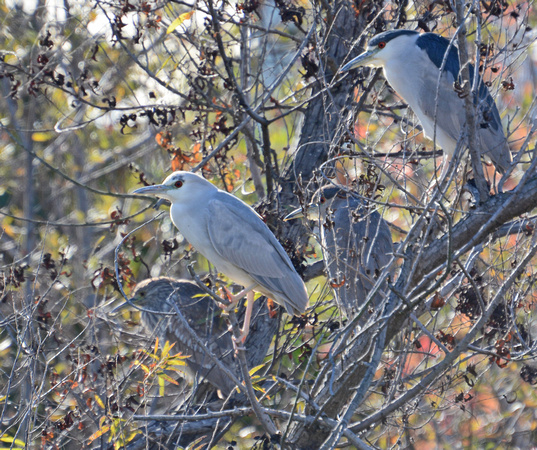 Black-crowned Night-Heron - Nycticorax nycticorax (Leucistic)Order: CICONIIFORMES - Herons and Allies
Black-crowned Night-Heron - Nycticorax nycticorax (Leucistic)Order: CICONIIFORMES - Herons and Allies
Family: ARDEIDAE - Bitterns, Herons, and Allies
This bird is likely a rare color morph where pigment cells are damaged during development causing the pale coloration (Leucism).
Sims' pond 12/11/2013
I participated in the Annual Audubon Christmas Bird Count. My area covered the Los Cerritos Wetlands and Gum Grove Park.
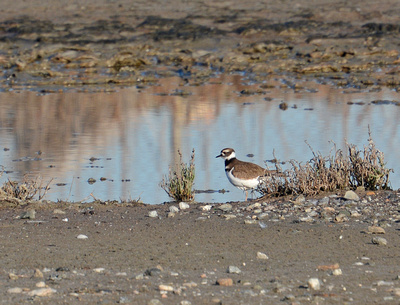 Killdeer - Catoptrophorus semipalmatusKilldeer - Catoptrophorus semipalmatus
Killdeer - Catoptrophorus semipalmatusKilldeer - Catoptrophorus semipalmatus
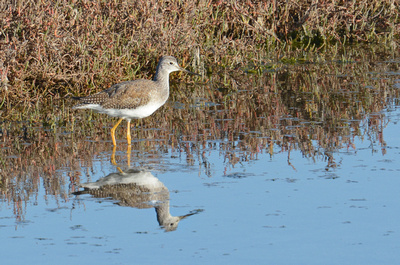 Greater Yellowlegs - Tringa melanoleucaGreater Yellowlegs - Tringa melanoleuca
Greater Yellowlegs - Tringa melanoleucaGreater Yellowlegs - Tringa melanoleuca
In my insect and spider world, I played with my macro lens and took a few photos in my yard where I added a new Ichneumon wasp (Temelucha grapholithae) to my list. On the bird count I saw Monarch butterflies overwintering at Gum Grove Park. Somewhat common in my yard, and kinda cool, is the Stripe-eyed flower fly (Eristalinus taeniops).
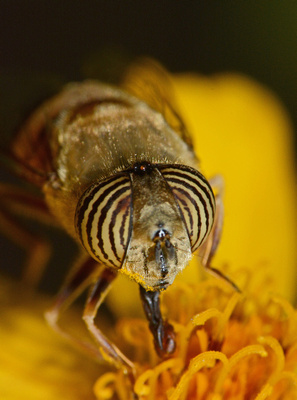 Stripe-eyed flower fly - Eristalinus taeniopsFamily Syrphidae - Flower Flies (a.k.a. Hover Flies)
Stripe-eyed flower fly - Eristalinus taeniopsFamily Syrphidae - Flower Flies (a.k.a. Hover Flies)
Non-native. Bee mimic
12/11/2013
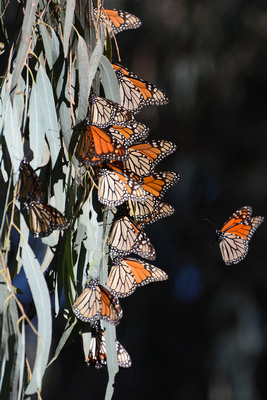 Monarch - Danaus plexippusFamily Nymphalidae - Brushfooted Butterflies
Monarch - Danaus plexippusFamily Nymphalidae - Brushfooted Butterflies
Gum Grove Park 12/14/2013
The month culminated in a camping trip to Anza-Borrego Desert State Park where I visited the slot canyons, wind caves, and shot the night sky with the International Space Station.
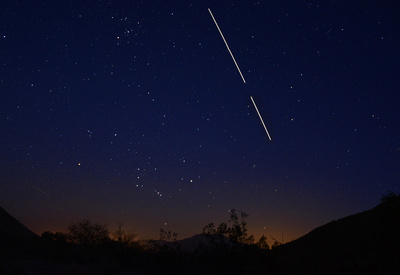 The International Space StationDec 28; 16:51 facing SSE. Two images combined.
The International Space StationDec 28; 16:51 facing SSE. Two images combined.
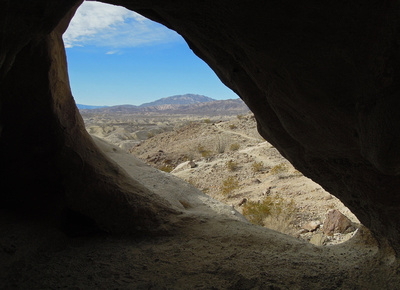 View from the Wind Caves
View from the Wind Caves
Want to explore the full series?
Local shots of birds and bugs http://kimssight.zenfolio.com/new_dec_2013
Christmas Bird Count at Los Cerritos Wetlands http://kimssight.zenfolio.com/cbc_2013
Anza-Borrego Desert State Park http://kimssight.zenfolio.com/anza-borrego_dec_2013
]]>
|
“Once more I realized to what an extent earthly happiness is made to the measure of man. It is not a rare bird which we must pursue at one moment in heaven, at the next in our minds. Happiness is a domestic bird found in our own courtyards.” ― Nikos Kazantzakis |
We place a great value on the unique and the rare. Our culture says to stand out. Only the best will do. We watch Xtreme Sports. There can only be one winner. Go big or go home. Variety is the spice of life.
But what of the ‘common’ variety, that which is usual, everyday. While I laud excellence and I too am drawn to the unusual, bizzare, or unique, we often consider the common unimpressive and of little value. They are a dime a dozen. It is rare that we take the time to admire and appreciate the common. However, much of what is ‘common’ can be exquisitely beautiful, and needs to be valued highly. Sometimes something may be common in one region but extremely rare in another. Other times, something once common has become rare, and only then do we realize its value.
We should teach our children to take the time to look at and appreciate the common things. The common things are what surround us. Many of these common things will be rare or gone when our children grow up. They will be telling their children and grandchildren about them nostalgically. If we value the common, perhaps we will work to keep them common. To quote Joni Mitchell, "Don't it always seem to go, that you don't know what you've got 'til it's gone."
How many of these 'Common' treasures have you seen? More importantly, how many do you want to see in the future?
|
Common Bottlenose Dolphin, Common Buckeye, Common Fiddleneck, |
Le damos un gran valor a lo único y lo raro. Nuestra cultura nos obliga a destacarnos. Sólo lo mejor tiene valor. Miramos deportes Xtremos. Sólo puede haber un ganador. Vence o vuelve a casa. La variedad es la sal de la vida.
Pero ¿qué pasa con la variedad 'común', lo que es habitual y de todos los días?. Mientras alabamos la excelencia y también nos atrae lo inusual, extraño, o único, a veces consideramos lo común como nada impresionante y de poco valor. Más barato por docena. Es poco usual que nos tomemos el tiempo para admirar y apreciar lo común. Sin embargo, gran parte de lo que es 'común' puede ser exquisitamente bello y debe ser altamente valorada. A veces algo puede ser común en una región pero es raro en otra. Otras veces, algo que fue común una vez es raro ahora, y solamente entonces nos damos cuenta de su valor.
Deberíamos enseñar a nuestros hijos a tomar el tiempo para mirar y admirar las cosas comunes, las cosas que nos rodean. Muchas de estas cosas comunes serán raras o habrán desaparecido cuando nuestros hijos hayan crecido. Ellos les hablarán de ellas a sus hijos y nietos con nostalgia. Si valoramos lo común, tal vez nos esforzaremos para preservar lo común. Como dijo Joni Mitchell, "¿No parece siempre que uno no sabe lo que tiene hasta que lo pierde?."
¿Cuántos de estos tesoros comunes has visto ? Más importante aún, ¿Cuántos quieres ver en el futuro?
]]>
Creature Comforts (no translation this time)
 I woke up feeling sluggish this morning. I guess I was a bit of night owl last night or maybe just drunk as a skunk.
I woke up feeling sluggish this morning. I guess I was a bit of night owl last night or maybe just drunk as a skunk.I cleared the frog out of my throat and looked at my crow's feet in the mirror. I made breakfast but ate like a bird. I made a beeline for the door ready to start the day.
I had to get my ducks in a row. Recently my old friends seem to be dropping like flies. Someone put a bug in my ear and I decided to visit an old friend I hadn't seen in a coon's age.
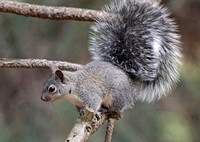 I thought I would kill two birds with one stone, so on my way, I stopped at the bank to squirrel away some money. I thought something was fishy.
I thought I would kill two birds with one stone, so on my way, I stopped at the bank to squirrel away some money. I thought something was fishy.
I didn't want to be a scaredy-cat, but I thought someone was watching me like a hawk. I felt like a sitting duck. So I turned tail and went on my way.
My friend lived five minutes away as the crow flies. Some thought she was a cold fish and she was the black sheep of the family, but we had been friends since she was knee high to a grasshopper. She was proud as a peacock that she had ratted on some snake at work. I would like to have been a fly on the wall to see her, that queen bee, with a bee in her bonnet.

Just for a lark, I decided to badger her for details. She was really bugged but we had a whale of a time.
Later, I went home for a cat nap. I felt sick as a dog, but I guess that is just the nature of the beast.
]]>
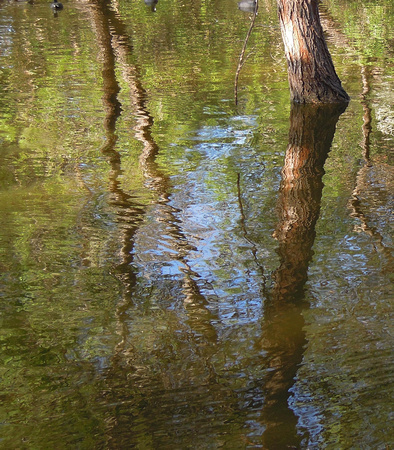
I went to my local nature center today and found my spirits lifted by sharing kind words with the people I met and appreciating the beauty of nature. Nature has a healing effect on the soul. I share my photos and love of nature to perhaps bring a smile to others.
I am deeply disturbed by many sad and troubling events. The bombing in Boston is all the news this week. But let us not forget all the bombings going on around the world, wars, famine, homelessness, disease, mental illness. Add to that global climate change and habitat destruction on massive scales and my heart starts to sink.
My son posted on facebook about strife in Syria, "I am sure, however, that many of us feel we wish we could do more to help. Red Cross donations seem like band-aids though. What to do except feel bad about it?" I am without an answer and I feel bad that I have no answer. But feeling bad is not an answer and solves nothing. Feeling bad leads to hopelessness, helplessness, anger, and vengeance.
All I can suggest is that we each hold compassion in our hearts. Bring compassion, kindness, and respect to those we meet (including ourselves). Start with our own small circle of influence. If we can do that and spread it with the ease of social media, maybe we can tone down the rhetoric, anger, and fear. Lead the way to peace (both inner and global) and face the world with more clear vision and perhaps find more meaningful solutions.
Take a walk in nature for its healing power to your soul, breathe deeply, and bring a smile to someone you love and to someone who needs it.
=========================================================
La Naturaleza Ayuda a Curar el Espíritu
Hoy fui a mi parque natural más cercano y descrubrí que mis ánimos habían sido levantados por haber compartido palabras amables con otras personas y por haber apreciado la belleza de la naturaleza. La naturaleza tiene un efecto curativo. Comparto mis fótos y mi amor a la naturaleza para provocarle, quizás, una sonrisa a alguien.
Yo estoy profundamente preocupada por muchos eventos tristes y preocupantes. El bombardeo en Boston está en todas las noticias esta semana. Pero no nos olvidemos de todos los bombardeos que occuren alrededor del mundo, guerras, hambre, personas sin hogares, enfermedades del cuerpo y la mente. Añadan a eso el cambio climático y la destrucción de hábitats en una escala masiva y se me parte el corazón.
Mi hijo escribó en Facebook sobre el conflicto en Siria: "Estoy seguro, sin embargo, que muchos de nosotros desearíamos poder hacer más para ayudarlos. Las donaciones de la Cruz Roja parecen curitas. ¿Qué hacer excepto sentirse mal al respecto?" Estoy sin una respuesta y me siento mal por no tener ninguna respuesta. Pero sentirse mal no es respuesta y no resuelve nada. Sentirse mal crea la desesperanza, la impotencia, la ira y la venganza.
Todo lo puedo sugerir es que cada uno de nosotros tenga compasión en nuestros corazones; darle compasión, amabilidad y respeto a toda persona que encontramos (incluyéndonos a nosotros mismos). Comencemos con nuestro pequeño círculo de influencia. Si podemos hacer esto y aumentarlo con facilidad a través de los medios sociales de comunicación, tal vez podamos bajar el tono de la retórica, la ira y el miedo. Dirijámonos a la paz (interior y global) y enfrentemos el mundo con una visión más clara y quizás encontraremos soluciones más significativas.
Da un paseo por la naturaleza para curar sus ánimos, respira profundamente, y sonríele a alguien que tú amas y alguien que la necesita.
]]>
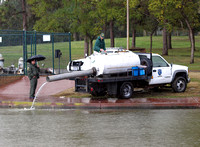
I knew that the ponds in the park were stocked with fish, but never had thought about it, much less had seen it, until recently. It is an interesting dynamic and spectacle to behold. The California Department of Fish and Game (CDFG) posts a 'Fish Planting' schedule. It gives the week when different bodies of water will be stocked. Specific dates and time are not given and vary to avoid heavy fishing activity immediately after a plant.
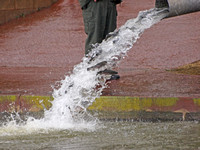
The diehard fishermen wait for the truck, showing up at the pond each day that week. However, the recreational fishermen are not the only ones interested in the schedule. Diehard bird photographers also show up each day that week. It seems that Cormorants and Osprey also recognize the truck and almost immediately appear. This week I joined the frenzy.

On Wednesday, Thursday, and Friday I arrived early in the morning only to find a line of cars already waiting. I didn't wait long on the earlier days but on Friday I was determined to stick it out. It was pouring rain and we had hail at times. Finally the truck arrived and pulled into the lot next to the pond. Photographers started getting out of their cars carrying cameras with huge lenses and tripods covered with plastic to protect them from the rain. However, for whatever reason, the CDFG decided to go to a different location. It pulled out of the lot. People rushed to their cars. The speed limit in the park is 15 mph, but soon a high speed chase ensued with about 10 cars chasing the truck at speeds up to 20 mph. Phones were out for communication with others in the group. Finally the truck arrived at one of the other ponds. One lucky fisherman was already at the spot. Cameras came out and the truck emptied its load. Soon a few Cormorants dined elegantly. Finally an Osprey appeared - and sat in a tree. For the next couple of days the Osprey would feed and with patience the photographers would get close up shots.
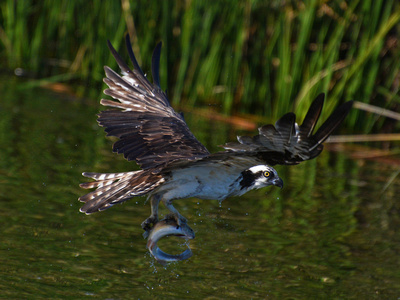
Then the commotion would settle down. The photographers would go away. The fishermen still come. Many are unaware of the stocking schedule. And soon there is line and lure in the bottom of the pond and snagged in the trees. And then most sadly there are birds entangled in the line. Some lose toes or feet and some lose their lives.
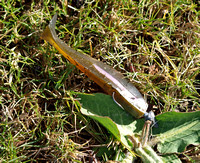
Sometimes urban ponds are the only way we can get close to nature and escape the hubbub of the city. Fishing, birding, and photography are good for the soul. If it weren't for the fishermen, the ponds would not be stocked and attract these beautiful birds. I have a friend who regularly removes the line and rescues birds when she can. I still love the park, but now I see a darker side. I hope the city can find the resources to help balance the needs of the people with the health of the birds.
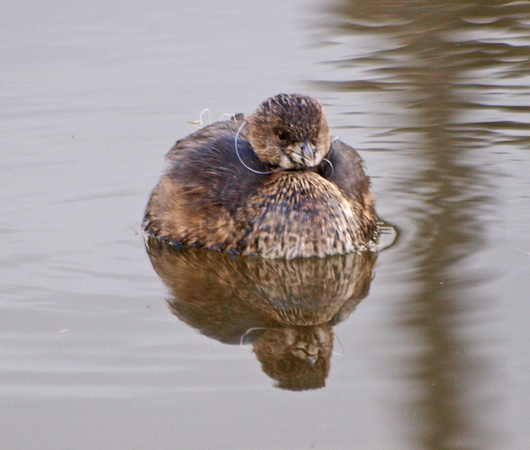
=========================================================
Yo sabía que los estanques de los parques fueron sembrados de peces, pero nunca había pensado en eso, mucho menos ve lo, hasta hace poco. Es una dinámica interesante y un espectáculo digno diverse. El California Department of Fish and Game (CDFG) publica un calendario de siembra de peces. No da fechas y horas específicas y varía para evitar grandes actividades de pesca inmediatamente después de un abastecimiento.
Los aficionadas de pesca esperan el camión cada día de esa semana. Sin embargo, los pescadores recreativos no son los únicos interesados en el programa. Dedicados fotógrafos de aves también aparecen cada día de esa semana. Parece que los cormoranes y águilas pescadoras también reconocen el camión y aparecen casi de inmediato. Esta semana me uní a esa locura.
El miércoles, el jueves, y el viernes, llegué temprano en la mañana y encontré una cola de automóviles ya esperando. No había esperado mucho en los días anteriores, pero el viernes estaba decidida a esperar. Había lluvia y granizo. Finalmente el camión llegó y entró al estacionamiento junto al estanque. Los fotógrafos comenzaron a salir de sus coches con cámaras con lentes enormes y trípodes cubiertos con plástico para protegerlos de la lluvia. Sin embargo, por alguna razón, la CDFG decidió ir a un lugar diferente. Las personas se apresuraron a sus coches. El límite de velocidad en el parque es de 15 millas por hora, pero pronto sobrevino una persecución de alta velocidad con unos diez coches persiguiendo al camión a velocidades de hasta 20 millas por hora. Los teléfonos aparecieron para la comunicación entre el grupo. Finalmente, el camión llegó a uno de los otros estanques. Un pescador afortunadado ya estaba en ese lugar. Las cámaras reaparecieron y el camión vació su carga. Pronto unos cormoranes cenaban con elegancia. Finalmente un águila pescadora apareció - y se posó en un árbol. Durante los próximos días se alimentarían las águilas pescadoras y con paciencia los fotógrafos sacaban fotós de cerca.
Entonces disminuye la conmoción. Los fotógrafos desaparecen pero los pescadores siguen viniendo. Muchos no estan conscientes de la programación del abastecimiento. Y de pronto hay sedales y señuelos en el fondo del estanque y enredándose en los árboles. Y luego, tristemente, hay aves enredadas en los sedales. Algunas pierden sus pies o algunos dedos y algunas pierden la vida.
A veces los estanques urbanos son la única manera de poder acercarse a la naturaleza y escapar del bullicio de la ciudad. La pesca, la observación de aves y la fotografía son buenas para el alma. Si no fuera por los pescadores, los estanques no serían abastecidos, proporcionando un lugar encantador para las aves. Tengo una amiga que regularmente remueve los sedales y rescata las aves cuando puede. Todavía me encanta el parque, pero ahora veo un lado siniestro. Espero que la ciudad pueda encontrar los recursos para ayudar a equilibrar las necesidades de la gente con la salud de las aves.
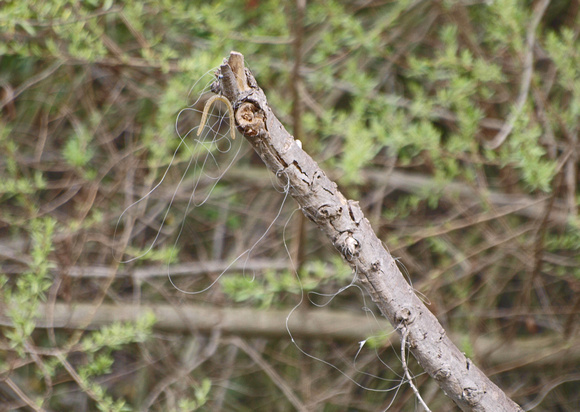
]]>
The Chinese calendar says it is the year of the snake. I like almost all animals, but still I'm a bit afraid of snakes (and some others also).
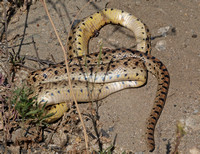
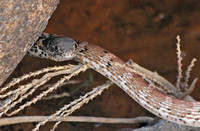
I have never found a dangerous one and do not know anyone personally who has been bitten by a snake. However, our culture teaches us to be afraid. There are many animals and things in this category. Some are snakes, spiders, insects, and sharks, to name a few. And therefore, we kill them - all of them without discrimination.
There are some species which are dangerous, and fear of danger is important. However, fear of so many things is not good. Most of these creatures (and other things that we fear) are not dangerous to humans. In fact, they all play an important role in the environment. I think it is important that we understand more about the different types of animals, their habitats, and their functions. The more we understand, the less we fear. I prefer to be afraid only of that which is necessary and not to be afraid in general. Also, it is important that we do not pass our irrational fears to our children. Imagine a world with less fear.

Still, I will approach snakes with care - and my camera!
=========================================================
El calendario chino dice que es el Año de la Serpiente. Me gustan casi todos los animales, pero todavía estoy un poco asustada de las serpientes (y algunos otros también). Nunca he encontrado una culebra peligrosa y no conozco a nadie personalmente que haya sido mordido por una serpiente. Sin embargo, nuestra cultura nos enseña a tenerles miedo. Hay muchos animales y cosas en esta categoría. Algunos son serpientes, arañas, insectos, y tiburones, para nombrar unos pocos. Y por lo tanto, los matamos a ellos - todos ellos indiscriminadamente.
Hay algunas especies que son peligrosas, y tenerle miedo al peligro es importante. Sin embargo, el temor a tantas cosas no es bueno. La mayoría de estas criaturas (y otras cosas temibles) no son peligrosas para los seres humanos. De hecho, todas de ellas juegan un papel importante en el medio ambiente. Creo que es importante que entendamos más sobre los diferentes tipos de animales, sus hábitats y sus funciones. Mientras más sabemos, menos tememos. Para mí, yo prefiero tener miedo sólo de lo que es necesario y no tener miedo en general. También, es importante que no pasemos nuestros miedos irracionales a nuestros hijos. ¡Imagínense un mundo con menos miedo!
Aún así, me acercaré a las serpientes con cuidado - ¡y mi cámara!
]]>
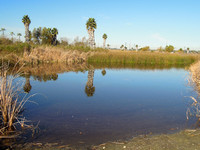
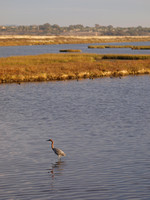 Happy New Year! I don't make New Year's resolutions because I never remember them after the first week. Can you remember your resolutions from last year? How about the year before? However, I was very fortunate to have had a wonderful year last year and plan to continue the habits that made it so into 2013. I will eat healthy food, exercise regularly, spend time with family and friends, and spend time exploring nature (with camera in hand, of course).
Happy New Year! I don't make New Year's resolutions because I never remember them after the first week. Can you remember your resolutions from last year? How about the year before? However, I was very fortunate to have had a wonderful year last year and plan to continue the habits that made it so into 2013. I will eat healthy food, exercise regularly, spend time with family and friends, and spend time exploring nature (with camera in hand, of course).
I have already started off the year well and it is only half-way through January! I visited tide-pools, several wetlands, a pristine wilderness area with native grassland and native riparian oak forest, our local urban parks, and of course my own human occupied neighborhood. Later this month I am going to the desert.
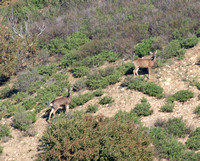
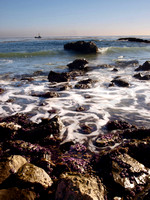 When I walk through these diverse habitats, I more clearly see the importance of preserving them. In our neighborhoods we see finches, sparrows, lots of humming birds, and the occasional skunk, raccoon, opossum, or coyote and we think wildlife is doing well. But these are the animals that have adapted to human presence. In the less disturbed habitats I see birds and animals that only live there and do not fly or walk less than a mile away, and sometimes even yards away, into our world. I photograph them with a telephoto lens because if they see me, they will run (or fly).
When I walk through these diverse habitats, I more clearly see the importance of preserving them. In our neighborhoods we see finches, sparrows, lots of humming birds, and the occasional skunk, raccoon, opossum, or coyote and we think wildlife is doing well. But these are the animals that have adapted to human presence. In the less disturbed habitats I see birds and animals that only live there and do not fly or walk less than a mile away, and sometimes even yards away, into our world. I photograph them with a telephoto lens because if they see me, they will run (or fly).
As we move into a new year, join me with healthy habits and support healthy habitats.
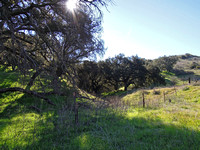
=============================================================================================
¡Feliz año nuevo! No hago resoluciones de año nuevo porque nunca las recuerdo después de la primera semana. ¿Puedes recordar tus resoluciones del año pasado? ¿Tal vez del año anterior? Sin embargo, fui muy afortunada de tener un año maravilloso el año pasado y planeo continuar los hábitos que los hicieron así en 2013. Comeré alimentos saludables, haré ejercicios con regularidad, pasaré tiempo con mi familía y amigos, y pasaré tiempo explorando la naturaleza (con cámara en mano, por supuesto).
¡Ya he empezado bien este año y sólamente es el mediados de enero! Visité piscinas de marea, varios humedales, una zona prístina con praderas nativas y bosques nativos de robles ribereños, nuestros parques urbanos locales, y por supuesto mi propio barrio ocupadopor seres humanos. Más tarde este mes voy a ir al desierto.
Cuando camino por estos habitats diversos, veo más claramente la importancia de la conservación. En nuestros barrios vemos gorriónes, un gran cantidad de colibríes, y la ocasional mofeta, mapache, zarigueya, o coyote y pensamos que la vida silvestre está haciendo bien. Pero estos son los animales que se han adaptado a la presencia humana. En los hábitates menos alterados, veo pájaros y animales que viven sólamente allí y no vuelan ni caminan menos de una milla de distancia, y a veces yardas de distancia, en nuestro mundo. Les fotografío con un teleobjetivo porque si me ven, corren (o vuelan).
Mientras avanzamos hacia un nuevo año, acompáñeme con hábitos saludables y apoyo los habitats saludables.
]]>
Winter is approaching. My house is cold and I hate the short days. I suffer so in the frigid Southern California winters. I am sipping pumpkin latte and thinking about the holidays and plans for the next couple of months. Over the next few months I will have friends and family visiting from the east coast to escape the cold and snow, even if for only for a week or two. Each year they make the long journey which can be over 5 hours flight time. So how shall I entertain them? In my usual style, we will probably go out and enjoy nature's winter visitors.
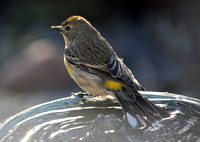
I have already started to see some of the migratory birds that either winter here or stop by on their way further south. Many migrate annually from the north, the mountains, or the interior of our continent. Wigeons, Northern Shovelers, and Cinnamon teal are just a few of the ducks. White Pelicans arrive in large flocks. I particularly like the warblers and white crowned sparrows.
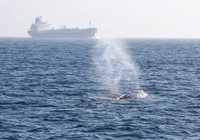
I look forward to the annual passage of the gray whales. Gray whales have the longest known migration of any mammal. They travel 10,000-12,000 miles round trip from Alaska to Mexico and back again. They will start appearing off our shores in December.

Monarch butterflies also travel thousands of miles taking multiple generations to make the journey to their wintering homes in Mexico and here on the coast of California. Locally, El Dorado Park sees larger groups of Monarchs, but the numbers are more spectacular just a little north of here near Goleta. Monarch populations throughout California increase each winter with over 40,000 monarchs in Goleta last year. Even further north, Pacific Grove is another site for large populations.

The Northern Elephant Seal spends eight to ten months a year in the open ocean. The adult seals migrate annually to shore for birthing and breeding season. Adult males arrive in late November or early December when they battle for females and dominant position on the beach.
I guess winter isn't so bad after all. Particularly when we enjoy our winter visitors.
==========================================================================
Se acerca el invierno. Mi casa esta fría y odio los días cortos. Sufro mucho durante los inviernos frigidísimos del sur de California. Estoy bebiendo latte de calabaza y pensando en días de fiestas y los planes para los próximos meses. En los próximos meses, tendré amigos y parientes que visitan de la costa este para escapar el frío y la nieve, aunque sea por sólo una semana o dos. Cada año hacen el largo viaje que puede ser un vuelo de 5 horas. Entonces, ¿cómo voy a entretenerlos? En mi estilo habitual, probablemente salremos a ver los visitantes invernales de la naturaleza.
Ya he comenzado a ver algunas de las aves que pasan cada invierno aquí o se detienen en ruta haciael sur. Muchas migran anualmente desde el norte, desde las montañas o de interior de nuestro continente. El pato colorado, el silbón americano, y el pato cucharo son sólo algunos de los patos. Los pelícanos blancos llegan en bandadas grandes. Me gustan especialmente las reinitas y los gorriones coronados blancos.
Espero la aparición anual de las ballenas grises. Las ballenas grises hacen la migración más larga conocida de cualquier mamífero. Ellas viajan 10.000-12.000 millas de ida y vuelta desde Alaska a México. Ellas comenzarán a aparecer a lo largo de nuestra costa en diciembre.
Las mariposas Monarca también viajan miles de millas, tomando varias generaciones a hacer el viaje a sus hogares de invernacíon en México y aquí en la costa de California. Localmente, en el Parque El Dorado se ven grandes grupos de monarcas, pero sus números son más espectaculares un poco más al norte de aquí cerca de Goleta. Las poblaciones de Monarcas a lo largo de California aumentan cada invierno con más de 40.000 Monarcas en Goleta el año pasado. Aún más al norte, Pacific Grove es otro sitio donde existen poblaciones grandes.
El elefante marino del norte pasa de ocho a diez meses al año en mar abierto. Los adultos migran anualmente a la orilla para acloparse y dar a luz. Los machos llegan a finales de noviembre o a principios de diciembre cuando luchan por las hembras y un posición dominante en la playa.
Me imagino que el invierno no es tan malo después de todo. Particularmente cuando disfrutamos de nuestros visitantes de invierno.
]]>

Since I retired, I have been focusing on my health. My doctor told me to lose weight and lower my cholesterol. Taking long walks has become part of my exercise routine. I prefer natural areas but also enjoy local parks, the beach, and my own neighborhood. I frequently walk through the El Dorado Nature Center, 105 acres within the Long Beach city park. It has a 2 mile trail, a 1 mile trail, and a 1/4 mile paved trail.
Several people have suggested using my ipod to help pass the time. However, I prefer not to tune out but to tune outward to the sounds of nature. Without hearing, I wouldn't be seeing. When I hear the rustle of leaves I am alerted to the fact that I am not alone.

I can tell the difference in leaf rustle between a Western fence lizard darting out of my way and a California ground squirrel foraging for acorns. I look in the direction of the sound and am always hoping to see a gopher snake or the less common California king snake. I hear the birds. When I hear a bird I know it is there even if I don't see it. I hear the chittering of bushtits hanging upside down in the bushes in small flocks. I hear the shriek of a red-tailed hawk, which gets my attention every time. I hear the screech of a western scrub jay or the witchedy-witched of a common yellow throat. The loud croak of a bullfrog draws my attention to small frogs at the bank of the pond.
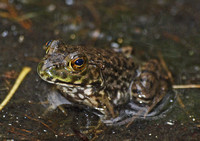

'Do you hear the grasshopper which is at your feet?'
'Old Man, how is it that you hear these things?'
'Young Man, how is it that you do not?'
- from the movie Kung Fu
======================================================================
Desde que me jubilé, me he centrado en mi salud. Mi médico me dijo que necesito perder peso y bajar mi colesterol. Parte de mi rutina de ejercicios incluye largas caminatas. Prefiero áreas naturales, pero también disfruto los parques locales, la playa y mi propio barrio. Frecuentemente camino a través del Centro de Naturaleza de El Dorado, 105 acres dentro del Parque de la ciudad de Long Beach. Hay rutas de 2 millas, 1 milla, y una ruta de un 1/4 de milla pavimentadas. Varias personas me han sugerido usar mi ipod para ayudarme a pasar el tiempo. Sin embargo, prefiero no ignorar, sino, el contrario, sintonizar los sonidos de la naturaleza. Sin oir, no podría ver.
Cuando escucho el susurro de las hojas me doy cuenta de que no estoy sola. Sé la diferencia entre el susurro de las hojas cuando un lagarto que se lanza fuera de mi camino y el de una ardilla alimentándose de bellotas. Miro en la dirección del sonido y siempre estoy esperando ver una serpiente. Escucho las aves. Cuando escucho un pájaro sé que está allá, aunque no lo veo. Oigo el parloteo de las pequeñas bandadas de 'Bushtits' en los arbustos. Oigo el grito de un 'red-tailed hawk', y cada vez obtiene mi atención. Oigo el chillido de un 'Western Scrub Jay' o la 'witchedy-witchedy' de un 'Common Yellow Throat'. El canto de un 'Bullfrog' señala pequeñas ranas a la orilla del estanque.
Muchas personas estan asombradas de las pequeñas maravillas que veo. Sin embargo, son mis oidos los que son capaces de ver más de lo que está a mi alrededor.
Un anciano dice a un joven:
"¿Oyes el saltamontes, que está a tus pies?"
"Anciano, ¿cómo es posible que escuche estas cosas?"
"Joven, ¿cómo es posible que no lo hagas?"
-de la película de Kung Fu
]]>

I went whale watching three times in August and would have gone every day if my schedule allowed it. What better way to beat the heat than viewing magnificent blue whales and joyous dolphin in the open ocean.
Until about 5 years ago, blue whale sightings along our coast were rare. Now sightings are more regular as the whales show up from late July through September to feed in the Catalina Channel. It is speculated that climate changes are having an effect on their food supply, but there is no conclusion yet. Blue whales are the largest animal to ever live on our planet and are often seen up to 70' or 80', but there are reports of blue whales up to 110'. Our grey whale, which migrates past out coast December through April, is a mere 45'.
Someone asked me why I was going out a third time. After all, hadn't I already seen whales? Yes I have seen whales. I have seen humpback whales with their calves off Puerto Vallarta, Mexico and also in Alaska's Inside Passgae feeding together in large numbers. I've see grey whales resident in Oregon, migrating past our coast, and with their calves in Magdalena Bay, Mexico. I've seen fin whales, minke whales, orcas in our Southern California waters. I saw pilot whales in the Molokai Channel on the way to Oahu, Hawaii and off the southern coast of Spain, where I also saw magnificent sperm whales. And of course the smaller whales, dolphin and porpoises, including bottlenose, common, Risso's, and Pacific white-side provide spectacular shows leaping and playing with the boat.
Everyone on the boat springs to life when someone sees the first whale blow. Each species has a distinct blow pattern that can be seen at a distance. Sometimes the whales swim right under the boat and you can see the entire body. They are awesome in their size. I think my favorite experience is hearing the whale breathe as it surfaces suddenly next to the boat. It is a loud breath that announces its presence and makes me hold mine.
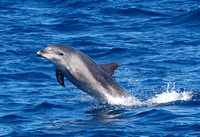
Why would I want to go whale watching again? I have to ask - why wouldn't you?
]]>
 Today I visited the Los Cerritos Wetlands to do a bird survey with El Dorado Audubon. About every two weeks we walk through the area and count the different species we see. I have been doing it for about a year now and always see something new. Sometimes it is a spectacular bird such as a White-tailed Kite hovering and then swooping down to collect its prey. Many times it is something small, such as the bright red feathers of our ubiquitous House Finch backlit by the sun in a way that catches my eye. Even if there is nothing significant, I love walking in an area of the city that seems remote and closer to nature.
Today I visited the Los Cerritos Wetlands to do a bird survey with El Dorado Audubon. About every two weeks we walk through the area and count the different species we see. I have been doing it for about a year now and always see something new. Sometimes it is a spectacular bird such as a White-tailed Kite hovering and then swooping down to collect its prey. Many times it is something small, such as the bright red feathers of our ubiquitous House Finch backlit by the sun in a way that catches my eye. Even if there is nothing significant, I love walking in an area of the city that seems remote and closer to nature.
The wetlands are home to a California state endangered bird, the Belding's Savannah Sparrow. This subspecies of the Savannah Sparrow is a year round resident in coastal salt marshes and it nests in pickleweed. Because these birds nest on the ground, they are subject to disturbance of their nests and predation. More importantly, the degradation and loss of the salt marshes, through human development, has drastically reduced their numbers and limits their population growth.
Pickleweed, Salicornia virginica, is an indicator species in that it indicates a particular characteristic of its environment. In this case, it indicates the presence of salt in the soil as from a tidal salt marsh. Many plants cannot tolerate high levels of salt. However, pickleweed is adapted to store excess salt in its joints. The salt interferes with the green chlorophyll and the plant turns red and parts drop off.
Pickleweed won't grow elsewhere and the Belding's Savannah Sparrow is linked to this habitat. Long Beach has lost almost all of its wetlands. I am heartened to know that many people care enough to protect our patch of remaining tidal wetlands and save a small part of biodiversity.
]]>